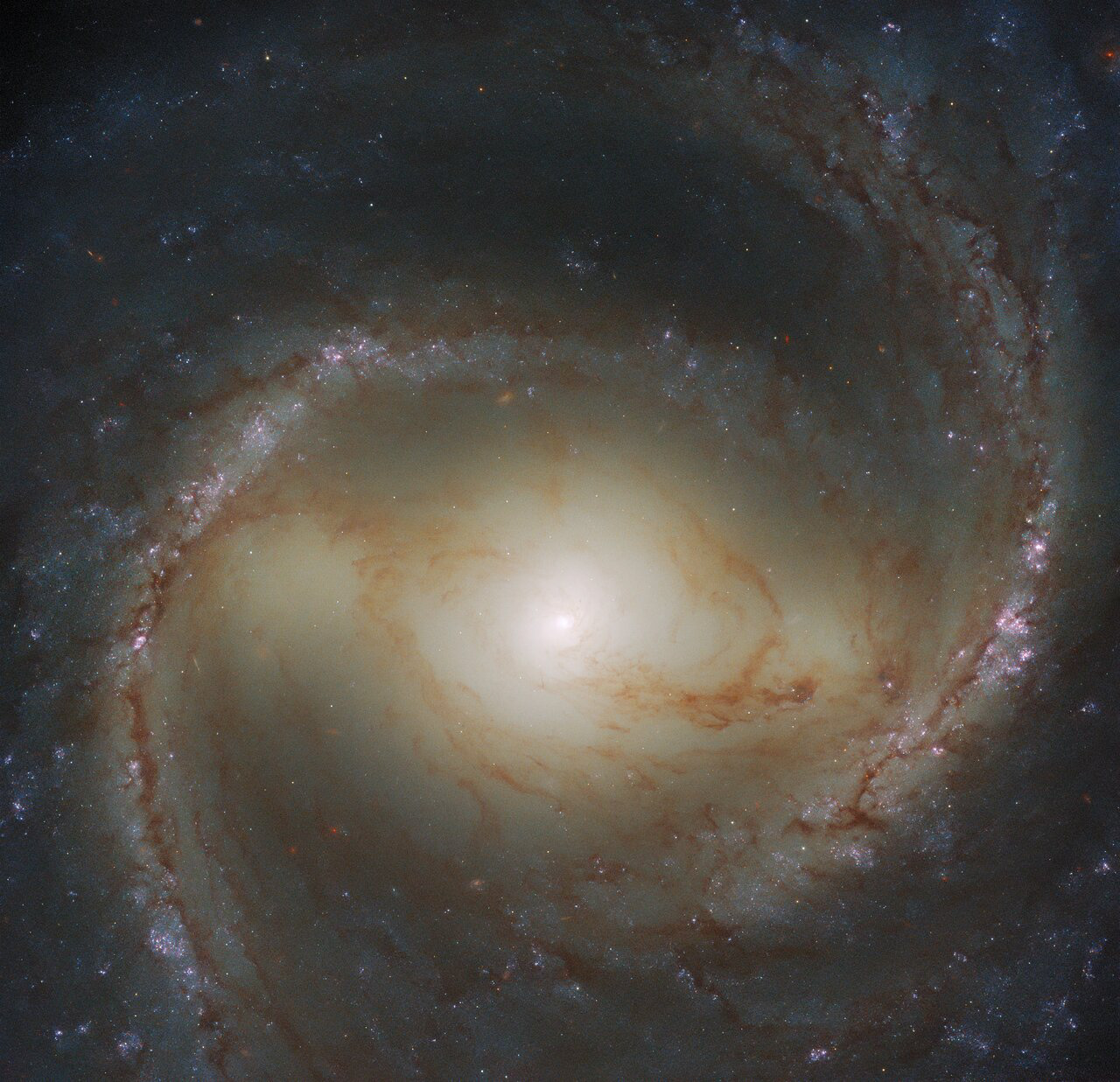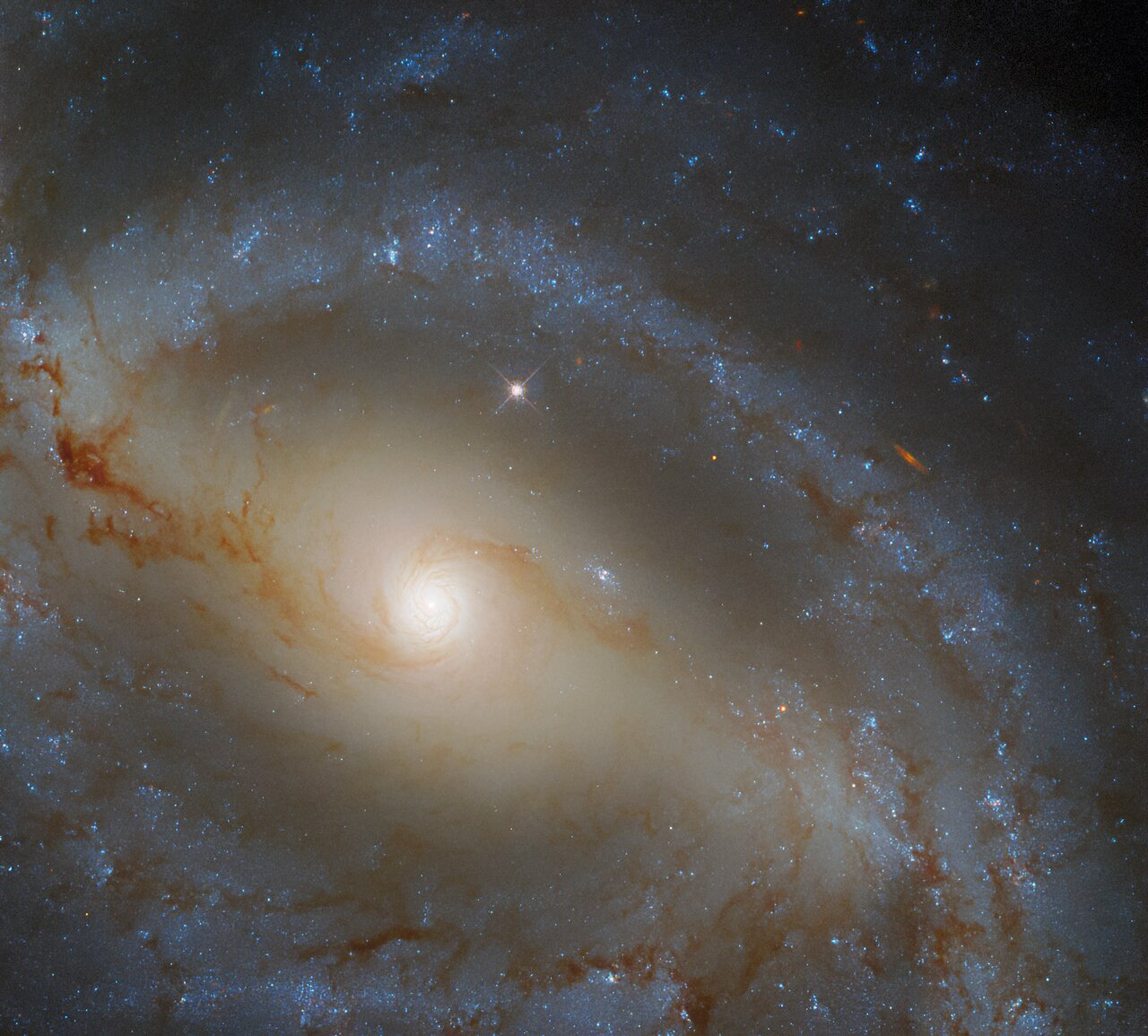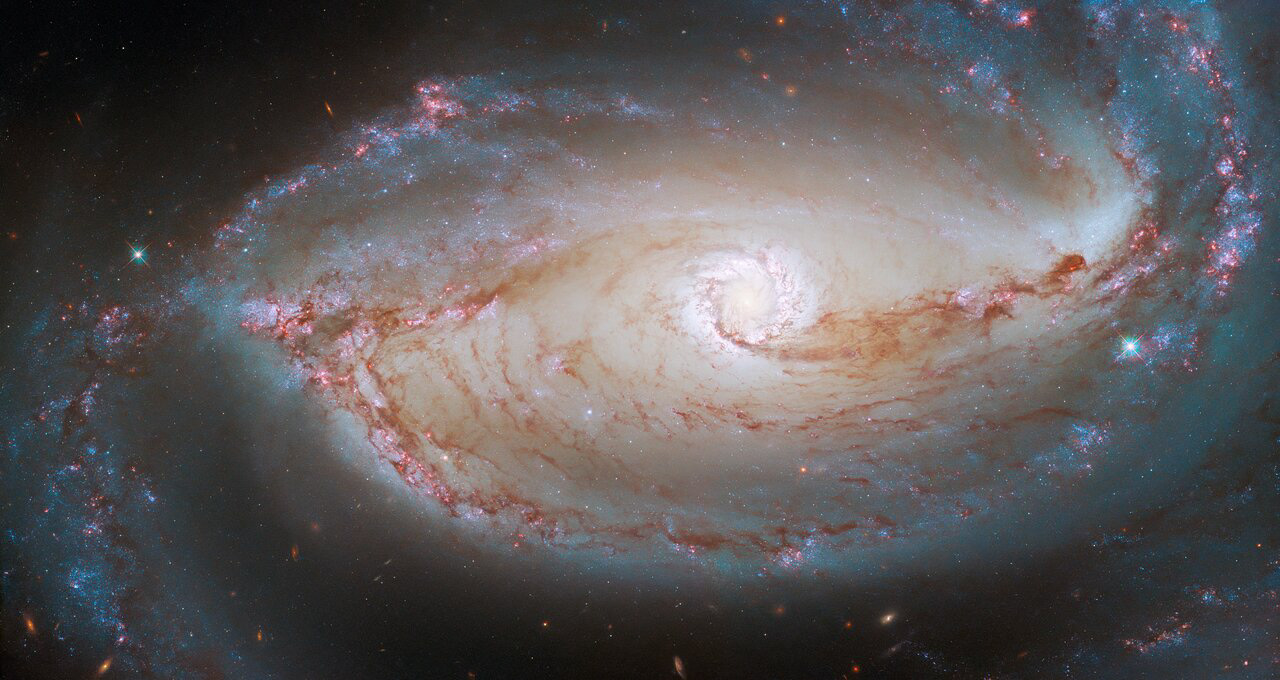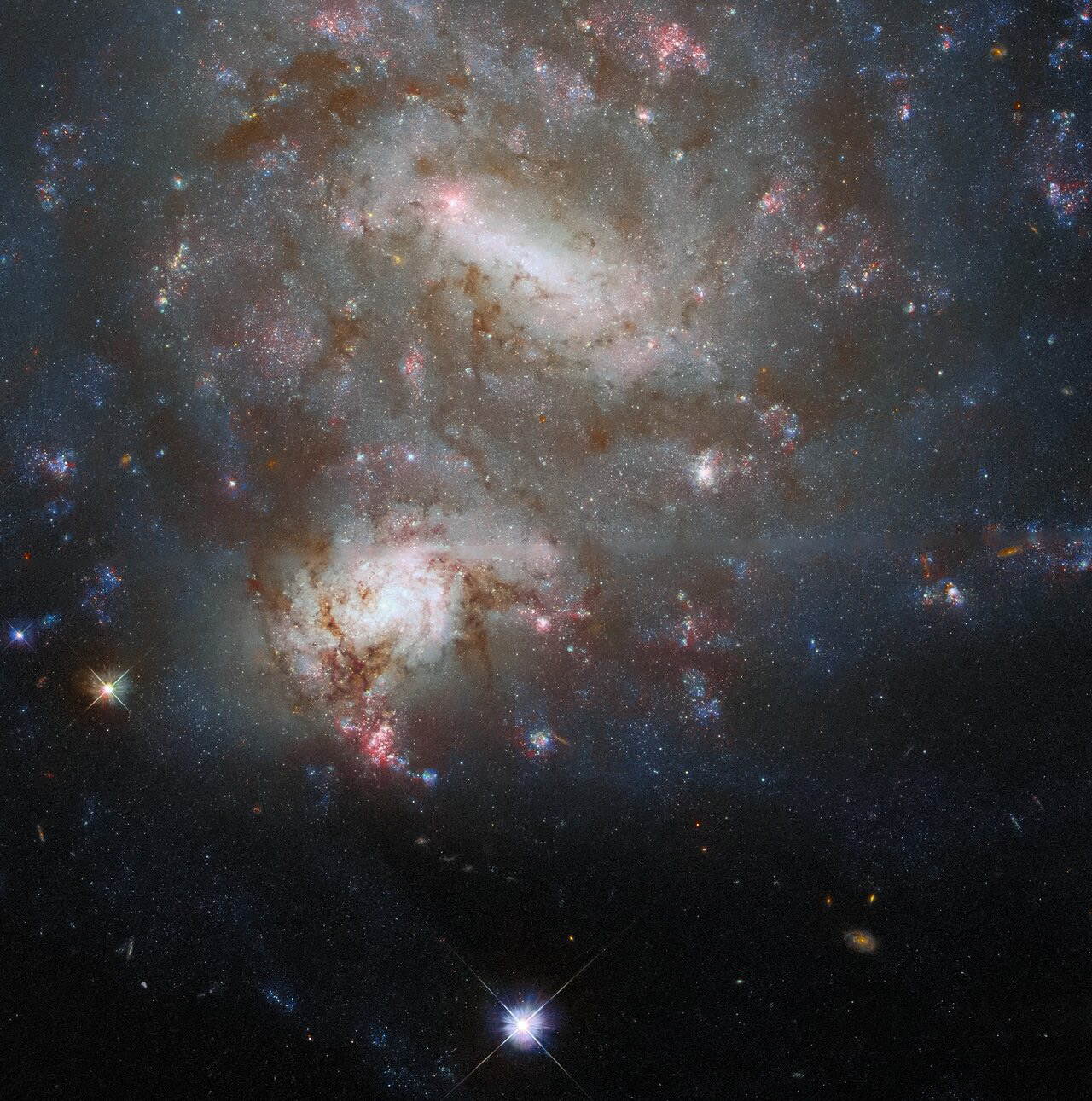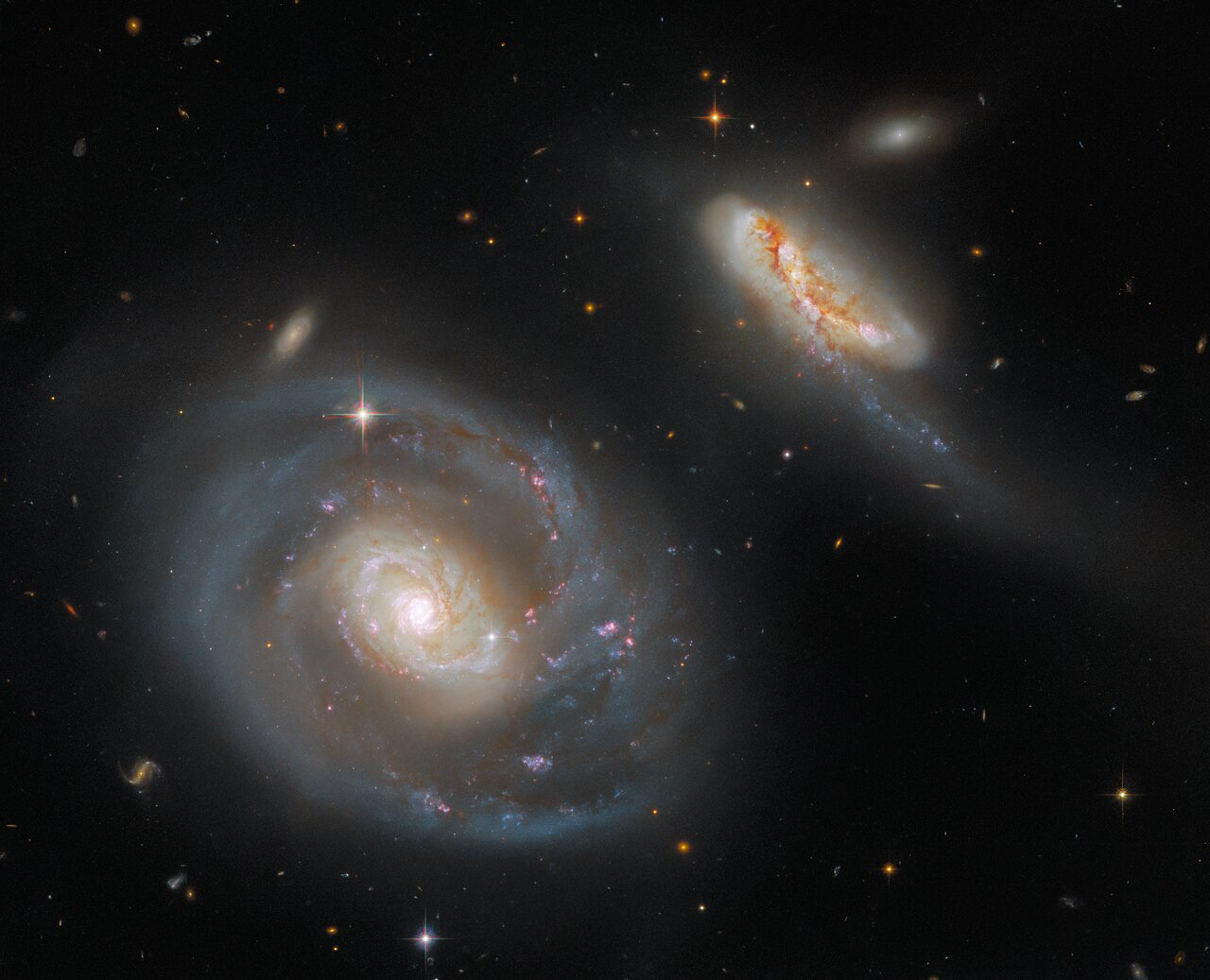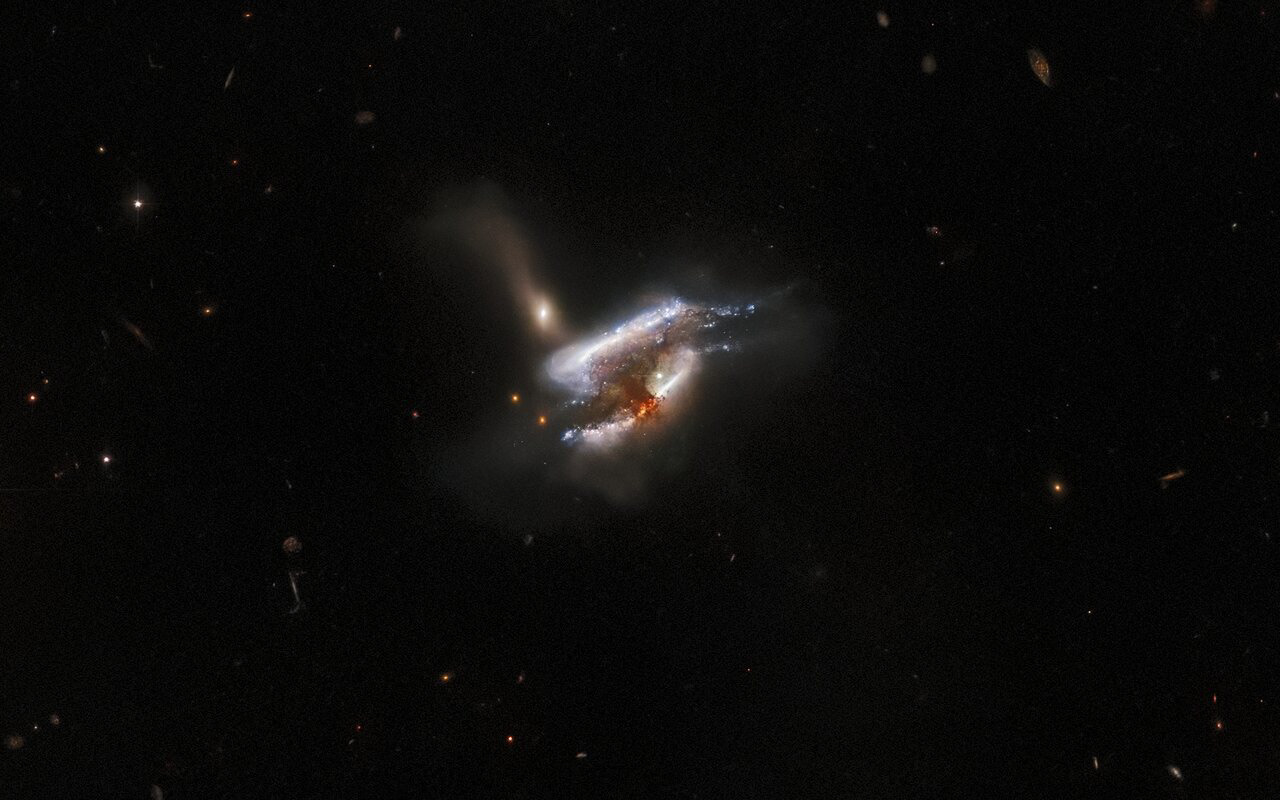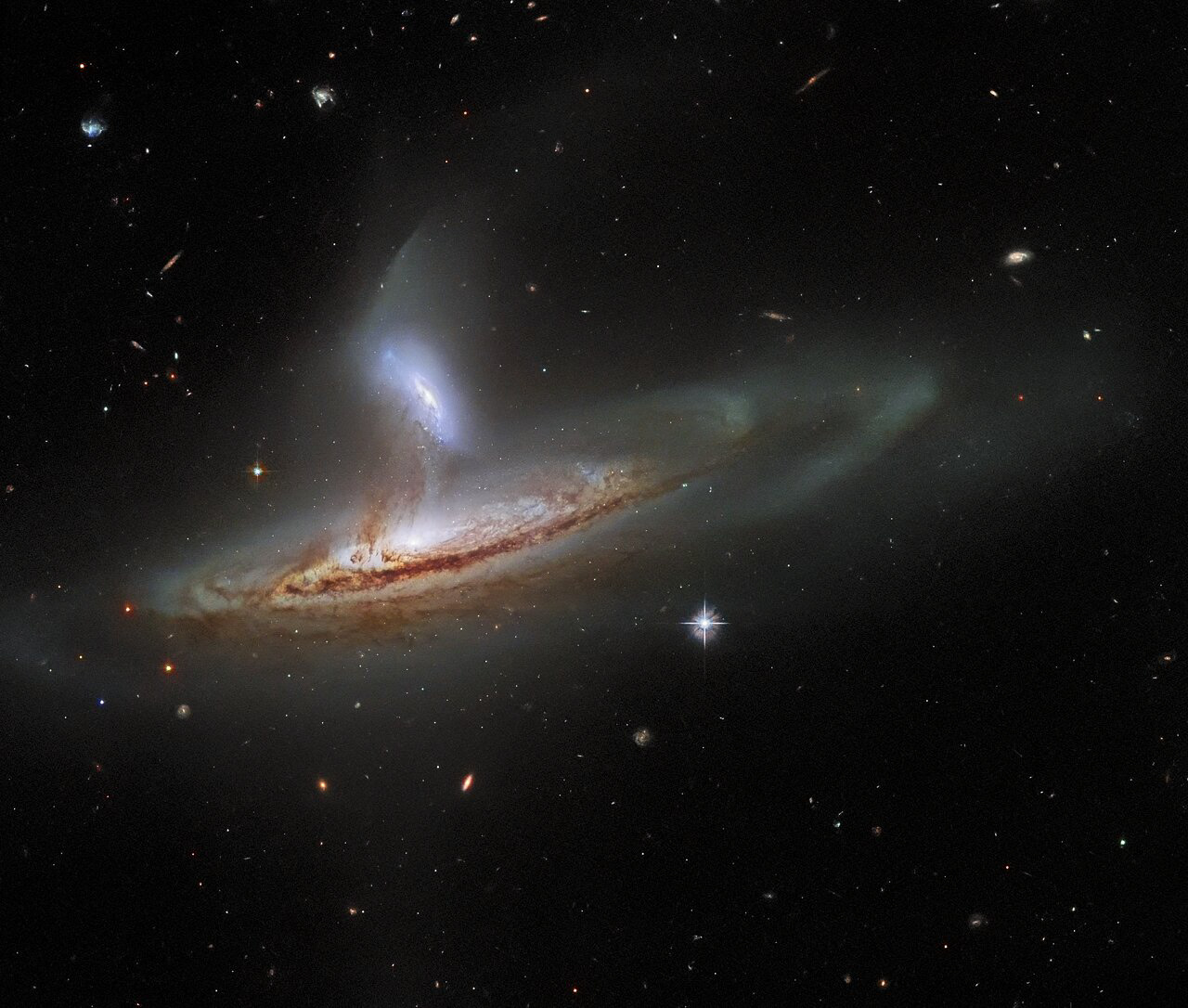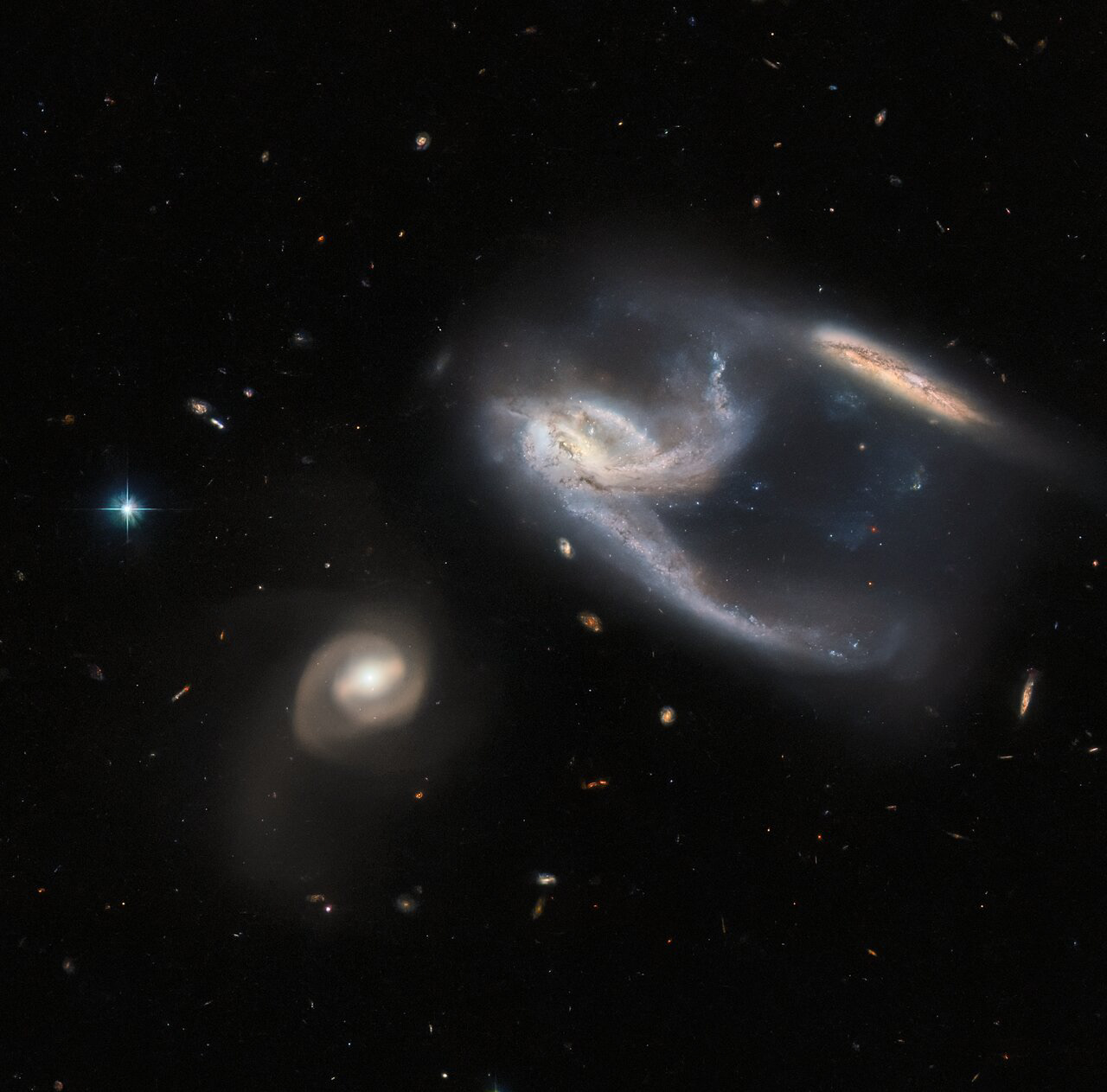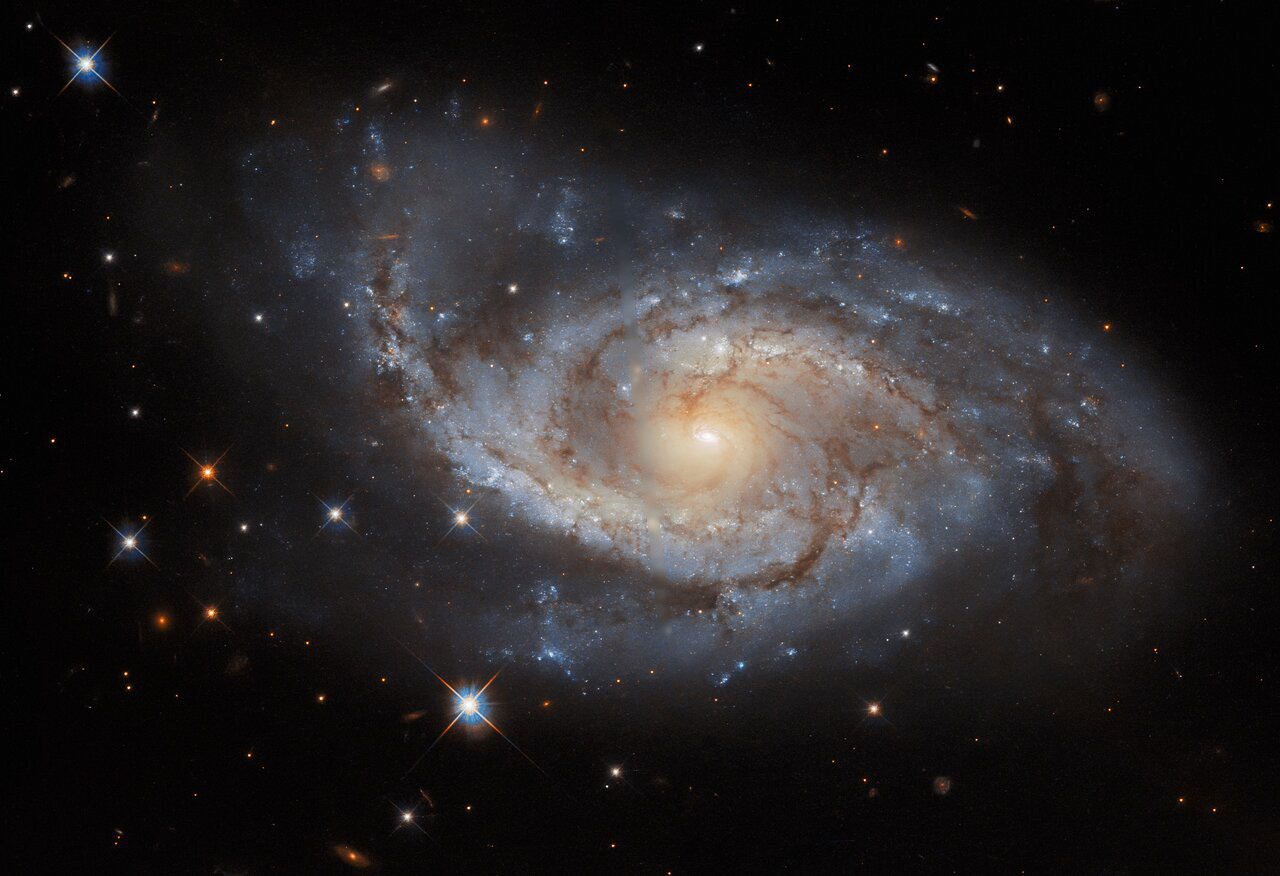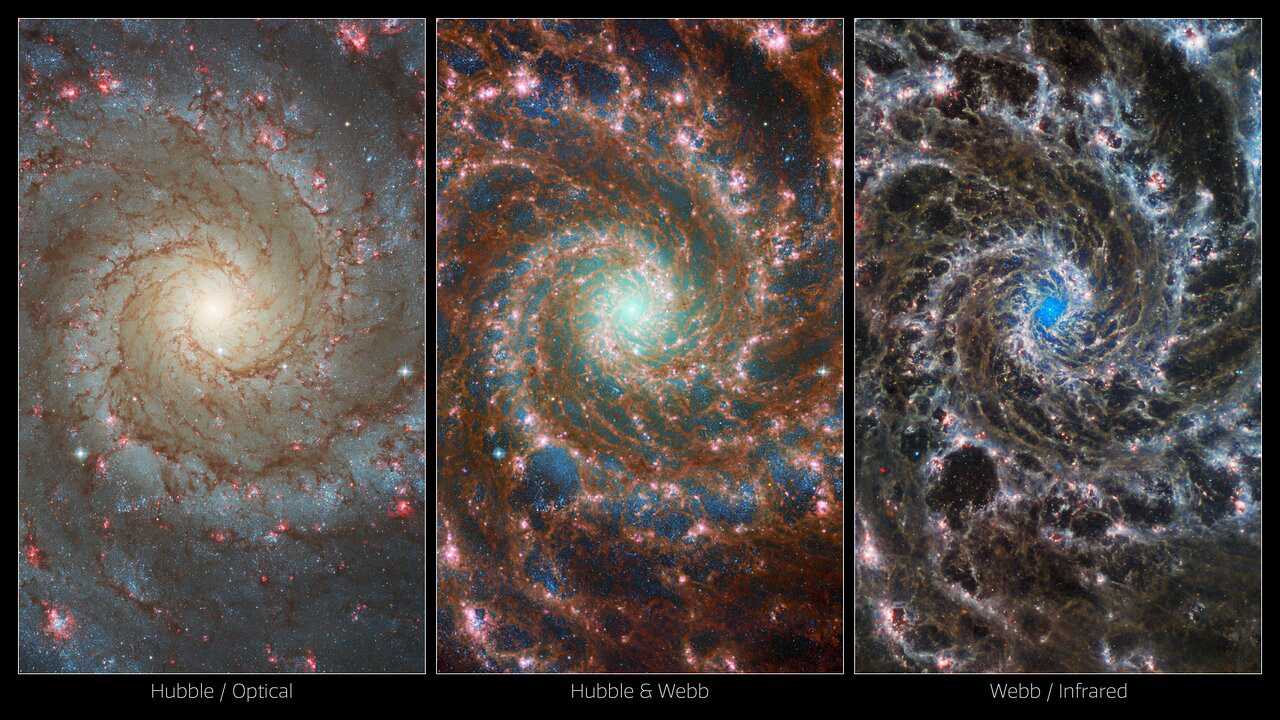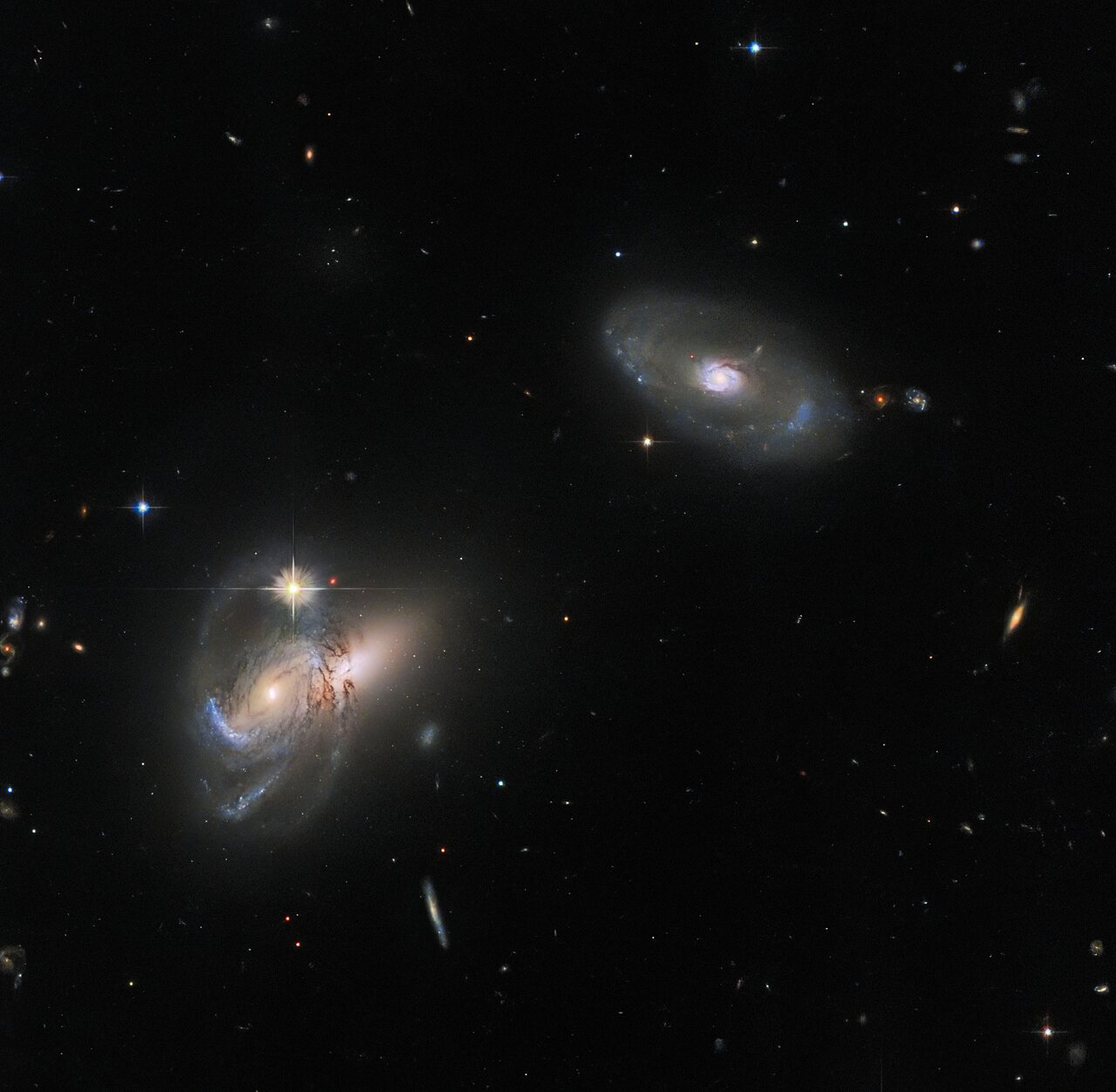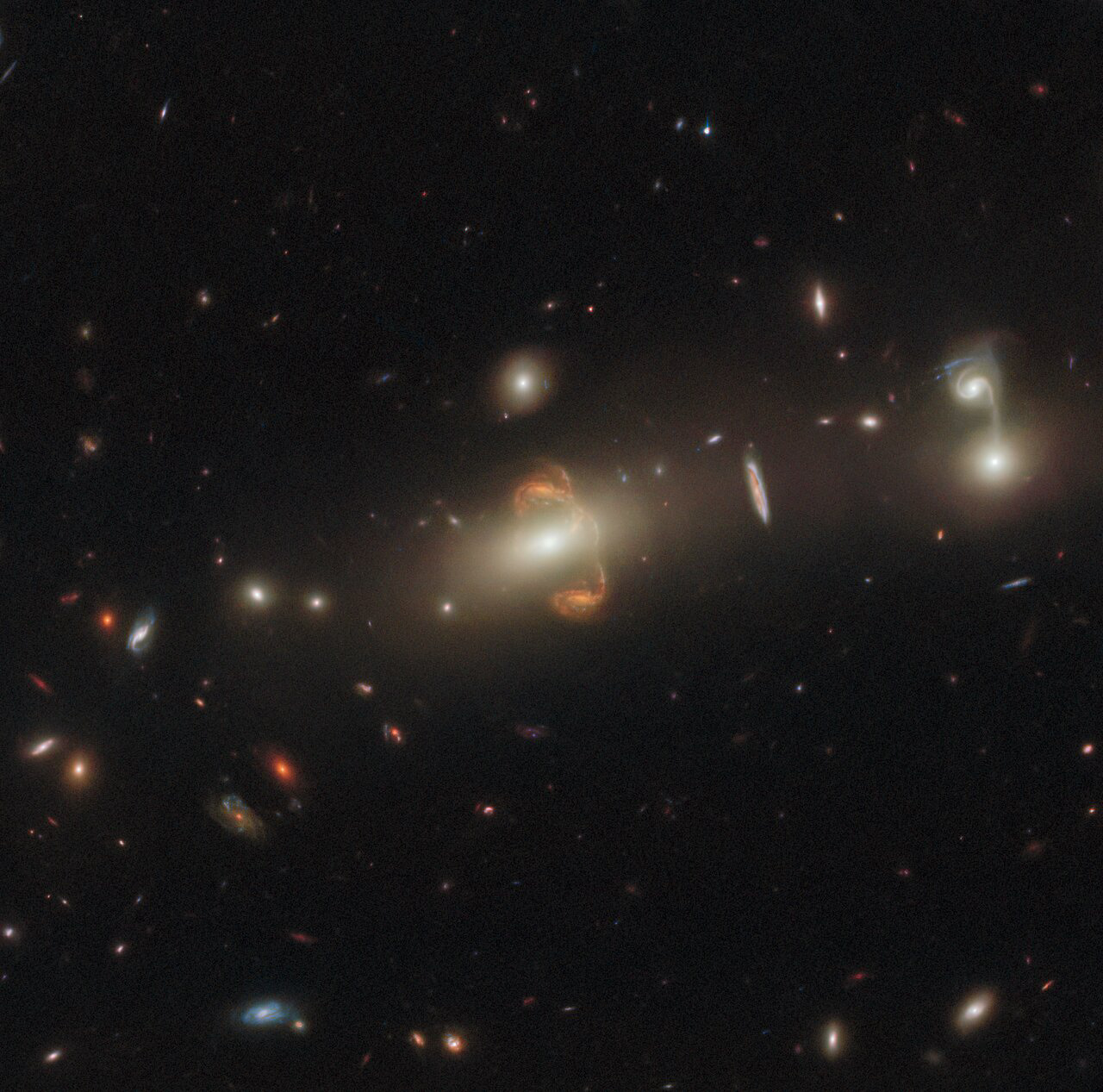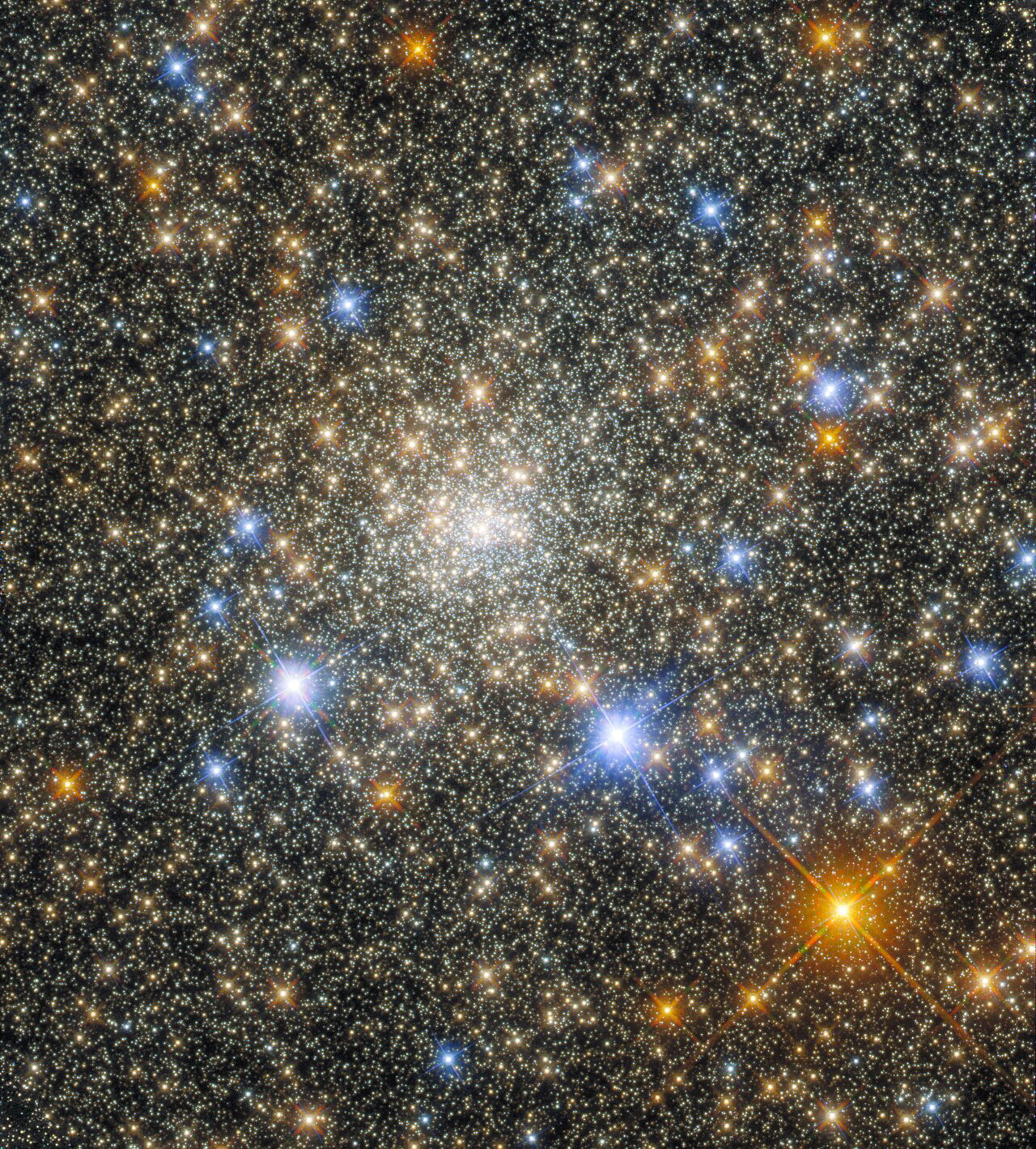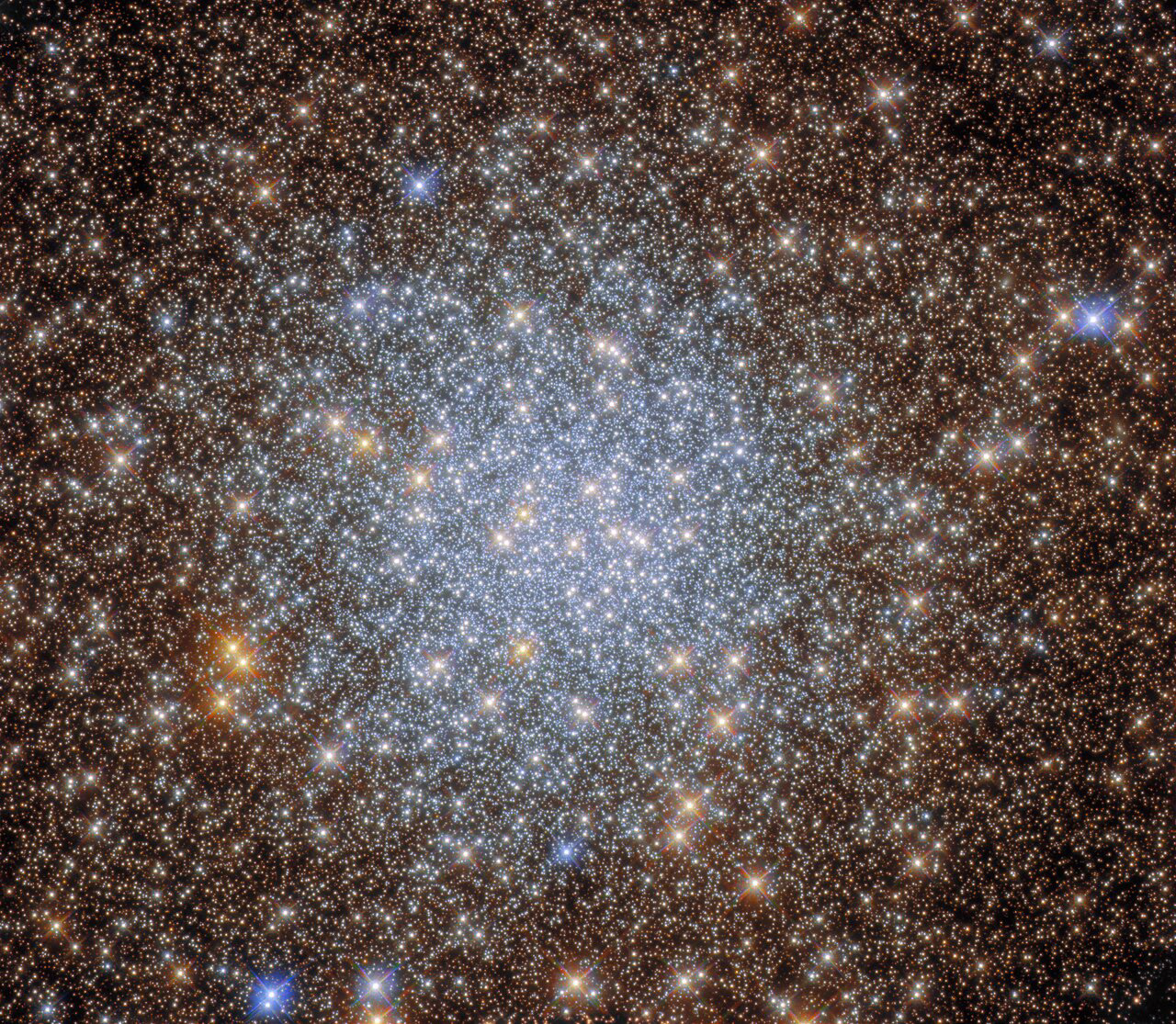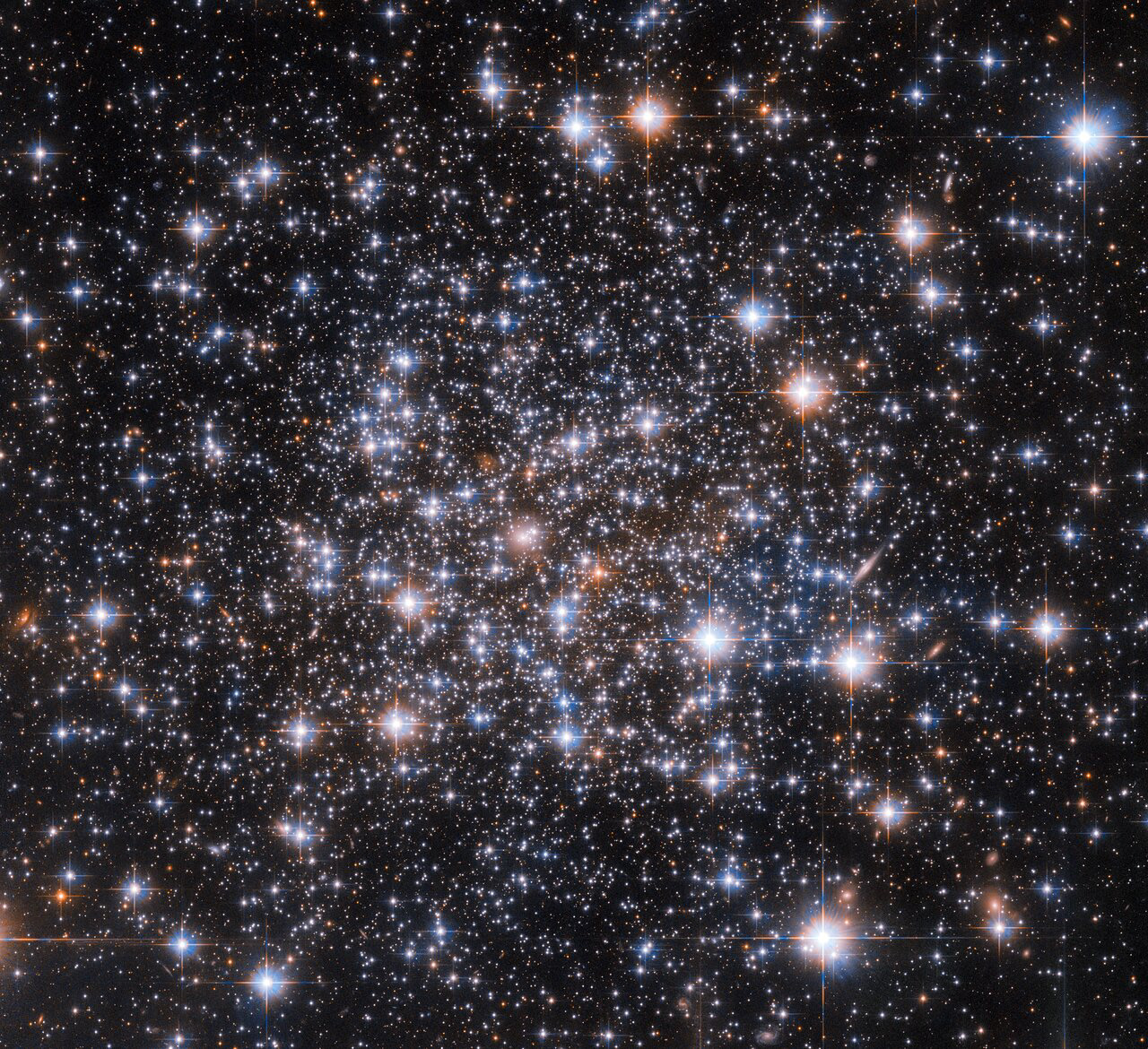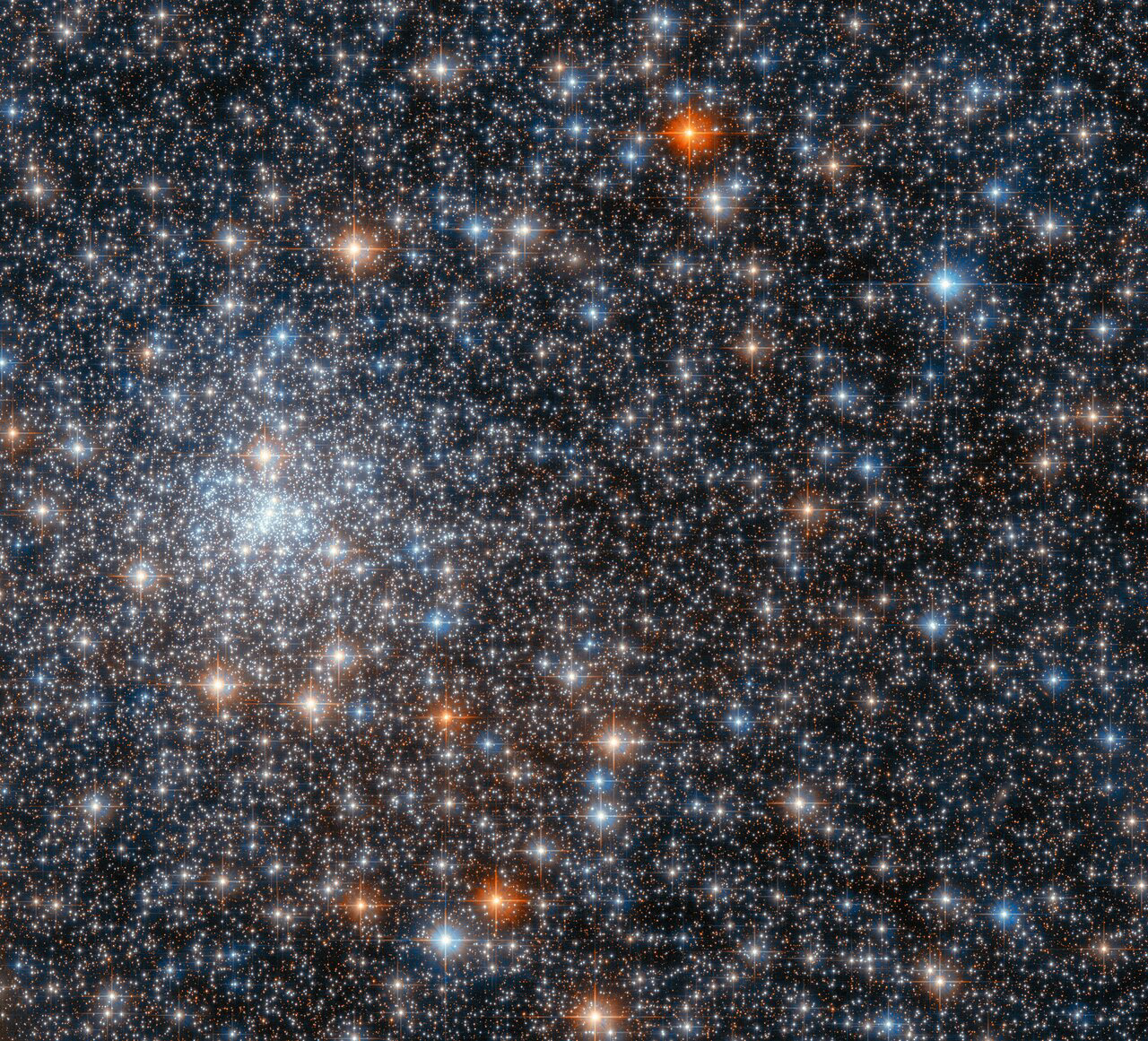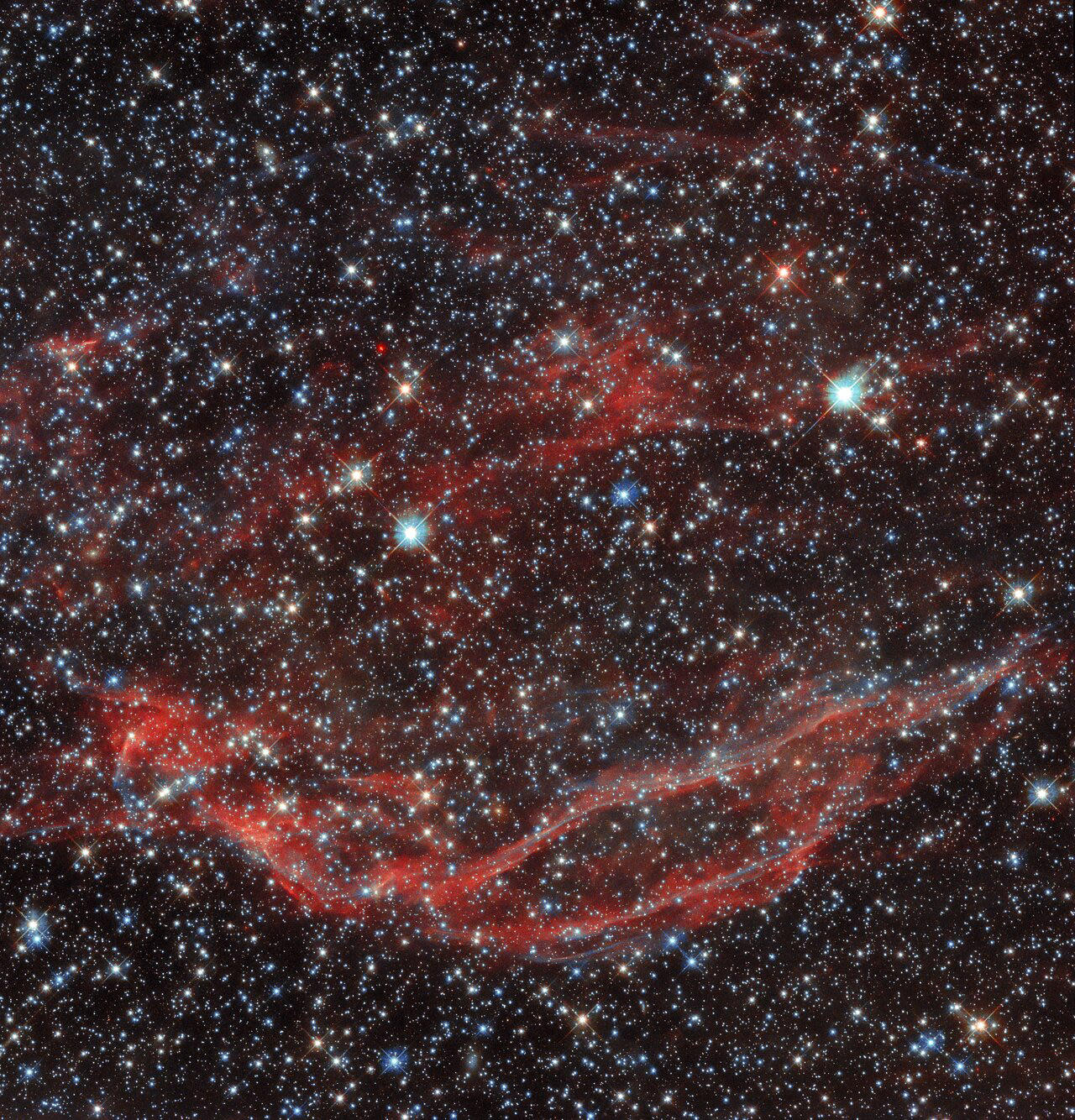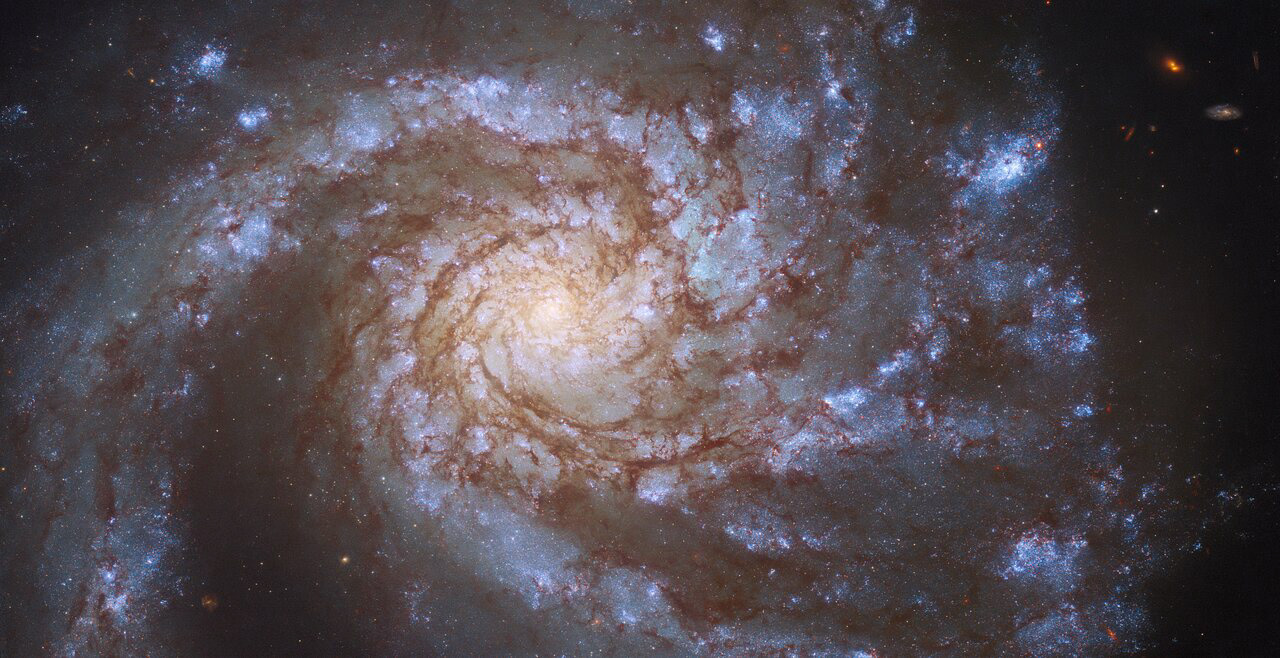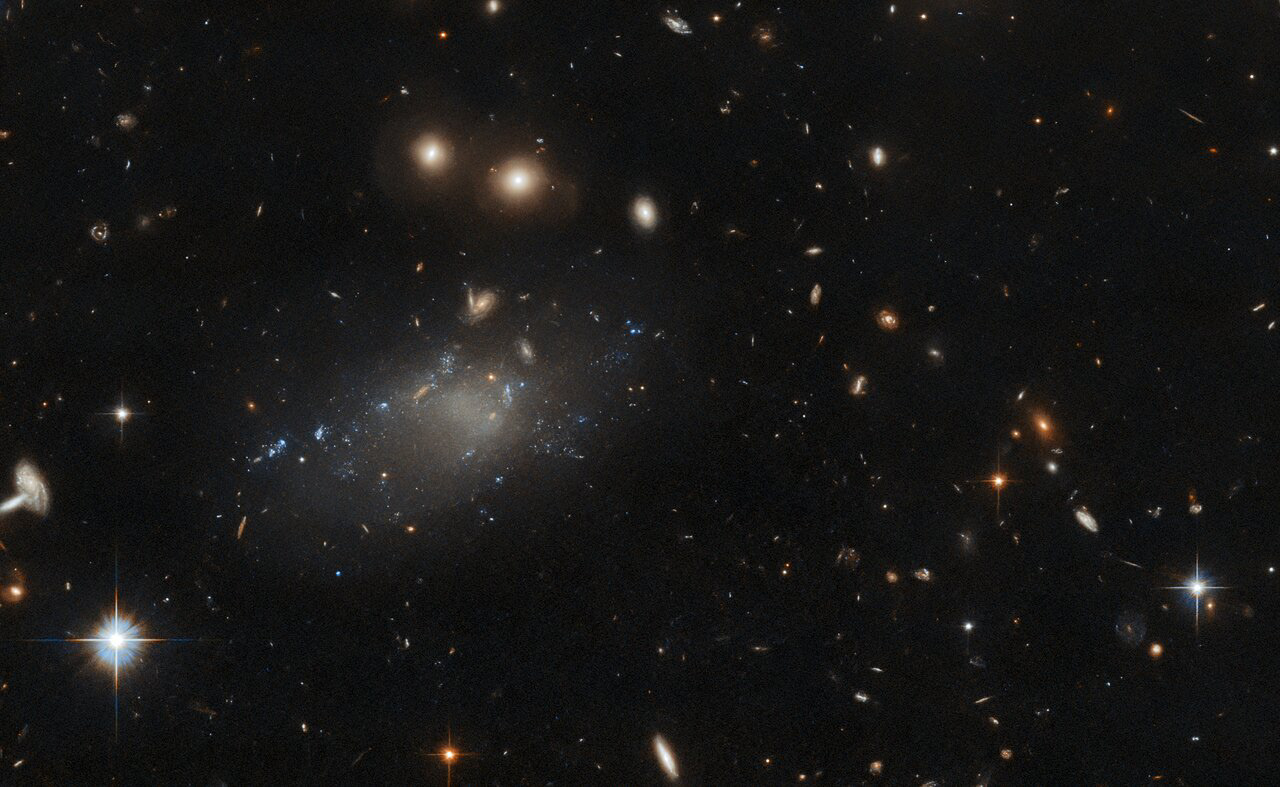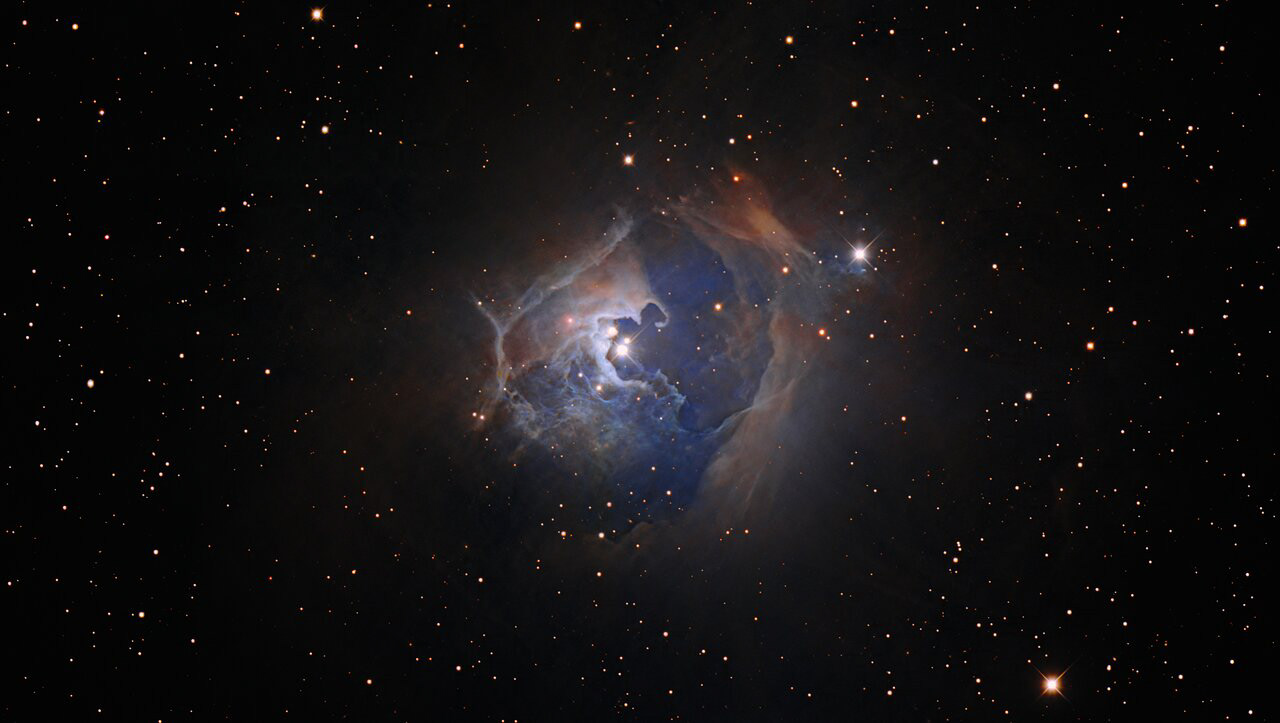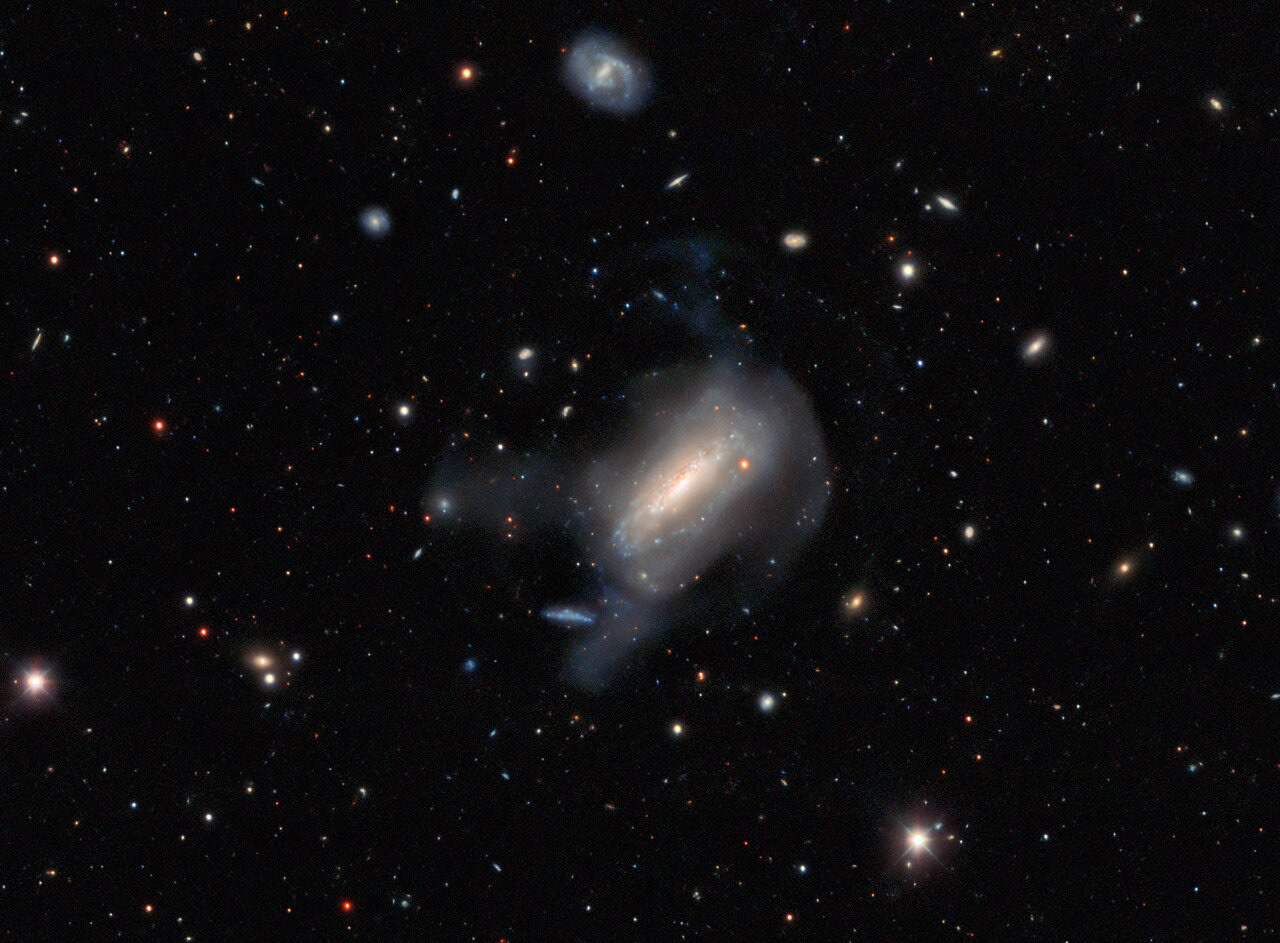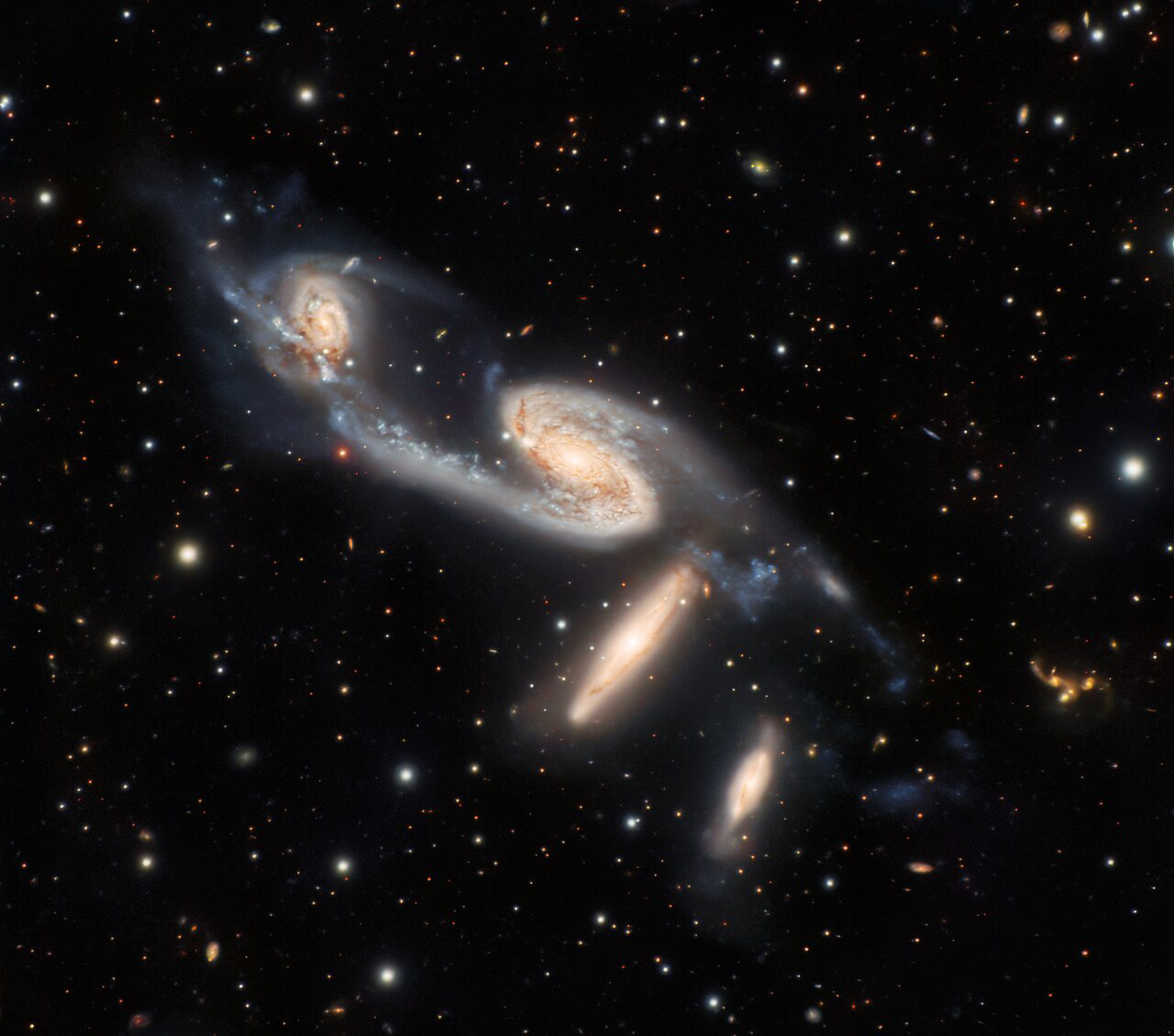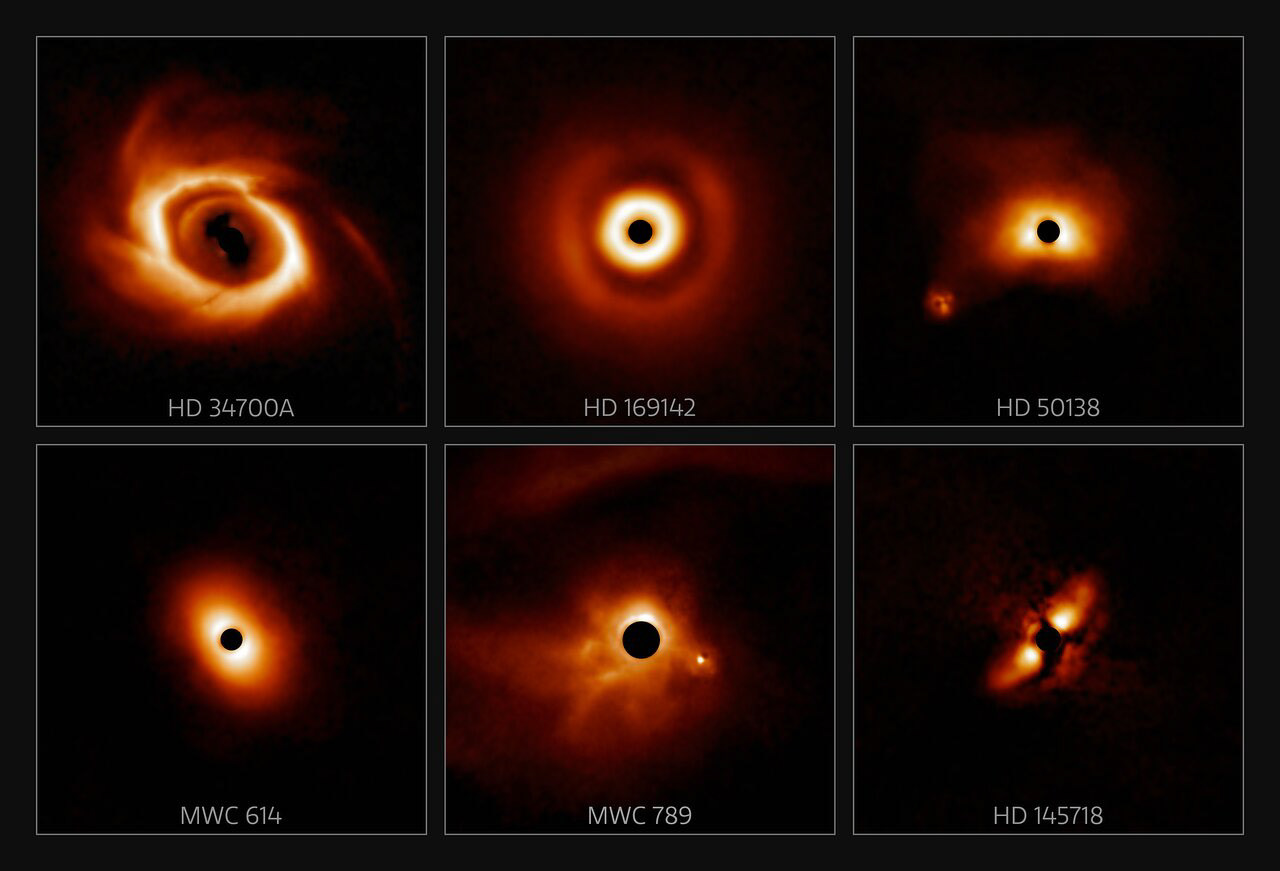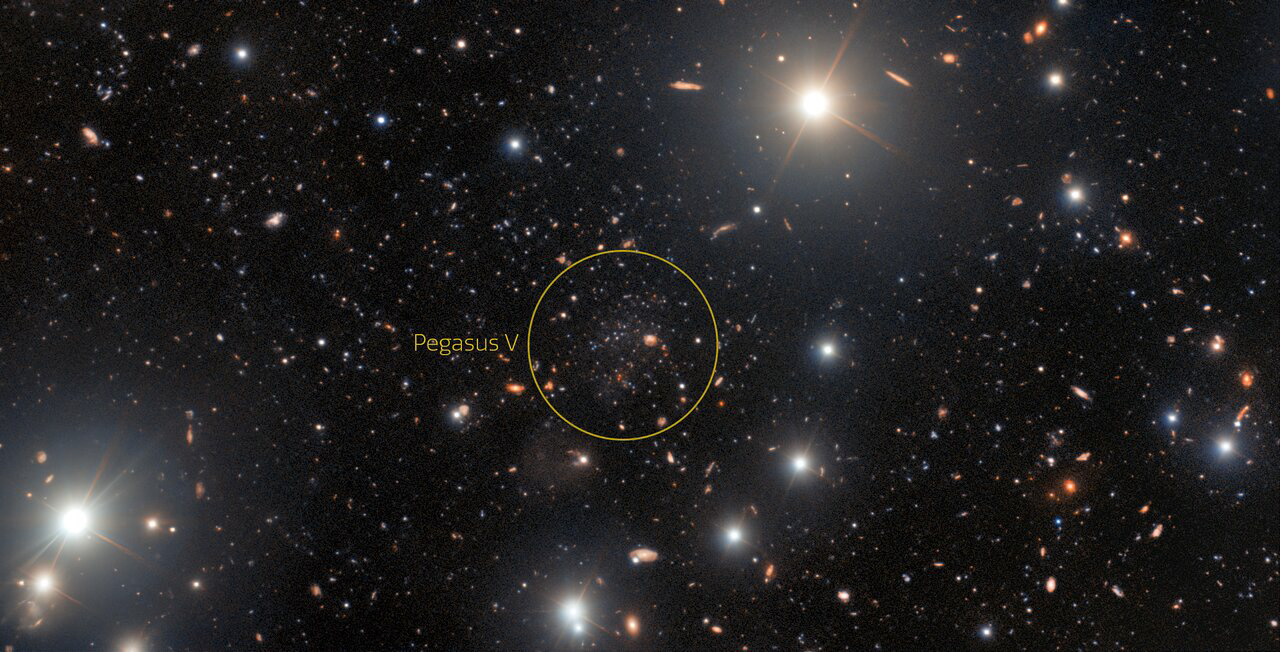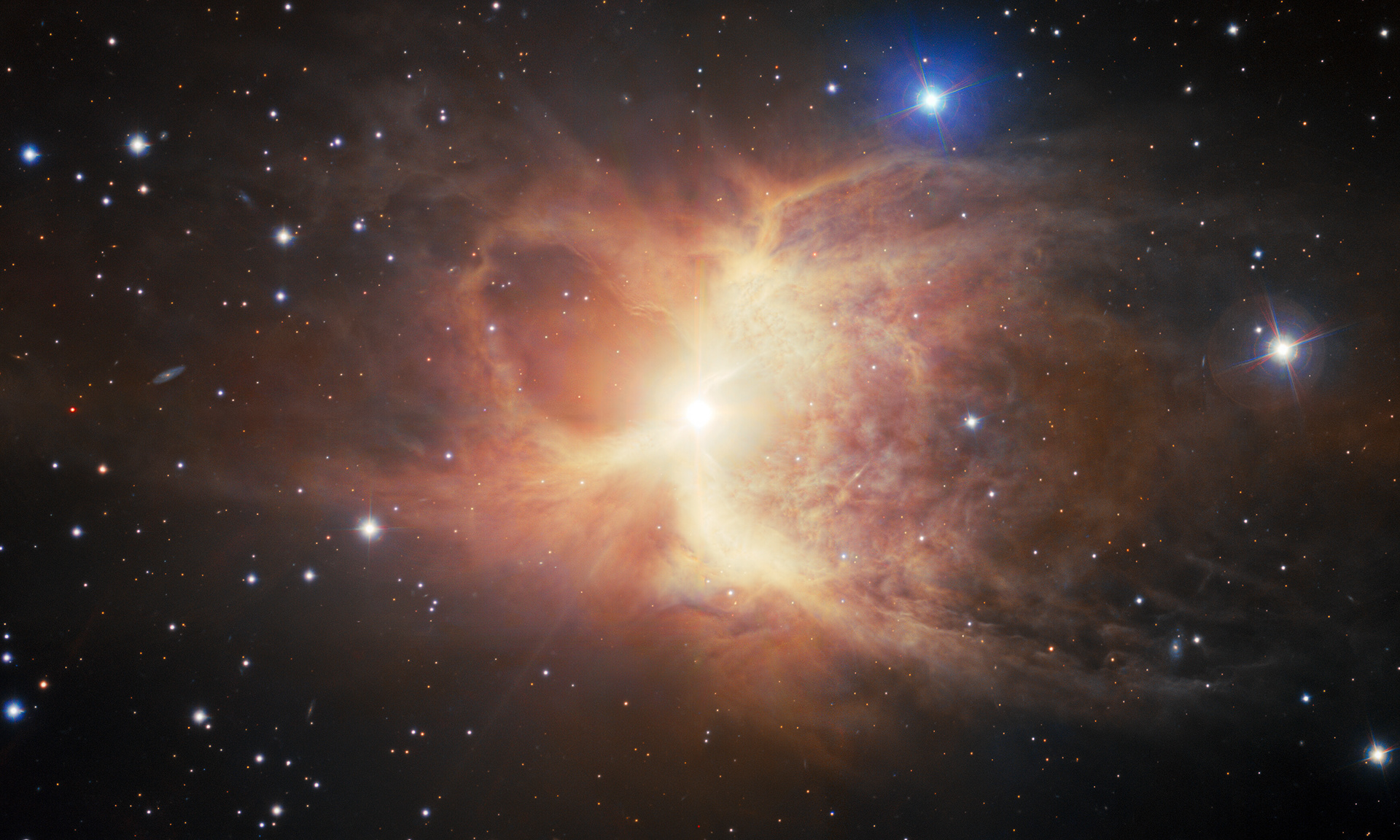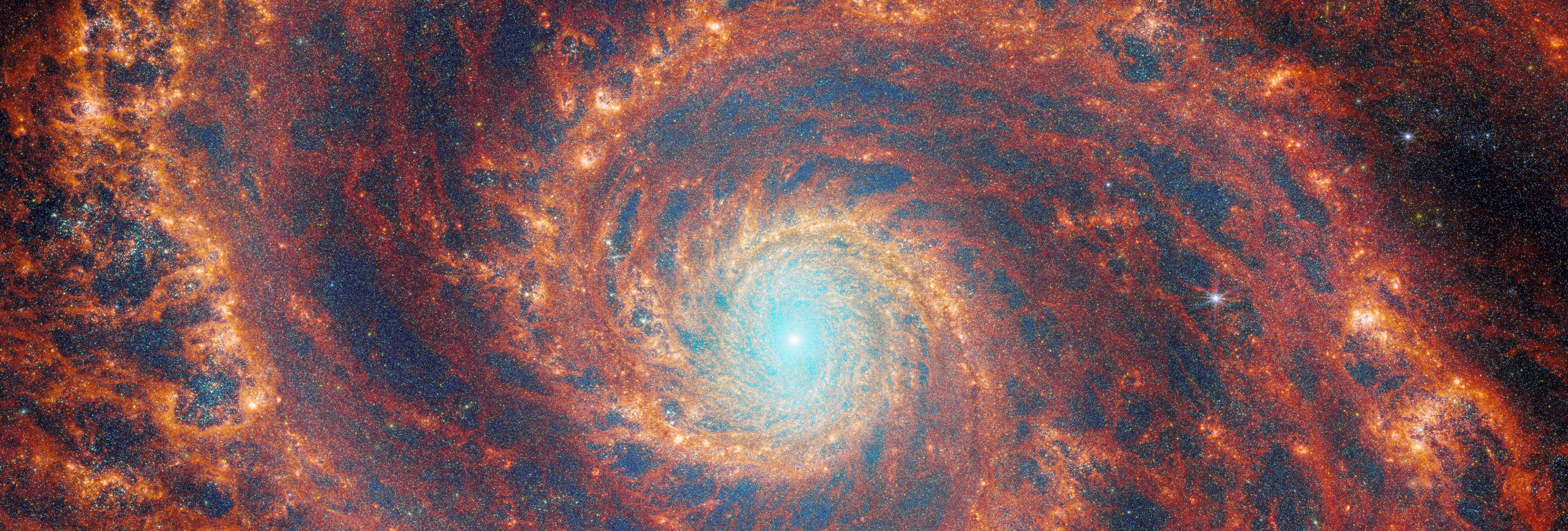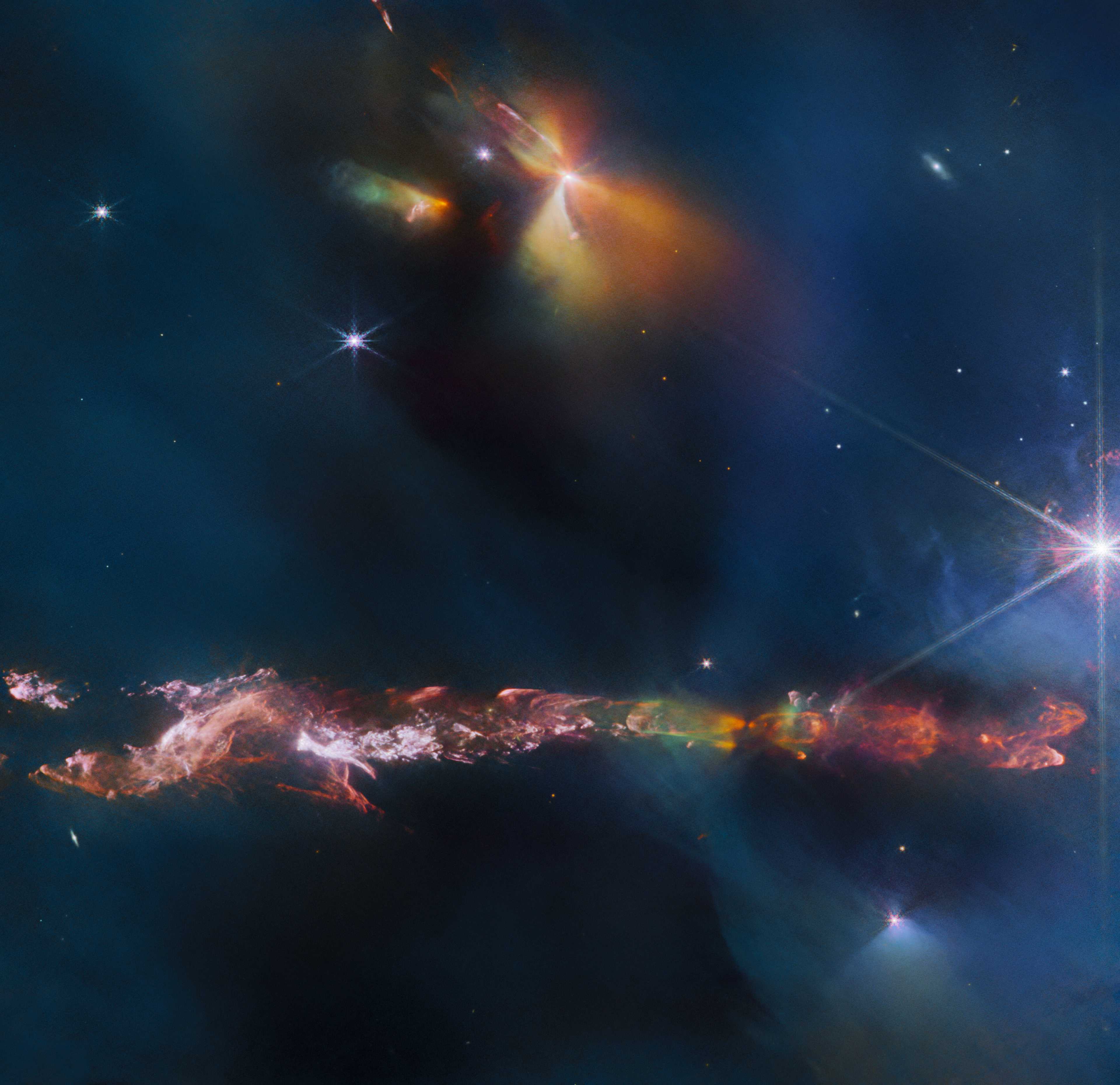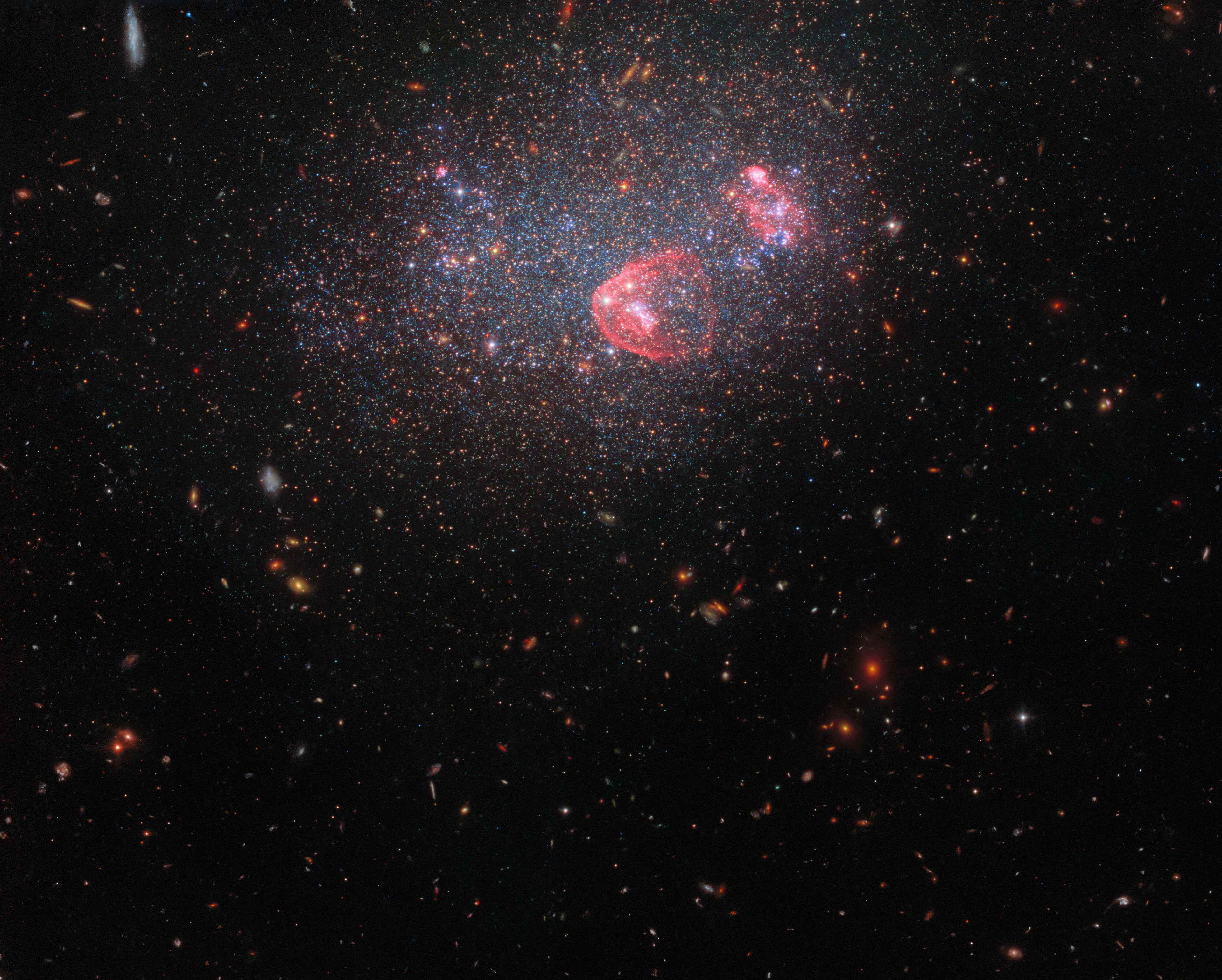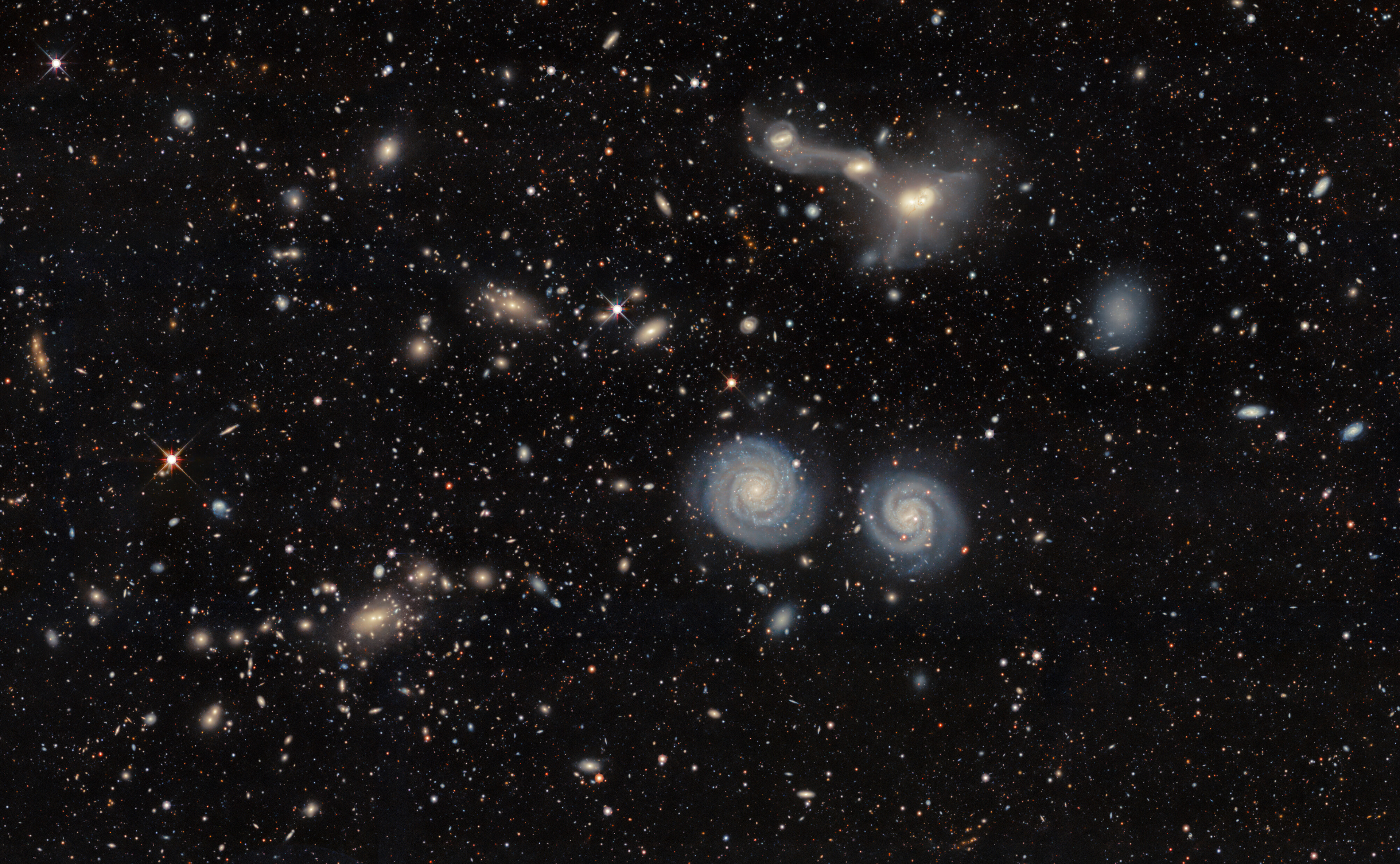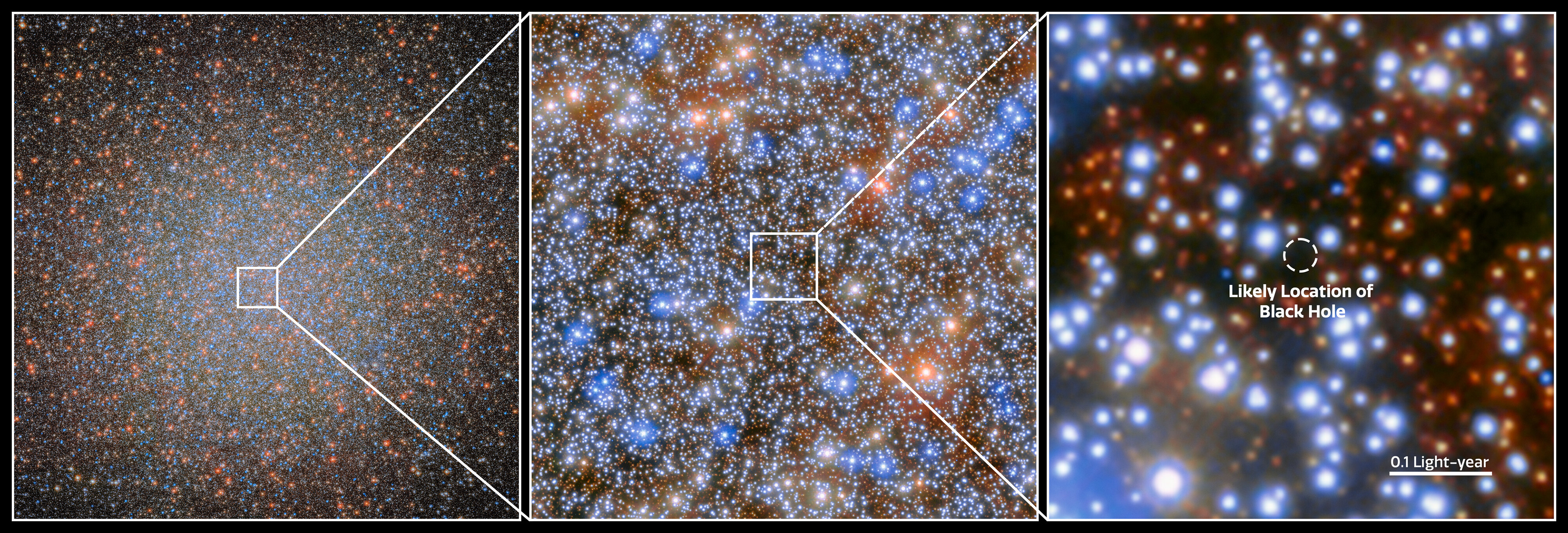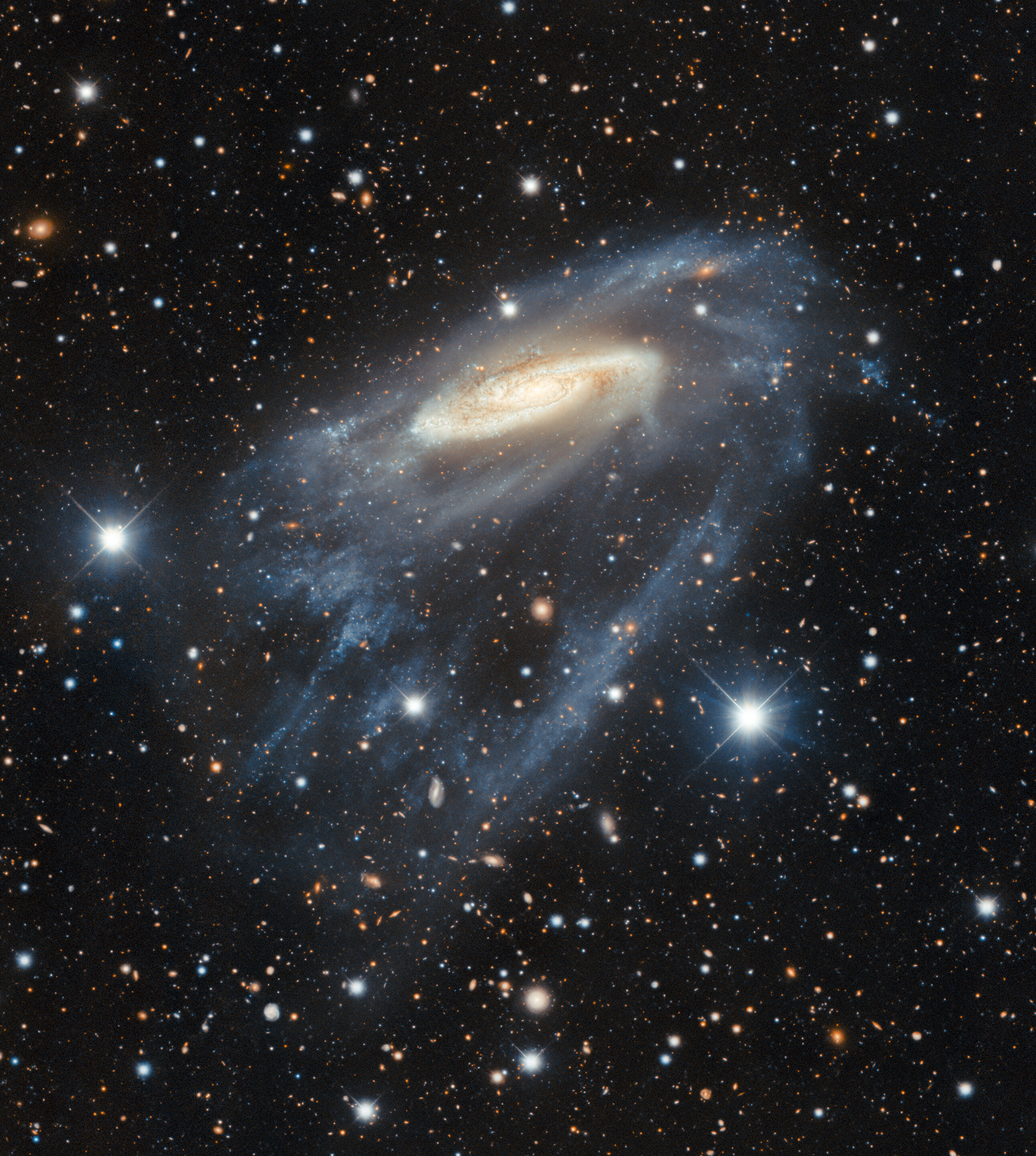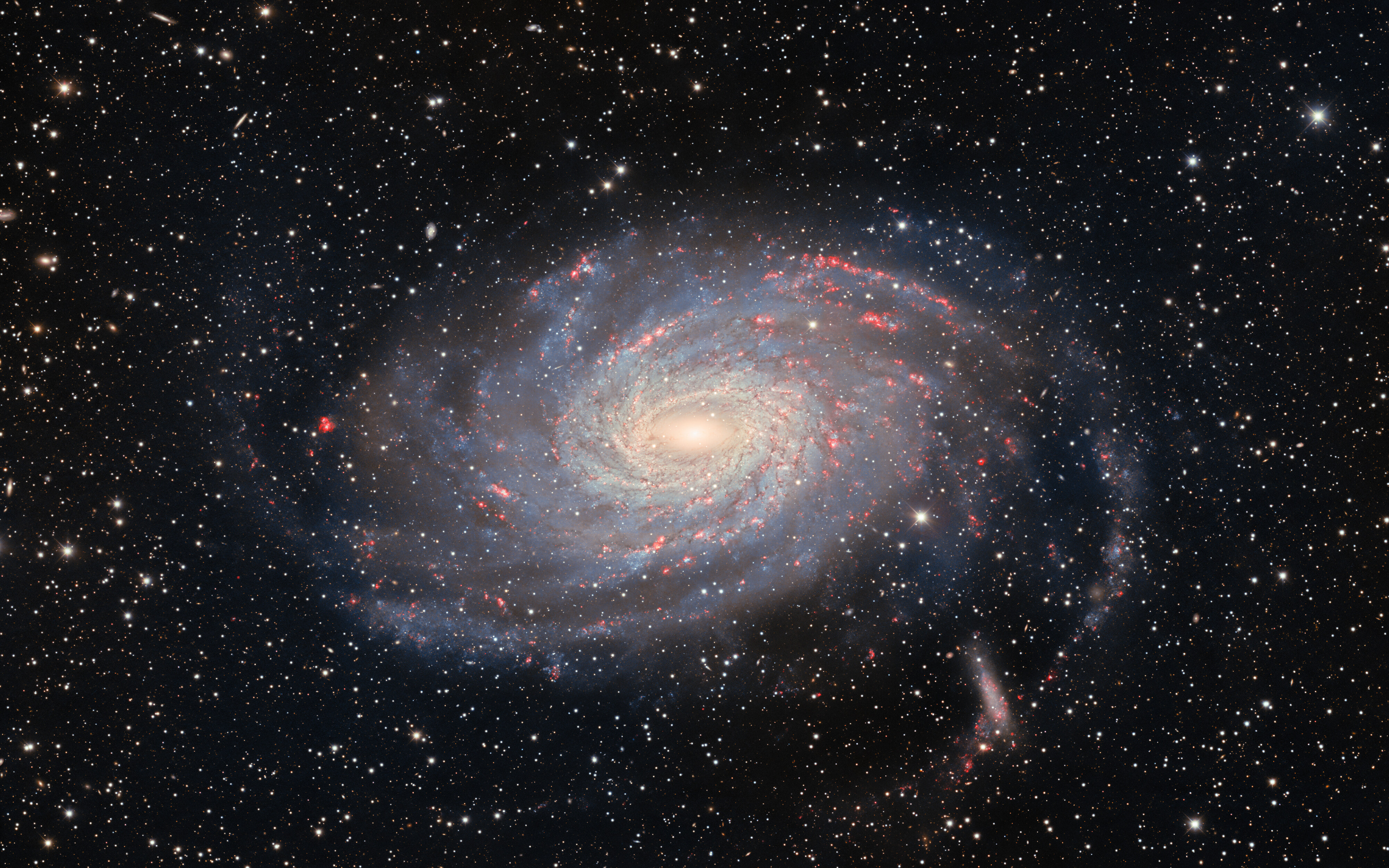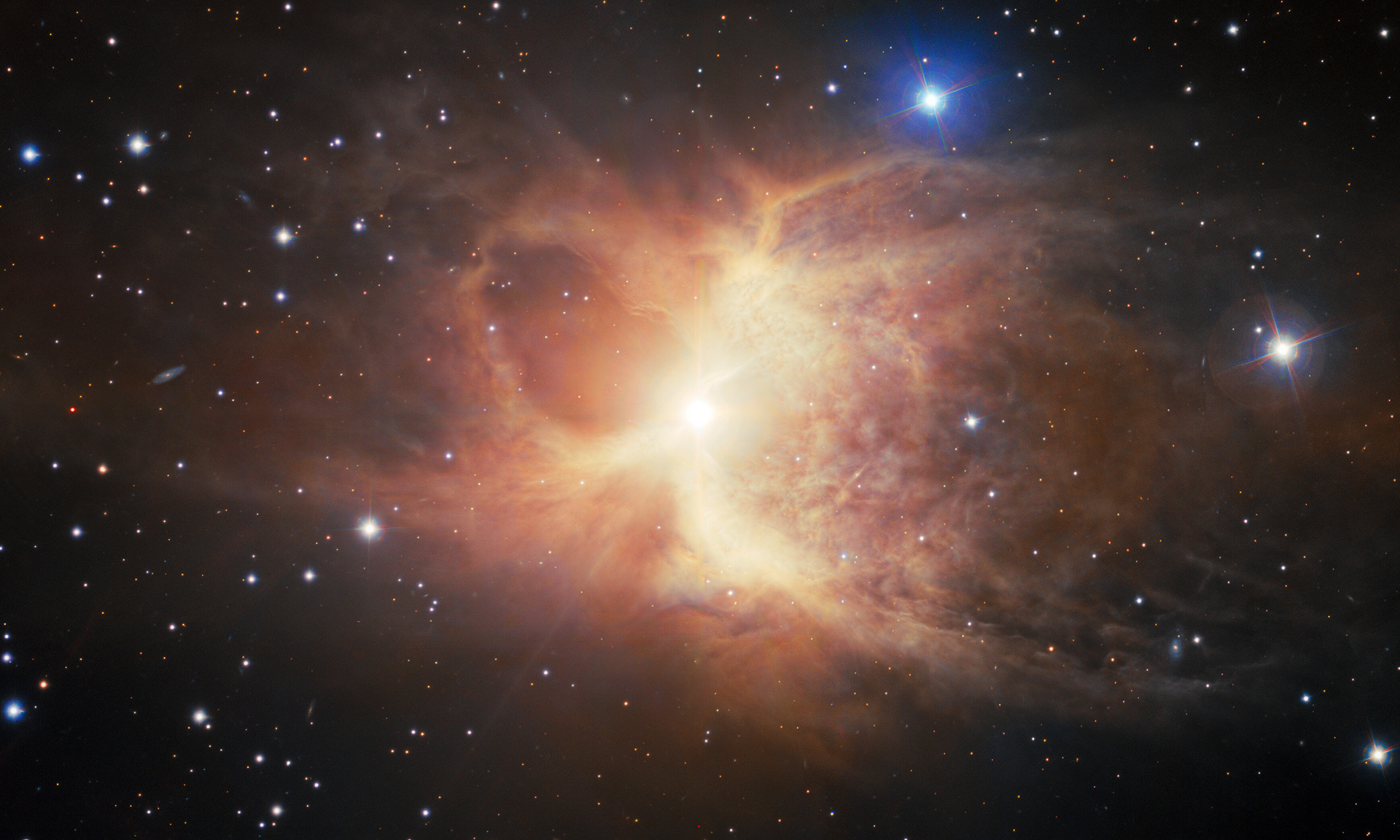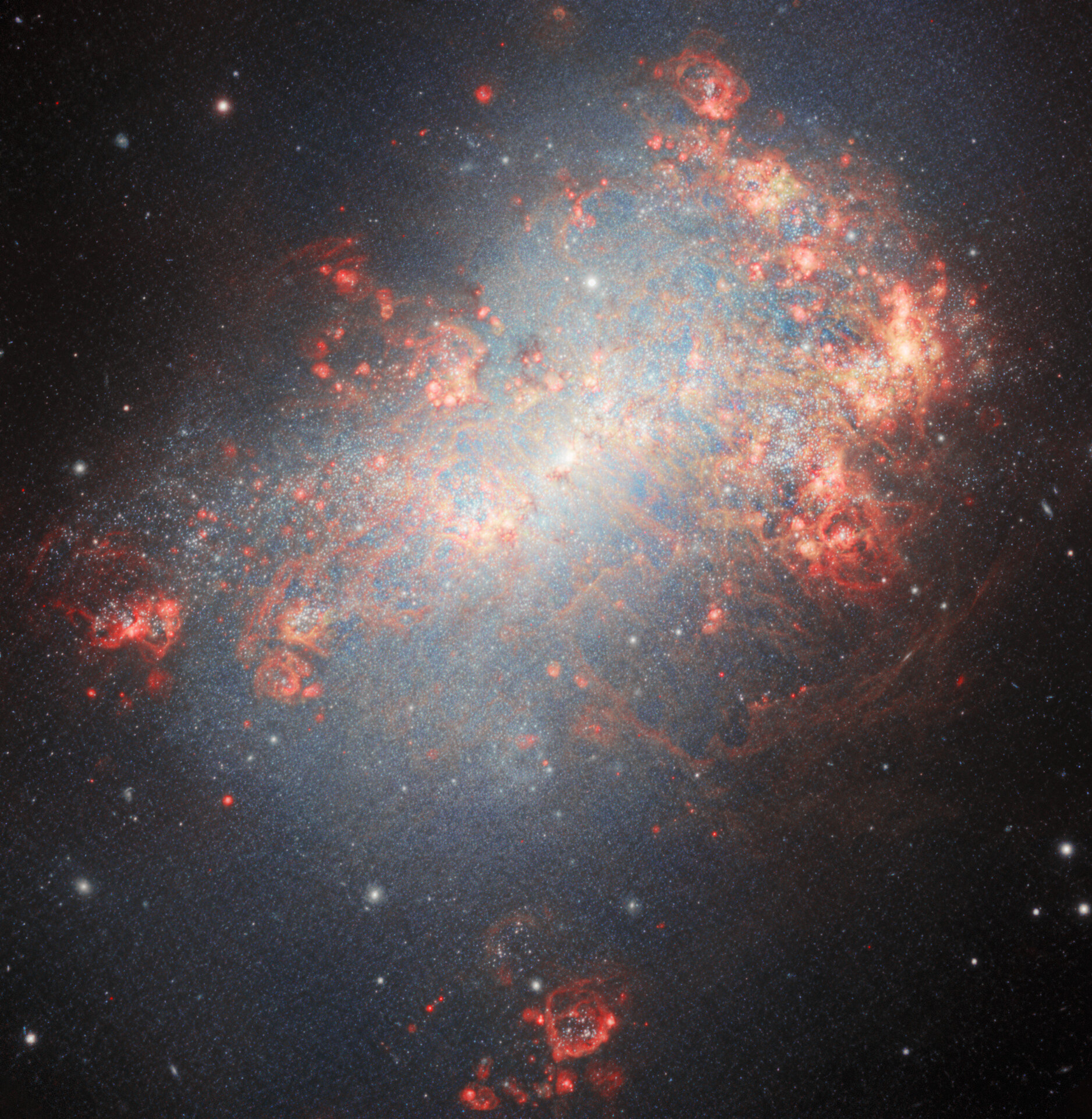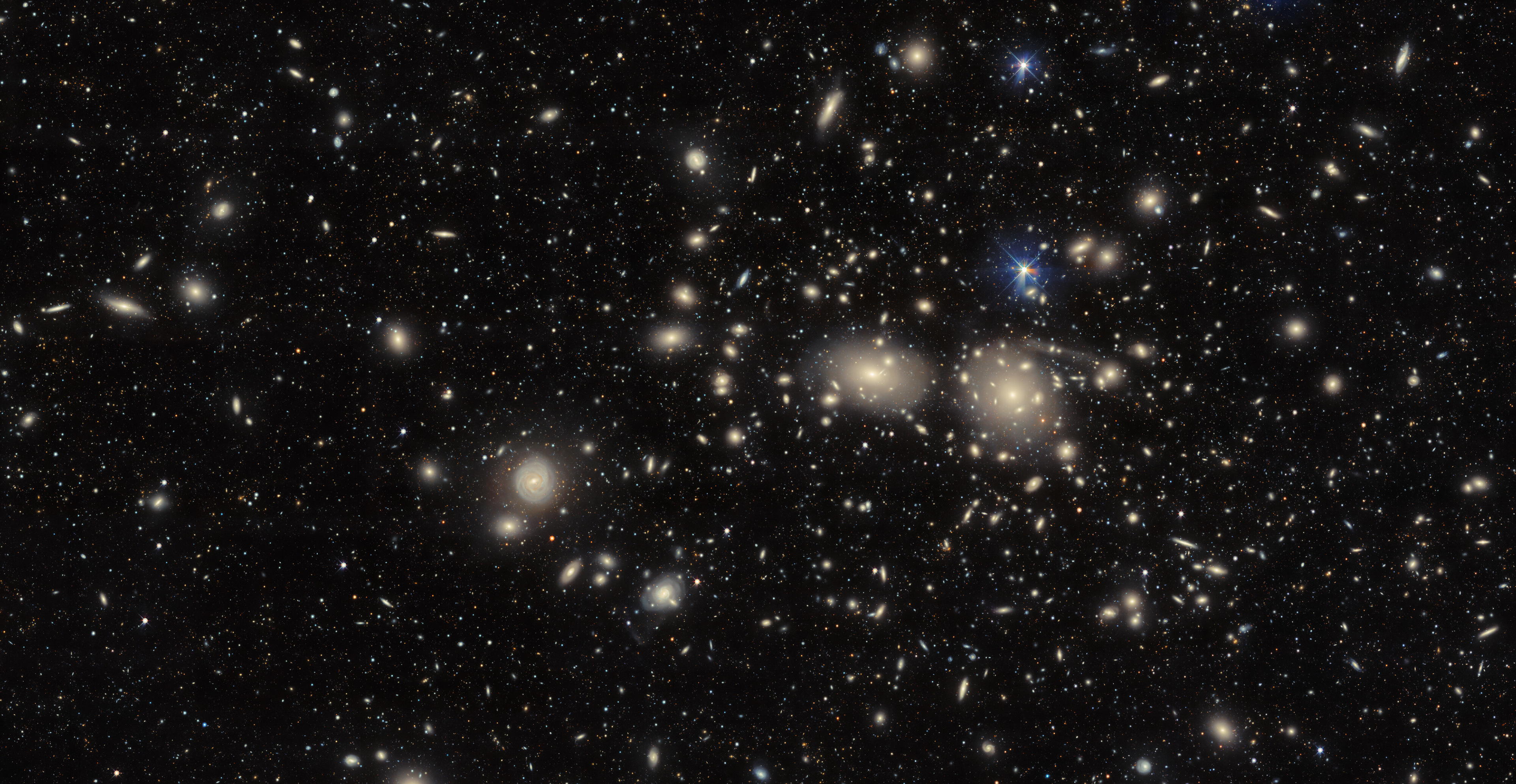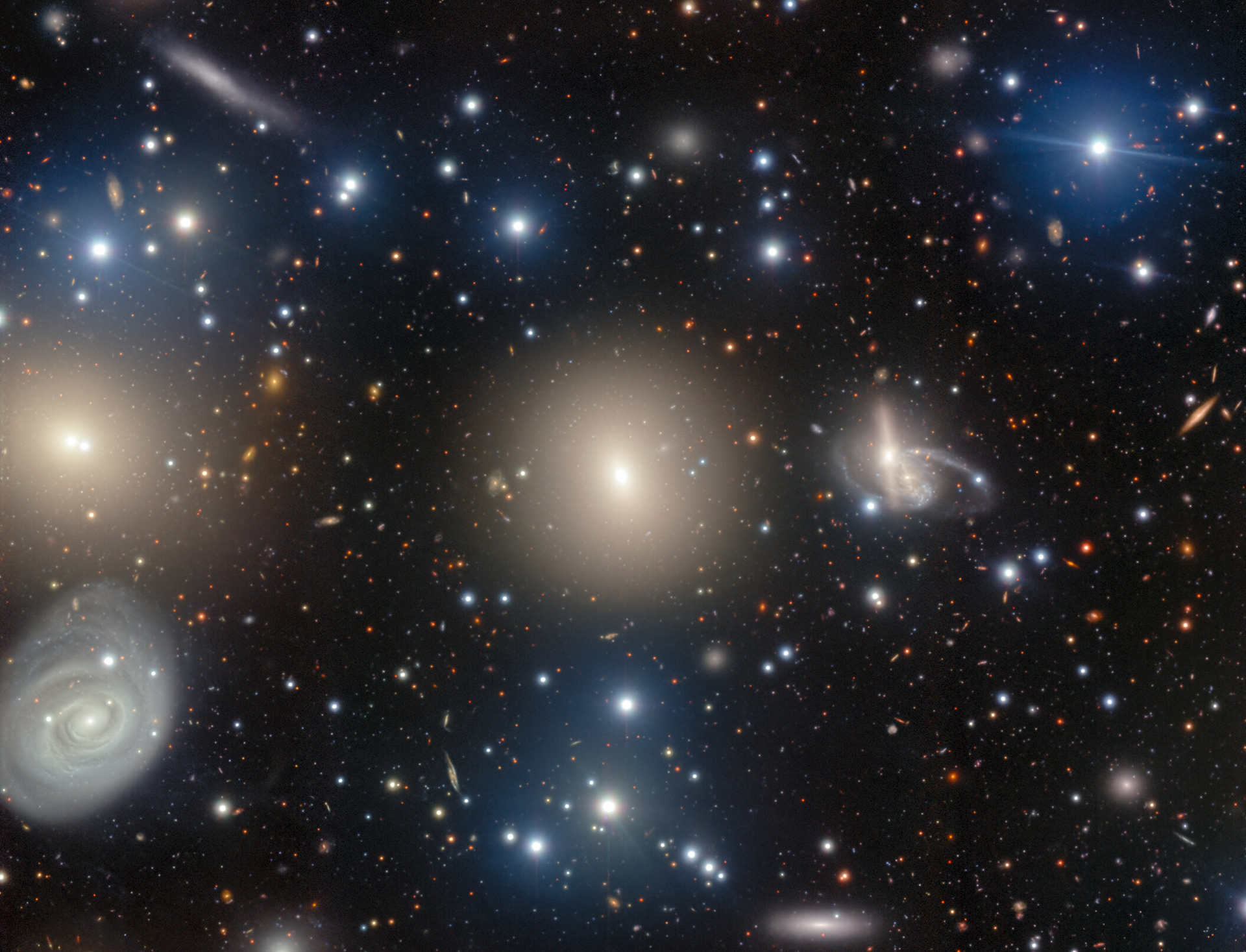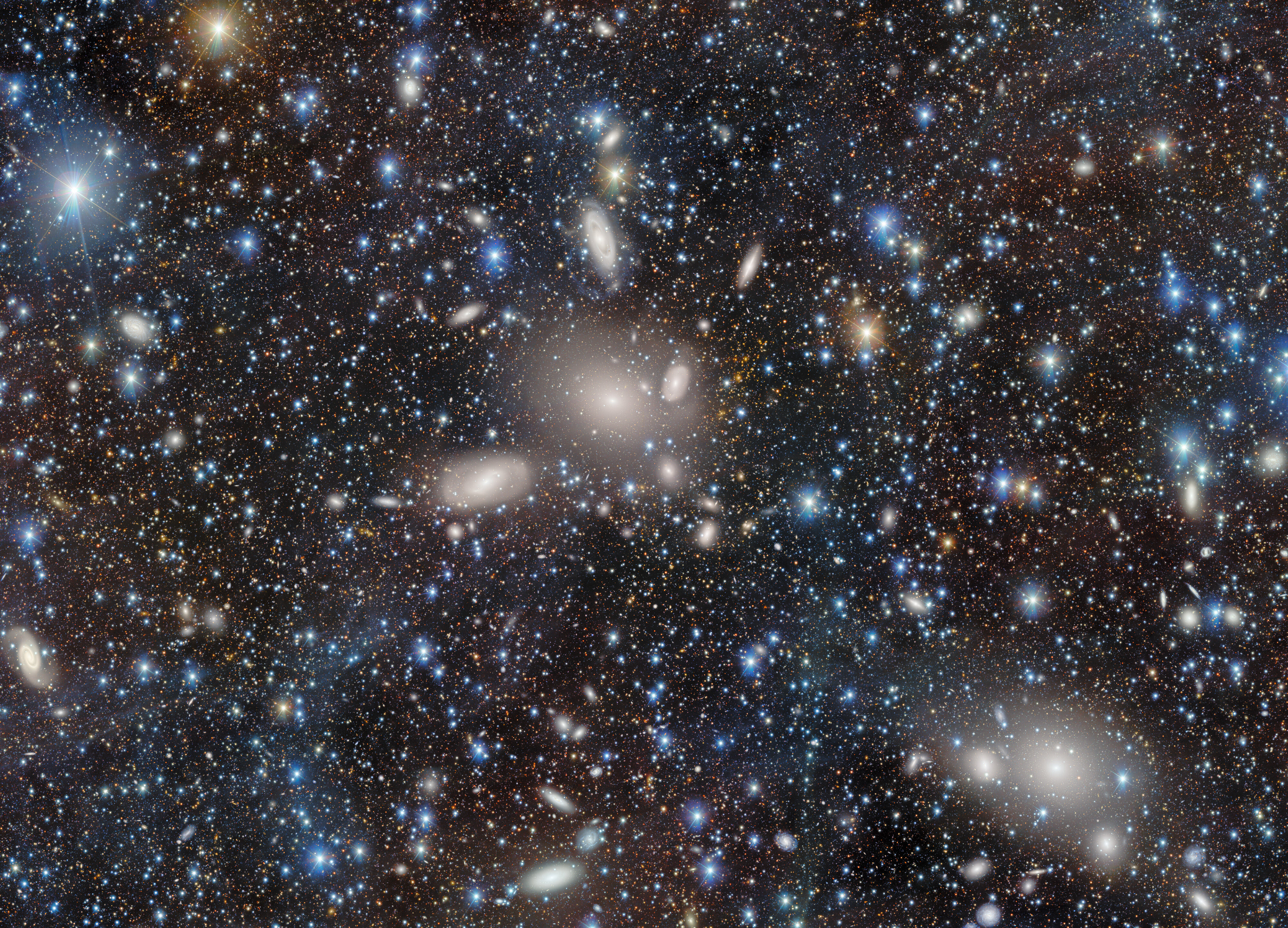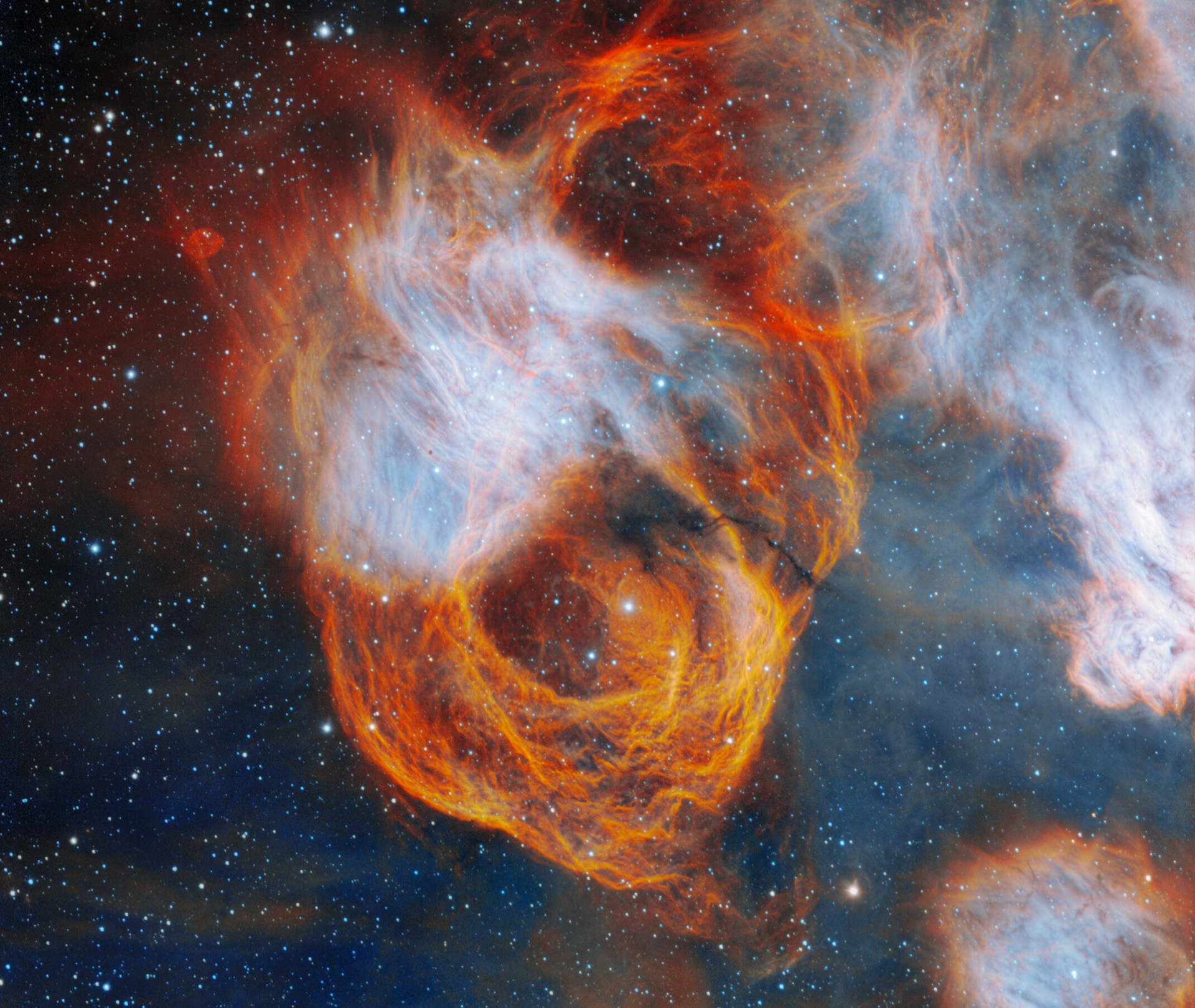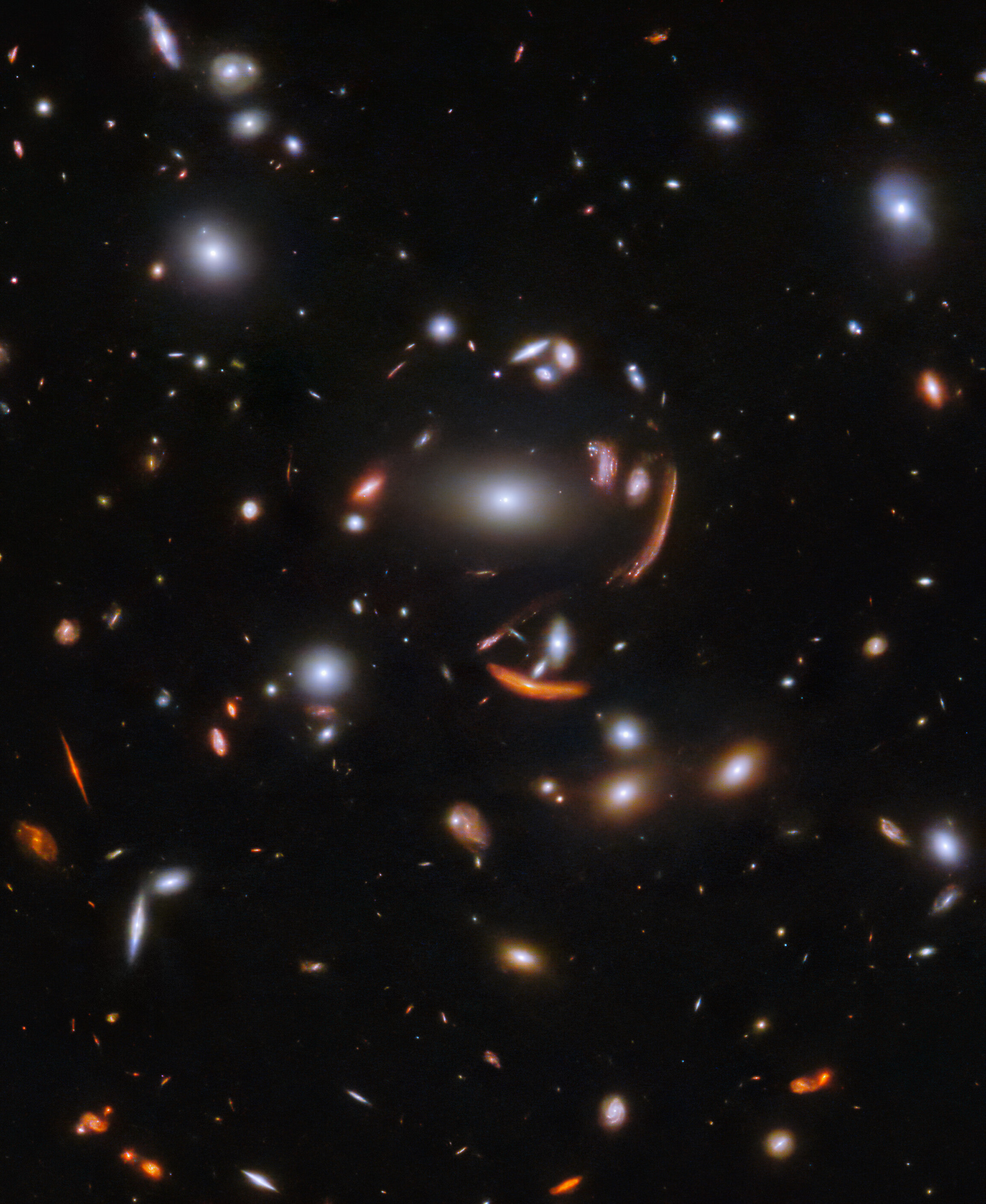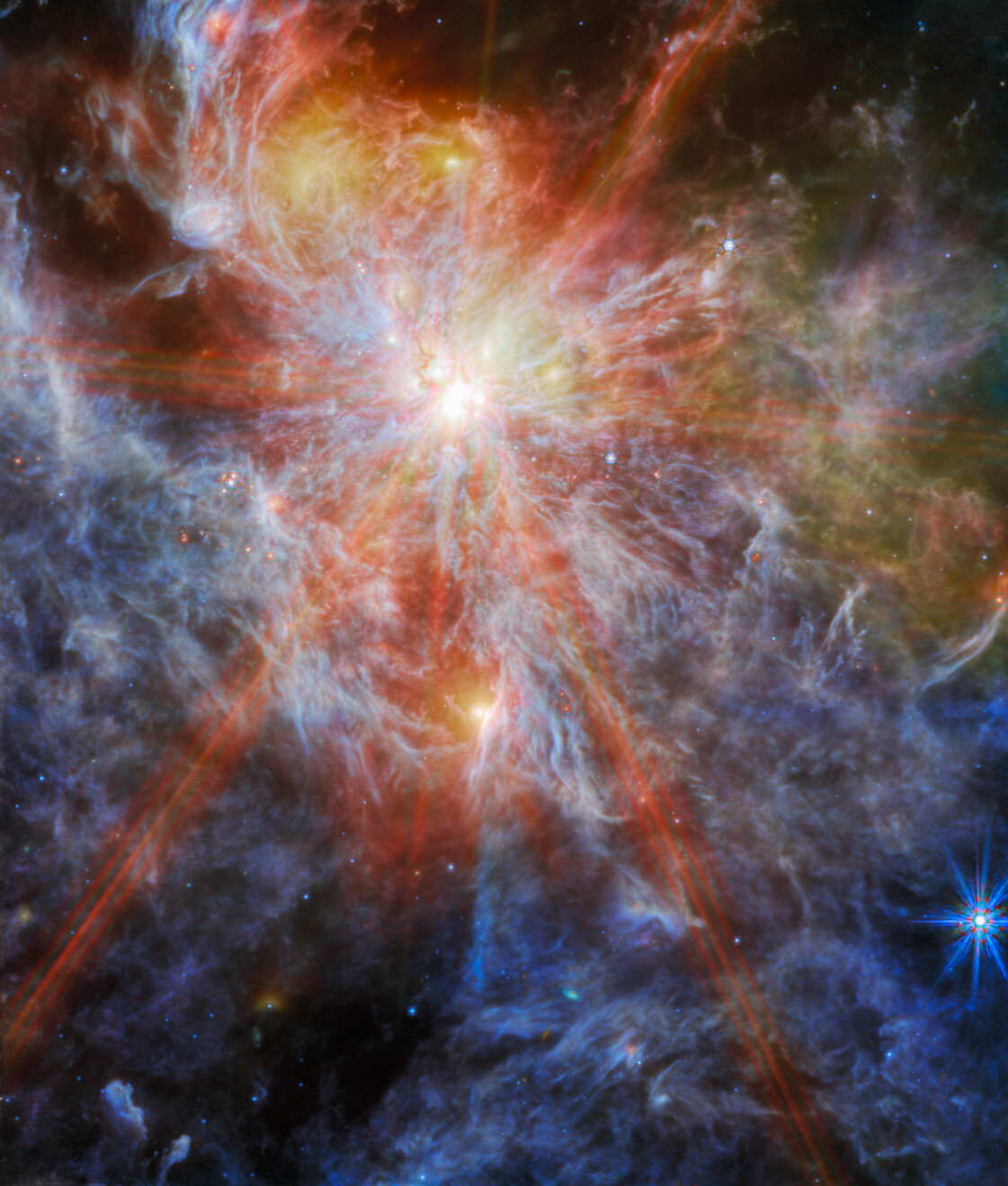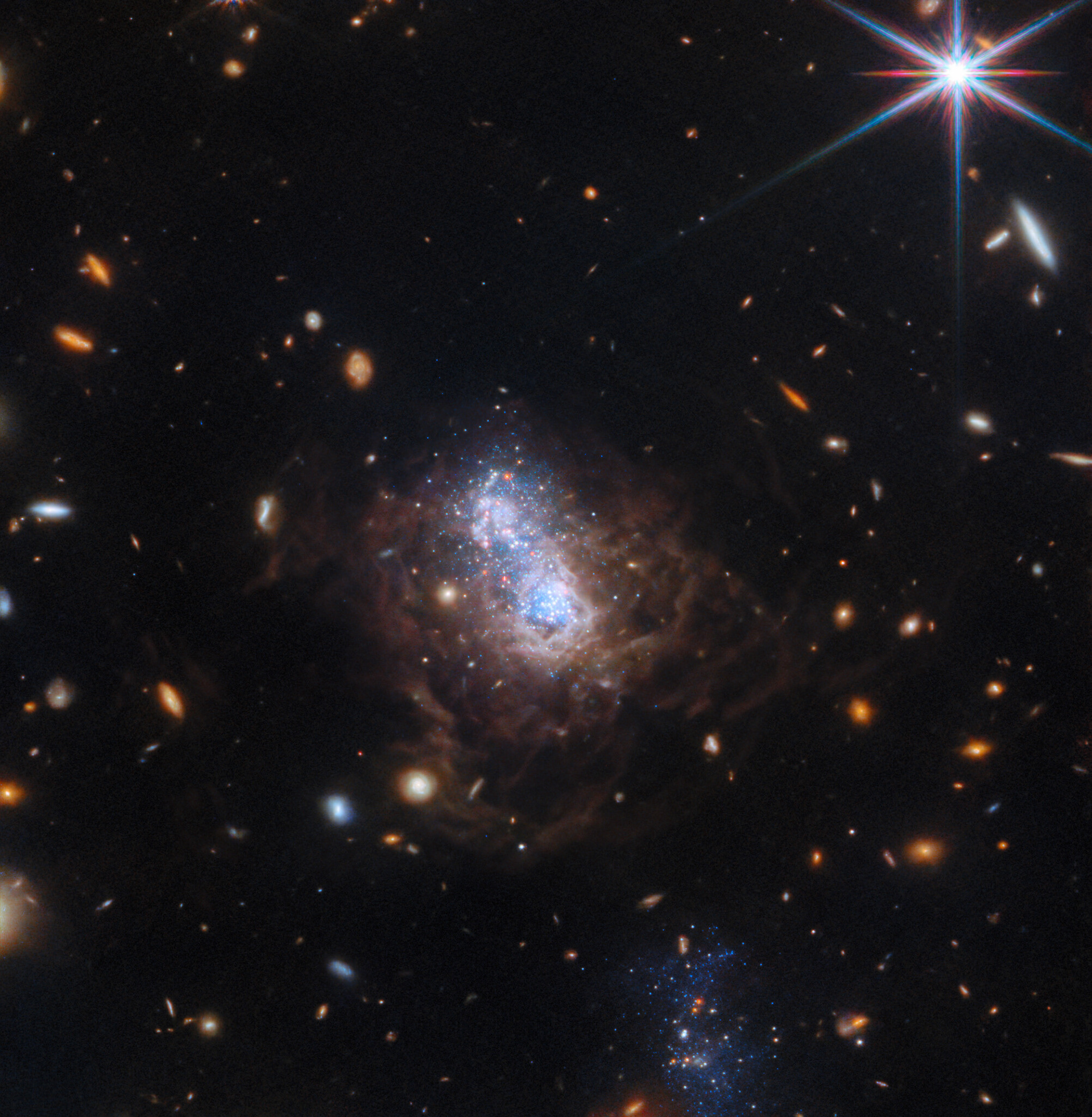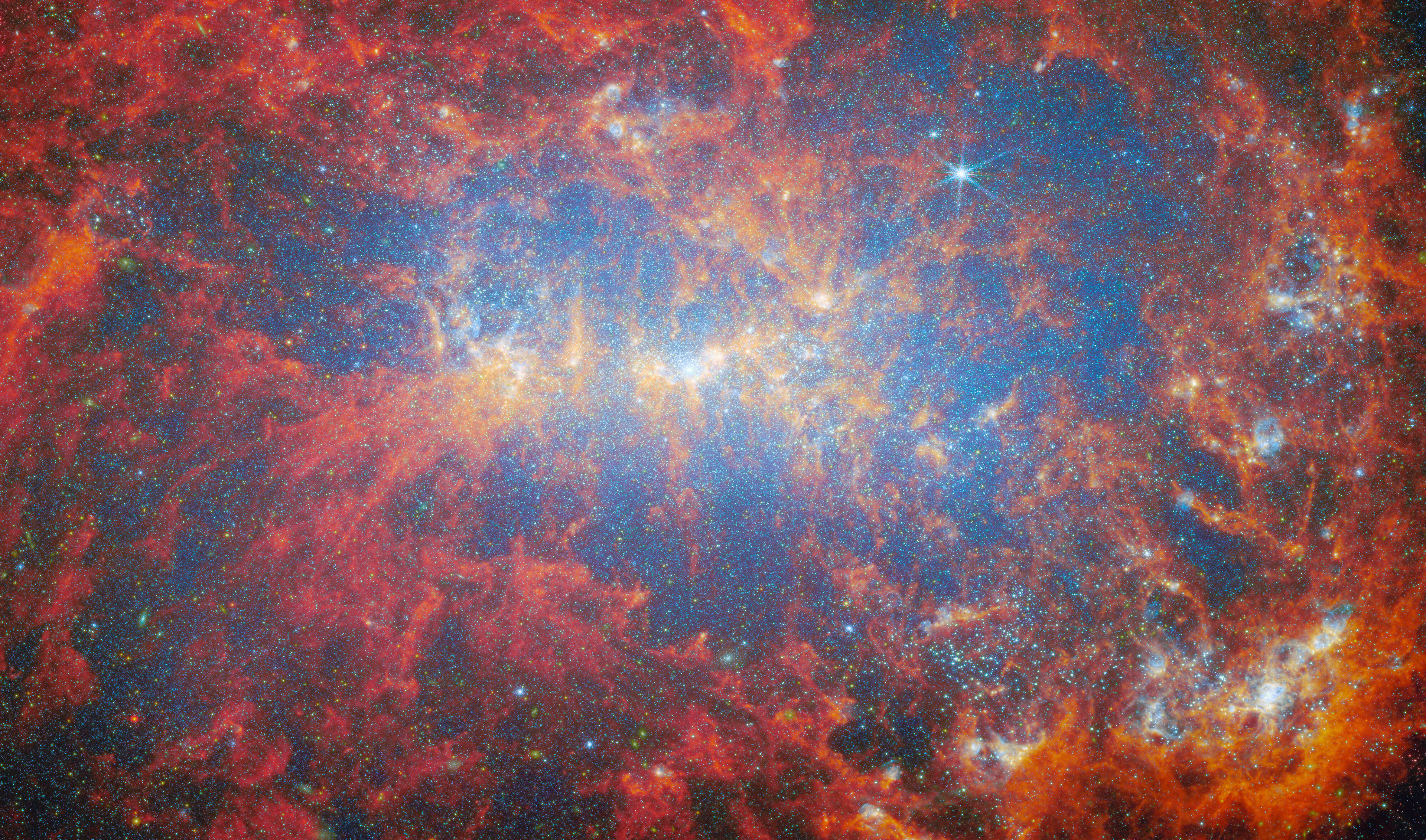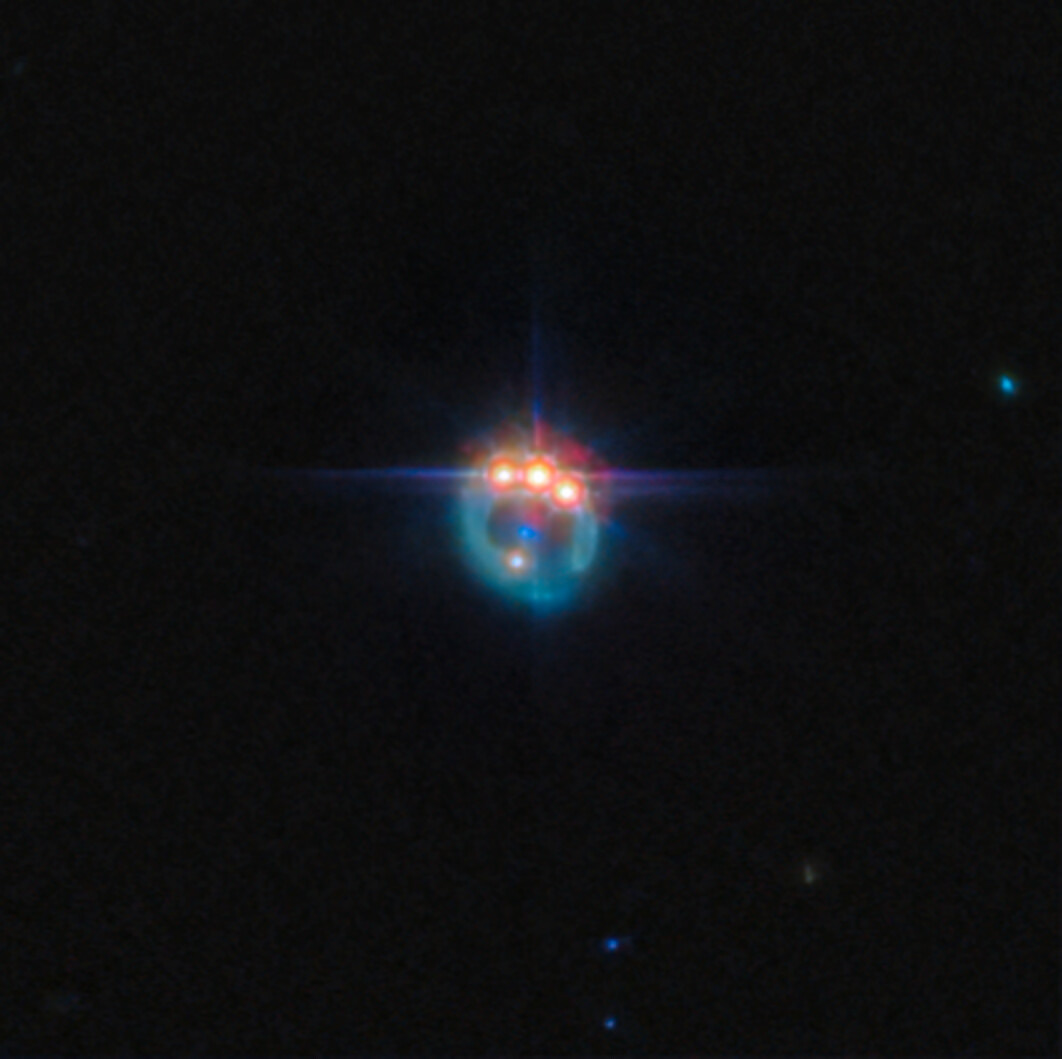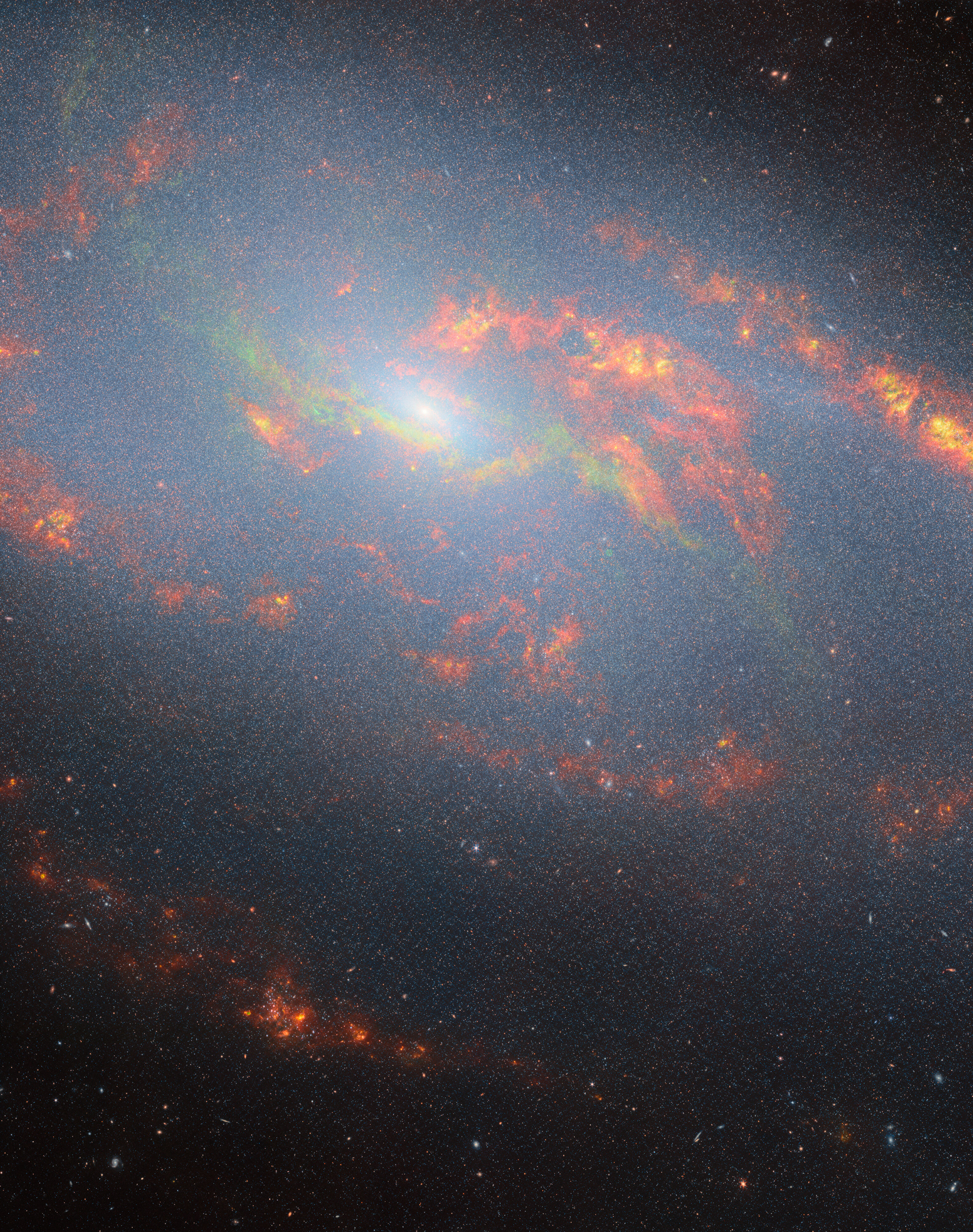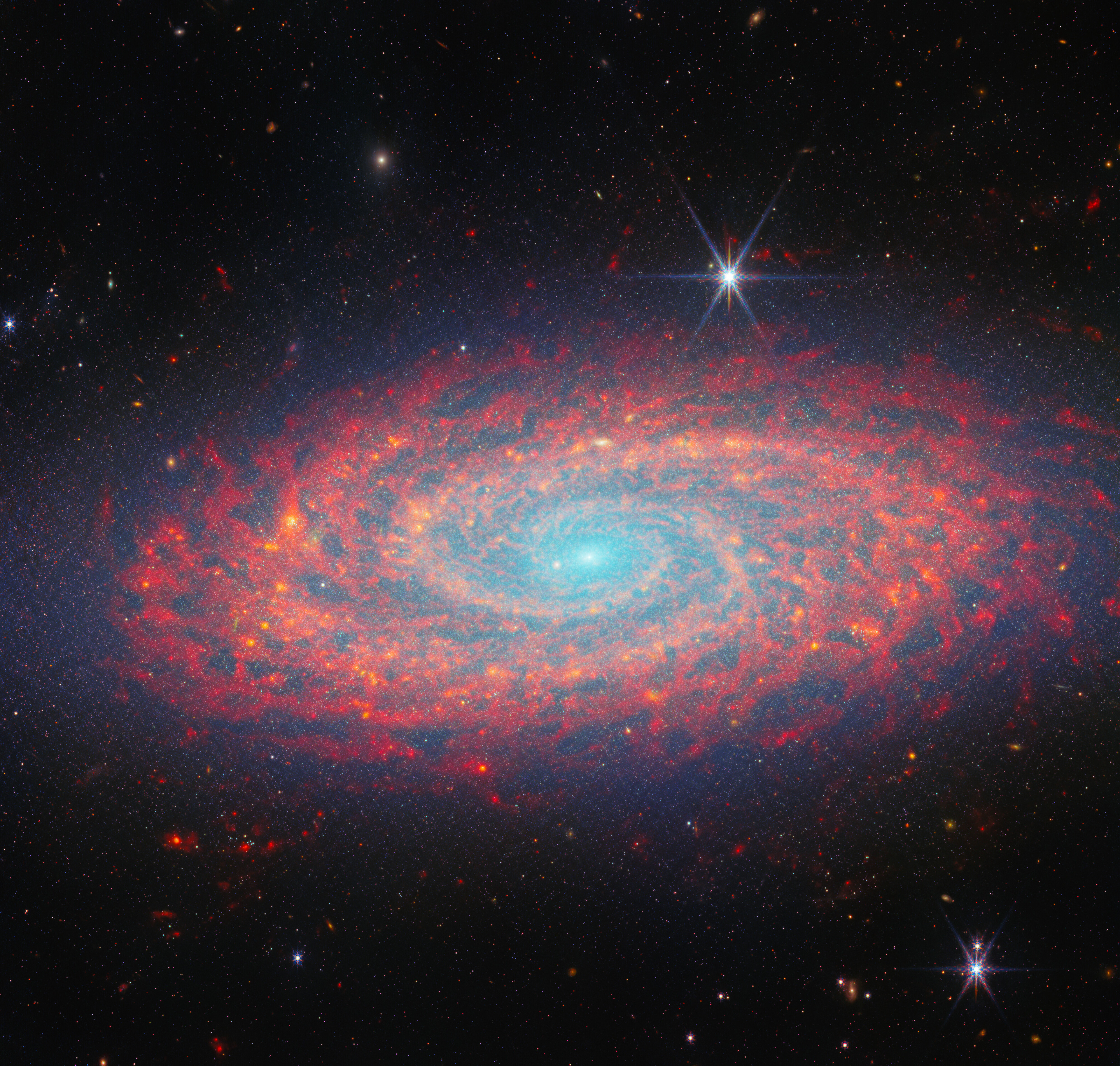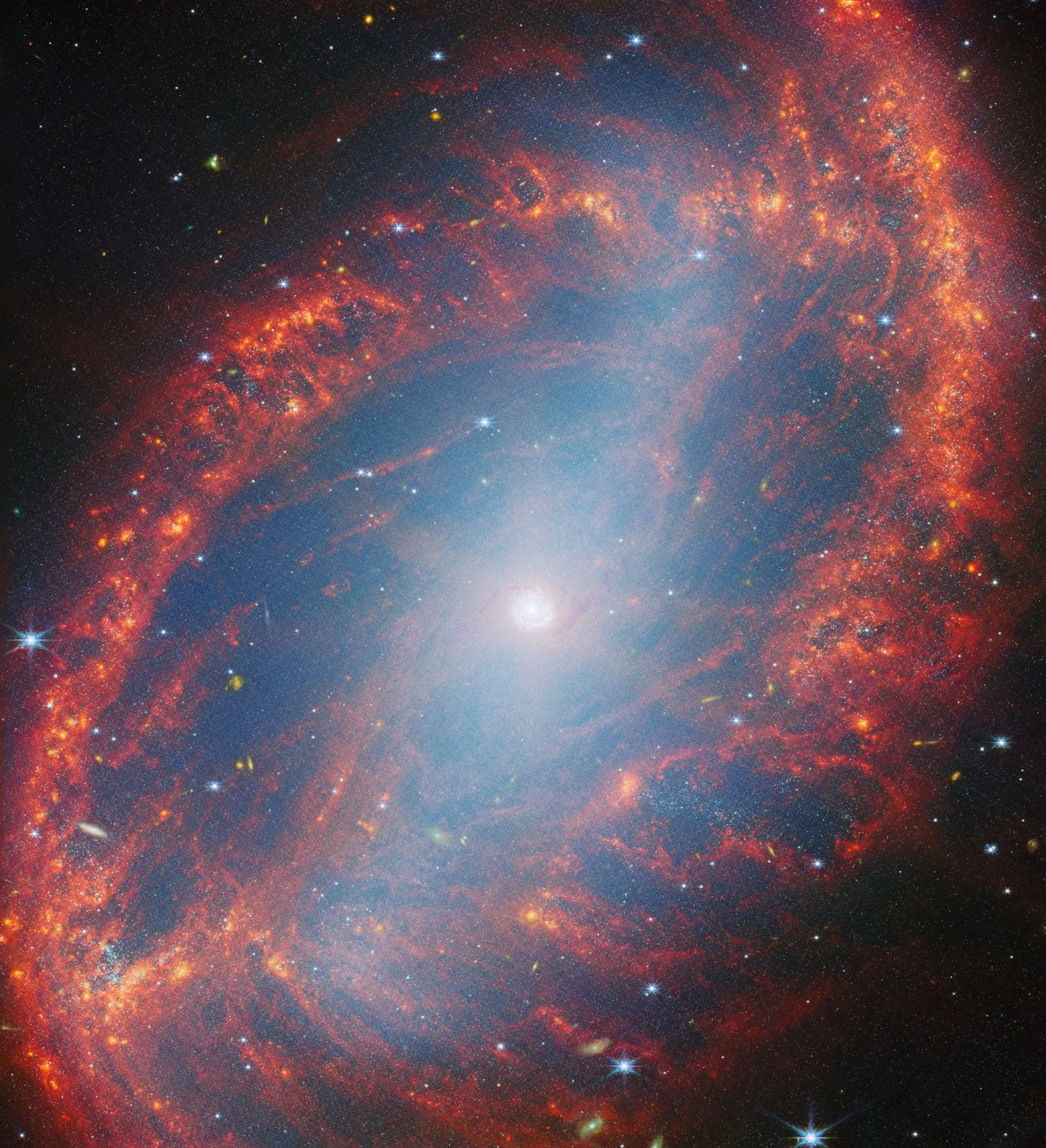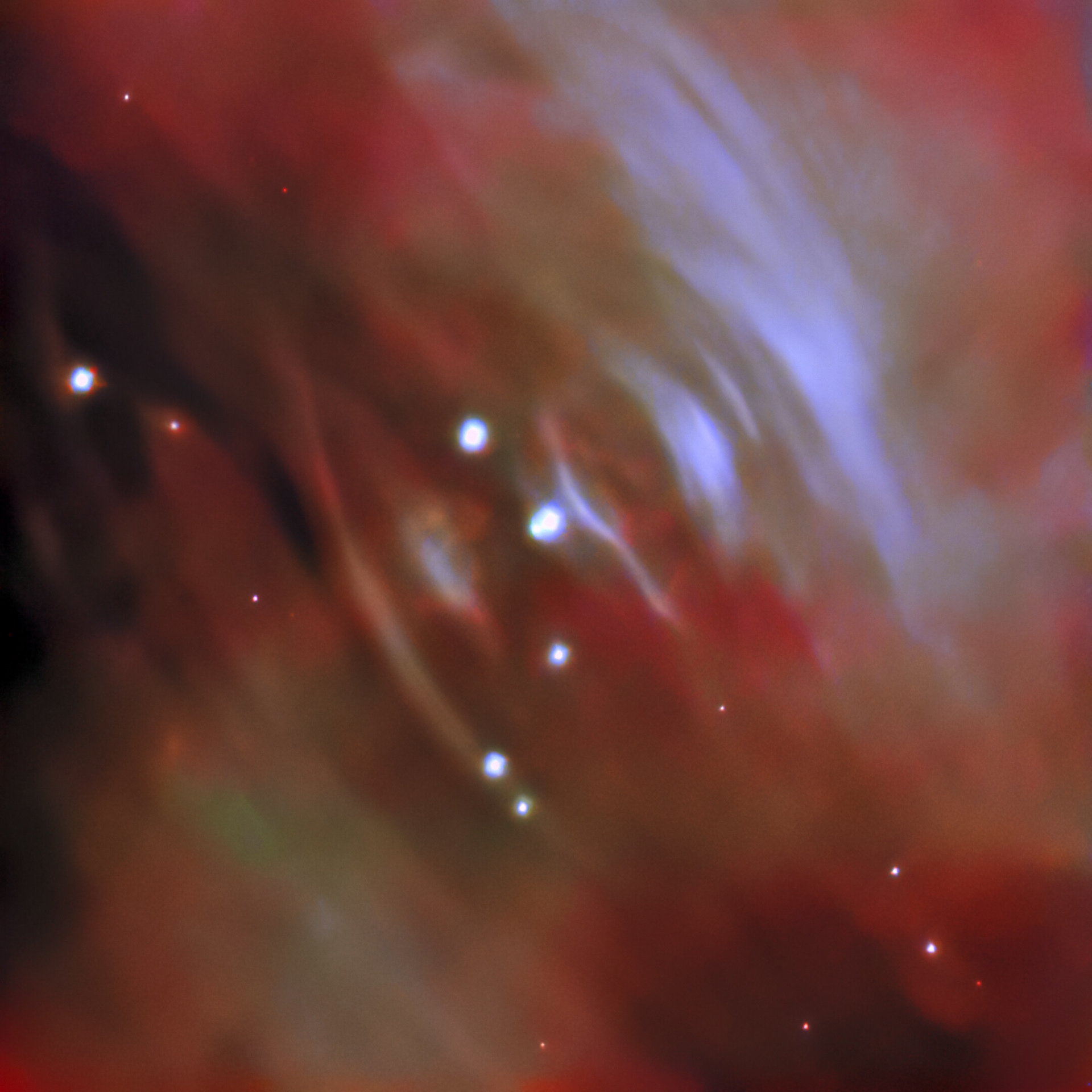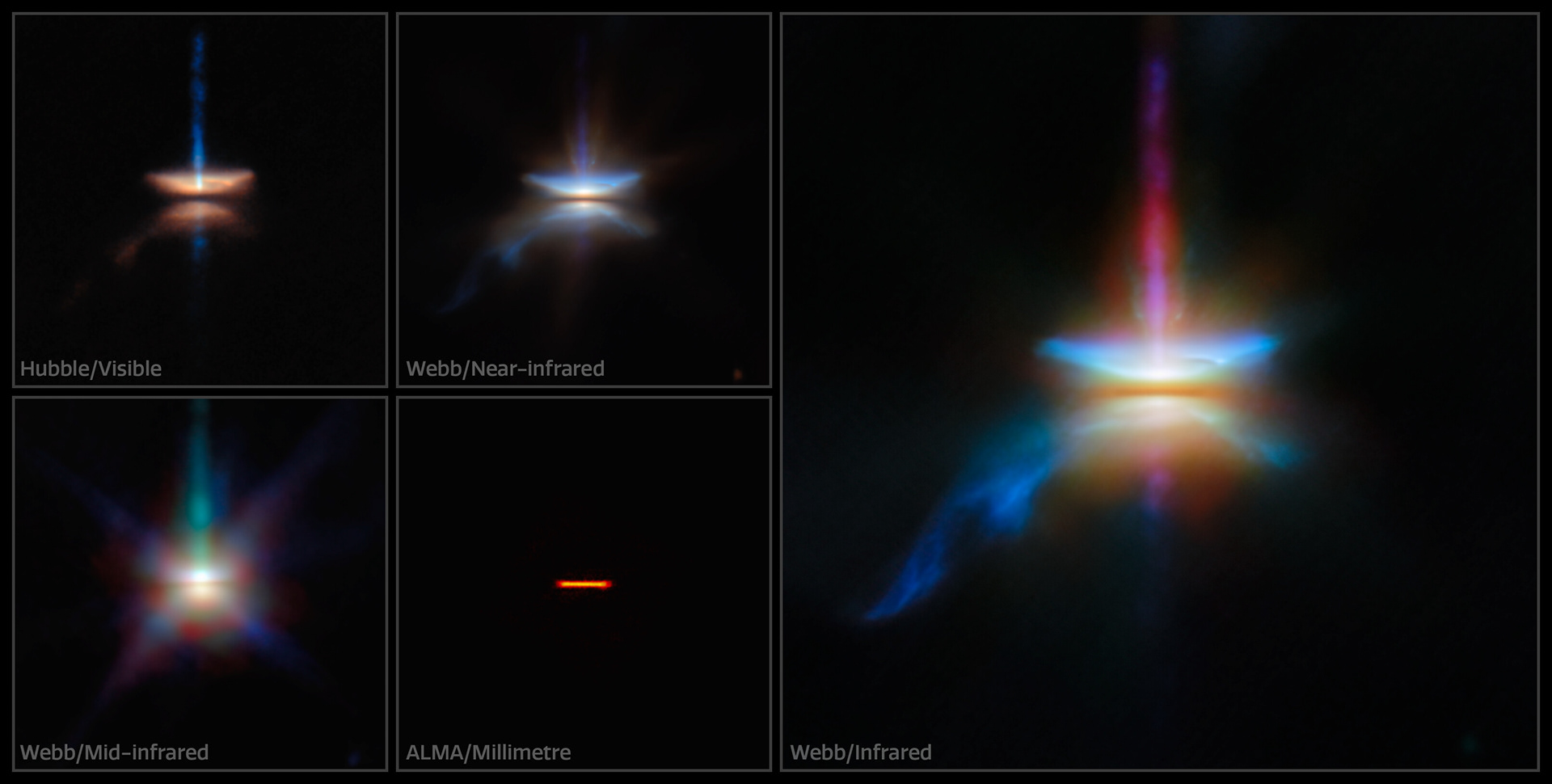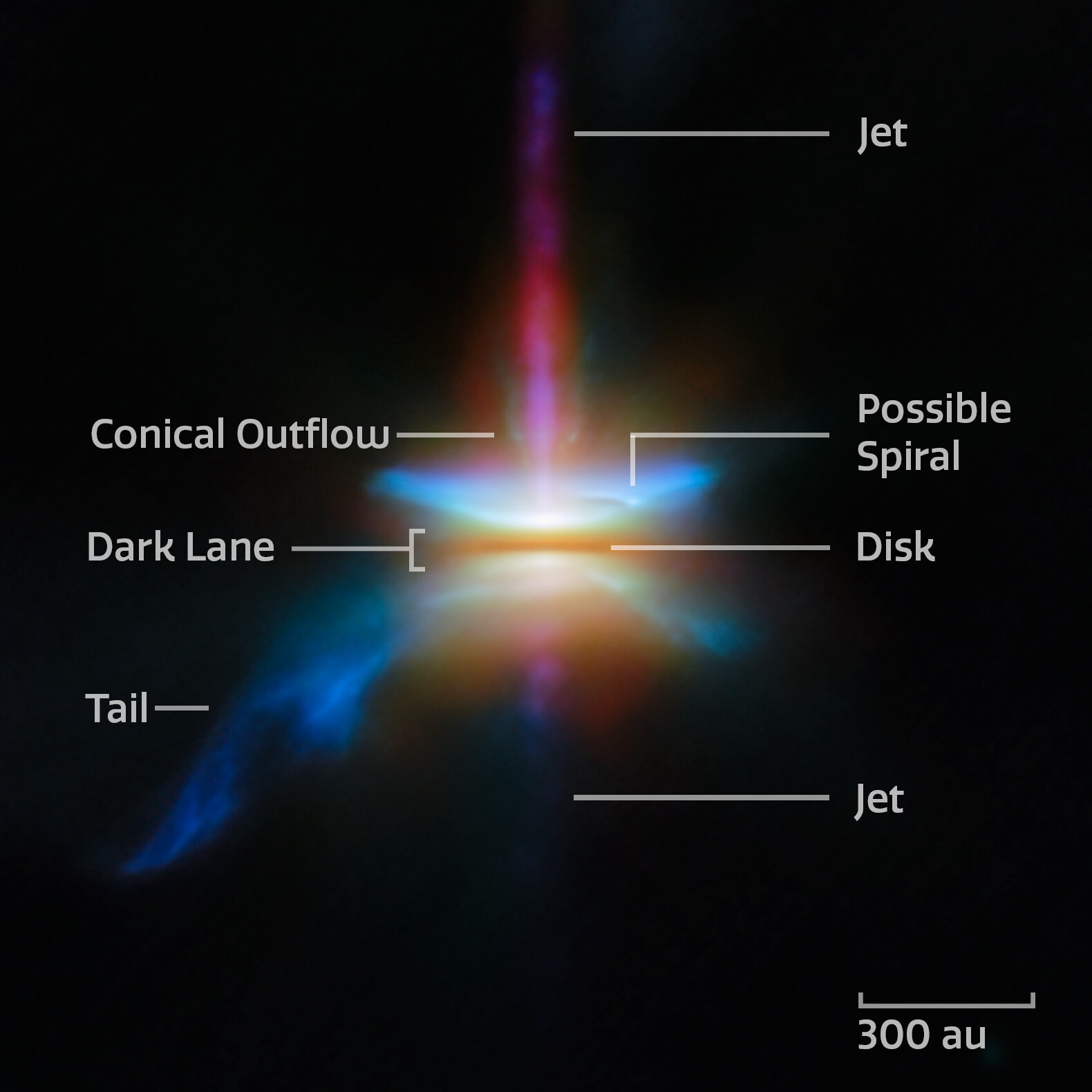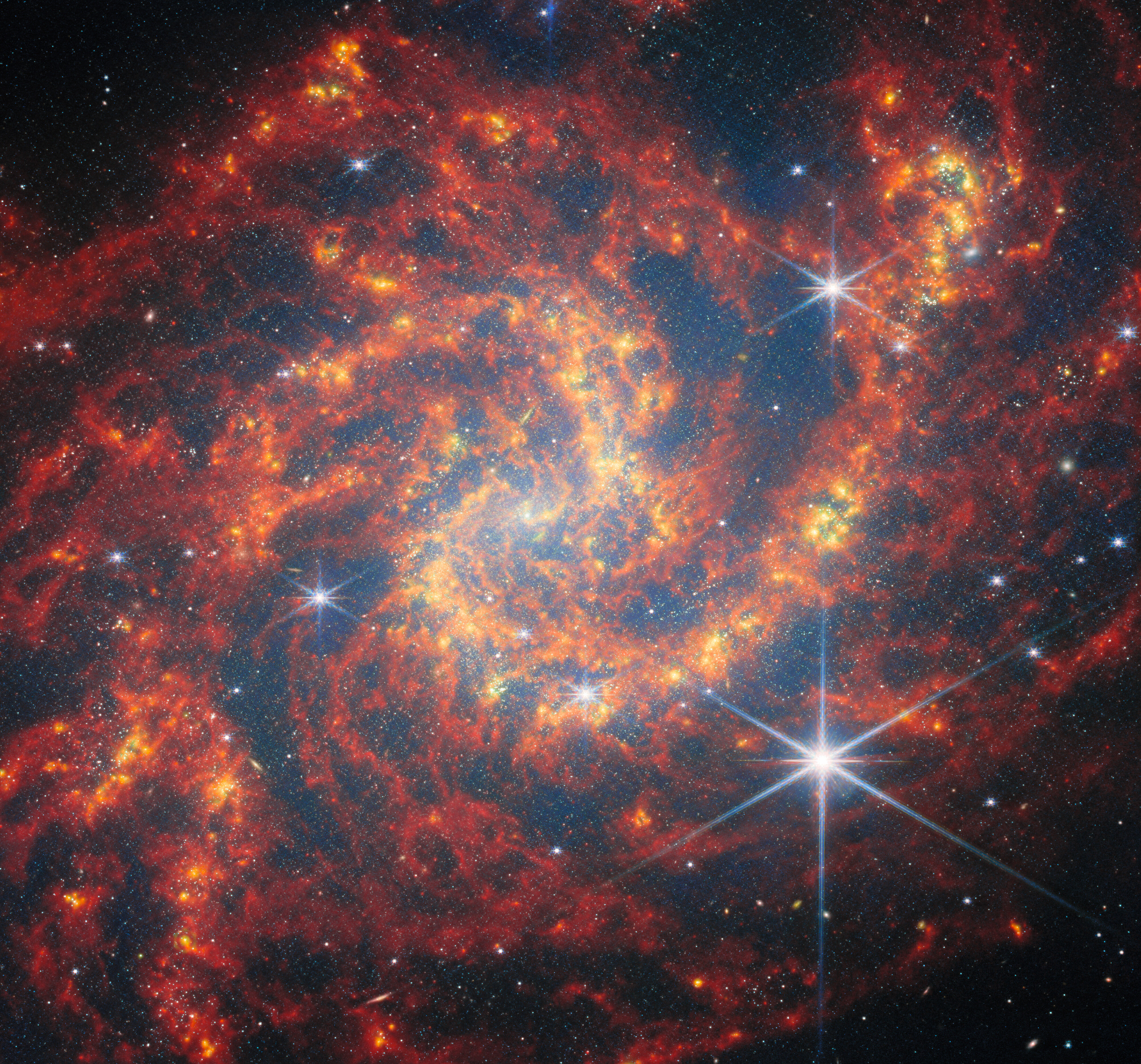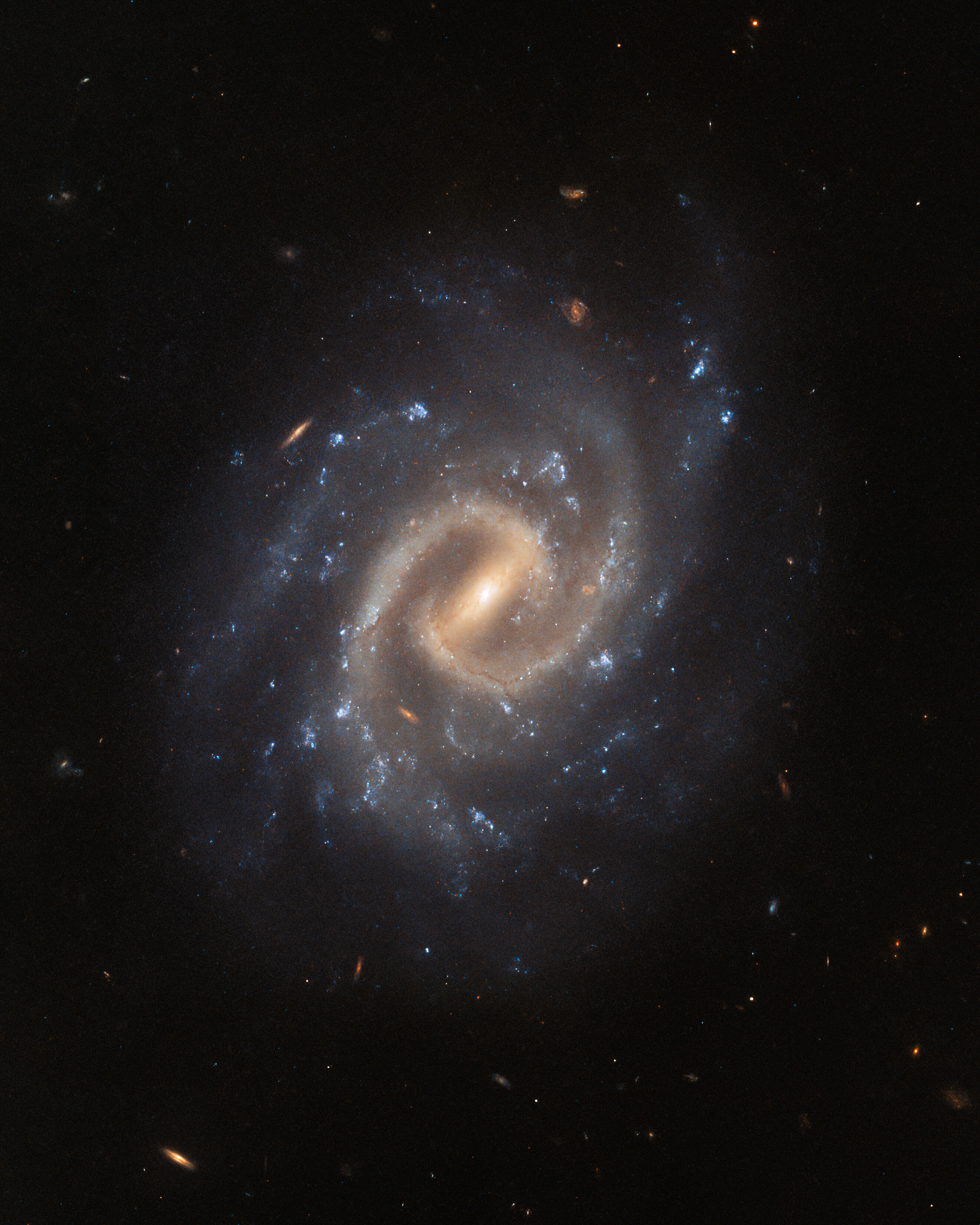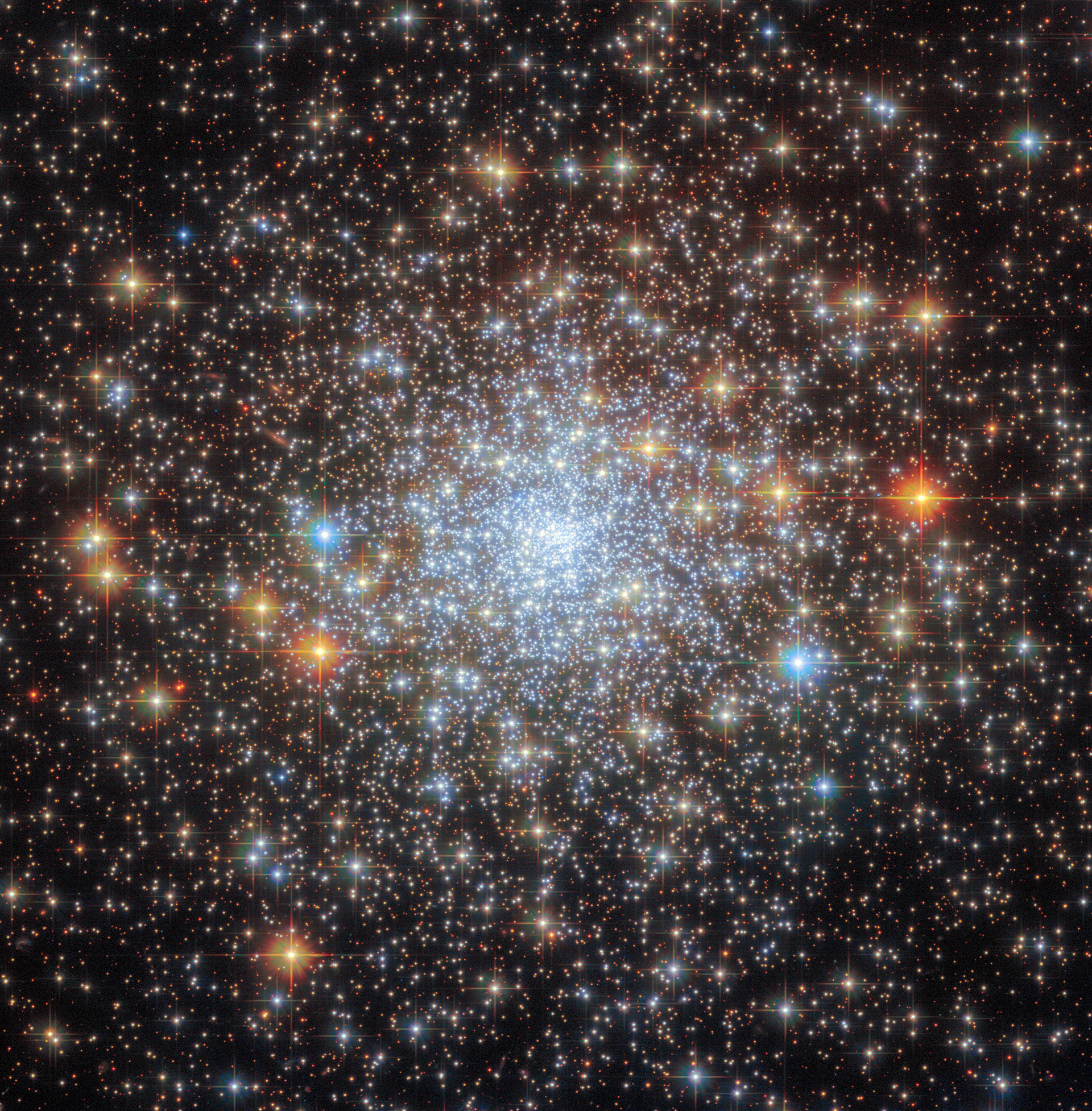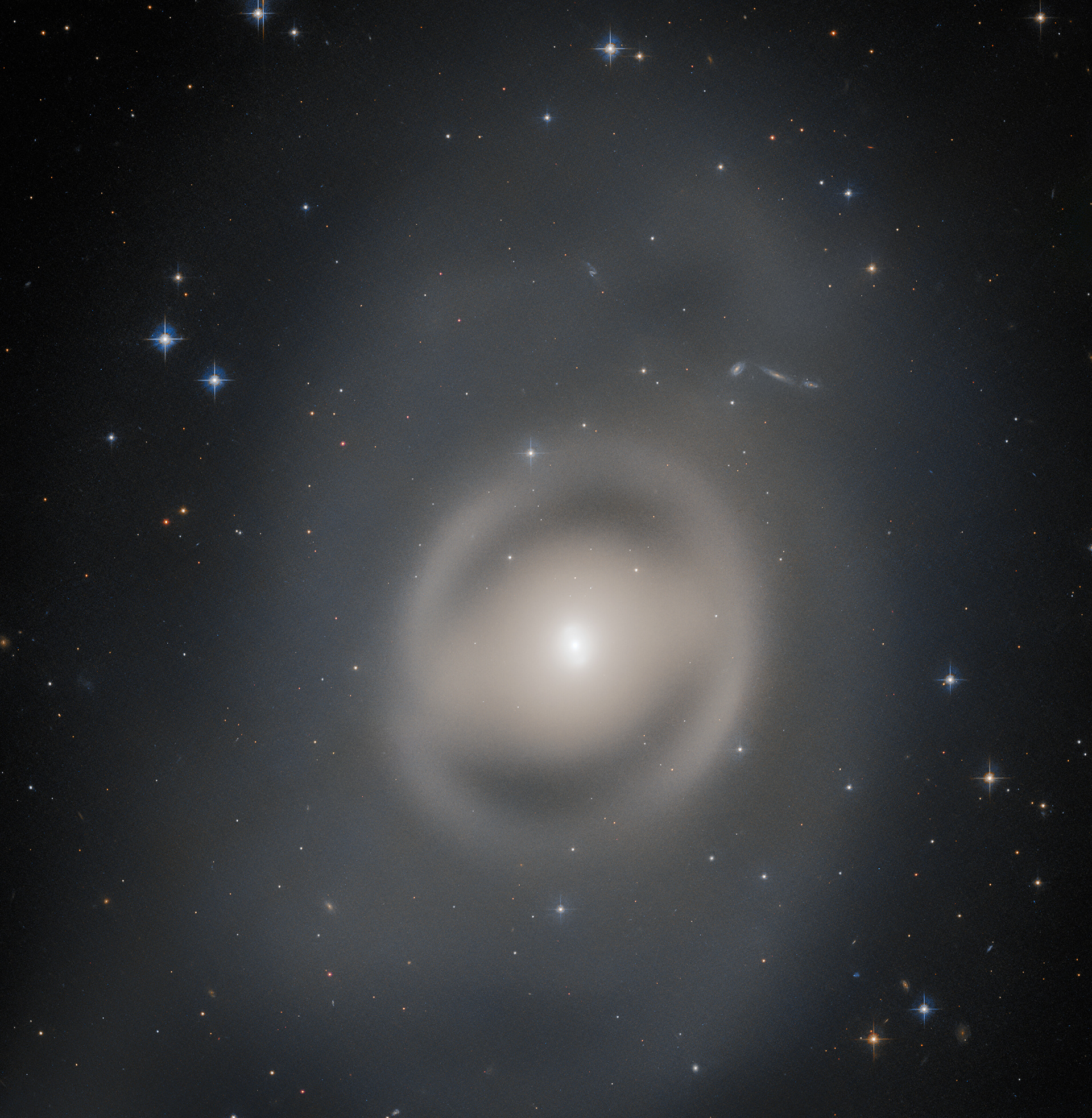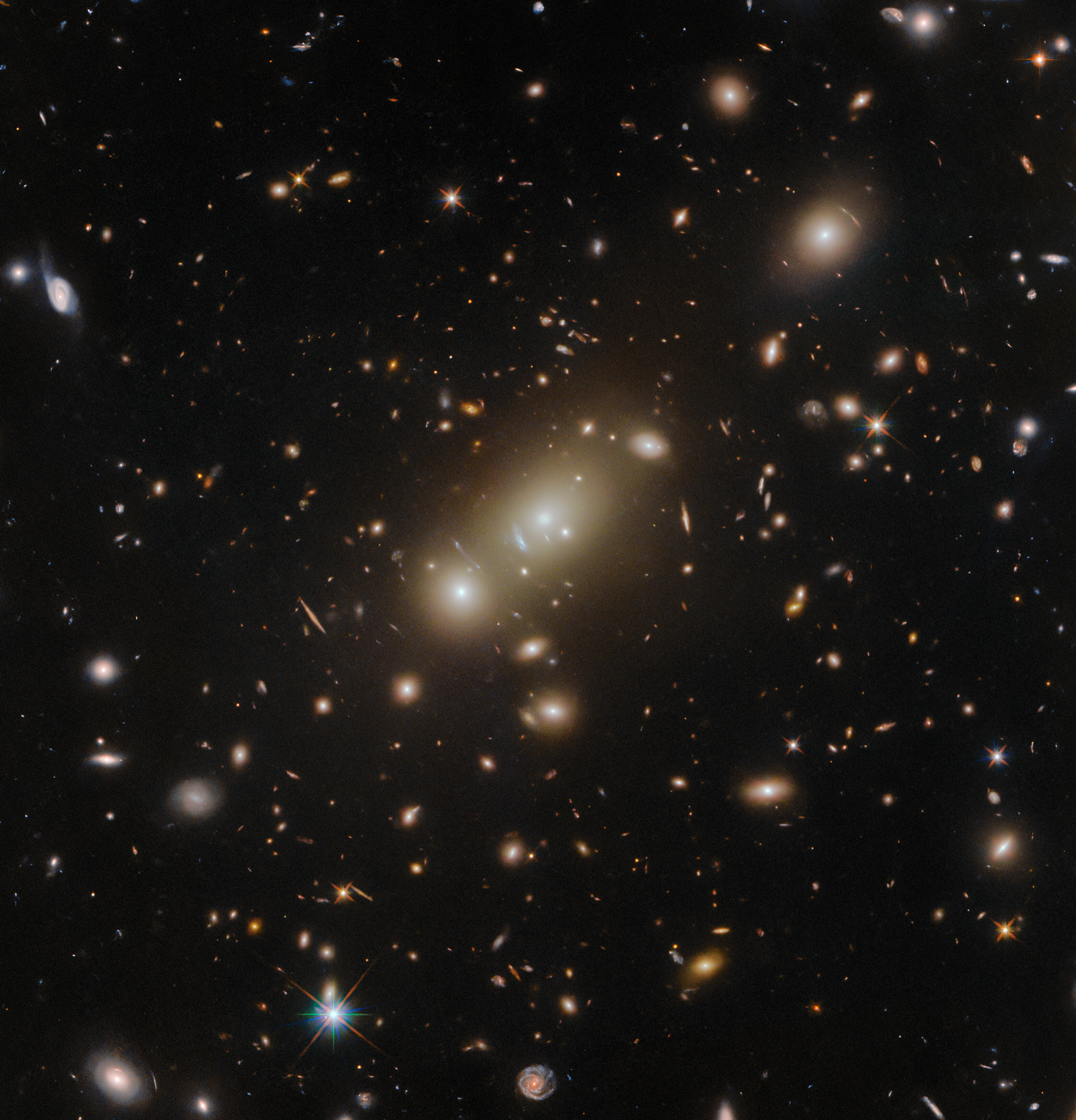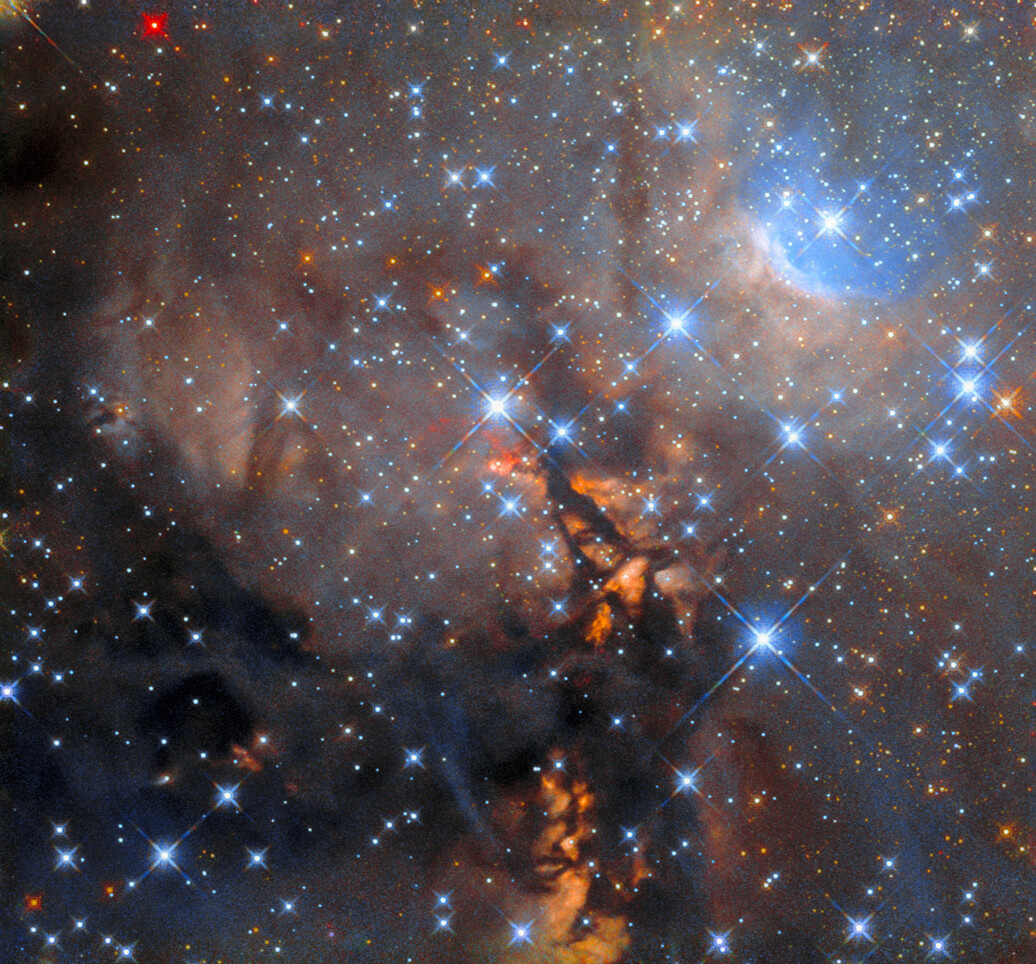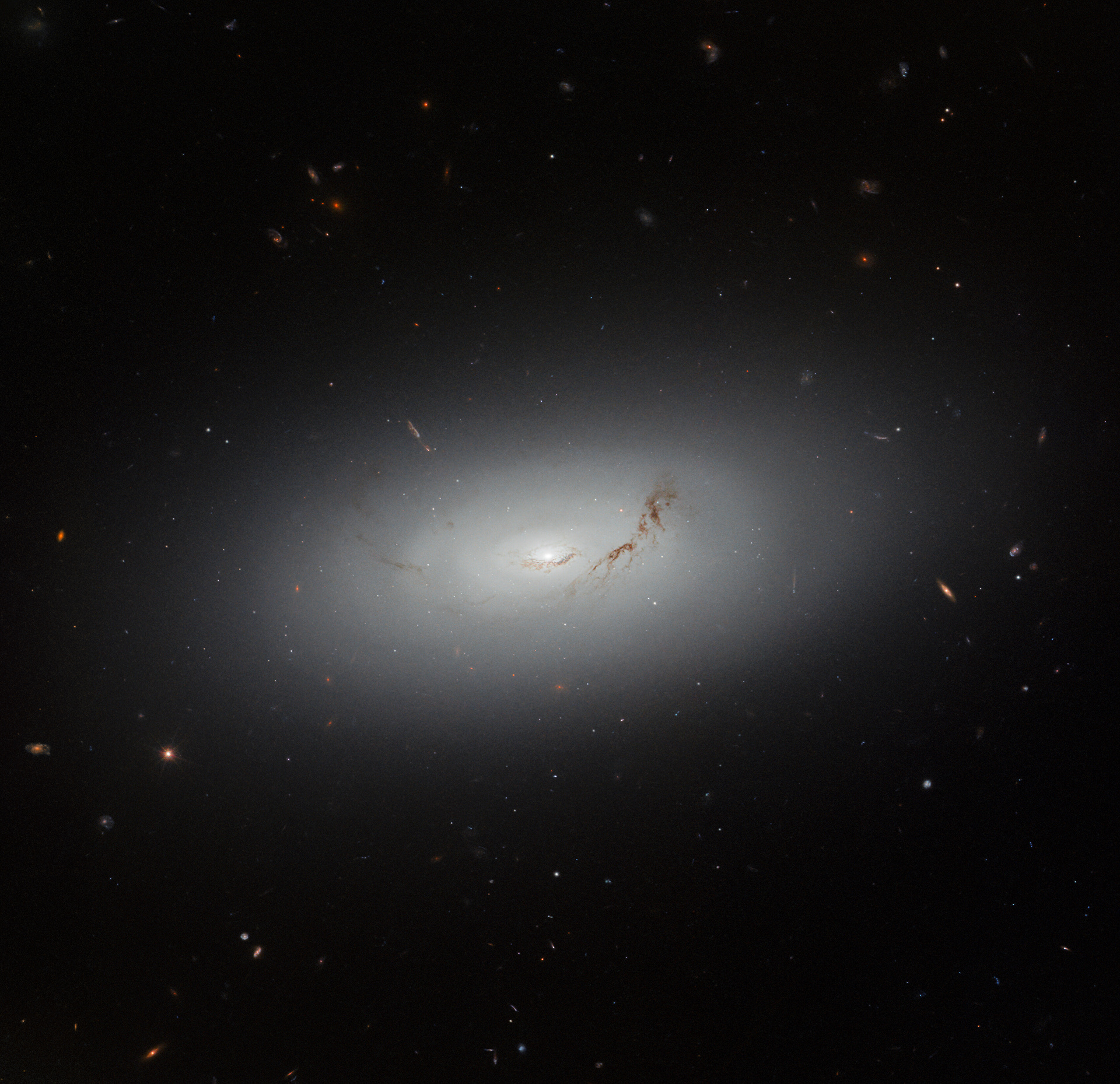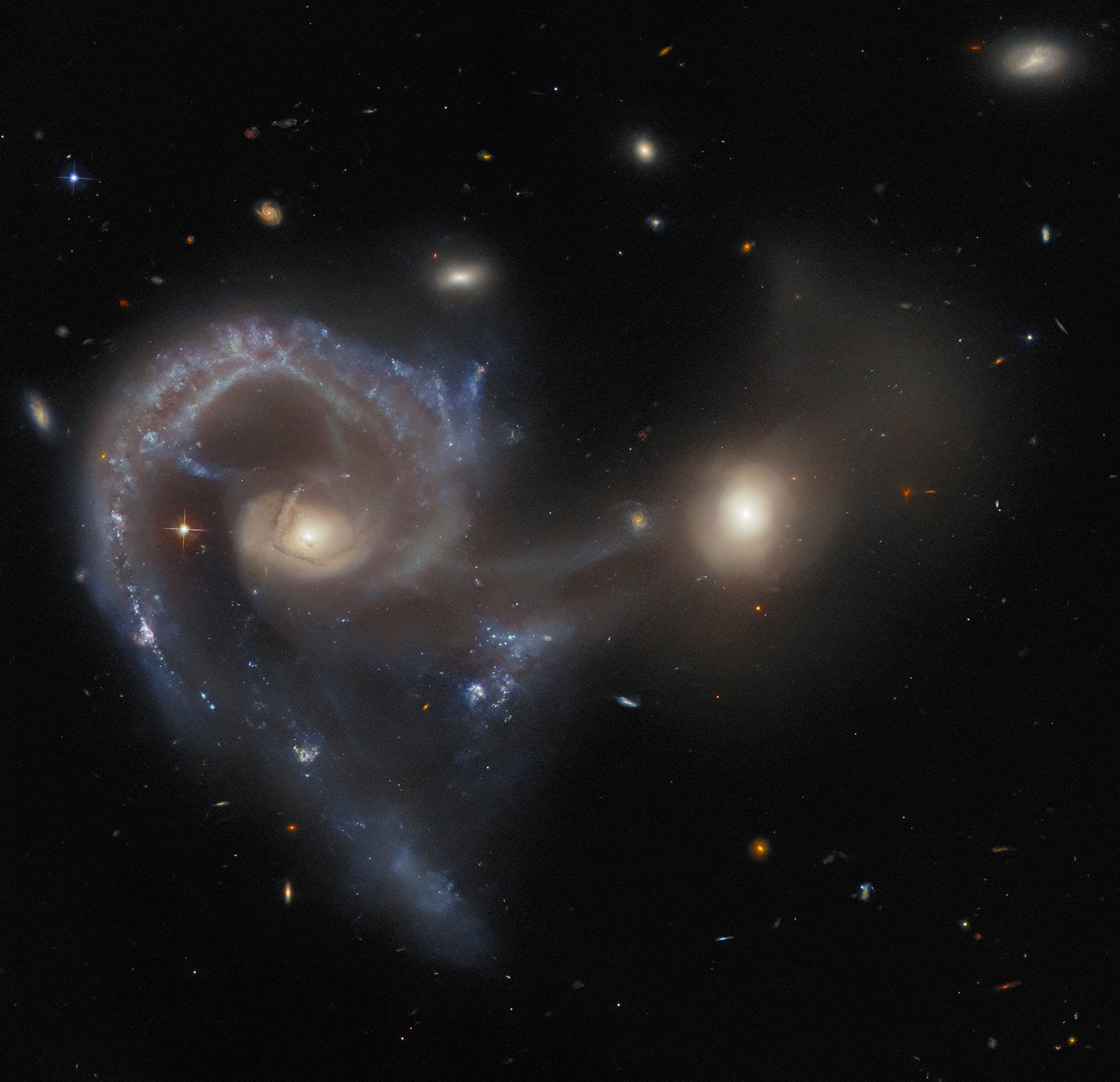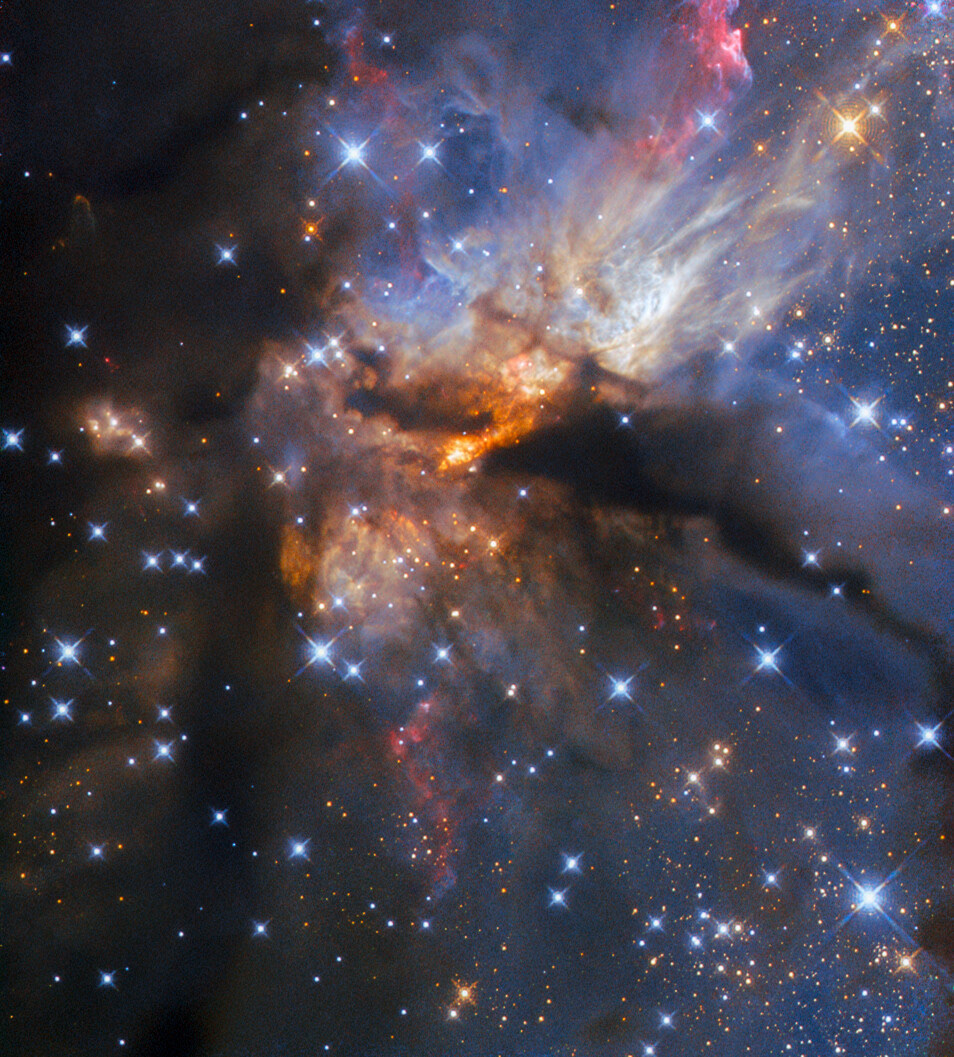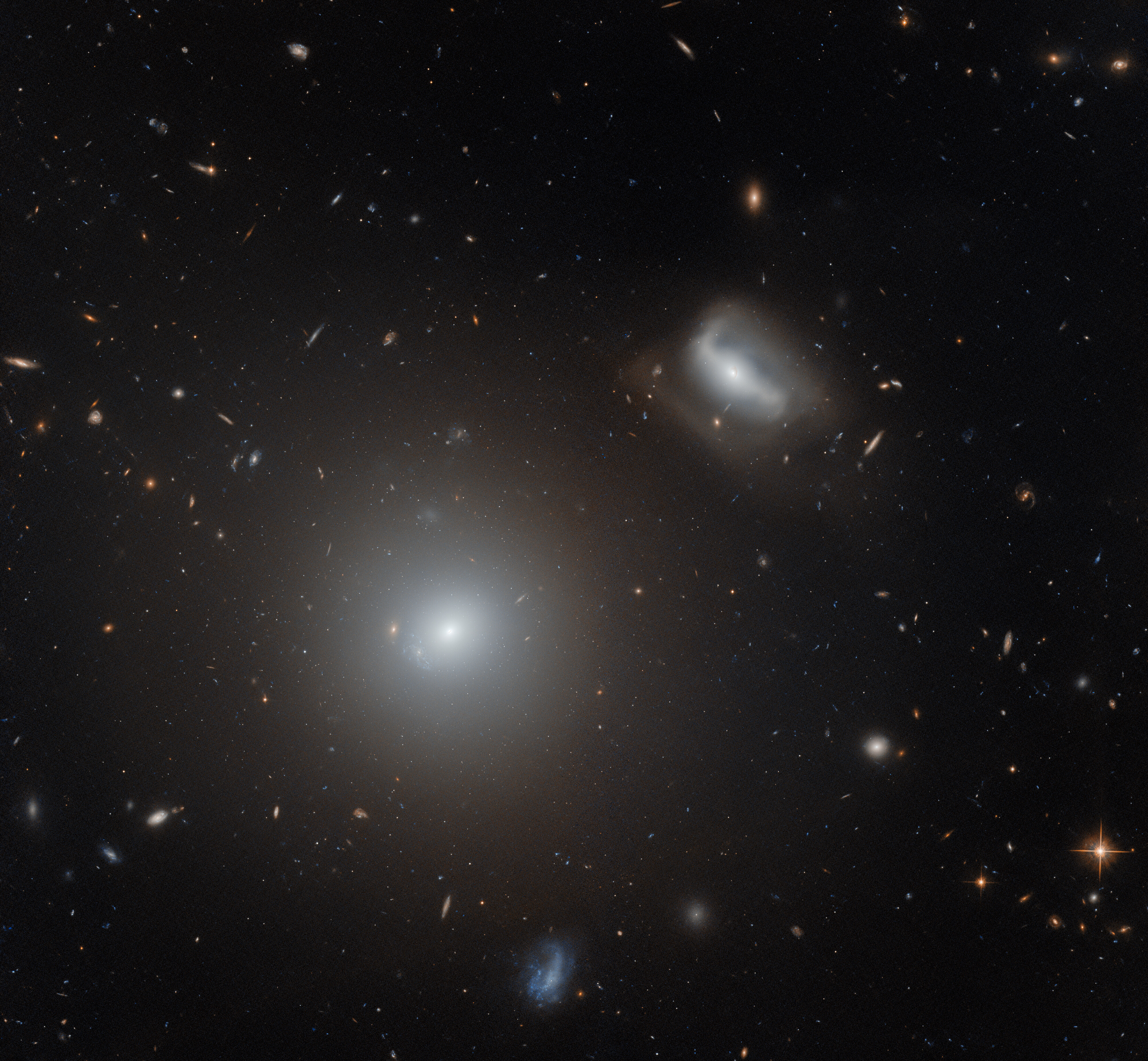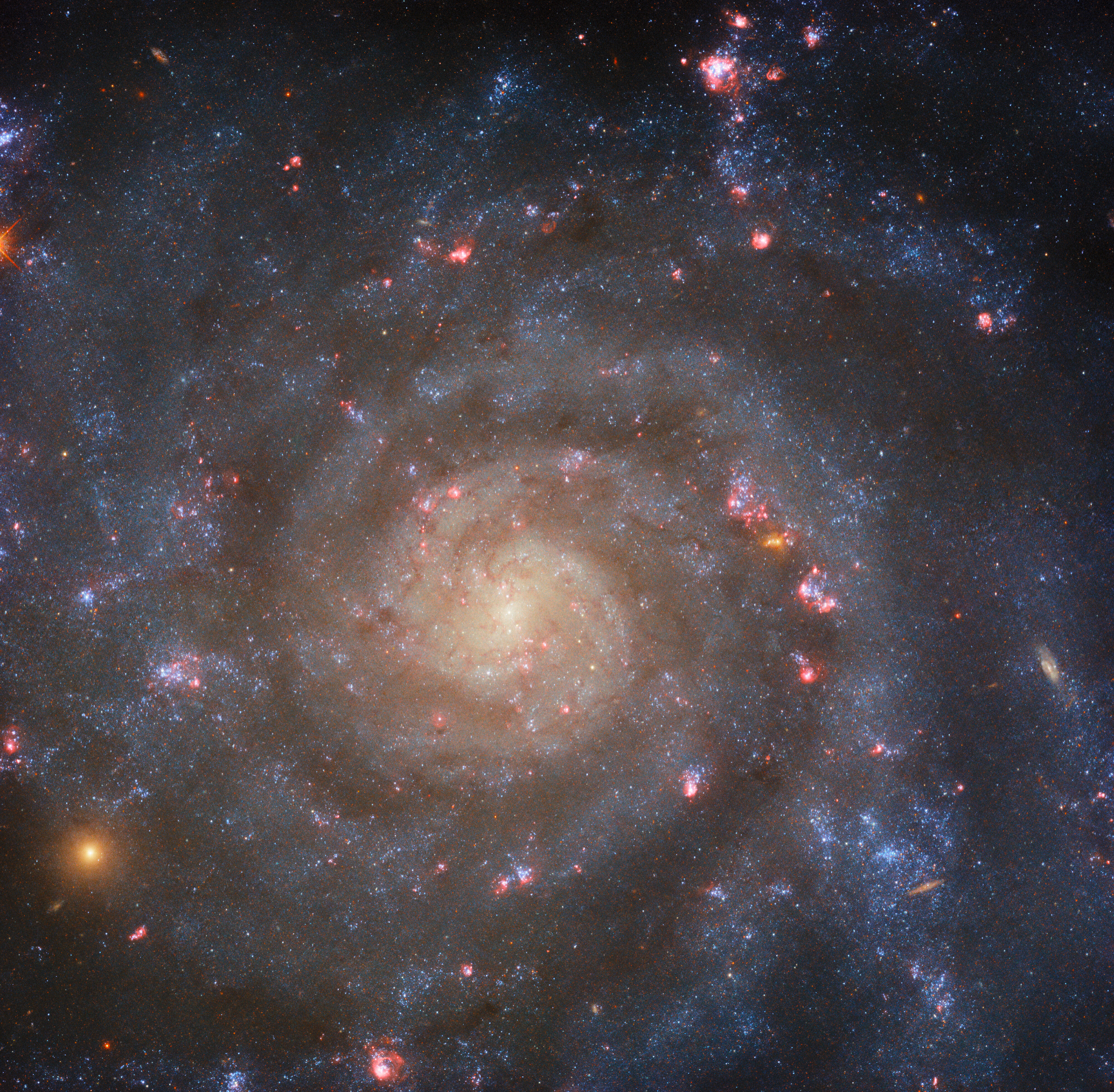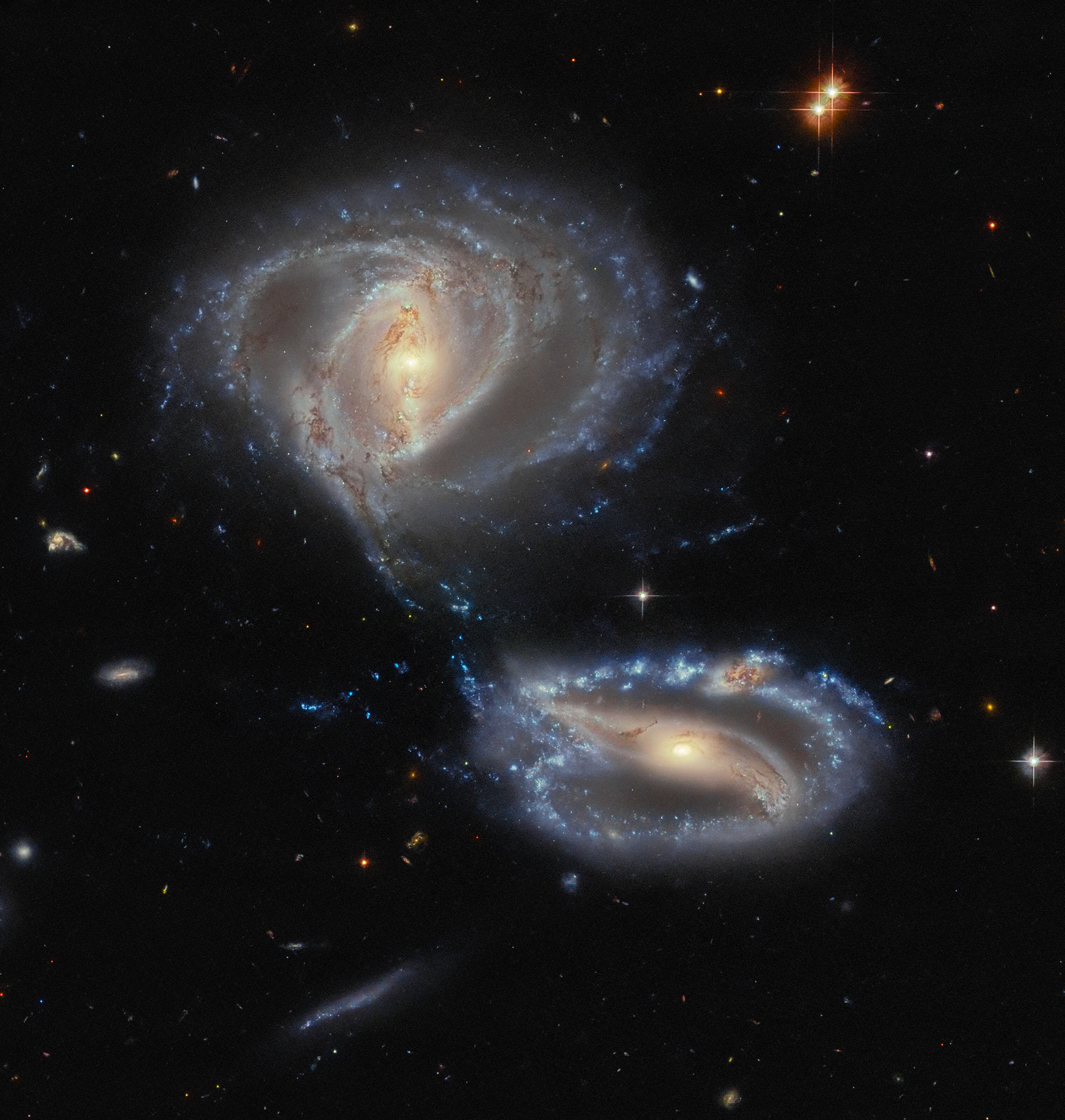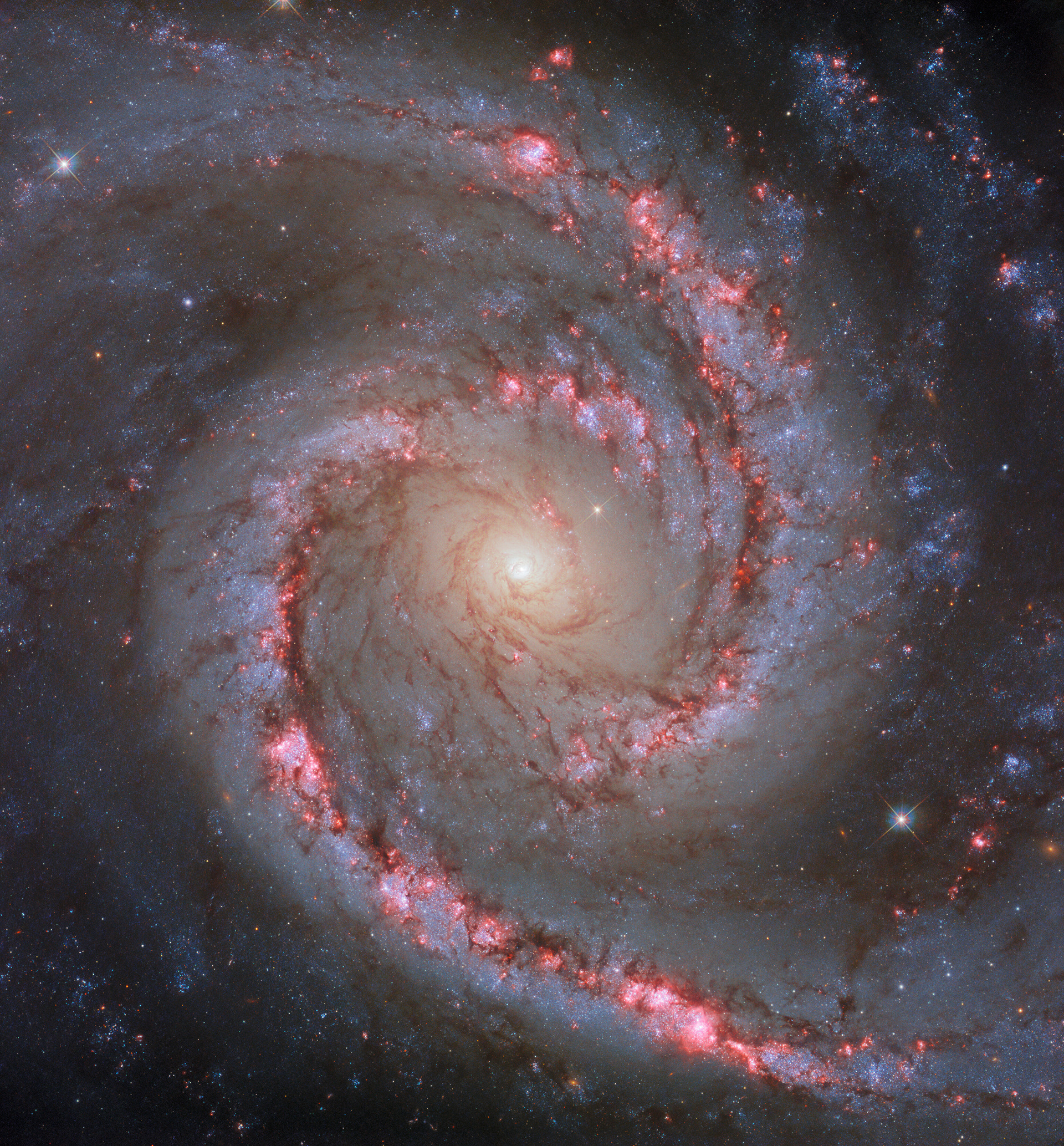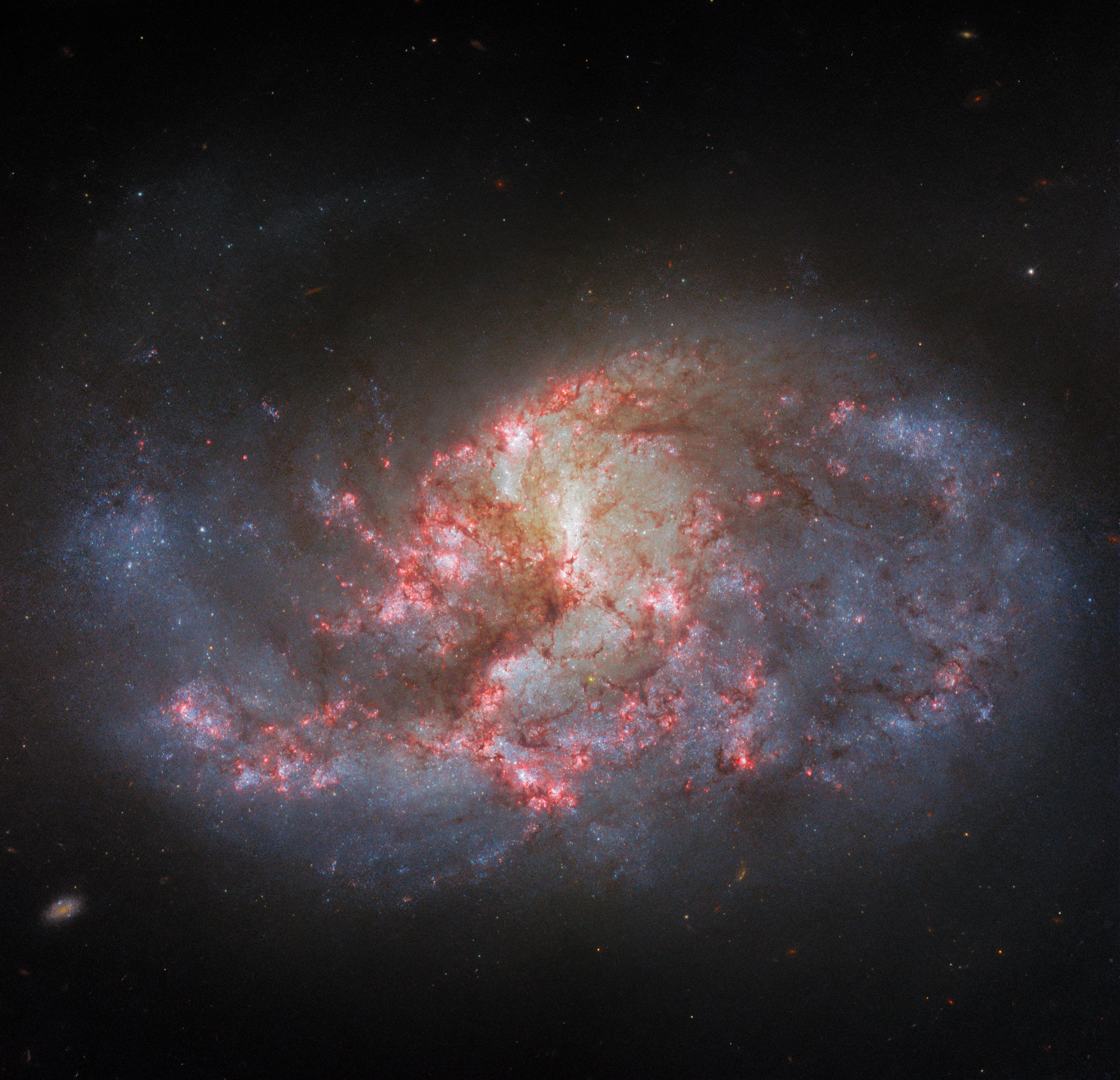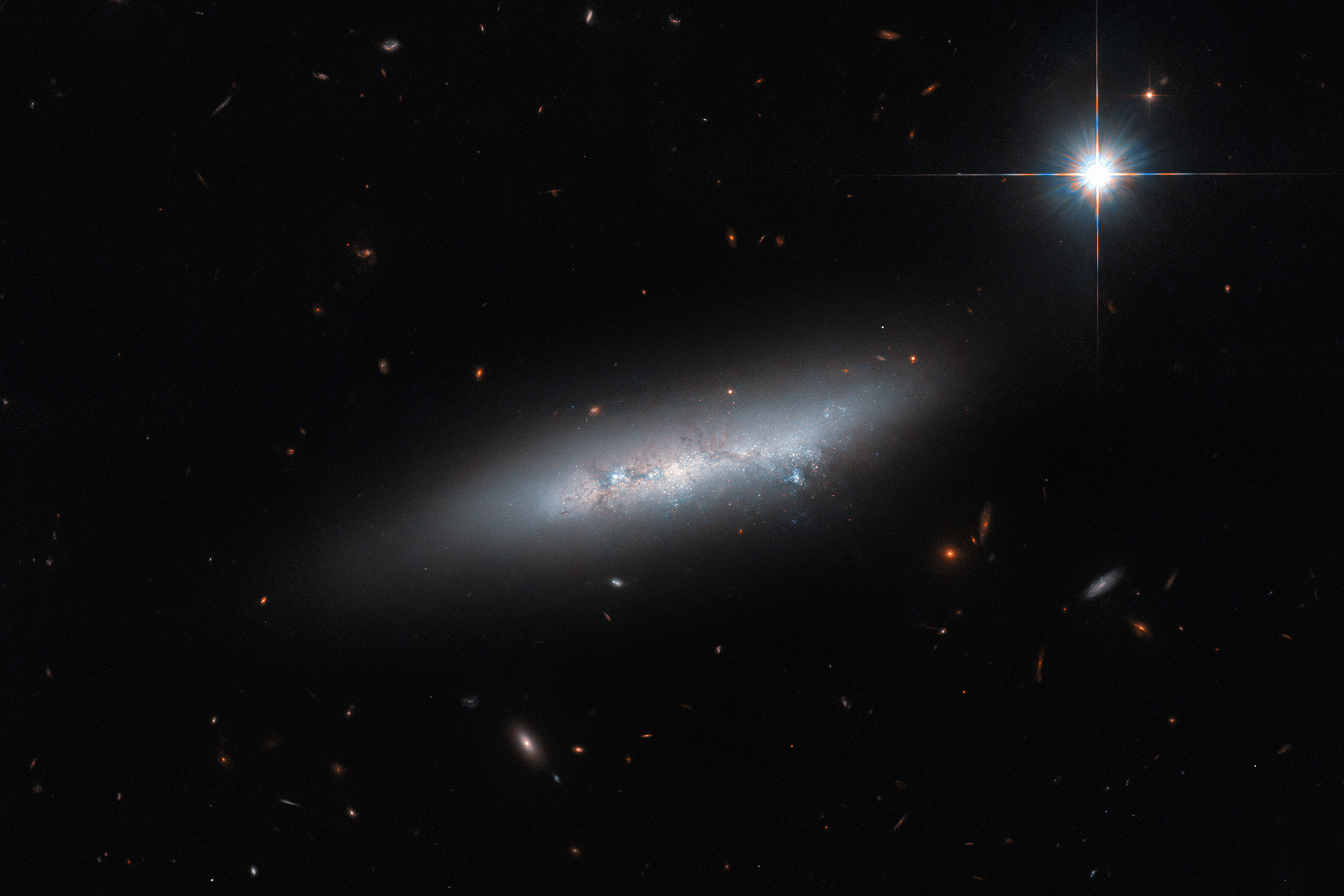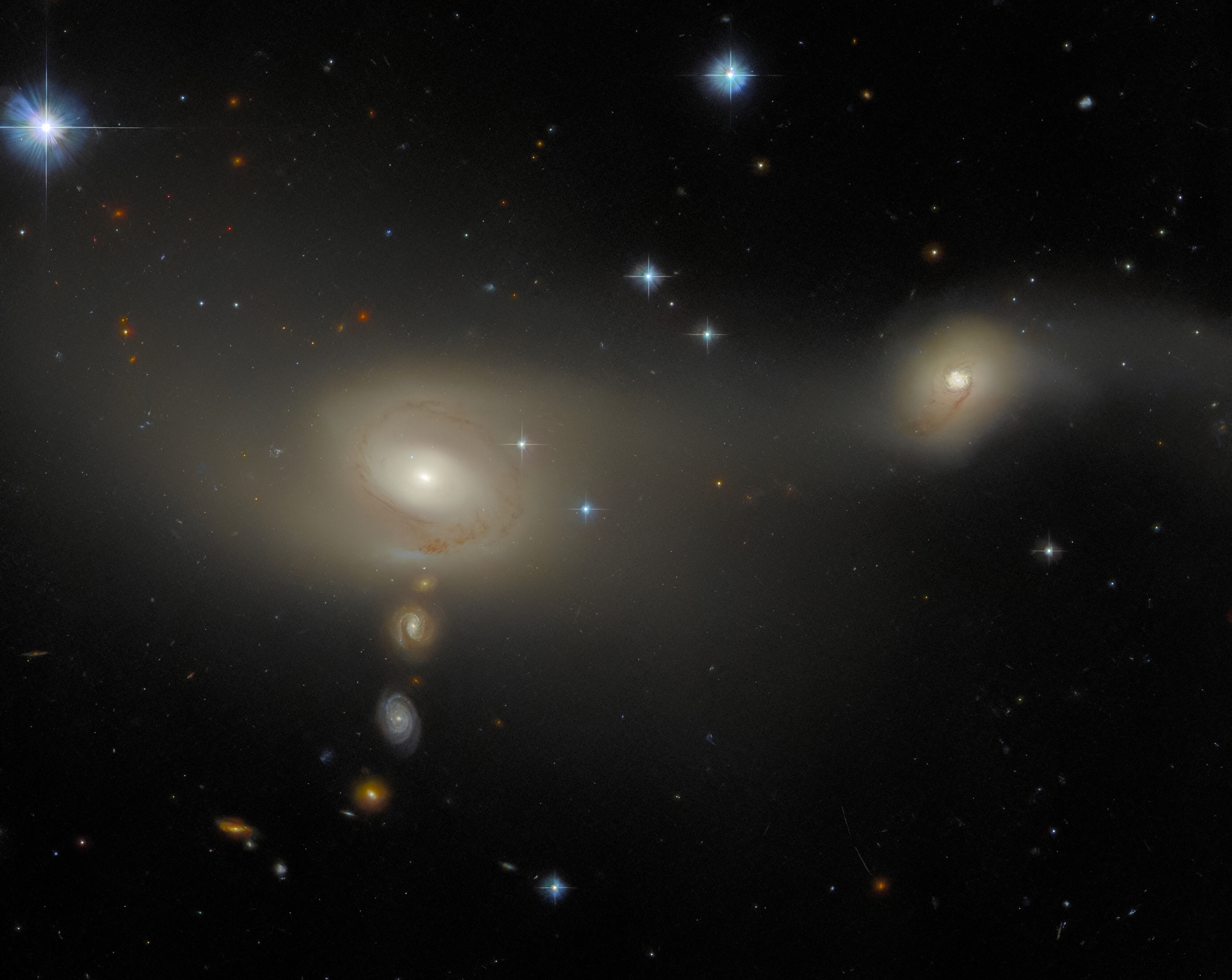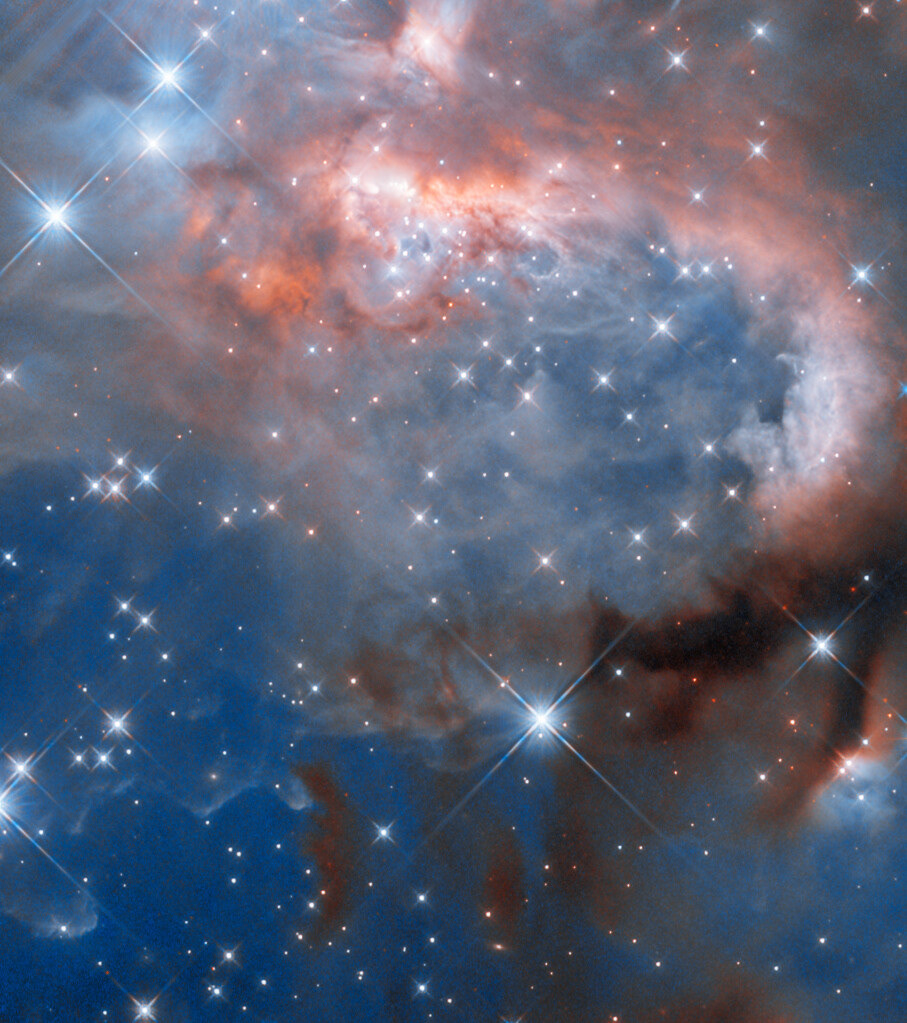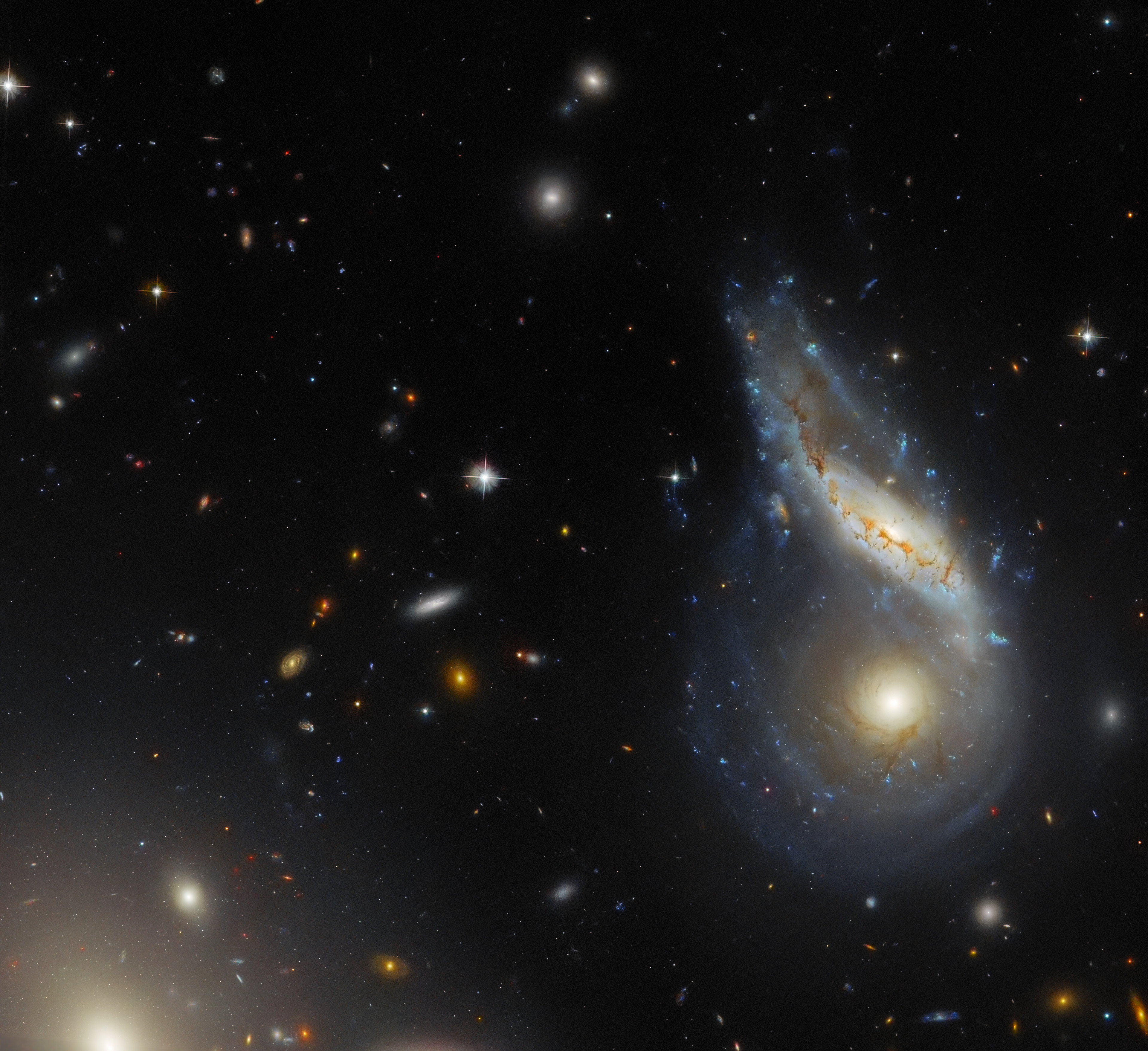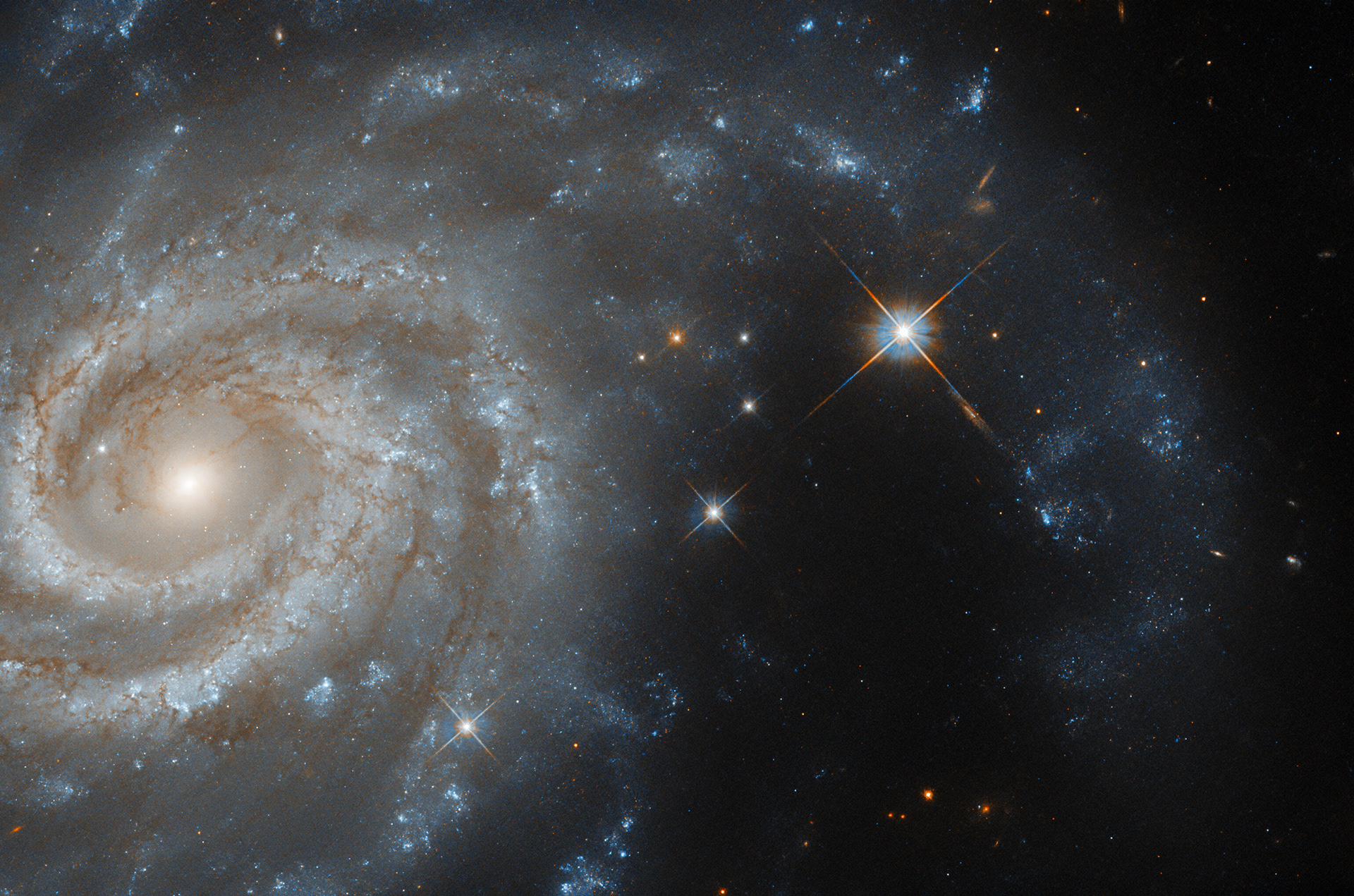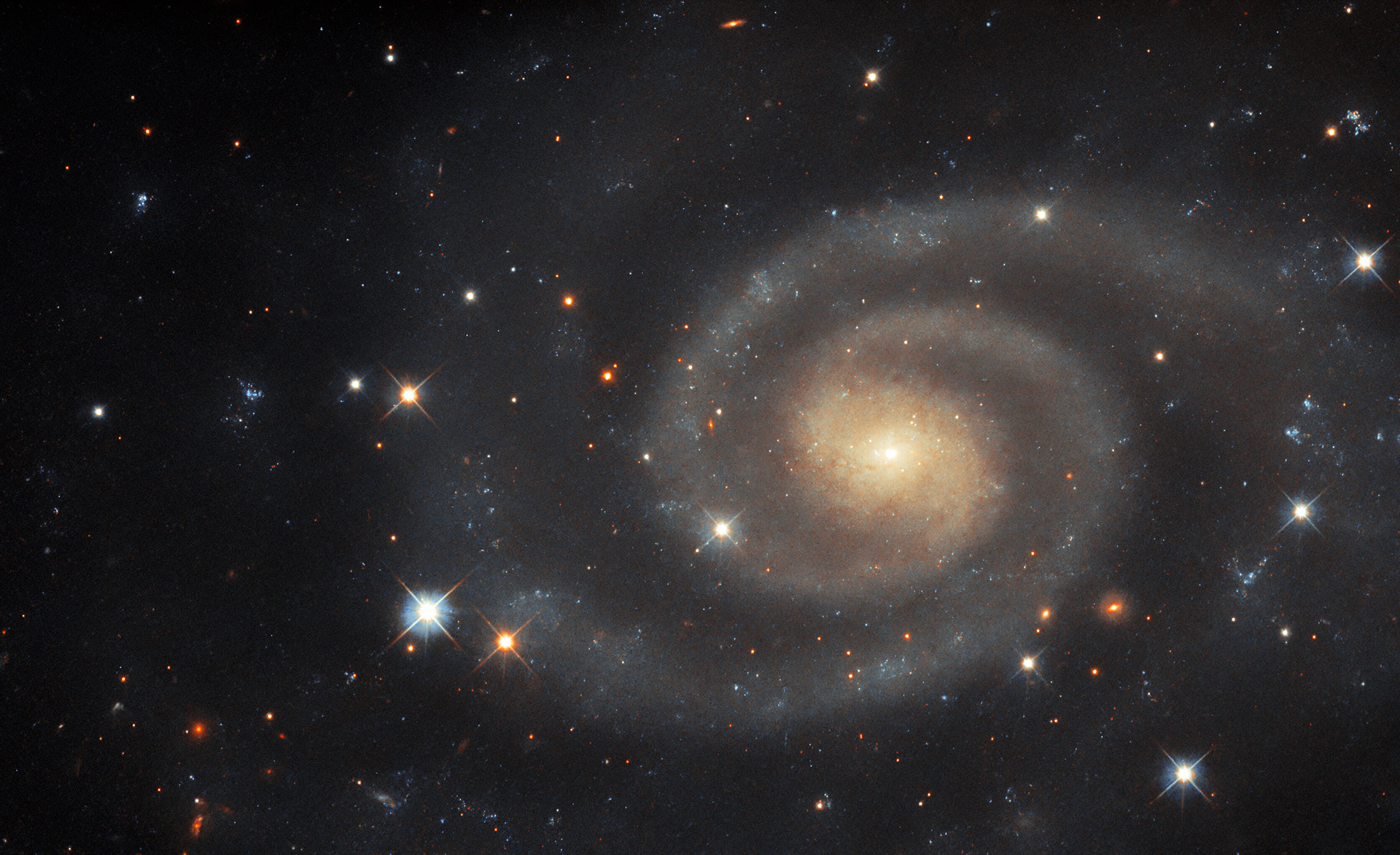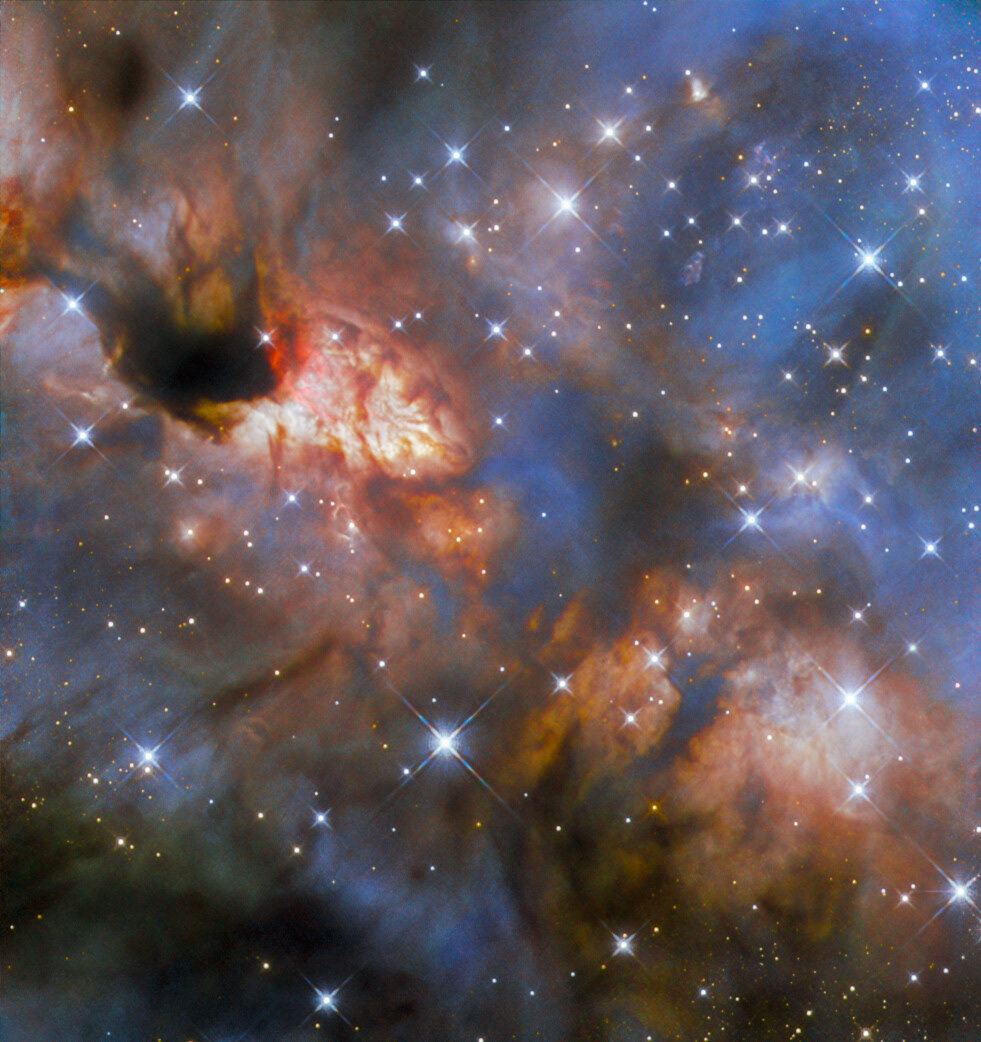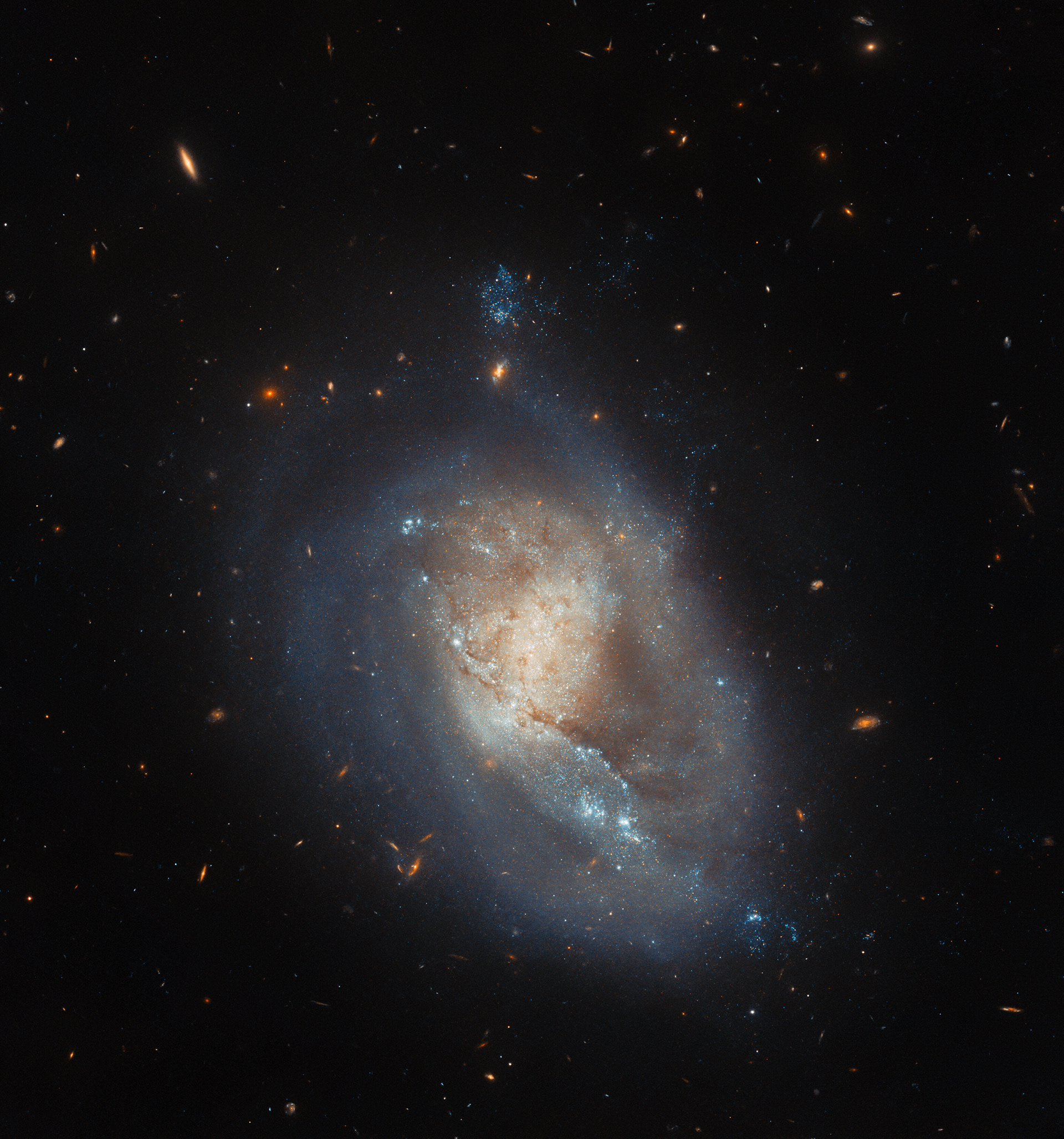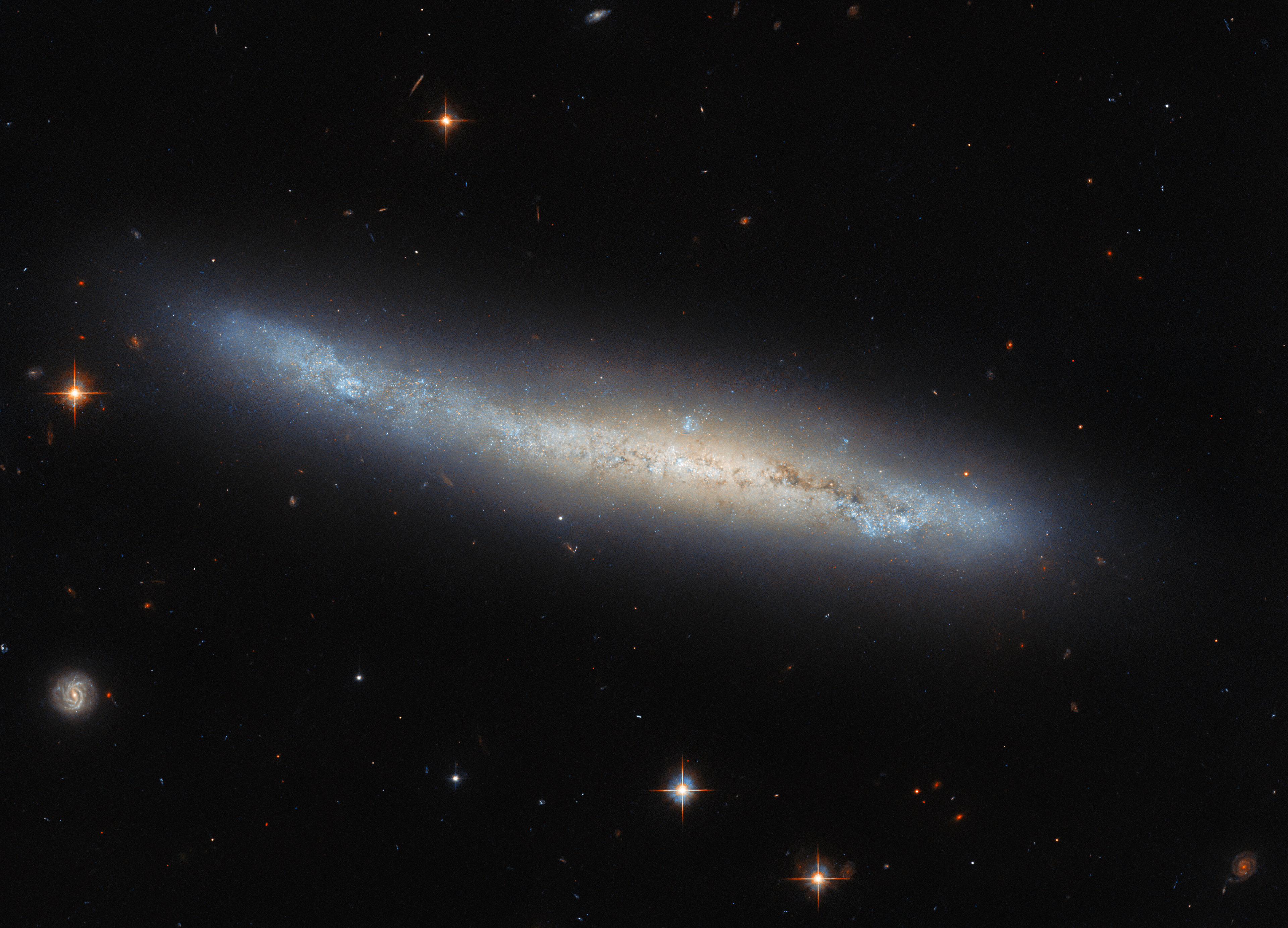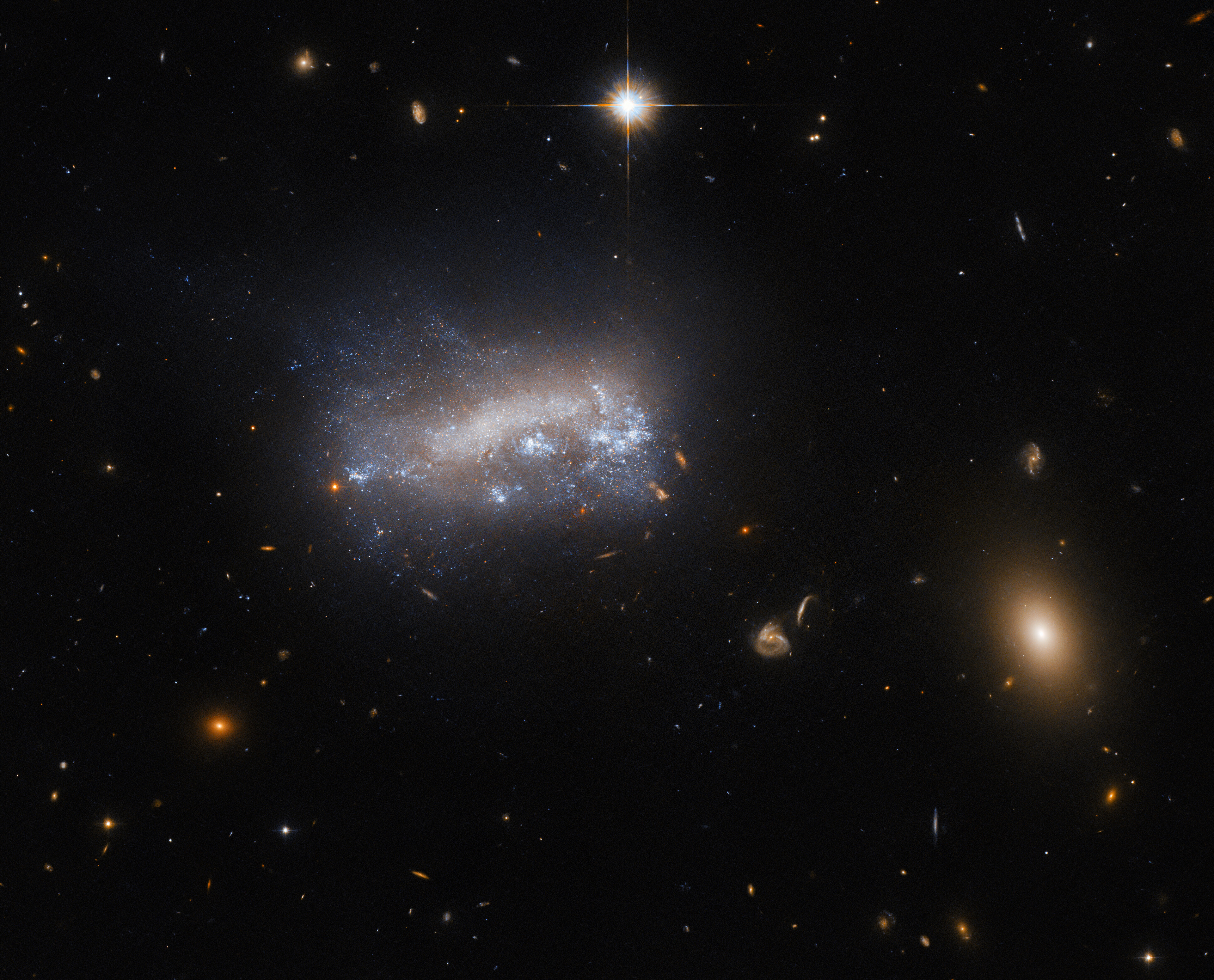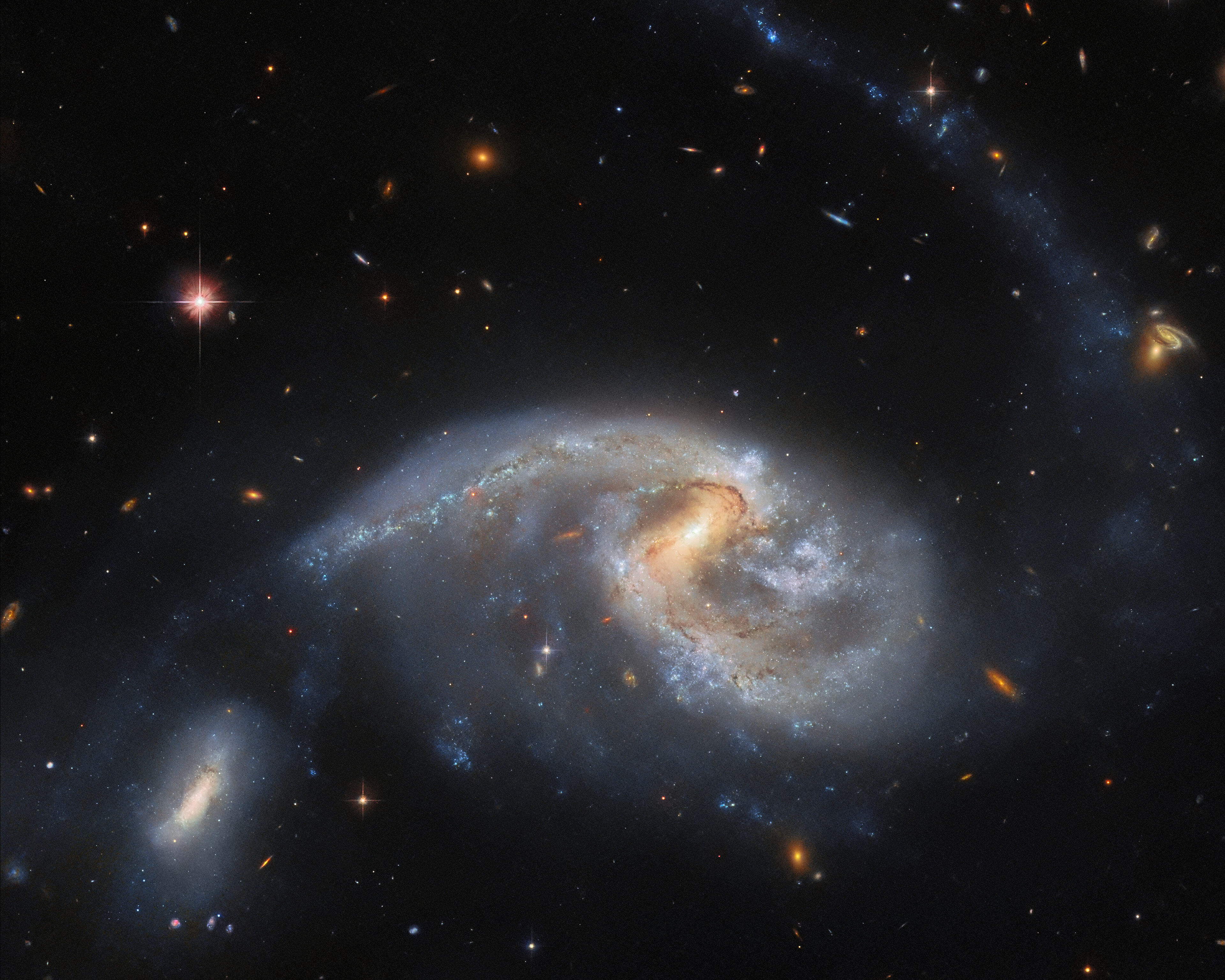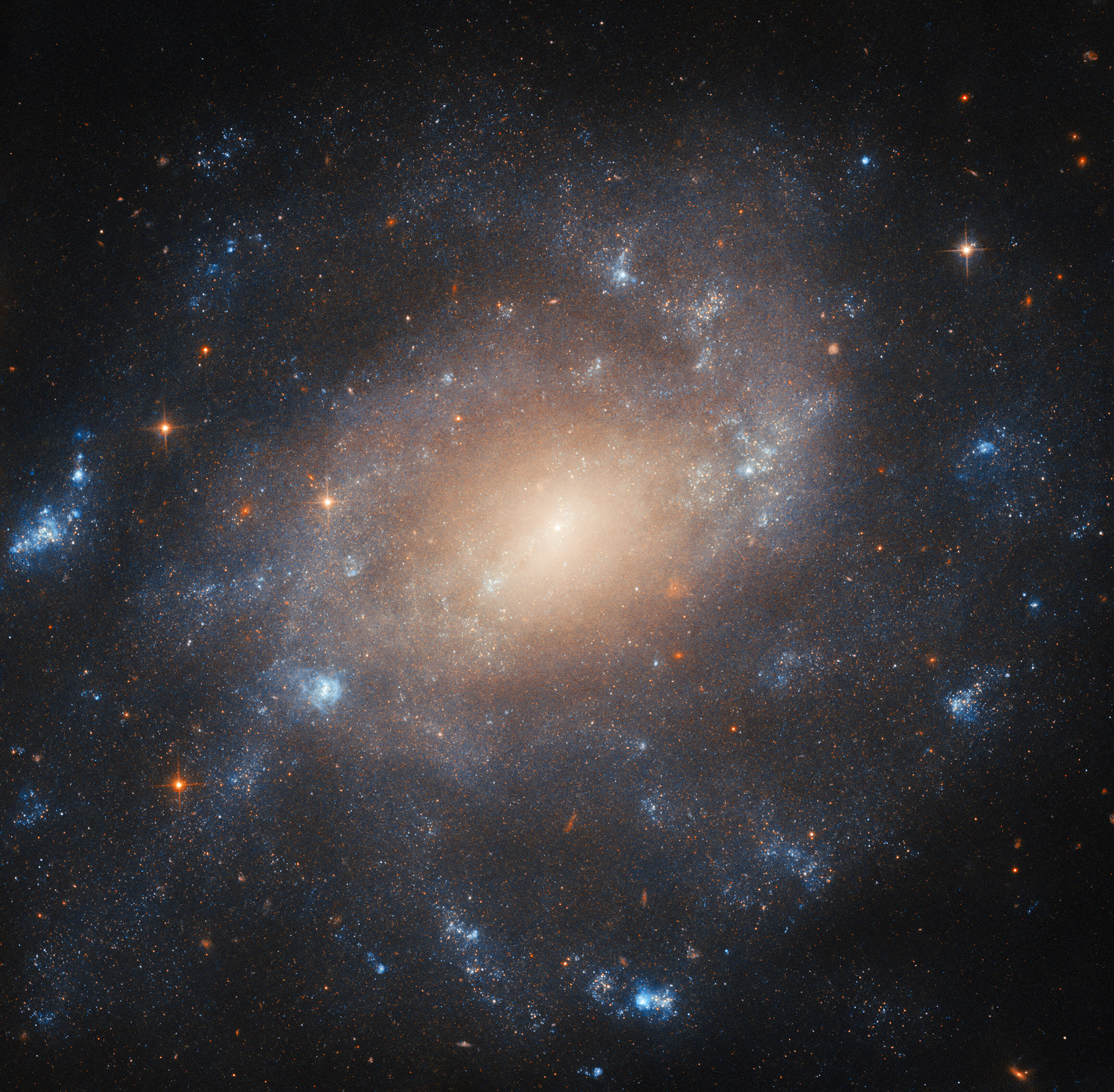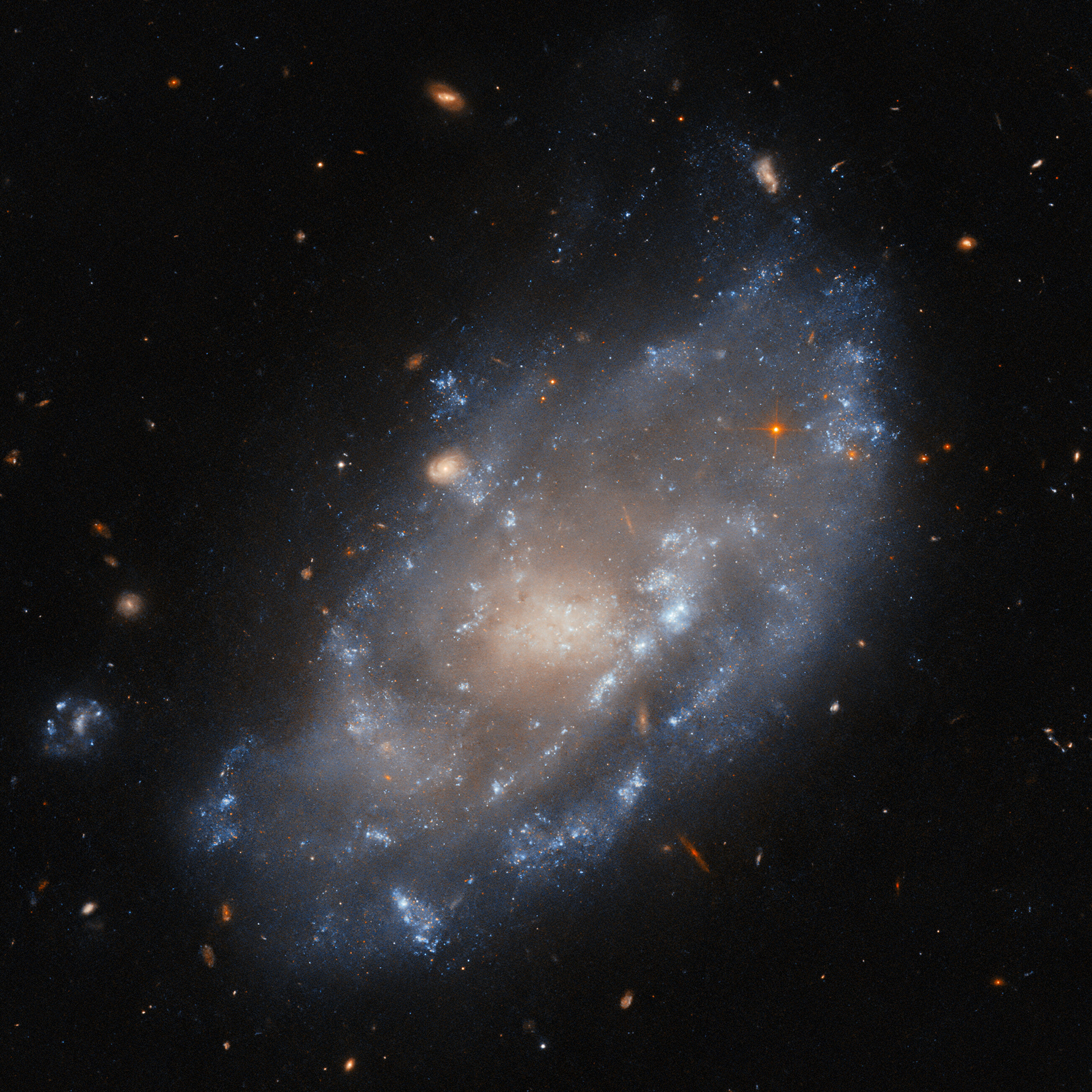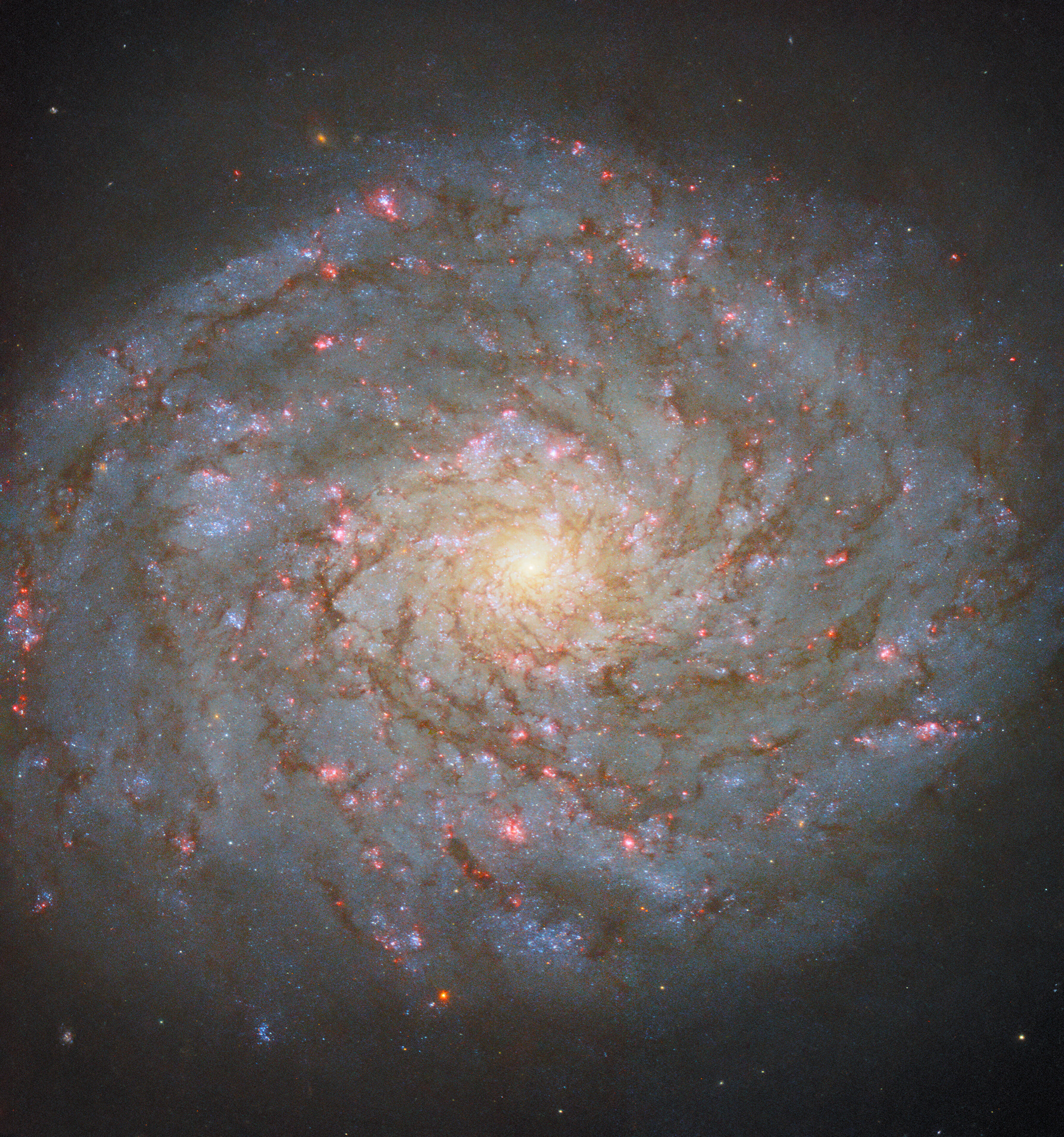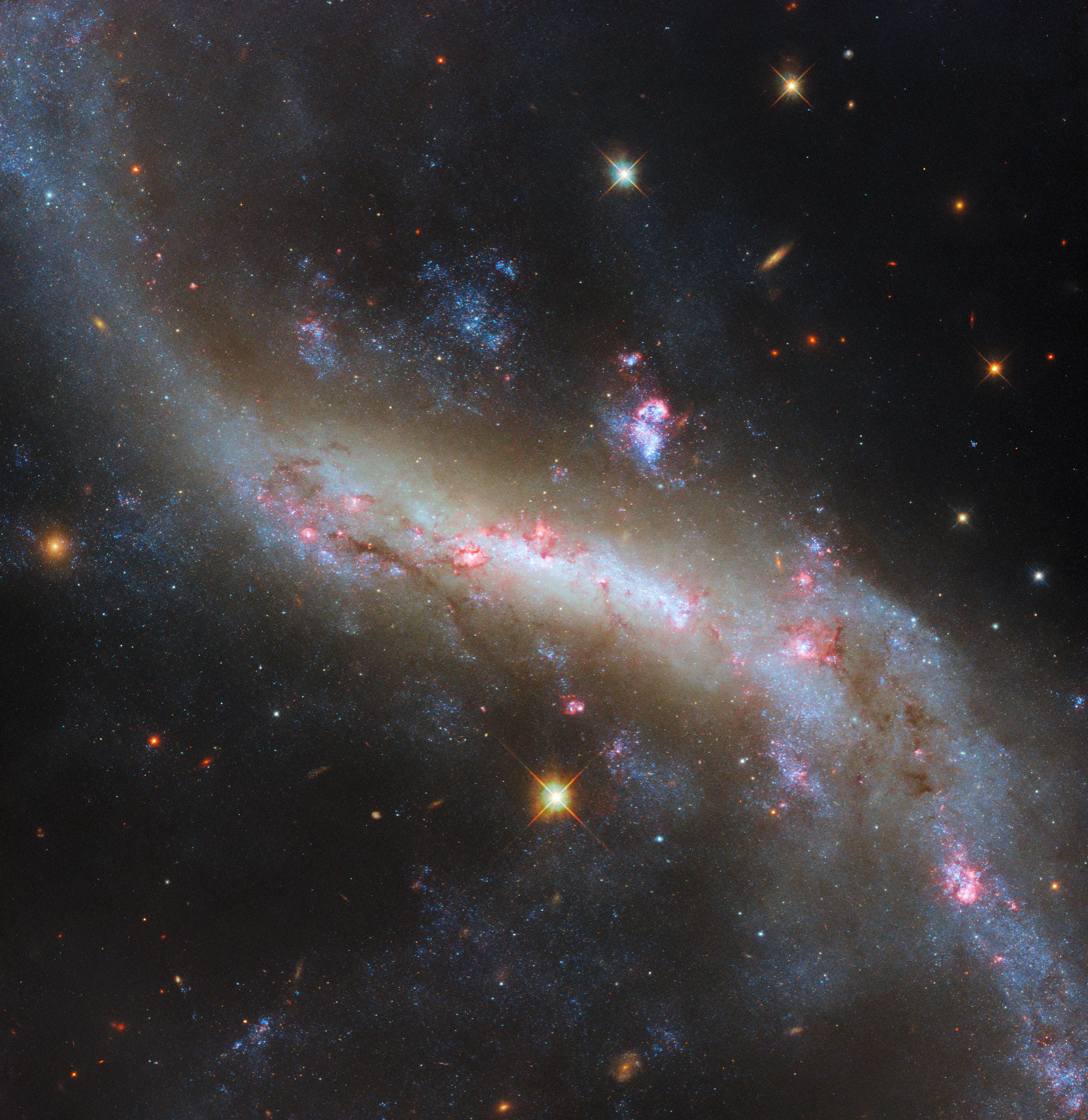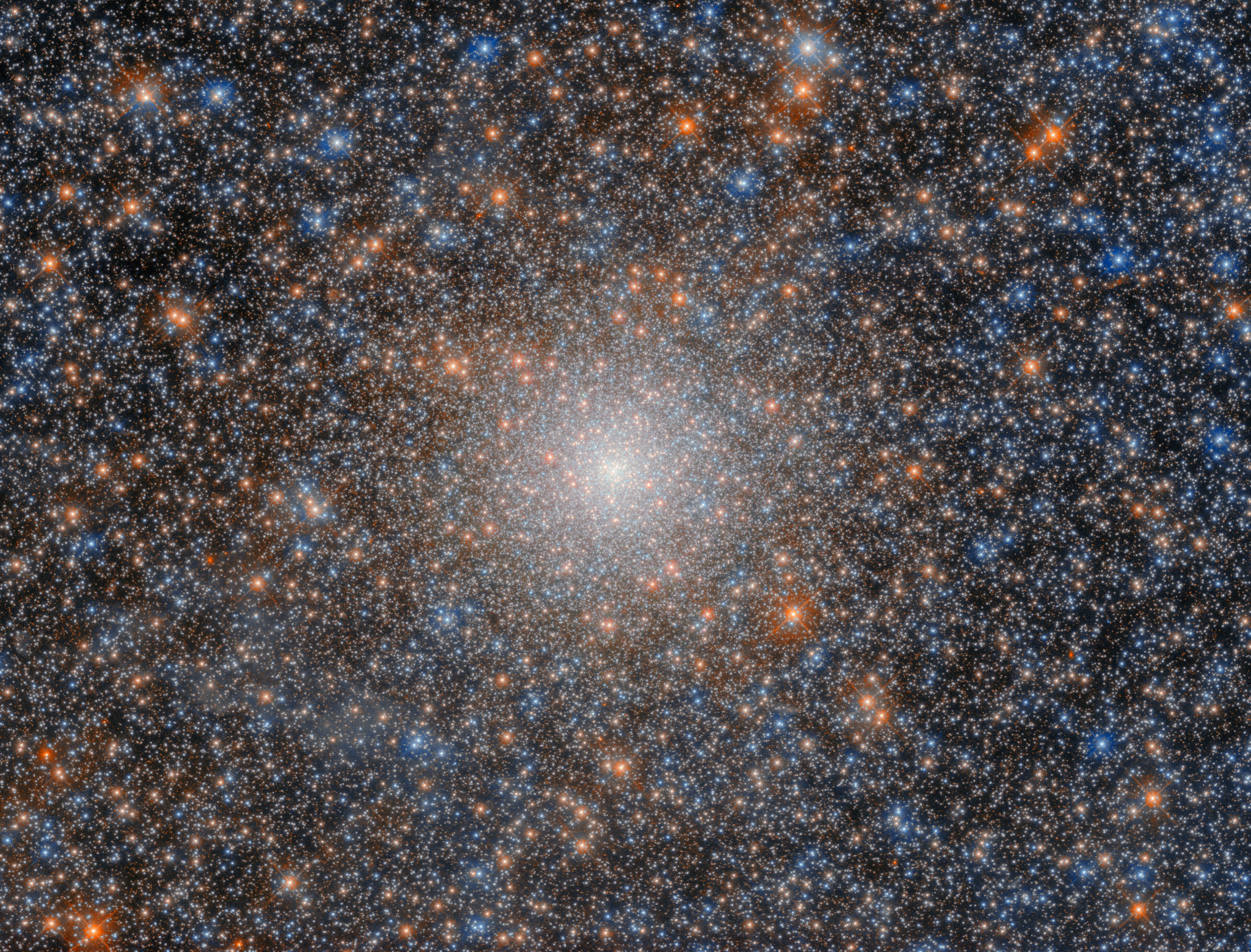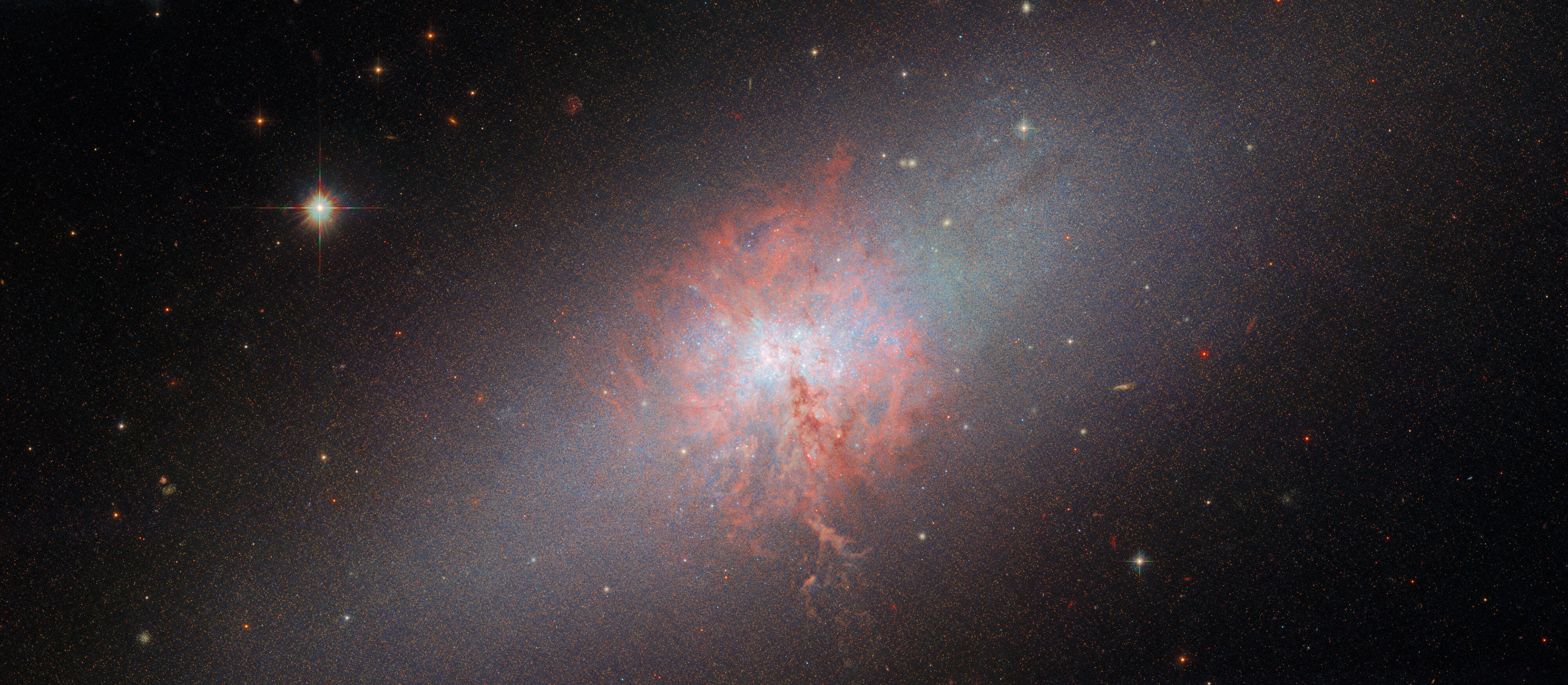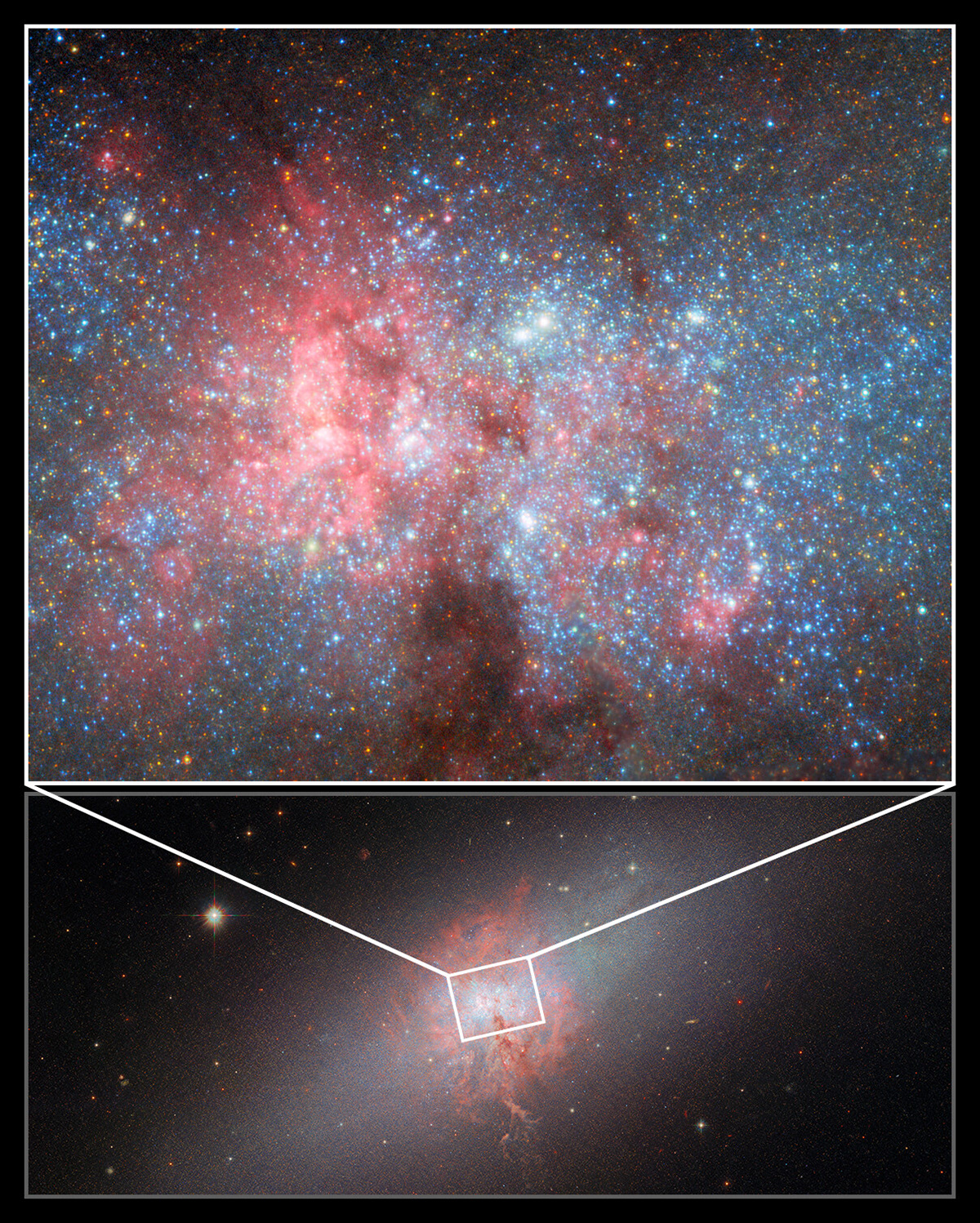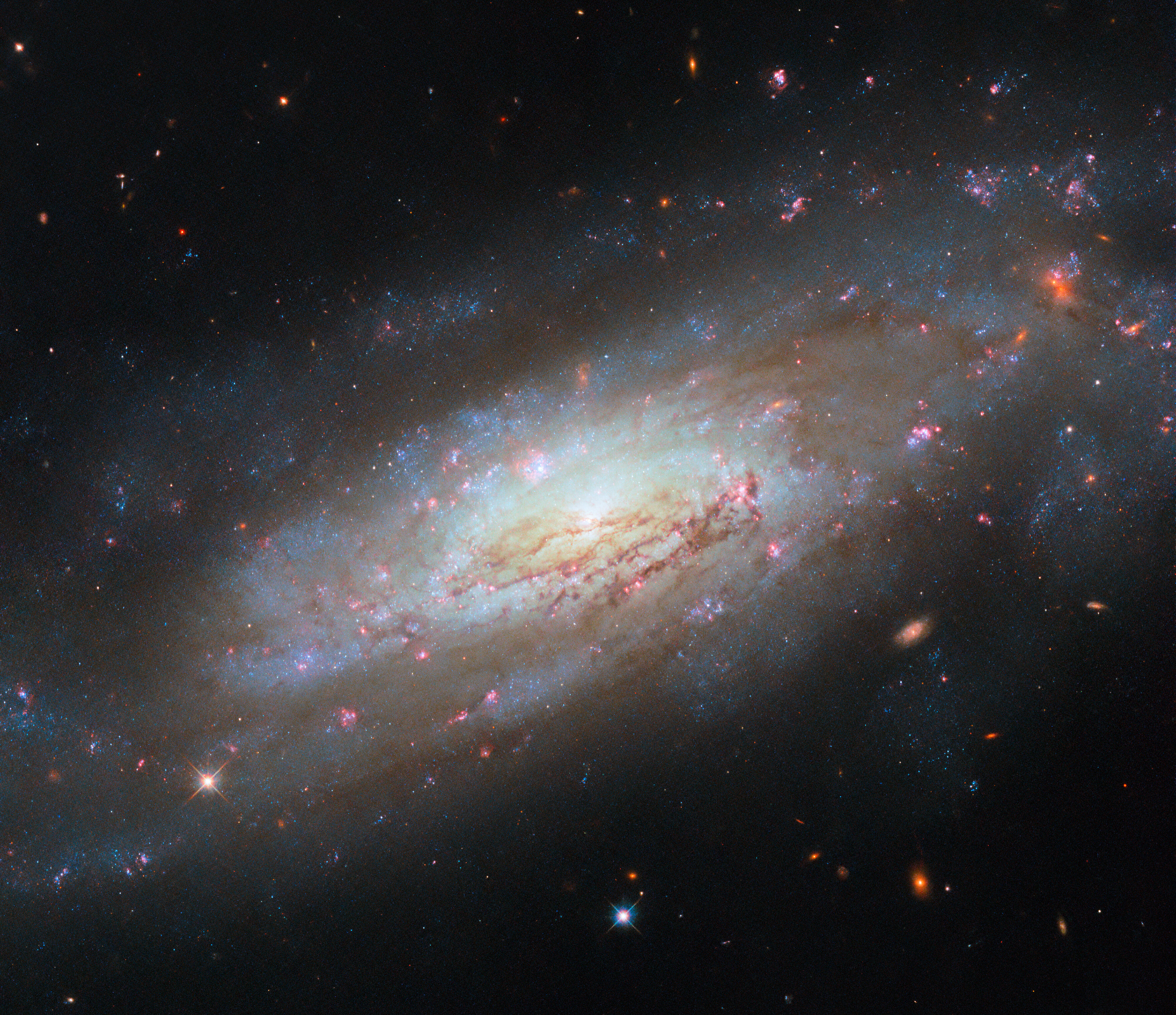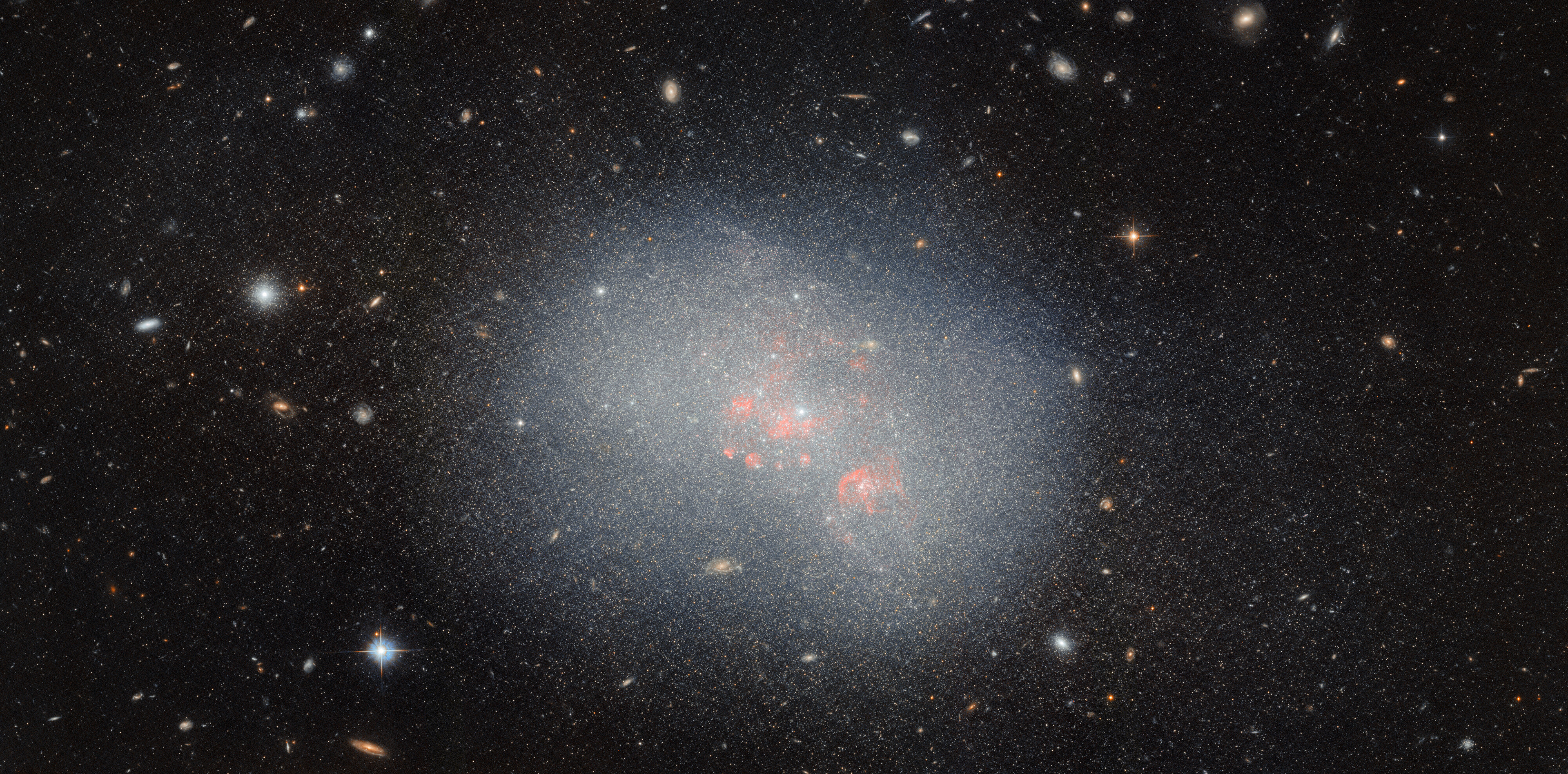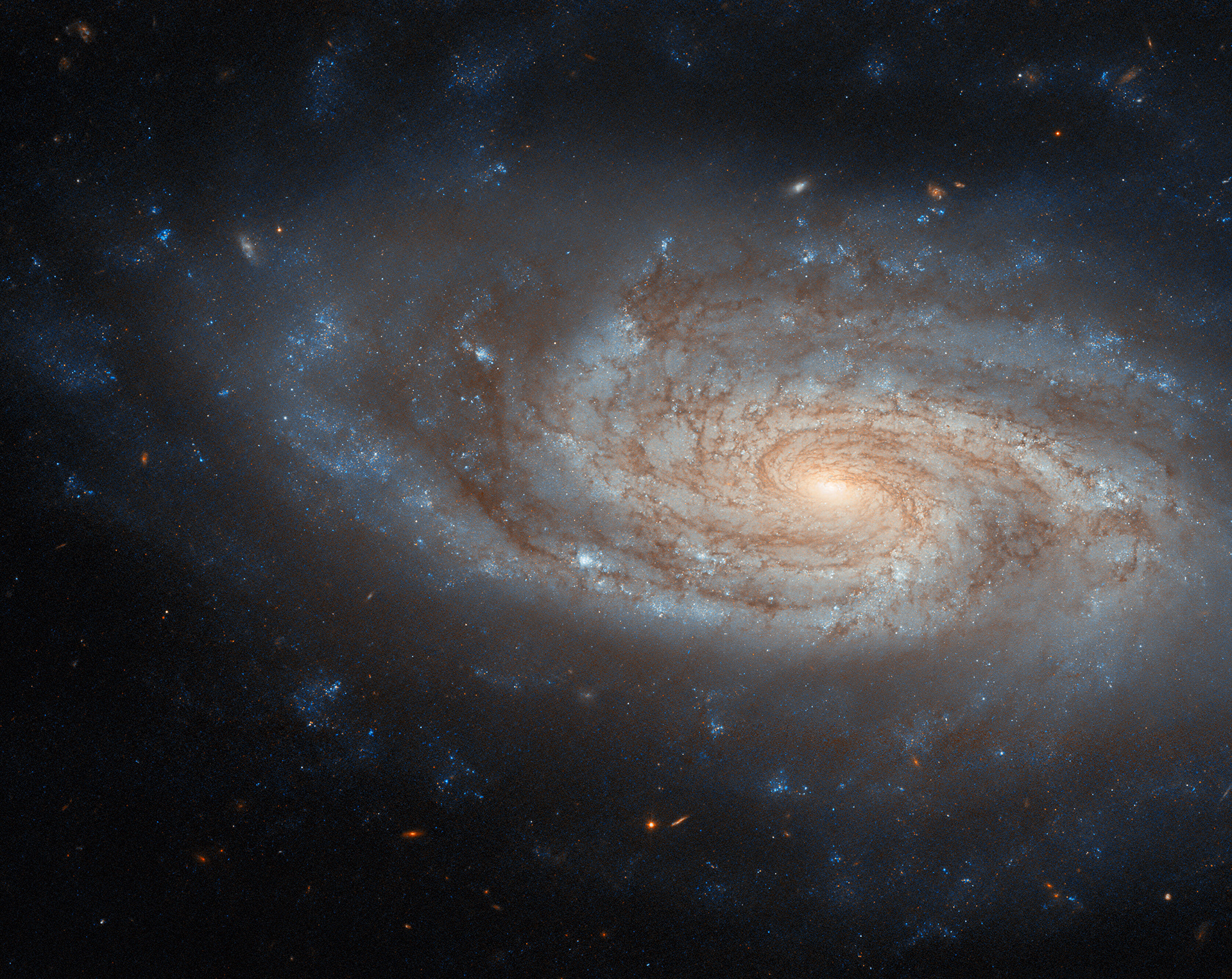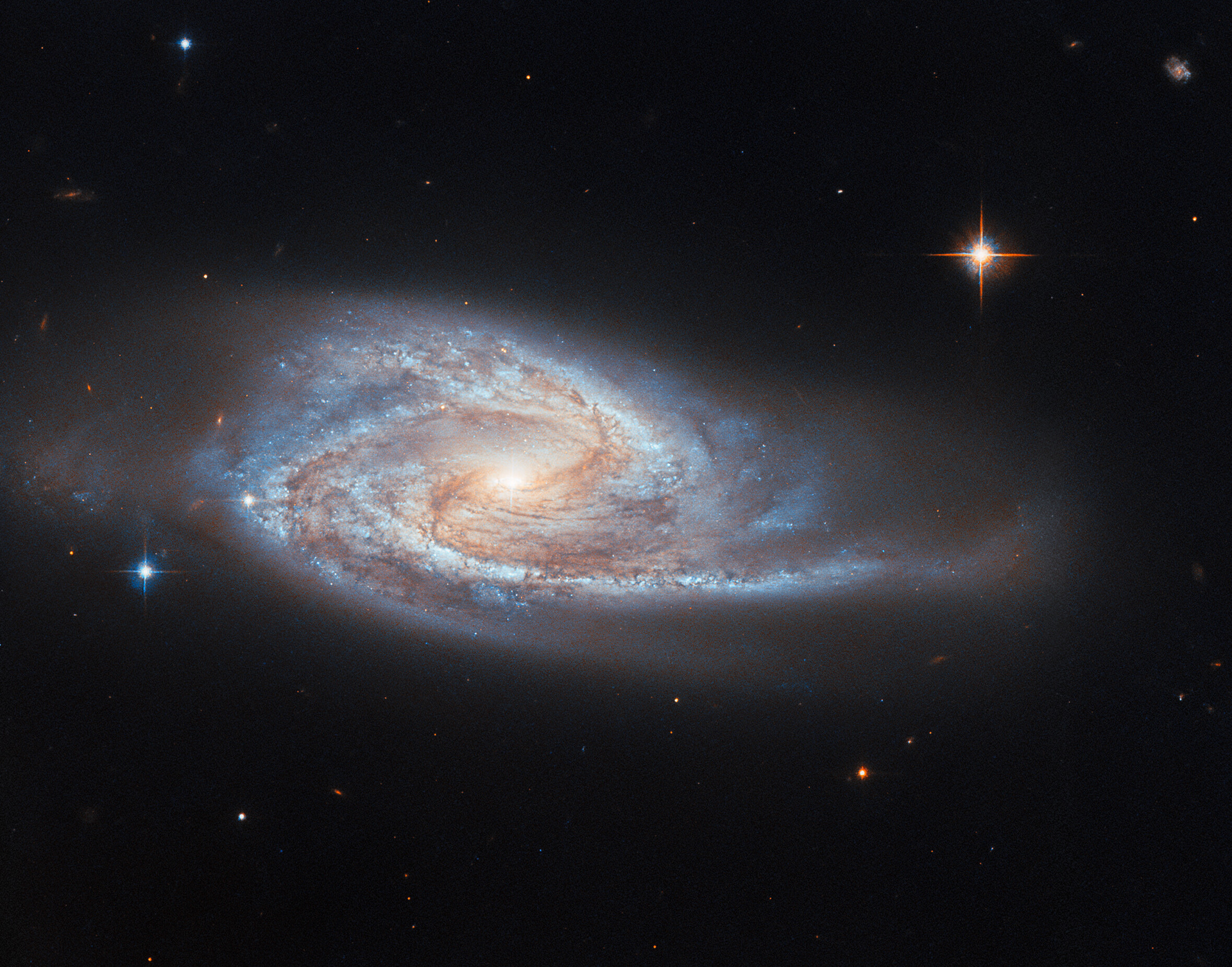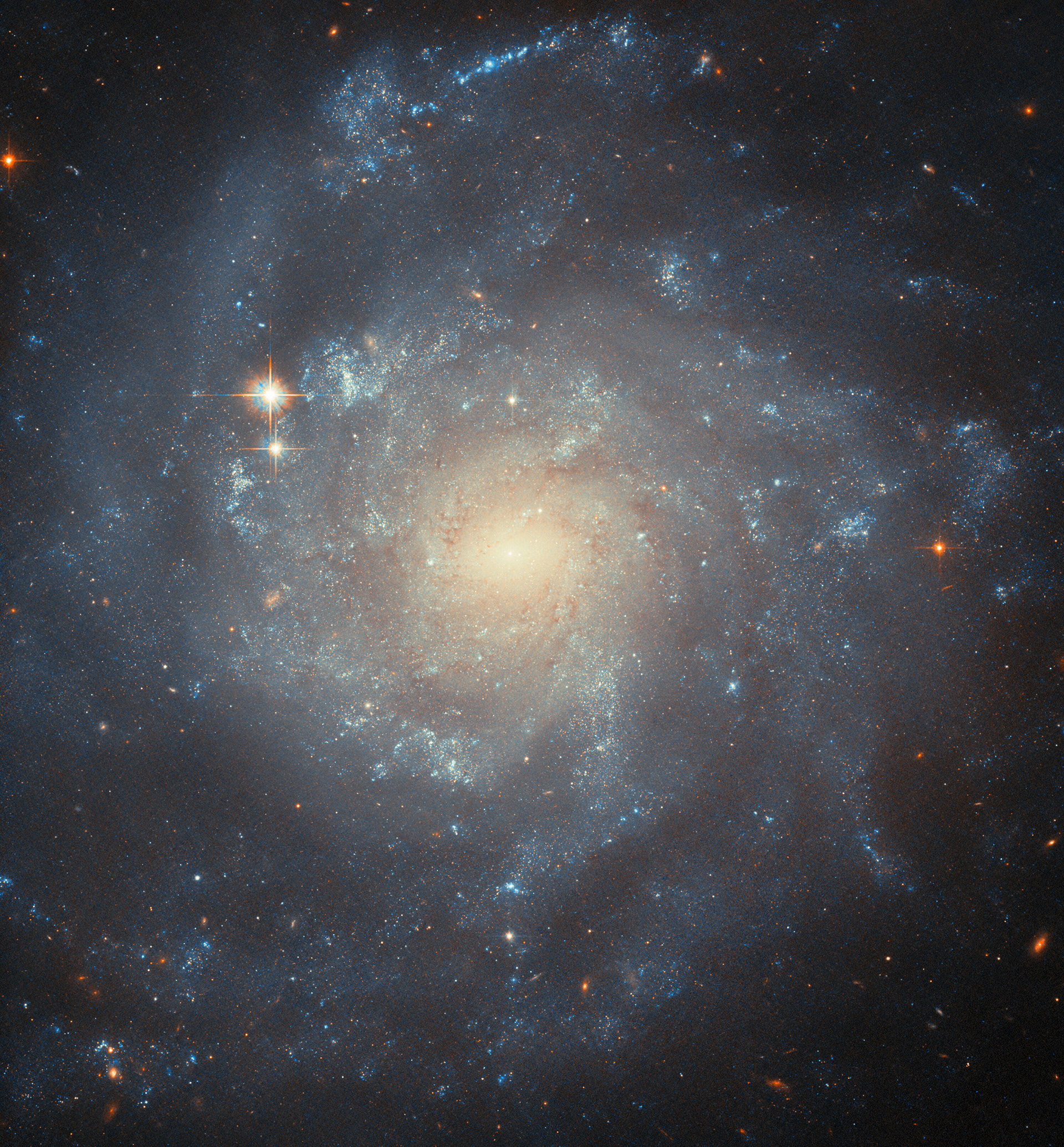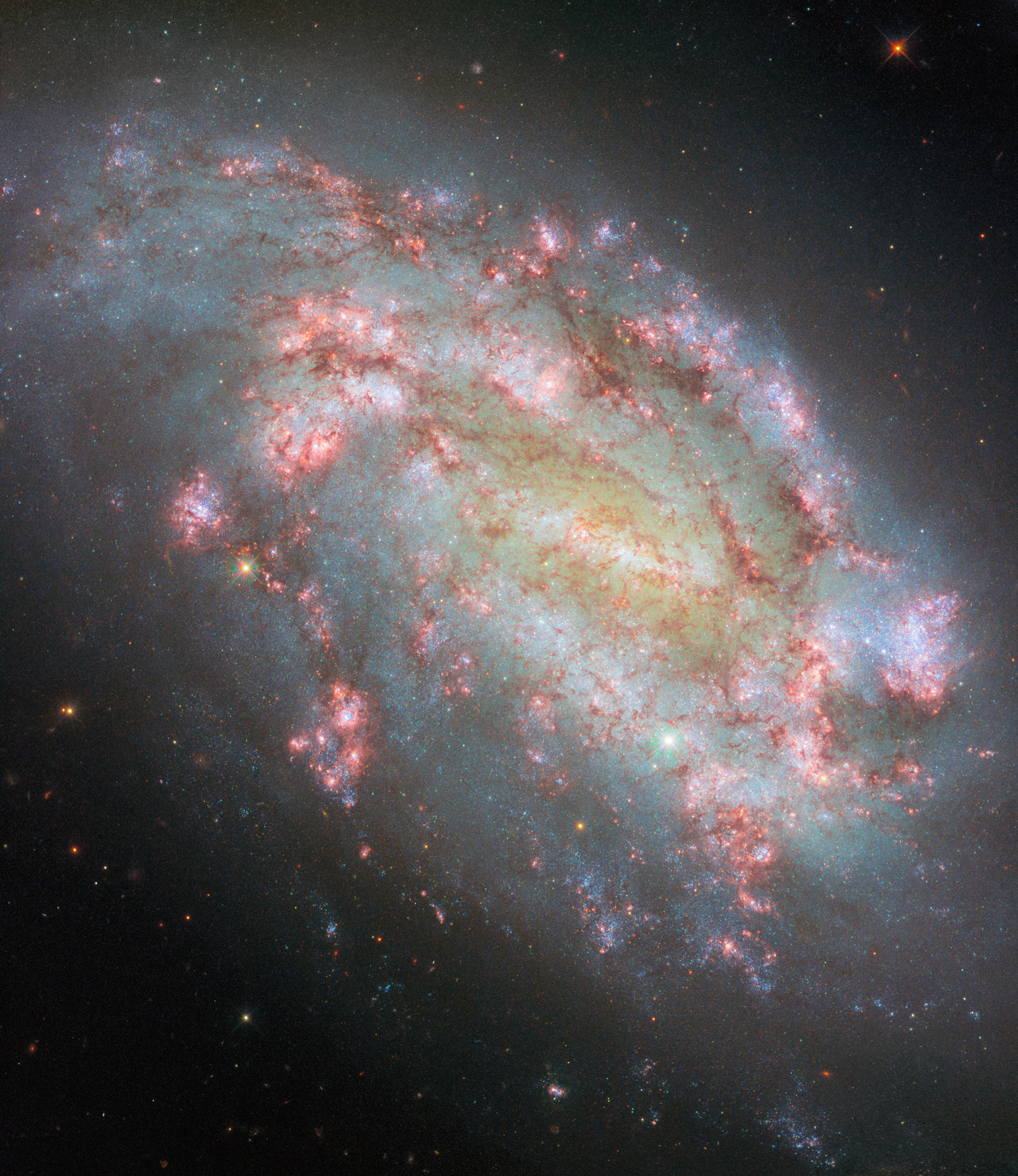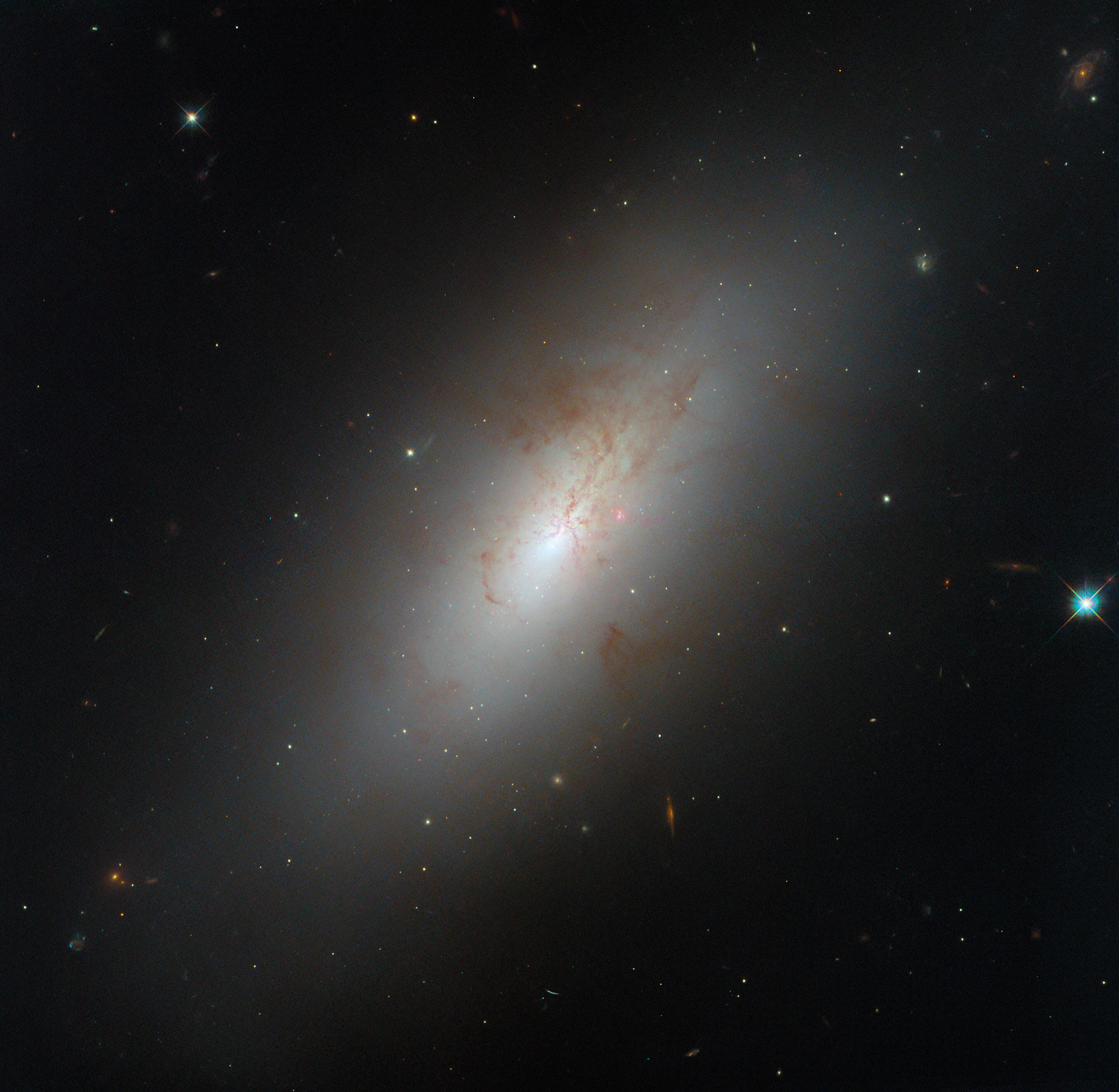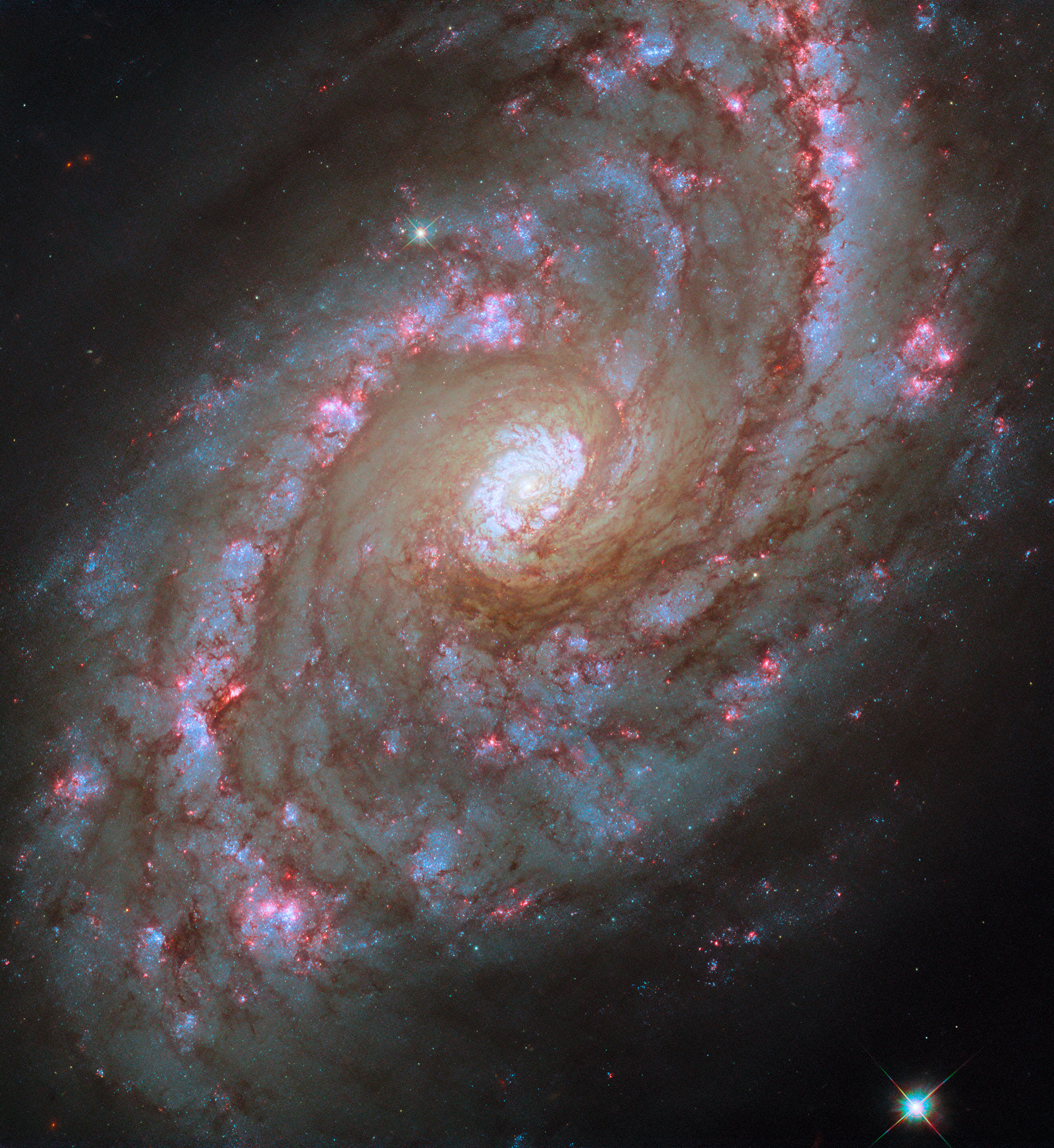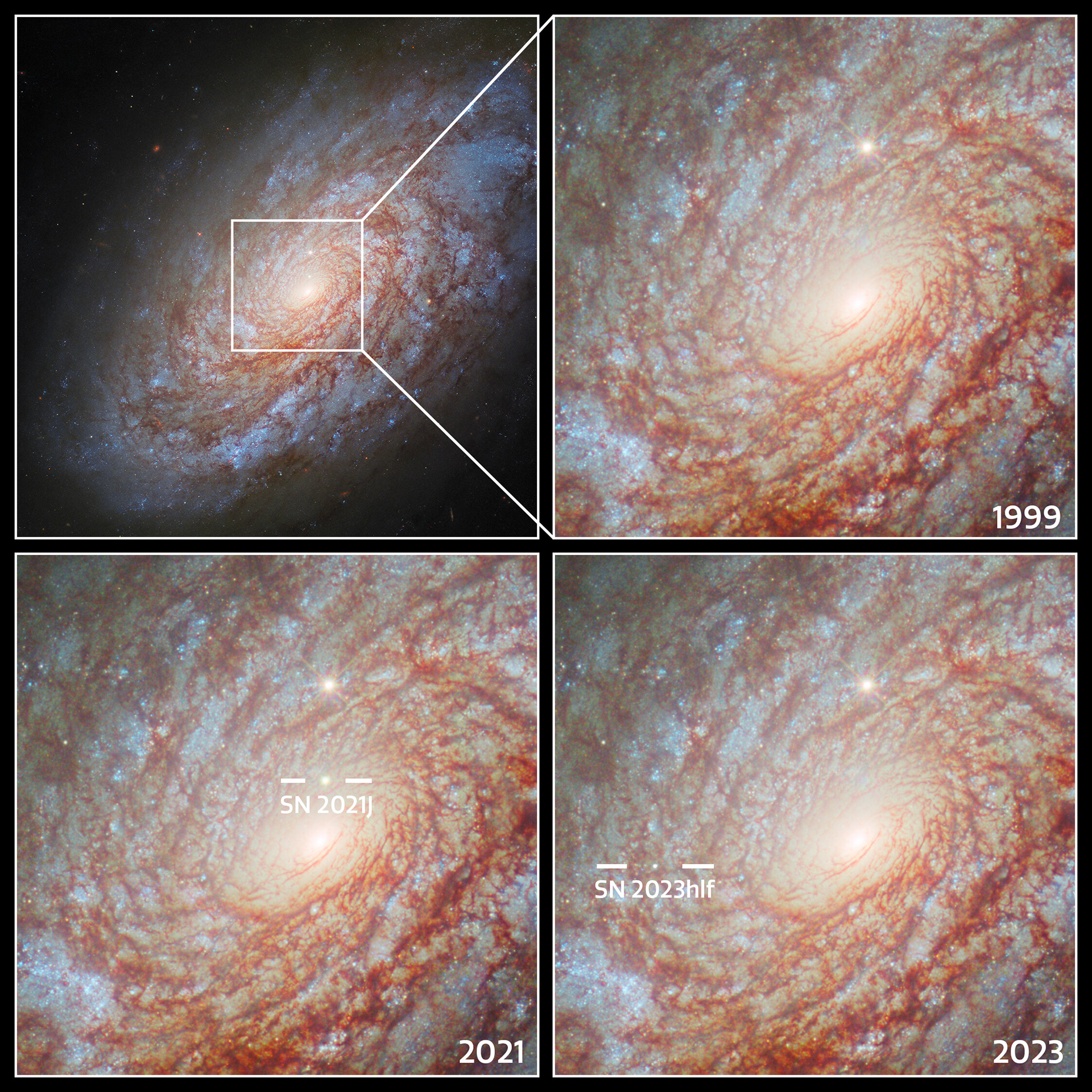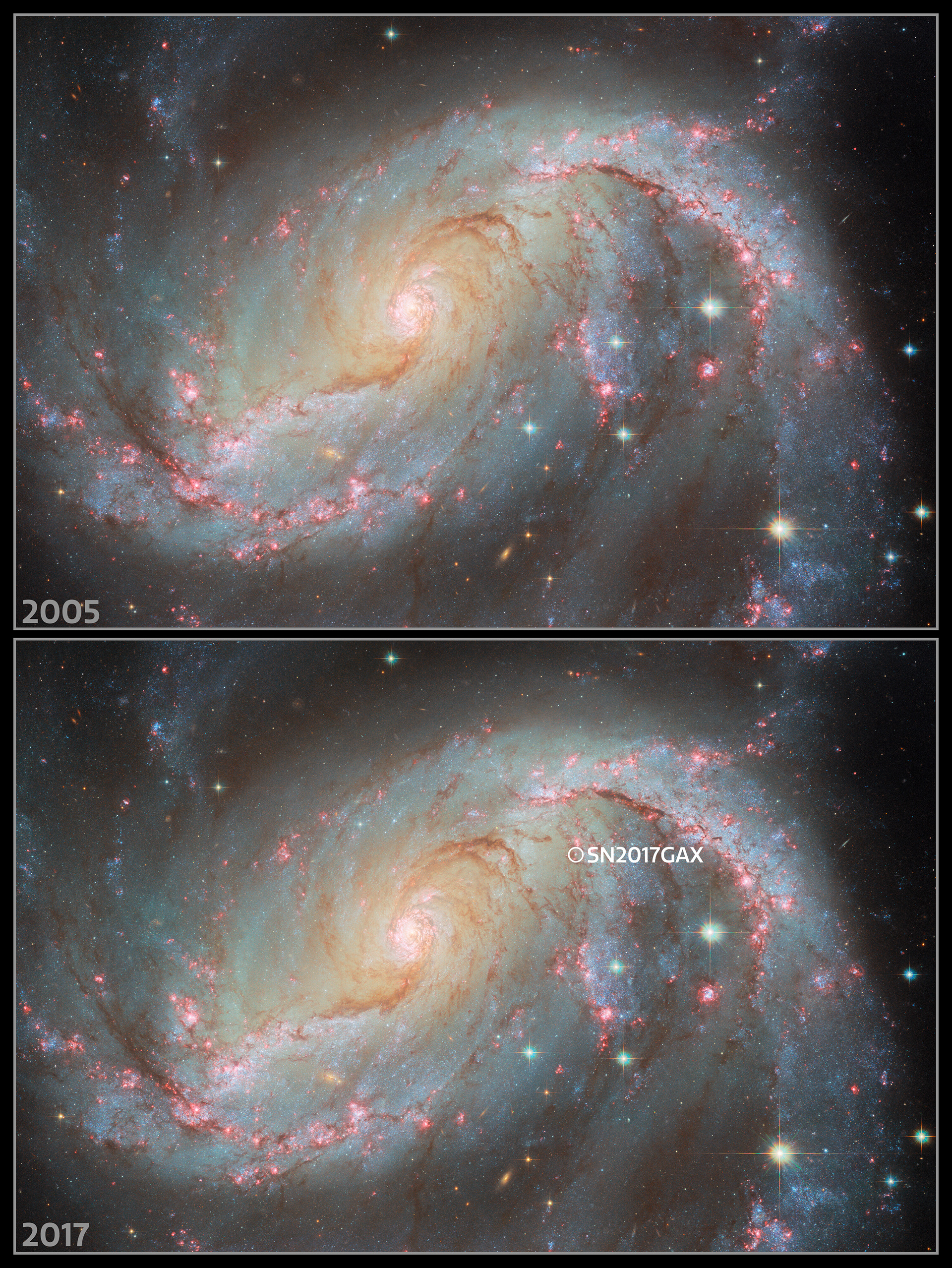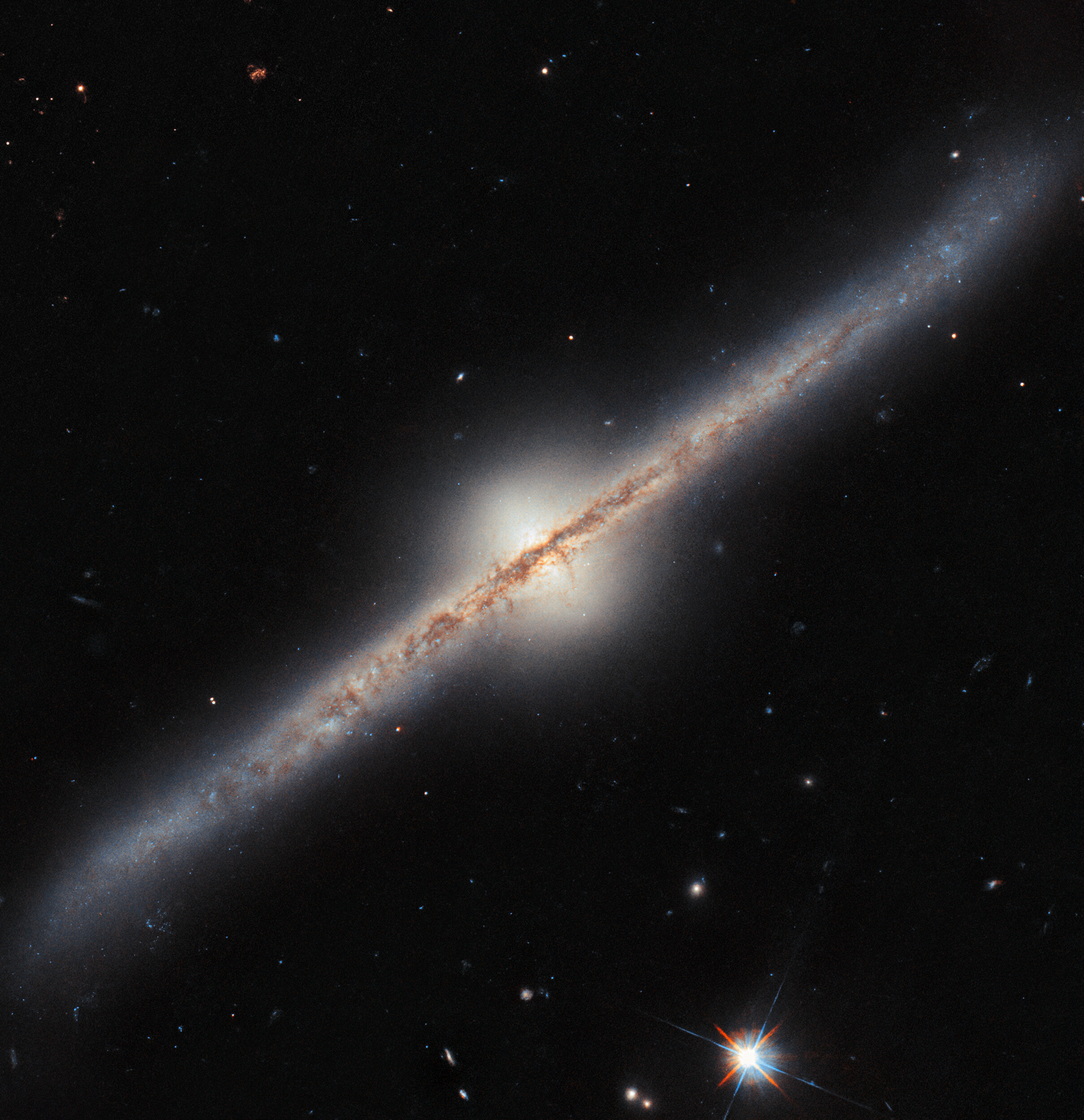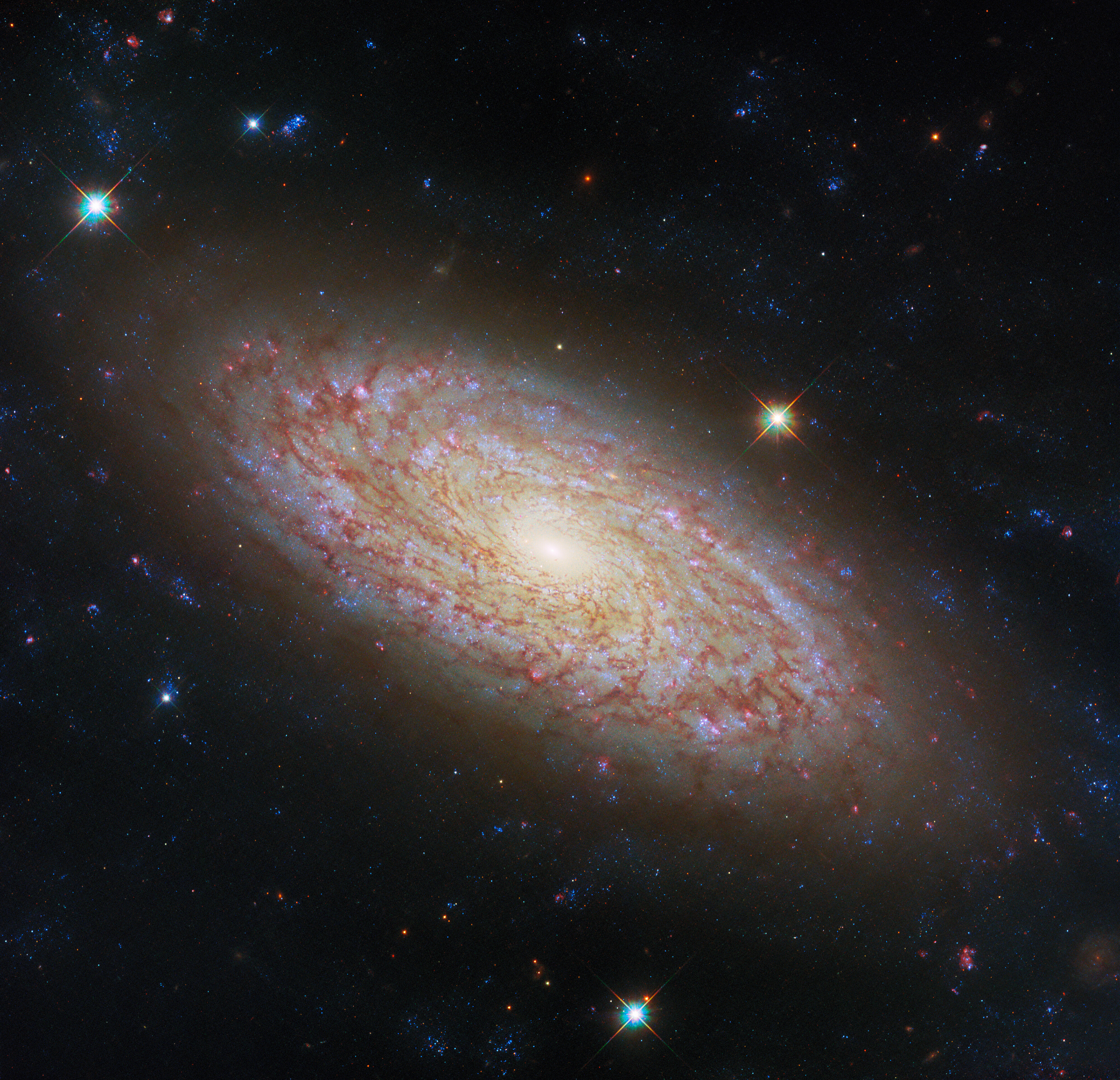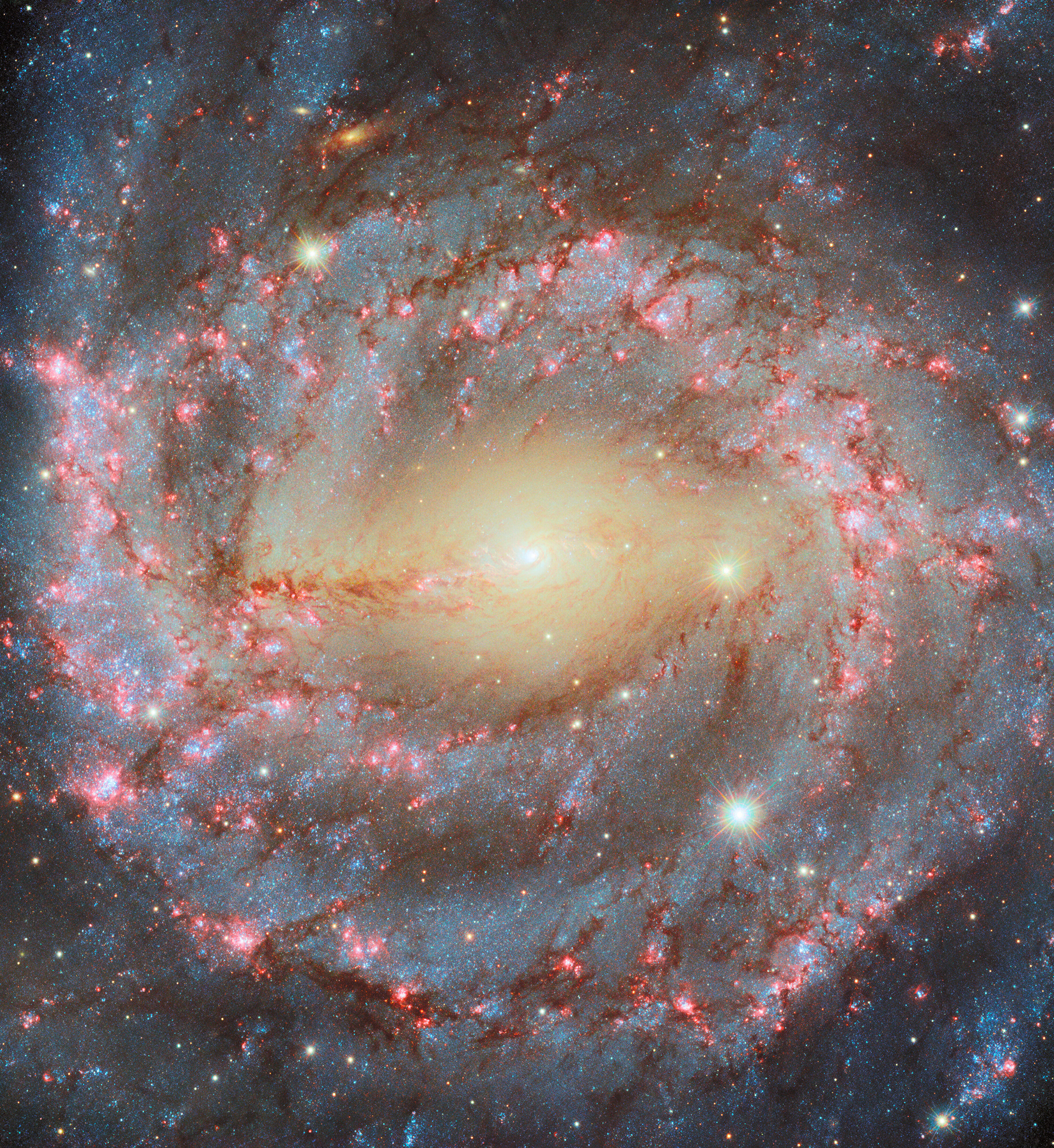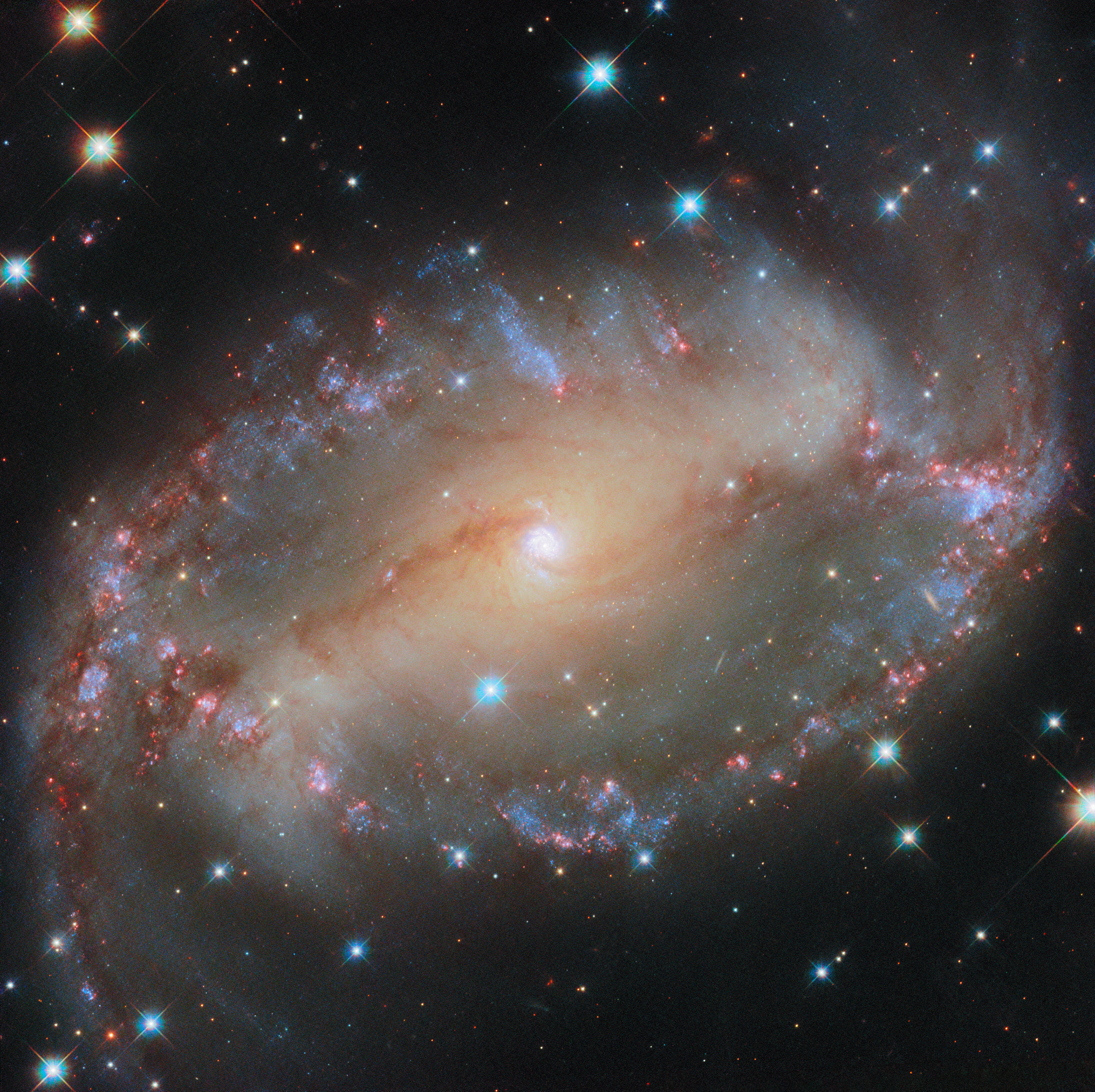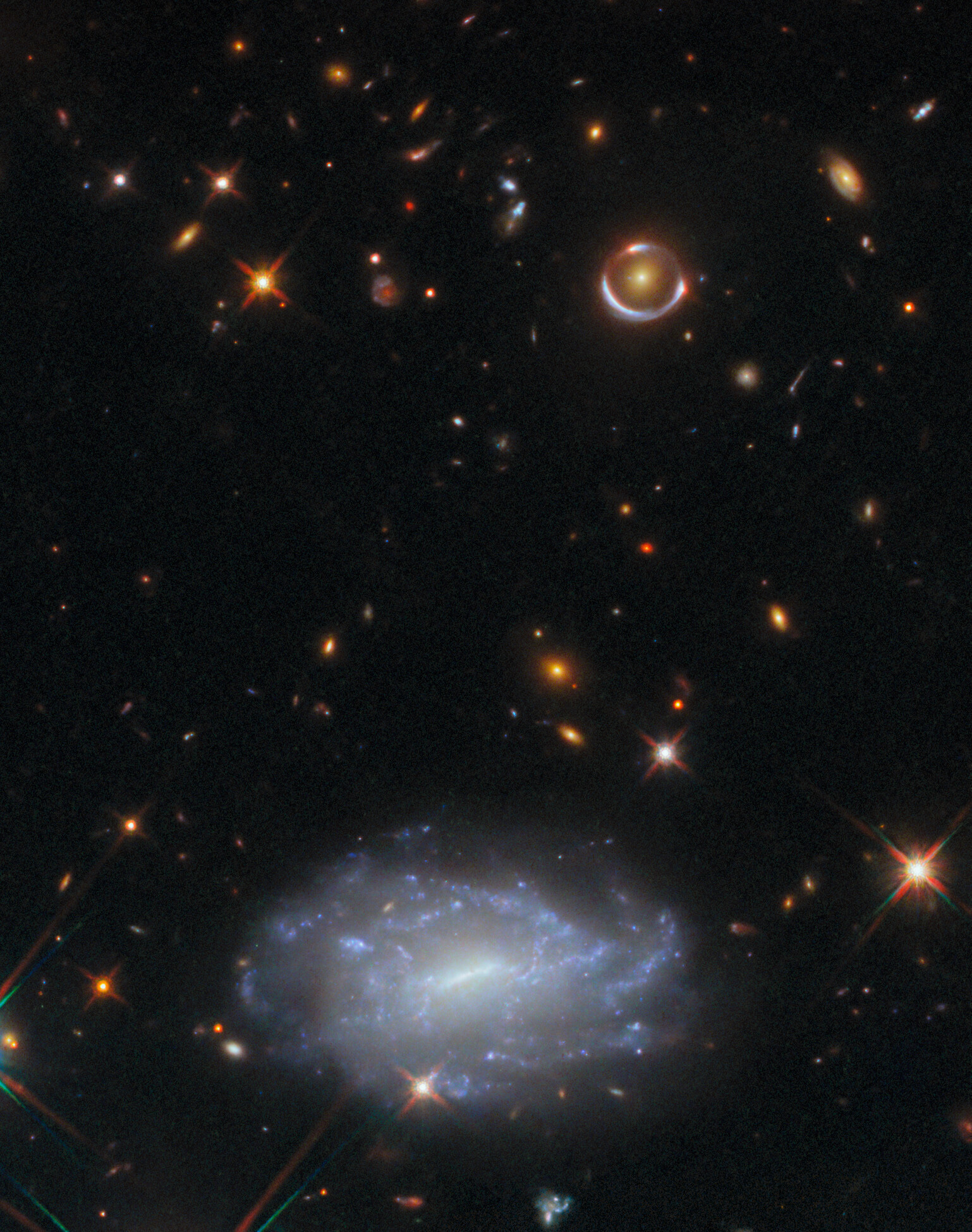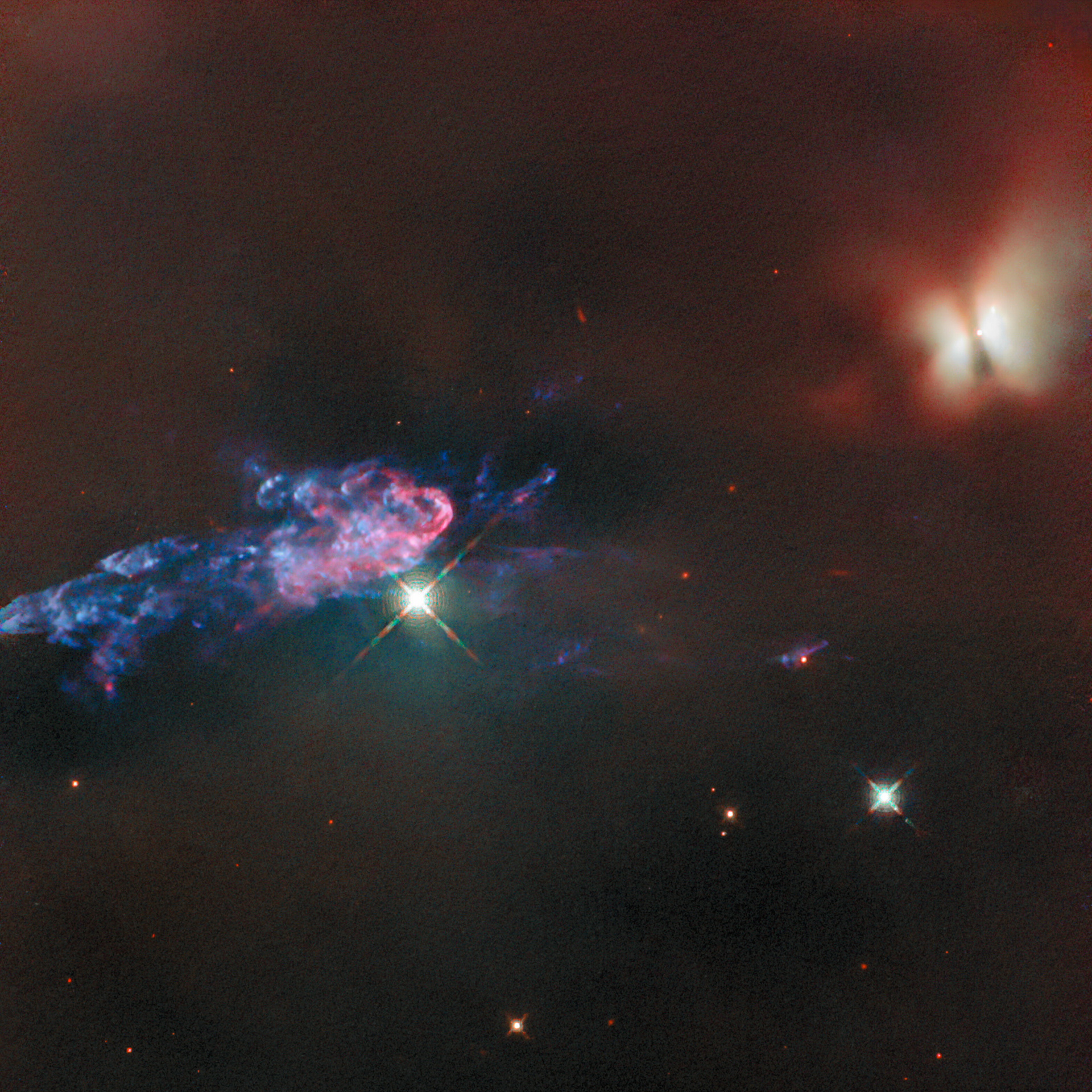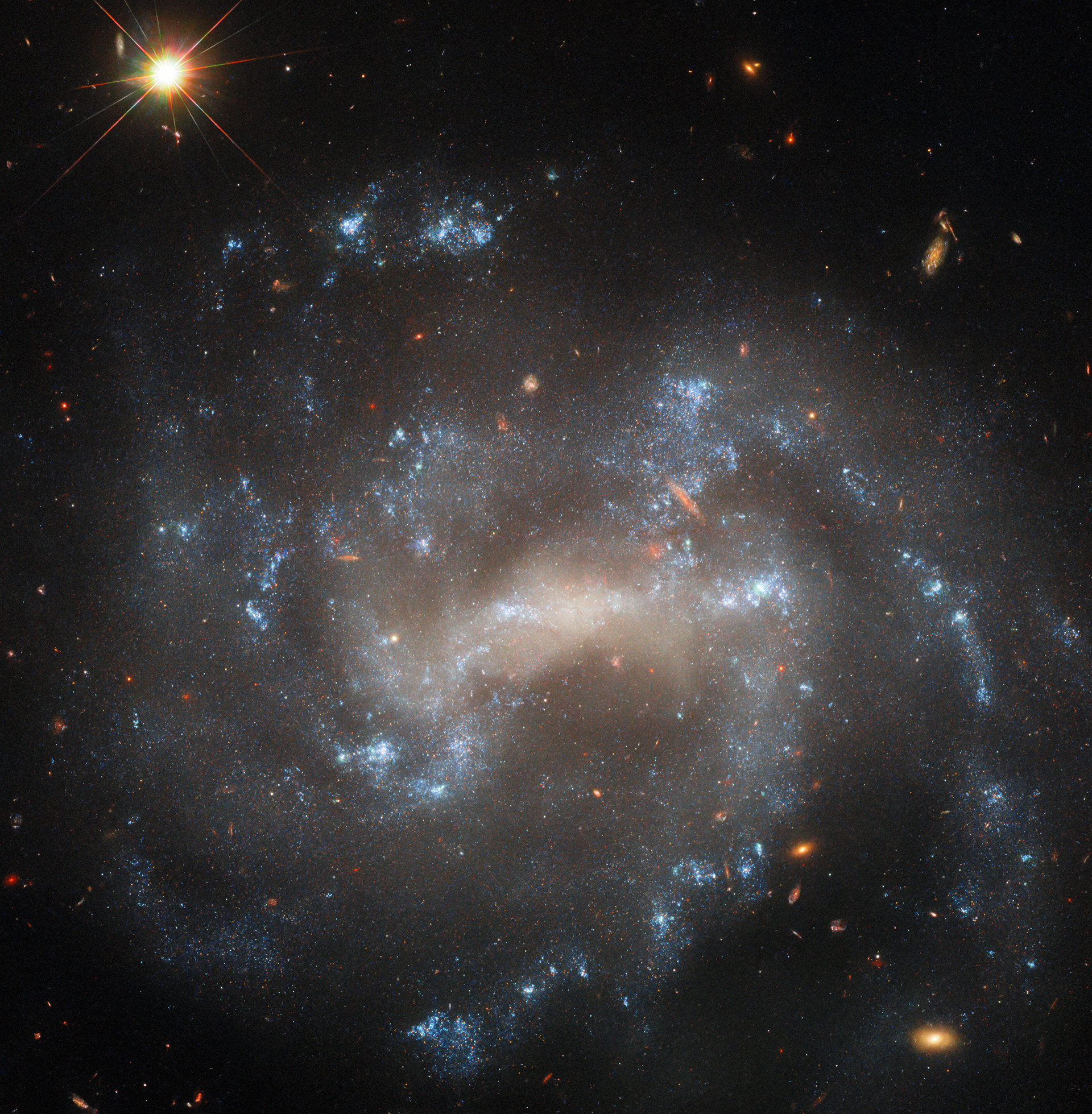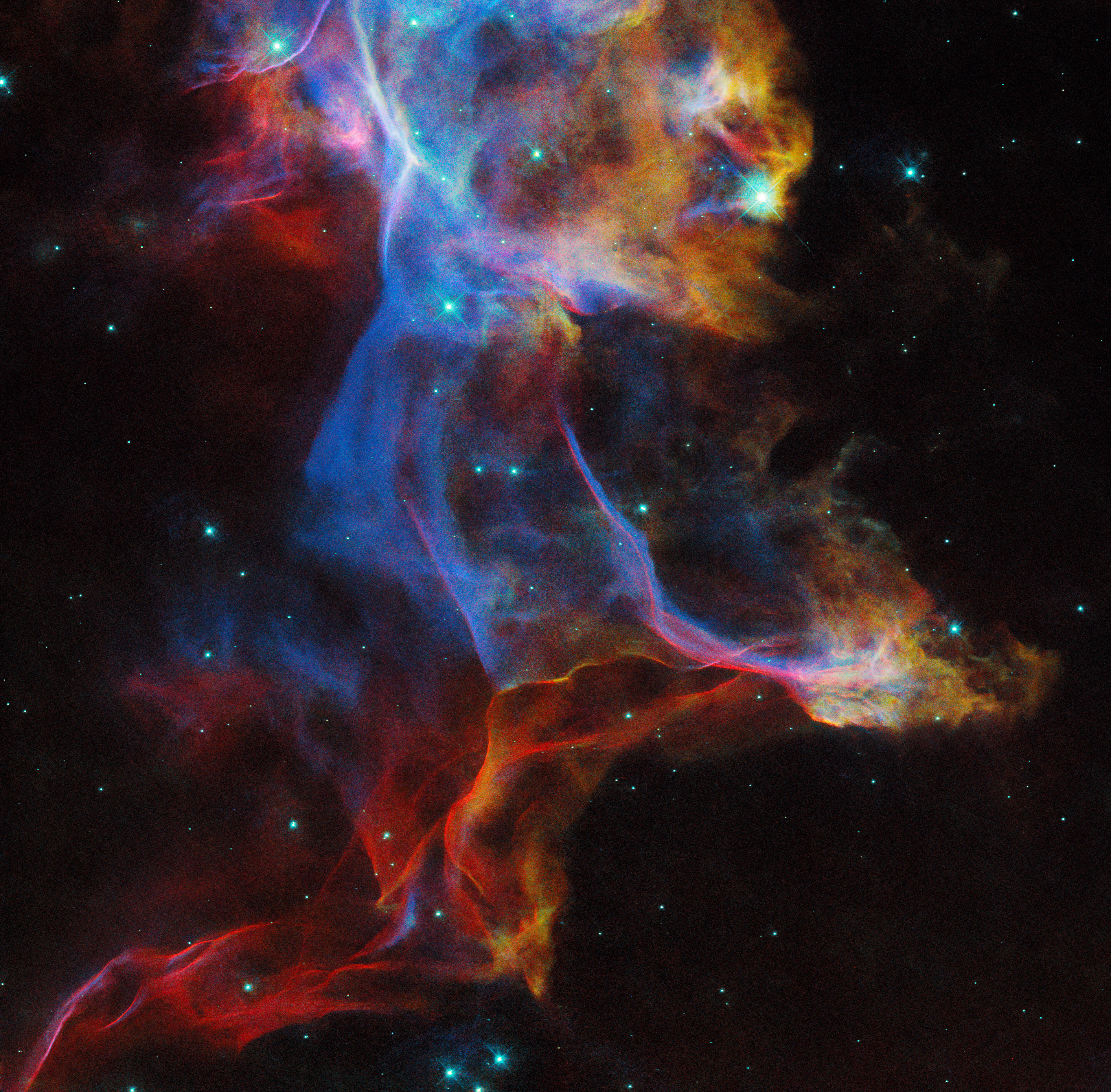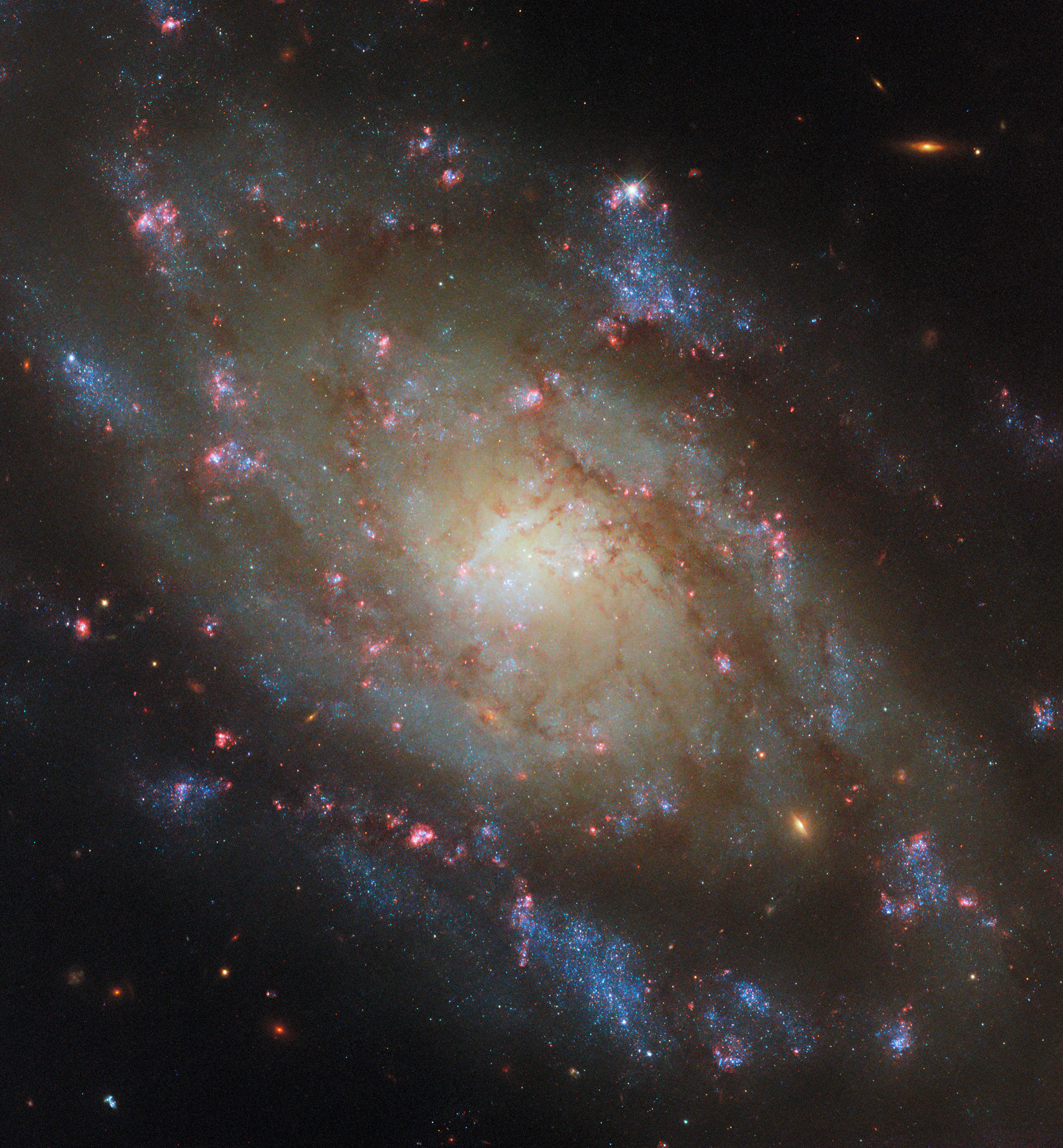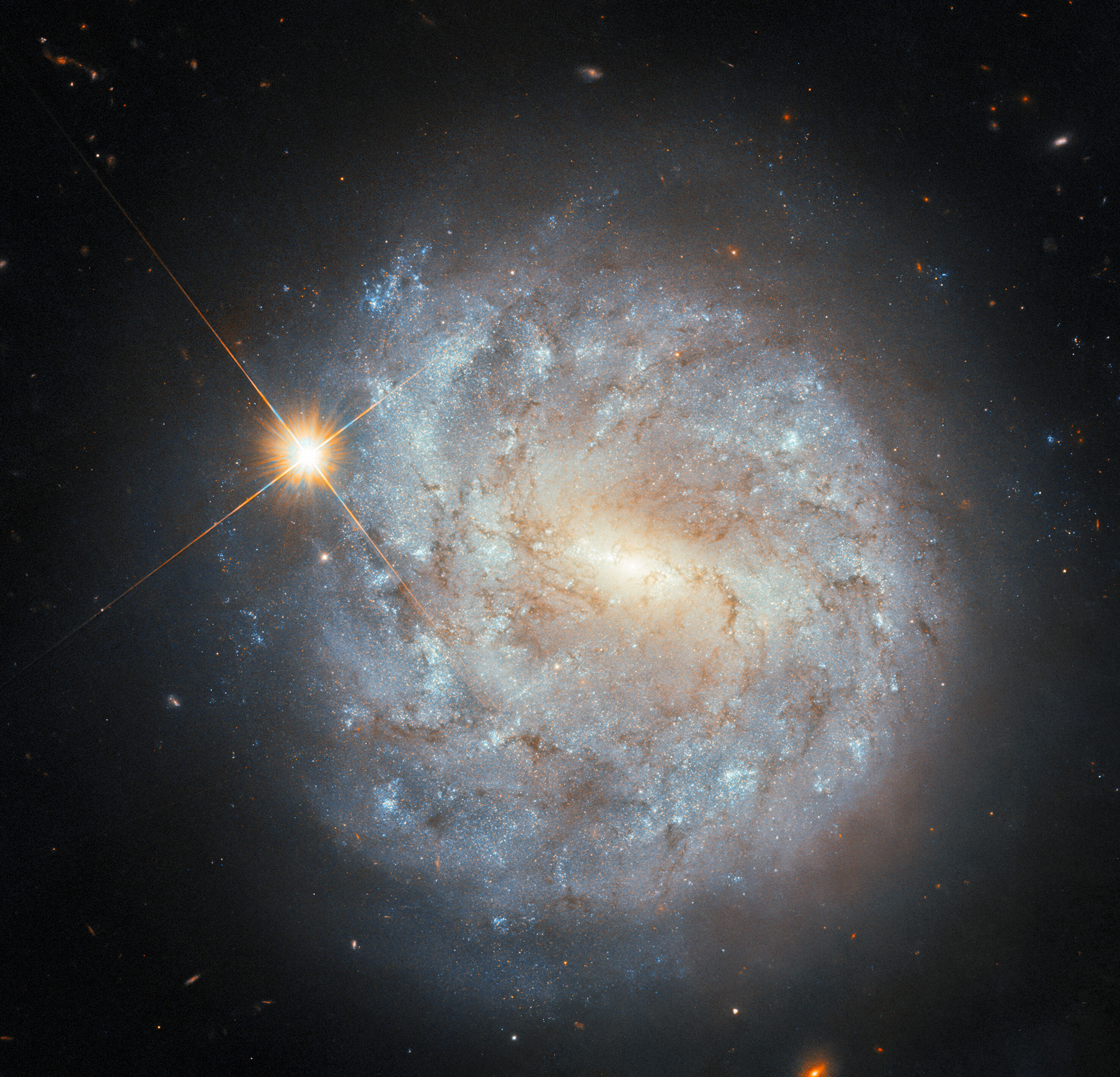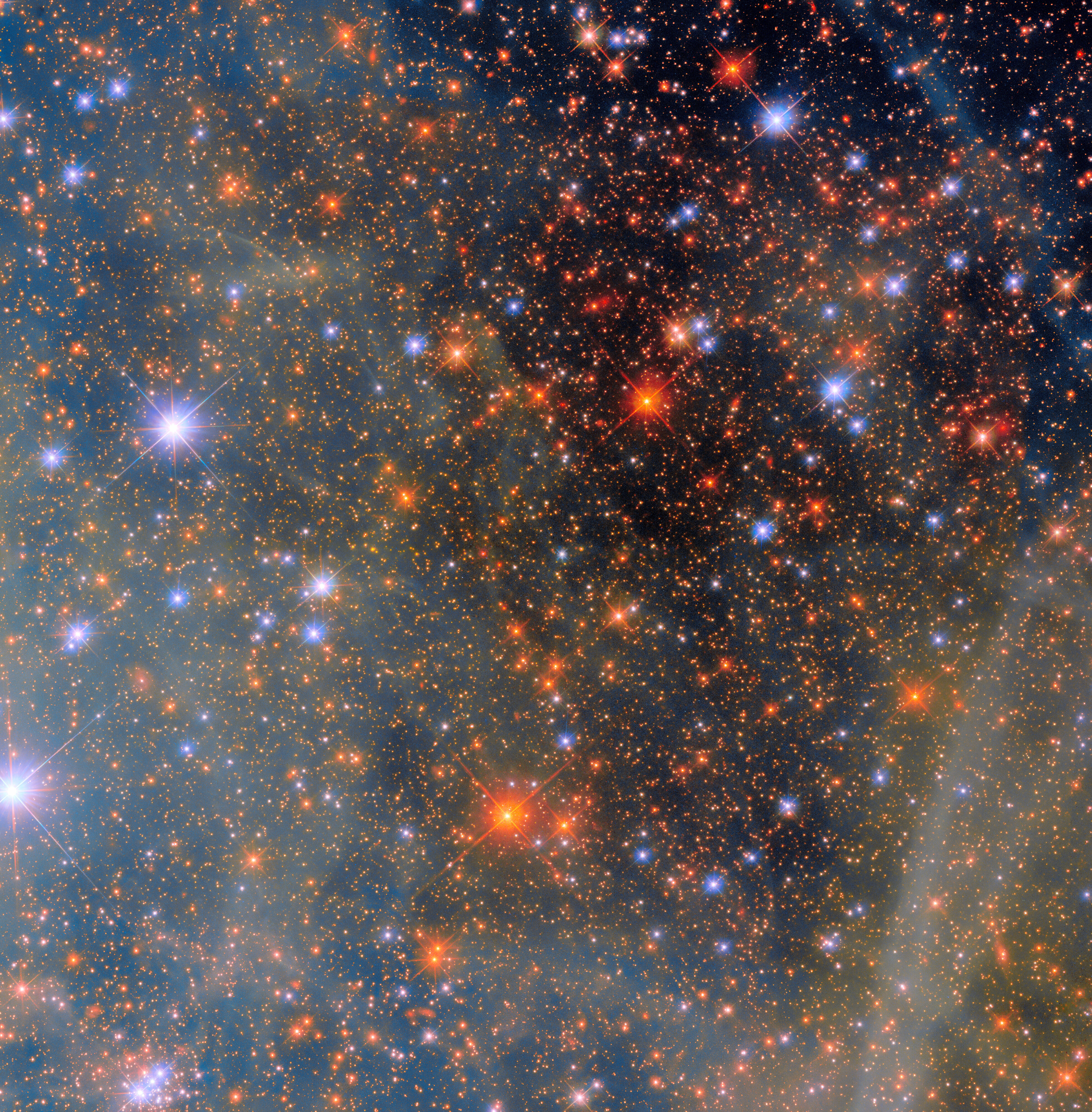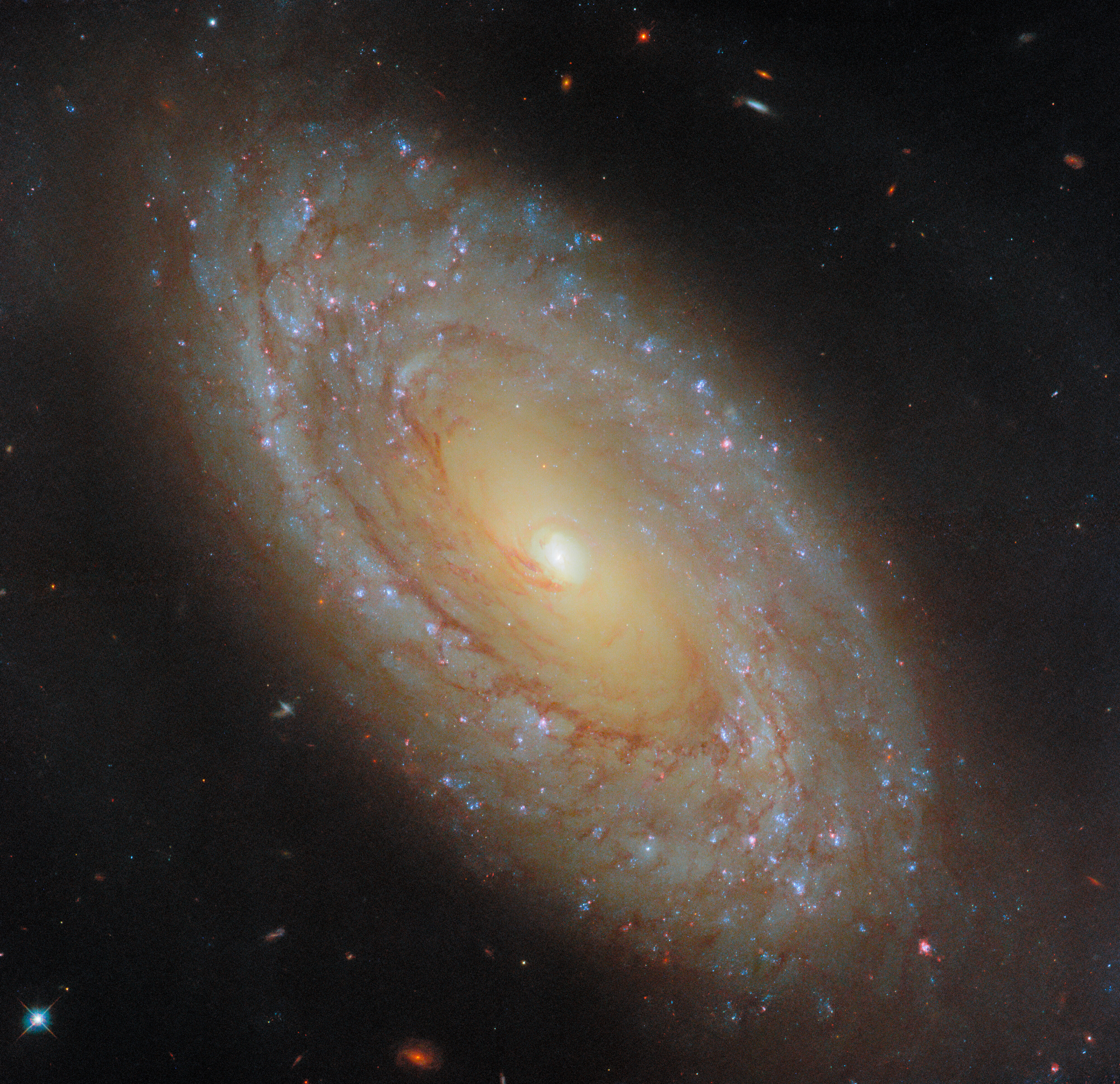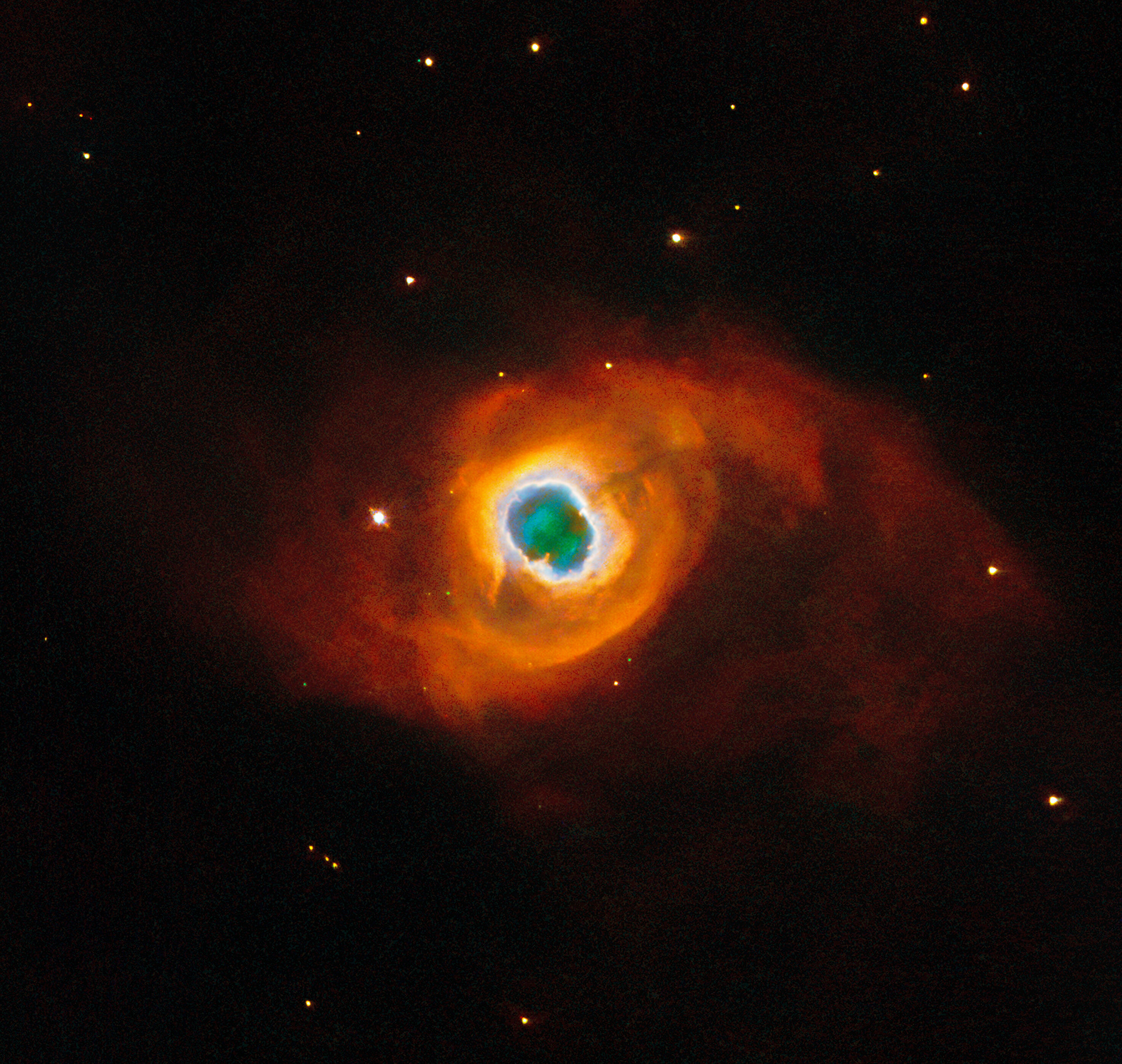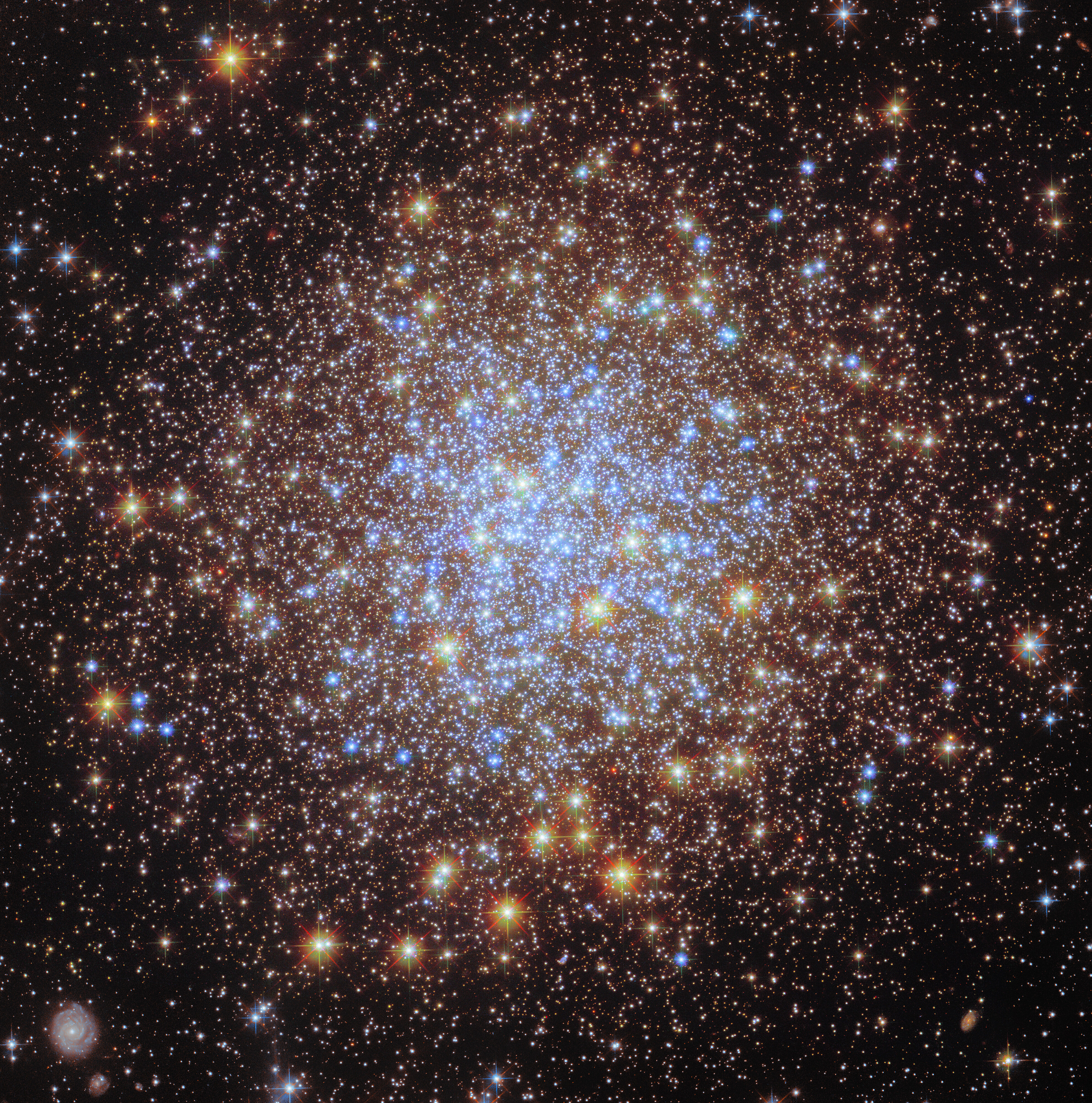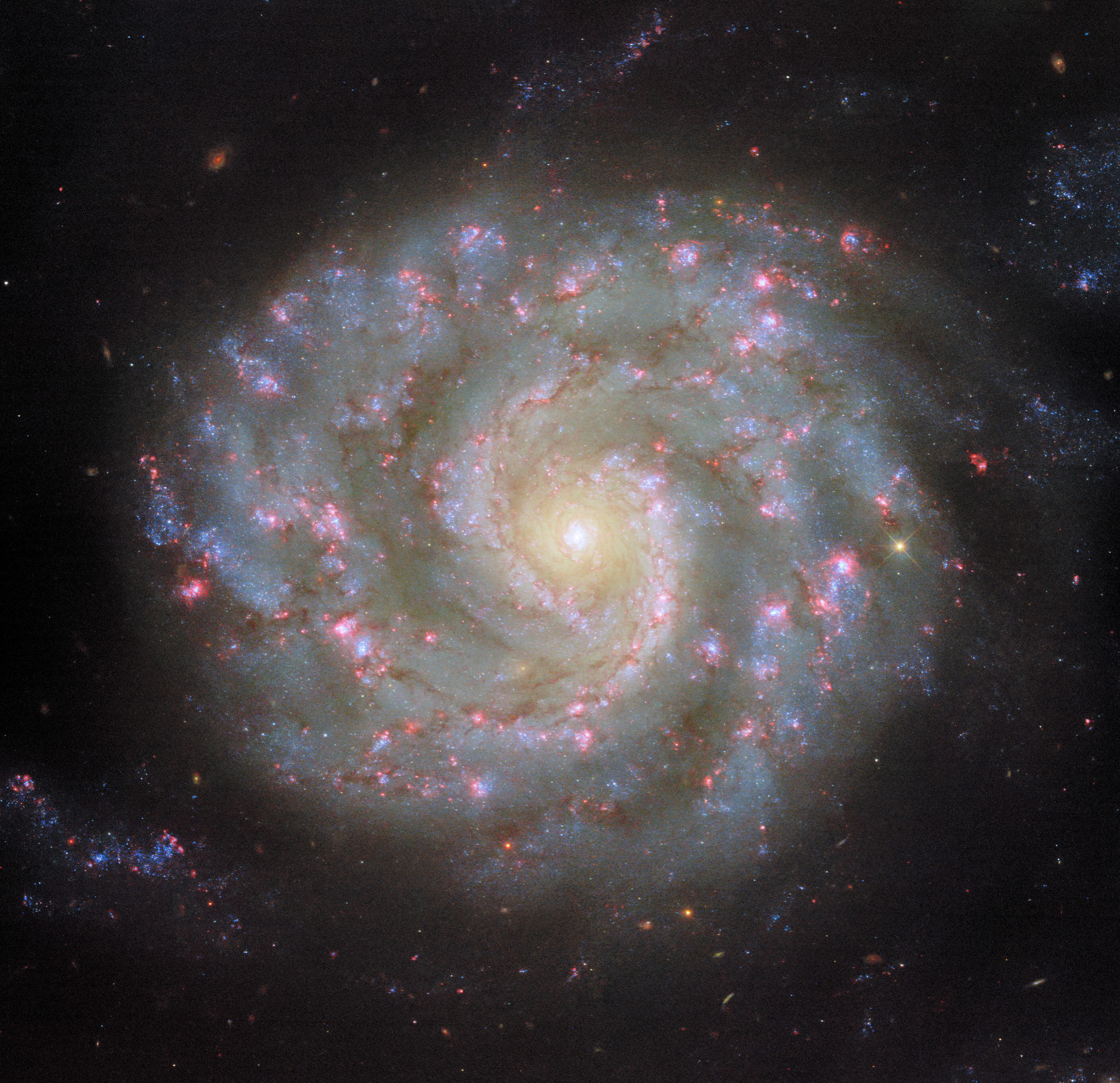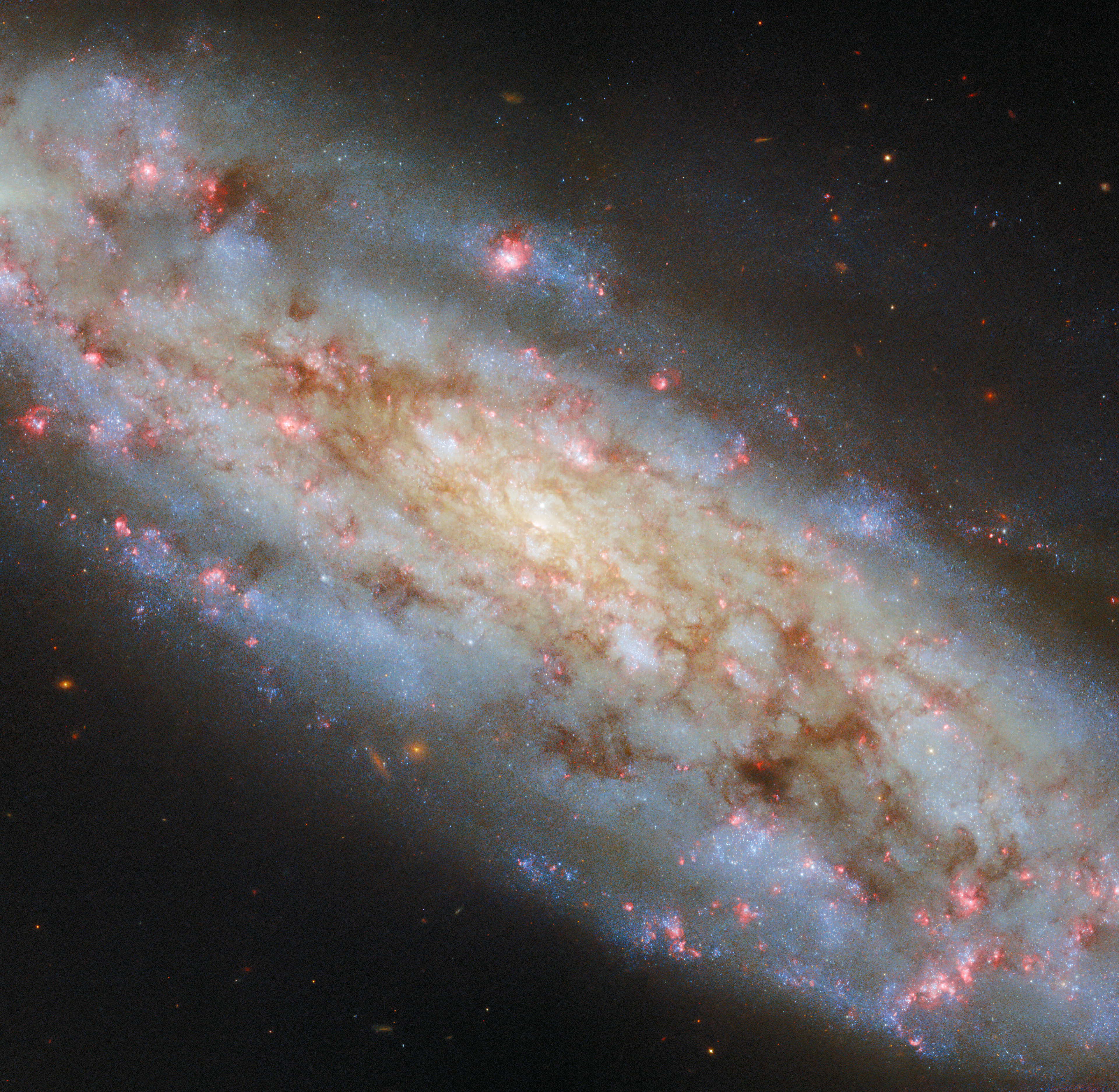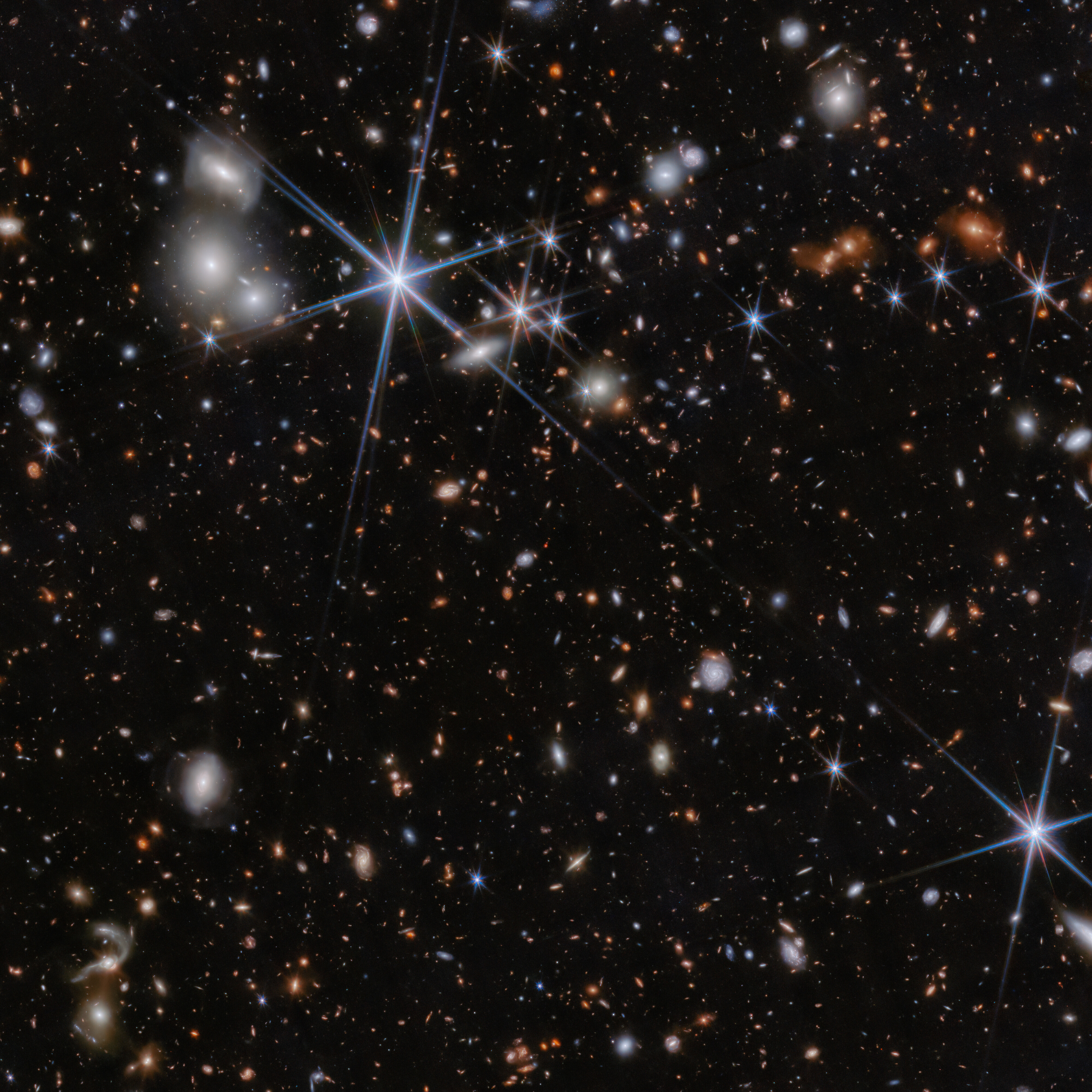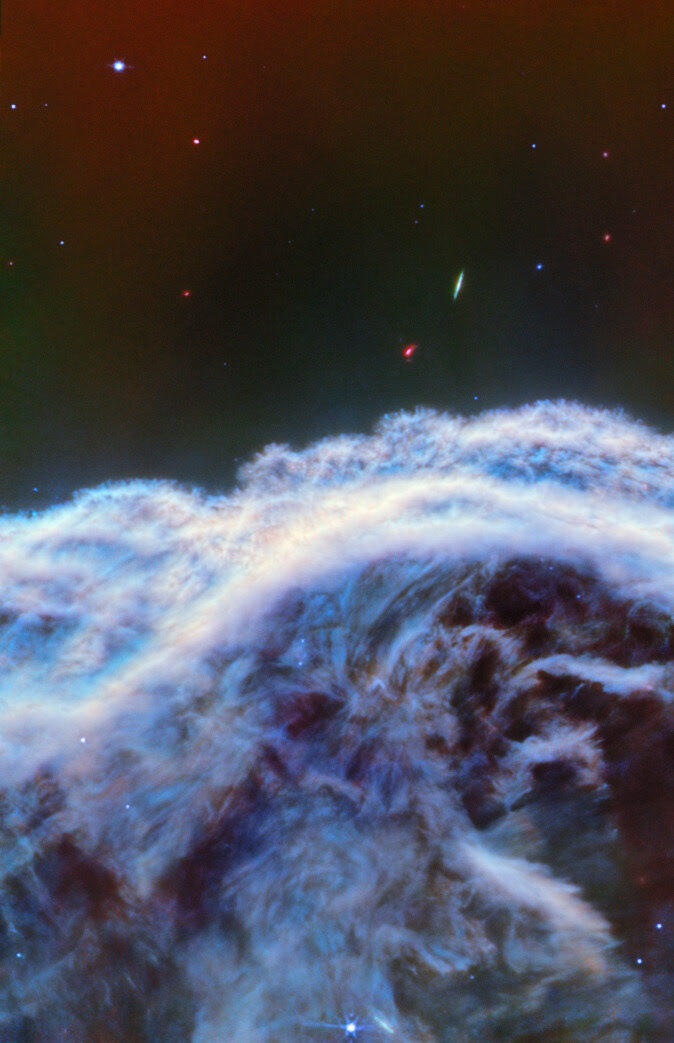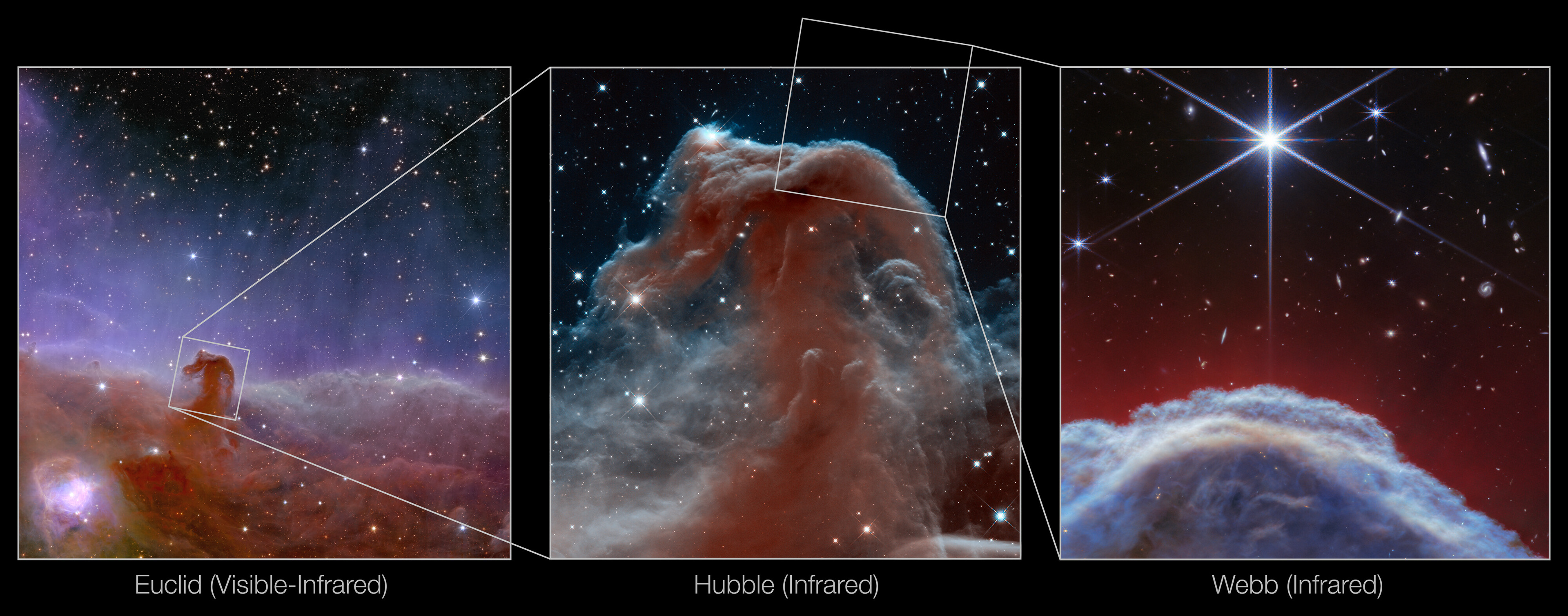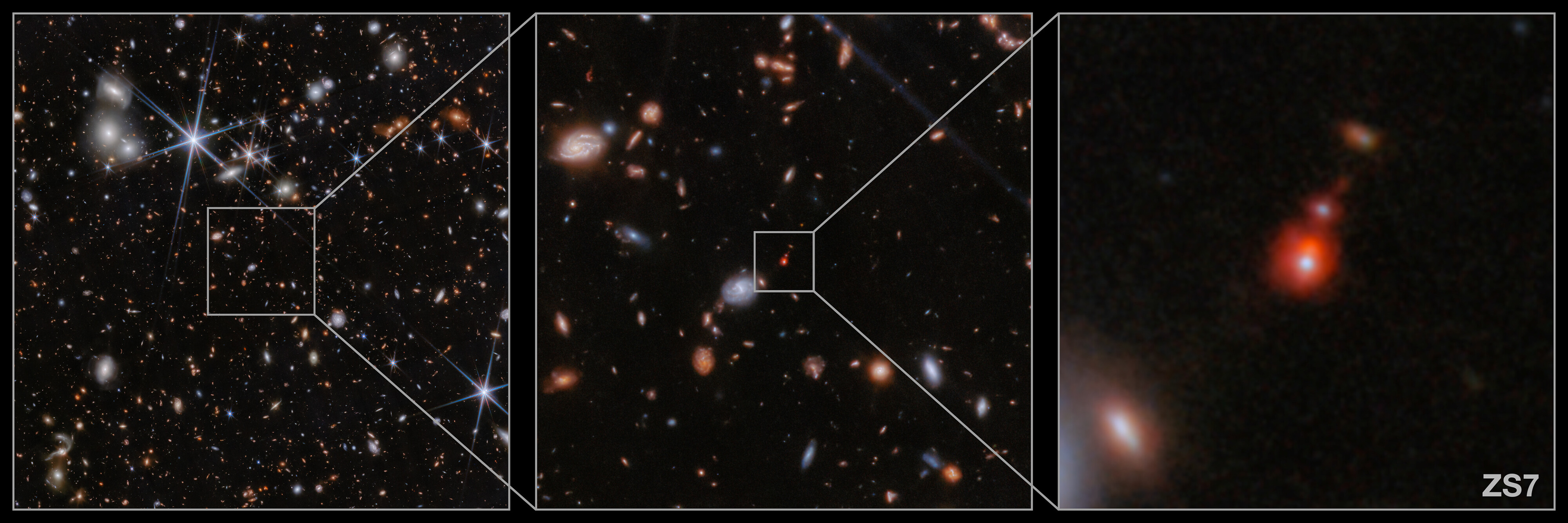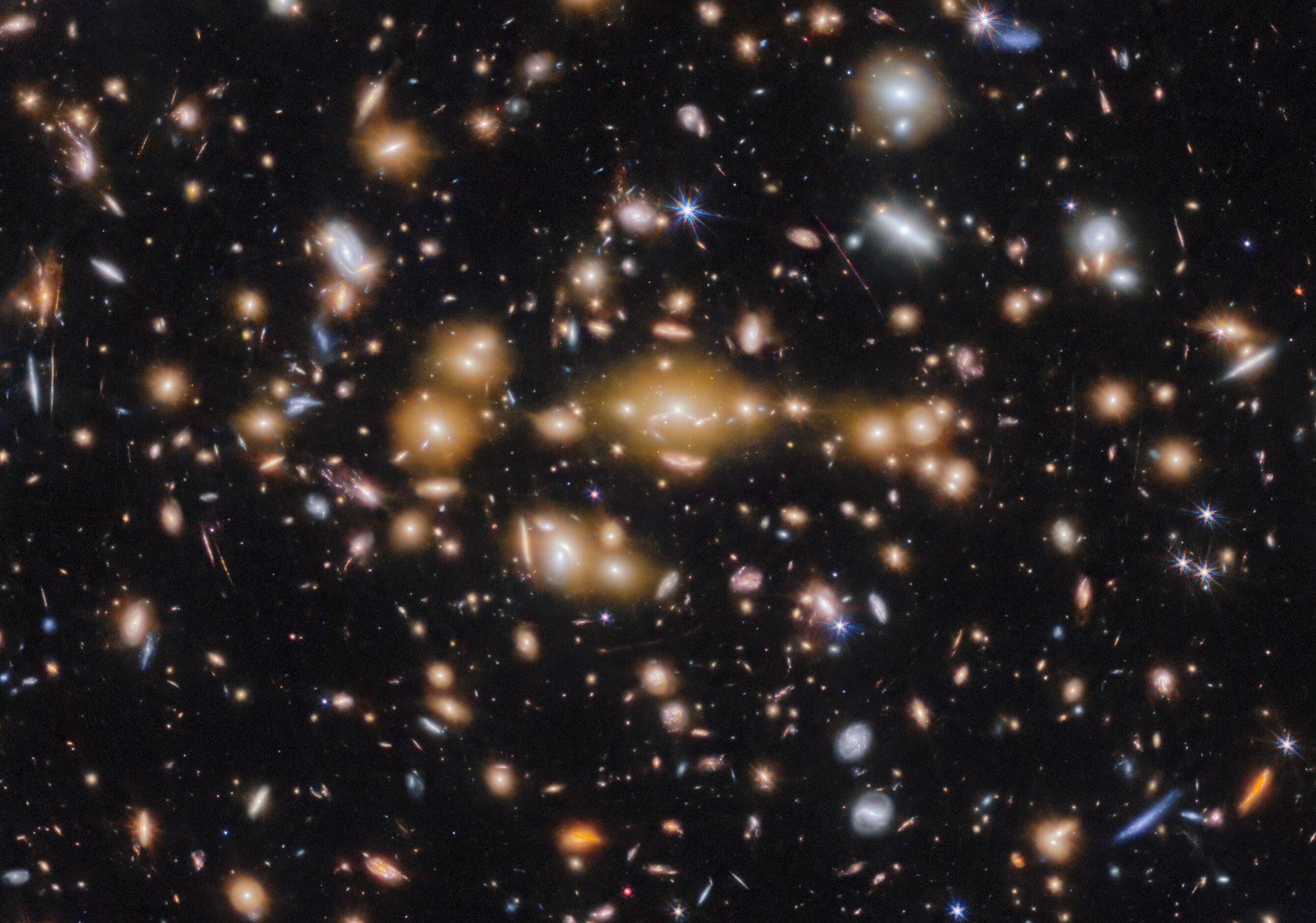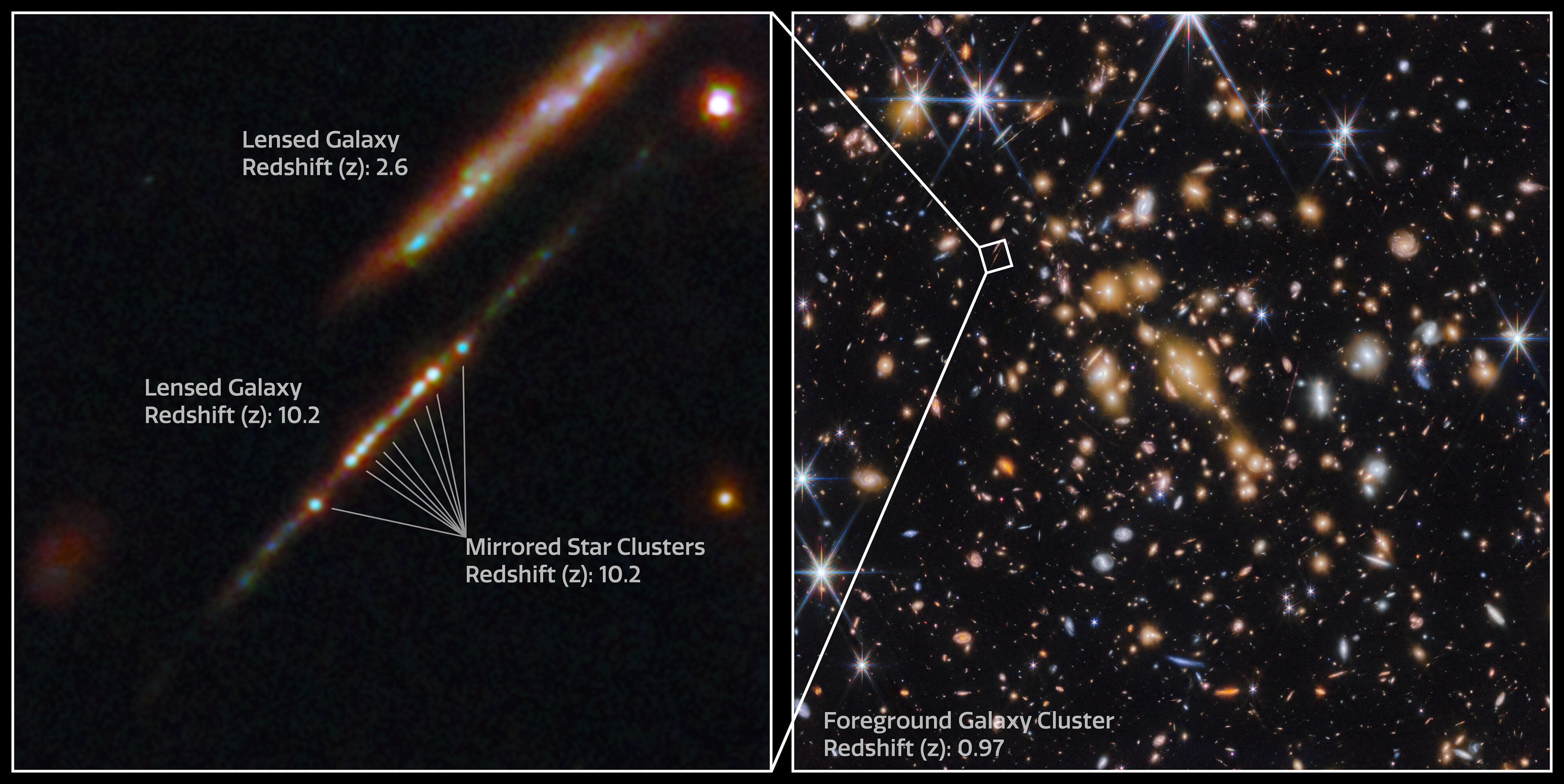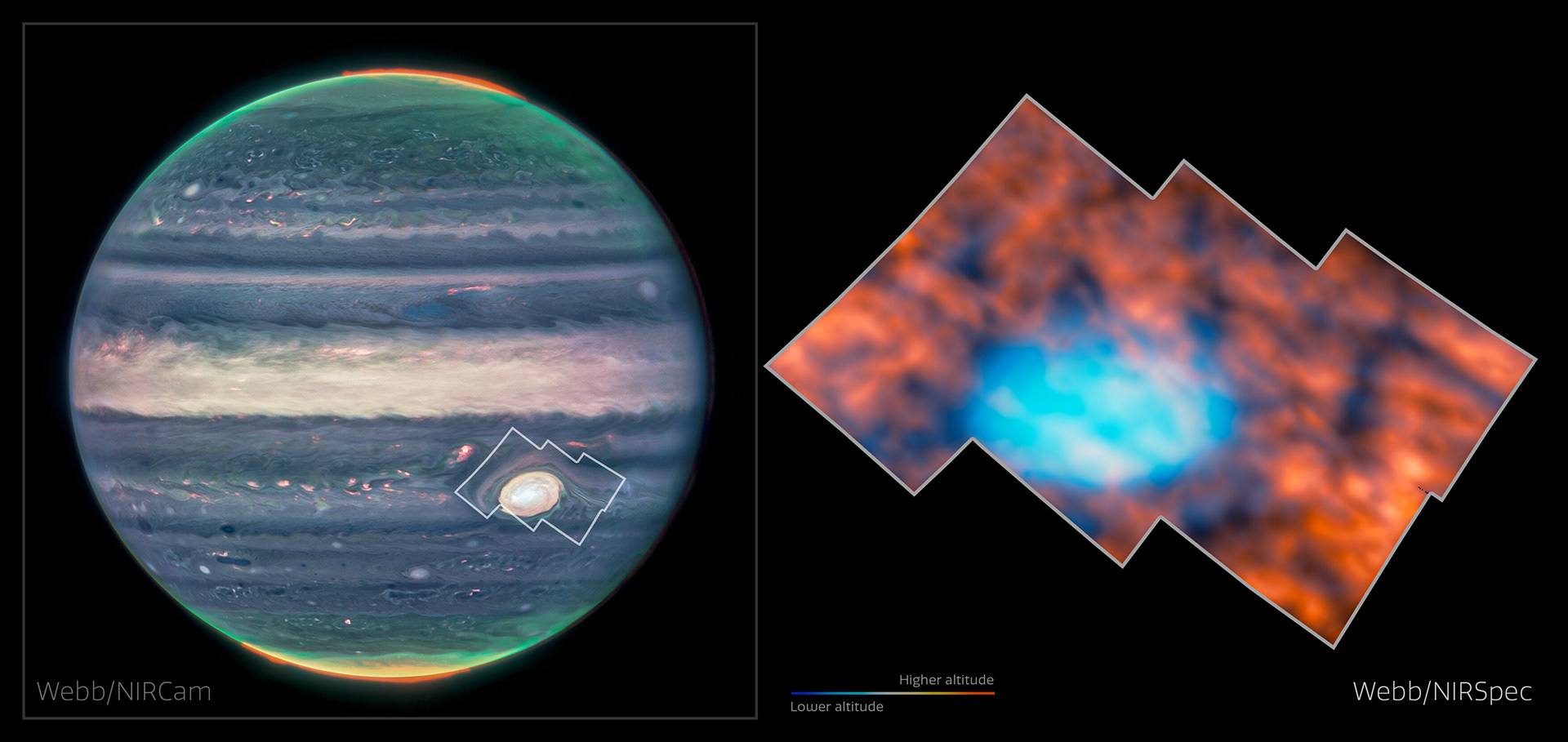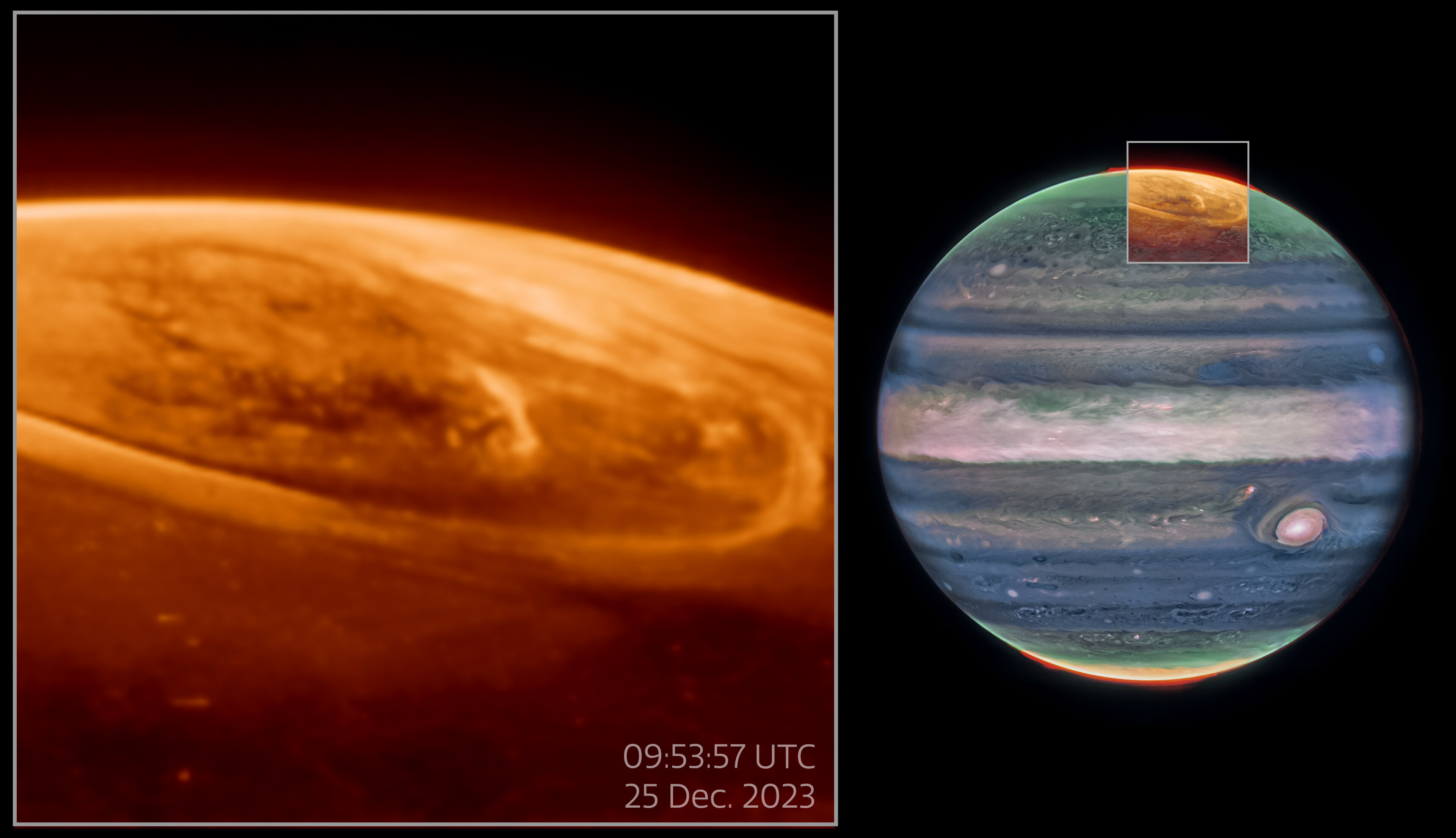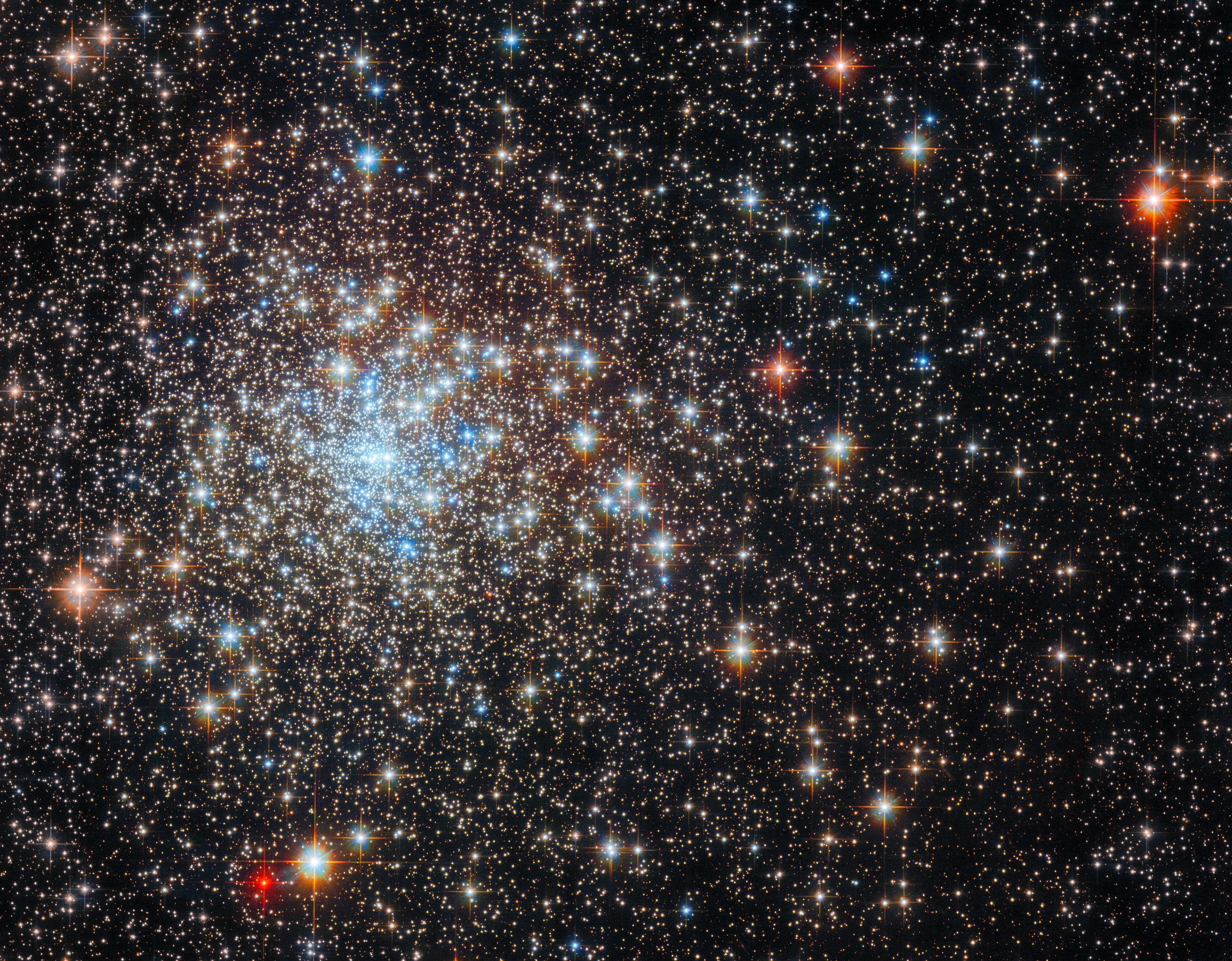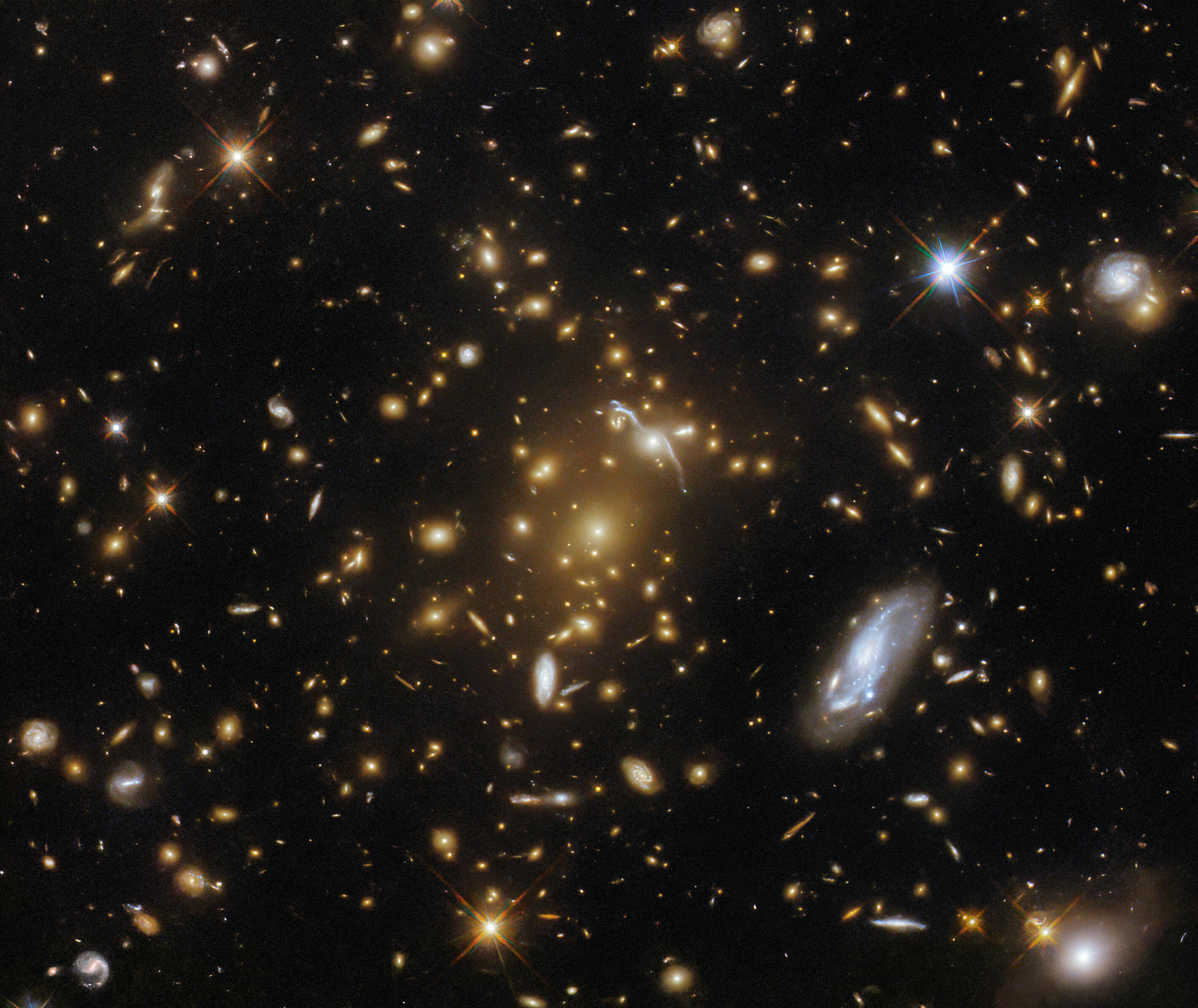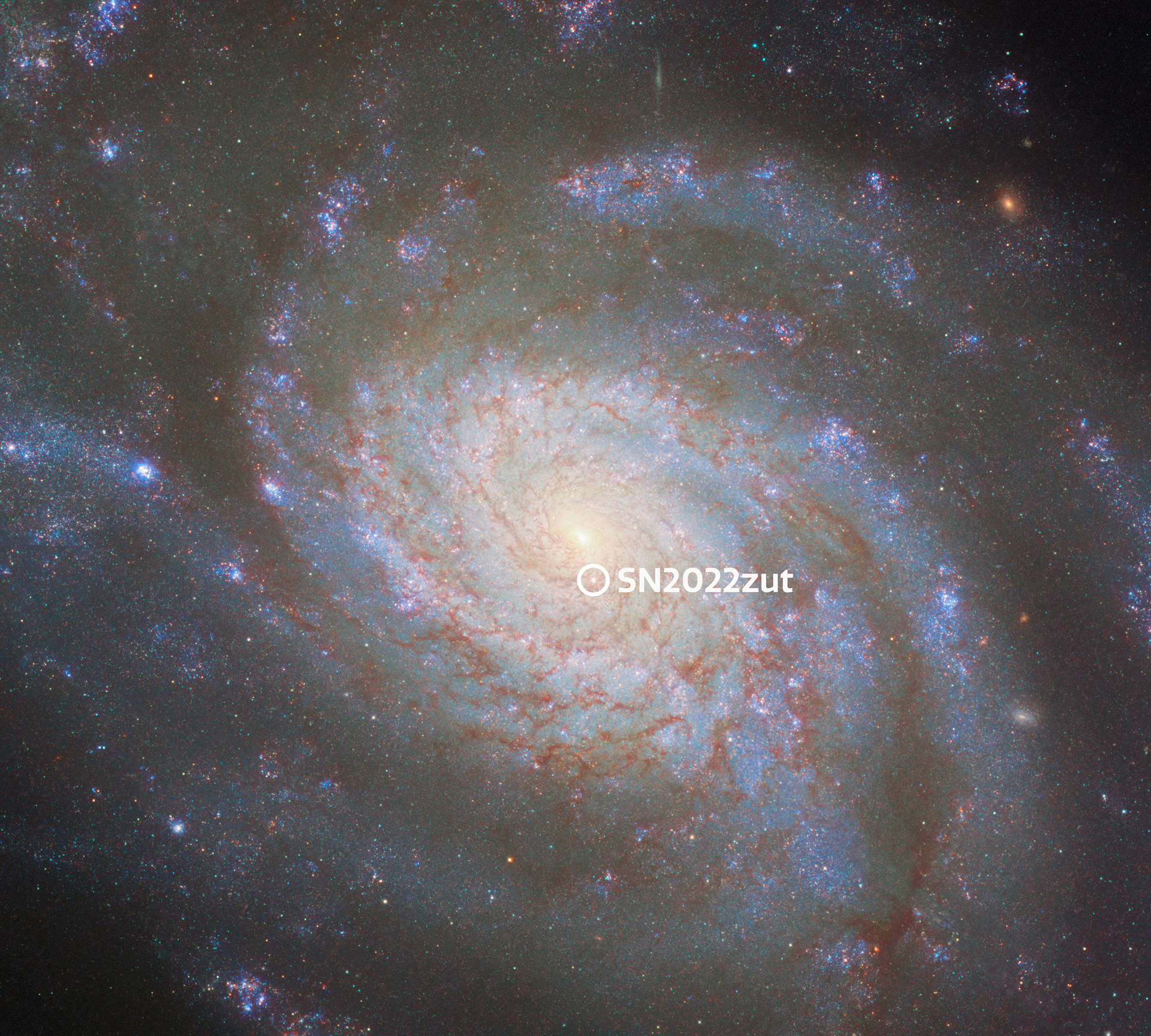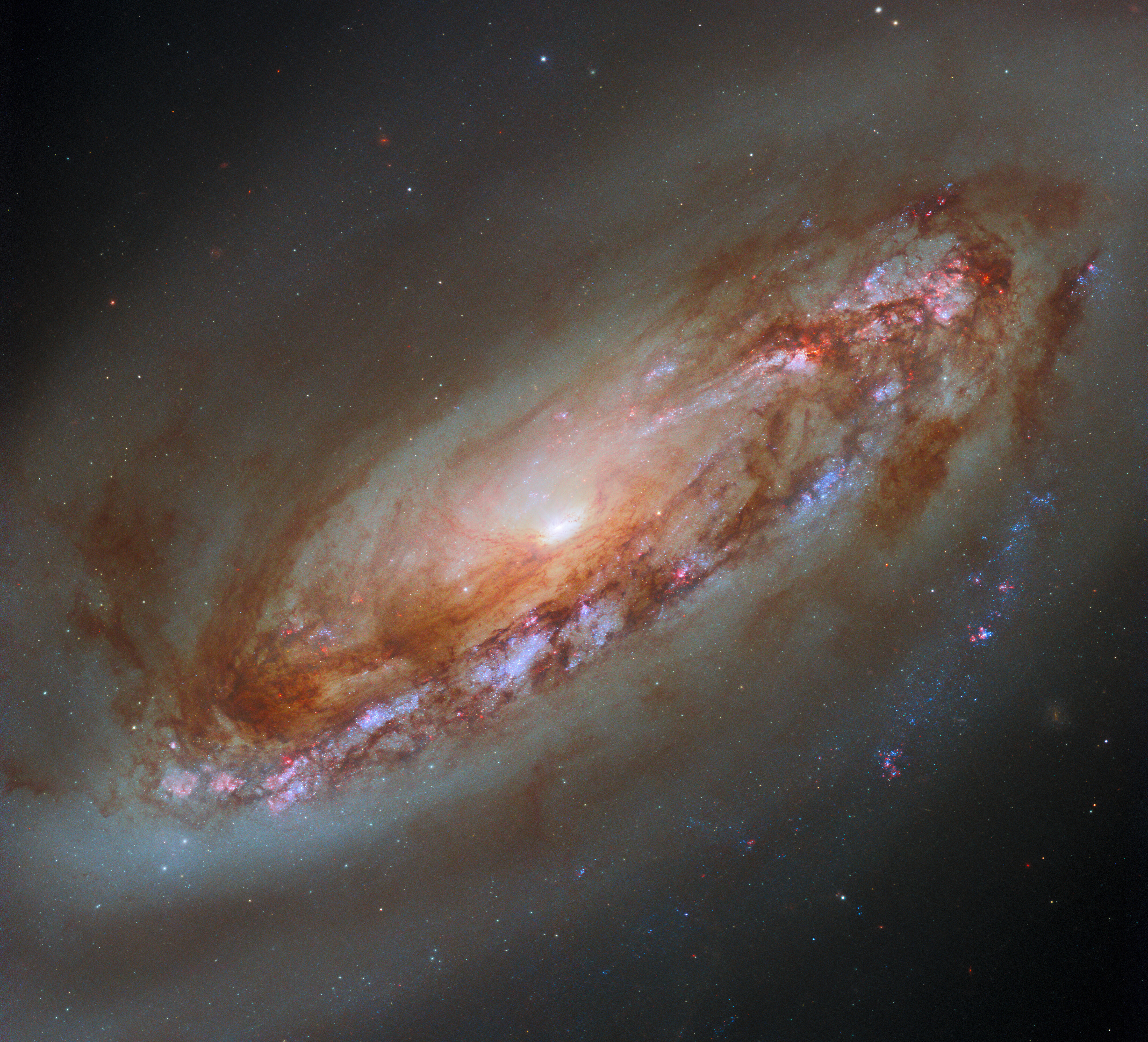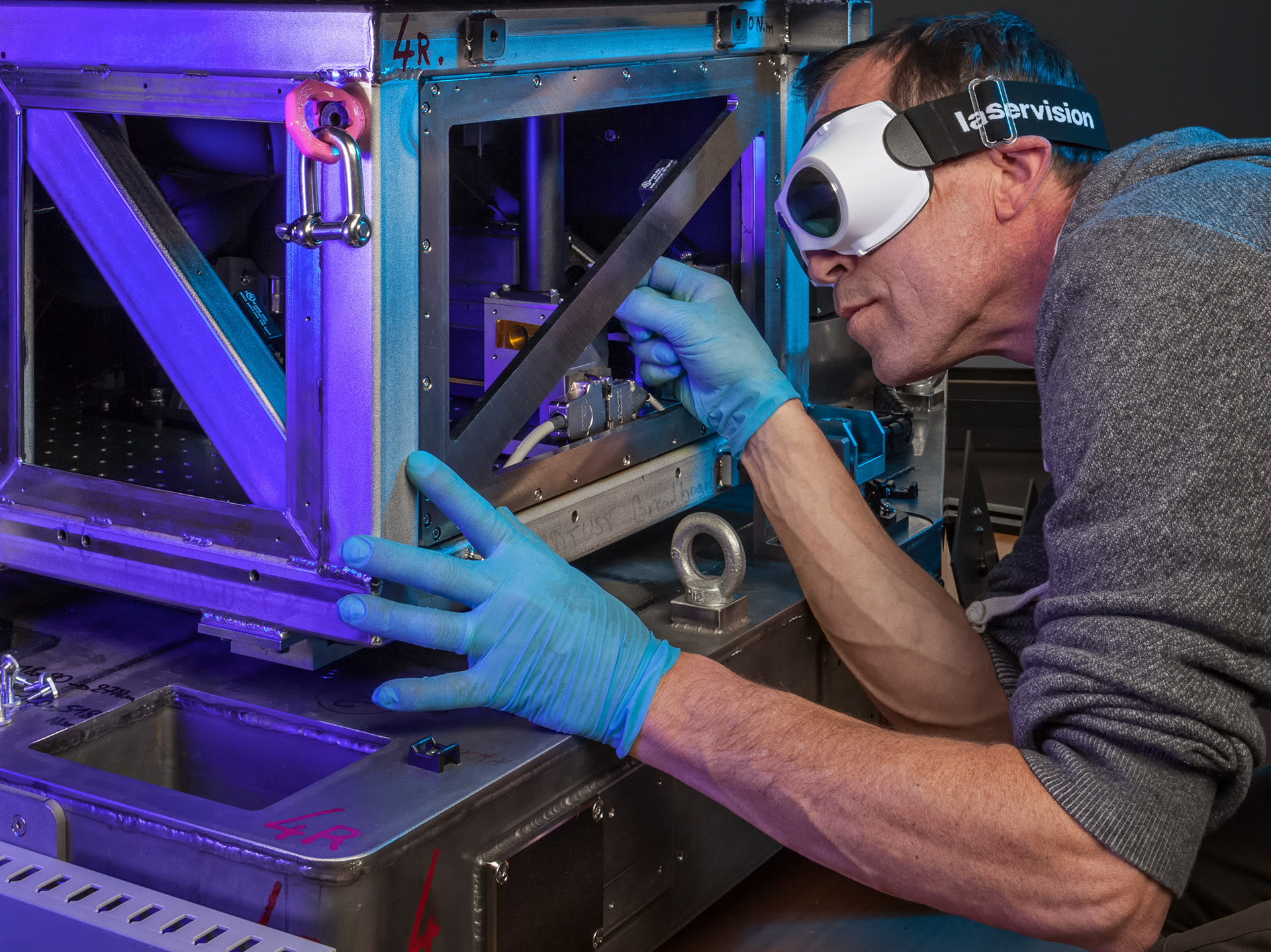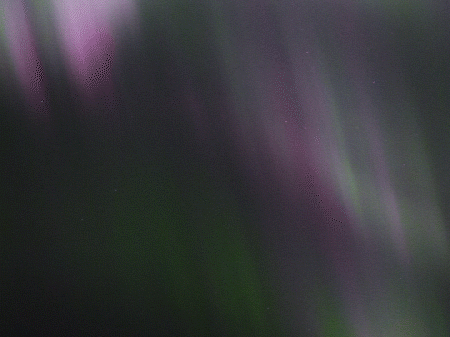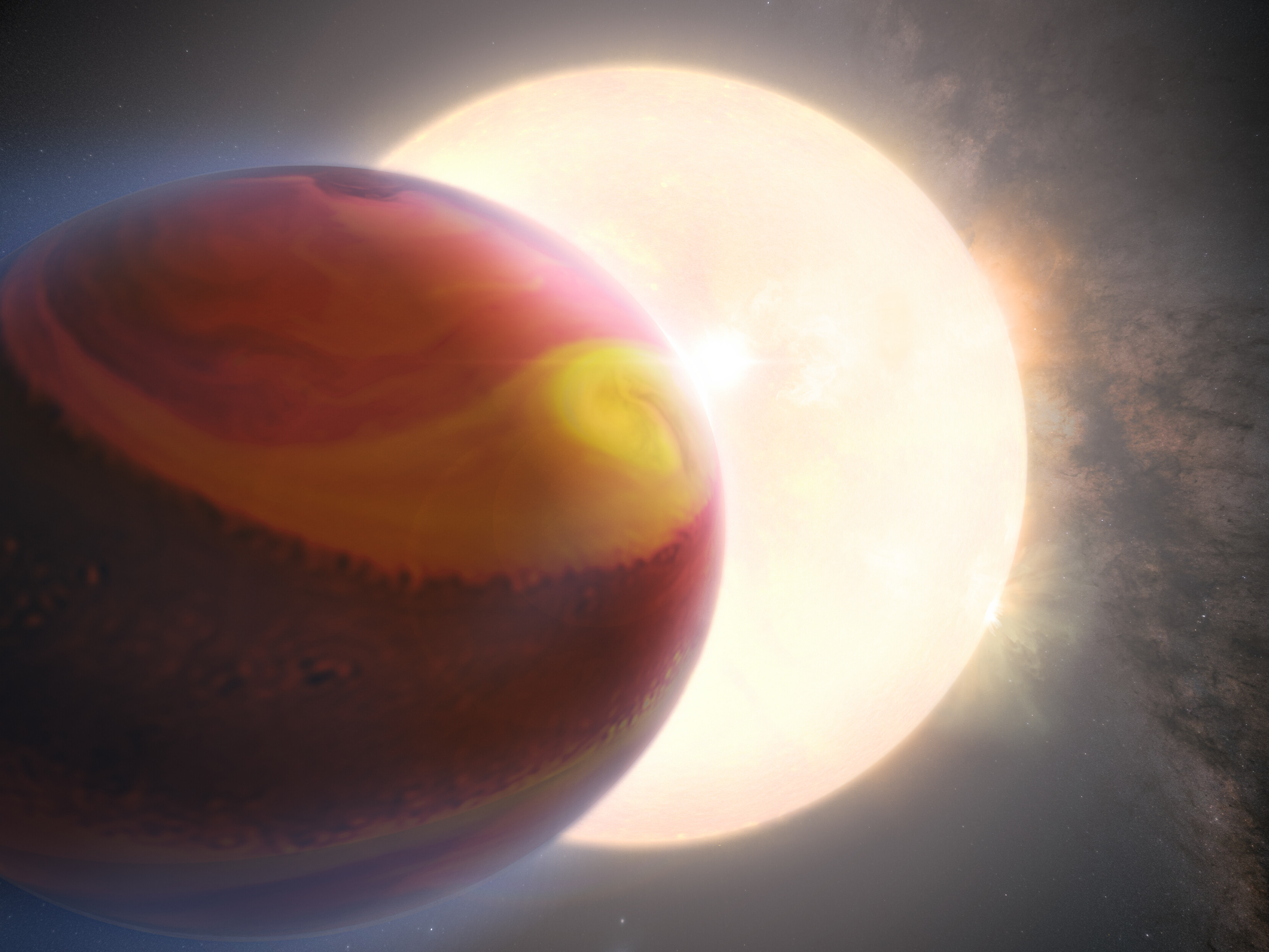
NGC 602 (NIRCam and MIRI image)- Credit: ESA/Webb, NASA & CSA, P. Zeidler, E. Sabbi, A. Nota, M. Zamani (ESA/Webb)

Image of the interacting galaxy pair NGC 5394/5 obtained with NSF’s National Optical-Infrared Astronomy Research Laboratory’s Gemini North 8-meter telescope on Hawai’i’s Maunakea using the Gemini Multi-Object Spectrograph in imaging mode. This four-color composite image has a total exposure time of 42 minutes. Credit: International Gemini Observatory/NOIRLab/NSF/AURA

M51 (MIRI image) - Credit: ESA/Webb, NASA & CSA, A. Adamo (Stockholm University) and the FEAST JWST team

Horsehead Nebula (NIRCam image) - Credit: ESA/Webb, NASA, CSA, K. Misselt (University of Arizona) and A. Abergel (IAS/University Paris-Saclay, CNRS)

Peeking into Perseus (wide field view) - Credit: ESA/Webb, NASA & CSA, A. Scholz, K. Muzic, A. Langeveld, R. Jayawardhana

Stellar sculptors in NGC 346 - Credit: ESA/Hubble & NASA, A. Nota, P. Massey, E. Sabbi, C. Murray, M. Zamani (ESA/Hubble)

Spying a spiral through a cosmic lens - Credit: ESA/Webb, NASA & CSA, G. Mahler Acknowledgement: M. A. McDonald

R Aquarii - Credit: NASA, ESA, M. Stute, M. Karovska, D. de Martin & M. Zamani (ESA/Hubble)

Webb captures detailed beauty of Ring Nebula (NIRCam image) Credit: ESA/Webb, NASA, CSA, M. Barlow, N. Cox, R. Wesson

Westerlund 1 (wide-field view) - Credit: ESA/Webb, NASA & CSA, M. Zamani (ESA/Webb), M. G. Guarcello (INAF-OAPA) and the EWOCS team

Sombrero Galaxy (Hubble35 version) - Credit: ESA/Hubble & NASA, K. Noll

This Picture of the Week revisits the Veil Nebula, a popular subject for Hubble images! This object was featured in a previous Hubble photo release, but now new processing techniques have been applied, bringing out fine details of the nebula’s delicate threads and filaments of ionised gas. To create this colourful image, observations taken by Hubble's Wide Field Camera 3 instrument through 5 different filters were used. The new post-processing methods have further enhanced details of emissions from doubly ionised oxygen (seen here in blues), ionised hydrogen and ionised nitrogen (seen here in reds). The Veil Nebula lies around 2100 light-years from Earth in the constellation of Cygnus (The Swan), making it a relatively close neighbour in astronomical terms. Only a small portion of the nebula was captured in this image. The Veil Nebula is the visible portion of the nearby Cygnus Loop, a supernova remnant formed roughly 10 000 years ago by the death of a massive star. The Veil Nebula’s progenitor star — which was 20 times the mass of the Sun — lived fast and died young, ending its life in a cataclysmic release of energy. Despite this stellar violence, the shockwaves and debris from the supernova sculpted the Veil Nebula’s delicate tracery of ionised gas — creating a scene of surprising astronomical beauty. Credit: ESA/Hubble & NASA, Z. Levay

Webb spies a multifaceted disc - Credit: ESA/Webb, NASA & CSA, Tazaki et al.

Omega Centauri - Credit: ESA/Hubble & NASA, M. Häberle (MPIA)

Lenticular dust in detail - Credit: ESA/Hubble & NASA, L. Kelsey

Nicknamed the Southern Pinwheel, Messier 83 (or NGC 5236) is a stunning face-on spiral galaxy located about 15 million light-years away in the southern constellation of Hydra. Its spiral arms are lined with dark lanes of dust and peppered with reddish, star-forming clouds of hydrogen gas. One of the deepest images ever taken of the Southern Pinwheel (combining more than 11 hours of exposure time), this view was captured with the Dark Energy Camera (DECam), which was built by the US Department of Energy (DOE) and is mounted on the Víctor M. Blanco 4-meter Telescope at Cerro Tololo Inter-American Observatory (CTIO), a Program of NSF’s NOIRLab. Numerous background galaxies, which lie much farther away than Messier 83, appear around the edges of the image. Credit: CTIO/NOIRLab/DOE/NSF/AURA Acknowledgment: M. Soraisam (University of Illinois) Image processing: Travis Rector (University of Alaska Anchorage), Mahdi Zamani & Davide de Martin

HH 211 (NIRCam image) - Credit: ESA/Webb, NASA, CSA, T. Ray (Dublin Institute for Advanced Studies)

Rosette Nebula Captured with DECam- Credit: CTIO/NOIRLab/DOE/NSF/AURA Image Processing: T.A. Rector (University of Alaska Anchorage/NSF NOIRLab), D. de Martin & M. Zamani (NSF NOIRLab)

Ghostly Stellar Tendrils of the Vela Supernova Remnant Credit: CTIO/NOIRLab/DOE/NSF/AURA Image Processing: T.A. Rector (University of Alaska Anchorage/NSF’s NOIRLab), M. Zamani & D. de Martin (NSF’s NOIRLab)

A Tarantula’s outskirts - Credit: ESA/Hubble & NASA, C. Murray

Dark Energy Camera Images Cometary Globule CG 4 Credit: CTIO/NOIRLab/DOE/NSF/AURA Image Processing: T.A. Rector (University of Alaska Anchorage/NSF’s NOIRLab), D. de Martin & M. Zamani (NSF’s NOIRLab)

Snapshot of a peculiar spiral - Credit: ESA/Hubble & NASA, J. Dalcanton, R. J. Foley (UC Santa Cruz), C. Kilpatrick

Caption: The Daniel K. Inouye Solar Telescope has produced the highest resolution image of the Sun’s surface ever taken. In this picture taken at 789nm, we can see features as small as 30km (18 miles) in size for the first time ever. The image shows a pattern of turbulent, “boiling” gas that covers the entire sun. The cell-like structures – each about the size of Texas – are the signature of violent motions that transport heat from the inside of the sun to its surface. Hot solar material (plasma) rises in the bright centers of “cells,” cools off and then sinks below the surface in dark lanes in a process known as convection. In these dark lanes we can also see the tiny, bright markers of magnetic fields. Never before seen to this clarity, these bright specks are thought to channel energy up into the outer layers of the solar atmosphere called the corona. These bright spots may be at the core of why the solar corona is more than a million degrees! This image covers an area 8,200 × 8,200 km (5,000 × 5,000 miles, 11 × 11 arcseconds). Credit: NSO/AURA/NSF

Stellar Snowflakes / Almost like snowflakes, the stars of the globular cluster NGC 6441 sparkle peacefully in the night sky, about 13 000 light-years from the Milky Way’s galactic centre. Like snowflakes, the exact number of stars in such a cluster is difficult to discern. It is estimated that together the stars weigh 1.6 million times the mass of the Sun, making NGC 6441 one of the most massive and luminous globular clusters in the Milky Way. NGC 6441 is host to four pulsars that each complete a single rotation in a few milliseconds. Also hidden within this cluster is JaFu 2, a planetary nebula. Despite its name, this has little to do with planets. A phase in the evolution of intermediate-mass stars, planetary nebulae last for only a few tens of thousands of years, the blink of an eye on astronomical timescales. There are about 150 known globular clusters in the Milky Way. Globular clusters contain some of the first stars to be produced in a galaxy, but the details of their origins and evolution still elude astronomers. Credit: ESA/Hubble & NASA, G. Piotto

M74 shines at its brightest in this combined optical/mid-infrared image, featuring data from both the NASA/ESA Hubble Space Telescope and the NASA/ESA/CSA James Webb Space Telescope. With Hubble’s venerable Advanced Camera for Surveys (ACS) and Webb’s powerful Mid-InfraRed Instrument (MIRI) capturing a range of wavelengths, this new image has remarkable depth. The red colours mark dust threaded through the arms of the galaxy, lighter oranges being areas of hotter dust. The young stars throughout the arms and the nuclear core are picked out in blue. Heavier, older stars towards the galaxy’s centre are shown in cyan and green, projecting a spooky glow from the core of the Phantom Galaxy. Bubbles of star formation are also visible in pink across the arms. Such a variety of galactic features is rare to see in a single image. Scientists combine data from telescopes operating across the electromagnetic spectrum to truly understand astronomical objects. In this way, data from Hubble and Webb compliment each other to provide a comprehensive view of the spectacular M74 galaxy. Credit: ESA/Webb, NASA & CSA, J. Lee and the PHANGS-JWST Team; ESA/Hubble & NASA, R. Chandar
![This image by the NASA/ESA/CSA James Webb Space Telescope’s Near-InfraRed Camera (NIRCam) features the central region of the Chameleon I dark molecular cloud, which resides 630 light years away. The cold, wispy cloud material (blue, centre) is illuminated in the infrared by the glow of the young, outflowing protostar Ced 110 IRS 4 (orange, upper left). The light from numerous background stars, seen as orange dots behind the cloud, can be used to detect ices in the cloud, which absorb the starlight passing through them. An international team of astronomers has reported the discovery of diverse ices in the darkest, coldest regions of a molecular cloud measured to date by studying this region. This result allows astronomers to examine the simple icy molecules that will be incorporated into future exoplanets, while opening a new window on the origin of more complex molecules that are the first step in the creation of the building blocks of life. [Image Description: A large, dark cloud is contained within the frame. In its top half it is textured like smoke and has wispy gaps, while at the bottom and at the sides it fades gradually out of view. On the left are several orange stars: three each with six large spikes, and one behind the cloud which colours it pale blue and orange. Many tiny stars are visible, and the background is black.] Credit: NASA, ESA, CSA, and M. Zamani (ESA/Webb); Science: F. Sun (Steward Observatory), Z. Smith (Open University), and the Ice Age ERS Team.](data:image/gif;base64,R0lGODlhAQABAIAAAAAAAP///yH5BAEAAAAALAAAAAABAAEAAAIBRAA7)
This image by the NASA/ESA/CSA James Webb Space Telescope’s Near-InfraRed Camera (NIRCam) features the central region of the Chameleon I dark molecular cloud, which resides 630 light years away. The cold, wispy cloud material (blue, centre) is illuminated in the infrared by the glow of the young, outflowing protostar Ced 110 IRS 4 (orange, upper left). The light from numerous background stars, seen as orange dots behind the cloud, can be used to detect ices in the cloud, which absorb the starlight passing through them. An international team of astronomers has reported the discovery of diverse ices in the darkest, coldest regions of a molecular cloud measured to date by studying this region. This result allows astronomers to examine the simple icy molecules that will be incorporated into future exoplanets, while opening a new window on the origin of more complex molecules that are the first step in the creation of the building blocks of life. [Image Description: A large, dark cloud is contained within the frame. In its top half it is textured like smoke and has wispy gaps, while at the bottom and at the sides it fades gradually out of view. On the left are several orange stars: three each with six large spikes, and one behind the cloud which colours it pale blue and orange. Many tiny stars are visible, and the background is black.] Credit: NASA, ESA, CSA, and M. Zamani (ESA/Webb); Science: F. Sun (Steward Observatory), Z. Smith (Open University), and the Ice Age ERS Team.

This stunning image features NGC 3198, a galaxy that lies about 47 million light-years away in the constellation Ursa Major. This image was taken with the Mosaic instrument on the 4-meter Nicholas U. Mayall Telescope at Kitt Peak National Observatory, a Program of NSF’s NOIRLab, and shows the full extent of the galaxy, from the bright central bulge to the tenuous outer reaches of the tightly-wound spiral arms. Almost all the objects lurking in the background are galaxies or galaxy clusters — a sea of distant galaxies of all shapes, sizes, and orientations. Accurately measuring the distance to an astronomical object — everything from our own Sun to galaxies such as NGC 3198 — is an age-old challenge for astronomers, and requires a combination of measurements and methods. The galaxy at the heart of this image has played a part in this astronomical undertaking by allowing astronomers to calibrate astronomical distance measurements based on a type of variable star known as a Cepheid variable. Credit: KPNO/NOIRLab/NSF/AURA. Acknowledgments: PI: M T. Patterson (New Mexico State University) Image processing: Travis Rector (University of Alaska Anchorage), Mahdi Zamani & Davide de Martin

This image showing the entire disk of Jupiter in infrared light was compiled from a mosaic of nine separate pointings observed by the international Gemini Observatory, a program of NSF’s NOIRLab on 29 May 2019. From a “lucky imaging” set of 38 exposures taken at each pointing, the research team selected the sharpest 10%, combining them to image one ninth of Jupiter’s disk. Stacks of exposures at the nine pointings were then combined to make one clear, global view of the planet. Even though it only takes a few seconds for Gemini to create each image in a lucky imaging set, completing all 38 exposures in a set can take minutes — long enough for features to rotate noticeably across the disk. In order to compare and combine the images, they are first mapped to their actual latitude and longitude on Jupiter, using the limb, or edge of the disk, as a reference. Once the mosaics are compiled into a full disk, the final images are some of the highest-resolution infrared views of Jupiter ever taken from the ground. Credit: International Gemini Observatory/NOIRLab/NSF/AURA, M.H. Wong (UC Berkeley) and team Acknowledgments: Mahdi Zamani

A 50-trillion-km (33-trillion-mile, or 5 light-year) long section of the western wall in the Carina Nebula, as observed with adaptive optics on the Gemini South telescope. This mountainous section of the nebula reveals a number of unusual structures including a long series of parallel ridges that could be produced by a magnetic field, a remarkable almost perfectly smooth wave, and fragments that appear to be in the process of being sheared off the cloud by a strong wind. There is also evidence for a jet of material ejected from a newly-formed star. The exquisite detail seen in the image is in part due to a technology known as adaptive optics, which resulted in a ten-fold improvement in the resolution of the research team’s observations. Credit: International Gemini Observatory/NOIRLab/NSF/AURA Acknowledgment: PI: Patrick Hartigan (Rice University) Image processing: Patrick Hartigan (Rice University), Travis Rector (University of Alaska Anchorage), Mahdi Zamani & Davide de Martin

Comet-like stars This spectacular Picture of the Week was produced from data gathered by the Atacama Large Millimeter/submillimeter Array (ALMA) in Chile, combined with data from the NASA/ESA Hubble Space Telescope. It shows a cluster of stars named Westerlund 1, one of the most massive young star clusters known to reside in the Milky Way. Excitingly, it also shows the comet-like “tails” of material stretching away from some of the giant stars in Westerlund 1. Such tails are formed in the thick, relentless winds that pour from the cluster’s stellar residents, carrying material outwards. This phenomenon is similar to how comets get their famous and beautiful tails. Comet tails in the Solar System are driven away from the nucleus of their parent comet by a wind of particles that streams out from the Sun. Consequently comet tails always point away from our Sun. Similarly, the tails of the huge red stars shown in this image point away from the core of the cluster, likely the result of powerful cluster winds generated by the hundreds of hot and massive stars found towards the centre of Westerlund 1. These massive structures cover large distances and indicate the dramatic effect the environment can have on how the stars form and evolve. These comet-like tails were detected during an ALMA study of Westerlund 1 that aimed to explore the cluster’s constituent stars and figure out how, and at what rate, they lose their mass. The cluster is known to host a large amount of massive stars, many of them intriguing and rare types, making it of great interest and use to astronomers wishing to understand the myriad stars in our galaxy. Credit: ESO/D. Fenech et al.; ALMA (ESO/NAOJ/NRAO)

Cosmic cloudscape - Credit: ESA/Hubble & NASA, C. Murray

This detailed image features Abell 3827, a galaxy cluster that offers a wealth of exciting possibilities for study. It was observed by Hubble in order to study dark matter, which is one of the greatest puzzles cosmologists face today. The science team used Hubble’s Advanced Camera for Surveys (ACS) and Wide Field Camera 3 (WFC3) to complete their observations. The two cameras have different specifications and can observe different parts of the electromagnetic spectrum, so using them both allowed the astronomers to collect more complete information. Abell 3827 has also been observed previously by Hubble, because of the interesting gravitational lens at its core. Looking at this cluster of hundreds of galaxies, it is amazing to recall that until less than 100 years ago, many astronomers believed that the Milky Way was the only galaxy in the Universe. The possibility of other galaxies had been debated previously, but the matter was not truly settled until Edwin Hubble confirmed that the Great Andromeda Nebula was in fact far too distant to be part of the Milky Way. The Great Andromeda Nebula became the Andromeda Galaxy, and astronomers recognised that our Universe was much, much bigger than humanity had imagined. We can only imagine how Edwin Hubble — after whom the Hubble Space Telescope was named — would have felt if he’d seen this spectacular image of Abell 3827. Credit: ESA/Hubble & NASA, R. Massey
![The bright variable star V 372 Orionis takes centre stage in this image from the NASA/ESA Hubble Space Telescope, which has also captured a smaller companion star in the upper left of this image. Both stars lie in the Orion Nebula, a colossal region of star formation roughly 1450 light years from Earth. V 372 Orionis is a particular type of variable star known as an Orion Variable. These young stars experience some tempestuous moods and growing pains, which are visible to astronomers as irregular variations in luminosity. Orion Variables are often associated with diffuse nebulae, and V 372 Orionis is no exception; the patchy gas and dust of the Orion Nebula pervade this scene. This image overlays data from two of Hubble’s instruments. Data from the Advanced Camera for Surveys and Wide Field Camera 3 at infrared and visible wavelengths were layered to reveal rich details of this corner of the Orion Nebula. Hubble also left its own subtle signature on this astronomical portrait in the form of the diffraction spikes surrounding the bright stars. These prominent artefacts are created by starlight interacting with Hubble’s inner workings, and as a result they reveal hints of Hubble’s structure. The four spikes surrounding the stars in this image are created by four vanes inside Hubble supporting the telescope’s secondary mirror. The diffraction spikes of the NASA/ESA/CSA James Webb Space Telescope, on the other hand, are six-pointed as a result of Webb’s hexagonal mirror segments and 3-legged support structure for the secondary mirror. [Image description: Two very bright stars with cross-shaped diffraction spikes are prominent: the larger is slightly lower-right of centre, the smaller lies towards the upper-left corner. Small red stars with short diffraction spikes are scattered around them. The background is covered nearly completely by gas: smoky, bright blue gas around the larger star in the centre and lower-right, and wispier red gas elsewhere.] Credit: ESA/Hubble & NASA, J. Bally, M. Robberto](data:image/gif;base64,R0lGODlhAQABAIAAAAAAAP///yH5BAEAAAAALAAAAAABAAEAAAIBRAA7)
The bright variable star V 372 Orionis takes centre stage in this image from the NASA/ESA Hubble Space Telescope, which has also captured a smaller companion star in the upper left of this image. Both stars lie in the Orion Nebula, a colossal region of star formation roughly 1450 light years from Earth. V 372 Orionis is a particular type of variable star known as an Orion Variable. These young stars experience some tempestuous moods and growing pains, which are visible to astronomers as irregular variations in luminosity. Orion Variables are often associated with diffuse nebulae, and V 372 Orionis is no exception; the patchy gas and dust of the Orion Nebula pervade this scene. This image overlays data from two of Hubble’s instruments. Data from the Advanced Camera for Surveys and Wide Field Camera 3 at infrared and visible wavelengths were layered to reveal rich details of this corner of the Orion Nebula. Hubble also left its own subtle signature on this astronomical portrait in the form of the diffraction spikes surrounding the bright stars. These prominent artefacts are created by starlight interacting with Hubble’s inner workings, and as a result they reveal hints of Hubble’s structure. The four spikes surrounding the stars in this image are created by four vanes inside Hubble supporting the telescope’s secondary mirror. The diffraction spikes of the NASA/ESA/CSA James Webb Space Telescope, on the other hand, are six-pointed as a result of Webb’s hexagonal mirror segments and 3-legged support structure for the secondary mirror. [Image description: Two very bright stars with cross-shaped diffraction spikes are prominent: the larger is slightly lower-right of centre, the smaller lies towards the upper-left corner. Small red stars with short diffraction spikes are scattered around them. The background is covered nearly completely by gas: smoky, bright blue gas around the larger star in the centre and lower-right, and wispier red gas elsewhere.] Credit: ESA/Hubble & NASA, J. Bally, M. Robberto

This stunning image by the NASA/ESA Hubble Space Telescope features the spiral galaxy NGC 5643 in the constellation of Lupus (The Wolf). Looking this good isn’t easy; thirty different exposures, for a total of 9 hours observation time, together with the high resolution and clarity of Hubble, were needed to produce an image of such high level of detail and of beauty. NGC 5643 is about 60 million light-years away from Earth and has been the host of a recent supernova event (not visible in this latest image). This supernova (2017cbv) was a specific type in which a white dwarf steals so much mass from a companion star that it becomes unstable and explodes. The explosion releases significant amounts of energy and lights up that part of the galaxy. The observation was proposed by Adam Riess, who was awarded a Nobel Laureate in physics 2011 for his contributions to the discovery of the accelerating expansion of the Universe, alongside Saul Perlmutter and Brian Schmidt. Credit: ESA/Hubble & NASA, A. Riess et al. Acknowledgement: Mahdi Zamani
![A portion of the open cluster NGC 6530 appears as a roiling wall of smoke studded with stars in this image from the NASA/ESA Hubble Space Telescope. NGC 6530 is a collection of several thousand stars lying around 4350 light-years from Earth in the constellation Sagittarius. The cluster is set within the larger Lagoon Nebula, a gigantic interstellar cloud of gas and dust. It is the nebula that gives this image its distinctly smokey appearance; clouds of interstellar gas and dust stretch from one side of this image to the other. Astronomers investigated NGC 6530 using Hubble’s Advanced Camera for Surveys and Wide Field Planetary Camera 2. They scoured the region in the hope of finding new examples of proplyds, a particular class of illuminated protoplanetary discs surrounding newborn stars. The vast majority of proplyds have been found in only one region, the nearby Orion Nebula. This makes understanding their origin and lifetimes in other astronomical environments challenging. Hubble’s ability to observe at infrared wavelengths — particularly with Wide Field Camera 3— have made it an indispensable tool for understanding starbirth and the origin of exoplanetary systems. In particular, Hubble was crucial to investigations of the proplyds around newly born stars in the Orion Nebula. The new NASA/ESA/CSA James Webb Space Telescope’s unprecedented observational capabilities at infrared wavelengths will complement Hubble observations by allowing astronomers to peer through the dusty envelopes around newly born stars and investigate the faintest, earliest stages of starbirth. [Image description: Clouds of gas cover the entire view, in a variety of bold colours. In the centre the gas is brighter and very textured, resembling dense smoke. Around the edges it is more sparse and faint. Several small, bright blue stars are scattered over the nebula.] Links Video of A Cosmic Smokescreen Credit: ESA/Hubble & NASA, ESO, O. De Marco Acknowledgement: M. H. Özsaraç](data:image/gif;base64,R0lGODlhAQABAIAAAAAAAP///yH5BAEAAAAALAAAAAABAAEAAAIBRAA7)
A portion of the open cluster NGC 6530 appears as a roiling wall of smoke studded with stars in this image from the NASA/ESA Hubble Space Telescope. NGC 6530 is a collection of several thousand stars lying around 4350 light-years from Earth in the constellation Sagittarius. The cluster is set within the larger Lagoon Nebula, a gigantic interstellar cloud of gas and dust. It is the nebula that gives this image its distinctly smokey appearance; clouds of interstellar gas and dust stretch from one side of this image to the other. Astronomers investigated NGC 6530 using Hubble’s Advanced Camera for Surveys and Wide Field Planetary Camera 2. They scoured the region in the hope of finding new examples of proplyds, a particular class of illuminated protoplanetary discs surrounding newborn stars. The vast majority of proplyds have been found in only one region, the nearby Orion Nebula. This makes understanding their origin and lifetimes in other astronomical environments challenging. Hubble’s ability to observe at infrared wavelengths — particularly with Wide Field Camera 3— have made it an indispensable tool for understanding starbirth and the origin of exoplanetary systems. In particular, Hubble was crucial to investigations of the proplyds around newly born stars in the Orion Nebula. The new NASA/ESA/CSA James Webb Space Telescope’s unprecedented observational capabilities at infrared wavelengths will complement Hubble observations by allowing astronomers to peer through the dusty envelopes around newly born stars and investigate the faintest, earliest stages of starbirth. [Image description: Clouds of gas cover the entire view, in a variety of bold colours. In the centre the gas is brighter and very textured, resembling dense smoke. Around the edges it is more sparse and faint. Several small, bright blue stars are scattered over the nebula.] Links Video of A Cosmic Smokescreen Credit: ESA/Hubble & NASA, ESO, O. De Marco Acknowledgement: M. H. Özsaraç

Gemini North Back On Sky With Dazzling Image of Supernova in the Pinwheel Galaxy - Credit: International Gemini Observatory/NOIRLab/NSF/AURA Image Processing: J. Miller (Gemini Observatory/NSF NOIRLab), M. Rodriguez (Gemini Observatory/NSF NOIRLab), M. Zamani (NSF NOIRLab), T.A. Rector (University of Alaska Anchorage/NSF NOIRLab) & D. de Martin (NSF NOIRLab). Astronomical processing done with DRAGONS 3.1.

Moving heart of the Crab Nebula / While many other images of the famous Crab Nebula have focused on the filaments in the outer part of the nebula, this image shows the very heart of the Crab Nebula including the central neutron star — it is the rightmost of the two bright stars near the centre of this image. The rapid motion of the material nearest to the central star is revealed by the subtle rainbow of colours in this time-lapse image, the rainbow effect being due to the movement of material over the time between one image and another. Credit: NASA, ESA
![The scattered stars of the globular cluster NGC 6355 are strewn across this image from the NASA/ESA Hubble Space Telescope. This globular cluster lies less than 50,000 light-years from Earth in the Ophiuchus constellation. NGC 6355 is a galactic globular cluster that resides in our Milky Way galaxy's inner regions. Globular clusters are stable, tightly bound clusters of tens of thousands to millions of stars, and can be found in all types of galaxies. Their dense populations of stars and mutual gravitational attraction give these clusters a roughly spherical shape, with a bright concentration of stars surrounded by an increasingly sparse sprinkling of stars. The dense, bright core of NGC 6355 was picked out in crystal-clear detail by Hubble in this image, and is the crowded area of stars towards the centre of this image. With its vantage point above the distortions of the atmosphere, Hubble has revolutionised the study of globular clusters. It is almost impossible to distinguish the stars in globular clusters from one another with ground-based telescopes, but astronomers have been able to use Hubble to study the constituent stars of globular clusters in detail. This Hubble image of NGC 6355 contains data from both the Advanced Camera for Surveys and Wide Field Camera 3. [Image description: A dense collection of stars covers the view. Towards the centre the stars become even more dense in a circular region, and also more blue. Around the edges there are some redder foreground stars, and many small stars in the background.] Credit: ESA/Hubble & NASA, E. Noyola, R. Cohen](data:image/gif;base64,R0lGODlhAQABAIAAAAAAAP///yH5BAEAAAAALAAAAAABAAEAAAIBRAA7)
The scattered stars of the globular cluster NGC 6355 are strewn across this image from the NASA/ESA Hubble Space Telescope. This globular cluster lies less than 50,000 light-years from Earth in the Ophiuchus constellation. NGC 6355 is a galactic globular cluster that resides in our Milky Way galaxy's inner regions. Globular clusters are stable, tightly bound clusters of tens of thousands to millions of stars, and can be found in all types of galaxies. Their dense populations of stars and mutual gravitational attraction give these clusters a roughly spherical shape, with a bright concentration of stars surrounded by an increasingly sparse sprinkling of stars. The dense, bright core of NGC 6355 was picked out in crystal-clear detail by Hubble in this image, and is the crowded area of stars towards the centre of this image. With its vantage point above the distortions of the atmosphere, Hubble has revolutionised the study of globular clusters. It is almost impossible to distinguish the stars in globular clusters from one another with ground-based telescopes, but astronomers have been able to use Hubble to study the constituent stars of globular clusters in detail. This Hubble image of NGC 6355 contains data from both the Advanced Camera for Surveys and Wide Field Camera 3. [Image description: A dense collection of stars covers the view. Towards the centre the stars become even more dense in a circular region, and also more blue. Around the edges there are some redder foreground stars, and many small stars in the background.] Credit: ESA/Hubble & NASA, E. Noyola, R. Cohen

Eagle Nebula (Hubble35 version) - Credit: ESA/Hubble & NASA, K. Noll
![This image from the NASA/ESA/CSA James Webb Space Telescope depicts IC 1623, an entwined pair of interacting galaxies which lies around 270 million light-years from Earth in the constellation Cetus. The two galaxies in IC 1623 are plunging headlong into one another in a process known as a galaxy merger. Their collision has ignited a frenzied spate of star formation known as a starburst, creating new stars at a rate more than twenty times that of the Milky Way galaxy. This interacting galaxy system is particularly bright at infrared wavelengths, making it a perfect proving ground for Webb’s ability to study luminous galaxies. A team of astronomers captured IC 1623 across the infrared portions of the electromagnetic spectrum using a trio of Webb’s cutting-edge scientific instruments: MIRI, NIRSpec, and NIRCam. In so doing, they provided an abundance of data that will allow the astronomical community at large to fully explore how Webb’s unprecedented capabilities will help to unravel the complex interactions in galactic ecosystems. These observations are also accompanied by data from other observatories, including the NASA/ESA Hubble Space Telescope, and will help set the stage for future observations of galactic systems with Webb. The merger of these two galaxies has long been of interest to astronomers, and has previously been imaged by Hubble and by other space telescopes. The ongoing, extreme starburst causes intense infrared emission, and the merging galaxies may well be in the process of forming a supermassive black hole. A thick band of dust has blocked these valuable insights from the view of telescopes like Hubble. However, Webb’s infrared sensitivity and its impressive resolution at those wavelengths allows it to see past the dust and has resulted in the spectacular image above, a combination of MIRI and NIRCam imagery. The luminous core of the galaxy merger turns out to be both very bright and highly compact, so much so that Webb’s diffraction spikes appear atop the galaxy in this image. The 8-pronged, snowflake-like diffraction spikes are created by the interaction of starlight with the physical structure of the telescope. The spiky quality of Webb’s observations is particularly noticeable in images containing bright stars, such as Webb’s first deep field image. MIRI was contributed by ESA and NASA, with the instrument designed and built by a consortium of nationally funded European Institutes (The MIRI European Consortium) in partnership with JPL and the University of Arizona. NIRSpec was built for the European Space Agency (ESA) by a consortium of European companies led by Airbus Defence and Space (ADS) with NASA’s Goddard Space Flight Center providing its detector and micro-shutter subsystems. Results based on this observation of IC 1623 have been published in the Astrophysical Journal. [Image description: The two galaxies swirl into a single chaotic object in the centre. Long, blue spiral arms stretch vertically, faint at the edges. Hot gas spreads horizontally over that, mainly bright red with many small gold spots of star formation. The core of the merging galaxies is very bright and radiates eight large, golden diffraction spikes. The background is black, with many tiny galaxies in orange and blue.] Credit: ESA/Webb, NASA & CSA, L. Armus & A. Evans Acknowledgement: R. Colombari](data:image/gif;base64,R0lGODlhAQABAIAAAAAAAP///yH5BAEAAAAALAAAAAABAAEAAAIBRAA7)
This image from the NASA/ESA/CSA James Webb Space Telescope depicts IC 1623, an entwined pair of interacting galaxies which lies around 270 million light-years from Earth in the constellation Cetus. The two galaxies in IC 1623 are plunging headlong into one another in a process known as a galaxy merger. Their collision has ignited a frenzied spate of star formation known as a starburst, creating new stars at a rate more than twenty times that of the Milky Way galaxy. This interacting galaxy system is particularly bright at infrared wavelengths, making it a perfect proving ground for Webb’s ability to study luminous galaxies. A team of astronomers captured IC 1623 across the infrared portions of the electromagnetic spectrum using a trio of Webb’s cutting-edge scientific instruments: MIRI, NIRSpec, and NIRCam. In so doing, they provided an abundance of data that will allow the astronomical community at large to fully explore how Webb’s unprecedented capabilities will help to unravel the complex interactions in galactic ecosystems. These observations are also accompanied by data from other observatories, including the NASA/ESA Hubble Space Telescope, and will help set the stage for future observations of galactic systems with Webb. The merger of these two galaxies has long been of interest to astronomers, and has previously been imaged by Hubble and by other space telescopes. The ongoing, extreme starburst causes intense infrared emission, and the merging galaxies may well be in the process of forming a supermassive black hole. A thick band of dust has blocked these valuable insights from the view of telescopes like Hubble. However, Webb’s infrared sensitivity and its impressive resolution at those wavelengths allows it to see past the dust and has resulted in the spectacular image above, a combination of MIRI and NIRCam imagery. The luminous core of the galaxy merger turns out to be both very bright and highly compact, so much so that Webb’s diffraction spikes appear atop the galaxy in this image. The 8-pronged, snowflake-like diffraction spikes are created by the interaction of starlight with the physical structure of the telescope. The spiky quality of Webb’s observations is particularly noticeable in images containing bright stars, such as Webb’s first deep field image. MIRI was contributed by ESA and NASA, with the instrument designed and built by a consortium of nationally funded European Institutes (The MIRI European Consortium) in partnership with JPL and the University of Arizona. NIRSpec was built for the European Space Agency (ESA) by a consortium of European companies led by Airbus Defence and Space (ADS) with NASA’s Goddard Space Flight Center providing its detector and micro-shutter subsystems. Results based on this observation of IC 1623 have been published in the Astrophysical Journal. [Image description: The two galaxies swirl into a single chaotic object in the centre. Long, blue spiral arms stretch vertically, faint at the edges. Hot gas spreads horizontally over that, mainly bright red with many small gold spots of star formation. The core of the merging galaxies is very bright and radiates eight large, golden diffraction spikes. The background is black, with many tiny galaxies in orange and blue.] Credit: ESA/Webb, NASA & CSA, L. Armus & A. Evans Acknowledgement: R. Colombari

This image of the spiral galaxy Messier 106, or NGC 4258, was taken with the Nicholas U. Mayall 4-meter Telescope at Kitt Peak National Observatory, a Program of NSF’s NOIRLab. A popular target for amateur astronomers, Messier 106 can also be spotted with a small telescope in the constellation Canes Venatici. This view captures the entire galaxy, detailing the glowing spiral arms, wisps of gas, and dust lanes at the center of Messier 106 as well as the leisurely twisting bands of stars at the galaxy’s outer edges. Two dwarf galaxies also appear in the image: NGC 4248 in the lower right and UGC 7358 in the lower left. Credit: KPNO/NOIRLab/NSF/AURA Acknowledgment: PI: M.T. Patterson (New Mexico State University) Image processing: T.A. Rector (University of Alaska Anchorage), M. Zamani & D. de Martin
![This image is dominated by NGC 7469, a luminous, face-on spiral galaxy approximately 90 000 light-years in diameter that lies roughly 220 million light-years from Earth in the constellation Pegasus. Its companion galaxy IC 5283 is partly visible in the lower left portion of this image. This spiral galaxy has recently been studied as part of the Great Observatories All-sky LIRGs Survey (GOALS) Early Release Science program with the NASA/ESA/CSA James Webb Space Telescope, which aims to study the physics of star formation, black hole growth, and feedback in four nearby, merging luminous infrared galaxies. Other galaxies studied as part of the survey include previous ESA/Webb Pictures of the Month II ZW 096 and IC 1623. NGC 7469 is home to an active galactic nucleus (AGN), which is an extremely bright central region that is dominated by the light emitted by dust and gas as it falls into the galaxy’s central black hole. This galaxy provides astronomers with the unique opportunity to study the relationship between AGNs and starburst activity because this particular object hosts an AGN that is surrounded by a starburst ring at a distance of a mere 1500 light-years. While NGC 7469 is one of the best studied AGNs in the sky, the compact nature of this system and the presence of a great deal of dust have made it difficult for scientists to achieve both the resolution and sensitivity needed to study this relationship in the infrared. Now, with Webb, astronomers can explore the galaxy’s starburst ring, the central AGN, and the gas and dust in between. Using Webb’s MIRI, NIRCam and NIRspec instruments to obtain images and spectra of NGC 7469 in unprecedented detail, the GOALS team has uncovered a number of details about the object. This includes very young star-forming clusters never seen before, as well as pockets of very warm, turbulent molecular gas, and direct evidence for the destruction of small dust grains within a few hundred light-years of the nucleus — proving that the AGN is impacting the surrounding interstellar medium. Furthermore, highly ionised, diffuse atomic gas seems to be exiting the nucleus at roughly 6.4 million kilometres per hour — part of a galactic outflow that had previously been identified, but is now revealed in stunning detail with Webb. With analysis of the rich Webb datasets still underway, additional secrets of this local AGN and starburst laboratory are sure to be revealed. A prominent feature of this image is the striking six-pointed star that perfectly aligns with the heart of NGC 7469. Unlike the galaxy, this is not a real celestial object, but an imaging artifact known as a diffraction spike, caused by the bright, unresolved AGN. Diffraction spikes are patterns produced as light bends around the sharp edges of a telescope. Webb’s primary mirror is composed of hexagonal segments that each contain edges for light to diffract against, giving six bright spikes. There are also two shorter, fainter spikes, which are created by diffraction from the vertical strut that helps support Webb’s secondary mirror. [Image Description: This image shows a spiral galaxy that is dominated by a bright central region. The galaxy has blue-purple hues with orange-red regions filled with stars. Also visible is large diffraction spike, which appears as a star pattern over the central region of the galaxy. Lots of stars and galaxies fill the background scene.] Credit: ESA/Webb, NASA & CSA, L. Armus, A. S. Evans](data:image/gif;base64,R0lGODlhAQABAIAAAAAAAP///yH5BAEAAAAALAAAAAABAAEAAAIBRAA7)
This image is dominated by NGC 7469, a luminous, face-on spiral galaxy approximately 90 000 light-years in diameter that lies roughly 220 million light-years from Earth in the constellation Pegasus. Its companion galaxy IC 5283 is partly visible in the lower left portion of this image. This spiral galaxy has recently been studied as part of the Great Observatories All-sky LIRGs Survey (GOALS) Early Release Science program with the NASA/ESA/CSA James Webb Space Telescope, which aims to study the physics of star formation, black hole growth, and feedback in four nearby, merging luminous infrared galaxies. Other galaxies studied as part of the survey include previous ESA/Webb Pictures of the Month II ZW 096 and IC 1623. NGC 7469 is home to an active galactic nucleus (AGN), which is an extremely bright central region that is dominated by the light emitted by dust and gas as it falls into the galaxy’s central black hole. This galaxy provides astronomers with the unique opportunity to study the relationship between AGNs and starburst activity because this particular object hosts an AGN that is surrounded by a starburst ring at a distance of a mere 1500 light-years. While NGC 7469 is one of the best studied AGNs in the sky, the compact nature of this system and the presence of a great deal of dust have made it difficult for scientists to achieve both the resolution and sensitivity needed to study this relationship in the infrared. Now, with Webb, astronomers can explore the galaxy’s starburst ring, the central AGN, and the gas and dust in between. Using Webb’s MIRI, NIRCam and NIRspec instruments to obtain images and spectra of NGC 7469 in unprecedented detail, the GOALS team has uncovered a number of details about the object. This includes very young star-forming clusters never seen before, as well as pockets of very warm, turbulent molecular gas, and direct evidence for the destruction of small dust grains within a few hundred light-years of the nucleus — proving that the AGN is impacting the surrounding interstellar medium. Furthermore, highly ionised, diffuse atomic gas seems to be exiting the nucleus at roughly 6.4 million kilometres per hour — part of a galactic outflow that had previously been identified, but is now revealed in stunning detail with Webb. With analysis of the rich Webb datasets still underway, additional secrets of this local AGN and starburst laboratory are sure to be revealed. A prominent feature of this image is the striking six-pointed star that perfectly aligns with the heart of NGC 7469. Unlike the galaxy, this is not a real celestial object, but an imaging artifact known as a diffraction spike, caused by the bright, unresolved AGN. Diffraction spikes are patterns produced as light bends around the sharp edges of a telescope. Webb’s primary mirror is composed of hexagonal segments that each contain edges for light to diffract against, giving six bright spikes. There are also two shorter, fainter spikes, which are created by diffraction from the vertical strut that helps support Webb’s secondary mirror. [Image Description: This image shows a spiral galaxy that is dominated by a bright central region. The galaxy has blue-purple hues with orange-red regions filled with stars. Also visible is large diffraction spike, which appears as a star pattern over the central region of the galaxy. Lots of stars and galaxies fill the background scene.] Credit: ESA/Webb, NASA & CSA, L. Armus, A. S. Evans

The emission nebula Sh2-54 glows brightly in this image from the SMARTS 0.9-meter Telescope at Cerro Tololo Inter-American Observatory, a Program of NSF’s NOIRLab. Gathering the fine details of this particular image required almost twenty minutes of observations and three different wavelength filters. Situated within the constellation of Serpens (The Serpent), Sh2-54 forms part of a much wider nebulosity which includes the famous Eagle Nebula. Serpens is a unique constellation, the only one of the official 88 used today that is split into two unconnected parts: Serpens Caput — the Serpent’s Head — and Serpens Cauda — The Serpent’s Tail. Credit: CTIO/NOIRLab/NSF/AURA Acknowledgment: Image processing: Travis Rector (University of Alaska Anchorage), Mahdi Zamani & Davide de Martin

This image, taken by astronomers using the US Department of Energy-fabricated Dark Energy Camera on the Víctor M. Blanco 4-meter Telescope at Cerro Tololo Inter-American Observatory, a Program of NSF’s NOIRLab, captures the star-forming nebula NGC 6357, which is located 8000 light-years away in the direction of the constellation Scorpius. This image reveals bright, young stars surrounded by billowing clouds of dust and gas inside NGC 6357, which is also known as the Lobster Nebula. Credit: CTIO/NOIRLab/DOE/NSF/AURA T.A. Rector (University of Alaska Anchorage/NSF’s NOIRLab), J. Miller (Gemini Observatory/NSF’s NOIRLab), M. Zamani & D. de Martin (NSF’s NOIRLab)

This peculiar portrait from the NASA/ESA Hubble Space Telescope showcases NGC 1999, a reflection nebula in the constellation Orion. NGC 1999 is around 1350 light-years from Earth and lies near to the Orion Nebula, the closest region of massive star formation to Earth. NGC 1999 itself is a relic of recent star formation — it is composed of detritus left over from the formation of a newborn star. Just like fog curling around a street lamp, reflection nebulae like NGC 1999 only shine because of the light from an embedded source. In the case of NGC 1999, this source is the aforementioned newborn star V380 Orionis which is visible at the centre of this image. The most notable aspect of NGC 1999’s appearance, however, is the conspicuous hole in its centre, which resembles an inky-black keyhole of cosmic proportions. This image was created from archival Wide Field Planetary Camera 2 observations that date from shortly after Servicing Mission 3A in 1999. At the time, astronomers believed that the dark patch in NGC 1999 was something called a Bok globule — a dense, cold cloud of gas, molecules, and cosmic dust that blots out background light. However, follow-up observations using a collection of telescopes including ESA’s Herschel Space Observatory revealed that the dark patch is actually an empty region of space. The origin of this unexplained rift in the heart of NGC 1999 remains unknown. Links Video of Cosmic Keyhole Credit: ESA/Hubble & NASA, ESO, K. Noll

KPNO captures irregular starburst galaxy IC 10 in glorious detail This striking image from NOIRLab’s Kitt Peak National Observatory (KPNO) presents a portrait of the irregular galaxy IC 10, a disorderly starburst galaxy close to the Milky Way. As well as a population of bright young stars, this irregular galaxy harbors exotic Wolf-Rayet stars and a black hole. IC 10 lies around 2 million light-years from Earth in the direction of the constellation of Cassiopeia. Though this distance seems huge, it puts IC 10 in the ever-growing Local Group of galaxies. Credit: KPNO/NOIRLab/NSF/AURA Data obtained and processed by: P. Massey (Lowell Obs.), G. Jacoby, K. Olsen, & C. Smith (NOAO/AURA/NSF) Image processing: Travis Rector (University of Alaska Anchorage), Mahdi Zamani & Davide de Martin
![Just in time for the festive season, this new Picture of the Week from the NASA/ESA Hubble Space Telescope features a glistening scene in holiday red. This image shows a small region of the well-known nebula Westerhout 5, which lies about 7000 light-years from Earth. Suffused with bright red light, this luminous image hosts a variety of interesting features, including a free-floating Evaporating Gaseous Globule (frEGG). The frEGG in this image is the small tadpole-shaped dark region in the upper centre-left. This buoyant-looking bubble is lumbered with two rather uninspiring names — [KAG2008] globule 13 and J025838.6+604259. FrEGGs are a particular class of Evaporating Gaseous Globules (EGGs). Both frEGGs and EGGs are regions of gas that are sufficiently dense that they photoevaporate less easily than the less compact gas surrounding them. Photoevaporation occurs when gas is ionised and dispersed away by an intense source of radiation — typically young, hot stars releasing vast amounts of ultraviolet light. EGGs were only identified fairly recently, most notably at the tips of the Pillars of Creation, which were captured by Hubble in iconic images released in 1995. FrEGGs were classified even more recently, and are distinguished from EGGs by being detached and having a distinct ‘head-tail’ shape. FrEGGs and EGGs are of particular interest because their density makes it more difficult for intense UV radiation, found in regions rich in young stars, to penetrate them. Their relative opacity means that the gas within them is protected from ionisation and photoevaporation. This is thought to be important for the formation of protostars, and it is predicted that many FrEGGs and EGGs will play host to the birth of new stars. The frEGG in this image is a dark spot in the sea of red light. The red colour is caused by a particular type of light emission known as H-alpha emission. This occurs when a very energetic electron within a hydrogen atom loses a set amount of its energy, causing the electron to become less energetic and this distinctive red light to be released. [Image description: The background is filled with bright orange-red clouds of varying density. Towards the top-left several large, pale blue stars with prominent cross-shaped spikes are scattered. A small, tadpole-shaped dark patch floats near one of these stars. More of the same dark, dense gas fills the lower-right, resembling black smoke. A bright yellow star and a smaller blue star shine in front of this.] Links Video of Festive and Free-Floating Credit: ESA/Hubble & NASA, R. Sahai](data:image/gif;base64,R0lGODlhAQABAIAAAAAAAP///yH5BAEAAAAALAAAAAABAAEAAAIBRAA7)
Just in time for the festive season, this new Picture of the Week from the NASA/ESA Hubble Space Telescope features a glistening scene in holiday red. This image shows a small region of the well-known nebula Westerhout 5, which lies about 7000 light-years from Earth. Suffused with bright red light, this luminous image hosts a variety of interesting features, including a free-floating Evaporating Gaseous Globule (frEGG). The frEGG in this image is the small tadpole-shaped dark region in the upper centre-left. This buoyant-looking bubble is lumbered with two rather uninspiring names — [KAG2008] globule 13 and J025838.6+604259. FrEGGs are a particular class of Evaporating Gaseous Globules (EGGs). Both frEGGs and EGGs are regions of gas that are sufficiently dense that they photoevaporate less easily than the less compact gas surrounding them. Photoevaporation occurs when gas is ionised and dispersed away by an intense source of radiation — typically young, hot stars releasing vast amounts of ultraviolet light. EGGs were only identified fairly recently, most notably at the tips of the Pillars of Creation, which were captured by Hubble in iconic images released in 1995. FrEGGs were classified even more recently, and are distinguished from EGGs by being detached and having a distinct ‘head-tail’ shape. FrEGGs and EGGs are of particular interest because their density makes it more difficult for intense UV radiation, found in regions rich in young stars, to penetrate them. Their relative opacity means that the gas within them is protected from ionisation and photoevaporation. This is thought to be important for the formation of protostars, and it is predicted that many FrEGGs and EGGs will play host to the birth of new stars. The frEGG in this image is a dark spot in the sea of red light. The red colour is caused by a particular type of light emission known as H-alpha emission. This occurs when a very energetic electron within a hydrogen atom loses a set amount of its energy, causing the electron to become less energetic and this distinctive red light to be released. [Image description: The background is filled with bright orange-red clouds of varying density. Towards the top-left several large, pale blue stars with prominent cross-shaped spikes are scattered. A small, tadpole-shaped dark patch floats near one of these stars. More of the same dark, dense gas fills the lower-right, resembling black smoke. A bright yellow star and a smaller blue star shine in front of this.] Links Video of Festive and Free-Floating Credit: ESA/Hubble & NASA, R. Sahai

This Picture of the Week depicts the open star cluster NGC 330, which lies around 180,000 light-years away inside the Small Magellanic Cloud. The cluster — which is in the constellation Tucana (The Toucan) — contains a multitude of stars, many of which are scattered across this striking image. Pictures of the Week from the NASA/ESA Hubble Space Telescope show us something new about the Universe. This image, however, also contains clues about the inner workings of Hubble itself. The criss-cross patterns surrounding the stars in this image — known as diffraction spikes — were created when starlight interacted with the four thin vanes supporting Hubble’s secondary mirror. As star clusters form from a single primordial cloud of gas and dust, all the stars they contain are roughly the same age. This makes them useful natural laboratories for astronomers to learn how stars form and evolve. This image uses observations from Hubble’s Wide Field Camera 3, and incorporates data from two very different astronomical investigations. The first aimed to understand why stars in star clusters appear to evolve differently from stars elsewhere, a peculiarity first observed by the Hubble Space Telescope. The second aimed to determine how large stars can be before they become doomed to end their lives in cataclysmic supernova explosions. Links Video of A Scattering of Stars Credit: ESA/Hubble & NASA, J. Kalirai, A. Milone

Pictured here is the captivating galaxy NGC 2525. Located nearly 70 million light-years from Earth, this galaxy is part of the constellation of Puppis in the southern hemisphere. Together with the Carina and the Vela constellations, it makes up an image of the Argo from ancient greek mythology. Another kind of monster, a supermassive black hole, lurks at the centre of NGC 2525. Nearly every galaxy contains a supermassive black hole, which can range in mass from hundreds of thousands to billions of times the mass of the Sun. Hubble has captured a series of images of NGC2525 as part of one of its major investigations; measuring the expansion rate of the Universe, which can help answer fundamental questions about our Universe’s very nature. ESA/Hubble has now published a unique time-lapse of this galaxy and it’s fading supernova. Credit: ESA/Hubble & NASA, A. Riess and the SH0ES team Acknowledgment: Mahdi Zamani

An isolated neutron star in the Small Magellanic Cloud An isolated neutron star in the Small Magellanic Cloud This new picture created from images from telescopes on the ground and in space tells the story of the hunt for an elusive missing object hidden amid a complex tangle of gaseous filaments in one of our nearest neighbouring galaxies, the Small Magellanic Cloud. The reddish background image comes from the NASA/ESA Hubble Space Telescope and reveals the wisps of gas forming the supernova remnant 1E 0102.2-7219 in green. The red ring with a dark centre is from the MUSE instrument on ESO’s Very Large Telescope and the blue and purple images are from the NASA Chandra X-Ray Observatory. The blue spot at the centre of the red ring is an isolated neutron star with a weak magnetic field, the first identified outside the Milky Way. Credit: ESO/NASA, ESA and the Hubble Heritage Team (STScI/AURA)/F. Vogt et al.

A cataclysmic cosmic collision takes centre stage in this Picture of the Week. The image features the interacting galaxy pair IC 1623, which lies around 275 million light-years away in the constellation Cetus (The Whale). The two galaxies are in the final stages of merging, and astronomers expect a powerful inflow of gas to ignite a frenzied burst of star formation in the resulting compact starburst galaxy. This interacting pair of galaxies is a familiar sight; Hubble captured IC 1623 in 2008 using two filters at optical and infrared wavelengths using the Advanced Camera for Surveys. This new image incorporates new data from Wide Field Camera 3, and combines observations taken in eight filters spanning infrared to ultraviolet wavelengths to reveal the finer details of IC 1623. Future observations of the galaxy pair with the NASA/ESA/CASA James Webb Space Telescope will shed more light on the processes powering extreme star formation in environments such as IC 1623. Links Video of Clash of the Titans Credit: ESA/Hubble & NASA, R. Chandar

In the heart of the Crab Nebula (Messier 1) a neutron star is rotating 30 times every single second. This pirouetting star, known as the Crab Pulsar, consists purely of neutrons, and has an intense magnetic field which ejects jets of material from its poles at nearly the speed of light. The Crab Pulsar has a mass about one and a half times that of our Sun, yet all this mass is packed into a sphere only 28 km (17 miles) in diameter — roughly the size of Mars’s small moon Phobos. The wispy structures shown in this image are caused by material flowing equatorially outwards from the pulsar and careening into the surrounding nebula. These dynamic features, known as termination shocks, move and change shape as outflow from the puslar ebbs and flows. This changeability is showcased by this composite image, which is a compilation of three Gemini North observations taken over a 5-year period at the same infrared wavelength: observations from October 2009 are shown in blue and observations from December 2014 are shown in red. This color coding of the observations produces a striking rainbow effect highlighting the high speed motion of the termination shocks, which have noticeably changed position between observations. Gemini North on Maunakea, Hawai‘i, is one of the pair of telescopes that make up the international Gemini Observatory, a Program of NSF’s NOIRLab. Credit: International Gemini Observatory/NOIRLab/NSF/AURA Acknowledgments: Image processing: Jen Miller (Gemini Observatory/NSF's NOIRLab), Travis Rector (University of Alaska Anchorage), Mahdi Zamani & Davide de Martin

The closest star system to the Earth is the famous Alpha Centauri group. Located in the constellation of Centaurus (The Centaur), at a distance of 4.3 light-years, this system is made up of the binary formed by the stars Alpha Centauri A and Alpha Centauri B, plus the faint red dwarf Alpha Centauri C, also known as Proxima Centauri. The NASA/ESA Hubble Space Telescope has given us this stunning view of the bright Alpha Centauri A (on the left) and Alpha Centauri B (on the right), flashing like huge cosmic headlamps in the dark. The image was captured by the Wide Field and Planetary Camera 2 (WFPC2). WFPC2 was Hubble’s most used instrument for the first 13 years of the space telescope’s life, being replaced in 2009 by WFC3 during Servicing Mission 4. This portrait of Alpha Centauri was produced by observations carried out at optical and near-infrared wavelengths. Compared to the Sun, Alpha Centauri A is of the same stellar type G2, and slightly bigger, while Alpha Centauri B, a K1-type star, is slightly smaller. They orbit a common centre of gravity once every 80 years, with a minimum distance of about 11 times the distance between the Earth and the Sun. Because these two stars are, together with their sibling Proxima Centauri, the closest to Earth, they are among the best studied by astronomers. And they are also among the prime targets in the hunt for habitable exoplanets. Using the HARPS instrument astronomers already discovered a planet orbiting Alpha Centauri B. 24 August 2016 astronomers announced the discovery of an Earth-like planet in the habitable zone orbiting the star Proxima Centauri. Credit: ESA/Hubble & NASA

The Silver Sliver Galaxy — more formally known as NGC 891 — is shown in this striking image from the Mosaic instrument on the 4-meter Nicholas U. Mayall Telescope at Kitt Peak National Observatory, a Program of NSF’s NOIRLab. NGC 891 is a spiral galaxy that lies almost perfectly edge-on to us, leading to its elongated appearance and its striking resemblance to our home galaxy, the Milky Way, as seen from the Earth. Since NGC 891 is oriented edge-on, it’s great for investigating the galactic fountain model. When stellar winds and supernovae from the disk of a galaxy eject gas into the surrounding medium, it can create condensation that rains back down onto the disk. The condensed gas then provides new fuel for star formation. In addition to the portrait of NGC 891, this image is littered with astronomical objects near and far — bright foreground stars from our own galaxy intrude upon the view of NGC 891 and distant galaxies lurk in the background. Credit: KPNO/NOIRLab/NSF/AURA Acknowledgements: PI: M T. Patterson (New Mexico State University) Image processing: Travis Rector (University of Alaska Anchorage), Mahdi Zamani & Davide de Martin

This image from the NASA/ESA/CSA James Webb Space Telescope shows the heart of M74, otherwise known as the Phantom Galaxy. Webb’s sharp vision has revealed delicate filaments of gas and dust in the grandiose spiral arms which wind outwards from the centre of this image. A lack of gas in the nuclear region also provides an unobscured view of the nuclear star cluster at the galaxy's centre. M74 is a particular class of spiral galaxy known as a ‘grand design spiral’, meaning that its spiral arms are prominent and well-defined, unlike the patchy and ragged structure seen in some spiral galaxies. The Phantom Galaxy is around 32 million light-years away from Earth in the constellation Pisces, and lies almost face-on to Earth. This, coupled with its well-defined spiral arms, makes it a favourite target for astronomers studying the origin and structure of galactic spirals. Webb gazed into M74 with its Mid-InfraRed Instrument (MIRI) in order to learn more about the earliest phases of star formation in the local Universe. These observations are part of a larger effort to chart 19 nearby star-forming galaxies in the infrared by the international PHANGS collaboration. Those galaxies have already been observed using the NASA/ESA Hubble Space Telescope and ground-based observatories. The addition of crystal-clear Webb observations at longer wavelengths will allow astronomers to pinpoint star-forming regions in the galaxies, accurately measure the masses and ages of star clusters, and gain insights into the nature of the small grains of dust drifting in interstellar space. Hubble observations of M74 have revealed particularly bright areas of star formation known as HII regions. Hubble’s sharp vision at ultraviolet and visible wavelengths complements Webb’s unparalleled sensitivity at infrared wavelengths, as do observations from ground-based radio telescopes such as the Atacama Large Millimeter/submillimeter Array, ALMA. By combining data from telescopes operating across the electromagnetic spectrum, scientists can gain greater insight into astronomical objects than by using a single observatory — even one as powerful as Webb! MIRI was contributed by ESA and NASA, with the instrument designed and built by a consortium of nationally funded European Institutes (the MIRI European Consortium) in partnership with JPL and the University of Arizona. Credit: ESA/Webb, NASA & CSA, J. Lee and the PHANGS-JWST Team. Acknowledgement: J. Schmidt

Three images of Jupiter show the gas giant in three different types of light — infrared, visible, and ultraviolet. The image on the left was taken in infrared by the Near-InfraRed Imager (NIRI) instrument at Gemini North in Hawaiʻi, the northern member of the international Gemini Observatory, a Program of NSF’s NOIRLab. The center image was taken in visible light by the Wide Field Camera 3 on the Hubble Space Telescope. The image on the right was taken in ultraviolet light by Hubble’s Wide Field Camera 3. All of the observations were taken on 11 January 2017. Credit: International Gemini Observatory/NOIRLab/NSF/AURA/NASA/ESA, M.H. Wong and I. de Pater (UC Berkeley) et al
![The Dumbbell Nebula — also known as Messier 27 or NGC 6853 — is a typical planetary nebula and is located in the constellation Vulpecula (The Fox). The distance is rather uncertain, but is believed to be around 1,200 light-years. It was first described by the French astronomer and comet hunter Charles Messier who found it in 1764 and included it as no. 27 in his famous list of extended sky objects [2] .Despite its class, the Dumbbell Nebula has nothing to do with planets. It consists of very rarified gas that has been ejected from the hot central star (well visible on this photo), now in one of the last evolutionary stages. The gas atoms in the nebula are excited (heated) by the intense ultraviolet radiation from this star and emit strongly at specific wavelengths. This image is the beautiful by-product of a technical test of some FORS1 narrow-band optical interference filtres. They only allow light in a small wavelength range to pass and are used to isolate emissions from particular atoms and ions. In this three-colour composite, a short exposure was first made through a wide-band filtre registering blue light from the nebula. It was then combined with exposures through two interference filtres in the light of double-ionized oxygen atoms and atomic hydrogen. They were colour-coded as “blue”, “green” and “red”, respectively, and then combined to produce this picture that shows the structure of the nebula in “approximately true” colours. They are three-colour composite based on two interference ([OIII] at 501 nm and 6 nm FWHM — 5 min exposure time; H-alpha at 656 nm and 6 nm FWHM — 5 min) and one broadband (Bessell B at 429 nm and 88 nm FWHM; 30 sec) filtre images, obtained on September 28, 1998, during mediocre seeing conditions (0.8 arcsec). The CCD camera has 2048 x 2048 pixels, each covering 24 x 24 µm and the sky fields shown measure 6.8 x 6.8 arcminutes and 3.5 x 3.9 arcminutes, respectively. North is up; East is left. Credit: ESO/I. Appenzeller, W. Seifert, O. Stahl, M. Zamani](data:image/gif;base64,R0lGODlhAQABAIAAAAAAAP///yH5BAEAAAAALAAAAAABAAEAAAIBRAA7)
The Dumbbell Nebula — also known as Messier 27 or NGC 6853 — is a typical planetary nebula and is located in the constellation Vulpecula (The Fox). The distance is rather uncertain, but is believed to be around 1,200 light-years. It was first described by the French astronomer and comet hunter Charles Messier who found it in 1764 and included it as no. 27 in his famous list of extended sky objects [2] .Despite its class, the Dumbbell Nebula has nothing to do with planets. It consists of very rarified gas that has been ejected from the hot central star (well visible on this photo), now in one of the last evolutionary stages. The gas atoms in the nebula are excited (heated) by the intense ultraviolet radiation from this star and emit strongly at specific wavelengths. This image is the beautiful by-product of a technical test of some FORS1 narrow-band optical interference filtres. They only allow light in a small wavelength range to pass and are used to isolate emissions from particular atoms and ions. In this three-colour composite, a short exposure was first made through a wide-band filtre registering blue light from the nebula. It was then combined with exposures through two interference filtres in the light of double-ionized oxygen atoms and atomic hydrogen. They were colour-coded as “blue”, “green” and “red”, respectively, and then combined to produce this picture that shows the structure of the nebula in “approximately true” colours. They are three-colour composite based on two interference ([OIII] at 501 nm and 6 nm FWHM — 5 min exposure time; H-alpha at 656 nm and 6 nm FWHM — 5 min) and one broadband (Bessell B at 429 nm and 88 nm FWHM; 30 sec) filtre images, obtained on September 28, 1998, during mediocre seeing conditions (0.8 arcsec). The CCD camera has 2048 x 2048 pixels, each covering 24 x 24 µm and the sky fields shown measure 6.8 x 6.8 arcminutes and 3.5 x 3.9 arcminutes, respectively. North is up; East is left. Credit: ESO/I. Appenzeller, W. Seifert, O. Stahl, M. Zamani

Galaxy Galaxy, Burning Bright! / In the forests of the night lies a barred spiral galaxy called NGC 3583, imaged here by the NASA/ESA Hubble Space Telescope. This is a barred spiral galaxy with two arms that twist out into the Universe. This galaxy is located 98 million light-years away from the Milky Way. Two supernovae exploded in this galaxy, one in 1975 and another, more recently, in 2015. There are a few different ways that supernova can form. In the case of these two supernovae, the explosions evolved from two independent binary star systems in which the stellar remnant of a Sun-like star, known as a white dwarf, was collecting material from its companion star. Feeding off of its partner, the white dwarf gorged on the material until it reached a maximum mass. At this point, the star collapsed inward before exploding outward in a brilliant supernova. Two of these events were spotted in NGC 3583, and though not visible in this picture of the week, we can still marvel at the galaxy’s fearful symmetry. Credit: ESA/Hubble & NASA, A. Riess et al.

This is the first sunspot image taken on January 28, 2020 by the NSF’s Inouye Solar Telescope’s Wave Front Correction context viewer. The image reveals striking details of the sunspot’s structure as seen at the Sun’s surface. The sunspot is sculpted by a convergence of intense magnetic fields and hot gas boiling up from below. This image uses a warm palette of red and orange, but the context viewer took this sunspot image at the wavelength of 530 nanometers – in the greenish-yellow part of the visible spectrum. This is not the same naked eye sunspot group visible on the Sun in late November and early December 2020. Credit: NSO/NSF/AURA

This color-composite shows a main part of the new Blanco DECam Bulge Survey of 250 million stars in our galaxy’s bulge. The 4 x 2 degrees excerpt can be explored in all its whopping 50,000 x 25,000 pixels in this zoomable version. In the image interstellar dust and gas seemingly acts like a red “filter” in front of the background stars, scattering the blue light away. Since we are surrounded by dust and gas in the Milky Way, this scattering effect is important to many parts of astronomy and is known as interstellar reddening. DECam was primarily funded by the U.S. Department of Energy. Credit: CTIO/NOIRLab/DOE/NSF/AURA Acknowledgment: Image processing: W. Clarkson (UM-Dearborn), C. Johnson (STScI), and M. Rich (UCLA), Travis Rector (University of Alaska Anchorage), Mahdi Zamani & Davide de Martin.

The spiral galaxy NGC 925 reveals cosmic pyrotechnics in its spiral arms where bursts of star formation are taking place in the red, glowing clouds scattered throughout it. Credit: KPNO/NOIRLab/NSF/AURA Acknowledgements: PI: M T. Patterson (New Mexico State University) Image processing: Travis Rector (University of Alaska Anchorage), Mahdi Zamani & Davide de Martin

The interaction of two doomed stars has created this spectacular ring adorned with bright clumps of gas — a diamond necklace of cosmic proportions. Fittingly known as the Necklace Nebula, this planetary nebula is located 15 000 light-years away from Earth in the small, dim constellation of Sagitta (The Arrow). The Necklace Nebula — which also goes by the less glamorous name of PN G054.2-03.4 — was produced by a pair of tightly orbiting Sun-like stars. Roughly 10 000 years ago, one of the aging stars expanded and engulfed its smaller companion, creating something astronomers call a “common envelope”. The smaller star continued to orbit inside its larger companion, increasing the bloated giant’s rotation rate until large parts of it spun outwards into space. This escaping ring of debris formed the Necklace Nebula, with particularly dense clumps of gas forming the bright “diamonds” around the ring. The pair of stars which created the Necklace Nebula remain so close together — separated by only a few million kilometres — that they appear as a single bright dot in the centre of this image. Despite their close encounter the stars are still furiously whirling around each other, completing an orbit in just over a day. The Necklace Nebula was featured in a previously released Hubble image, but now this new image has been created by applying advanced processing techniques, making for a new and improved view of this intriguing object. The composite image includes several exposures from Hubble’s Wide Field Camera 3. Credit: ESA/Hubble & NASA, K. Noll

Centaurus A captured by the Dark Energy Camera - Credit: CTIO/NOIRLab/DOE/NSF/AURA Acknowledgments: PI: M. Soraisam (University of Illinois at Urbana-Champaign/NSF NOIRLab) Image processing: T.A. Rector (University of Alaska Anchorage/NSF NOIRLab), M. Zamani (NSF NOIRLab) & D. de Martin (NSF NOIRLab)

This striking image, streaked with bright swathes of color, captures the beautiful reflection nebula NGC 2170. The diffuse clouds of interstellar dust in the nebula scatter and reflect light from nearby stars, creating this vividly colorful scene. Dust grains reflect blue light from hot stars embedded in the nebula. And warm hydrogen gas glows a deep red. Seen as dark tendrils, dust also absorbs the light from stars and gas behind it. This particular nebula lies in the constellation Monoceros (The Unicorn) — a faint constellation on the celestial equator. It was observed using the SMARTS 0.9-meter Telescope at Cerro Tololo Inter-American Observatory in Chile, a Program of NSF’s NOIRLab. Credit: CTIO/NOIRLab/NSF/AURA Acknowledgments: Travis Rector (University of Alaska Anchorage), Mahdi Zamani & Davide de Martin

Elliptical galaxies are generally characterized by their relatively smooth appearance when compared with spiral galaxies (one of which is to the left), which have more flocculent structures interwoven with dust lanes and spiral arms. NGC 474 is at a distance of about 100 million light-years in the constellation of Pisces. This image shows unusual structures around NGC 474 characterized as tidal tails and shell-like structures made up of hundreds of millions of stars. These features are due to recent mergers (within the last billion years) or close interactions with smaller infalling dwarf galaxies. This image is an excerpt from the Dark Energy Survey, which has released a massive, public collection of astronomical data and calibrated images from six years of work. The Dark Energy Survey is a global collaboration that includes the Department of Energy's (DOE) Fermi National Accelerator Laboratory (Fermilab), the National Center for Supercomputing Applications (NCSA), and NSF’s NOIRLab. The image was taken with the Dark Energy Camera, fabricated by DOE, on the Víctor M. Blanco 4-meter Telescope. The quality of the survey can be appreciated by diving into the zoomable version of this wider excerpt showing a background tapestry of thousands of distant galaxies. Credit: DES/DOE/Fermilab/NCSA & CTIO/NOIRLab/NSF/AURA Acknowledgments: Image processing: DES, Jen Miller (Gemini Observatory/NSF's NOIRLab), Travis Rector (University of Alaska Anchorage), Mahdi Zamani & Davide de Martin

The blazing bright ball slicing through the center of this image is an example of a type of celestial body known as a centaur — a Solar System object that can be like both a comet and an asteroid. These fast moving icy objects reside in unstable orbits in the space between Jupiter and Neptune. The centaur in this image is named P/2019 LD2 (ATLAS), or LD2 for short. LD2 was observed from Gemini North, the Hawai‘i-based half of the international Gemini Observatory, which is a Program of NSF’s NOIRLab. LD2 is on the cusp of an important transition — it is the first centaur to be seen in the process of changing into a comet-like state. It is slowly being nudged closer and closer towards the inner Solar System, which is causing its tail to form, and it is on track to move within Jupiter’s orbit in 2063. Once it does, it will cease to be a centaur, and will become a Jupiter Family Comet instead — joining a population of comets orbiting the Sun in less than 20 years and roughly in the same plane as most of the rest of the Solar System. That astronomers are able to witness LD2’s transition is unique and it is particularly exciting as many astronomers will be able to observe this metamorphosis within their own lifetimes — a fascinating glimpse of astronomy in action. Credit: International Gemini Observatory/NOIRLab/NSF/AURA Acknowledgments: PI: C.Schambeau (University of Central Florida) Image Processing: Travis Rector (University of Alaska Anchorage), Mahdi Zamani & Davide de Martin

The luminous heart of the galaxy M61 dominates this image, framed by its winding spiral arms threaded with dark tendrils of dust. As well as the usual bright bands of stars, the spiral arms of M61 are studded with ruby-red patches of light. Tell-tale signs of recent star formation, these glowing regions lead to M61’s classification as a starburst galaxy. Though the gleaming spiral of this galaxy makes for a spectacular sight, one of the most interesting features of M61 lurks unseen at the centre of this image. As well as widespread pockets of star formation, M61 hosts a supermassive black hole more than 5 million times as massive as the Sun. M61 appears almost face-on, making it a popular subject for astronomical images, even though the galaxy lies more than 52 million light-years from Earth. This particular astronomical image incorporates data from not only Hubble, but also the FORS camera at the European Southern Observatory’s Very Large Telescope, together revealing M61 in unprecedented detail. This striking image is one of many examples of telescope teamwork — astronomers frequently combine data from ground-based and space-based telescopes to learn more about the Universe. Credit: ESA/Hubble & NASA, ESO, J. Lee and the PHANGS-HST Team

A bright young star is surrounded by a shroud of thick gas and dust in this image from the NASA/ESA Hubble Space Telescope. Hubble’s Wide Field Camera 3 inspected a young stellar object, over 9000 light years away in the constellation Taurus, to help astronomers understand the earliest stages in the lives of massive stars. This object — which is known to astronomers as IRAS 05506+2414 — is thought to be an example of an explosive event caused by the disruption of a massive young star system. If so, it would only be the second such example known. Usually the swirling discs of material surrounding a young star are funnelled into twin outflows of gas and dust from the star. In the case of IRAS 05506+2414, however, a fan-like spray of material travelling at velocities of up to 350 kilometres per second is spreading outwards from the centre of this image. Astronomers turned to Hubble’s Wide Field Camera 3 to measure the distance to IRAS 05506+2414. While it is possible to measure the velocity of material speeding outwards from the star, astronomers cannot tell how far from Earth the star actually is from a single observation. However, by measuring the distance that the outflow travels between successive images, they will be able to infer the distance to IRAS 05506+2414. This will allow astronomers to determine how bright the star is and how much energy it is emitting, and hence to estimate its mass — all vital information that will help to understand the origin of this bright young star’s unusual outflow. Links Video of An Enigmatic Astronomical Explosion Credit: ESA/Hubble & NASA, R. Sahai

Barnard’s Galaxy, a dwarf galaxy neighboring the Milky Way, is revealed in this stunning image from the Victor M. Blanco 4-m telescope at the Cerro Tololo Inter-American Observatory, operated by the NSF’s NOIRLab. The image reveals regions of intense star formation and a scattering of immense cosmic bubbles. Despite its small size, the galaxy contains some spellbinding cosmic objects. Glowing red regions of star formation are scattered throughout Barnard’s Galaxy, and indicate that incandescent star birth is widespread. Several other regions are well known in their own right, and have been well studied since they were first detected by Edwin Hubble in 1925. Credit: CTIO/NOIRLab/NSF/AURA Acknowledgments: P. Massey (Lowell Obs.), G. Jacoby, K. Olsen, C. Smith (NOAO/AURA/NSF) & T.A. Rector (NRAO/AUI/NSF). Image processing: Travis Rector (University of Alaska Anchorage), Mahdi Zamani & Davide de Martin

This image shows the spiral galaxy NGC 3254, observed using Hubble's Wide Field Camera 3 (WFC3). WFC3 has the capacity to observe ultraviolet, visible and near-infrared light, and this image is a composite of observations taken in the visible and infrared. In this image, NGC 3254 looks like a typical spiral galaxy, viewed side-on. However, NGC 3254 has a fascinating secret that it is hiding in plain sight — it is a Seyfert galaxy, meaning that it has an extraordinarily active core, known as an active galactic nucleus, which releases as much energy as the rest of the galaxy put together. Seyfert galaxies are not rare — about 10% of all galaxies are thought to be Seyfert galaxies. They belong to the class of “active galaxies” — galaxies that have supermassive black holes at their centres that are actively accreting material, which releases vast amounts of radiation as it is accreted. There is a second, far more active, type of active galaxy that is known as a quasar. The active cores of Seyfert galaxies, such as NGC 3254, are brightest when observed in light outside the visible spectrum. At other wavelengths, this image would look very different, with the galaxy’s core shining extremely brightly. Links Video of A Galactic Powerhouse Credit: ESA/Hubble & NASA, A. Riess et al.

The international Gemini Observatory composite color image of the planetary nebula CVMP 1 imaged by the Gemini Multi-Object Spectrograph on the Gemini South telescope on Cerro Pachón in Chile. Credit: International Gemini Observatory/NOIRLab/NSF/AURA

The two galaxies in this image — NGC 672 (top right) and IC 1727 (bottom left) — appear to be so close that they are almost elbowing each other, like playful children. In fact, the galaxies shown in this beautifully detailed image taken at the Kitt Peak National Observatory, a program of NSF’s NOIRLab, are classified as a galactic pair, and the gravity of each galaxy influences the other. The pair are located around 20 million light-years away from Earth and the space between them spans over 80,000 light-years, a seemingly enormous gap. However, from the perspective of the galaxies’ themselves, that separation is not so significant, as it is roughly equivalent to the size of the galaxies themselves. Credit: KPNO/NOIRLab/NSF/AURA Acknowledgements: PI: M T. Patterson (New Mexico State University) Image processing: Travis Rector (University of Alaska Anchorage), Mahdi Zamani & Davide de Martin

A stunning long-exposure observation lasting 70 minutes from the Nicholas U. Mayall 4-meter Telescope at Kitt Peak National Observatory, a Program of NSF’s NOIRLab, reveals the spiral galaxy NGC 1003 in glorious detail. NGC 1003 resides in front of a galaxy cluster — a vast collection of galaxies bound together by gravity. The long exposure time of this deep observation allowed these usually overlooked red background cluster galaxies to be captured. Credit: KPNO/NOIRLab/NSF/AURA Acknowledgments: PI: M T. Patterson (New Mexico State University) Image processing: Travis Rector (University of Alaska Anchorage), Mahdi Zamani & Davide de Martin

This observation from the SMARTS 0.9-meter Telescope at Cerro Tololo Inter-American Observatory shows the result of a truly spectacular galactic collision. The elliptical galaxy NGC 5291 — the hazy oval cloud at the center of this image — was struck by a careening rogue galaxy over 300 million years ago. The aftermath of this cataclysmic collision is a ring of galactic debris — visible as the tenuous luminous clouds spreading left and right from the golden oval of NGC 5291. This image also shows more gentle galactic interactions — NGC 5291 is interacting sedately with the unusually curved galaxy to the right of it, which is known as the Seashell. Credit: CTIO/NOIRLab/NSF/AURA Acknowledgments: Travis Rector (University of Alaska Anchorage), Mahdi Zamani & Davide de Martin
![In celebration of Halloween, Hubble brings you this inky image of the galaxy cluster Abell 611, located roughly 3.2 billion light years from Earth. This object is a popular target for investigating dark matter, in part because of the numerous examples of strong gravitational lensing visible amongst the cluster’s intricate web of galaxies. [Image Description: Hundreds of small galaxies appear across this view. Their colours vary. Some are shades of orange, while others are white. Most appear as fuzzy ovals, but a few have distinct spiral arms. There are also many thin, long, orange arcs that curve around the centre of the image, where there is a prominent orange glow.] Credit: ESA/Hubble, NASA, P. Kelly, M. Postman, J. Richard, S. Allen](data:image/gif;base64,R0lGODlhAQABAIAAAAAAAP///yH5BAEAAAAALAAAAAABAAEAAAIBRAA7)
In celebration of Halloween, Hubble brings you this inky image of the galaxy cluster Abell 611, located roughly 3.2 billion light years from Earth. This object is a popular target for investigating dark matter, in part because of the numerous examples of strong gravitational lensing visible amongst the cluster’s intricate web of galaxies. [Image Description: Hundreds of small galaxies appear across this view. Their colours vary. Some are shades of orange, while others are white. Most appear as fuzzy ovals, but a few have distinct spiral arms. There are also many thin, long, orange arcs that curve around the centre of the image, where there is a prominent orange glow.] Credit: ESA/Hubble, NASA, P. Kelly, M. Postman, J. Richard, S. Allen

Pictured here is part of the captivating galaxy NGC 2525. Located nearly 70 million light-years from Earth, this galaxy is part of the constellation of Puppis in the southern hemisphere. Together with the Carina and the Vela constellations, it makes up an image of the Argo from ancient greek mythology. On the left, a brilliant supernova is clearly visible in the image. The supernova is formally known as SN2018gv and was first spotted in mid-January 2018. The NASA/ESA Hubble Space Telescope captured the supernova in NGC 2525 as part of one of its major investigations; measuring the expansion rate of the Universe, which can help answer fundamental questions about our Universe’s very nature. Supernovae like this one can be used as cosmic tape measures, allowing astronomers to calculate the distance to their galaxies. ESA/Hubble has now published a unique time-lapse of this galaxy and it’s fading supernova. Credit: ESA/Hubble & NASA, A. Riess and the SH0ES team Acknowledgment: Mahdi Zamani

A visual feast of galaxies, from infrared to X-ray - Credit: ESA/Webb, NASA & CSA, G. Gozaliasl, A. Koekemoer, M. Franco, and the COSMOS-Web team

Part of the SMASH dataset showing an unprecedented wide-angle view of the Large Magellanic Cloud. The Large and Small Magellanic Clouds are the largest satellite galaxies of the Milky Way and, unlike the rest of the satellite galaxies, are still actively forming stars — and at a rapid pace. The depth of these survey data can be appreciated by the number of stars visible in the outer regions of the galaxy, as seen in the lower part of the image. Credit: CTIO/NOIRLab/NSF/AURA/SMASH/D. Nidever (Montana State University) Acknowledgment: Image processing: Travis Rector (University of Alaska Anchorage), Mahdi Zamani & Davide de Martin

Six circumstellar disks selected from the larger sample of 26 disks obtained with the Gemini South telescope in Chile using the Gemini Planet Imager (GPI). These images highlight the diversity of shapes and sizes that these disks can take and show the outer reaches of star systems in their formative years. Credit: International Gemini Observatory/NOIRLab/NSF/AURA/T. Esposito (UC Berkeley) Image processing: Travis Rector (University of Alaska Anchorage), Mahdi Zamani & Davide de Martin

The spiral galaxy NGC 2541 is shown in extravagant detail in this astronomical snapshot from the Nicholas U. Mayall 4-meter Telescope at Kitt Peak National Observatory, a Program of NSF’s NOIRLab. Astronomers recognize a variety of galaxy types, and NGC 2541 is classified as an unbarred spiral galaxy. These galaxies possess spectacular spiral arms like the ones shown here, but lack the central bar-shaped structure displayed by galaxies such as the Milky Way. NGC 2541 lies 37 million light-years from Earth in the constellation of Lynx (The Lynx). Sandwiched between the constellations of Ursa Major, Gemini, and Leo, Lynx is one of 10 new constellations established by the 17th century astronomer Johannes Hevelius. The constellation is composed of very faint stars, leading Hevelius to claim that only the lynx-eyed — people with exceptionally keen eyesight — would be able to spot this unobtrusive constellation. Credit: KPNO/NOIRLab/NSF/AURA Acknowledgements: PI: M T. Patterson (New Mexico State University) Image processing: Travis Rector (University of Alaska Anchorage), Mahdi Zamani & Davide de Martin
![The lives of newborn stars are tempestuous, as this image of the Herbig–Haro objects HH 1 and HH 2 from the NASA/ESA Hubble Space Telescope depicts. Both objects are in the constellation Orion and lie around 1250 light-years from Earth. HH 1 is the luminous cloud above the bright star in the upper right of this image, and HH 2 is the cloud in the bottom left. While both Herbig–Haro objects are visible, the young star system responsible for their creation is lurking out of sight, swaddled in the thick clouds of dust at the centre of this image. However, an outflow of gas from one of these stars can be seen streaming out from the central dark cloud as a bright jet. Meanwhile, the bright star between that jet and the HH 1 cloud was once thought to be the source of these jets, but it is now known to be an unrelated double star that formed nearby. Herbig–Haro objects are glowing clumps found around some newborn stars, and are created when jets of gas thrown outwards from these young stars collide with surrounding gas and dust at incredibly high speeds. In 2002 Hubble observations revealed that parts of HH 1 are moving at more than 400 kilometres per second! This scene from a turbulent stellar nursery was captured with Hubble’s Wide Field Camera 3 using 11 different filters at infrared, visible, and ultraviolet wavelengths. Each of these filters is sensitive to just a small slice of the electromagnetic spectrum, and they allow astronomers to pinpoint interesting processes that emit light at specific wavelengths. In the case of HH 1/2, two groups of astronomers requested Hubble observations for two different studies. The first delved into the structure and motion of the Herbig–Haro objects visible in this image, giving astronomers a better understanding of the physical processes occurring when outflows from young stars collide with surrounding gas and dust. The second study instead investigated the outflows themselves to lay the groundwork for future observations with the NASA/ESA/CSA James Webb Space Telescope. Webb, with its ability to peer past the clouds of dust enveloping young stars, will revolutionise the study of outflows from young stars. [Image description: Two wispy, gaseous clouds occupy the corners of this image, HH 1 in the upper right, and HH 2 in the lower left. Both are light blue and surrounded by dimmer multi-coloured clouds, while the background is dark black due to dense gas. A very bright orange star lies just to the lower left of HH 1, and beyond that star is a narrow jet, emerging from the dark centre of the field.] Links Video of Multiwavelength View of a Turbulent Stellar Nursery Credit: ESA/Hubble & NASA, B. Reipurth, B. Nisini](data:image/gif;base64,R0lGODlhAQABAIAAAAAAAP///yH5BAEAAAAALAAAAAABAAEAAAIBRAA7)
The lives of newborn stars are tempestuous, as this image of the Herbig–Haro objects HH 1 and HH 2 from the NASA/ESA Hubble Space Telescope depicts. Both objects are in the constellation Orion and lie around 1250 light-years from Earth. HH 1 is the luminous cloud above the bright star in the upper right of this image, and HH 2 is the cloud in the bottom left. While both Herbig–Haro objects are visible, the young star system responsible for their creation is lurking out of sight, swaddled in the thick clouds of dust at the centre of this image. However, an outflow of gas from one of these stars can be seen streaming out from the central dark cloud as a bright jet. Meanwhile, the bright star between that jet and the HH 1 cloud was once thought to be the source of these jets, but it is now known to be an unrelated double star that formed nearby. Herbig–Haro objects are glowing clumps found around some newborn stars, and are created when jets of gas thrown outwards from these young stars collide with surrounding gas and dust at incredibly high speeds. In 2002 Hubble observations revealed that parts of HH 1 are moving at more than 400 kilometres per second! This scene from a turbulent stellar nursery was captured with Hubble’s Wide Field Camera 3 using 11 different filters at infrared, visible, and ultraviolet wavelengths. Each of these filters is sensitive to just a small slice of the electromagnetic spectrum, and they allow astronomers to pinpoint interesting processes that emit light at specific wavelengths. In the case of HH 1/2, two groups of astronomers requested Hubble observations for two different studies. The first delved into the structure and motion of the Herbig–Haro objects visible in this image, giving astronomers a better understanding of the physical processes occurring when outflows from young stars collide with surrounding gas and dust. The second study instead investigated the outflows themselves to lay the groundwork for future observations with the NASA/ESA/CSA James Webb Space Telescope. Webb, with its ability to peer past the clouds of dust enveloping young stars, will revolutionise the study of outflows from young stars. [Image description: Two wispy, gaseous clouds occupy the corners of this image, HH 1 in the upper right, and HH 2 in the lower left. Both are light blue and surrounded by dimmer multi-coloured clouds, while the background is dark black due to dense gas. A very bright orange star lies just to the lower left of HH 1, and beyond that star is a narrow jet, emerging from the dark centre of the field.] Links Video of Multiwavelength View of a Turbulent Stellar Nursery Credit: ESA/Hubble & NASA, B. Reipurth, B. Nisini

The remarkably thin galaxy IC 2233 is featured in this image from the Nicholas U. Mayall 4-meter Telescope at Kitt Peak National Observatory, a Program of NSF’s NOIRLab. IC 2233’s needle-thin profile is due to both its structure and its orientation towards Earth. The galaxy’s orientation — known to astronomers as inclination — is almost exactly side-on, making this one of the flattest galaxies known. The exposure of this particular image is deep and the entire field littered with galaxies of various types of inclinations. As well as lying flat from our point of view, IC 2233 also lacks the prominent bulge that fattens the profile of spiral galaxies such as Andromeda and the Milky Way. The wafer-thin profile of this celestial needle has been fascinating observers for nearly 150 years — IC 2233 was first discovered in 1874 by the Welsh amateur astronomer Isaac Roberts, one of the pioneers of astrophotography. Credit: KPNO/NOIRLab/NSF/AURA. Acknowledgments: PI: M T. Patterson (New Mexico State University) Image processing: Travis Rector (University of Alaska Anchorage), Mahdi Zamani & Davide de Martin

This image shows the spiral galaxy NGC 5037, which is found in the constellation of Virgo and was first documented by William Herschel in 1785. It lies about 150 million light-years away from Earth, and yet it is possible to see the delicate structures of gas and dust within the galaxy in extraordinary detail. This was made possible by Hubble’s Wide Field Camera 3 (WFC3), which was used to collect the exposures that were combined to create this image. WFC3 is a very versatile camera, as it can collect ultraviolet, visible and infrared light, thereby providing a wealth of information about the objects that it observes. WFC3 was installed on Hubble by astronauts in 2009, during servicing mission 4, which was Hubble’s fifth and final servicing mission. Servicing mission 4 was intended to prolong Hubble’s life for another five years. 12 years later, both Hubble and WFC3 remain in active use! Credit: ESA/Hubble & NASA, D. Rosario Acknowledgement: L. Shatz

This celestial cloudscape from the NASA/ESA Hubble Space Telescope captures the colourful region surrounding the Herbig-Haro object HH 505. Herbig-Haro objects are luminous regions surrounding newborn stars, and are formed when stellar winds or jets of gas spewing from these newborn stars form shockwaves colliding with nearby gas and dust at high speeds. In the case of HH 505, these outflows originate from the star IX Ori, which lies on the outskirts of the Orion Nebula around 1000 light-years from Earth. The outflows themselves are visible as gracefully curving structures at the top and bottom of this image, and are distorted into sinuous curves by their interaction with the large-scale flow of gas and dust from the core of the Orion Nebula. This observation was captured with Hubble’s Advanced Camera for Surveys (ACS) by astronomers studying the properties of outflows and protoplanetary discs. The Orion Nebula is awash in intense ultraviolet radiation from bright young stars. The shockwaves formed by the outflows are brightly visible to Hubble, but the slower-moving currents of stellar material are also highlighted by this radiation. That allows astronomers to directly observe jets and outflows and learn more about their structures. The Orion Nebula is a dynamic region of dust and gas where thousands of stars are forming, and is the closest region of massive star formation to Earth. As a result, it is one of the most scrutinised areas of the night sky and has often been a target for Hubble. This observation was also part of a spellbinding Hubble mosaic of the Orion Nebula, which combined 520 ACS images in five different colours to create the sharpest view ever taken of the region. Links Video of A Celestial Cloudscape in the Orion Nebula Credit: ESA/Hubble & NASA, J. Bally Acknowledgement: M. H. Özsaraç

Excerpt of main image without lensing map Excerpt of main image without lensing map LoVoCCS takes advantage of an astrophysical phenomenon called weak gravitational lensing to measure the mass and matter distributions of these clusters. Credit: CTIO/NOIRLab/NSF/AURA

A glittering multitude of stars in the globular cluster Terzan 4 fill this image from the NASA/ESA Hubble Space Telescope. Globular clusters are collections of stars bound together by their mutual gravitational attraction, and can contain millions of individual stars. As this image shows, the heart of a globular cluster such as Terzan 4 is a densely packed, crowded field of stars — which makes for spectacular images! The launch of Hubble in 1990 revolutionised the study of globular clusters. The individual stars in these dense crowds are almost impossible to distinguish from one another with ground-based telescopes, but can be picked apart using space telescopes. Astronomers have taken advantage of Hubble’s crystal-clear vision to study the stars making up globular clusters, as well as how these systems change over time. This particular observation comes from astronomers using Hubble to explore Terzan 4 and other globular clusters to understand the shape, density, age, and structure of globular clusters close to the centre of the Milky Way. Unlike globular clusters elsewhere in the sky, these globular clusters have evaded detailed observation because of the clouds of gas and dust swirling around the galactic core. These clouds blot out starlight in a process that astronomers refer to as ‘extinction’, and complicate astronomical observations. Astronomers took advantage of the sensitivity of two of Hubble’s instruments — the Advanced Camera for Surveys and Wide Field Camera 3 — to overcome the impact of extinction on Terzan 4. By combining Hubble imagery with sophisticated data processing, astronomers were able to determine the ages of galactic globular clusters to within a billion years — a relatively accurate measurement in astronomical terms! Credit: ESA/Hubble & NASA, R. Cohen

This jewel-bright Picture of the Week features the spiral galaxy NGC 2903. This image was captured using Hubble’s Advanced Camera for Surveys (ACS) and Wide Field Camera 3 (WFC3), which were installed on Hubble in 2002 and 2009 respectively. Interestingly, Hubble has observed this particular galaxy before, in 2001, when neither the ACS or the WFC3 had yet been installed. The 2021 image boasts higher resolution, which means that NGC 2903 is more finely detailed than in the 2001 image. The ACS and WFC2 collectively cover a wide range of ultraviolet, optical and infrared wavelengths, which means that the 2021 image also has superior wavelength coverage to that of its 20-year-old predecessor. The 2001 image was taken using the Wide Field Planetary Camera 2 (WFPC2), which was Hubble’s workhorse instrument from 1993 until 2009 when it was replaced by the WFC3. Hubble has a long and fascinating history of crewed service missions, which were performed in order to correct for imperfections in Hubble’s mirror, to update Hubble’s technical systems, and to remove old instruments and install new ones. One of Hubble’s most remarkable features is it’s incredible longevity, and this would not have been possible with the great success of the servicing missions. The juxtaposition of the 2001 and 2021 images of NGC 2903 — both remarkable images for their time — highlights the value of a stable, accessible platform in space that can reliably collect data, not only year after year, but decade after decade.

The Orion Nebula and cluster from the VLT Survey Telescope OmegaCAM — the wide-field optical camera on ESO’s VLT Survey Telescope (VST) — has captured the spectacular Orion Nebula and its associated cluster of young stars in great detail, producing this beautiful new image. This famous object, the birthplace of many massive stars, is one of the closest stellar nurseries, at a distance of about 1350 light-years. Credit: ESO/G. Beccari

The afterglow of GRB181123B, captured by the Gemini North telescope. The afterglow position is marked by a circle. Credit: International Gemini Observatory/NOIRLab/NSF/AURA/K. Paterson & W. Fong (Northwestern University) Image processing: Travis Rector (University of Alaska Anchorage), Mahdi Zamani & Davide de Martin

NOIRLab’s International Gemini Observatory continues tracking a visiting comet from beyond our Solar System. Gemini’s second image release of the comet, discovered by Russian amateur astronomer Gennady Borisov in August of this year, reveals the evolution of the comet as it approaches its closest approach to our sun in December. The image also features the distant background galaxy (going by the catchy designation: 2dFGRS TGN363Z174) that happened to appear adjacent to the comet when the image was captured on the night of November 11–12 2019. “The comet is doing what we would expect a comet to do as it approaches the Sun,” according to Meg Schwamb of Queen’s University Belfast who led the observations. “Gas is being vaporized and the gas cloud, or coma, is expanding and being blown away from the Sun. It’s reassuring that comets from beyond our Solar System behave as we would expect!” Schwamb’s team obtained the image as part of a Fast Turnaround program using the Gemini North telescope and a brand new rapid data reduction pipeline called Dragons. “Dragons allowed us to reduce these data in less than 24 hours which is critical when tracking something which evolves as quickly as a comet,” said Rosemary Pike who is a member of the team from Taiwan’s Academia Sinica Institute of Astronomy and Astrophysics. The data are part of a long-term program to observe the visiting comet and understand how this visitor from beyond our Solar System might differ from comets originating within our own planetary system. A previous image of the comet, obtained with the Gemini North telescope was released on September 13th and was one of the first images released of the comet. The previous image is available here. Credit: International Gemini Observatory/NSF’s National Optical-Infrared Astronomy Research Laboratory/AURA

Gemini Observatory Captures Multicolor Image of First-ever Interstellar Comet. Credit: Gemini Observatory/NSF/AURA

One Large Stellar Latte To Go / Far away in the Ursa Major constellation is a swirling galaxy that would not look out of place on a coffee made by a starry-eyed barista. NGC 3895 is a barred spiral galaxy that was first spotted by William Herschel in 1790 and was later observed by the NASA/ESA Hubble Space Telescope. Hubble's orbit high above the Earth's distorting atmosphere allows astronomers to make the very high resolution observations that are essential to opening new windows on planets, stars and galaxies — such as this beautiful view of NGC 3895. The telescope is positioned approximately 570 km above the ground, where it whirls around Earth at 28 000 kilometres per hour and takes 96 minutes to complete one orbit. Credit: ESA/Hubble, NASA, and R. Barrows

Comparison of the central part of the Milky Way at different wavelengths (annotated) This comparison shows the central regions of the Milky Way observed at different wavelengths. The top panel shows compact sources of submillimetre radiation detected by APEX as part of the ATLASGAL survey, combined with complementary data from ESA’s Planck satellite, to capture more extended features. The second panel shows the same region as seen in shorter, infrared, wavelengths by the NASA Spitzer Space Telescope. The third panel shows the same part of sky again at even shorter wavelengths, the near-infrared, as seen by ESO’s VISTA infrared survey telescope at the Paranal Observatory in Chile. Regions appearing as dark dust tendrils here show up brightly in the ATLASGAL view. Finally the bottom picture shows the more familiar view in visible light, where most of the more distant structures are hidden from view. The significance of the colours varies from image to image and they cannot be directly compared. Credit: ESO/ATLASGAL consortium/NASA/GLIMPSE consortium/VVV Survey/ESA/Planck/D. Minniti/S. Guisard Acknowledgement: Ignacio Toledo, Martin Kornmesser

Sextans B is an irregular dwarf galaxy, meaning that it is irregularly shaped and smaller than our galaxy, the Milky Way. It lies around 4.5 million light-years from Earth and is located in the constellation Sextans in the southern sky. Captured with the Nicholas U. Mayall 4-meter Telescope, this image of Sextans B features red-colored star-forming regions near the galaxy’s center. Surrounding the galaxy are several bright stars that are located much closer to us in our galaxy, identified by the crisscross patterns created by light interacting with the structure of the telescope, as well as numerous fuzzy-looking background galaxies that appear small because they are much farther away than Sextans B. Credit: KPNO/NOIRLab/NSF/AURA Data obtained and processed by: P. Massey (Lowell Obs.), G. Jacoby, K. Olsen, & C. Smith (AURA/NSF) Image processing: T.A. Rector (University of Alaska Anchorage/NSF’s NOIRLab), M. Zamani (NSF’s NOIRLab) & D. de Martin (NSF’s NOIRLab)

The enigmatic CK Vulpeculae nebula. The team of astronomers measured the speeds and changes in positions of the two small reddish arcs about 1/4 of the way up from the bottom and 1/4 of the way down from the top to help determine that the nebula is expanding five times faster than previously thought. Credit: International Gemini Observatory/NOIRLab/NSF/AURA Image processing: Travis Rector (University of Alaska Anchorage), Mahdi Zamani & Davide de Martin

VISTA’s view of the Small Magellanic Cloud The Small Magellanic Cloud (SMC) galaxy is a striking feature of the southern sky even to the unaided eye. But visible-light telescopes cannot get a really clear view of what is in the galaxy because of obscuring clouds of interstellar dust. VISTA’s infrared capabilities have now allowed astronomers to see the myriad of stars in this neighbouring galaxy much more clearly than ever before. The result is this record-breaking image — the biggest infrared image ever taken of the Small Magellanic Cloud — with the whole frame filled with millions of stars. As well as the SMC itself this very wide-field image reveals many background galaxies and several star clusters, including the very bright 47 Tucanae globular cluster at the right of the picture. Credit: ESO/VISTA VMC
![Shreds of the luridly coloured supernova remnant DEM L 190 seem to billow across the screen in this image from the NASA/ESA Hubble Space Telescope. The delicate sheets and intricate filaments are debris from the cataclysmic death of a massive star that once lived in the Large Magellanic Cloud, a small satellite galaxy of the Milky Way. DEM L 190 — also known as LMC N49 — is the brightest supernova remnant in the Large Magellanic Cloud and lies approximately 160 000 light-years away from Earth in the constellation Dorado. This striking image was created with data from two different astronomical investigations, using one of Hubble’s retired instruments, the Wide Field Planetary Camera 2 (WFPC2). This instrument has since been replaced by the more powerful Wide Field Camera 3, but during its operational lifetime it contributed to cutting-edge science and produced a series of stunning public outreach images. The first of the two WFPC2 investigations used DEM L 190 as a natural laboratory in which to study the interaction of supernova remnants and the interstellar medium, the tenuous mixture of gas and dust that lies between stars. In the second project, astronomers turned to Hubble to pinpoint the origin of a Soft Gamma-ray Repeater, an enigmatic object lurking in DEM L 190 which repeatedly emits high-energy bursts of gamma rays. This is not the first image of DEM L 190 to be released to the public — a previous Hubble portrait of this supernova remnant was published in 2003. This new image incorporates additional data and improved image processing techniques, making this spectacular celestial fireworks display even more striking! [Image description: A supernova remnant, in the shape of a flame, occupies the centre and top. It is made of many long strands and thin layers of gas, that brightly glow orange and blue. Faint gas clouds outline its edges. It is surrounded by several scattered blue and red stars, and the background is black and filled with small red stars.] Links Video of Revisiting a Celestial Fireworks Display Credit: ESA/Hubble & NASA, S. Kulkarni, Y. Chu](data:image/gif;base64,R0lGODlhAQABAIAAAAAAAP///yH5BAEAAAAALAAAAAABAAEAAAIBRAA7)
Shreds of the luridly coloured supernova remnant DEM L 190 seem to billow across the screen in this image from the NASA/ESA Hubble Space Telescope. The delicate sheets and intricate filaments are debris from the cataclysmic death of a massive star that once lived in the Large Magellanic Cloud, a small satellite galaxy of the Milky Way. DEM L 190 — also known as LMC N49 — is the brightest supernova remnant in the Large Magellanic Cloud and lies approximately 160 000 light-years away from Earth in the constellation Dorado. This striking image was created with data from two different astronomical investigations, using one of Hubble’s retired instruments, the Wide Field Planetary Camera 2 (WFPC2). This instrument has since been replaced by the more powerful Wide Field Camera 3, but during its operational lifetime it contributed to cutting-edge science and produced a series of stunning public outreach images. The first of the two WFPC2 investigations used DEM L 190 as a natural laboratory in which to study the interaction of supernova remnants and the interstellar medium, the tenuous mixture of gas and dust that lies between stars. In the second project, astronomers turned to Hubble to pinpoint the origin of a Soft Gamma-ray Repeater, an enigmatic object lurking in DEM L 190 which repeatedly emits high-energy bursts of gamma rays. This is not the first image of DEM L 190 to be released to the public — a previous Hubble portrait of this supernova remnant was published in 2003. This new image incorporates additional data and improved image processing techniques, making this spectacular celestial fireworks display even more striking! [Image description: A supernova remnant, in the shape of a flame, occupies the centre and top. It is made of many long strands and thin layers of gas, that brightly glow orange and blue. Faint gas clouds outline its edges. It is surrounded by several scattered blue and red stars, and the background is black and filled with small red stars.] Links Video of Revisiting a Celestial Fireworks Display Credit: ESA/Hubble & NASA, S. Kulkarni, Y. Chu

Part of the SMASH dataset showing what is arguably the best wide-angle view of the Small Magellanic Cloud to date. The Large and Small Magellanic Clouds are the largest satellite galaxies of the Milky Way and, unlike the rest of the satellite galaxies, are still actively forming stars — and at a rapid pace. Credit: CTIO/NOIRLab/NSF/AURA/SMASH/D. Nidever (Montana State University) Acknowledgment: Image processing: Travis Rector (University of Alaska Anchorage), Mahdi Zamani & Davide de Martin

The southern plane of the Milky Way from the ATLASGAL survey (annotated) A spectacular new image of the Milky Way has been released to mark the completion of the APEX Telescope Large Area Survey of the Galaxy (ATLASGAL). The APEX telescope in Chile has mapped the full area of the Galactic Plane visible from the southern hemisphere at submillimetre wavelengths — between infrared light and radio waves. The new finely detailed images complement those from recent space-based surveys. The pioneering 12-metre APEX telescope allows astronomers to study the cold Universe: gas and dust only a few tens of degrees above absolute zero. The APEX data, at a wavelength of 0.87 millimetres, shows up in red and the background blue image was imaged at shorter infrared wavelengths by the NASA Spitzer Space Telescope as part of the GLIMPSE survey. The fainter extended red structures come from complementary observations made by ESA's Planck satellite. Many of the most prominent objects are named and the parts of the galaxy that are shown in the three slices are indicated at the right. Credit: ESO/APEX/ATLASGAL consortium/NASA/GLIMPSE consortium/ESA/Planck

Hubble Space Telescope image of SN 2019ehk (annotated) Hubble Space Telescope image of SN 2019ehk in its spiral host galaxy, Messier 100. The image is a composite made of pre- and post-explosion images. Credit: CTIO/SOAR/NOIRLab/NSF/AURA/Northwestern University/C. Kilpatrick/University of California Santa Cruz/NASA-ESA Hubble Space Telescope

A group of galaxies nicknamed the Copeland Septet, in the constellation of Leo. Astronomers using images from Kitt Peak National Observatory and Cerro Tololo Inter-American Observatory have created the largest ever map of the sky, comprising over a billion galaxies. The final data release from the ambitious DESI Legacy Imaging Surveys sets the stage for a ground-breaking 5-year survey with the Dark Energy Spectroscopic Instrument (DESI), which aims to provide new insights into the nature of dark energy. Credit: DESI Legacy Imaging Surveys/LBNL/DOE & KPNO/CTIO/NOIRLab/NSF/AURA

This gorgeous image resembles an inky patch of space that has been smudged by a giant celestial thumbprint. Actually the object is a planetary nebula named PN M 2-53. It was imaged using the Gemini North telescope of the international Gemini Observatory, a Program of NSF’s NOIRLab. Planetary nebulae have a wildly misleading name, as they have nothing to do with planets — or even exoplanets. The misnomer originates from the late 1700s, when astronomers thought that the gaseous structures resembled planets. Planetary nebulae are actually formed by some dying stars, right at the end of their lives. The layers of gas and dust shed by the dying stars are lit by their remaining cores, creating a planetary nebula. Despite its inaccuracy, the name has stuck! Credit: International Gemini Observatory/NOIRLab/NSF/AURA Acknowledgements: PI: Rafael Andrés Pignata (Universidad Nacional de Córdoba) Image processing: T. A. Rector (University of Alaska Anchorage/NSF’s NOIRLab), J. Miller (Gemini Observatory/NSF's NOIRLab), M. Zamani & D. de Martin (NSF’s NOIRLab)

The blackness of space is punctuated by bright dots. This image could almost be mistaken for a particularly detailed shot of the night sky as seen from Earth, full of stars. Appearances, however, can be deceptive. This image was taken from Earthʻs southern hemisphere, but the bright dots are not stars — they are galaxies. In fact, the distinctive, ring-shaped galaxy on the right is LEDA 14884. This image was built up using data from the Dark Energy Survey, an ambitious project which mapped hundreds of millions of galaxies across the Universe. This was done using the Dark Energy Camera (DECam), an instrument built by the Department of Energy and mounted at the Víctor M. Blanco 4-meter Telescope at Cerro Tololo Inter-American Observatory (CTIO), a Program of NSF’s NOIRLab. Looking at this incredible image, with its thousands of wildly diverse galaxies, it is mind-boggling to recall that only about 100 years ago, most astronomers believed that our Milky Way was the only galaxy in existence. It was not until 1925 that Edwin Hubble, building upon the work of Henrietta Leavitt and Ejnar Hertzsprung, proved that the Andromeda Galaxy must lie beyond the Milky Way, and humanity began to recognize the sheer scope of the Universe. Credit: CTIO/NOIRLab/NSF/AURA Image processing: Travis Rector (University of Alaska, Anchorage/NSF's NOIRLab), Jen Miller (Gemini Observatory/NSF's NOIRLab), Mahdi Zamani & Davide de Martin (NSF's NOIRLab)

The planetary nebula IC 4406 seen with MUSE and the AOF The coupling of the AOF with MUSE gives access to both greater sharpness and a wide dynamic range when observing celestial objects like planetary nebulae. These new observations of IC 4406 revealed shells that have never been seen before, along with the already familiar dark dust structures in the nebula that gave it the popular name the Retina Nebula. This image shows a small fraction of the total data collected by the MUSE using the AOF system and demonstrates the increased abilities of the new AOF equipped MUSE instrument. Credit: ESO/J. Richard (CRAL)

The muted red tones of the globular cluster Liller 1 are partially obscured in this image by a dense scattering of piercingly blue stars. In fact, it is thanks to Hubble’s Wide Field Camera 3 (WFC3) that we are able to see Liller 1 so clearly in this image, because the WFC3 is sensitive to wavelengths of light that the human eye cannot detect. Liller 1 is only 30 000 light-years from Earth — relatively neighbourly in astronomical terms — but it lies within the Milky Way’s ‘bulge’, the dense and dusty region at our galaxy’s centre. Because of that, Liller 1 is heavily obscured from view by interstellar dust, which scatters visible light (particularly blue light) very effectively. Fortunately, some infrared and red visible light are able to pass through these dusty regions. WFC3 is sensitive to both visible and near-infrared (infrared that is close to the visible) wavelengths, allowing us to see through the obscuring clouds of dust, and providing this spectacular view of Liller 1. Liller 1 is a particularly interesting globular cluster, because unlike most of its kind, it contains a mix of very young and very old stars. Globular clusters typically house only old stars, some nearly as old as the Universe itself. Liller1 instead contains at least two distinct stellar populations with remarkably different ages: the oldest one is 12 billion years old and the youngest component is just 1-2 billion years old. This led astronomers to conclude that this stellar system was able to form stars over an extraordinary long period of time. Links Video of A Hiding in Plain Sight Credit: ESA/Hubble & NASA, F. Ferraro

The planetary nebula NGC 6563 observed with the AOF The Adaptive Optics Facility works to remove the blurring effect of Earth’s atmosphere. When used one can see much finer details in the faint planetary nebula NGC 6563 as compared to the natural sky quality. Credit: ESO/P. Weilbacher (AIP)

xamples of gravitational lenses found in the DESI Legacy Survey data. Credit: DESI Legacy Imaging Surveys/LBNL/DOE & KPNO/CTIO/NOIRLab/NSF/AURA

NGC 6369 Known as the Little Ghost Nebula, NGC 6369 is a planetary nebula in the constellation Ophiuchus, the serpent-bearer. The nebula is relatively faint with an apparent magnitude of 12.9 and the clear detail of this image shows the power of the AOF-equipped MUSE instrument of the VLT. The white dwarf star is clearly visible in the middle of the nebular gas, which is expanding out in rings. Credit: ESO/P. Weilbacher (AIP)

VLT/MUSE image of the galaxy NGC 4993 and associated kilonova This image from the MUSE instrument on ESO’s Very Large Telescope at the Paranal Observatory in Chile shows the galaxy NGC 4993, about 130 million light-years from Earth. The galaxy is not itself unusual, but it contains something never before witnessed, the aftermath of the explosion of a pair of merging neutron stars, a rare event called a kilonova (seen just above and slightly to the left of the centre of the galaxy). This merger also produced gravitational waves and gamma rays, both of which were detected by LIGO-Virgo and Fermi/INTEGRAL respectively. By also creating a spectrum for each part of the object MUSE allows the emission from glowing gas to be seen, which appears in red here and reveals a surprising spiral structure. Credit: ESO/J.D. Lyman, A.J. Levan, N.R. Tanvir

Starbursts and slow burns This is one of 74 nearby galaxies whose stellar nurseries were recently observed by the Atacama Large Millimeter/submillimeter Array, or ALMA, in an astronomical census called Physics at High Angular resolution in Nearby GalaxieS (PHANGS). So far, around 100 000 of these stellar nurseries have been imaged in over 750 hours of observation. ALMA’s remarkable sensitivity provides data at high enough resolution to study these regions in detail, and shows that some are bursting with new stars, while others evolve more gradually. This anticipated diversity in the process of how stars form was the motivation behind this enormous effort. There have long been theories that aimed to explain how and why these differences might occur, some involving the characteristics of the home galaxy itself — properties such as size, age, and internal dynamics — but our lack of high-resolution data had been an obstacle to testing them. The vast quantity and variety of data yielded by PHANGS are already helping astronomers to understand more, even though the census is only a third complete. The project aims to observe a total of about 300 000 stellar nurseries and by the end it should significantly advance our understanding of how a galaxy’s properties influence the way in which it forms new stars. Credit: ALMA (ESO/NAOJ/NRAO); NRAO/AUI/NSF, B. Saxton

Stunning Exoplanet Time-lapse ESO's Very Large Telescope (VLT) has captured an unprecedented series of images showing the passage of the exoplanet Beta Pictoris b around its parent star. This young massive exoplanet was initially discovered in 2008 using the NACO instrument at the VLT. The same science team since tracked the exoplanet from late 2014 until late 2016, using the Spectro-Polarimetric High-contrast Exoplanet REsearch instrument (SPHERE) — another instrument on the VLT. Beta Pictoris b then passed so close to the halo of the star that no instrument could resolve them from one another. Almost two years later, after seeming to merge into the image of the star, Beta Pictoris b has now emerged from the halo. This reappearance was captured again by SPHERE. The complete series of images, with the bright glow of the star Beta Pictoris blocked out, have been compiled to create a stunning and unique time-lapse of the long-period orbit of Beta Pictoris b. SPHERE caught sight of Beta Pictoris b by looking at it directly — not by inferring its existence. Most known exoplanets have been discovered using indirect methods — observing how they affect a star's position or brightness. ESO's SPHERE specialises in a method called direct imaging, hunting for exoplanets by taking their photographs. This extraordinarily challenging endeavour provides us with clear images of distant worlds such as Beta Pictoris b, 63 light-years away. Beta Pictoris b orbits its star at a distance similar to that between the Sun and Saturn, approximately 1.3 billion kilometres, meaning it’s the most closely orbiting exoplanet ever to have been directly imaged. The surface of this young planet is still hot, around 1 500 °C, and the light it emits enabled SPHERE to discover it and track its orbit, seeing it emerge from its passage in front of its parent star. Whilst a glance at these images might suggest that the planet transits the star, eclipsing a little of its light, Beta Pictoris b does not in fact quite transit. These images are a remarkable achievement, heralding a new era in one of the most exciting and challenging areas of astronomy — discovering and characterising exoplanets. Credit: ESO/Lagrange/SPHERE consortium.

Star formation region Lupus 3 A dark cloud of cosmic dust snakes across this spectacular wide field image, illuminated by the brilliant light of new stars. This dense cloud is a star-forming region called Lupus 3, where dazzlingly hot stars are born from collapsing masses of gas and dust. This image was created from images taken using the VLT Survey Telescope and the MPG/ESO 2.2-metre telescope and is the most detailed image taken so far of this region. Credit: ESO/R. Colombari

A portrait of a beauty Nuzzled in the chest of the constellation Virgo (the Virgin) lies a beautiful cosmic gem — the galaxy Messier 61. This glittering spiral galaxy is aligned face-on towards Earth, thus presenting us with a breathtaking view of its structure. The gas and dust of the intricate spiral arms are studded with billions of stars. This galaxy is a bustling hub of activity with a rapid rate of star formation, and both a massive nuclear star cluster and a supermassive black hole buried at its heart. Messier 61 is one of the largest members of the Virgo Cluster, which is made up of more than a thousand galaxies, and is itself at the centre of the Virgo Supercluster — to which our Milky Way also belongs. This dazzling beauty was first discovered in 1779, and it has been capturing astronomers’ interest ever since. Set against a dark sky littered with galaxies, this image shows the awe-inspiring M61 in its full glory — even at its distance of over 50 million light-years. This image was taken as part of ESO’s Cosmic Gems Programme, an outreach initiative to produce images of interesting, intriguing or visually attractive objects using ESO telescopes, for the purposes of education and public outreach. The programme makes use of telescope time that cannot be used for science observations. In case the data collected could be useful for future scientific purposes, these observations are saved and made available to astronomers through ESO’s Science Archive. Credit: ESO

Star forming gas clouds in NGC 6822 This image is a composite of older observations made with the Wide Field Imager attached to the 2.2-metre MPG/ESO telescope at ESO’s La Silla Observatory and new data collected by the Atacama Large Millimeter/submillimeter Array (ALMA). The observations by ALMA reveal the structure of star-forming gas clouds in unprecedented resolution. Credit: ESO, ALMA (ESO/NAOJ/NRAO)/A. Schruba, VLA (NRAO)/Y. Bagetakos/Little THINGS

SPHERE image of the newborn planet PDS 70b SPHERE image of the newborn planet PDS 70b This spectacular image from the SPHERE instrument on ESO's Very Large Telescope is the first clear image of a planet caught in the very act of formation around the dwarf star PDS 70. The planet stands clearly out, visible as a bright point to the right of the centre of the image, which is blacked out by the coronagraph mask used to block the blinding light of the central star. Credit: ESO/A. Müller et al.

This star-studded image shows the globular cluster Terzan 9 in the constellation Sagittarius, towards the centre of the Milky Way. The NASA/ESA Hubble Space Telescope captured this glittering scene using its Wide Field Camera 3 and Advanced Camera for Surveys. Globular clusters are stable, tightly bound groupings of tens of thousands to millions of stars. As this image demonstrates, the hearts of globular clusters can be densely packed with stars; the night sky in this image is strewn with so many stars that it resembles a sea of sequins or a vast treasure chest crammed with gold. This starry snapshot is from a Hubble programme investigating globular clusters located towards the heart of the Milky Way. The central region of our home galaxy contains a tightly packed group of stars known as the Galactic bulge, which is also rich in interstellar dust. This dust has made globular clusters near the Galactic centre difficult to study, as it absorbs starlight and can even change the apparent colours of the stars in these clusters. Hubble's sensitivity at both visible and infrared wavelengths has allowed astronomers to measure how the colours of these globular clusters have been changed by interstellar dust, and thereby to establish their ages. Links Video of A Cosmic Treasure Chest Credit: ESA/Hubble & NASA, R. Cohen

Coils of Apep The VISIR instrument on ESO’s VLT captured this stunning image of a newly-discovered massive binary star system. Nicknamed Apep after an ancient Egyptian deity, it could be the first gamma-ray burst progenitor to be found in our galaxy. Apep’s stellar winds have created the dust cloud surrounding the system, which consists of a binary star with a fainter companion. With 2 Wolf-Rayet stars orbiting each other in the binary, the serpentine swirls surrounding Apep are formed by the collision of two sets of powerful stellar winds, which create the spectacular dust plumes seen in the image. The reddish pinwheel in this image is data from the VISIR instrument on ESO’s Very Large Telescope (VLT), and shows the spectacular plumes of dust surrounding Apep. The blue sources at the centre of the image are a triple star system — which consists of a binary star system and a companion single star bound together by gravity. Though only two star-like objects are visible in the image, the lower source is in fact an unresolved binary Wolf-Rayet star. The triple star system was captured by the NACOadaptive optics instrument on the VLT. Credit: ESO/Callingham et al.

In space, being outshone is an occupational hazard. This NASA/ESA Hubble Space Telescope image captures a galaxy named NGC 7250. Despite being remarkable in its own right — it has bright bursts of star formation and recorded supernova explosions — it blends into the background somewhat thanks to the gloriously bright star hogging the limelight next to it. This bright object is a single and little-studied star named TYC 3203-450-1, located in the constellation of Lacerta (The Lizard), much closer than the much more distant galaxy. Only this way a normal star can outshine an entire galaxy, consisting of billions of stars. Astronomers studying distant objects call these stars “foreground stars” and they are often not very happy about them, as their bright light is contaminating the faint light from the more distant and interesting objects they actually want to study. In this case TYC 3203-450-1 million times closer than NGC 7250 which lies over 45 million light-years away from us. Would the star be the same distance as NGC 7250, it would hardly be visible in this image. Credit: ESA/Hubble & NASA

Celestial spiral with a twist Although it looks like the pattern of a shell on the beach, this intriguing spiral is in fact astronomical in nature. The Atacama Large Millimeter/submillimeter Array (ALMA) captured this remarkable image of a binary star system, where two stars — LL Pegasi and its companion — are locked in a stellar waltz, orbiting around their common centre of gravity. The old star LL Pegasi is continuously losing gaseous material as it evolves into a planetary nebula, and the distinct spiral shape is the imprint made by the stars orbiting in this gas. The spiral spans light-years and winds around with extraordinary regularity. Based on the expansion rate of the spiralling gas, astronomers estimate that a new “layer” appears every 800 years — approximately the same time it takes for the two stars to complete one orbit around each other. LL Pegasi was first highlighted about 10 years ago when the NASA/ESA Hubble Space Telescope obtained a picture of the almost-perfect spiral structure. This was the first time a spiral pattern had been found in material surrounding an old star. Now, ALMA’s observations, of which this image only shows one “cross-section”, have added an extra dimension to reveal the exquisitely-ordered 3D geometry of the spiral pattern. A full view of the 3D video can be seen in this video. Credit: ALMA (ESO/NAOJ/NRAO)/H. Kim et al.

The winding spiral structure of the galaxy IC 5332 is portrayed in amazing detail by this image from the NASA/ESA Hubble Space Telescope. The clarity of Hubble’s Wide Field Camera 3 (WFC3) separates the arms of the galaxy from dark patches of dust in between, which block out the ultraviolet and visible light Hubble is sensitive to. Younger and older stars can be differentiated by their colours, showing how they are distributed throughout the galaxy. Meanwhile, Webb’s MIRI image provides a very different view, instead highlighting the patterns of gas spread throughout the galaxy. Credit: ESA/Webb, NASA & CSA, J. Lee and the PHANGS-JWST and PHANGS-HST Teams

This image of the spiral galaxy IC 5332, taken by the NASA/ESA/CSA James Webb Space Telescope with its MIRI instrument, has been scaled and cropped to match the NASA/ESA Hubble Space Telescope’s view of the same galaxy. Credit: ESA/Webb, NASA & CSA, J. Lee and the PHANGS-JWST and PHANGS-HST Teams

Through the Hourglass This object is possibly the oldest of its kind ever catalogued: the hourglass-shaped remnant named CK Vulpeculae. Originally thought to be a nova, classifying this unusually shaped object correctly has proven challenging over the years. A number of possible explanations for its origins have been considered and discarded. It is now thought to be the result of two stars colliding — although there is still debate about what type of stars they were. CK Vulpeculae was first spotted on 20 June 1670 by French monk and astronomer Père Dom Anthelme. When it first appeared it was easily visible with the naked eye; over the subsequent two years the flare varied in brightness and disappeared and reappeared twice, before finally vanishing from view for good. During the twentieth century, astronomers came to understand that most novae could be explained by the runaway explosive behaviour and interactions between two close stars in a binary system. The features seen around CK Vulpeculae didn’t seem to fit this model particularly well,however, puzzling astronomers for many years. The central part of the remnant has now been studied in detail using the Atacama Large Millimeter/submillimeter Array (ALMA). This striking image shows the best view of the object to date, and traces the cosmic dust and emission within and around CK Vulpeculae to reveal its intricate structure. CK Vulpeculae harbours a warped dusty disc at its centre and gaseous jets which indicate some central system propelling material outwards. These new observations are the first to bring this system into focus, suggesting a solution to a 348 year-old mystery. Credit: ALMA (ESO/NAOJ/NRAO)/S. P. S. Eyres

Hidden from view This ESO Picture of the Week shows the centre of a galaxy named NGC 5643. This galaxy is located 55 million light-years from Earth in the constellation of Lupus (The Wolf), and is known as a Seyfert galaxy. Seyfert galaxies have very luminous centres — thought to be powered by material being accreted onto a supermassive black hole lurking within — that can also be shrouded and obscured by clouds of dust and intergalactic material. As a result, it can be difficult to observe the active centre of a Seyfert galaxy. NGC 5643 poses a further challenge; it is viewed at a high inclination, making it even trickier to view its inner workings. However, scientists have used the Atacama Large Millimeter/submillimeter Array (ALMA) together with archival data from the Multi Unit Spectroscopic Explorer (MUSE) instrument on ESO’s Very Large Telescope to reveal this view of NGC 5643 — complete with energetic outflowing ionised gas pouring out into space. These impressive outflows stretch out on either side of the galaxy, and are caused by matter being ejected from the accretion disc of the supermassive black hole at NGC 5643’s core. Combined, the ALMA and VLT data show the galaxy’s central region to have two distinct components: a spiraling, rotating disc (visible in red) consisting of cold molecular gas traced by carbon monoxide, and the outflowing gas, traced by ionised oxygen and hydrogen (in blue-orange hues) perpendicular to the inner nuclear disc. Credit: ESO/A. Alonso-Herrero et al.; ALMA (ESO/NAOJ/NRAO)

A Cosmic Bat in Flight Hidden in one of the darkest corners of the Orion constellation, this Cosmic Bat is spreading its hazy wings through interstellar space two thousand light-years away. It is illuminated by the young stars nestled in its core — despite being shrouded by opaque clouds of dust, their bright rays still illuminate the nebula. Too dim to be discerned by the naked eye, NGC 1788 reveals its soft colours to ESO's Very Large Telescope in this image — the most detailed to date. Credit: ESO

Caught “Pink-Handed” The Milky Way contains many regions of starbirth — areas where new stars are springing to life within collapsing clumps of gas and dust. One such region, named Gum 26, is shown here as imaged by the FORS instrument on ESO’s Very Large Telescope in Chile. Gum 26 is located roughly 20,000 light-years away in the southern constellation of Vela (The Sails). It is something known as an HII region or emission nebula, where the intense ultraviolet radiation streaming from newly-formed stars ionises the surrounding hydrogen gas, causing it to emit a faint pinkish glow. By catching new stars “pink-handed” in this manner, astronomers can learn more about the conditions under which stars arise, and study how they influence their cosmic environment. This image was created as part of the ESO Cosmic Gems programme, an outreach initiative to produce images of interesting, intriguing or visually attractive objects using ESO telescopes, for the purposes of education and public outreach. The programme makes use of telescope time that cannot be used for science observations. All data collected may also be suitable for scientific purposes, and are made available to astronomers through ESO’s science archive. Credit: ESO
![Highest resolution image of the 1919 solar eclipse Almost exactly 100 years ago, a remarkable event occurred: a total solar eclipse. This eclipse was special in more ways than one. Firstly, at just under seven minutes in duration, it was the longest such eclipse in over 500 years. Secondly, it was used by astronomers to explore the then-new theory of general relativity — with successful and groundbreaking results. Einstein published his general theory of relativity in 1915. The total solar eclipse of 1919 offered the perfect opportunity to test it experimentally, by exploring whether — and how — the immense gravity of the Sun bends and distorts incoming light from more distant stars, as predicted by Einstein’s theory. For a brief moment during the eclipse, the Moon would block the Sun’s light in the sky and make visible some of the stars that lie close to the line of sight of the Sun, not normally visible during the daytime. By measuring the positions of these stars during the eclipse and comparing them to their positions at night, when the sun is not in the field of view, it would be possible to determine whether their light rays bends while passing close to the Sun. Three astronomers — Arthur Eddington, Frank Watson Dyson, and Andrew Crommelin — played key roles in this 1919 experiment. Eddington and Crommelin travelled to locations at which the eclipse would be total — Eddington to the West African island of Príncipe, Crommelin to the Brazilian town of Sobral — while Dyson coordinated the attempt from England. Eddington and Crommelin imaged the eclipse using the technology of the time: photographic plates made of glass. Sadly, the original plates from the 1919 expedition (one of which was reproduced in Dyson’s original paper) have been lost — but, luckily, copies of one of the plates were made and sent to observatories around the world to allow scientists everywhere to see the evidence in support of relativity with their own eyes. One copy of a plate from Sobral went to Landessternwarte Heidelberg-Königstuhl, who recently scanned theirs as part of the Heidelberg Digitized Astronomical Plates (HDAP) project [1]. The image shown here is arguably the highest resolution image of the 1919 eclipse, and is the result of applying modern image processing techniques — including image restoration, noise reduction, and removal of artifacts — to that plate copy (un-annotated version here). It unveils stunning details in the solar corona, a giant prominence emerging from the upper right part of the Sun, and stars in the constellation of Taurus (The Bull) that were used to confirm general relativity’s predictions [2]. Notes [1] HDAP receives funding under grant No. 00.071.2005 of the Klaus Tschira Foundation. The original high-resolution scan before the digital restoration is provided here for historical purposes. [2] Dyson’s original paper concludes with the paradigm-changing graph on p.332 plotting the displacements of the stars during the eclipse against their distance from the solar disc’s centre. This shows a clear relation (solid line) — the stars closer to the solar disc are deflected more than those further away, and by roughly the amount predicted by general relativity (twice that predicted by Newtonian theory, which is represented by the dotted line). Credit: ESO/Landessternwarte Heidelberg-Königstuhl/F. W. Dyson, A. S. Eddington, & C. Davidson](data:image/gif;base64,R0lGODlhAQABAIAAAAAAAP///yH5BAEAAAAALAAAAAABAAEAAAIBRAA7)
Highest resolution image of the 1919 solar eclipse Almost exactly 100 years ago, a remarkable event occurred: a total solar eclipse. This eclipse was special in more ways than one. Firstly, at just under seven minutes in duration, it was the longest such eclipse in over 500 years. Secondly, it was used by astronomers to explore the then-new theory of general relativity — with successful and groundbreaking results. Einstein published his general theory of relativity in 1915. The total solar eclipse of 1919 offered the perfect opportunity to test it experimentally, by exploring whether — and how — the immense gravity of the Sun bends and distorts incoming light from more distant stars, as predicted by Einstein’s theory. For a brief moment during the eclipse, the Moon would block the Sun’s light in the sky and make visible some of the stars that lie close to the line of sight of the Sun, not normally visible during the daytime. By measuring the positions of these stars during the eclipse and comparing them to their positions at night, when the sun is not in the field of view, it would be possible to determine whether their light rays bends while passing close to the Sun. Three astronomers — Arthur Eddington, Frank Watson Dyson, and Andrew Crommelin — played key roles in this 1919 experiment. Eddington and Crommelin travelled to locations at which the eclipse would be total — Eddington to the West African island of Príncipe, Crommelin to the Brazilian town of Sobral — while Dyson coordinated the attempt from England. Eddington and Crommelin imaged the eclipse using the technology of the time: photographic plates made of glass. Sadly, the original plates from the 1919 expedition (one of which was reproduced in Dyson’s original paper) have been lost — but, luckily, copies of one of the plates were made and sent to observatories around the world to allow scientists everywhere to see the evidence in support of relativity with their own eyes. One copy of a plate from Sobral went to Landessternwarte Heidelberg-Königstuhl, who recently scanned theirs as part of the Heidelberg Digitized Astronomical Plates (HDAP) project [1]. The image shown here is arguably the highest resolution image of the 1919 eclipse, and is the result of applying modern image processing techniques — including image restoration, noise reduction, and removal of artifacts — to that plate copy (un-annotated version here). It unveils stunning details in the solar corona, a giant prominence emerging from the upper right part of the Sun, and stars in the constellation of Taurus (The Bull) that were used to confirm general relativity’s predictions [2]. Notes [1] HDAP receives funding under grant No. 00.071.2005 of the Klaus Tschira Foundation. The original high-resolution scan before the digital restoration is provided here for historical purposes. [2] Dyson’s original paper concludes with the paradigm-changing graph on p.332 plotting the displacements of the stars during the eclipse against their distance from the solar disc’s centre. This shows a clear relation (solid line) — the stars closer to the solar disc are deflected more than those further away, and by roughly the amount predicted by general relativity (twice that predicted by Newtonian theory, which is represented by the dotted line). Credit: ESO/Landessternwarte Heidelberg-Königstuhl/F. W. Dyson, A. S. Eddington, & C. Davidson

ALMA Reveals Inner Web of Stellar Nursery This spectacular and unusual image shows part of the famous Orion Nebula, a star formation region lying about 1350 light-years from Earth. It combines a mosaic of millimetre wavelength images from the Atacama Large Millimeter/submillimeter Array (ALMA) and the IRAM 30-metre telescope, shown in red, with a more familiar infrared view from the HAWK-I instrument on ESO’s Very Large Telescope, shown in blue. The group of bright blue-white stars at the left is the Trapezium Cluster — made up of hot young stars that are only a few million years old. Credit: ESO/H. Drass/ALMA (ESO/NAOJ/NRAO)/A. Hacar

Caption: The Daniel K. Inouye Solar Telescope has produced the highest resolution image of the Sun’s surface ever taken. In this picture taken at 789nm, we can see features as small as 30km (18 miles) in size for the first time ever. The image shows a pattern of turbulent, “boiling” gas that covers the entire sun. The cell-like structures – each about the size of Texas – are the signature of violent motions that transport heat from the inside of the sun to its surface. Hot solar material (plasma) rises in the bright centers of “cells,” cools off and then sinks below the surface in dark lanes in a process known as convection. In these dark lanes we can also see the tiny, bright markers of magnetic fields. Never before seen to this clarity, these bright specks are thought to channel energy up into the outer layers of the solar atmosphere called the corona. These bright spots may be at the core of why the solar corona is more than a million degrees! This image covers an area 36,500 × 36,500 km (22,600 × 22,600 miles or 51 × 51 arcseconds). Credit: NSO/AURA/NSF

The Whirlpool Galaxy (M51a) with it's sparkling arms is the first galaxy found to have a spiral structure. The Whirlpool Galaxy (M51a) with it's sparkling arms is the first galaxy found to have a spiral structure. Credit: ESA/Hubble and Digitized Sky Survey 2. Acknowledgements: Mahdi Zamani (ESA/Hubble)

Starlink Satellites Imaged from CTIO Earlier this week, while observing with DECam on the Blanco 4-meter telescope at the Cerro Tololo Inter-American Observatory (CTIO), a Program of NSF's NOIRLab, astronomers Clara Martínez-Vázquez and Cliff Johnson noticed something interesting. One of their images, the 333 seconds-exposure seen here, contained at least 19 streaks that they quickly surmised were due to the second batch of Starlink satellites launched last week. The gaps in the satellite tracks are due to the gaps between the DECam CCD chips in the 2.2-degree field. At the same time, the CTIO all-sky camera recorded the satellites which were even visible with the unaided eye. Several frames from that camera can be seen in this timelapse video from CTIO. Gemini North Cloud Camera timelapse video of the passage of the Starlink satellite cluster over Maunakea. This sequence was obtained on the night of 12-13 November. Credit: CTIO/NOIRLab/NSF/AURA/DECam DELVE Survey
![The spiral arms of the galaxy NGC 7038 wind languidly across this image from the NASA/ESA Hubble Space Telescope. NGC 7038 lies around 220 million light-years from Earth in the southern constellation Indus. This image portrays an especially rich and detailed view of a spiral galaxy, and exposes a huge number of distant stars and galaxies around it. That’s because it’s made from a combined 15 hours worth of Hubble time focused on NGC 7038 and collecting light. So much data indicates that this is a valuable target, and indeed, NGC 7038 has been particularly helpful to astronomers measuring distances at vast cosmic scales. The distances to astronomical objects are determined using an interconnected chain of measurement techniques called the Cosmic Distance Ladder. Each rung in the ladder is calibrated by earlier steps, based on measurements of objects closer to us. This makes the accuracy of distances at the largest scales dependent on how accurately distances to nearby objects can be determined. Hubble inspected NGC 7038 with its Wide Field Camera 3 to calibrate two of the most common distance measurement techniques: type 1A supernovae and Cepheid variables. One of Hubble's original science goals was to accurately establish distances to night-sky objects, and over its three decades of operation Hubble’s increasingly precise distance measurements have contributed to one of the most intriguing unsolved problems in astronomy. Distance measurements are used to derive a quantity known as the Hubble constant, which captures how fast the Universe is expanding. As astronomer’s measurements of the Hubble constant have become more precise, their value has become increasingly inconsistent with the value of the Hubble Constant derived from observations of the Big Bang’s afterglow. Astronomers have been unable to explain the mismatch between the two values of the Hubble constant, which suggests that a new discovery in cosmology is waiting to be made. [Image description: An enormous spiral galaxy fills half of the frame, in the centre. It is oval-shaped, with four blue spiral arms winding around it. The galaxy’s centre shines brightly with pale yellow light. Thin strands of orange dust are spread around the centre, following the paths of the arms. Above and below the galaxy, very many small stars and galaxies are visible on the black background.] Links Video of Investigating A Made-to-Measure Galaxy Credit: ESA/Hubble & NASA, D. Jones Acknowledgement: G. Anand, L. Shatz](data:image/gif;base64,R0lGODlhAQABAIAAAAAAAP///yH5BAEAAAAALAAAAAABAAEAAAIBRAA7)
The spiral arms of the galaxy NGC 7038 wind languidly across this image from the NASA/ESA Hubble Space Telescope. NGC 7038 lies around 220 million light-years from Earth in the southern constellation Indus. This image portrays an especially rich and detailed view of a spiral galaxy, and exposes a huge number of distant stars and galaxies around it. That’s because it’s made from a combined 15 hours worth of Hubble time focused on NGC 7038 and collecting light. So much data indicates that this is a valuable target, and indeed, NGC 7038 has been particularly helpful to astronomers measuring distances at vast cosmic scales. The distances to astronomical objects are determined using an interconnected chain of measurement techniques called the Cosmic Distance Ladder. Each rung in the ladder is calibrated by earlier steps, based on measurements of objects closer to us. This makes the accuracy of distances at the largest scales dependent on how accurately distances to nearby objects can be determined. Hubble inspected NGC 7038 with its Wide Field Camera 3 to calibrate two of the most common distance measurement techniques: type 1A supernovae and Cepheid variables. One of Hubble's original science goals was to accurately establish distances to night-sky objects, and over its three decades of operation Hubble’s increasingly precise distance measurements have contributed to one of the most intriguing unsolved problems in astronomy. Distance measurements are used to derive a quantity known as the Hubble constant, which captures how fast the Universe is expanding. As astronomer’s measurements of the Hubble constant have become more precise, their value has become increasingly inconsistent with the value of the Hubble Constant derived from observations of the Big Bang’s afterglow. Astronomers have been unable to explain the mismatch between the two values of the Hubble constant, which suggests that a new discovery in cosmology is waiting to be made. [Image description: An enormous spiral galaxy fills half of the frame, in the centre. It is oval-shaped, with four blue spiral arms winding around it. The galaxy’s centre shines brightly with pale yellow light. Thin strands of orange dust are spread around the centre, following the paths of the arms. Above and below the galaxy, very many small stars and galaxies are visible on the black background.] Links Video of Investigating A Made-to-Measure Galaxy Credit: ESA/Hubble & NASA, D. Jones Acknowledgement: G. Anand, L. Shatz

Location of K2-25 A diagram showing the location of exoplanet K2-25b’s host star in the Hyades star cluster. Credit: NOIRLab/NSF/AURA/Digitized Sky Survey 2

Hubble Space Telescope image of SN 2019ehk Hubble Space Telescope image of SN 2019ehk in its spiral host galaxy, Messier 100. The image is a composite made of pre- and post-explosion images. Credit: CTIO/SOAR/NOIRLab/NSF/AURA/Northwestern University/C. Kilpatrick/University of California Santa Cruz/NASA-ESA Hubble Space Telescope

Comet NEOWISE Rotation Sequence (Images) Images of Comet NEOWISE obtained with Gemini North on Hawai‘i’s Maunakea on the night of 1 August 2020. This sequence was obtained using the Gemini Multi-Object Spectrograph (GMOS) with the 468/8 nm filter and digitally enhanced using a dedicated algorithm. The field of view is 2 arcminutes across. Credit: International Gemini Observatory/NOIRLab/NSF/AURA/M. Drahus/P. Guzik

A Universe Aglow Deep observations made with the MUSE spectrograph on ESO’s Very Large Telescope have uncovered vast cosmic reservoirs of atomic hydrogen surrounding distant galaxies. The exquisite sensitivity of MUSE allowed for direct observations of dim clouds of hydrogen glowing with Lyman-alpha emission in the early Universe — revealing that almost the whole night sky is invisibly aglow. Credit: ESA/Hubble & NASA, ESO/ Lutz Wisotzki et al.

Using the Dark Energy Camera at Cerro Tololo Inter-American Observatory, a Program of NSF’s NOIRLab, astronomers are measuring weak gravitational lensing to map the distribution of mass in nearby galaxy clusters. As well as producing remarkable images like this one, the information will shed light on the relationships between the constituent parts of nearby galaxy clusters, such as gas, stellar populations, and dark matter. The galaxy cluster Abell 3827 is the subject of this striking image. In addition to featuring a field of galaxies and foreground stars, the image is overlaid with a map with hues of red, blue and purple. Though they are attractive, these colors aren’t for decoration — they represent the distribution of mass in the heart of Abell 3827 with red showing the largest mass concentration. Credit: CTIO/NOIRLab/NSF/AURA

Fast Radio Burst 180916 Host Galaxy (annotated) Image of the host galaxy of FRB 180916 (center) acquired with the 8-meter Gemini-North telescope of NOIRLab on Hawaii’s Maunakea. Images acquired in SDSS g’, r’, and z’ filters are used for the blue, green, and red colors, respectively. The position of the FRB in the spiral arm of the galaxy is marked by a green circle. Credit: Gemini Observatory/NSF’s National Optical-Infrared Astronomy Research Laboratory/AURA

This image shows the planetary nebula Sh2-42 in the constellation Sagittarius, and was captured by using the SMARTS 0.9-meter Telescope at Cerro Tololo Inter-American Observatory, a Program of NSF’s NOIRLab. Despite the name, planetary nebulae have nothing to do with planets — they are spectacular funeral pyres formed by red giant stars at the end of their lives. As these giant stars expand and throw their outer gaseous layers into space, the hot exposed core of the star ionizes the surrounding material, causing it to glow in a range of vivid colours. As it reaches the end of its life, our own Sun is expected to form a planetary nebula — but not for another 5 billion years! Credit: CTIO/NOIRLab/NSF/AURA Acknowledgment: Image processing: T. A. Rector (University of Alaska Anchorage/NSF’s NOIRLab), M. Zamani & D. de Martin (NSF’s NOIRLab)

NEID First Light Spectrum (annotated) First light spectrum of 51 Pegasi as captured by NEID on the WIYN telescope with blowup of a small section of the spectrum. The right panel shows the light from the star, highly dispersed by NEID, from short wavelengths (bluer colors) to long wavelengths (redder colors). The colors shown, which approximate the true color of the starlight at each part of image, are included for illustrative purposes only. The region in the small white box in the right panel, when expanded (left panel), shows the spectrum of the star (longer dashed lines) and the light from the wavelength calibration source (dots). Deficits of light (dark interruptions) in the stellar spectrum, are due to stellar absorption lines — “fingerprints” of the elements that are present in the atmosphere of the star. By measuring the subtle motion of these features, to bluer or redder wavelengths, astronomers can detect the “wobble” of the star produced in response to its orbiting planet. Credit: Guðmundur Kári Stefánsson/Princeton University/Penn State/NSF’s National Optical-Infrared Astronomy Research Laboratory/KPNO/AURA

One Amongst Millions / Looking deep into the Universe, the NASA/ESA Hubble Space Telescope catches a passing glimpse of the numerous arm-like structures that sweep around this barred spiral galaxy, known as NGC 2608. Appearing as a slightly stretched, smaller version of our Milky Way, the peppered blue and red spiral arms are anchored together by the prominent horizontal central bar of the galaxy. In Hubble photos, bright Milky Way stars will sometimes appear as pinpoints of light with prominent lens flares. A star with these features is seen in the lower right corner of the image, and another can be spotted just above the pale centre of the galaxy. The majority of the fainter points around NGC 2608, however, lack these features, and upon closer inspection they are revealed to be thousands of distant galaxies. NGC 2608 is just one among an uncountable number of kindred structures. Similar expanses of galaxies can be observed in other Hubble images such as the Hubble Deep Field which recorded over 3000 galaxies in one field of view. Credit: ESA/Hubble & NASA, A. Riess et al.

Minimoon 2020 CD3 in Color International Gemini Observatory image of 2020 CD3 (center, point source) obtained with the 8-meter Gemini North telescope on Hawaii’s Maunakea. The image combines three images each obtained using different filters to produce this color composite. 2020 CD3 remains stationary in the image since it was being tracked by the telescope as it appears to move relative to the background stars, which appear trailed due to the object’s motion. Credit: The international Gemini Observatory/NSF’s National Optical-Infrared Astronomy Research Laboratory/AURA/G. Fedorets

This image shows a close-up portrait of the magnificent spiral galaxy NGC 4603, which lies over 100 million light-years away in the constellation of Centaurus (The Centaur). Bright bands of blue young stars make up the arms of this galaxy, which wind lazily outwards from the luminous core. The intricate red-brown filaments threading through the spiral arms are known as dust lanes, and consist of dense clouds of dust which obscure the diffuse starlight from the galaxy. This galaxy is a familiar subject for Hubble. In the last years of the twentieth century, NGC 4063 was keenly and closely watched for signs of a peculiar class of stars known as Cepheid variables. These stars have a luminosity closely tied to the period with which they darken and brighten, allowing astronomers to accurately measure how far they are from Earth. Distance measurements from Cepheid variables are key to measuring the furthest distances in the Universe, and were one of the factors used by Georges Lemaître and Edwin Hubble to show that the Universe is expanding. Credit: ESA/Hubble & NASA, J. Maund

SPHERE images a zoo of dusty discs around young stars New images from the SPHERE instrument on ESO’s Very Large Telescope are revealing the dusty discs surrounding nearby young stars in greater detail than previously achieved. They show a bizarre variety of shapes, sizes and structures, including the likely effects of planets still in the process of forming. Credit: ESO/H. Avenhaus et al./E. Sissa et al./DARTT-S and SHINE collaborations

The Pirate of the Southern Skies This vivid picture of an active star forming region — NGC 2467, otherwise known as the Skull and Crossbones nebula — is as sinister as it is beautiful. This image of dust, gas and bright young stars, gravitationally bound into the form of a grinning skull, was captured with the FORS instrument on ESO’s Very Large Telescope (VLT). Whilst ESO’s telescopes are usually used for the collection of science data, their immense resolving power makes them ideal for capturing images such as this — which are beautiful for their own sake. Credit: ESO

Galaxies that appear in the full field of Image of the Week iotw2053. The individual images are here. Credit: KPNO/NOIRLab/NSF/AURA. Acknowledgments: PI: M T. Patterson (New Mexico State University) Image processing: Travis Rector (University of Alaska Anchorage), Mahdi Zamani & Davide de Martin

The Birth of the Hunter The constellation of Orion (The Hunter) is one of the most recognisable collections of stars in the night sky. We have noted Orion’s prominent stars for tens of thousands of years at least, and likely far longer. Chinese astronomers called it 参宿 or Shēn, literally “three stars”, for its three bright dots (which form the Hunter’s belt). The ancient Egyptians regarded it as the gods Sah and Sopdet, manifestations of Osiris and Isis, respectively, whereas Greek astronomers saw a brave hunter — the eponymous Orion — with his sword above his head, ready to strike. Mythology aside, Orion is a fascinating patch of sky. This image, from ESO's Very Large Telescope, shows a reflection nebula nestled at the heart of the constellation — NGC 2023. Located close to the well-known Horsehead and Flame Nebulae, NGC 2023 lurks about 1500 light-years away from Earth, and is one of the largest reflection nebulae in the sky. Reflection nebulae are clouds of interstellar dust that reflect the light from nearby or internal sources, like fog around a car headlight. NGC 2023 is illuminated by a massive young star named HD 37903. The star is extremely hot — several times hotter than the Sun — and its bright blue-white light causes NGC 2023’s milky glow. Such nebulae are often the birthplaces of stars, and contain a clumpy distribution of gas that’s significantly denser than the surrounding medium. Under the influence of gravity, these clumps attract one another and merge, eventually creating a new star. In a few million years time, Orion's Belt may gain a new star! The image was taken with the VLT’s FORS (FOcal Reducer and Spectrograph) instrument as part of the ESO Cosmic Gems programme. This initiative produces images of interesting and visually attractive objects using ESO telescopes, for the purposes of education and outreach. The programme makes use of telescope time that cannot be used for science observations. All data collected may also be suitable for scientific purposes, and are made available to astronomers through ESO’s science archive. Credit: ESO
![A merging galaxy pair cavort in this image captured by the NASA/ESA/CSA James Webb Space Telescope. This pair of galaxies, known to astronomers as II ZW 96, is roughly 500 million light-years from Earth and lies in the constellation Delphinus, close to the celestial equator. As well as the wild swirl of the merging galaxies, a menagerie of background galaxies are dotted throughout the image. The two galaxies are in the process of merging and as a result have a chaotic, disturbed shape. The bright cores of the two galaxies are connected by bright tendrils of star-forming regions, and the spiral arms of the lower galaxy have been twisted out of shape by the gravitational perturbation of the galaxy merger. It is these star-forming regions that made II ZW 96 such a tempting target for Webb; the galaxy pair is particularly bright at infrared wavelengths thanks to the presence of the star formation. This observation is from a collection of Webb measurements delving into the details of galactic evolution, in particular in nearby Luminous Infrared Galaxies such as II ZW 96. These galaxies, as the name suggests, are particularly bright at infrared wavelengths, with luminosities more than 100 billion times that of the Sun. An international team of astronomers proposed a study of complex galactic ecosystems — including the merging galaxies in II ZW 96 — to put Webb through its paces soon after the telescope was commissioned. Their chosen targets have already been observed with ground-based telescopes and the NASA/ESA Hubble Space Telescope, which will provide astronomers with insights into Webb’s ability to unravel the details of complex galactic environments. Webb captured this merging galaxy pair with a pair of its cutting-edge instruments; NIRCam — the Near-InfraRed Camera — and MIRI, the Mid-InfraRed Instrument. If you are interested in exploring the differences between Hubble and Webb’s observations of II ZW 96, you can do so here. MIRI was contributed by ESA and NASA, with the instrument designed and built by a consortium of nationally funded European Institutes (The MIRI European Consortium) in partnership with JPL and the University of Arizona. The University of Arizona also provided the NIRCam instrument. [Image description: A galaxy merger lies in the centre of this image. The cores of the galaxies, coloured blue, are below-centre. They are surrounded by red star-forming regions which stretch up through and above the centre. Faint yellow diffraction spikes appear in the middle. The lower galaxy is a mostly regular spiral shape, while the upper galaxy has been distorted heavily. The background is black, and covered with many tiny galaxies throughout the scene.] Credit: ESA/Webb, NASA & CSA, L. Armus, A. Evans](data:image/gif;base64,R0lGODlhAQABAIAAAAAAAP///yH5BAEAAAAALAAAAAABAAEAAAIBRAA7)
A merging galaxy pair cavort in this image captured by the NASA/ESA/CSA James Webb Space Telescope. This pair of galaxies, known to astronomers as II ZW 96, is roughly 500 million light-years from Earth and lies in the constellation Delphinus, close to the celestial equator. As well as the wild swirl of the merging galaxies, a menagerie of background galaxies are dotted throughout the image. The two galaxies are in the process of merging and as a result have a chaotic, disturbed shape. The bright cores of the two galaxies are connected by bright tendrils of star-forming regions, and the spiral arms of the lower galaxy have been twisted out of shape by the gravitational perturbation of the galaxy merger. It is these star-forming regions that made II ZW 96 such a tempting target for Webb; the galaxy pair is particularly bright at infrared wavelengths thanks to the presence of the star formation. This observation is from a collection of Webb measurements delving into the details of galactic evolution, in particular in nearby Luminous Infrared Galaxies such as II ZW 96. These galaxies, as the name suggests, are particularly bright at infrared wavelengths, with luminosities more than 100 billion times that of the Sun. An international team of astronomers proposed a study of complex galactic ecosystems — including the merging galaxies in II ZW 96 — to put Webb through its paces soon after the telescope was commissioned. Their chosen targets have already been observed with ground-based telescopes and the NASA/ESA Hubble Space Telescope, which will provide astronomers with insights into Webb’s ability to unravel the details of complex galactic environments. Webb captured this merging galaxy pair with a pair of its cutting-edge instruments; NIRCam — the Near-InfraRed Camera — and MIRI, the Mid-InfraRed Instrument. If you are interested in exploring the differences between Hubble and Webb’s observations of II ZW 96, you can do so here. MIRI was contributed by ESA and NASA, with the instrument designed and built by a consortium of nationally funded European Institutes (The MIRI European Consortium) in partnership with JPL and the University of Arizona. The University of Arizona also provided the NIRCam instrument. [Image description: A galaxy merger lies in the centre of this image. The cores of the galaxies, coloured blue, are below-centre. They are surrounded by red star-forming regions which stretch up through and above the centre. Faint yellow diffraction spikes appear in the middle. The lower galaxy is a mostly regular spiral shape, while the upper galaxy has been distorted heavily. The background is black, and covered with many tiny galaxies throughout the scene.] Credit: ESA/Webb, NASA & CSA, L. Armus, A. Evans

Small Part of DECam image of the bulge of the Milky Way. Credit: CTIO/NOIRLab/DOE/NSF/AURA Acknowledgment: Image processing: W. Clarkson (UM-Dearborn), C. Johnson (STScI), and M. Rich (UCLA), Travis Rector (University of Alaska Anchorage), Mahdi Zamani & Davide de Martin.

Shaking stars On the night of 20 January 2019 Coquimbo, Chile shook with the force of a magnitude 6.7 earthquake. Although Coquimbo lies 90 kilometres from ESO’s La Silla Observatory, its effects were far from unnoticed. This unique image shows the earthquake as recorded by the Rapid Action Telescope for Transient Objects (TAROT), a telescope designed to monitor gamma-ray bursts. On the night in question, TAROT was imaging geostationary satellites, which look like static points in the sky as seen from a telescope on the ground. As a result, the stars are recorded as trails, as the Earth rotates on its axis during the exposure. In this picture, three 10 second images, taken in rapid succession on the night of the earthquake, have been overlaid. The first image (left) was started 41 seconds after the start of the earthquake, and the last (right) finishes about 100 seconds after the beginning of the earthquake. Each star is seen three times as the earthquake shakes the telescope and blurs its view of the night sky. The effect of the earthquake gradually weakens with time (towards the right of the image). The recording on the image here is similar to measurements recorded by seismographs on a roll of paper. Credit: ESO/A. Klotz (TAROT)

The irregular dwarf galaxy IC 1613 contains some 100 million stars and is a member of our Local Group of galaxies, which also includes our Milky Way, the Andromeda spiral galaxy, and the Magellanic Clouds. It is at a distance of 2.4 million light-years and contains several examples of Cepheid variable stars — key calibrators of the cosmic distance ladder. The bulk of its stars were formed about 7 billion years ago and it does not appear to be undergoing star formation at the present day, unlike other very active dwarf irregulars such as the Large and Small Magellanic clouds. To the lower right of IC 1613, one may view a background galaxy cluster (several hundred times more distant than IC 1613) consisting of dozens of orange-yellow blobs, centered on a pair of giant cluster elliptical galaxies. To the left of the irregular galaxy is a bright, sixth magnitude, foreground, Milky Way star in the constellation of Cetus the Whale, identified here as a star by its sharp diffraction spikes radiating at 45-degree angles. This image is an excerpt from the Dark Energy Survey, which has released a massive, public collection of astronomical data and calibrated images from six years of work. The Dark Energy Survey is a global collaboration that includes the Department of Energy's (DOE) Fermi National Accelerator Laboratory (Fermilab), the National Center for Supercomputing Applications (NCSA), and NSF’s NOIRLab. The image was taken with the Dark Energy Camera, fabricated by DOE, on the Víctor M. Blanco 4-meter Telescope. The immensity and depth of the survey can be appreciated by diving into the zoomable version of this wider excerpt. Credit: DES/DOE/Fermilab/NCSA & CTIO/NOIRLab/NSF/AURA Acknowledgments: Image processing: DES, Jen Miller (Gemini Observatory/NSF's NOIRLab), Travis Rector (University of Alaska Anchorage), Mahdi Zamani & Davide de Martin
![This image, taken with the NASA/ESA Hubble Space Telescope, shows the supernova remnant SNR 0509-68.7, also known as N103B (top of the image). N103B was a Type Ia supernova, located in the Large Magellanic Cloud — a neighbouring galaxy of the Milky Way. Owing to its relative proximity to Earth, astronomers observe the remnant to search for a potential stellar survivor of the explosion. The orange-red filaments visible in the image show the shock fronts of the supernova explosion. These filaments allow astronomers to calculate the original centre of the explosion. The filaments also show that the explosion is no longer expanding as a sphere, but is elliptical in shape. Astronomers assume that part of material ejected by the explosion hit a denser cloud of interstellar material, which slowed its speed. The shell of expanding material being open to one side supports this idea. The gas in the lower half of the image and the dense concentration of stars in the lower left are the outskirts of the star cluster NGC 1850, which has been observed by Hubble in the past [heic0108]. Credit: ESA/Hubble, NASA](data:image/gif;base64,R0lGODlhAQABAIAAAAAAAP///yH5BAEAAAAALAAAAAABAAEAAAIBRAA7)
This image, taken with the NASA/ESA Hubble Space Telescope, shows the supernova remnant SNR 0509-68.7, also known as N103B (top of the image). N103B was a Type Ia supernova, located in the Large Magellanic Cloud — a neighbouring galaxy of the Milky Way. Owing to its relative proximity to Earth, astronomers observe the remnant to search for a potential stellar survivor of the explosion. The orange-red filaments visible in the image show the shock fronts of the supernova explosion. These filaments allow astronomers to calculate the original centre of the explosion. The filaments also show that the explosion is no longer expanding as a sphere, but is elliptical in shape. Astronomers assume that part of material ejected by the explosion hit a denser cloud of interstellar material, which slowed its speed. The shell of expanding material being open to one side supports this idea. The gas in the lower half of the image and the dense concentration of stars in the lower left are the outskirts of the star cluster NGC 1850, which has been observed by Hubble in the past [heic0108]. Credit: ESA/Hubble, NASA

Stellar Glitter in a Field of Black / Unlike a spiral or elliptical galaxy, the galaxy KK 246 looks like glitter spilled across a black velvet sheet. KK 246, also known as ESO 461-036, is a dwarf irregular galaxy residing within the Local Void, a vast region of empty space. This lonely galaxy is the only one known for certain to reside in this enormous volume, along with 15 others that have been tentatively identified. Although the picture appears to be full of galaxies, they are actually beyond this void, and instead form part of other galaxy groups or clusters. Cosmic voids, such as this one, are the spaces within the web-like structure of the Universe wherein very few or no galaxies exist. Adjacent to the Local Group, this region of empty space is at least 150 million light-years across. For perspective, our own Milky Way galaxy is estimated to be 150 000 light-years across, making this void immense in its nothingness. Credit: ESA/Hubble & NASA, E. Shaya, L. Rizzi, B. Tully, et al.

Light travels through space at just under 300 000 kilometres per second! This staggering speed is used to calculate astronomical distances; although often misinterpreted as a unit of time (due to its misleading name), a light-year is actually a unit of astronomical distance, and is defined as the distance that light travels in a year. For reference, this is around nine trillion kilometres… but it’s a little tricky to visualise! With this in mind, 15 000 light-years may sound like a truly huge distance, but compared to the vastness of the cosmos, it’s really quite nearby. In fact, an object sitting 15 000 light-years away would not even be outside our home galaxy, the Milky Way. This is roughly the distance between us and a young super star cluster known as Westerlund 1, home to one of the largest stars ever discovered. Stars are classified according to their spectral type, surface temperature, and luminosity. While studying and classifying the cluster’s constituent stars, astronomers discovered that Westerlund 1 is home to one of the largest stars ever discovered, originally named Westerlund 1-26. It is a red supergiant (although sometimes classified as a hypergiant) with a radius over 1500 times that of our Sun. If Westerlund 1-26 were placed where our Sun is in our Solar System, it would extend out beyond the orbit of Jupiter. Most of Westerlund 1’s stars are thought to have formed in the same burst of activity, meaning that they have similar ages and compositions. The cluster is relatively young in astronomical terms — at around three million years old it is a baby compared to our own Sun, which is some 4.6 billion years old. Credit: ESA/Hubble & NASA

This striking image was taken by the NASA/ESA Hubble Space Telescope’s Wide Field Camera 3, a powerful instrument installed on the telescope in 2009. WFC3 is responsible for many of Hubble’s most breathtaking and iconic photographs, including Pictures of the Week. Shown here, NGC 7773 is a beautiful example of a barred spiral galaxy. A luminous bar-shaped structure cuts prominently through the galaxy's bright core, extending to the inner boundary of NGC 7773's sweeping, pinwheel-like spiral arms. Astronomers think that these bar structures emerge later in the lifetime of a galaxy, as star-forming material makes its way towards the galactic centre — younger spirals do not feature barred structures as often as older spirals do, suggesting that bars are a sign of galactic maturity. They are also thought to act as stellar nurseries, as they gleam brightly with copious numbers of youthful stars. Our galaxy, the Milky Way, is thought to be a barred spiral like NGC 7773. By studying galactic specimens such as NGC 7773 throughout the Universe, researchers hope to learn more about the processes that have shaped — and continue to shape — our cosmic home. Credit: ESA/Hubble & NASA, J. Walsh

This image was created from ALMA data on the unusual red carbon star U Antliae and its surrounding shell of material. The colours show the motion of the glowing material in the shell along the line of sight to the Earth. Blue material lies between us and the central star, and is moving towards us. Red material around the edge is moving away from the star, but not towards the Earth. For clarity this view does not include the material on the far side of the star, which is receding from us in a symmetrical manner. Credit: ALMA (ESO/NAOJ/NRAO), F. Kerschbaum
![The peculiar spiral galaxy ESO 415-19, which lies around 450 million light-years away, stretches lazily across this image from the NASA/ESA Hubble Space Telescope. While the centre of this object resembles a regular spiral galaxy, long streams of stars stretch out from the galactic core like bizarrely elongated spiral arms. These are tidal streams caused by some chance interaction in the galaxy’s past, and give ESO 415-19 a distinctly peculiar appearance. ESO 415-19’s peculiarity made it a great target for Hubble. This observation comes from an ongoing campaign to explore the Arp Atlas of Peculiar Galaxies, a menagerie of some of the weirdest and most wonderful galaxies that the Universe has to offer. These galaxies range from bizarre lonesome galaxies to spectacularly interacting galaxy pairs, triplets, and even quintets. These space oddities are spread throughout the night sky, which means that Hubble can spare a moment to observe them as it moves between other observational targets. This particular observation lies in a part of the night sky contained by the Fornax constellation. This constellation was also the site of a particularly important Hubble observation; the Hubble Ultra Deep Field. Creating the Ultra Deep Field required almost a million seconds of Hubble time, and captured nearly 10,000 galaxies of various ages, sizes, shapes, and colours. Just as climate scientists can recreate the planet’s atmospheric history from ice cores, astronomers can use deep field observations to explore slices of the Universe’s history from the present all the way to when the Universe was only 800 million years old! [Image description: A spiral galaxy. It has a bright core with patches of dark dust, and fuzzier, dimmer spiral arms in cooler colours, with spots of bright blue. Long, faint tidal streams stretch from the galaxy’s arms: one up to the top of the frame, one curving down to the bottom-left corner. In the top-right there is a smaller, orange elliptical galaxy. The background is studded with many tiny stars and galaxies.] Credit: ESA/Hubble & NASA, J. Dalcanton, Dark Energy Survey/DOE/FNAL/DECam/CTIO/NOIRLab/NSF/AURA](data:image/gif;base64,R0lGODlhAQABAIAAAAAAAP///yH5BAEAAAAALAAAAAABAAEAAAIBRAA7)
The peculiar spiral galaxy ESO 415-19, which lies around 450 million light-years away, stretches lazily across this image from the NASA/ESA Hubble Space Telescope. While the centre of this object resembles a regular spiral galaxy, long streams of stars stretch out from the galactic core like bizarrely elongated spiral arms. These are tidal streams caused by some chance interaction in the galaxy’s past, and give ESO 415-19 a distinctly peculiar appearance. ESO 415-19’s peculiarity made it a great target for Hubble. This observation comes from an ongoing campaign to explore the Arp Atlas of Peculiar Galaxies, a menagerie of some of the weirdest and most wonderful galaxies that the Universe has to offer. These galaxies range from bizarre lonesome galaxies to spectacularly interacting galaxy pairs, triplets, and even quintets. These space oddities are spread throughout the night sky, which means that Hubble can spare a moment to observe them as it moves between other observational targets. This particular observation lies in a part of the night sky contained by the Fornax constellation. This constellation was also the site of a particularly important Hubble observation; the Hubble Ultra Deep Field. Creating the Ultra Deep Field required almost a million seconds of Hubble time, and captured nearly 10,000 galaxies of various ages, sizes, shapes, and colours. Just as climate scientists can recreate the planet’s atmospheric history from ice cores, astronomers can use deep field observations to explore slices of the Universe’s history from the present all the way to when the Universe was only 800 million years old! [Image description: A spiral galaxy. It has a bright core with patches of dark dust, and fuzzier, dimmer spiral arms in cooler colours, with spots of bright blue. Long, faint tidal streams stretch from the galaxy’s arms: one up to the top of the frame, one curving down to the bottom-left corner. In the top-right there is a smaller, orange elliptical galaxy. The background is studded with many tiny stars and galaxies.] Credit: ESA/Hubble & NASA, J. Dalcanton, Dark Energy Survey/DOE/FNAL/DECam/CTIO/NOIRLab/NSF/AURA

This NASA/ESA Hubble Space Telescope Picture of the Week shows bright, colourful pockets of star formation blooming like roses in a spiral galaxy named NGC 972. The orange-pink glow is created as hydrogen gas reacts to the intense light streaming outwards from nearby newborn stars; these bright patches can be seen here amid dark, tangled streams of cosmic dust. Astronomers look for these telltale signs of star formation when they study galaxies throughout the cosmos, as star formation rates, locations, and histories offer critical clues as to how these colossal collections of gas and dust have evolved over time. New generations of stars contribute to — and are also, in turn, influenced by — the broader forces and factors that mould galaxies throughout the Universe, such as gravity, radiation, matter, and dark matter. German-British astronomer William Herschel is credited with the discovery of NGC 972 in 1784. Astronomers have since measured its distance, finding it to be just under 70 million light-years. Credit: ESA/Hubble, NASA, L. Ho

Many of the best-loved galaxies in the cosmos are remarkably large, close, massive, bright, or beautiful, often with an unusual or intriguing structure or history. However, it takes all kinds to make a Universe — as demonstrated by this Hubble Picture of the Week of Messier 110. Messier 110 may not look like much, but it is a fascinating near neighbour of our home galaxy, and an unusual example of its type. It is a member of the Local Group, a gathering of galaxies comprising the Milky Way and a number of the galaxies closest to it. Specifically, Messier 110 is one of the many satellite galaxies encircling the Andromeda Galaxy, the nearest major galaxy to our own, and is classified as a dwarf elliptical galaxy, meaning that it has a smooth and almost featureless structure. Elliptical galaxies lack arms and notable pockets of star formation — both characteristic features of spiral galaxies. Dwarf ellipticals are quite common in groups and clusters of galaxies, and are often satellites of larger galaxies. Because they lack stellar nurseries and contain mostly old stars, elliptical galaxies are often considered ‘dead’ when compared to their spiral relatives. However, astronomers have spotted signs of a population of young, blue stars at the centre of Messier 110 — hinting that it may not be so dead after all. Credit: ESA/Hubble & NASA, L.Ferrarese et al.

Deep within the glowing cloud of the HII region LHA 120-N 180B, MUSE has spotted a jet emitted by a fledgling star — a massive young stellar object . This is the first time such a jet has been observed in visible light outside the Milky Way. Usually, such jets are obscured by their dusty surroundings, meaning they can only be detected at infrared or radio wavelengths by telescopes such as ALMA. However, the relatively dust-free environment of the LMC allowed this jet — named Herbig–Haro 1177, or HH 1177 for short — to be observed at visible wavelengths. At nearly 33 light-years in length, it is one of the longest such jets ever observed. This annotated image shows a close-up of the jet source and the bow shocks formed by the jet interacting with surrounding gas. Credit: ESO, A McLeod et al.

Deep within the glowing cloud of the HII region LHA 120-N 180B, MUSE has spotted a jet emitted by a fledgling star — a massive young stellar object . This is the first time such a jet has been observed in visible light outside the Milky Way. Usually, such jets are obscured by their dusty surroundings, meaning they can only be detected at infrared or radio wavelengths by telescopes such as ALMA. However, the relatively dust-free environment of the LMC allowed this jet — named Herbig–Haro 1177, or HH 1177 for short — to be observed at visible wavelengths. At nearly 33 light-years in length, it is one of the longest such jets ever observed. The blue and red regions in this image show the jet, which was detected as blue- and red-shifted emission peaks of the Hα line. Credit: ESO, A McLeod et al.

This comparison shows the area around the Lobster and Cat’s Paw nebulae observed at different wavelengths. Top panel: submillimetre wavelengths seen by APEX. Middle panel: near-infrared wavelengths seen by ESO’s VISTA infrared survey telescope; note that regions appearing as dark dust tendrils here show up brightly in the APEX view above. Bottom panel: visible light as seen by the VST, where most of the stars are hidden from view by dusty structures. Credit: ESO/ATLASGAL consortium/VVV Survey/D. Minniti

A stunning long-exposure observation lasting 70 minutes from the Nicholas U. Mayall 4-meter Telescope at Kitt Peak National Observatory, a Program of NSF’s NOIRLab, reveals the surroundings of the spiral galaxy NGC 1003 in glorious detail. NGC 1003 resides in front of a galaxy cluster — a vast collection of galaxies bound together by gravity. The long exposure time of this deep observation allowed these usually overlooked red background cluster galaxies to be captured. Credit: KPNO/NOIRLab/NSF/AURA

These images of Jupiter were taken in infrared light using the international Gemini Observatory, a program of NSF’s NOIRLab on 8 April 2019. Because the telescope must observe through the Earth’s atmosphere, any disturbances in the air such as wind or temperature changes will distort and blur the image (left). This greatly limits the resolution the telescope can achieve on a target when only one image is taken. However, during a single night of “lucky imaging” observations, the telescope takes hundreds of exposures of the target. Some will be blurred, but many exposures will be taken when the view to space is still and clear of disturbances (right). In these “lucky” images, much smaller, more complex details on Jupiter are revealed. The research team finds the sharpest of these exposures, and compiles them into a mosaic of the whole disk. Credit: International Gemini Observatory/NOIRLab/NSF/AURA M.H. Wong (UC Berkeley) and team Acknowledgments: Mahdi Zamani

This image shows a comparison of the new image (top) of the western wall of the Carina Nebula taken by the international Gemini Observatory, a Program of NSF’s NOIRLab, and an image of the same region without Adaptive Optics (bottom). The top image was taken with the Gemini South telescope with the GSAOI instrument using the GeMS adaptive optics system, and the bottom image was taken at the Cerro Tololo Inter-American Observatory with the Víctor M. Blanco 4-meter Telescope using the NEWFIRM instrument. Credit: International Gemini Observatory/CTIO/NOIRLab/NSF/AURA Acknowledgment: PI: Patrick Hartigan (Rice University) Image processing: Patrick Hartigan (Rice University), Travis Rector (University of Alaska Anchorage), Mahdi Zamani & Davide de Martin

The southern plane of the Milky Way from the ATLASGAL survey This image of the Milky Way has been released to mark the completion of the APEX Telescope Large Area Survey of the Galaxy (ATLASGAL). The APEX telescope in Chile has mapped the full area of the Galactic Plane visible from the southern hemisphere for the first time at submillimetre wavelengths — between infrared light and radio waves — and in finer detail than recent space-based surveys. The APEX data, at a wavelength of 0.87 millimetres, shows up in red and the background blue image was imaged at shorter infrared wavelengths by the NASA Spitzer Space Telescope as part of the GLIMPSE survey. The fainter extended red structures come from complementary observations made by ESA's Planck satellite. Note that the far right section of this long and thin image does not include Planck imaging. To fully appreciate this image click on it and zoom and scroll sideways. Credit: ESO/APEX/ATLASGAL consortium/NASA/GLIMPSE consortium/ESA/Planck

This ultraviolet image of Jupiter was created from data captured on 11 January 2017 using the Wide Field Camera 3 on the Hubble Space Telescope. The Great Red Spot and Red Spot Jr. (also known as Oval BA) absorb ultraviolet radiation from the Sun and therefore appear dark in this view. Credit: NASA/ESA/NOIRLab/NSF/AURA/M.H. Wong and I. de Pater (UC Berkeley) et al. Acknowledgments: M. Zamani

This infrared view of Jupiter was created from data captured on 11 January 2017 with the Near-InfraRed Imager (NIRI) instrument at Gemini North in Hawaiʻi, the northern member of the international Gemini Observatory, a Program of NSF’s NOIRLab. It is actually a mosaic of individual frames that were combined to produce a global portrait of the planet. In the image warmer areas appear bright, including four large hot spots that appear in a row just north of the equator. South of the equator, the oval-shaped and cloud-covered Great Red Spot appears dark. Credit: International Gemini Observatory/NOIRLab/NSF/AURA, M.H. Wong (UC Berkeley) et al. Acknowledgments: M. Zamani

Ten areas in the sky were selected as “deep fields” that the Dark Energy Camera imaged several times during the survey, providing a glimpse of distant galaxies and helping determine their 3D distribution in the cosmos. The image is teeming with galaxies — in fact, nearly every single object in this image is a galaxy. Some exceptions include a couple of dozen asteroids as well as a few handfuls of foreground stars in our own Milky Way. Credit: Dark Energy Survey/DOE/FNAL/DECam/CTIO/NOIRLab/NSF/AURA Acknowledgments: T.A. Rector (University of Alaska Anchorage/NSF’s NOIRLab), M. Zamani (NSF’s NOIRLab) & D. de Martin (NSF’s NOIRLab)

This spectacular image from the NASA/ESA Hubble Space Telescope shows the trailing arms of NGC 2276, a spiral galaxy 120 million light-years away in the constellation of Cepheus. At first glance, the delicate tracery of bright spiral arms and dark dust lanes resembles countless other spiral galaxies. A closer look reveals a strangely lopsided galaxy shaped by gravitational interaction and intense star formation. Credit: ESA/Hubble & NASA, P. Sell Acknowledgement: L. Shatz

This image features the spiral galaxy NGC 691, imaged in fantastic detail by Hubble’s Wide Field Camera 3 (WFC3). This galaxy is the eponymous member of the NGC 691 galaxy group, a group of gravitationally bound galaxies that lie about 120 million light-years from Earth. Objects such as NGC 691 are observed by Hubble using a range of filters. Each filter only allows certain wavelengths of light to reach Hubble’s WFC3. The images collected using different filters are then coloured by specialised visual artists who can make informed choices about which colour best corresponds to which filter. By combining the coloured images from individual filters, a full-colour image of the astronomical object can be recreated. In this way, we can get remarkably good insight into the nature and appearance of these objects. Links Video of the Eponymous NGC 691 Credit: ESA/Hubble & NASA, A. Riess et al. Acknowledgement: M. Zamani

This packed ESA/Hubble Picture of the Week showcases the galaxy cluster ACO S 295, as well as a jostling crowd of background galaxies and foreground stars. Galaxies of all shapes and sizes populate this image, ranging from stately spirals to fuzzy ellipticals. As well as a range of sizes, this galactic menagerie boasts a range of orientations, with spiral galaxies such as the one at the centre of this image appearing almost face on, and some edge-on spiral galaxies visible only as thin slivers of light. The cluster dominates the centre of this image, both visually and physically. The huge mass of the galaxy cluster has gravitationally lensed the background galaxies, distorting and smearing their shapes. As well as providing astronomers with a natural magnifying glass with which to study distant galaxies, gravitational lensing has subtly framed the centre of this image, producing a visually striking scene. Links Video of a Menagerie of Galaxies Credit: ESA/Hubble & NASA, F. Pacaud, D. Coe

An international team of astronomers has used data from the NASA/ESA/CSA James Webb Space Telescope to report the discovery of the earliest galaxies confirmed to date. The light from these galaxies has taken more than 13.4 billion years to reach us, as these galaxies date back to less than 400 million years after the big bang, when the universe was only 2% of its current age. NASA, ESA, CSA, M. Zamani (ESA/Webb), Leah Hustak (STScI), Brant Robertson (UC Santa Cruz), S. Tacchella (Cambridge), E. Curtis-Lake (UOH), S. Carniani (Scuola Normale Superiore), JADES Collaboration

This Picture of the Week showcases the emission nebula NGC 2313. The bright star V565 — surrounded by four prominent diffraction spikes — illuminates a silvery, fan-shaped veil of gas and dust, while the right half of this image is obscured by a dense cloud of dust. Nebulae with similar shapes — a star accompanied by a bright fan of gas — were once referred to as cometary nebulae, though the name is no longer used. The language that astronomers use changes as we become better acquainted with the Universe, and astronomical history is littered with now-obsolete phrases to describe objects in the night sky, such as “spiral nebulae” for spiral galaxies or “inferior planets” for Mercury and Venus. Credit: ESA/Hubble, R. Sahai

This visible-light image of Jupiter was created from data captured on 11 January 2017 using the Wide Field Camera 3 on the Hubble Space Telescope. Near the top, a long brown feature called a ‘brown barge’ extends 72,000 kilometers (nearly 45,000 miles) in the east-west direction. The Great Red Spot stands out prominently in the lower left, while the smaller feature nicknamed Red Spot Jr. (known to Jovian scientists as Oval BA) appears to its lower right. Credit: NASA/ESA/NOIRLab/NSF/AURA/M.H. Wong and I. de Pater (UC Berkeley) et al. Acknowledgments: M. Zamani

The Dark Energy Camera's 1 millionth exposure. At the time of this exposure DECam was making an of a galaxy cluster. The 1 millionth exposure has been combined with 127 earlier exposures to make this view of the field. This demonstrates the power of DECam and an archive of a million exposures. The biggest galaxy in the field is the face-on spiral galaxy ESO 440-11. Several galaxy clusters, thousands of background galaxies and a few handfuls of foreground Milky Way stars can be seen in this “random” image of the sky. One of the most powerful digital cameras in the world, the Dark Energy Camera was designed specifically for the Dark Energy Survey (DES). It was funded by the Department of Energy (DOE) and was built and tested at DOE's Fermilab. Credit: Dark Energy Survey/DOE/FNAL/DECam/CTIO/NOIRLab/NSF/AURA Acknowledgments: T.A. Rector (University of Alaska Anchorage/NSF’s NOIRLab), M. Zamani (NSF’s NOIRLab) & D. de Martin (NSF’s NOIRLab)

This image from the Gemini North telescope in Hawai‘i reveals a pair of interacting spiral galaxies — NGC 4568 (bottom) and NGC 4567 (top) — as they begin to clash and merge. The galaxies will eventually form a single elliptical galaxy in around 500 million years. Credit: International Gemini Observatory/NOIRLab/NSF/AURA Image processing: T.A. Rector (University of Alaska Anchorage/NSF's NOIRLab), J. Miller (Gemini Observatory/NSF's NOIRLab), M. Zamani (NSF’s NOIRLab) & D. de Martin (NSF’s NOIRLab)

This image from the Dark Energy Survey (DES) is composed of some of the discovery exposures showing Comet Bernardinelli-Bernstein collected by the 570-megapixel Dark Energy Camera (DECam) mounted on the Víctor M. Blanco 4-meter Telescope at Cerro Tololo Inter-American Observatory (CTIO) in Chile. These images show the comet in October 2017, when it was 25 au away, 83% of the distance to Neptune. Comet Bernardinelli-Bernstein is estimated to be about 1000 times more massive than a typical comet, making it arguably the largest comet discovered in modern times. It has an extremely elongated orbit, journeying inward from the distant Oort Cloud over millions of years. It is the most distant comet to be discovered on its incoming path. DECam was designed specifically for the DES and operated by the DOE and NSF between 2013 and 2019. DECam was funded by the DOE and was built and tested at DOE's Fermilab. DES was tasked with mapping 300 million galaxies across a 5000-square-degree area of the night sky, but during its six years of observations it also observed many comets and trans-Neptunian objects passing through the surveyed field. The analysis of data from the DES is supported by the Department of Energy (DOE) and the National Science Foundation (NSF), and the DECam science archive is curated by the Community Science and Data Center (CSDC) at NSF’s NOIRLab. CTIO and CSDC are Programs of NOIRLab. Credit: Dark Energy Survey/DOE/FNAL/DECam/CTIO/NOIRLab/NSF/AURA/P. Bernardinelli & G. Bernstein (UPenn)/DESI Legacy Imaging Surveys Acknowledgments: T.A. Rector (University of Alaska Anchorage/NSF’s NOIRLab), M. Zamani (NSF’s NOIRLab) & J. Miller (NSF’s NOIRLab)

Ten areas in the sky were selected as “deep fields” that the Dark Energy Camera imaged several times during the survey, providing a glimpse of distant galaxies and helping determine their 3D distribution in the cosmos. The image is teeming with galaxies — in fact, nearly every single object in this image is a galaxy. Some exceptions include a couple of dozen asteroids as well as a few handfuls of foreground stars in our own Milky Way. Credit: Dark Energy Survey/DOE/FNAL/DECam/CTIO/NOIRLab/NSF/AURA Acknowledgments: T.A. Rector (University of Alaska Anchorage/NSF’s NOIRLab), M. Zamani (NSF’s NOIRLab) & D. de Martin (NSF’s NOIRLab)

This image, taken with Hubble’s Wide Field Camera 3 (WFC3), features the spiral galaxy NGC 4680. At 2 o’clock and 7 o’clock two other galaxies can be seen flanking NGC 4680. NGC 4680 enjoyed a wave of attention in 1997, as it played host to a supernova explosion known as SN 1997bp. Amazingly, the supernova was identified by an Australian amateur astronomer named Robert Evans, who has identified an extraordinary 42 supernova explosions. NGC 4680 is actually a rather tricky galaxy to classify. It is sometimes referred to as a spiral galaxy, but it is also sometimes classified as a lenticular galaxy. Lenticular galaxies fall somewhere in between spiral galaxies and elliptical galaxies. Whilst NGC 4680 does have distinguishable spiral arms, they are not clearly defined, and the tip of one arm appears very diffuse. Galaxies are not static, and their morphologies (and therefore their classifications) vary throughout their lifetimes. Spiral galaxies are thought to evolve into elliptical galaxies, most likely by merging with one another, causing them to lose their distinctive spiral structures. Links Video of A Spiral Amongst Friends Credit: ESA/Hubble & NASA, A. Riess et al.
![This image from the NASA/ESA Hubble Space Telescope features the galaxy LEDA 48062 in the constellation Canes Venatici. LEDA 48062 is the faint, sparse, amorphous galaxy on the right side of this image, and it is accompanied by a more sharply defined neighbour on the left, the large, disc-like lenticular galaxy UGC 8603. A smattering of more distant galaxies also litter the background, and a handful of foreground stars are also visible throughout the image. Have you ever wondered why the stars in Hubble images are surrounded by four sharp points? These are called diffraction spikes, and are created when starlight diffracts — or spreads around — the support structures inside reflecting telescopes like Hubble. The four spikes are due to the four thin vanes supporting Hubble’s secondary mirror and are only noticeable for bright objects like stars where a lot of light is concentrated on one spot. Darker, more spread-out objects like the galaxies LEDA 48062 and UGC 8603 do not possess visible diffraction spikes. Hubble recently spent some time with our galactic neighbours. LEDA 48062 is only around 30 million light-years from the Milky Way, and was therefore included in the observing campaign Every Known Nearby Galaxy. The aim of this campaign was to observe precisely that: every known galaxy within 10 megaparsecs (around 33 million light-years) of the Milky Way. By getting to know our galactic neighbours, astronomers can determine what types of stars reside in various galaxies and also map out the local structure of the Universe. [Image description: A faint, scattered collection of cool stars in the form of an irregular galaxy lies right of centre. A disc-shaped galaxy viewed nearly edge-on lies to the left, surrounded by a wide glow. Several smaller galaxies in various orientations cluster around the two. The background is black and mostly empty.] Credit: ESA/Hubble & NASA, R. Tully](data:image/gif;base64,R0lGODlhAQABAIAAAAAAAP///yH5BAEAAAAALAAAAAABAAEAAAIBRAA7)
This image from the NASA/ESA Hubble Space Telescope features the galaxy LEDA 48062 in the constellation Canes Venatici. LEDA 48062 is the faint, sparse, amorphous galaxy on the right side of this image, and it is accompanied by a more sharply defined neighbour on the left, the large, disc-like lenticular galaxy UGC 8603. A smattering of more distant galaxies also litter the background, and a handful of foreground stars are also visible throughout the image. Have you ever wondered why the stars in Hubble images are surrounded by four sharp points? These are called diffraction spikes, and are created when starlight diffracts — or spreads around — the support structures inside reflecting telescopes like Hubble. The four spikes are due to the four thin vanes supporting Hubble’s secondary mirror and are only noticeable for bright objects like stars where a lot of light is concentrated on one spot. Darker, more spread-out objects like the galaxies LEDA 48062 and UGC 8603 do not possess visible diffraction spikes. Hubble recently spent some time with our galactic neighbours. LEDA 48062 is only around 30 million light-years from the Milky Way, and was therefore included in the observing campaign Every Known Nearby Galaxy. The aim of this campaign was to observe precisely that: every known galaxy within 10 megaparsecs (around 33 million light-years) of the Milky Way. By getting to know our galactic neighbours, astronomers can determine what types of stars reside in various galaxies and also map out the local structure of the Universe. [Image description: A faint, scattered collection of cool stars in the form of an irregular galaxy lies right of centre. A disc-shaped galaxy viewed nearly edge-on lies to the left, surrounded by a wide glow. Several smaller galaxies in various orientations cluster around the two. The background is black and mostly empty.] Credit: ESA/Hubble & NASA, R. Tully

A host of astronomical objects throng this image from the NASA/ESA Hubble Space Telescope. Background galaxies ranging from stately spirals to fuzzy ellipticals are strewn across the image, and bright foreground stars much closer to home are also present, surrounded by diffraction spikes. In the centre of the image, the vague shape of the small galaxy UGC 7983 appears as a hazy cloud of light. UGC 7983 is around 30 million light-years from Earth in the constellation Virgo, and is a dwarf irregular galaxy — a type thought to be similar to the very earliest galaxies in the Universe. This image also conceals an astronomical interloper. A minor asteroid, only a handful of kilometres across, can be seen streaking across the upper left-hand side of this image. The trail of the asteroid is visible as four streaks of light separated by small gaps. These streaks of light represent the four separate exposures that were combined to create this image, the small gaps between each observation being necessary to change the filters inside Hubble’s Advanced Camera for Surveys. Capturing an asteroid was a fortunate side effect of a larger effort to observe every known galaxy close to the Milky Way. When this project was first proposed, roughly 75% of all the Milky Way’s near galactic neighbours had been imaged by Hubble. A group of astronomers proposed using the gaps between longer Hubble observations to capture images of the remaining 25%. The project was an elegantly efficient way to fill out some gaps not only in Hubble's observing schedule, but also in our knowledge of nearby galaxies. Credit: ESA/Hubble & NASA, R. Tully
![Here, the Webb Picture of the Month of merging galaxies IC 1623 A and B is juxtaposed with a new image from the NASA/ESA Hubble Space Telescope. In the Webb MIRI image, the bright core, heated gas and dust, and young star forming regions are all visible. The Hubble and Webb NIRCAM images show the galaxies distorted spiral arms, while MIRI reveals the faint ghostly glow of interstellar dust. [Image description: The image consists of three panels, each depicting the two merging galaxies on a dark background. The left panel is labelled “Optical Hubble/WFC3 & ACS”, the middle “Near-infrared Webb/NIRCam” and the right “Mid-infrared Webb/MIRI”. In the MIRI image, only the bright core, heated gas and bubbles of star formation are visible. The other two images also show the galaxies’ spiral arms.] Credit: ESA/Webb, NASA & CSA, L. Armus & A. Evans Acknowledgement: R. Colombari](data:image/gif;base64,R0lGODlhAQABAIAAAAAAAP///yH5BAEAAAAALAAAAAABAAEAAAIBRAA7)
Here, the Webb Picture of the Month of merging galaxies IC 1623 A and B is juxtaposed with a new image from the NASA/ESA Hubble Space Telescope. In the Webb MIRI image, the bright core, heated gas and dust, and young star forming regions are all visible. The Hubble and Webb NIRCAM images show the galaxies distorted spiral arms, while MIRI reveals the faint ghostly glow of interstellar dust. [Image description: The image consists of three panels, each depicting the two merging galaxies on a dark background. The left panel is labelled “Optical Hubble/WFC3 & ACS”, the middle “Near-infrared Webb/NIRCam” and the right “Mid-infrared Webb/MIRI”. In the MIRI image, only the bright core, heated gas and bubbles of star formation are visible. The other two images also show the galaxies’ spiral arms.] Credit: ESA/Webb, NASA & CSA, L. Armus & A. Evans Acknowledgement: R. Colombari
![The quasar SDSS J165202.64+172852.3 is highlighted in an image from the NASA/ESA Hubble Space Telescope in visible and near-infrared on the left. The images in the centre and on the right present new observations from the NASA/ESA/CSA James Webb Space Telescope in multiple wavelengths to demonstrate the distribution of gas around the object. The quasar is an “extremely red” quasar that exists in the very early Universe, 11.5 billion years ago. The image in the centre is composed of four narrow-band images made from the Webb NIRSpec instrument’s integral-field spectroscopy mode. All the four narrow-band images show extremely red-shifted emissions from doubly ionised oxygen which has an emission line around 500nm in visible light; before it was shifted to infrared light. The panels on the right present the four narrow-band images separately. Each colour illustrates the relative speed of ionised oxygen gas across the cluster. The redder the colour the faster gas is moving away from our line of sight with the quasar, while the bluer the colour the faster it's moving away from the quasar toward us. The colour green indicates that the gas is steady in our line of sight in comparison to the quasar. The blue and yellow panels reveal the bi-conical outflow from the quasar, with the orange panel showing the gas moving faster from us, which is extended towards the lower right, as well as highlighting a companion galaxy on the upper left of the frame. [Image Description: This visual shows three images. On the left is a wide field view of multiple galaxies in the field. In the centre is an image that is composed of four narrow-band images together, which appears as a burred rainbow blotch of colours. On the right are the four individual narrow-band images of the quasar in red, orange, teal, and blue.] Credit: ESA/Webb, NASA & CSA, D. Wylezalek, A. Vayner & the Q3D Team, N. Zakamska](data:image/gif;base64,R0lGODlhAQABAIAAAAAAAP///yH5BAEAAAAALAAAAAABAAEAAAIBRAA7)
The quasar SDSS J165202.64+172852.3 is highlighted in an image from the NASA/ESA Hubble Space Telescope in visible and near-infrared on the left. The images in the centre and on the right present new observations from the NASA/ESA/CSA James Webb Space Telescope in multiple wavelengths to demonstrate the distribution of gas around the object. The quasar is an “extremely red” quasar that exists in the very early Universe, 11.5 billion years ago. The image in the centre is composed of four narrow-band images made from the Webb NIRSpec instrument’s integral-field spectroscopy mode. All the four narrow-band images show extremely red-shifted emissions from doubly ionised oxygen which has an emission line around 500nm in visible light; before it was shifted to infrared light. The panels on the right present the four narrow-band images separately. Each colour illustrates the relative speed of ionised oxygen gas across the cluster. The redder the colour the faster gas is moving away from our line of sight with the quasar, while the bluer the colour the faster it's moving away from the quasar toward us. The colour green indicates that the gas is steady in our line of sight in comparison to the quasar. The blue and yellow panels reveal the bi-conical outflow from the quasar, with the orange panel showing the gas moving faster from us, which is extended towards the lower right, as well as highlighting a companion galaxy on the upper left of the frame. [Image Description: This visual shows three images. On the left is a wide field view of multiple galaxies in the field. In the centre is an image that is composed of four narrow-band images together, which appears as a burred rainbow blotch of colours. On the right are the four individual narrow-band images of the quasar in red, orange, teal, and blue.] Credit: ESA/Webb, NASA & CSA, D. Wylezalek, A. Vayner & the Q3D Team, N. Zakamska
![The quasar SDSS J165202.64+172852.3 is depicted here by the NASA/ESA/CSA James Webb Space Telescope to demonstrate the distribution of gas around the object. The quasar is an “extremely red” quasar that exists in the very early Universe, 11.5 billion years ago. This image is composed of four narrow-band images made from the Webb NIRSpec instrument’s integral-field spectroscopy mode. Each colour illustrates the relative speed of ionised oxygen gas across the cluster. The redder the colour the faster gas is moving away from our line of sight with the quasar, while the bluer the colour the faster it's moving away from the quasar toward us. The colour green indicates that the gas is steady in our line of light in comparison to the quasar. [Image Description: This visual shows a quasar composed of four narrow-band images together, which appears as a burred rainbow blotch of colours.] Credit: ESA/Webb, NASA & CSA, D. Wylezalek, A. Vayner & the Q3D Team](data:image/gif;base64,R0lGODlhAQABAIAAAAAAAP///yH5BAEAAAAALAAAAAABAAEAAAIBRAA7)
The quasar SDSS J165202.64+172852.3 is depicted here by the NASA/ESA/CSA James Webb Space Telescope to demonstrate the distribution of gas around the object. The quasar is an “extremely red” quasar that exists in the very early Universe, 11.5 billion years ago. This image is composed of four narrow-band images made from the Webb NIRSpec instrument’s integral-field spectroscopy mode. Each colour illustrates the relative speed of ionised oxygen gas across the cluster. The redder the colour the faster gas is moving away from our line of sight with the quasar, while the bluer the colour the faster it's moving away from the quasar toward us. The colour green indicates that the gas is steady in our line of light in comparison to the quasar. [Image Description: This visual shows a quasar composed of four narrow-band images together, which appears as a burred rainbow blotch of colours.] Credit: ESA/Webb, NASA & CSA, D. Wylezalek, A. Vayner & the Q3D Team

Two overlapping spiral galaxies are pictured in this image from the NASA/ESA Hubble Space Telescope. The two galaxies, which have the uninspiring names SDSS J115331 and LEDA 2073461, lie more than a billion light-years from Earth. Despite appearing to collide in this image, the alignment of the two galaxies is likely just by chance — the two are not actually interacting. While these two galaxies might simply be ships that pass in the night, Hubble has captured a dazzling array of interacting galaxies in the past. This image is one of many Hubble observations delving into highlights of the Galaxy Zoo project. Originally established in 2007, the Galaxy Zoo project and its successors are massive citizen science projects which crowdsource galaxy classifications from a pool of hundreds of thousands of volunteers. These volunteers classify galaxies imaged by robotic telescopes and are often the first to ever set eyes on an astronomical object. Over the course of the original Galaxy Zoo project, volunteers discovered a menagerie of weird and wonderful galaxies such as unusual 3-armed spiral galaxies and colliding ring galaxies. The astronomers coordinating the project applied for Hubble time to observe the most unusual inhabitants of the Galaxy Zoo — but true to the project’s crowdsourced roots, the list of targets was chosen by a public vote. Links Video of A Galactic Overlap Credit: ESA/Hubble & NASA, W. Keel

The stately sweeping spiral arms of the spiral galaxy NGC 5495 are revealed by the NASA/ESA Hubble Space Telescope’s Wide Field Camera 3 in this image. NGC 5495, which lies around 300 million light-years from Earth in the constellation Hydra, is a Seyfert galaxy, a type of galaxy with a particularly bright central region. These luminous cores — known to astronomers as active galactic nuclei — are dominated by the light emitted by dust and gas falling into a supermassive black hole. This image is drawn from a series of observations captured by astronomers studying supermassive black holes lurking in the hearts of other galaxies. Studying the central regions of galaxies can be challenging: as well as the light created by matter falling into supermassive black holes, areas of star formation and the light from existing stars all contribute to the brightness of galactic cores. Hubble’s crystal-clear vision helped astronomers disentangle the various sources of light at the core of NGC 5495, allowing them to precisely weigh its supermassive black hole. As well as NGC 5495, two stellar interlopers are visible in this image. One is just outside the centre of NGC 5495, and the other is very prominent alongside the galaxy. While they share the same location on the sky, these objects are much closer to home than NGC 5495: they are stars from our own Milky Way. The bright stars are surrounded by criss-cross diffraction spikes, optical artefacts created by the internal structure of Hubble interacting with starlight. Links Video of Hubble Spies a Stately Spiral Galaxy Credit: ESA/Hubble & NASA, J. Greene Acknowledgement: R. Colombari

Terzan 1 is a globular cluster that lies about 22,000 light-years from Earth in the constellation Scorpius. It is one of 11 globular clusters that were discovered by the Turkish-Armenian astronomer Agop Terzan between 1966 and 1971 when he was working in France, based mostly at Lyon Observatory. Somewhat confusingly, the 11 Terzan globular clusters are numbered from Terzan 1 to Terzan 12. This is due to an error made by Terzan in 1971, when he rediscovered Terzan 5 — a cluster he had already discovered and reported back in 1968 — and named it Terzan 11. He published its discovery alongside those of Terzan 9, 10 and 12. He quickly realised his mistake, and attempted to have Terzan 12 renamed as Terzan 11. Unfortunately, he did not make it clear that Terzan 5 and Terzan 11 were one and the same, although another astronomer, Ivan Robert King, did publish a note to try and clear up the confusion. Nowadays, most papers recognise the original Terzan 5 and Terzan 12, and accept the oddity that there is no Terzan 11. There have, however, been instances of confusion in the scientific literature over the past few decades. Terzan 1 is not a new target for Hubble — an image of the cluster was released back in 2015, taken by Hubble’s Wide Field Planetary Camera 2 (WFPC2). That instrument was replaced by the Wide Field Camera 3 (WFC3) during the 2009 Hubble servicing mission. WFC3 has both superior resolving power and a wider field of view than WFPC2, and the improvement is obvious in this fantastically detailed image. Links Video of Terzan 1, Take 2 Credit: ESA/Hubble & NASA, R. Cohen

The two interacting galaxies making up the pair known as Arp-Madore 608-333 seem to float side by side in this image from the NASA/ESA Hubble Space Telescope. Though they appear serene and unperturbed, the two are subtly warping one another through a mutual gravitational interaction that is disrupting and distorting both galaxies. This drawn-out galactic interaction was captured by Hubble’s Advanced Camera for Surveys. The interacting galaxies in Arp-Madore 608-333 were captured as part of an effort to build up an archive of interesting targets for more detailed future study with Hubble, ground-based telescopes, and the NASA/ESA/CSA James Webb Space Telescope. To build up this archive, astronomers scoured existing astronomical catalogues for a list of targets spread throughout the night sky. By so doing, they hoped to include objects that had already been identified as interesting and that would be easy for Hubble to observe no matter which direction it was pointing. Deciding how to award Hubble observing time is a drawn-out, competitive and difficult process, and the observations are allocated so as to use every last second of Hubble time available. However, there is a small but persistent fraction of time — around 2–3% — that goes unused as Hubble turns to point at new targets. Snapshot programmes, such as the one which captured Arp-Madore 608-333, exist to fill this gap and take advantage of the moments between longer observations. As well as creating beautiful images such as this, these snapshot programs enable astronomers to gather as much data as possible with Hubble. Links Video of A Snapshot of Interacting Galaxies Credit: ESA/Hubble & NASA, Dark Energy Survey/DOE/FNAL/DECam/CTIO/NOIRLab/NSF/AURA, J. Dalcanton
![This image from the NASA/ESA Hubble Space Telescope shows two of the galaxies in the galactic triplet Arp 248 — also known as Wild's Triplet — which lies around 200 million light-years from Earth in the constellation Virgo. The two large spiral galaxies visible in this image — which flank a smaller, unrelated background spiral galaxy — seem to be connected by a luminous bridge. This elongated stream of stars and interstellar dust is known as a tidal tail, and it was formed by the mutual gravitational attraction of the two foreground galaxies. This observation comes from a project which delves into two rogues’ galleries of weird and wonderful galaxies: A Catalogue Of Southern Peculiar Galaxies And Associations, compiled by astronomers Halton Arp and Barry Madore, and the Atlas of Peculiar Galaxies, compiled by Halton Arp. Each collection contains a menagerie of spectacularly peculiar galaxies, including interacting galaxies such as Arp 248, as well as one- or three-armed spiral galaxies, galaxies with shell-like structures, and a variety of other space oddities. Hubble used its Advanced Camera for Surveys to scour this menagerie of eccentric galaxies in search of promising candidates for future observations with the NASA/ESA/CSA James Webb Space Telescope, the Atacama Large Millimeter/submillimeter Array, and Hubble itself. With such a wealth of astronomical objects to study in the night sky, projects such as this, which guide future observations, are a valuable investment of observing time. As well as the scientific merits of observing these weird and wonderful galaxies, they were also — very unusually — selected as Hubble targets because of their visual appeal to the general public! [Image description: Two spiral galaxies are viewed almost face-on; they are a mix of pale blue and yellow in colour, crossed by strands of dark red dust. They lie in the upper-left and lower-right corners. A long, faint streak of pale blue joins them, extending from an arm of one galaxy and crossing the field diagonally. A small spiral galaxy, orange in colour, is visible edge-on, left of the lower galaxy.] Links Video of Hubble Inspects A Pair of Space Oddities Credit: ESA/Hubble & NASA, Dark Energy Survey/DOE/FNAL/DECam/CTIO/NOIRLab/NSF/AURA, J. Dalcanton](data:image/gif;base64,R0lGODlhAQABAIAAAAAAAP///yH5BAEAAAAALAAAAAABAAEAAAIBRAA7)
This image from the NASA/ESA Hubble Space Telescope shows two of the galaxies in the galactic triplet Arp 248 — also known as Wild's Triplet — which lies around 200 million light-years from Earth in the constellation Virgo. The two large spiral galaxies visible in this image — which flank a smaller, unrelated background spiral galaxy — seem to be connected by a luminous bridge. This elongated stream of stars and interstellar dust is known as a tidal tail, and it was formed by the mutual gravitational attraction of the two foreground galaxies. This observation comes from a project which delves into two rogues’ galleries of weird and wonderful galaxies: A Catalogue Of Southern Peculiar Galaxies And Associations, compiled by astronomers Halton Arp and Barry Madore, and the Atlas of Peculiar Galaxies, compiled by Halton Arp. Each collection contains a menagerie of spectacularly peculiar galaxies, including interacting galaxies such as Arp 248, as well as one- or three-armed spiral galaxies, galaxies with shell-like structures, and a variety of other space oddities. Hubble used its Advanced Camera for Surveys to scour this menagerie of eccentric galaxies in search of promising candidates for future observations with the NASA/ESA/CSA James Webb Space Telescope, the Atacama Large Millimeter/submillimeter Array, and Hubble itself. With such a wealth of astronomical objects to study in the night sky, projects such as this, which guide future observations, are a valuable investment of observing time. As well as the scientific merits of observing these weird and wonderful galaxies, they were also — very unusually — selected as Hubble targets because of their visual appeal to the general public! [Image description: Two spiral galaxies are viewed almost face-on; they are a mix of pale blue and yellow in colour, crossed by strands of dark red dust. They lie in the upper-left and lower-right corners. A long, faint streak of pale blue joins them, extending from an arm of one galaxy and crossing the field diagonally. A small spiral galaxy, orange in colour, is visible edge-on, left of the lower galaxy.] Links Video of Hubble Inspects A Pair of Space Oddities Credit: ESA/Hubble & NASA, Dark Energy Survey/DOE/FNAL/DECam/CTIO/NOIRLab/NSF/AURA, J. Dalcanton
![The galaxy merger Arp-Madore 417-391 steals the spotlight in this image from the NASA/ESA Hubble Space Telescope. The Arp-Madore catalogue is a collection of particularly peculiar galaxies spread throughout the southern sky, and includes a collection of subtly interacting galaxies as well as more spectacular colliding galaxies. Arp-Madore 417-391, which lies around 670 million light-years away in the constellation Eridanus in the southern celestial hemisphere, is one such galactic collision. The two galaxies have been distorted by gravity and twisted into a colossal ring, leaving the cores of the two galaxies nestled side by side. Hubble used its Advanced Camera for Surveys (ACS) to capture this scene — the instrument is optimised to hunt for galaxies and galaxy clusters in the ancient Universe. Hubble’s ACS has been contributing to scientific discovery for 20 years, and throughout its lifetime it has been involved in everything from mapping the distribution of dark matter to studying the evolution of galaxy clusters. This image comes from a selection of Hubble observations designed to create a list of intriguing targets for follow-up observations with the NASA/ESA/CSA James Webb Space Telescope, as well as other ground-based telescopes. Astronomers chose a list of previously unobserved galaxies for Hubble to inspect between other scheduled observations. Over time, this lets astronomers build up a menagerie of interesting galaxies while using Hubble’s limited observing time as fully as possible. [Image description: Two galaxies right of centre form a ring shape. The ring is narrow and blue, and the cores of the two galaxies form a bulge on the ring’s side. A bright, orange star lies above the ring. Two smaller spiral galaxies appear left of centre, as well as a few stars. The background is black and speckled with very small stars and galaxies.] Links Video of Hubble Hunts an Unusual Galaxy Credit: ESA/Hubble & NASA, Dark Energy Survey/DOE/FNAL/DECam/CTIO/NOIRLab/NSF/AURA, J. Dalcanton](data:image/gif;base64,R0lGODlhAQABAIAAAAAAAP///yH5BAEAAAAALAAAAAABAAEAAAIBRAA7)
The galaxy merger Arp-Madore 417-391 steals the spotlight in this image from the NASA/ESA Hubble Space Telescope. The Arp-Madore catalogue is a collection of particularly peculiar galaxies spread throughout the southern sky, and includes a collection of subtly interacting galaxies as well as more spectacular colliding galaxies. Arp-Madore 417-391, which lies around 670 million light-years away in the constellation Eridanus in the southern celestial hemisphere, is one such galactic collision. The two galaxies have been distorted by gravity and twisted into a colossal ring, leaving the cores of the two galaxies nestled side by side. Hubble used its Advanced Camera for Surveys (ACS) to capture this scene — the instrument is optimised to hunt for galaxies and galaxy clusters in the ancient Universe. Hubble’s ACS has been contributing to scientific discovery for 20 years, and throughout its lifetime it has been involved in everything from mapping the distribution of dark matter to studying the evolution of galaxy clusters. This image comes from a selection of Hubble observations designed to create a list of intriguing targets for follow-up observations with the NASA/ESA/CSA James Webb Space Telescope, as well as other ground-based telescopes. Astronomers chose a list of previously unobserved galaxies for Hubble to inspect between other scheduled observations. Over time, this lets astronomers build up a menagerie of interesting galaxies while using Hubble’s limited observing time as fully as possible. [Image description: Two galaxies right of centre form a ring shape. The ring is narrow and blue, and the cores of the two galaxies form a bulge on the ring’s side. A bright, orange star lies above the ring. Two smaller spiral galaxies appear left of centre, as well as a few stars. The background is black and speckled with very small stars and galaxies.] Links Video of Hubble Hunts an Unusual Galaxy Credit: ESA/Hubble & NASA, Dark Energy Survey/DOE/FNAL/DECam/CTIO/NOIRLab/NSF/AURA, J. Dalcanton
![A small portion of the Small Magellanic Cloud (SMC) is pictured in this image from the NASA/ESA Hubble Space Telescope. The SMC is a dwarf galaxy and one of the Milky Way’s nearest neighbours, lying only about 200 000 light-years from Earth. It makes a pair with the Large Magellanic Cloud, and both objects can be seen from the southern hemisphere, as well as from some northern latitudes. The Small Magellanic Cloud contains hundreds of millions of stars, but this image focuses on just a small fraction of them. These stars comprise the open cluster NGC 376, which has a total mass only about 3400 times that of the Sun. Open clusters, as the name suggests, are loosely bound and sparsely populated. This distinguishes open clusters from globular clusters, which are often so thronged with stars that they have a continuous blur of starlight at their centres. In the case of NGC 376, individual stars can be picked out clearly even in the most densely populated parts of this image. The data in this image come from two different astronomical investigations which relied on two of Hubble’s instruments: the Wide Field Camera 3 (WFC3) and the Advanced Camera for Surveys (ACS). The first investigation used the ACS to explore a handful of star clusters in the Small Magellanic Cloud and help astronomers explore topics including the abundance of low- and high-mass stars in different environments. The second investigation used both the WFC3 and ACS, and aimed to answer fundamental questions about the lives of stars and help astronomers understand precisely where, when, why and how stars form. [Image description: A large number of bright stars, each with a cross-shape extending from its centre. In the centre there is a dense collection of foreground stars. Five are orange and the rest are blue. The black background is filled with small stars — most of them, however, larger than a single point.] Links Video of Head in the Clouds Credit: ESA/Hubble & NASA, A. Nota, G. De Marchi](data:image/gif;base64,R0lGODlhAQABAIAAAAAAAP///yH5BAEAAAAALAAAAAABAAEAAAIBRAA7)
A small portion of the Small Magellanic Cloud (SMC) is pictured in this image from the NASA/ESA Hubble Space Telescope. The SMC is a dwarf galaxy and one of the Milky Way’s nearest neighbours, lying only about 200 000 light-years from Earth. It makes a pair with the Large Magellanic Cloud, and both objects can be seen from the southern hemisphere, as well as from some northern latitudes. The Small Magellanic Cloud contains hundreds of millions of stars, but this image focuses on just a small fraction of them. These stars comprise the open cluster NGC 376, which has a total mass only about 3400 times that of the Sun. Open clusters, as the name suggests, are loosely bound and sparsely populated. This distinguishes open clusters from globular clusters, which are often so thronged with stars that they have a continuous blur of starlight at their centres. In the case of NGC 376, individual stars can be picked out clearly even in the most densely populated parts of this image. The data in this image come from two different astronomical investigations which relied on two of Hubble’s instruments: the Wide Field Camera 3 (WFC3) and the Advanced Camera for Surveys (ACS). The first investigation used the ACS to explore a handful of star clusters in the Small Magellanic Cloud and help astronomers explore topics including the abundance of low- and high-mass stars in different environments. The second investigation used both the WFC3 and ACS, and aimed to answer fundamental questions about the lives of stars and help astronomers understand precisely where, when, why and how stars form. [Image description: A large number of bright stars, each with a cross-shape extending from its centre. In the centre there is a dense collection of foreground stars. Five are orange and the rest are blue. The black background is filled with small stars — most of them, however, larger than a single point.] Links Video of Head in the Clouds Credit: ESA/Hubble & NASA, A. Nota, G. De Marchi

This striking image features a relatively rare celestial phenomenon known as a Herbig–Haro object. This particular Herbig–Haro object is named HH111, and was imaged by Hubble’s Wide Field Camera 3 (WFC3). These spectacular objects are formed under very specific circumstances. Newly formed stars are often very active, and in some cases they expel very narrow jets of rapidly moving ionised gas — gas that is so hot that its molecules and atoms have lost their electrons, making the gas highly charged. The streams of ionised gas then collide with the clouds of gas and dust surrounding newly-formed stars at speeds of hundreds of kilometres per second. It is these energetic collisions that create Herbig–Haro objects such as HH111. WFC3 takes images at optical and infrared wavelengths, which means that it observes objects at a wavelength range similar to the range that human eyes are sensitive to (optical) and a range of wavelengths that are slightly too long to be detected by human eyes (infrared). Herbig–Haro objects actually release a lot of light at optical wavelengths, but they are difficult to observe because their surrounding dust and gas absorb much of the visible light. Therefore, the WFC3’s ability to observe at infrared wavelengths — where observations are not as affected by gas and dust— is crucial to observing Herbo–Haro objects successfully. Credit: ESA/Hubble & NASA, B. Nisini

This Picture of the Week shows an open cluster known as NGC 2164, which was first discovered in 1826 by a Scottish astronomer named James Dunlop. NGC 2164 is located within one of the Milky Way galaxy's closest neighbours — the satellite galaxy known as the Large Magellanic Cloud. The Large Magellanic cloud is a relatively small galaxy that lies about 160 000 light-years from Earth. It is considered a satellite galaxy because it is gravitationally bound to the Milky Way. In fact, the Large Magellanic cloud is on a very slow collision course with the Milky Way — it’s predicted that they will collide 2.4 billion years from now. The Large Magellanic Cloud only contains about one hundredth as much mass as the Milky Way, but it still contains billions of stars. The open cluster NGC 2164 is in good company in the Large Magellanic Cloud — the satellite galaxy is home to roughly 700 open clusters, alongside about 60 globular clusters. This image of NGC 2164 was taken by the NASA/ESA Hubble Space Telescope’s Wide Field Camera 3 (WFC3), which has previously imaged many other open clusters, including NGC 330 and Messier 11. Credit: ESA/Hubble & NASA, J. Kalirai, A. Milone

This jewel-bright image from the NASA/ESA Hubble Space Telescope shows NGC 1385, a spiral galaxy 68 million light-years away from Earth, which lies in the constellation Fornax. The image was taken with Hubble’s Wide Field Camera 3 (WFC3), which is often referred to as Hubble’s workhorse camera, thanks to its reliability and versatility. It was installed in 2009 when astronauts last visited Hubble, and 12 years later it remains remarkably productive. NGC 1385’s home — the Fornax constellation — is not named after an animal or an ancient God, as are many of the other constellations. Fornax is simply the Latin word for a furnace. The constellation was named Fornax by Nicolas-Louis de Lacaille, a French astronomer who was born in 1713. Lacaiile named 14 of the 88 constellations that are still recognised today. He seems to have had a penchant for naming constellations after scientific instruments, including Atlia (the air pump), Norma (the ruler, or set square) and Telescopium (the telescope). Links Video In the Heart of the Furnace Credit: ESA/Hubble & NASA, J. Lee and the PHANGS-HST Team

Astronomers have released a gargantuan survey of the galactic plane of the Milky Way. The new dataset contains a staggering 3.32 billion celestial objects — arguably the largest such catalog so far. The data for this unprecedented survey were taken with the US Department of Energy-fabricated Dark Energy Camera at the NSF’s Cerro Tololo Inter-American Observatory in Chile, a Program of NOIRLab. The survey is here reproduced in 4000-pixels resolution to be accessible on smaller devices. Credit: DECaPS2/DOE/FNAL/DECam/CTIO/NOIRLab/NSF/AURA Image processing: M. Zamani & D. de Martin (NSF’s NOIRLab)

Clustered at the centre of this image are six luminous spots of light, four of them forming a circle around a central pair. Appearances can be deceiving, however, as this formation is not composed of six individual galaxies, but only three: to be precise, a pair of galaxies and one distant quasar. Hubble data also indicates that there is a seventh spot of light in the very center, which is a rare fifth image of the distant quasar. This rare phenomenon is caused by the presence of two galaxies in the foreground that act as a lens. These galaxies were imaged in spectacular detail by Hubble’s Wide Field Camera 3 (WFC3), which was installed on Hubble in 2009 during Hubble Servicing Mission 4, Hubble’s final servicing mission. The WFC3 was intended to operate until 2014, but 12 years after it was installed it continues to provide both top-quality data and fantastic images, such as this one. The central pair of galaxies in this image are genuinely two separate galaxies. The four bright points circling them, and the fainter one in the very center, are actually five separate images of a single quasar (known as 2M1310-1714), an extremely luminous but distant object. The reason behind this “seeing quintuple” effect is a phenomenon known as gravitational lensing. Gravitational lensing occurs when a celestial object with an enormous amount of mass — such as a pair of galaxies — causes the fabric of space to warp such that the light travelling through that space from a distant object is bent and magnified sufficiently that humans here on Earth can observe multiple magnified images of the far-away source. The quasar in this image actually lies further away from Earth than the pair of galaxies. The light from the quasar has been bent around the galaxy pair because of their enormous mass, giving the incredible appearance that the galaxy pair are surrounded by four quasars — whereas in reality, a single quasar lies far beyond them! Links Video of Seeing Quintuple Credit: ESA/Hubble & NASA, T. Treu Acknowledgment: J. Schmidt

The spiral galaxy IC 1954 takes centre stage in this image from the NASA/ESA Hubble Space Telescope. The galaxy, which lies approximately 45 million light-years from Earth in the constellation Horologium (The Clock), boasts a bright central bar and lazily winding spiral arms threaded with dark clouds of dust. This portrait of IC 1954 was captured with Hubble’s Wide Field Camera 3, and is one of a set of observations designed to take advantage of some telescope teamwork. Hubble observed groups of young stars in nearby galaxies at ultraviolet and optical wavelengths while the Atacama Large Millimeter/submillimeter Array — a ground-based radio telescope — gathered data on star-forming discs and clouds of cold gas. Combining the two sets of observations allowed astronomers to join the dots and understand the connections between young stars and the clouds of cold gas which give rise to them. These observations also lay the groundwork for future observations with the upcoming NASA/ESA/CSA James Webb Space Telescope, which will peer into nearby galaxies and observe the earliest phases of star formation. Links Video of Portrait of a Swirling Galaxy Credit: ESA/Hubble & NASA, J. Lee and the PHANGS-HST Team

A dramatic triplet of galaxies takes centre stage in this latest Picture of the Week from the NASA/ESA Hubble Space Telescope, which captures a three-way gravitational tug-of-war between interacting galaxies. This system —known as Arp 195— is featured in the Atlas of Peculiar Galaxies, a list which showcases some of the weirder and more wonderful galaxies in the universe. Observing time with the Hubble Space Telescope is extremely valuable, so astronomers don't want to waste a second. The schedule for Hubble observations is calculated using a computer algorithm which allows the spacecraft to occasionally gather bonus snapshots of data between longer observations. This image of the clashing triplet of galaxies in Arp 195 is one such snapshot. Extra observations such as these do more than provide spectacular images — they also help to identify promising targets to follow up with telescopes such as the upcoming NASA/ESA/CSA James Webb Space Telescope. Links Video of Squabbling Galactic Siblings Credit: ESA/Hubble & NASA, J. Dalcanton

The centre of this image from the NASA/ESA Hubble Space Telescope is framed by the tell-tale arcs that result from strong gravitational lensing, a striking astronomical phenomenon which can warp, magnify, or even duplicate the appearance of distant galaxies. Gravitational lensing occurs when light from a distant galaxy is subtly distorted by the gravitational pull of an intervening astronomical object. In this case, the relatively nearby galaxy cluster MACSJ0138.0-2155 has lensed a significantly more distant quiescent galaxy — a slumbering giant known as MRG-M0138 which has run out of the gas required to form new stars and is located 10 billion light years away. Astronomers can use gravitational lensing as a natural magnifying glass, allowing them to inspect objects like distant quiescent galaxies which would usually be too difficult for even Hubble to resolve. This image was made using observations from eight different infrared filters spread across two of Hubble’s most advanced astronomical instruments: the Advanced Camera for Surveys and the Wide Field Camera 3. These instruments were installed by astronauts during the final two servicing missions to Hubble, and provide astronomers with superbly detailed observations across a large area of sky and a wide range of wavelengths. Links Video of Cosmic Lens Flare Credit: ESA/Hubble & NASA, A. Newman, M. Akhshik, K. Whitaker

This image shows the globular cluster NGC 6380, which lies around 35 000 light-years from Earth, in the constellation Scorpio (The Scorpion). The very bright star at the top of the image is HD 159073, which is only around 4000 light-years from Earth, making it a much nearer neighbour to Earth than NGC 6380. This image was taken with Hubble’s Wide Field Camera 3 (WFC3), which, as its name suggests, has a wide field of view, meaning that it can image relatively large areas of the sky in enormous detail. NGC 6380 is not a particularly exciting name, but it indicates that this cluster is catalogued in the New General Catalogue (NGC), which was originally compiled in 1888. This cluster has, however, been known by many other names. It was originally discovered by James Dunlop in 1826, and he rather immodestly named it Dun 538. Eight years later, in 1834, it was independently rediscovered by John Herschel and he (similarly immodestly) went on to name it H 3688. The cluster was re-rediscovered in 1959 in Paris by Pişmiş, who catalogued it as Tonantzintla 1 — and who, to continue the pattern, also referred to it as Pişmiş 25. In addition to its colourful history of rediscovery, up until the 1950s NGC 6380 was thought to be an open cluster. It was A. D. Thackeray who realised that it was in fact a globular cluster. Nowadays, this cluster is reliably recognised in widely available catalogues as a globular cluster, and referred to simply as NGC 6380. Links Video of Rediscovered, Renamed, Reclassified Credit: ESA/Hubble & NASA, E. Noyola

Two things capture your attention in this spectacular Picture of the Week, which was taken using Hubble’s Wide Field Camera 3 (WFC3): the two enormous galaxies that flank the left and right sides of the image. The galaxy on the left is a lenticular galaxy, which rejoices in the name of 2MASX J03193743+4137580. The side-on spiral galaxy on the right is more simply named UGC 2665. Both galaxies lie approximately 350 million light-years from Earth, and they both form part of the enormous Perseus galaxy cluster. Perseus is an important figure in Greek mythology, renowned for slaying Medusa the Gorgon — who is herself famous for the unhappy reason that she was cursed to have living snakes for hair. Given Perseus’s impressive credentials, it seems appropriate that the eponymous galaxy cluster is one of the biggest objects in the known Universe, consisting of thousands of galaxies, only a few of which are visible in this image. The wonderful detail in the image is thanks to the WFC3’s powerful resolution and high sensitivity. The WFC3 is sensitive to both visible and infrared light, so those are the wavelengths that are captured in this image. The Perseus supercluster looks very different at other wavelengths. Whilst in this image the spaces between the galaxies appear dark and peaceful, when the X-ray emission is observed the Perseus cluster appears to be burning with bright intense light. Links Video of One of the Greats Credit: ESA/Hubble & NASA, W. Harris Acknowledgement: L. Shatz

This Picture of the Week depicts the open star cluster NGC 330, which lies around 180,000 light-years away inside the Small Magellanic Cloud. The cluster — which is in the constellation Tucana (The Toucan) — contains a multitude of stars, many of which are scattered across this striking image. The most stunning object in this image is actually the very small star cluster in the lower left corner of the image, surrounded by a nebula of ionised hydrogen (red) and dust (blue). Named GALFOR 1, the cluster was discovered in 2018 in Hubble's archival data, which was used to create this latest image from Hubble. To better understand this star cluster, specifically whether the nebula surrounding the cluster also contains a bow shock, scientists will need high resolution infrared imagery from the upcoming NASA/ESA/CSA James Webb Space Telescope. This image also contains clues about the inner workings of Hubble itself. The criss-cross patterns surrounding the stars in this image — known as diffraction spikes — were created when starlight interacted with the four thin vanes supporting Hubble’s secondary mirror. As star clusters form from a single primordial cloud of gas and dust, all the stars they contain are roughly the same age. This makes them useful natural laboratories for astronomers to learn how stars form and evolve. This image uses observations from Hubble’s Wide Field Camera 3, and incorporates data from two very different astronomical investigations. The first aimed to understand why stars in star clusters appear to evolve differently from stars elsewhere, a peculiarity first observed by the Hubble Space Telescope. The second aimed to determine how large stars can be before they become doomed to end their lives in cataclysmic supernova explosions. Links Video of A Scattering of Stars Credit: ESA/Hubble & NASA, J. Kalirai, A. Milone

A cataclysmic cosmic collision takes centre stage in this Picture of the Week. The image features the interacting galaxy pair IC 1623, which lies around 275 million light-years away in the constellation Cetus (The Whale). The two galaxies are in the final stages of merging, and astronomers expect a powerful inflow of gas to ignite a frenzied burst of star formation in the resulting compact starburst galaxy. This interacting pair of galaxies is a familiar sight; Hubble captured IC 1623 in 2008 using two filters at optical and infrared wavelengths using the Advanced Camera for Surveys. This new image incorporates new data from Wide Field Camera 3, and combines observations taken in eight filters spanning infrared to ultraviolet wavelengths to reveal the finer details of IC 1623. Future observations of the galaxy pair with the NASA/ESA/CASA James Webb Space Telescope will shed more light on the processes powering extreme star formation in environments such as IC 1623. Links Video of Clash of the Titans Credit: ESA/Hubble & NASA, R. Chandar

This image from the NASA/ESA Hubble Space Telescope captures the spiral galaxy NGC 105, which lies roughly 215 million light-years away in the constellation Pisces. While it looks like NGC 105 is plunging edge-on into a collision with a neighbouring galaxy, this is just the result of the chance alignment of the two objects in the night sky. NGC 105’s elongated neighbour is actually far more distant and remains relatively unknown to astronomers. These misleading conjunctions occur frequently in astronomy — for example, the stars in constellations are at vastly different distances from Earth, and only appear to form patterns thanks to the chance alignment of their component stars. The Wide Field Camera 3 observations in this image are from a vast collection of Hubble measurements examining nearby galaxies which contain two fascinating astronomical phenomena — Cepheid variables and cataclysmic supernova explosions. Whilst these two phenomena may appear to be unrelated — one is a peculiar class of pulsating stars and the other is the explosion caused by the catastrophic final throes of a massive star’s life — they are both used by astronomers for a very particular purpose: measuring the vast distances to astronomical objects. Both Cepheids and supernovae have very predictable luminosities, meaning that astronomers can tell precisely how bright they are. By measuring how bright they appear when observed from Earth, these “standard candles” can provide reliable distance measurements. NGC 105 contains both supernovae and Cepheid variables, giving astronomers a valuable opportunity to calibrate the two distance measurement techniques against one another. Astronomers recently carefully analysed the distances to a sample of galaxies including NGC 105 to measure how fast the Universe is expanding — a value known as the Hubble constant. Their results don’t agree with the predictions of the most widely-accepted cosmological model, and their analysis shows that there is only a 1-in-a-million chance that this discrepancy was caused by measurement errors. This discrepancy between galaxy measurements and cosmological predictions has been a long-standing source of consternation for astronomers, and these recent findings provide persuasive new evidence that something is either wrong or lacking in our standard model of cosmology. Credit: ESA/Hubble & NASA, D. Jones, A. Riess et al. Acknowledgement: R. Colombari

Two Supernovae, One Galaxy / Approximately 85 million light-years from Earth, in the constellation of Libra, is the beautiful galaxy NGC 5861, captured here by the NASA/ESA Hubble Space Telescope. NGC 5861 is an intermediate spiral galaxy. Astronomers classify most galaxies by their morphology. For example, the Milky Way galaxy is a barred spiral galaxy. An intermediate spiral galaxy has a shape lying in between that of a barred spiral galaxy, one that appears to have a central bar-shaped structure, and that of an unbarred spiral galaxy, one without a central bar. Two supernovae, SN1971D and SN2017erp, have been observed in the galaxy. Supernovae are powerful and luminous explosions that can light up the night sky. The brightest supernova ever recorded was possibly SN 1006. It shone 16 times as bright as Venus from April 30 to May 1, 1006 AD. Credit: ESA/Hubble & NASA, A. Riess et al.

The lonely spiral galaxy UGC 9391 is shown in this image from the NASA/ESA Hubble Space Telescope’s Wide Field Camera 3. This galaxy resides 130 million light-years from Earth in the constellation Draco near the north celestial pole. The star-studded spiral arms stand in splendid isolation against a backdrop of distant galaxies, which are only visible as indistinct swirls or smudges thanks to their vast distances from Earth. The image also features some much brighter foreground stars closer to home. These bright nearby stars are ringed with diffraction spikes — prominent spikes caused by light interacting with the inner workings of Hubble’s complicated optics. This image is from a set of Hubble observations which astronomers used to construct the “Cosmic Distance Ladder” — a set of connected measurements allowing the distances to the most distant astronomical objects to be determined. Astronomical distances are only directly measurable for relatively nearby objects — closer than 3000 light-years or so. For distances beyond this, astronomers rely on a set of measured correlations calibrated against nearby objects. UGC 9391 helped astronomers improve their distance estimates by providing a natural laboratory in which to compare two measuring techniques — supernova explosions and Cepheid variables. Improving the precision of distance measurements helps astronomers quantify how quickly the Universe is expanding — one of Hubble’s key science goals. Credit: ESA/Hubble & NASA, A. Riess et al.

The open star cluster NGC 1755 resembles a pinch of salt strewn on a jet-black tablecloth in this image from the NASA/ESA Hubble Space Telescope. This collection of stars resides in one the Milky Way’s near neighbours — the Large Magellanic Cloud — and measures 120 light-years from side to side. Despite this impressive breadth, NGC 1755 is a member of the smaller class of star clusters. Star clusters are gravitationally bound collections of stars, and come in two main varieties — smaller open clusters like NGC 1755, which are hosts to younger stars, and gargantuan globular clusters, which can contain millions of older stars. Hubble gazed into the heart of NGC 1755 in order to better understand how different populations of stars can co-exist in a single cluster. A population of stars is a group of stars with similar properties such as age or chemical composition, and these populations provide astronomers with valuable insights into the births, lives, and deaths of stars. Clusters in the Magellanic Clouds are particularly useful natural laboratories thanks to the Clouds’ proximity to the Milky Way. Hubbles’s eagle-eyed vision was a vital asset when observing NGC 1755 — with so many stars packed into a small area of sky, Hubble’s high-resolution Advanced Camera for Surveys and Wide Field Camera 3 allowed individual stars in the cluster to be distinguished. Credit: ESA/Hubble & NASA, A. Milone, G. Gilmore

Astronomers using the NSF’s NOIRLab’s SOAR telescope in Chile captured the vast plume of dust and debris blasted from the surface of the asteroid Dimorphos by NASA’s DART spacecraft when it impacted on 26 September 2022. In this image, the more than 10,000 kilometer long dust trail — the ejecta that has been pushed away by the Sun’s radiation pressure, not unlike the tail of a comet — can be seen stretching from the center to the right-hand edge of the field of view. Credit: CTIO/NOIRLab/SOAR/NSF/AURA/T. Kareta (Lowell Observatory), M. Knight (US Naval Academy) Image processing: T.A. Rector (University of Alaska Anchorage/NSF’s NOIRLab), M. Zamani & D. de Martin (NSF’s NOIRLab)

In this image, the NASA/ESA Hubble Space Telescope captures a side-on view of NGC 3568, a barred spiral galaxy roughly 57 million light-years from the Milky Way in the constellation Centaurus. In 2014 the light from a supernova explosion in NGC 3568 reached Earth — a sudden flare of light caused by the titanic explosion accompanying the death of a massive star. Whilst most astronomical discoveries are the work of teams of professional astronomers, this supernova was discovered by amateur astronomers from the Backyard Observatory Supernova Search in New Zealand. Dedicated amateur astronomers often make intriguing discoveries — particularly of fleeting astronomical phenomena such as supernovae. This Hubble observation comes from a hoard of data built up to pave the way for future science with the upcoming NASA/ESA/CSA James Webb Space Telescope. By combining ground-based observations with data from Hubble’s Advanced Camera for Surveys and Wide Field Camera 3, astronomers have built a treasure trove of data on the connections between young stars and the clouds of cold gas in which they form. One of Webb’s key science goals is to explore the life cycle of stars — particularly how and where stars are born. Since Webb observes at infrared wavelengths, it will be able to peer through the clouds of gas and dust in stellar nurseries and observe the fledgling stars within. Webb’s superb sensitivity will even allow astronomers to directly investigate faint protostellar cores — the earliest stages of star birth. Credit: ESA/Hubble & NASA, M. Sun

This stellar whirlpool is a spiral galaxy named NCG 7329, which has been imaged by Hubble’s Wide Field Camera 3 (WFC3). Creating a colourful image such as this one using a telescope such as Hubble is not as straightforward as pointing and clicking a camera. Commercial cameras will typically try to collect as much light of all visible wavelengths as they can, in order to create the most vibrant images possible. In contrast, raw images collected by Hubble are always monochromatic, because astronomers typically want to capture very specific ranges of wavelengths of light at any time, in order to do the best, most accurate science possible. In order to control which wavelengths of light will be collected, Hubble’s cameras are equipped with a wide variety of filters, which only allow certain wavelengths of light to reach the cameras’ CCDs (a CCD is a camera’s light sensor — phone cameras also have CCDs!). How are the colourful Hubble images possible given that the raw Hubble images are monochromatic? This is accomplished by combining multiple different observations of the same object, obtained using different filters. This image, for example, was processed from Hubble observations made using four different filters, each of which spans a different region of the light spectrum, from the ultraviolet to optical and infrared. Specialised image processors and artists can make informed judgements about which optical colours best correspond to each filter used. They can then colour the images taken using that filter accordingly. Finally, the images taken with different filters are stacked together, and voila! The colourful image of a distant galaxy is complete, with colours as representative of reality as possible. Credit: ESA/Hubble & NASA, A. Riess et al.

This image, which is brimming with stars and dark dust clouds, is a small extract — a mere pinprick — of the full Dark Energy Camera Plane Survey (DECaPS2) of the Milky Way. The new dataset contains a staggering 3.32 billion celestial objects — arguably the largest such catalog so far. The data for this unprecedented survey were taken with the US Department of Energy-fabricated Dark Energy Camera at the NSF’s Cerro Tololo Inter-American Observatory in Chile, a Program of NOIRLab. Credit: DECaPS2/DOE/FNAL/DECam/CTIO/NOIRLab/NSF/AURA Image processing: M. Zamani & D. de Martin (NSF’s NOIRLab)

In this image the NASA/ESA Hubble Space Telescope peers into the spiral galaxy NGC 1317 in the constellation Fornax, more than 50 million light-years from Earth. This galaxy is one of a pair, but NGC 1317’s rowdy larger neighbour NGC 1316 lies outside Hubble’s field of view. Despite the absence here of its neighbouring galaxy, NGC 1317 is accompanied in this image by two objects from very different parts of the Universe. The bright point ringed with a criss-cross pattern is a star from our own galaxy surrounded by diffraction spikes, whereas the redder elongated smudge is a distant galaxy lying far beyond NGC 1317. The data presented in this image are from a vast observing campaign of hundreds of observations from Hubble’s Wide Field Camera 3 and Advanced Camera for Surveys. Combined with data from the ALMA array in the Atacama desert, these observations help astronomers chart the connections between vast clouds of cold gas and the fiercely hot young stars that form within them. ALMA’s unparalleled sensitivity at long wavelengths identified vast reservoirs of cold gas throughout the local Universe, and Hubble’s sharp vision pinpointed clusters of young stars, as well as measuring their ages and masses. Often the most exciting astronomical discoveries require this kind of telescope teamwork, with cutting-edge facilities working together and providing astronomers with information across the electromagnetic spectrum. The same applies to future telescopes, with Hubble’s observations laying the groundwork for future science with the NASA/ESA/CSA James Webb Space Telescope. Links Video One of a Pair Credit: ESA/Hubble & NASA, J. Lee and the PHANGS-HST Team

This astronomical portrait from the NASA/ESA Hubble Space Telescope showcases an edge-on view of the majestic spiral galaxy UGC 11537. Hubble’s Wide Field Camera 3 has captured the tightly wound spiral arms swirling around the heart of UGC 11537 at infrared and visible wavelengths, showing both the bright bands of stars and the dark clouds of dust threading throughout the galaxy. UGC 11537 is 230 million light-years away in the constellation Aquila, and lies close to the plane of the Milky Way. Being so close to the starry band of the Milky Way means that foreground stars from our own galaxy have crept into the image — the two prominent stars in front of UGC 11537 are interlopers from within the Milky Way. These bright foreground stars are surrounded by diffraction spikes — imaging artifacts caused by starlight interacting with Hubble’s inner structure. This image came from a set of observations designed to help astronomers weigh supermassive black holes in distant galaxies. The combination of Hubble’s sharp-eyed observations and data from ground-based telescopes allowed astronomers to make detailed models of the mass of stars in these galaxies, which in turn helps constrain the mass of supermassive black holes. Links Video of A Spectacular Side-On Spiral Credit: ESA/Hubble & NASA, A. Seth

This star-studded image from the NASA/ESA Hubble Space Telescope depicts NGC 6717, which lies more than 20 000 light-years from Earth in the constellation Sagittarius. NGC 6717 is a globular cluster, a roughly spherical collection of stars tightly bound together by gravity. Globular clusters contain more stars in their centres than their outer fringes, as this image aptly demonstrates; the sparsely populated edges of NGC 6717 are in stark contrast to the sparkling collection of stars at its centre. The centre of the image also contains some interlopers from closer to home. Bright foreground stars close to Earth are surrounded by criss-cross diffraction spikes formed by starlight interacting with the structures supporting Hubble’s secondary mirror. The area of the night sky which contains the constellation Sagittarius also contains the centre of the Milky Way, which is filled with light-absorbing gas and dust. This absorption of light — which astronomers refer to as extinction — makes studying globular clusters near the Galactic centre a challenging endeavour. To determine the properties of NGC 6717, astronomers relied on a combination of Hubble’s Wide Field Camera 3 and the Advanced Camera for Surveys. Links Video of A Glittering Globular Cluster Credit: ESA/Hubble and NASA, A. Sarajedini

This image from the NASA/ESA Hubble Space Telescope features the spiral galaxy Mrk 1337, which is roughly 120 million light-years away from Earth in the constellation Virgo. Hubble’s Wide Field Camera 3 snapped Mrk 1337 at a wide range of ultraviolet, visible and infrared wavelengths, producing this richly detailed image. Mrk 1337 is a weakly barred spiral galaxy, which as the name suggests means that the spiral arms radiate from a central bar of gas and stars. Bars occur in roughly half of spiral galaxies, including our own galaxy the Milky Way. These observations are part of a campaign to improve our knowledge of how fast the universe is expanding. They were proposed by Adam Riess, who was awarded a Nobel Laureate in physics 2011 for his contributions to the discovery of the accelerating expansion of the Universe, alongside Saul Perlmutter and Brian Schmidt. Links Video of Cosmological Curiosity Credit: ESA/Hubble & NASA, A. Riess et al.

This NASA/ESA Hubble Space Telescope Picture of the Week features the galaxy NGC 6984, an elegant spiral galaxy in the constellation Indus roughly 200 million light-years away from Earth. The galaxy is a familiar sight for Hubble, having already been captured in 2013. The sweeping spiral arms are threaded through with a delicate tracery of dark lanes of gas and dust, and studded with bright stars and luminous star-forming regions. These new observations were made following an extremely rare astronomical event — a double supernova in NGC 6984. Supernovae are unimaginably violent explosions on a truly vast scale, precipitated by the deaths of massive stars. These events are powerful but rare and fleeting — a single supernova can outshine its host galaxy for a brief time. The discovery of two supernovae at virtually the same time and location (in astronomical terms) prompted speculation from astronomers that the two supernovae may somehow be physically linked. Using optical and ultraviolet observations from Hubble’s Wide Field Camera 3, astronomers sought to get a better look at the site of the two supernovae, hopefully allowing them to discover if the two supernova explosions were indeed linked. Their findings could give astronomers important clues into the lives of binary stars. As well as helping to unravel an astronomical mystery, these new observations added more data to the 2013 observations, and allowed this striking new image to be created. The observations — each of which covers only a narrow range of wavelengths — add new details and a greater range of colours to the image. Links Video of Cosmic Fireworks Credit: ESA/Hubble & NASA, D. Milisavljevic

The NASA/ESA Hubble Space Telescope celebrates Halloween this year with a striking observation of the carbon star CW Leonis, which resembles a baleful orange eye glaring from behind a shroud of smoke. CW Leonis glowers from deep within a thick shroud of dust in this image from the NASA/ESA Hubble Space Telescope. Lying roughly 400 light-years from Earth in the constellation Leo, CW Leonis is a carbon star — a luminous type of red giant star with a carbon-rich atmosphere. The dense clouds of sooty gas and dust engulfing this dying star were created as the outer layers of CW Leonis itself were thrown out into the void. Credit: ESA/Hubble & NASA, T. Ueta, H. Kim

This observation from the NASA/ESA Hubble Space Telescope showcases Arp 86, a peculiar pair of interacting galaxies which lies roughly 220 million light-years from Earth in the constellation Pegasus. Arp 86 is composed of the two galaxies NGC 7752 and NGC 7753 — NGC 7753 is the large spiral galaxy dominating this image, and NGC 7752 is its smaller companion. The diminutive companion galaxy almost appears to be attached to NGC 7753, and it is this peculiarity that has earned the designation “Arp 86” — signifying that the galaxy pair appears in the Atlas of Peculiar Galaxies compiled by the astronomer Halton Arp in 1966. The gravitational squabble between the two galaxies is doomed to end catastrophically for NGC 7752. It will eventually either be flung out into intergalactic space or be entirely engulfed by its far larger neighbour. Hubble observed Arp 86 as part of a larger effort to understand the connections between young stars and the clouds of cold gas in which they form. Hubble gazed into star clusters and clouds of gas and dust in a variety of environments dotted throughout nearby galaxies. Combined with measurements from ALMA, a gigantic radio telescope perched high in the Chilean Andes, these Hubble observations provide a treasure trove of data for astronomers working to understand how stars are born. These observations also helped sow the seeds of future research with an upcoming space telescope, the NASA/ESA James Webb Space Telescope (JWST). This telescope, due to launch later this year, will study star formation in dusty regions such as the galaxies of Arp 86.

NGC 4666 takes centre stage in this image from the NASA/ESA Hubble Space Telescope. This majestic spiral galaxy lies about 80 million light-years away in the constellation Virgo, and is undergoing a particularly intense episode of star formation. Astronomers refer to galaxies which are forming stars anomalously quickly as starburst galaxies. NGC 4666’s starburst is thought to be due to gravitational interactions with its unruly neighbours — including the nearby galaxy NGC 4668 and a dwarf galaxy. NGC 4666’s burst of star formation is driving an unusual form of extreme galactic weather known as a superwind — a gigantic transfer of gas from the bright central heart of the galaxy out into space. This superwind is the result of driving winds from short-lived massive stars formed during NGC 4666’s starburst as well as spectacularly energetic supernova explosions. Two such supernova explosions have been seen in NGC 4666 within the last decade — one in 2014 and the other in 2019. The star which led to the 2019 supernova was recently determined to be 19 times as massive as our Sun! At peak, supernovae are often the brightest sources of light in their galaxies, shining so bright that they can be seen clear across the Universe. The 2014 supernova in NGC 4666 is still active in this image, but more than 900 days after it peaked, the supernova has faded from its former glory and looks like just one more star in this busy galaxy. Though the torrent of superheated gas emanating from NGC 4666 is truly vast in scale — extending for tens of thousands of light-years — it is invisible in this image. The superwind’s extremely high temperature makes it stand out as a luminous plume in x-ray or radio observations, but it doesn’t show up at the visible wavelengths imaged by Hubble’s Wide Field Camera 3. Links Video of An Invisible Galactic Gale Credit: ESA/Hubble & NASA, O. Graur Acknowledgement: L. Shatz

This Picture of the Week features two interacting galaxies that are so intertwined, they have a collective name — Arp 91. This delicate galactic dance is taking place over 100 million light-years from Earth, and was captured by the NASA/ESA Hubble Space Telescope. The two galaxies comprising Arp 91 do have their own names: the lower galaxy, which in this image looks like a bright spot, is known as NGC 5953; and the ovoid galaxy to the upper right is NGC 5954. In reality, both of these galaxies are spiral galaxies, but their shapes appear very different because they are orientated differently with respect to Earth. Arp 91 provides a particularly vivid example of galactic interaction. NGC 5954 is clearly being tugged towards NGC 5953 — it looks like it is extending one spiral arm downwards. It is the immense gravitational attraction of the two galaxies that is causing them to interact. Such gravitational interactions between galaxies are common, and are an important part of galactic evolution. Most astronomers nowadays believe that collisions between spiral galaxies lead to the formation of another type of galaxy, known as elliptical galaxies. These immensely energetic and massive collisions, however, happen on timescales that dwarf a human lifetime — they take place over hundreds of millions of years. So we should not expect Arp 91 to look any different over the course of our lifetimes! Links Video A Dangerous Dance Credit: ESA/Hubble & NASA, J. Dalcanton Acknowledgement: J. Schmidt

Meet NGC 5728, a spiral galaxy around 130 million light-years from Earth. This image was captured using Hubble’s Wide Field Camera 3 (WFC3), which is extremely sensitive to visible and infrared light. Therefore, this image beautifully captures the regions of NGC 5728 that are emitting visible and infrared light. However, there are many other types of light that galaxies such as NGC 5728 can emit, which WFC3 cannot see. In this image, NCG 5728 appears to be an elegant, luminous, barred spiral galaxy. What this image does not show, however, is that NGC 5728 is also a monumentally energetic type of galaxy, known as a Seyfert galaxy. This extremely energetic class of galaxies are powered by their active cores, which are known as active galactic nuclei (AGNs). There are many different types of AGNs, and only some of them power Seyfert galaxies. NGC 5728, like all Seyfert galaxies, is distinguished from other galaxies with AGNs because the galaxy itself can be seen clearly. Other types of AGNs, such as quasars, emit so much radiation that it is almost impossible to observe the galaxy that houses them. As this image shows, NGC 5728 is clearly observable, and at optical and infrared wavelengths it looks quite normal. It is fascinating to know that the galaxy’s centre is emitting vast amounts of light in parts of the electromagnetic spectrum that WFC3 just isn’t sensitive to! Just to complicate things, the AGN at NGC 5728’s core might actually be emitting some visible and infrared light — but it may be blocked by the dust surrounding the galaxy’s core. Links Video More than Meets the Eye Credit: ESA/Hubble, A. Riess et al., J. Greene

This sparkling starfield, captured by the NASA/ESA Hubble Space Telescope’s Wide Field Camera 3 and Advanced Camera for Surveys, contains the globular cluster ESO 520-21 (also known as Palomar 6). A densely packed, roughly spherical collection of stars, it lies close to the centre of the Milky Way, where interstellar gas and dust absorb starlight and make observations more challenging. This absorption by interstellar material affects some wavelengths of light more than others, changing the colours of astronomical objects and causing them to appear redder than they actually are. Astronomers call this process “reddening”, and it makes determining the properties of globular clusters close to the galactic centre — such as ESO 520-21 — particularly difficult. ESO 520-21 lies in the constellation Ophiuchus, near the celestial equator. Ophiuchus was one of the 48 constellations which appeared in the writings of the second-century Egyptian astronomer Ptolemy, all of which are among the 88 constellations officially recognised by the International Astronomical Union today. Not all the constellations proposed by astronomers throughout history have survived, however — forgotten or obsolete constellations include Felis (the Cat), Rangifer (the Reindeer), and even Officina Typographica (the Printer’s Workshop). Links Video On Clusters and Constellations Credit: ESA/Hubble and NASA, R. Cohen

This comparison view shows puffing dust bubbles and an erupting gas shell — the final acts of a monster star.You can explore the detail of the nebula surrounding the star AG Carinae by using the slider tool on the image above. This Picture of the Week showcases new views of the dual nature of the star AG Carinae, which was the target of the NASA/ESA Hubble Space Telescope’s 31st anniversary image in April 2020. This new perspective was developed thanks to Hubble’s observations of the star in 2020 and 2014, along with others captured by the telescope’s WFPC2 instrument in 1994. You can compare these two new versions of AG Carinae by using the slider tool on the image above. The first image showcases the details of the ionised hydrogen and ionised nitrogen emissions from the nebula (seen here in red). In the second image, the blue demonstrates the contrasting appearance of the distribution of the dust that shines of reflected stellar light. Astronomers believe that the dust bubbles and filaments formed within and were shaped by powerful stellar wind . This giant star is waging a tug-of-war between gravity and radiation to avoid self-destruction. The star is surrounded by an expanding shell of gas and dust — a nebula — that is shaped by the powerful winds emanating from the star. The nebula is about five light-years wide, equal to the distance from here to our nearest star, Alpha Centauri. AG Carinae is formally classified as a Luminous Blue Variable because it is hot (blue), very luminous, and variable. Such stars are quite rare because there are not many stars that are so massive. Luminous Blue Variable stars continuously lose mass in the final stages of their life, during which a significant amount of stellar material is ejected into the surrounding interstellar space, until enough mass has been lost that the star has reached a stable state. AG Carinae is surrounded by a spectacular nebula, formed by material ejected by the star during several of its past outbursts. The nebula is approximately 10 000 years old, and the observed velocity of the gas is approximately 70 kilometres per second. While this nebula looks like a ring, it is in fact a hollow shell rich in gas and dust, the centre of which has been cleared by the powerful stellar wind travelling at roughly 200 kilometres per second. The gas (composed mostly of ionised hydrogen and nitrogen) is visible to us in these images as a thick bright red ring, which appears doubled in places — possibly the result of several outbursts colliding into each other. The dust, here visible in blue, has formed in clumps, bubbles and filaments that are shaped by the stellar wind. Scientists who observed the star and its surrounding nebula note that the ring is not perfectly spherical; it appears to have a bipolar symmetry, indicating that the mechanism producing the outburst may have been caused by the presence of a disc in the centre, or that the star is not alone but might have a companion (known as a binary star). An alternative and simpler theory is that the star rotates very fast (as many massive stars have been found to do). Credit: ESA/Hubble and NASA, A. Nota, C. Britt

Two merging galaxies in the VV689 system — nicknamed the Angel Wing —feature in this image from the NASA/ESA Hubble Space Telescope. In this view, the focus is placed on the system itself, allowing a closer look at it's unique morphology. Credit: ESA/Hubble & NASA, W. Keel. Acknowledgement: J. Schmidt
![An international team of astronomers using archival data from the NASA/ESA Hubble Space Telescope and other space- and ground-based observatories have discovered a unique object in the distant, early Universe that is a crucial link between young star-forming galaxies and the earliest supermassive black holes. This object is the first of its kind to be discovered so early in the Universe’s history, and had been lurking unnoticed in one of the best-studied areas of the night sky. The object, which is referred to as GNz7q, is shown here in the centre of the image of the Hubble GOODS-North field. Credit: NASA, ESA, G. Illingworth (University of California, Santa Cruz), P. Oesch (University of California, Santa Cruz; Yale University), R. Bouwens and I. Labbé (Leiden University), and the Science Team, S. Fujimoto et al. (Cosmic Dawn Center [DAWN] and University of Copenhagen)](data:image/gif;base64,R0lGODlhAQABAIAAAAAAAP///yH5BAEAAAAALAAAAAABAAEAAAIBRAA7)
An international team of astronomers using archival data from the NASA/ESA Hubble Space Telescope and other space- and ground-based observatories have discovered a unique object in the distant, early Universe that is a crucial link between young star-forming galaxies and the earliest supermassive black holes. This object is the first of its kind to be discovered so early in the Universe’s history, and had been lurking unnoticed in one of the best-studied areas of the night sky. The object, which is referred to as GNz7q, is shown here in the centre of the image of the Hubble GOODS-North field. Credit: NASA, ESA, G. Illingworth (University of California, Santa Cruz), P. Oesch (University of California, Santa Cruz; Yale University), R. Bouwens and I. Labbé (Leiden University), and the Science Team, S. Fujimoto et al. (Cosmic Dawn Center [DAWN] and University of Copenhagen)
![An international team of astronomers using archival data from the NASA/ESA Hubble Space Telescope and other space- and ground-based observatories have discovered a unique object in the distant, early Universe that is a crucial link between young star-forming galaxies and the earliest supermassive black holes. This object is the first of its kind to be discovered so early in the Universe’s history, and had been lurking unnoticed in one of the best-studied areas of the night sky. The object, which is referred to as GNz7q, is shown here in the centre of the cutout from the Hubble GOODS-North field. Credit: NASA, ESA, G. Illingworth (University of California, Santa Cruz), P. Oesch (University of California, Santa Cruz; Yale University), R. Bouwens and I. Labbé (Leiden University), and the Science Team, S. Fujimoto et al. (Cosmic Dawn Center [DAWN] and University of Copenhagen)](data:image/gif;base64,R0lGODlhAQABAIAAAAAAAP///yH5BAEAAAAALAAAAAABAAEAAAIBRAA7)
An international team of astronomers using archival data from the NASA/ESA Hubble Space Telescope and other space- and ground-based observatories have discovered a unique object in the distant, early Universe that is a crucial link between young star-forming galaxies and the earliest supermassive black holes. This object is the first of its kind to be discovered so early in the Universe’s history, and had been lurking unnoticed in one of the best-studied areas of the night sky. The object, which is referred to as GNz7q, is shown here in the centre of the cutout from the Hubble GOODS-North field. Credit: NASA, ESA, G. Illingworth (University of California, Santa Cruz), P. Oesch (University of California, Santa Cruz; Yale University), R. Bouwens and I. Labbé (Leiden University), and the Science Team, S. Fujimoto et al. (Cosmic Dawn Center [DAWN] and University of Copenhagen)

The spiral galaxy M91 fills the frame of this Wide Field Camera 3 observation from the NASA/ESA Hubble Space Telescope. M91 lies approximately 55 million light-years from Earth in the constellation Coma Berenices and — as is evident in this image — is a barred spiral galaxy. While M91’s prominent bar makes for a spectacular galactic portrait, it also hides an astronomical monstrosity. Like our own galaxy, M91 contains a supermassive black hole at its centre. A 2009 study using archival Hubble data found that this central black hole weighs somewhere between 9.6 and 38 million times as much as the Sun. Whilst archival Hubble data allowed astronomers to weigh M91’s central black hole, more recent observations have had other scientific aims. This observation is part of an effort to build a treasure trove of astronomical data exploring the connections between young stars and the clouds of cold gas in which they form. To do this, astronomers used Hubble to obtain ultraviolet and visible observations of galaxies already seen at radio wavelengths by the ground-based Atacama Large Millimeter/submillimeter Array (ALMA). Observing time with Hubble is a highly valued, and much sought-after, resource for astronomers. To obtain data from the telescope, astronomers first have to write a proposal detailing what they want to observe and highlighting the scientific importance of their observations. These proposals are then anonymised and judged on their scientific merit by a variety of astronomical experts. This process is incredibly competitive: following Hubble’s latest call for proposals, only around 13% of the proposals were awarded observing time. Are you interested in finding out what Hubble is observing right now? You can follow the space telescope’s observations in real time at this link. Credit: ESA/Hubble & NASA, J. Lee and the PHANGS-HST Team

The SMARTS 0.9-meter Telescope at Cerro-Tololo International Observatory (CTIO), a Program of NSF’s NOIRLab, has captured an echo of the past in this gorgeous Image of the Week. RCW 86 is a literal shell of its former self, the gaseous remnant of a supernova. Some 11,000 years ago a white dwarf, itself the core of a former star, became too massive and spectacularly exploded in a Type Ia supernova. Shockwaves reverberated through space, pushing the gas outward, whereupon it formed the multi-layered “bubble” we see today. Besides being a spectacular stellar object, the remnant may have been created by the earliest recorded supernova, observed by Chinese astronomers in 185 AD in the same area between the constellations Circinus and Centaurus. Credit: CTIO/NOIRLab/NSF/AURA/T.A. Rector (University of Alaska Anchorage/NSF’s NOIRLab) Image processing: T.A. Rector (University of Alaska Anchorage/NSF’s NOIRLab), M. Zamani (NSF’s NOIRLab) & D. de Martin (NSF’s NOIRLab)

The lazily winding spiral arms of the galaxy NGC 5921 snake across this image from the NASA/ESA Hubble Space Telescope. This galaxy lies approximately 80 million light-years from Earth, and much like our own galaxy, the Milky Way, contains a prominent bar. Roughly half of all spiral galaxies are thought to contain bars, and these bars affect their parent galaxies by fuelling star formation and affecting the motion of stars and interstellar gas. Appropriately, given NGC 5921’s serpentine spiral arms, this galaxy resides in the constellation Serpens in the northern celestial hemisphere. Serpens is the only one of the 88 modern constellations to consist of two unconnected regions — Serpens Caput and Serpens Cauda. These two regions — whose names mean the Serpent’s Head and the Serpent’s Tail, respectively — are separated by Ophiuchus, the Serpent Bearer. The scientific study behind this image was also split into two parts — observations from Hubble’s Wide Field Camera 3 and observations from the ground-based Gemini Observatory. These two observatories joined forces to better understand the relationship between galaxies like NGC 5921 and the supermassive black holes they contain. Hubble’s contribution to the study was to determine the masses of stars in the galaxies and also to take measurements that help calibrate the observations from Gemini. Together, the Hubble and Gemini observations provided astronomers with a census of nearby supermassive black holes in a diverse variety of galaxies. Credit: ESA/Hubble & NASA, J. Walsh Acknowledgement: R. Colombari

Tendrils of dark dust can be seen threading across the heart of the spiral galaxy NGC 7172 in this image from the NASA/ESA Hubble Space Telescope. The galaxy lies approximately 110 million light-years from Earth in the constellation Piscis Austrinus. The lane of dust threading its way across NGC 7172 — which is viewed side-on in this image — is obscuring the luminous heart of the galaxy, making NGC 7172 appear to be nothing more than a normal edge-on spiral galaxy. When astronomers inspected NGC 7172 across the electromagnetic spectrum they quickly discovered that there was more to it than meets the eye: NGC 7172 is a Seyfert galaxy — a type of galaxy with an intensely luminous active galactic nucleus powered by matter accreting onto a supermassive black hole. This image combines data from two sets of Hubble observations, both of which were proposed to study nearby active galactic nuclei. The image also combines data from two instruments — Hubble’s Advanced Camera for Surveys (ACS) and Wide Field Camera 3 (WFCS). Credit: ESA/Hubble & NASA, D. J. Rosario, A. Barth Acknowledgement: L. Shatz

This cosmic portrait — captured with the NASA/ESA Hubble Space Telescope’s Wide Field Camera 3 — shows a stunning view of the spiral galaxy NGC 4571, which lies approximately 60 million light-years from Earth in the constellation Coma Berenices. This constellation — whose name translates as Bernice’s Hair — was named after an Egyptian queen who lived more than 2200 years ago. As majestic as spiral galaxies like NGC 4571 are, they are far from the largest structures known to astronomers. NGC 4571 is part of the Virgo cluster, which contains more than a thousand galaxies. This cluster is in turn part of the larger Virgo supercluster, which also encompasses the Local Group which contains our own galaxy, the Milky Way. Even larger than superclusters are galaxy filaments — the largest known structures in the Universe. This image comes from a large programme of observations designed to produce a treasure trove of combined observations from two great observatories: Hubble and ALMA. ALMA, The Atacama Large Millimeter/submillimeter Array, is a vast telescope consisting of 66 high-precision antennas high in the Chilean Andes, which together observe at wavelengths between infrared and radio waves. This allows ALMA to detect the clouds of cool interstellar dust which give rise to new stars. Hubble’s razor-sharp observations at ultraviolet wavelengths, meanwhile, allows astronomers to pinpoint the location of hot, luminous, newly formed stars. Together, the ALMA and Hubble observations provide a vital repository of data to astronomers studying star formation, as well as laying the groundwork for future science with the NASA/ESA/CSA James Webb Space Telescope. Credit: ESA/Hubble & NASA, J. Lee and the PHANGS-HST Team

This finely detailed image shows the heart of NGC 1097, a barred spiral galaxy that lies about 48 million light-years from Earth in the constellation Fornax. This picture reveals the intricacy of the web of stars and dust at NGC 1097’s centre, with the long tendrils of dust picked out in a dark red hue. The extent to which the galaxy’s structure is revealed is thanks to two instruments on the NASA/ESA Hubble Space Telescope: the Wide Field Camera 3 (WFC3) and the Advanced Camera for Surveys (ACS). The idea that a single image can be taken using two different cameras is not very intuitive. However, it makes far more sense after delving into how beautiful astronomical images like this one are composed. A helpful starting point is to consider what colour is, exactly. Our eyes can detect light waves at optical wavelengths between roughly 380 and 750 nanometres, using three types of receptors, each of which is sensitive to just a slice of that range. Our brain interprets these specific wavelengths as colours. By contrast, a telescope camera like the WFC3 or ACS is sensitive to a single, broad range of wavelengths to maximise the amount of light collected. Raw images from telescopes are always in greyscale, only showing the amount of the light captured across all those wavelengths. Colour images from telescopes are indirectly possible, however, with the help of filters. By sliding a filter over the aperture of an instrument like the WFC3 or ACS, only light from a very specific wavelength range is let through — one such filter used in this image is for green light around 555 nanometres. This yields a greyscale image showing only the amount of light with that wavelength. This multicolour image of NGC 1097 is composed of images using seven different filters in total. Credit: ESA/Hubble & NASA, D. Sand, K. Sheth

An energetic outburst from an infant star streaks across this image from the NASA/ESA Hubble Space Telescope. This stellar tantrum — produced by an extremely young star in the earliest phase of formation — consists of an incandescent jet of gas travelling at supersonic speeds. As the jet collides with material surrounding the still-forming star, the shock heats this material and causes it to glow. The result is the colourfully wispy structures, which astronomers refer to as Herbig–Haro objects, billowing across the lower left of this image. Herbig–Haro objects are seen to evolve and change significantly over just a few years. This particular object, called HH34, was previously captured by Hubble between 1994 and 2007, and again in glorious detail in 2015. HH34 resides approximately 1250 light-years from Earth in the Orion Nebula, a large region of star formation visible to the unaided eye. The Orion Nebula is one of the closest sites of widespread star formation to Earth, and as such has been pored over by astronomers in search of insights into how stars and planetary systems are born. The data in this image are from a set of Hubble observations of four nearby bright jets with the Wide Field Camera 3 taken to help pave the way for future science with the NASA/ESA/CSA James Webb Space Telescope. Webb — which will observe at predominantly infrared wavelengths — will be able to peer into the dusty envelopes surrounding still-forming protostars, revolutionising the study of jets from these young stars. Hubble’s high-resolution images of HH34 and other jets will help astronomers interpret future observations with Webb. Credit: ESA/Hubble & NASA, B. Nisini

The twin galaxies NGC 4496A and NGC 4496B dominate the frame in this image from the NASA/ESA Hubble Space Telescope. Both galaxies lie in the constellation Virgo, but despite appearing side-by-side in this image they are at vastly different distances from both Earth and one another. NGC 4496A is 47 million light-years from Earth while NGC 4496B is 212 million light-years away. The enormous distances between the two galaxies mean that the two cannot interact, and they only appear to overlap owing to a chance alignment. Chance galactic alignments such as this provide astronomers with the opportunity to delve into the distribution of dust in these galaxies. Galactic dust adds to the beauty of astronomical images — it can be seen in this image as the dark tendrils threading through both NGC 4496A and NGC 4496B — but it also complicates astronomers’ observations. Dust absorbs starlight, making stars seem dimmer and shifting their light towards longer wavelengths, a process that astronomers refer to as “reddening” (not the same thing as redshift). By carefully measuring how starlight from background galaxies is affected by dust in intervening galaxies, astronomers can map out where the dust is in the foreground galaxy’s spiral arms. The resulting “dust maps” help astronomers calibrate measurements of everything from cosmological distances to the types of stars populating galaxies. Credit: ESA/Hubble & NASA, T. Boeker, B. Holwerda, Dark Energy Survey, DOE, FNAL/DECam, CTIO/NOIRLab/NSF/AURA, SDSS Acknowledgement: R. Colombari

This striking image from the NASA/ESA Hubble Space Telescope showcases Arp 298, a stunning pair of interacting galaxies. Arp 298 — which comprises the two galaxies NGC 7469 and IC 5283 — lies roughly 200 million light-years from Earth in the constellation Pegasus. The larger of the two galaxies pictured here is the barred spiral galaxy NGC 7469, and IC 5283 is its diminutive companion. NGC 7469 is also host to an active, supermassive black hole and a bright ring of star clusters. The “Arp” in this galaxy pair’s name signifies that they are listed in the Atlas of Peculiar Galaxies compiled by the astronomer Halton Arp. The Atlas of Peculiar Galaxies is a rogues’ gallery of weird and wonderful galaxies containing peculiar structures, featuring galaxies exhibiting everything from segmented spiral arms to concentric rings. This interacting galaxy pair is a familiar sight for Hubble — a portrait of the merging galaxies in Arp 298 was published in 2008. This image of Arp 298 contains data from three separate Hubble proposals. By combining observations from three proposals, Arp 298 is captured in glorious detail in seven different filters from two of Hubble’s instruments — the Wide Field Camera 3 and the Advanced Camera for Surveys. The process of planning Hubble observations starts with a proposal — a detailed plan of what an astronomer intends to observe and their scientific motivation for doing so. Once a year, these proposals are gathered and judged in a gruelling review process which assess their scientific merit and feasibility. Fewer than 20% of the proposed observations in any given year will make it through this process and be approved, which makes observing time with Hubble highly prized indeed. This system will be one of the first galaxies observed with the NASA/ESA/CSA James Webb Space Telescope as part of the Director's Discretionary Early Release Science Programs in Summer 2022. Credit: ESA/Hubble & NASA, A. Evans, R. Chandar

The mass of dust and bright swirls of stars in this image are the distant galaxy merger IC 2431, which lies 681 million light-years from Earth in the constellation Cancer. The NASA/ESA Hubble Space Telescope has captured what appears to be a triple galaxy merger in progress, as well as a tumultuous mixture of star formation and tidal distortions caused by the gravitational interactions of this galactic trio. The centre of this image is obscured by a thick cloud of dust — though light from a background galaxy can be seen piercing its outer extremities. This image is from a series of Hubble observations investigating weird and wonderful galaxies found by the Galaxy Zoo citizen science project. Using Hubble’s powerful Advanced Camera for Surveys (ACS), astronomers took a closer look at some of the more unusual galaxies that volunteers had identified. The original Galaxy Zoo project was the largest galaxy census ever carried out, and relied on crowdsourcing time from more than 100 000 volunteers to classify 900 000 unexamined galaxies. The project achieved what would have been years of work for a professional astronomer in only 175 days, and has led to a steady stream of similar astronomical citizen science projects. Later Galaxy Zoo projects have included the largest ever studies of galaxy mergers and tidal dwarf galaxies, as well as the discovery of entirely new types of compact star-forming galaxies. Credit: ESA/Hubble & NASA, W. Keel, Dark Energy Survey, DOE, FNAL, DECam, CTIO, NOIRLab/NSF/AURA, SDSS Acknowledgement: J. Schmidt

It is now widely accepted amongst astronomers that an important aspect of how galaxies evolve is the way they interact with one another. Galaxies can merge, collide, or brush past one another — each of which has a significant impact on their shapes and structures. As common as these interactions are thought to be in the Universe, it is rare to capture an image of two galaxies interacting in such a visibly dynamic way. This image, from the NASA/ESA Hubble Space Telescope, feels incredibly three-dimensional for a piece of deep-space imagery. The subject of this image is named Arp 282, an interacting galaxy pair that is composed of the Seyfert galaxy NGC 169 (bottom) and the galaxy IC 1559 (top). If you’re interested in learning more about Seyfert galaxies, you can read about the Seyfert galaxy NGC 5728 here. Interestingly, both of the galaxies comprising Arp 282 have monumentally energetic cores, known as active galactic nuclei (AGN), although it is difficult to tell that from this image. This is actually rather fortunate, because if the full emission of two AGNs was visible in this image, then it would probably obscure the beautifully detailed tidal interactions occurring between NGC 169 and IC 1559. Tidal forces occur when an object’s gravity causes another object to distort or stretch. The direction of the tidal forces will be away from the lower-mass object and towards the higher mass object. When two galaxies interact, gas, dust and even entire solar systems will be drawn away from one galaxy towards the other by these tidal forces. This process can actually be seen in action in this image — delicate streams of matter have formed, visibly linking the two galaxies. Credit: ESA/Hubble & NASA, J. Dalcanton, Dark Energy Survey, DOE, FNAL/DECam, CTIO/NOIRLab/NSF/AURA, SDSS Acknowledgement: J. Schmidt

This scintillating image showcases the globular cluster NGC 6540 in the constellation Sagittarius, which was captured by the NASA/ESA Hubble Space Telescope’s Wide Field Camera 3 and Advanced Camera for Surveys. These two instruments have slightly different fields of view — which determines how large an area of sky each instrument captures. This composite image shows the star-studded area of sky that was captured in both instruments’ field of view. NGC 6540 is a globular cluster, a stable, tightly bound multitude of stars. The populations of these clusters can range from tens of thousands to millions of stars, all of which are trapped in a closely-packed group by their mutual gravitational attraction. The brightest stars in this image are adorned with prominent cross-shaped patterns of light known as diffraction spikes. These astronomical embellishments are a type of imaging artefact, meaning that they are caused by the structure of Hubble rather than the stars themselves. The path taken by the starlight as it enters the telescope is slightly disturbed by its internal structure, causing bright objects to be surrounded by spikes of light. Hubble peered into the heart of NGC 6540 to help astronomers measure the ages, shapes, and structures of globular clusters towards the centre of the Milky Way. The gas and dust shrouding the centre of our galaxy block some of the light from these clusters, as well as subtly changing the colours of their stars. Globular clusters contain insights into the earliest history of the Milky Way, and so studying them can help astronomers understand how our galaxy has evolved. Links Video of Hubble Spies a Scintillating Globular Cluster Credit: ESA/Hubble & NASA, R. Cohen

The dwarf galaxy NGC 1705 is featured in this image from the NASA/ESA Hubble Space Telescope. This diminutive galaxy lies in the southern constellation Pictor, and is approximately 17 million light-years from Earth. NGC 1705 is a cosmic oddball — it is small, irregularly shaped, and has recently undergone a spate of star formation known as a starburst. Despite these eccentricities, NGC 1705 and other dwarf irregular galaxies like it can provide valuable insights into the overall evolution of galaxies. Dwarf irregular galaxies tend to contain few elements other than hydrogen or helium, and are considered to be similar to the earliest galaxies that populated the Universe. The data shown in this image come from a series of observations designed to unveil the interplay between stars, star clusters, and ionised gas in nearby star-forming galaxies. By observing a specific wavelength of light known as H-alpha with Hubble’s Wide Field Camera 3, astronomers aimed to discover thousands of emission nebulae — regions created when hot, young stars bathe the clouds of gas surrounding them in ultraviolet light, causing them to glow. This is not the first time that NGC 1705 has been imaged by Hubble — astronomers peered into the heart of the galaxy in 1999 using Hubble’s workhorse camera at the time, the Wide Field Planetary Camera 2. This instrument was replaced with the Wide Field Camera 3 during the fifth and final Space Shuttle mission to Hubble in 2009, and the newer instrument has provided a richer and far more detailed portrait of NGC 1705 than the 1999 observation. Credit: ESA/Hubble & NASA, R. Chandar

The subject of this image is a group of three galaxies, collectively known as NGC 7764A. They were imaged by the NASA/ESA Hubble Space Telescope, using both its Advanced Camera for Surveys (ACS) and Wide Field Camera 3 (WFC3). The two galaxies in the upper right of the image appear to be interacting with one another — indeed, the long trails of stars and gas extending from them both give the impression that they have both just been struck at great speed, thrown into disarray by the bowling-ball-shaped galaxy to the lower left of the image. In reality, however, interactions between galaxies happen over very long time periods, and galaxies rarely collide head-on with one another. It is also unclear whether the galaxy to the lower left is actually interacting with the other two, although they are so relatively close in space that it seems possible that they are. By happy coincidence, the collective interaction between these galaxies have caused the two on the upper right to form a shape, which from our Solar System's perspective, ressembles the starship known as the USS Enterprise from Star Trek! NGC 7764A, which lies about 425 million light years from Earth in the constellation Phoenix, is a fascinating example of just how awkward astronomical nomenclature can be. The three galaxies are individually referred to as NGC 7764A1, NGC 7764A2 and NGC 7764A3, and just to be really difficult, an entirely separate galaxy, named NGC 7764, sits in the skies about a Moon’s distance (as seen from Earth) away. This rather haphazard naming makes more sense when we consider that many of the catalogues for keeping track of celestial bodies were compiled well over 100 years ago, long before modern technology made standardising scientific terminology much easier. As it is, many astronomical objects have several different names, or might have names that are so similar to other objects’ names that they cause confusion. Credit: ESA/Hubble & NASA, J. Dalcanton, Dark Energy Survey, DOE, FNAL, DECam, CTIO, NOIRLab/NSF/AURA, ESO Acknowledgement: J. Schmidt

The spiral arms of the galaxy NGC 3318 are lazily draped across this image from the NASA/ESA Hubble Space Telescope. This spiral galaxy lies in the constellation Vela and is roughly 115 million light-years away from Earth. Vela was originally part of a far larger constellation, known as Argo Navis after the fabled ship Argo from Greek mythology, but this unwieldy constellation proved to be impractically large. Argo Navis was split into three separate parts called Carina, Puppis, and Vela — each named after part of the Argo. As befits a galaxy in a nautically inspired constellation, the outer edges of NGC 3318 almost resemble a ship’s sails billowing in a gentle breeze. Credit: ESA/Hubble & NASA, ESO, R. J. Foley Acknowledgement: R. Colombari

The lazily winding spiral arms of the spectacular galaxy NGC 976 fill the frame of this image from the NASA/ESA Hubble Space Telescope. This spiral galaxy lies around 150 million light-years from the Milky Way in the constellation Aries. Despite its tranquil appearance, NGC 976 has played host to one of the most violent astronomical phenomena known — a supernova explosion. These cataclysmicly violent events take place at the end of the lives of massive stars, and can outshine entire galaxies for a short period. While supernovae mark the deaths of massive stars, they are also responsible for the creation of heavy elements that are incorporated into later generations of stars and planets. Supernovae are also a useful aid for astronomers who measure the distances to faraway galaxies. The amount of energy thrown out into space by supernova explosions is very uniform, allowing astronomers to estimate their distances from how bright they appear to be when viewed from Earth. This image — which was created using data from Hubble’s Wide Field Camera 3 — comes from a large collection of Hubble observations of nearby galaxies which host supernovae as well as a pulsating class of stars known as Cepheid variables. Both Cepheids and supernovae are used to measure astronomical distances, and galaxies containing both objects provide useful natural laboratories where the two methods can be calibrated against one another. Credit: ESA/Hubble & NASA, D. Jones, A. Riess et al.

New images of the Phantom Galaxy, M74, showcase the power of space observatories working together in multiple wavelengths. On the left, the NASA/ESA Hubble Space Telescope’s view of the galaxy ranges from the older, redder stars towards the centre, to younger and bluer stars in its spiral arms, to the most active stellar formation in the red bubbles of H II regions. On the right, the NASA/ESA/CSA James Webb Space Telescope’s image is strikingly different, instead highlighting the masses of gas and dust within the galaxy’s arms, and the dense cluster of stars at its core. The combined image in the centre merges these two for a truly unique look at this “grand design” spiral galaxy. Scientists combine data from telescopes operating across the electromagnetic spectrum to truly understand astronomical objects. In this way, data from Hubble and Webb compliment each other to provide a comprehensive view of the spectacular M74 galaxy. Credit: ESA/Webb, NASA & CSA, J. Lee and the PHANGS-JWST Team; ESA/Hubble & NASA, R. Chandar Acknowledgement: J. Schmidt

The galaxy featured in this Picture of the Week has a shape unlike many of the galaxies familiar to Hubble. Its thousands of bright stars evoke a spiral galaxy, but it lacks the characteristic ‘winding’ structure. The shining red blossoms stand out as well, twisted by clouds of dust — these are the locations of intense star formation. Yet it also radiates a diffuse glow, much like an elliptical galaxy and its core of older, redder stars. This galactic marvel is known to astronomers as NGC 1156. NGC 1156 is located around 25 million light-years from Earth, in the constellation Aries. It has a variety of different features that are of interest to astronomers. A dwarf irregular galaxy, it’s also classified as isolated, meaning no other galaxies are nearby enough to influence its odd shape and continuing star formation. The extreme energy of freshly formed young stars gives colour to the galaxy, against the red glow of ionised hydrogen gas, while its centre is densely-packed with older generations of stars. Hubble has captured NGC 1156 before — this new image features data from a galactic gap-filling programme simply titled “Every Known Nearby Galaxy”. Astronomers noticed that only three quarters of the galaxies within just over 30 million light-years of Earth had been observed by Hubble in sufficient detail to study the makeup of the stars within them. They proposed that in between larger projects, Hubble could take snapshots of the remaining quarter — including NGC 1156. Gap-filling programmes like this one ensure that the best use is made of Hubble’s valuable observing time. Links Video of A Marvel of Galactic Morphology Credit: ESA/Hubble & NASA, R. B. Tully, R. Jansen, R. Windhorst

The arms of the spiral galaxy M74 are studded with rosy pink regions of fresh star formation in this image from the NASA/ESA Hubble Space Telescope. M74 — also known as the Phantom Galaxy — lies around 32 million light-years away from Earth in the constellation Pisces, and is a familiar sight for Hubble. The beautiful reddish blooms that spread throughout M74 are huge clouds of hydrogen gas which are made to glow by the ultraviolet radiation from hot, young stars embedded within them. These regions — which astronomers refer to as H II regions — mark the location of recent star formation and are an important target for both space- and ground-based telescopes. Hubble’s Advanced Camera for Surveys, which collected the data in this image, even has a filter designed to pick out only this specific red wavelength of light! The data in this image come from a set of observations exploring the evolution of local spiral galaxies such as M74, which aim to gain insights into the history of star formation in these spirals. To do this astronomers examined star clusters to date the different parts of spiral galaxies, enabling them to understand how the galaxies assembled over time. They also explored the distribution of dust in spiral galaxies; this dust is visible in this image as the dark threads winding along the spiral arms of M74. Aside from their quest to understand the history of spiral galaxies, astronomers also observed M74 to complement observations from other telescopes. Combining observations of the same object from different telescopes across the electromagnetic spectrum gives astronomers far more insight than observations from a single telescope would. Hubble’s observations also paved the way for future instruments; M74 was one of the first targets of the powerful new NASA/ESA/CSA James Webb Space Telescope. Credit: ESA/Hubble & NASA, R. Chandar

This star-studded image from the NASA/ESA Hubble Space Telescope shows the heart of the globular cluster NGC 6638 in the constellation Sagittarius. The star-strewn observation highlights the density of stars at the heart of globular clusters, which are stable, tightly bound clusters of tens of thousands to millions of stars. To capture the data in this image, Hubble used two of its cutting-edge astronomical instruments: Wide Field Camera 3 and the Advanced Camera for Surveys. Hubble revolutionised the study of globular clusters, as it is almost impossible to clearly distinguish the stars in globular clusters with ground-based telescopes. The blurring caused by Earth’s atmosphere makes it impossible to tell one star from another, but from Hubble’s location in low Earth orbit the atmosphere no longer poses a problem. As a result, Hubble has been used to study what kind of stars globular clusters are made up of, how they evolve, and the role of gravity in these dense systems. The NASA/ESA/CSA James Webb Space Telescope will further our understanding of globular clusters by peering into those globular clusters that are currently obscured by dust. Webb will predominantly observe at infrared wavelengths, which are less affected by the gas and dust surrounding newborn stars. This will allow astronomers to inspect star clusters that are freshly formed, providing insights into stellar populations before they have a chance to evolve. Links Video of A Star-Studded Skyfield Credit: ESA/Hubble & NASA, R. Cohen

This luminescent image features multiple galaxies, perhaps most noticeably LEDA 58109, the lone galaxy in the upper right. LEDA 58109 is flanked by two further galactic objects to its lower left — an active galactic nucleus (AGN) called SDSS J162558.14+435746.4 that partially obscures the galaxy SDSS J162557.25+435743.5, which appears to poke out to the right behind the AGN. Galaxy classification is sometimes presented as something of a dichotomy: spiral and elliptical. However, the diversity of galaxies in this image alone highlights the complex web of galaxy classifications that exist, including galaxies that house extremely luminous AGNs at their cores, and galaxies whose shapes defy the classification of either spiral or elliptical. The sample of galaxies here also illustrates the wide variety of names that galaxies have: some relatively short, like LEDA 58109, and some very long and challenging to remember, such as the two galaxies to the left. This is due to the variety of cataloguing systems that chart the celestial objects in the night sky. No one catalogue is exhaustive, and they cover overlapping regions of the sky, so that many galaxies belong to several different catalogues. For example, the galaxy on the right is LEDA 58109 in the LEDA galaxy database, but is also known as MCG+07-34-030 in the MCG galaxy catalogue, and SDSS J162551.50+435747.5 in the SDSS galaxy catalogue — the same catalogue that also lists the two galaxies to the left. Links Video of Follow the LEDA Credit: ESA/Hubble & NASA, W. Keel

This intriguing observation from the NASA/ESA Hubble Space Telescope shows a gravitationally lensed galaxy with the long-winded identification SGAS J143845+145407. Gravitational lensing has resulted in a mirror image of the galaxy at the centre of this image, creating a captivating centrepiece. Gravitational lensing occurs when a massive celestial body — such as a galaxy cluster — causes a sufficient curvature of spacetime for the path of light around it to be visibly bent, as if by a lens. Appropriately, the body causing the light to curve is called a gravitational lens, and the distorted background object is referred to as being "lensed". Gravitational lensing can result in multiple images of the original galaxy, as seen in this image, or in the background object appearing as a distorted arc or even a ring. Another important consequence of this lensing distortion is magnification, allowing astronomers to observe objects that would otherwise be too far away or too faint to be seen. Hubble has a special flair for detecting lensed galaxies. The telescope's sensitivity and crystal-clear vision allow it to see faint and distant gravitational lenses that cannot be detected with ground-based telescopes because of the blurring effect of Earth's atmosphere. Hubble was the first telescope to resolve details within lensed images of galaxies, and is capable of imaging both their shape and internal structure. This particular lensed galaxy is from a set of Hubble observations that take advantage of gravitational lensing to peer inside galaxies in the early Universe. The lensing reveals details of distant galaxies that would otherwise be unobtainable, and this allows astronomers to determine star formation in early galaxies. This in turn gives scientists a better insight into how the overall evolution of galaxies has unfolded. Links Video of Lens Flair Credit: ESA/Hubble & NASA, J. Rigby

The globular cluster Terzan 2 in the constellation Scorpio features in this observation from the NASA/ESA Hubble Space Telescope. Globular clusters are stable, tightly gravitationally bound clusters of tens of thousands to millions of stars found in a wide variety of galaxies. The intense gravitational attraction between the closely packed stars gives globular clusters a regular, spherical shape. As a result, images of the hearts of globular clusters, such as this observation of Terzan 2, are crowded with a multitude of glittering stars. Hubble used both its Advanced Camera for Surveys and its Wide Field Camera 3 in this observation, taking advantage of the complementary capabilities of these instruments. Despite having only one primary mirror, Hubble’s design allows multiple instruments to be used to inspect astronomical objects. Light from distant astronomical objects enters Hubble and is collected by the telescope's 2.4-metre primary mirror; it is then reflected off the secondary mirror into the depths of the telescope, where smaller mirrors can direct light into individual instruments. Each of the four operational instruments on Hubble is a masterpiece of astronomical engineering in its own right, and contains an intricate array of mirrors and other optical elements to remove any aberrations or optical imperfections from observations, as well as filters which allow astronomers to observe specific wavelength ranges. The mirrors inside each instrument also correct for the slight imperfection of Hubble's primary mirror. The end result is a crystal-clear observation, such as this glittering portrait of Terzan 2. Links Video of Portrait of a Globular Cluster Credit: ESA/Hubble & NASA, R. Cohen

This NASA/ESA Hubble Space Telescope observation has captured the galaxy CGCG 396-2, an unusual multi-armed galaxy merger which lies around 520 million light-years from Earth in the constellation Orion. This observation is a gem from the Galaxy Zoo project, a citizen science project in which hundreds of thousands of volunteers classified galaxies to help scientists solve a problem of astronomical proportions — how to sort through the vast amounts of data generated by robotic telescopes. Following a public vote, a selection of the most astronomically intriguing objects from the Galaxy Zoo were selected for follow-up observations with Hubble. CGCG 396-2 is one such object, and was captured in this image by Hubble’s Advanced Camera for Surveys. The Galaxy Zoo project originated when an astronomer was set an impossibly mind-numbing task; classifying more than 900 000 galaxies by eye. By making a web interface and inviting citizen scientists to contribute to the challenge, the Galaxy Zoo team was able to crowdsource the analysis, and within six months a legion of 100 000 volunteer citizen astronomers had contributed more than 40 million galaxy classifications. Since its initial success, the Galaxy Zoo project and its successor projects have contributed to more than 100 peer-reviewed scientific articles and led to a rich variety of intriguing astronomical discoveries above and beyond their initial goals. The success of the project also inspired more than 100 citizen science projects on the Zooniverse portal, ranging from analysing data from the ESA Rosetta spacecraft's visit to Comet 67P/Churyumov–Gerasimenko to counting killer whales around remote Alaskan islands! Links Video of Hubble Spies a Galactic Gem Credit: ESA/Hubble & NASA, W. Keel

This image from the NASA/ESA Hubble Space Telescope captures the sparkling globular cluster NGC 6569 in the constellation Sagittarius. Hubble explored the heart of this cluster with both its Wide Field Camera 3 and Advanced Camera for Surveys, revealing a glittering hoard of stars in this astronomical treasure trove. Globular clusters are stable, tightly bound clusters containing tens of thousands to millions of stars, and are associated with all types of galaxies. The intense gravitational attraction of these closely packed clusters of stars means that globular clusters have a regular spherical shape with a densely populated centre — as can be seen in the heart of this star-studded image. This observation comes from an investigation of globular clusters which lie close to the centre of the Milky Way. These objects have been avoided in previous surveys, as the dust spread throughout the centre of our galaxy blocks light from these globular clusters and alters the colours of the stars residing in them. The last factor is particularly important for astronomers studying stellar evolution, as the colours of stars can give astronomers insights into their ages, compositions, and temperatures. The astronomers who proposed these observations combined data from Hubble with data from astronomical archives, allowing them to measure the ages of globular clusters including NGC 6569. Their research also provided insights into the structure and density of globular clusters towards the centre of the Milky Way. Links Video of A Delving into an Astronomical Treasure Trove Credit: ESA/Hubble & NASA, R. Cohen

The massive galaxy cluster Abell 1351 is captured in this image by the NASA/ESA Hubble Space Telescope’s Wide Field Camera 3 and Advanced Camera for Surveys. This galaxy cluster lies in the constellation Ursa Major in the northern hemisphere. This image is filled with streaks of light, which are actually the images of distant galaxies. The streaks are the result of gravitational lensing, an astrophysical phenomenon that occurs when a massive celestial body such as a galaxy cluster distorts spacetime sufficiently strongly to affect the path of light passing through it — almost as if the light were passing through a gigantic lens. Gravitational lensing comes in two varieties — strong and weak — and both can give astronomers an insight into the distribution of mass within a lensing galaxy cluster such as Abell 1351. This observation is part of an astronomical album comprising snapshots of some of the most massive galaxy clusters. This menagerie of massive clusters demonstrates interesting astrophysical phenomena such as strong gravitational lensing, as well as showcasing spectacular examples of violent galaxy evolution. To obtain this astronomical album, astronomers proposed a Snapshot Program to be slotted into Hubble’s packed observing schedule. These Snapshot Programs are lists of separate, relatively short exposures which can fit into gaps between longer Hubble observations. Having a large pool of Snapshot candidates to dip into allows Hubble to use every second of observing time possible and to maximise the scientific output of the observatory. Links Video of An Snapshot of a Massive Cluster Credit: ESA/Hubble & NASA, H. Ebeling Acknowledgement: L. Shatz

Like Sherlock Holmes’s magnifying glass writ large, the NASA/ESA Hubble Space Telescope has been used to peer into an astronomical mystery in search of clues. The enigma in question concerns the globular cluster Ruprecht 106, which is pictured in this image. While the constituent stars of globular clusters all formed at approximately the same location and time, it turns out that almost all globular clusters contain groups of stars with distinct chemical compositions. These distinct chemical fingerprints are left by groups of stars with very slightly different ages or compositions from the rest of the cluster. A tiny handful of globular clusters do not possess these multiple populations of stars, and Ruprecht 106 is a member of this enigmatic group. Hubble captured this star-studded image using one of its most versatile instruments; the Advanced Camera for Surveys (ACS). Much like the stars in globular clusters, Hubble’s instruments also have distinct generations: ACS is a third generation instrument which replaced the original Faint Object Camera in 2002. Some of Hubble’s other instruments have also gone through three iterations: the Wide Field Camera 3 replaced the Wide Field and Planetary Camera 2 (WFPC2) during the final servicing mission to Hubble. WFPC2 itself replaced the original Wide Field and Planetary Camera, which was installed on Hubble at launch. Astronauts on the NASA Space Shuttle serviced Hubble in orbit a total of five times, and were able to either upgrade aging equipment or replace instruments with newer, more capable versions. This high-tech tinkering in low Earth orbit has helped keep Hubble at the cutting edge of astronomy for more than 3 decades. Links Video of Hubble Investigates an Enigmatic Globular Cluster Credit: ESA/Hubble & NASA, A. Dotter

This image from the NASA/ESA Hubble Space Telescope shows the barred spiral galaxy NGC 7496, which lies over 24 million light-years away in the constellation Grus. This constellation, whose name is Latin for crane, is one of four constellations collectively known as the Southern Birds. The others are Pavo, Phoenix and Tucana, which depict a peacock, phoenix, and toucan respectively. The rest of the night sky is also home to a flock of ornithological constellations, including an eagle (Aquilla), swan (Cygnus), crow (Corvus), and dove (Columba). This image comes from a collection of observations delving into the relationship between young stars and the cold, dense clouds of gas in which they form. In addition to observations with Hubble’s Wide Field Camera 3 and Advanced Camera for Surveys, the astronomers behind this project gathered data using the Atacama Large Millimeter/submillimeter Array (ALMA), one of the largest radio telescopes in the world. As well as shedding light on the speed and efficiency of star formation in a variety of galactic environments, this project is also creating a treasury of data incorporating both Hubble and ALMA observations. This treasure trove of data from two of the world’s most capable observatories will contribute to wider research into star formation, as well as paving the way for future science with the James Webb Space Telescope. Links Video of Hubble Goes Galactic Birdwatching Credit: ESA/Hubble & NASA, J. Lee and the PHANGS-HST Team Acknowledgement: J. Schmidt

This glittering gathering of stars is the globular cluster NGC 6558, and it was captured by the NASA/ESA Hubble Space Telescope’s Advanced Camera for Surveys. NGC 6558 is closer to the centre of the Milky Way than Earth is, and lies about 23 000 light years away in the constellation Sagittarius. Globular clusters like NGC 6558 are tightly bound collections of tens of thousands to millions of stars, and they can be found in a wide range of galaxies. As this observation shows, the stars in globular clusters can be densely packed; this image is thronged with stars in a rich variety of hues. Some of the brightest inhabitants of this globular cluster are surrounded by prominent diffraction spikes, which are imaging artefacts caused by starlight interacting with the inner workings of Hubble. Globular clusters equip astronomers with interesting natural laboratories in which to test their theories, as all the stars in a globular cluster formed at approximately the same time with similar initial composition. These stellar clusters therefore provide unique insights into how different stars evolve under similar conditions. This image comes from a set of observations investigating globular clusters in the inner Milky Way. Astronomers were interested in studying these globular clusters to gain greater insight into how globular clusters in the inner Milky Way form and evolve. Links Video of Hubble Spies a Glittering Gathering of Stars Credit: ESA/Hubble & NASA, R. Cohen

This image from the NASA/ESA Hubble Space Telescope shows the tattered remnant of a supernova — a titanic explosion marking the end of the life of a dying star. This object — known as DEM L249 — is thought to have been created by a Type 1a supernova during the death throes of a white dwarf. While white dwarfs are usually stable, they can slowly accrue matter if they are part of a binary star system. This accretion of matter continues until the white dwarf reaches a critical mass and undergoes a catastrophic supernova explosion, ejecting a vast amount of material into space in the process. DEM L249 lies in the constellation Mensa and is within the Large Magellanic Cloud (LMC), a small satellite galaxy of the Milky Way only 160 000 light-years from Earth. The LMC is an ideal natural laboratory where astronomers can study the births, lives, and deaths of stars, as this region is nearby, oriented towards Earth, and contains relatively little light-absorbing interstellar dust. The data in this image were gathered by Hubble’s Wide Field Camera 3 instrument, and were obtained during a systematic search of the LMC for the surviving companions of white dwarf stars which have gone supernova. Credit: ESA/Hubble & NASA, Y. Chu

This mosaic consists of 16 different data sets from the NASA/ESA Hubble Space Telescope that were studied as part of the Asteroid Hunter citizen science project. Each of these datasets was assigned a colour based on the time sequence of exposures, such that the blue tones represent the first exposure in which the asteroid was captured and the red tones represent the last. Credit: ESA/Hubble & NASA, S. Kruk (ESA/ESTEC), Hubble Asteroid Hunter citizen science team, M. Zamani (ESA/Hubble)

The magnificent spiral galaxy M99 fills the frame in this image from the NASA/ESA Hubble Space Telescope. M99 — which lies roughly 42 million light-years from Earth in the constellation Coma Berenices — is a “grand design” spiral galaxy, so-called because of the well-defined, prominent spiral arms visible in this image. M99 was captured by Hubble’s Wide Field Camera 3 on two separate occasions, helping astronomers study two entirely different astronomical phenomena. The first set of observations aimed to explore a gap between two different varieties of cosmic explosions; novae and supernovae. Novae, which are caused by the interactions between white dwarfs and larger stars in binary systems, are far less bright than the supernovae which mark the catastrophically violent deaths of massive stars. However, current astronomical theories predict that sudden, fleeting events could occur that shine with brightnesses between those of novae and supernovae. Despite being described by astronomers as being shrouded in mystery and controversy, just such an event was observed in M99. Astronomers turned to Hubble’s keen vision to take a closer look and precisely locate the fading source. The second set of observations were part of a large Hubble project which aims to chart the connections between young stars and the clouds of cold gas from which they form. Hubble inspected 38 nearby galaxies, identifying clusters of hot, young stars. These galaxies were also observed by the Atacama Large Millimeter/submillimeter Array (ALMA), a colossal radio telescope consisting of 66 individual dishes perched high in the Chilean Andes. The combination of Hubble’s observations of young stars and ALMA’s insight into clouds of cold gas will allow astronomers to delve into the details of star formation, and paves the way for future science with the NASA/ESA/CSA James Webb Space Telescope. Credit: ESA/Hubble & NASA, M. Kasliwal, J. Lee and the PHANGS-HST Team

The ultra-diffuse galaxy GAMA 526784 appears as a tenuous patch of light in this image from the NASA/ESA Hubble Space Telescope. This wispy object resides in the constellation Hydra, roughly four billion light-years from Earth. Ultra-diffuse galaxies such as GAMA 526784 have a number of peculiarities. For example, their dark matter content can be either extremely low or extremely high — ultra-diffuse galaxies have been observed with an almost complete lack of dark matter, whereas others consist of almost nothing but dark matter. Another oddity of this class of galaxies is their anomalous abundance of bright globular clusters, something not observed in other types of galaxies. Hubble captured GAMA 526784 with the Advanced Camera for Surveys (ACS), which was installed in 2002 by astronauts during Hubble Servicing Mission 3B. Since then, the instrument has played a pivotal role in some of Hubble’s most impressive scientific results, including capturing the Hubble Ultra Deep Field. The ACS has also photographed Pluto in advance of the New Horizon mission, observed gargantuan gravitational lenses and found fully formed galaxies in the early Universe. This image comes from a set of Hubble observations designed to shed light on the properties of ultra-diffuse galaxies. Hubble’s keen vision allowed astronomers to study GAMA 526784 in high resolution at ultraviolet wavelengths, helping to gauge the sizes and ages of the compact star-forming regions studding the galaxy. Credit: ESA/Hubble & NASA, R. van der Burg Acknowledgement: L. Shatz

This observation captures the variable star HP Tau, which lies more than 550 light-years from Earth in the constellation Taurus. This image was created using data from the Nicholas U. Mayall 4-meter Telescope at Kitt Peak National Observatory (KPNO), a Program of NSF’s NOIRLab. HP Tau is a T Tauri star, a young and chaotic type of star that is settling into a more sedate phase of stellar life known as the main sequence. The length of time that a star spends on the main sequence will depend on its mass. Our Sun, for example, is about halfway through its roughly 10-billion-year main-sequence lifetime. HP Tau is part of a triple star system — the three separate stars are visible at the center of this image — surrounded by a large arcing reflection nebula. These nebulae, as the name suggests, reflect the light from nearby stars rather than glowing like emission nebulae elsewhere in the Universe. Credit: KPNO/NOIRLab/NSF/AURA/P. Massey Image processing: T.A. Rector (University of Alaska Anchorage/NSF’s NOIRLab), M. Zamani (NSF’s NOIRLab) & D. de Martin (NSF’s NOIRLab)

The constellation Coma Berenices hosts the galaxy NGC 4495 among myriad other astronomical objects. This galaxy has a tumultuous history: several supernovae have been recorded over the years, including the three named 1994S, 2010lo, and 2011ca. This last burst of energy from a dying star can be triggered by a number of different processes. 1994S, for example, was triggered by interactions between a white dwarf and another star, which reignited the core of the stellar remnant — a Type Ia supernova. 2011ca on the other hand is a Type Ic supernova, triggered by the core collapse of a single massive star. This image was captured by the DOE-built Dark Energy Camera (DECam) on the Víctor M. Blanco 4-meter Telescope at Cerro Tololo Inter-American Observatory (CTIO) as part of the DESI Legacy Imaging Surveys. The DESI Legacy Imaging Surveys were conducted to identify targets for the Dark Energy Spectroscopic Instrument (DESI) operations. These surveys comprise a unique blend of three projects that have observed a third of the night sky. DESI is an international science collaboration managed by the US Department of Energy's (DOE) Lawrence Berkeley National Laboratory with primary funding for construction and operations from DOE’s Office of Science. Credit: Dark Energy Survey/DOE/FNAL/DECam/CTIO/NOIRLab/NSF/AURA Image processing: Travis Rector (University of Alaska Anchorage/NSF’s NOIRLab), Jen Miller (Gemini Observatory/NSF’s NOIRLab), Mahdi Zamani & Davide de Martin (NSF’s NOIRLab)

Thanks to a fast reaction by observers and staff, near-simultaneous observations were made of GRB221009A from Gemini South in Chile. The image is a combination of 4 exposures in I, J,H, K with two instruments taken in the morning of Friday 14 October 2022. Credit: International Gemini Observatory/NOIRLab/NSF/AURA/B. O'Connor (UMD/GWU) & J. Rastinejad & W Fong (Northwestern Univ) Image processing: T.A. Rector (University of Alaska Anchorage/NSF’s NOIRLab), J. Miller, M. Zamani & D. de Martin (NSF’s NOIRLab)

A quartet of interacting galaxies is captured in this observation from Gemini South, which is one of the twin telescopes of the International Gemini Observatory, operated by NSF’s NOIRLab. The four galaxies in this image are collectively known as NGC 6845, and lie roughly 270 million light-years from Earth in a constellation named, appropriately, Telescopium. This constellation is one of a handful named after scientific instruments rather than animals or mythological figures. The galaxies in NGC 6845 come in two varieties: the pair of galaxies at the top of this image are well-defined spiral galaxies whereas the two below them are disk-shaped lenticular galaxies. Connecting the galaxies is evidence of star-forming regions and filaments made of stars detached from their original galaxies. Being relatively close neighbors, the galaxies in NGC 6845 are interacting. These gravitational interactions are subtly distorting the galaxies in NGC 6845, and astronomers believe that the two spiral galaxies will eventually evolve into lenticular galaxies. Credit: International Gemini Observatory/NOIRLab/NSF/AURA/G. Gimeno, R. J. Díaz, H. Dottori Image processing: T.A. Rector (University of Alaska Anchorage/NSF’s NOIRLab), M. Zamani (NSF’s NOIRLab) & D. de Martin (NSF’s NOIRLab)

A survey of 44 young massive stars to investigate planet formation shows dusty, swirling disks — likely to become new solar systems. The images were taken with the Gemini Planet Imager (GPI) instrument on the Gemini South telescope of the International Gemini Observatory, a Program of NSF’s NOIRLab. Credit: International Gemini Observatory/NOIRLab/NSF/AURA/E. Rich (Michigan University)

NGC 7020, a barred lenticular galaxy in the southern constellation Pavo, holds a geometric mystery. Clear but subtle in this image from Gemini South, one half of the International Gemini Observatory, a Program of NSF’s NOIRLab, the core of NGC 7020 is visibly hexagonal in shape. A hexagon is not a common shape for any celestial body, let alone an entire galaxy. To form a hexagonal structure such as this, a considerable number of stars must orbit in a very narrow band. This orbital path includes two denser regions of stars seen on the left and right sides of the hexagon, which are known as “ansae”. NGC 7020’s unusual shape seems to be the product of a very rare orbital resonance, or an as-yet-unknown phenomenon. The 8-meter Gemini South telescope is located on Cerro Pachón in the Chilean Andes. Along with the other half of the international Gemini observatory, Gemini North in Hawai‘i, these two telescopes give us a deep view of the entire night sky. Credit: International Gemini Observatory/NOIRLab/NSF/AURA/H. Dottori, R. J. Díaz, G. Gimeno Image processing: T.A. Rector (University of Alaska Anchorage/NSF’s NOIRLab), M. Zamani (NSF’s NOIRLab) & D. de Martin (NSF’s NOIRLab)

A unique ultra-faint dwarf galaxy has been discovered in the outer fringes of the Andromeda Galaxy thanks to the sharp eyes of an amateur astronomer examining archival data from the US Department of Energy-fabricated Dark Energy Camera on the Víctor M. Blanco 4-meter Telescope at Cerro Tololo Inter-American Observatory (CTIO) and processed by the Community Science and Data Center (CSDC). Follow-up by professional astronomers using the International Gemini Observatory revealed that the dwarf galaxy — Pegasus V — contains very few heavier elements and is likely to be a fossil of the first galaxies. All three facilities involved are Programs of NSF's NOIRLab. Credit: International Gemini Observatory/NOIRLab/NSF/AURA Acknowledgment: Image processing: T.A. Rector (University of Alaska Anchorage/NSF’s NOIRLab), M. Zamani (NSF’s NOIRLab) & D. de Martin (NSF’s NOIRLab)

This image, which looks a little like an enormous bubble in space, features a planetary nebula known as EGB 6. It was imaged by the Nicholas U. Mayall 4-meter Telescope at Kitt Peak National Observatory (KPNO), a Program of NSF’s NOIRLab. Planetary nebulae, notoriously, have nothing to do with planets. They form during the dying millennia of intermediate-mass stars, stars with masses between one and eight times the mass of the Sun. “Dying millennia” might sound like a very long time, but compared to the overall lifespan of a star, planetary nebulae are extremely short-lived. Towards the end of their life cycle, intermediate-mass stars enter the red giant phase, during which fusion reactions temporarily reignite in a dying star’s core. Layers of gas, shed or ejected during the red giant phase, absorb vast amounts of energy and create the gorgeous phenomena known as planetary nebulae. The dying millenia only last about 20,000 years, a mere blink of an eye when you consider that intermediate-mass stars shine steadily for between 30 million to 10 billion years (depending on their mass) before they die. Credit: KPNO/NOIRLab/NSF/AURA Image processing: T.A. Rector (University of Alaska Anchorage/NSF’s NOIRLab), M. Zamani (NSF’s NOIRLab) & D. de Martin (NSF’s NOIRLab)

The interacting galaxy pair NGC 1512 and NGC 1510 take center stage in this image from the Dark Energy Camera, a state-of-the art wide-field imager on the Víctor M. Blanco 4-meter Telescope at Cerro Tololo Inter-American Observatory, a Program of NSF’s NOIRLab. NGC 1512 has been in the process of merging with its smaller galactic neighbor for 400 million years, and this drawn-out interaction has ignited waves of star formation and warped both galaxies. Credit: Dark Energy Survey/DOE/FNAL/DECam/CTIO/NOIRLab/NSF/AURA Image processing: T.A. Rector (University of Alaska Anchorage/NSF’s NOIRLab), J. Miller (Gemini Observatory/NSF’s NOIRLab), M. Zamani & D. de Martin (NSF’s NOIRLab)

This mosaic shows the two GHOST spectra of HD 222925, a remarkably bright, chemically complex star. This star is a prime example of the type of object that GHOST will investigate. The dark lines in the rainbow are absorption lines — fingerprints of the gasses present in the star, including hydrogen, calcium, and also numerous metals like iron and gold. To the right a number of features from molecules in the Earth’s own atmosphere are seen. Any ground-based observation is subject to contamination from telluric (Earth-originating) sources like water vapor and oxygen. The effect of these lines is normally removed in subsequent steps of the analysis process. Credit: International Gemini Observatory/NOIRLab/NSF/AURA/GHOST Consortium

Gemini South Captures Toby Jug Nebula Credit: International Gemini Observatory/NOIRLab/NSF/AURA Image processing: T.A. Rector (University of Alaska Anchorage/NSF’s NOIRLab), J. Miller (Gemini Observatory/NSF’s NOIRLab), M. Rodriguez (Gemini Observatory/NSF’s NOIRLab), M. Zamani (NSF’s NOIRLab)

The graceful winding arms of the grand-design spiral galaxy M51 stretch across this image from the NASA/ESA/CSA James Webb Space Telescope. Credit: ESA/Webb, NASA & CSA, A. Adamo (Stockholm University) and the FEAST JWST team

A prominent protostar in Perseus Credit: ESA/Webb, NASA & CSA, T. Ray (Dublin Institute for Advanced Studies)

Glittering globular cluster Terzan 12 - Credit: ESA/Hubble & NASA, R. Cohen (Rutgers University)

Dwarf irregular galaxy UGC 8091-Credit: ESA/Hubble, NASA Y. Choi (NOIRLab), K. Gilbert (Space Telescope Science Institute), J. Dalcanton (Flatiron Institute and University of Washington

A Galactic Illusion - Credit: DESI Legacy Imaging Surveys/LBNL/DOE & KPNO/CTIO/NOIRLab/NSF/AURA Image processing: T.A. Rector (University of Alaska Anchorage/NSF NOIRLab), D. de Martin & M. Zamani (NSF NOIRLab)

Uranus aurorae (October 2022) - Uranus aurorae (October 2022)

IMBH candidate in Omega Centauri - Credit: ESA/Hubble & NASA, M. Häberle (MPIA)

Nebular Harvest - Credit: KPNO/NOIRLab/NSD/AURA/T.A. Rector (University of Alaska Anchorage/NSF NOIRLab) Image processing: M. Zamani (NSF NOIRLab) & D. de Martin (NSF NOIRLab)

NGC 2685: A Helix in the Sky - Credit: International Gemini Observatory/NOIRLab/NSF/AURA/L. Bassino Image processing: J. Miller (Gemini Observatory/NSF NOIRLab), M. Rodriguez (Gemini Observatory/NSF NOIRLab), & M. Zamani (NSF NOIRLab)

The Unfurling Spiral Arms of NGC 3981 - Credit: Dark Energy Survey/DOE/FNAL/DECam/CTIO/NOIRLab/NSF/AURA Image processing: R. Colombari & M. Zamani (NSF NOIRLab)

Galactic Twin NGC 6744- Credit: Dark Energy Survey/DOE/FNAL/DECam/CTIO/NOIRLab/NSF/AURA Image processing: R. Colombari & M. Zamani (NSF NOIRLab)

The Tidal Tales of NGC 922 - Credit: Dark Energy Survey/DOE/FNAL/DECam/CTIO/NOIRLab/NSF/AURA Image Processing: J. Miller (International Gemini Observatory/NSF NOIRLab), M. Rodriguez (International Gemini Observatory/NSF NOIRLab), T.A. Rector (University of Alaska Anchorage/NSF NOIRLab) & M. Zamani (NSF NOIRLab)

The Milky Way’s Unusual Twin in Pegasus - Credit: International Gemini Observatory/NOIRLab/NSF/AURA Image Processing: J. Miller (International Gemini Observatory/NSF NOIRLab), M. Rodriguez (International Gemini Observatory/NSF NOIRLab) & M. Zamani (NSF NOIRLab)

Galaxy NGC 772 - Credit: International Gemini Observatory/NOIRLab/NSF/AURA Image processing: T.A. Rector (University of Alaska Anchorage), J. Miller (Gemini Observatory/NSF NOIRLab), M. Zamani & D. de Martin

‘Taffy Galaxies’ Collide, Leave Behind Bridge of Star-Forming Material - Credit: International Gemini Observatory/NOIRLab/NSF/AURA Image Processing: M. Rodriguez (NSF NOIRLab), T.A. Rector (University of Alaska Anchorage/NSF NOIRLab), J. Miller (Gemini Observatory/NSF NOIRLab), M. Zamani (NSF NOIRLab) & D. de Martin (NSF NOIRLab) Acknowledgment: PI: A. S. Castelli (Universidad Nacional de la Plata)

Gemini South Captures Toby Jug Nebula- Credit: International Gemini Observatory/NOIRLab/NSF/AURA Image processing: T.A. Rector (University of Alaska Anchorage/NSF NOIRLab), J. Miller (Gemini Observatory/NSF NOIRLab), M. Rodriguez (Gemini Observatory/NSF NOIRLab), M. Zamani (NSF NOIRLab)

The Twisted Dusty Disk of NGC 4753- Credit: International Gemini Observatory/NOIRLab/NSF/AURA Image processing: J. Miller (International Gemini Observatory/NSF NOIRLab), M. Rodriguez (International Gemini Observatory/NSF NOIRLab), M. Zamani (NSF NOIRLab)

Starburst Galaxy NGC 4449 - Credit: International Gemini Observatory/NOIRLab/NSF/AURA Image Processing: J. Miller (International Gemini Observatory/NSF NOIRLab), M. Rodriguez (International Gemini Observatory/NSF NOIRLab), T.A. Rector (University of Alaska Anchorage/NSF NOIRLab), M. Zamani (NSF NOIRLab) Acknowledgements: PI: P. Frank Winkler (Middlebury College), Knox S. Long (STScI/Eureka Scientific Inc), and William P. Blair (Johns Hopkins University)

Coma Cluster- Credit: CTIO/NOIRLab/DOE/NSF/AURA Image Processing: D. de Martin & M. Zamani (NSF NOIRLab)

NGC 1270: A Galactic Archipelago - Credit: International Gemini Observatory/NOIRLab/NSF/AURA/ Image Processing: J. Miller & M. Rodriguez (International Gemini Observatory/NSF NOIRLab), T.A. Rector (University of Alaska Anchorage/NSF NOIRLab), M. Zamani (NSF NOIRLab) Acknowledgements: PI: Jisu Kang (Seoul National University)

The Southern Pinwheel Galaxy- Credit: CTIO/NOIRLab/DOE/NSF/AURA Image processing: T.A. Rector (University of Alaska Anchorage/NSF NOIRLab), D. de Martin (NSF NOIRLab) & M. Zamani (NSF NOIRLab)

Features of the Southern Pinwheel Galaxy- Credit: CTIO/NOIRLab/DOE/NSF/AURA Image processing: T.A. Rector (University of Alaska Anchorage/NSF NOIRLab), D. de Martin (NSF NOIRLab) & M. Zamani (NSF NOIRLab)

DECam Deep View of the Antlia Cluster - Credit: Dark Energy Survey/DOE/FNAL/DECam/CTIO/NOIRLab/NSF/AURA Image processing: R. Colombari & M. Zamani (NSF NOIRLab)

NGC 2040- Credit: International Gemini Observatory/NOIRLab/NSF/AURA Image Processing: J. Miller & M. Rodriguez (International Gemini Observatory/NSF NOIRLab), T.A. Rector (University of Alaska Anchorage/NSF NOIRLab), M. Zamani (NSF NOIRLab)

No tricks, just treats - Credit: ESA/Webb, NASA & CSA, A. Adamo (Stockholm University) and the FEAST JWST team

No tricks, just treats (M83 NIRCam image) - Credit: ESA/Webb, NASA & CSA, A. Adamo (Stockholm University) and the FEAST JWST team

Galactic gathering - Credit: ESA/Webb, NASA & CSA, J. Rigby and the JWST TEMPLATES team

A massive cluster is born - Credit: ESA/Webb, NASA & CSA, O. Nayak, M. Meixner

I Zwicky 18 (wide-field view) - Credit: ESA/Webb, NASA, CSA, A. Hirschauer, M. Meixner et al.

Star-studded cluster - Credit: ESA/Webb, NASA & CSA, P. Freire Acknowledgement: M. Cadelano and C. Pallanca

Fireworks of stellar starbursts - Credit: ESA/Webb, NASA & CSA, A. Adamo (Stockholm University) and the FEAST JWST team

NGC 4449 (NIRCam) - Credit: ESA/Webb, NASA & CSA, A. Adamo (Stockholm University) and the FEAST JWST team

NGC 4449 (MIRI) - Credit: ESA/Webb, NASA & CSA, A. Adamo (Stockholm University) and the FEAST JWST team

Jewelled ring - Credit: ESA/Webb, NASA & CSA, A. Nierenberg

The hidden intricacies of Messier 106 - Credit: ESA/Webb, NASA & CSA, J. Glenn

Catching the edge of the Phantom Galaxy - Credit: ESA/Webb, NASA & CSA, A. Adamo (Stockholm University) and the FEAST JWST team

Tracing spiral arms in infrared - Credit: ESA/Webb, NASA & CSA, A. Leroy

Close look at a local galaxy - Credit: ESA/Webb, NASA & CSA, A. LeroyCredit: ESA/Webb, NASA & CSA, A. Leroy

NGC 2566 (MIRI image)- Credit: ESA/Webb, NASA & CSA, A. Leroy

This image was “liberated” with the FITS Liberator from the FITS file from the Gemini North telescope. It captures the heart of Messier 1, the Crab Nebula. Formed by a colossal supernova explosion in the year 1054, the Crab Nebula consists of the outer layers of a now-dead massive star strewn across a region of space roughly 10 light-years across. The ripple-like structures visible in this image emanate from the heart of the nebula, where a pulsar — the dense, quickly rotating remains of the supernova’s progenitor star — is unleashing a hail of charged particles into the surrounding gas. The boundary where these charged particles slow down and pile up creates the bright ripples shown here. These ripples then expand outward over the course of months, causing the Crab Nebula to resemble a pool of disturbed water on an unimaginably vast scale. Credit: International Gemini Observatory/NOIRLab/NSF/AURA Acknowledgements: J. Miller (Gemini Observatory/NOIRLab), T.A. Rector (University of Alaska Anchorage/NSF’s NOIRLab), M. Zamani & D. de Martin (NSF’s NOIRLab)

The many faces of HH 30 - Credit: ESA/Webb, NASA & CSA, ESA/Hubble, ALMA (ESO/NAOJ/NRAO)

Webb spies a multifaceted disc - Credit: ESA/Webb, NASA & CSA, Tazaki et al.

Webb visits a star-forming spiral - Credit: ESA/Webb, NASA & CSA, A. Leroy

A visual feast of galaxies - Credit: ESA/Webb, NASA & CSA, G. Gozaliasl, A. Koekemoer, M. Franco, and the COSMOS-Web team

A jellyfish galaxy adrift - Credit: ESA/Hubble & NASA, M. Gullieuszik and the GASP team

Galactic monster mash - ESA/Hubble & NASA, H. Ebeling

Starstruck image of Arp 263 - Credit: ESA/Hubble & NASA, J. Dalcanton, A. Filippenko

Galactic island of tranquillity - Credit: ESA/Hubble & NASA, A. Filippenko, J. Lyman

NGC 6652 - Credit: ESA/Hubble & NASA, A. Sarajedini, G. Piotto

Portrait of a Ghostly Galactic Peacock - Credit: ESA/Hubble & NASA, R. Tully

A clear view of a galaxy cluster - Credit: ESA/Hubble & NASA, H. Ebeling

Stellar cradle - Credit: ESA/Hubble & NASA, J. C. Tan (Chalmers Univ. & Univ. of Virginia)

Galactic isolation - Credit: ESA/Hubble & NASA, A. Filippenko

Measure of a great galactic disc - Credit: ESA/Hubble & NASA, R. Sharples, S. Kaviraj, W. Keel

A peculiar proceeding - Credit: ESA/Hubble & NASA, J. Dalcanton, Dark Energy Survey/DOE/FNAL/NOIRLab/NSF/AURA, SDSS

What’s in a name? - Credit: ESA/Hubble & NASA, R. Tully

Leaving on a jet - Credit: ESA/Hubble & NASA, R. Fedriani, J. Tan

LINER on collision course - Credit: ESA/Hubble & NASA, M. West

‘S’ is for ‘Spiral’, ‘AB’ is for … ‘Weakly Barred’ - Credit: ESA/Hubble & NASA, R. Chandar, J. Lee and the PHANGS-HST team

A dynamic duo … or trio? - Credit: ESA/Hubble & NASA, J. Dalcanton, Dark Energy Survey/DOE/FNAL/NOIRLab/NSF/AURA Acknowledgement: L. Shatz

The dancer in Dorado - Credit: ESA/Hubble & NASA, D. Calzetti and the LEGUS team, R. Chandar

When amateur astronomers point the way - Credit: ESA/Hubble & NASA, C. Kilpatrick

Same galaxy, different filters- Credit: ESA/Hubble & NASA, R. Chandar, J. Lee and the PHANGS-HST team

“Late-type” galaxy?- Credit: ESA/Hubble & NASA, C. Kilpatrick

One cluster or two? - Credit: ESA/Hubble & NASA, G. Smith, H. Ebeling, D. Coe

Cluster in the cloud - Credit: ESA/Hubble & NASA, A. Sarajedini, F. Niederhofer

All lined up - Credit: ESA/Hubble & NASA, J. Dalcanton, Dark Energy Survey/DOE/FNAL/NOIRLab/NSF/AURA Acknowledgement: L. Shatz

A transformation in progress - https://esahubble.org/images/potw2425a/

Sighting forbidden light- Credit: ESA/Hubble & NASA, C. Kilpatrick

It’s all relative - Credit: ESA/Hubble & NASA, J. Dalcanton, Dark Energy Survey/DOE/FNAL/NOIRLab/NSF/AURA Acknowledgement: L. Shatz

So near, or so far? - Credit: ESA/Hubble & NASA, H. Nayyeri, L. Marchetti, J. Lowenthal

When one plus one (eventually) equals one -Credit: ESA/Hubble & NASA, J. Dalcanton, Dark Energy Survey/DOE/FNAL/DECam/CTIO/NOIRLab/NSF/AURA Acknowledgement: L. Shatz

Gone but not forgotten - Credit: ESA/Hubble & NASA, A. Filippenko

Luminous in Lepus - Credit: ESA/Hubble & NASA, R. J. Foley (UC Santa Cruz)

Dim, but still distinct - Credit: ESA/Hubble & NASA, R. J. Foley (UC Santa Cruz)

Colouring what human eyes can’t see - Credit: ESA/Hubble & NASA, R. Fedriani, J. Tan

A high amount of ram - Credit: ESA/Hubble & NASA, M. Sun

Celestial fossils - Credit: ESA/Hubble & NASA, A. Sarajedini, F. Niederhofer

A matter of perspective - Credit: ESA/Hubble & NASA, M. Sun

An unlikely spiral - Credit: ESA/Hubble & NASA, M. Sun

The Spider (and not its web) - Credit: ESA/Hubble & NASA, R. Tully, M. Messa

Two’s company - Credit: ESA/Hubble & NASA, L. Galbany, J. Dalcanton, Dark Energy Survey/DOE/FNAL/DECam/CTIO/NOIRLab/NSF/AURA

The eponymous NGC 3783 - Credit: ESA/Hubble & NASA, M. C. Bentz, D. J. V. Rosario

Captured on glass - Credit: ESA/Hubble & NASA, C. Kilpatrick

On the hunt for X-rays -Credit: ESA/Hubble & NASA, M. Sun

A star forming factory - Credit: ESA/Hubble & NASA, C. Kilpatrick

A jewel in the queen’s hair - Credit: ESA/Hubble & NASA, D. Thilker, J. Lee and the PHANGS-HST Team

The lights of a galactic bar - Credit: ESA/Hubble & NASA, D. Thilker

A broad and narrow galactic view - Credit: ESA/Hubble & NASA, D. Thilker

An ancient witness - Credit: ESA/Hubble & NASA, F. Niederhofer, L. Girardi

Channelling light from starbursts - Credit: ESA/Hubble & NASA, A. Zezas, D. Calzetti

NGC 5253 (collage) - Credit: ESA/Hubble & NASA, A. Zezas, W. D. Vacca, D. Calzetti

A maelstrom of matter and energy- Credit: ESA/Hubble & NASA, D. Thilker, M. Zamani (ESA/Hubble)

Assembling the largest galaxies - Credit: ESA/Hubble & NASA, F. Annibali

An island universe - Credit: ESA/Hubble & NASA, C. Kilpatrick

Galaxies in miniature - Credit: ESA/Hubble & NASA, M. Sun

Hiding a bright secret - Credit: ESA/Hubble & NASA, M. Koss, A. Barth

Cloudy with a chance of explosions - Credit: ESA/Hubble & NASA, C. Kilpatrick

The light of knowledge - Credit: ESA/Hubble & NASA, F. Belfiore, W. Yuan, J. Lee and the PHANGS-HST Team, A. Riess, K. Takáts, D. de Martin & M. Zamani (ESA/Hubble)

The new and improved IC 1954 - Credit: ESA/Hubble & NASA, D. Thilker, J. Lee and the PHANGS-HST Team

Playing against type - Credit: ESA/Hubble & NASA, D. Thilker

Starbursts on grand scale - Credit: ESA/Hubble & NASA, F. Belfiore, J. Lee and the PHANGS-HST Team

Celestial cannonball - Credit: ESA/Hubble & NASA, M. Sun

Revisiting an old beauty - Credit: ESA/Hubble & NASA, O. Graur, S. W. Jha, A. Filippenko

Supernovae in NGC 4414 - Credit: ESA/Hubble & NASA, O. Graur, S. W. Jha, A. Filippenko

Galaxy light show - Credit: ESA/Hubble & NASA, O. Fox, L. Jenkins, S. Van Dyk, A. Filippenko, J. Lee and the PHANGS-HST Team, D. de Martin (ESA/Hubble), M. Zamani (ESA/Hubble)

NGC 1672 collage - Credit: ESA/Hubble & NASA, O. Fox, L. Jenkins, S. Van Dyk, A. Filippenko, J. Lee and the PHANGS-HST Team, D. de Martin (ESA/Hubble), M. Zamani (ESA/Hubble)

Spiral from the side - Credit: ESA/Hubble & NASA, R. Windhorst, W. Keel

Viewing a flaky disc - Credit: ESA/Hubble & NASA, D. Thilker

Signs of the stellar lifecycle - Credit: ESA/Hubble & NASA, D. Thilker

Hubble revisits a grand spiral - Credit: ESA/Hubble & NASA, A. Riess, D. Thilker, D. De Martin (ESA/Hubble), M. Zamani (ESA/Hubble)

Seeing eye to eye - Credit: ESA/Hubble & NASA, D. Thilker

A supernova checkup - Credit: ESA/Hubble & NASA, C. Kilpatrick

Ringing in the new year- Credit: ESA/Hubble & NASA, D. Erb

Jetting into space - Credit: ESA/Hubble & NASA, T. Megeath

A spiral hiding an impostor - Credit: ESA/Hubble & NASA, W. Jacobson-Galán, A. Filippenko, J. Mauerhan

Lifting the veil - Credit: ESA/Hubble & NASA, R. Sankrit

A spiral of the water snake - Credit: ESA/Hubble & NASA, D. Thilker

A spiral and a star - Credit: ESA/Hubble & NASA, S. J. Smartt, C. Kilpatrick

Colourful clouds of a nearby neighbour - Credit: ESA/Hubble & NASA, C. Murray

A chance alignment in Lupus - Credit: ESA/Hubble & NASA, D. Thilker

A galaxy that gives great feedback - Credit: ESA/Hubble & NASA, D. Thilker

Swan song for stars and cameras - Credit: ESA/Hubble & NASA, K. Noll

The squid and the whale - Credit: ESA/Hubble & NASA, L. C. Ho, D. Thilker

A glittering cluster shines again - Credit: ESA/Hubble & NASA, A. Sarajedini, G. Piotto, M. Libralato

Face to face with a spiral’s arms - Credit: ESA/Hubble & NASA, D. Thilker

Capturing candyfloss clouds - Credit: ESA/Hubble & NASA, C. Murray

A spiral so inclined - Credit: ESA/Hubble & NASA, D. Thilker

ZS7 environment (NIRcam image) - Credit: ESA/Webb, NASA, CSA, J. Dunlop, D. Magee, P. G. Pérez-González, H. Übler, R. Maiolino, et. al

Lyman-α emitting galaxy EGSY8p7 in the CEERS survey field (NIRCam image) - Credit: ESA/Webb, NASA & CSA, S. Finkelstein (UT Austin), M. Bagley (UT Austin), R. Larson (UT Austin), A. Pagan (STScI), C. Witten, M. Zamani (ESA/Webb)

Horsehead Nebula (MIRI image) - Credit: ESA/Webb, NASA, CSA, K. Misselt (University of Arizona) and A. Abergel (IAS/University Paris-Saclay, CNRS)

Horsehead Nebula (Euclid, Hubble and Webb images) - Credit: ESA/Euclid/Euclid Consortium/NASA, image processing by J.-C. Cuillandre (CEA Paris-Saclay), G. Anselmi, NASA, ESA, and the Hubble Heritage Team (AURA/STScI), ESA/Webb, CSA, K. Misselt (University of Arizona) and A. Abergel (IAS/University Paris-Saclay, CNRS), M. Zamani (ESA/Webb)

ZS7 location in PRIMER image (NIRcam image) - Credit: ESA/Webb, NASA, CSA, J. Dunlop, D. Magee, P. G. Pérez-González, H. Übler, R. Maiolino, et. al

Galaxy cluster SPT-CL J0615−5746 (cropped) - Credit: ESA/Webb, NASA & CSA, L. Bradley (STScI), A. Adamo (Stockholm University) and the Cosmic Spring collaboration

Star clusters in the Cosmic Gems arc (annotated) - Credit: ESA/Webb, NASA & CSA, L. Bradley (STScI), A. Adamo (Stockholm University) and the Cosmic Spring collaboration

Jupiter’s atmosphere around the Great Red Spot (NIRCam and NIRSpec) - Credit: ESA/Webb, NASA & CSA, Jupiter ERS Team, J. Schmidt, H. Melin, M. Zamani (ESA/Webb)

JADES-GS-z13-1 in the GOODS-S field (NIRCam image, annotated) - Credit: ESA/Webb, NASA, STScI, CSA, JADES Collaboration, Brant Robertson (UC Santa Cruz), Ben Johnson (CfA), Sandro Tacchella (Cambridge), Phill Cargile (CfA), J. Witstok, P. Jakobsen, A. Pagan (STScI), M. Zamani (ESA/Webb)

Pullout of aurora observations on Jupiter - Credit: NASA, ESA, CSA, STScI, Ricardo Hueso (UPV), Imke de Pater (UC Berkeley), Thierry Fouchet (Observatory of Paris), Leigh Fletcher (University of Leicester), Michael H. Wong (UC Berkeley), Joseph DePasquale (STScI), J. Nichols (University of Leicester), M. Zamani (ESA/Webb)

Scrutinising a star-studded cluster - Credit: ESA/Hubble & NASA, E. Noyola, R. Cohen

Cosmic leviathan - Credit: ESA/Hubble & NASA, H. Ebeling

NGC 3810 with annotated supernova - Credit: ESA/Hubble & NASA, D. Sand, R. J. Foley

A yet better view - Credit: ESA/Hubble & NASA, D. Thilker, J. Lee and the PHANGS-HST Team
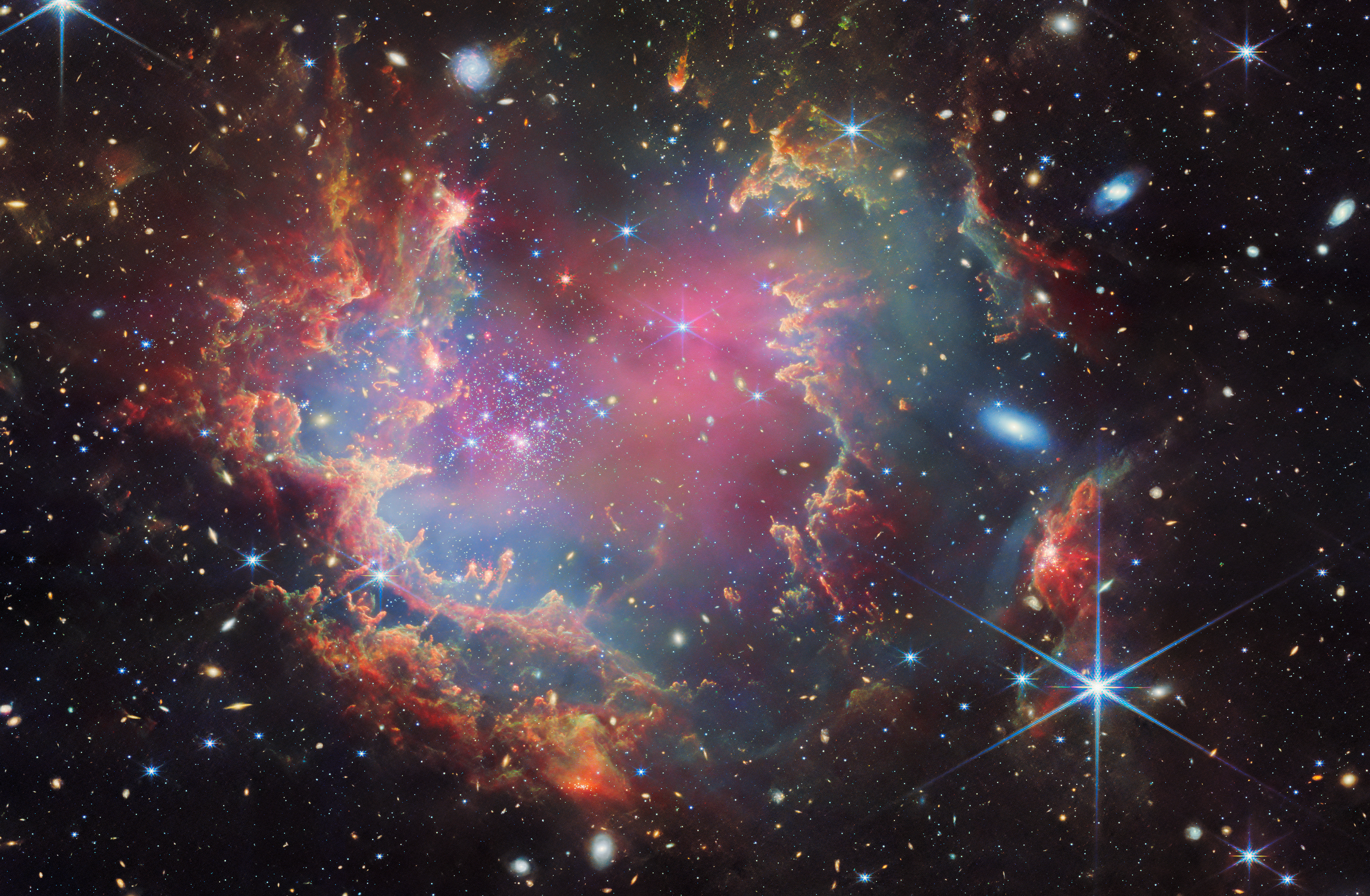
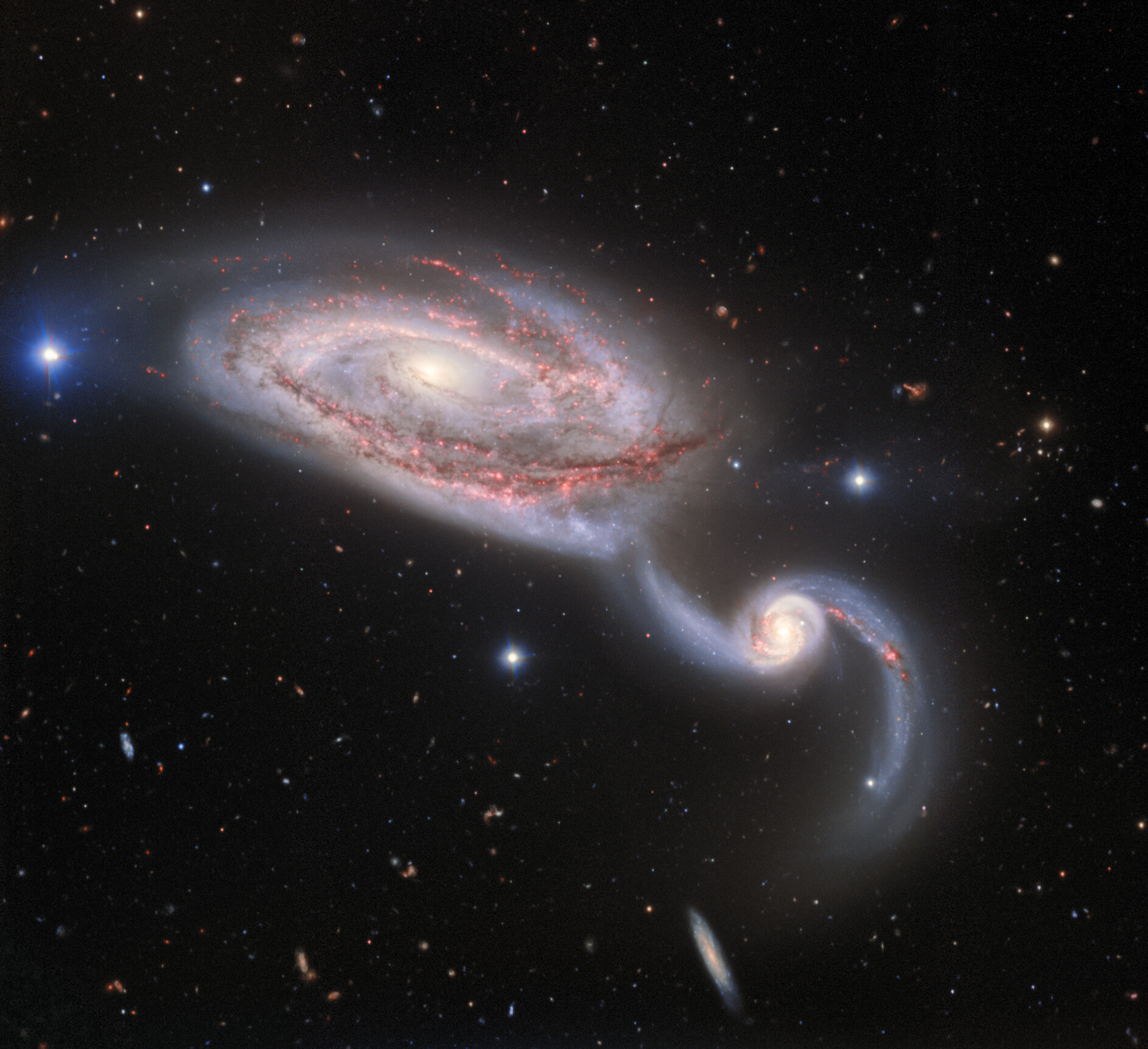
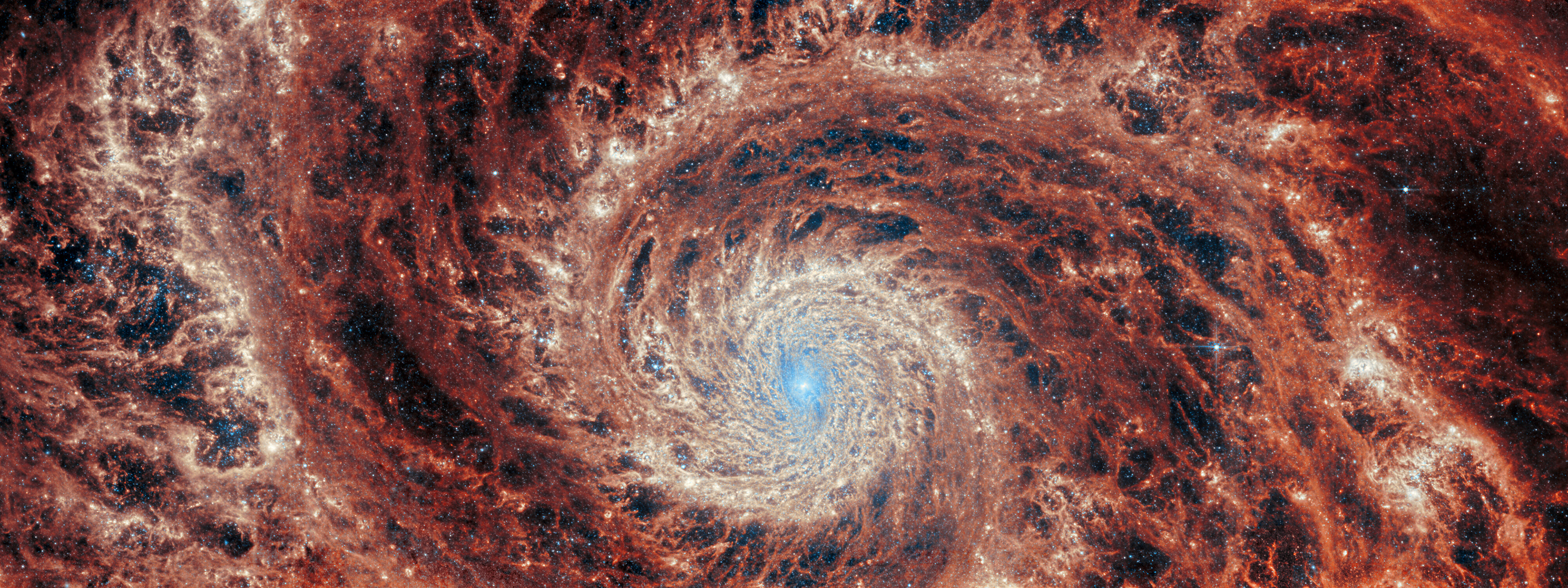
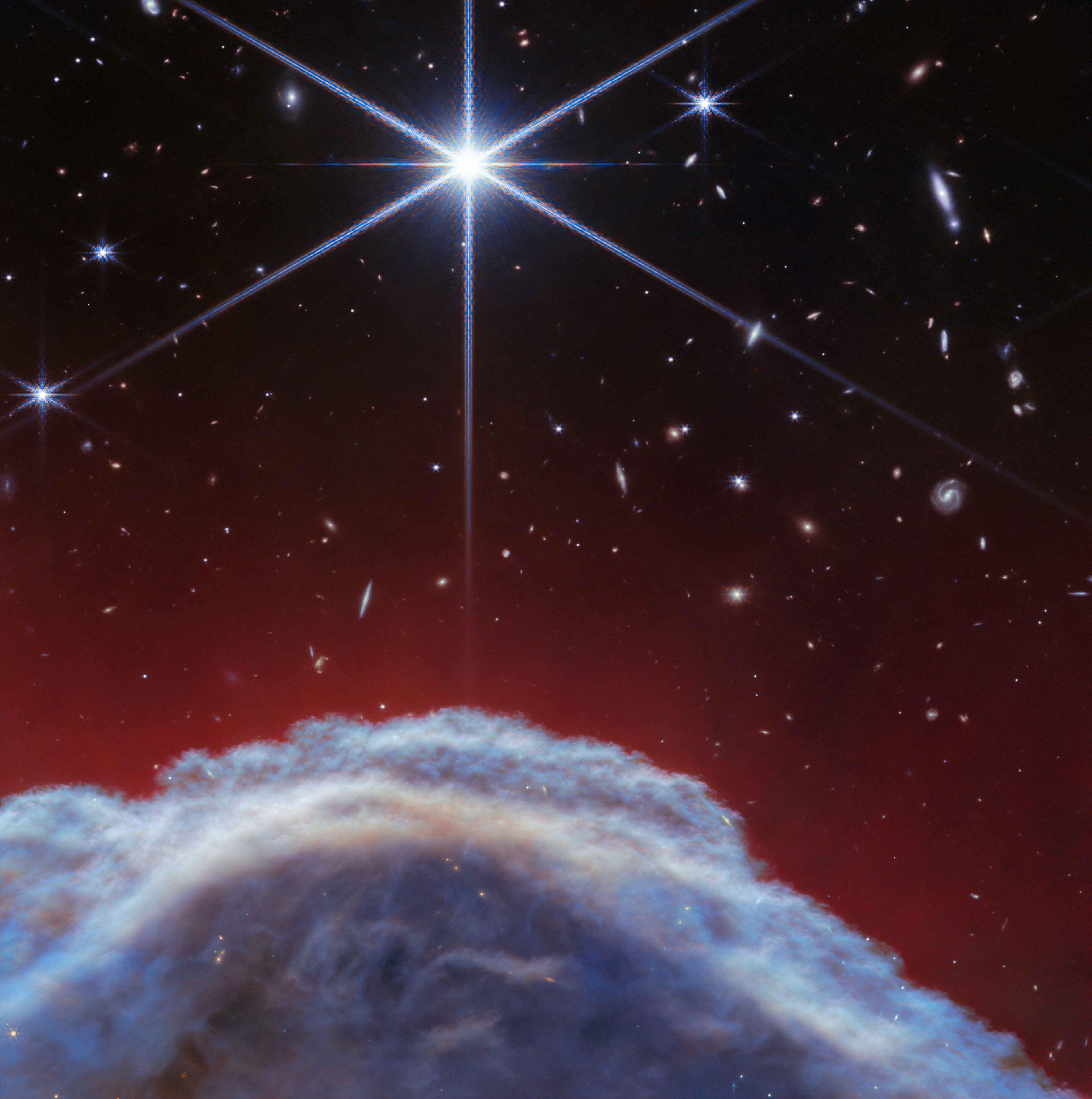
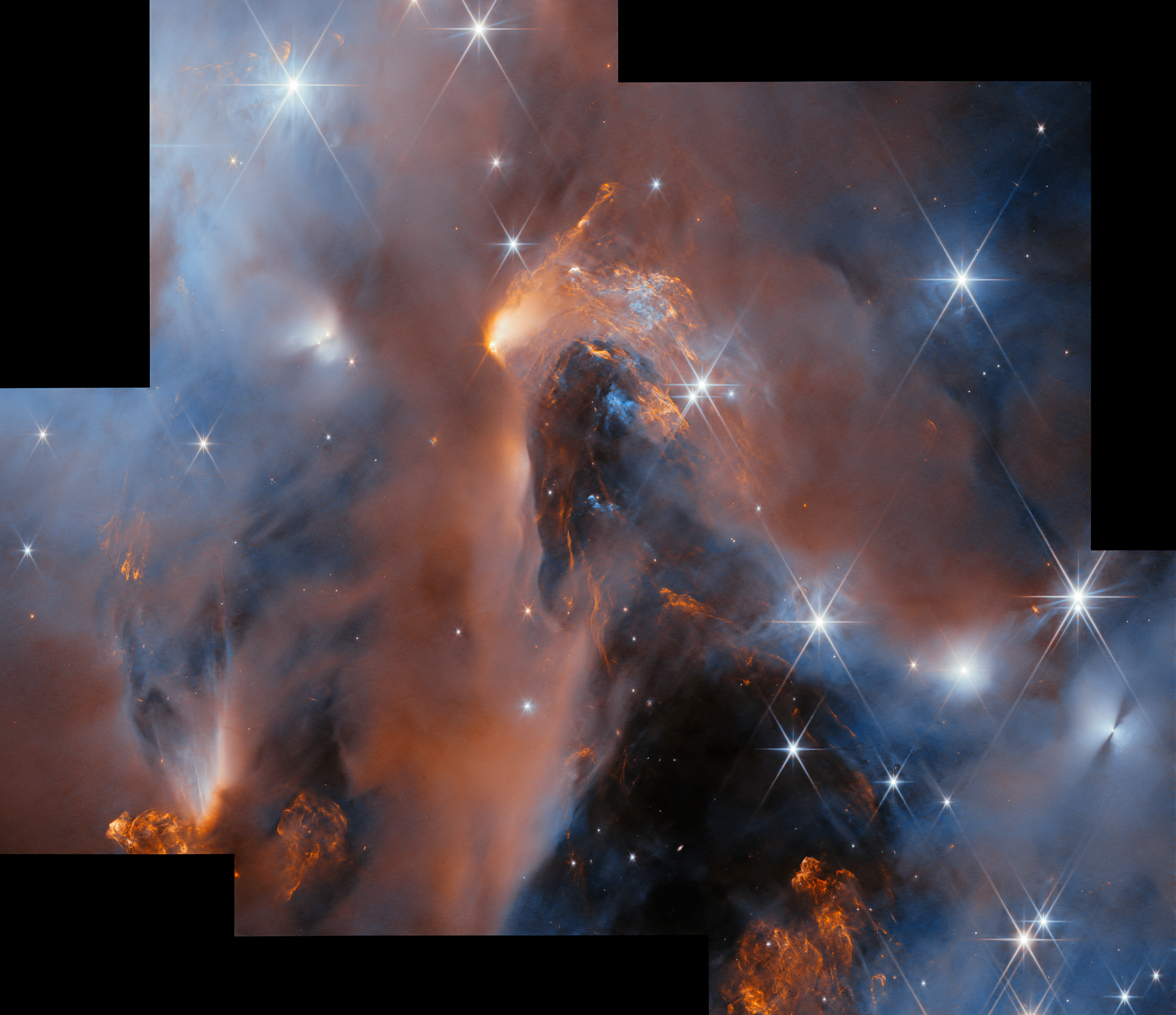

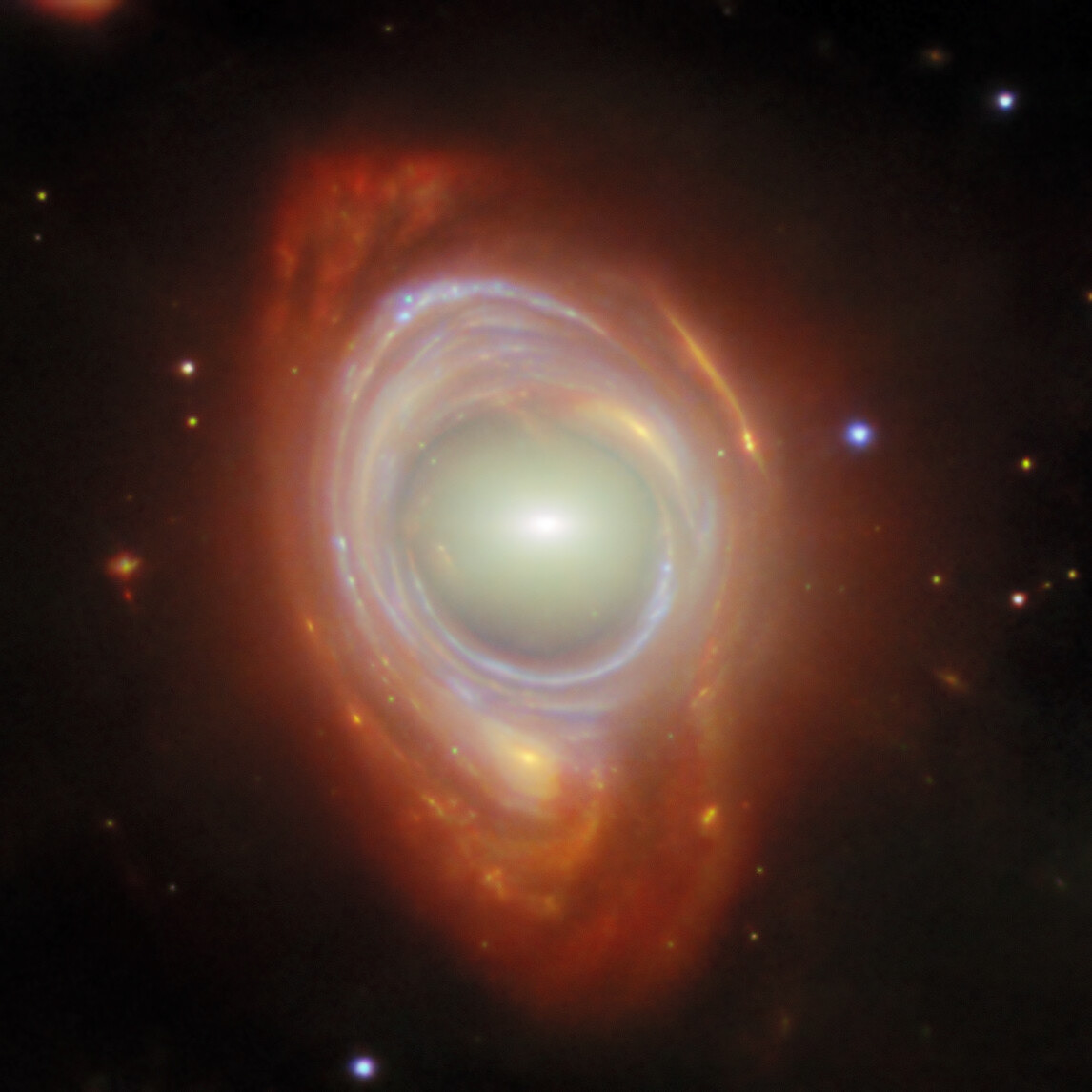
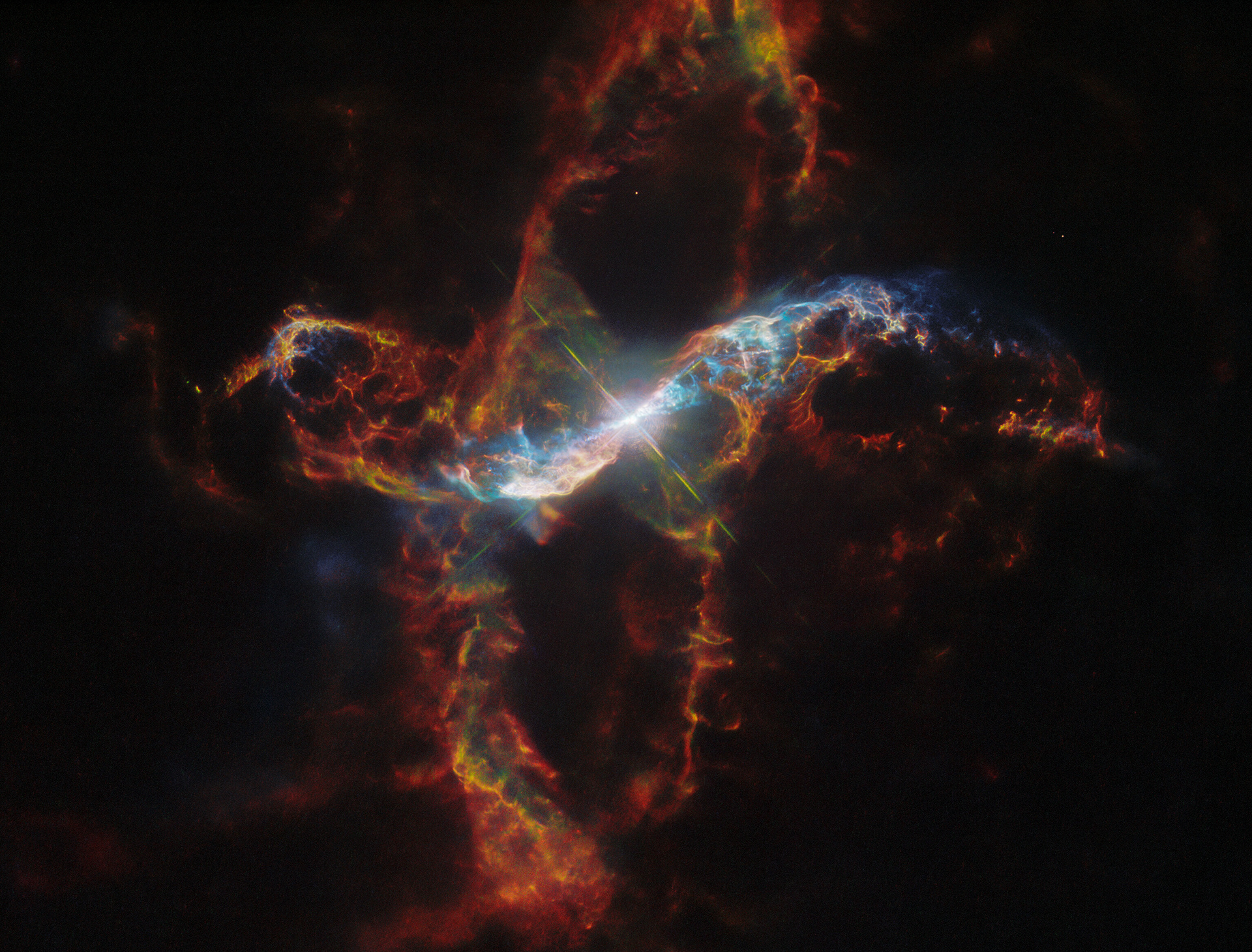
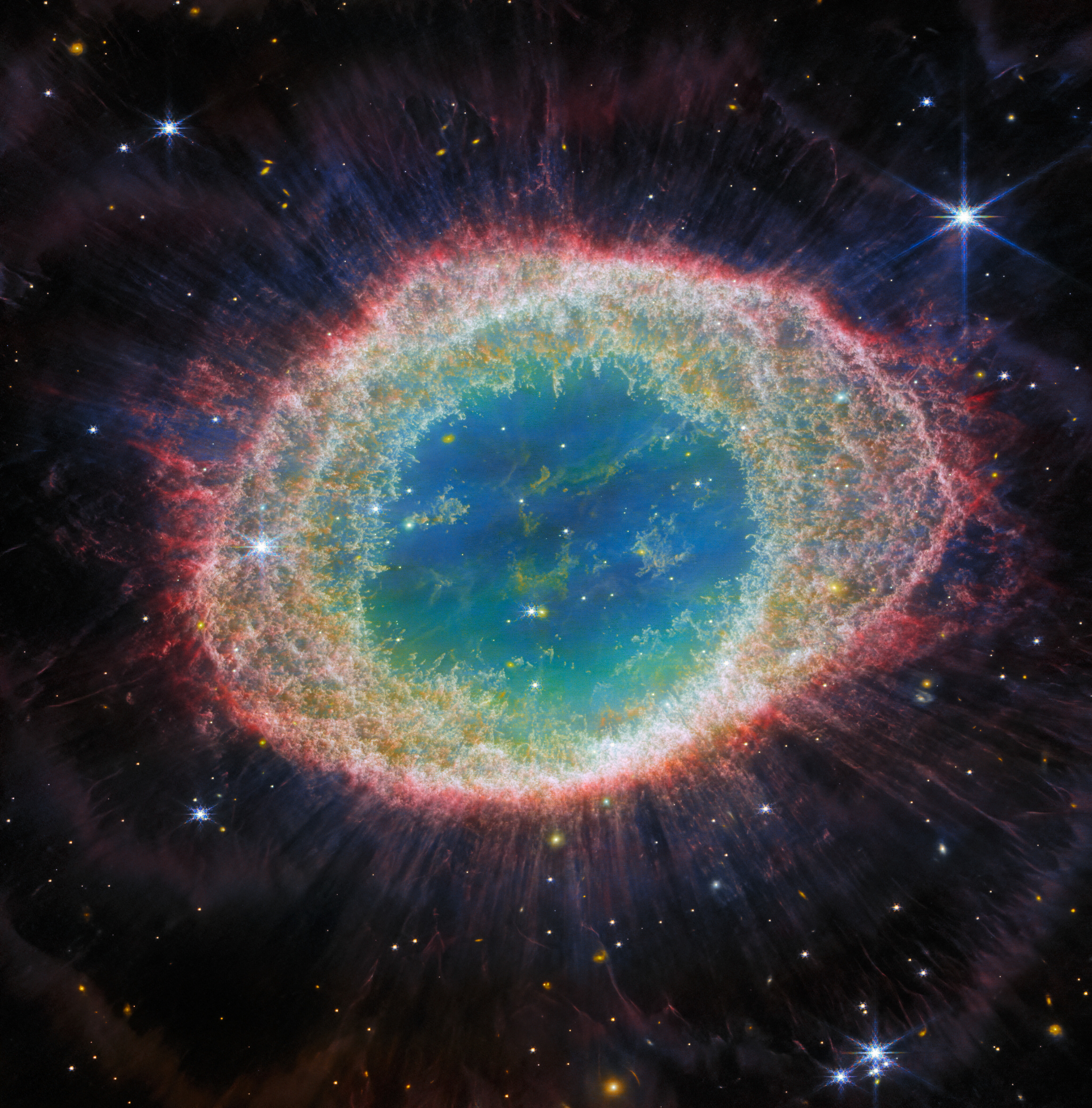

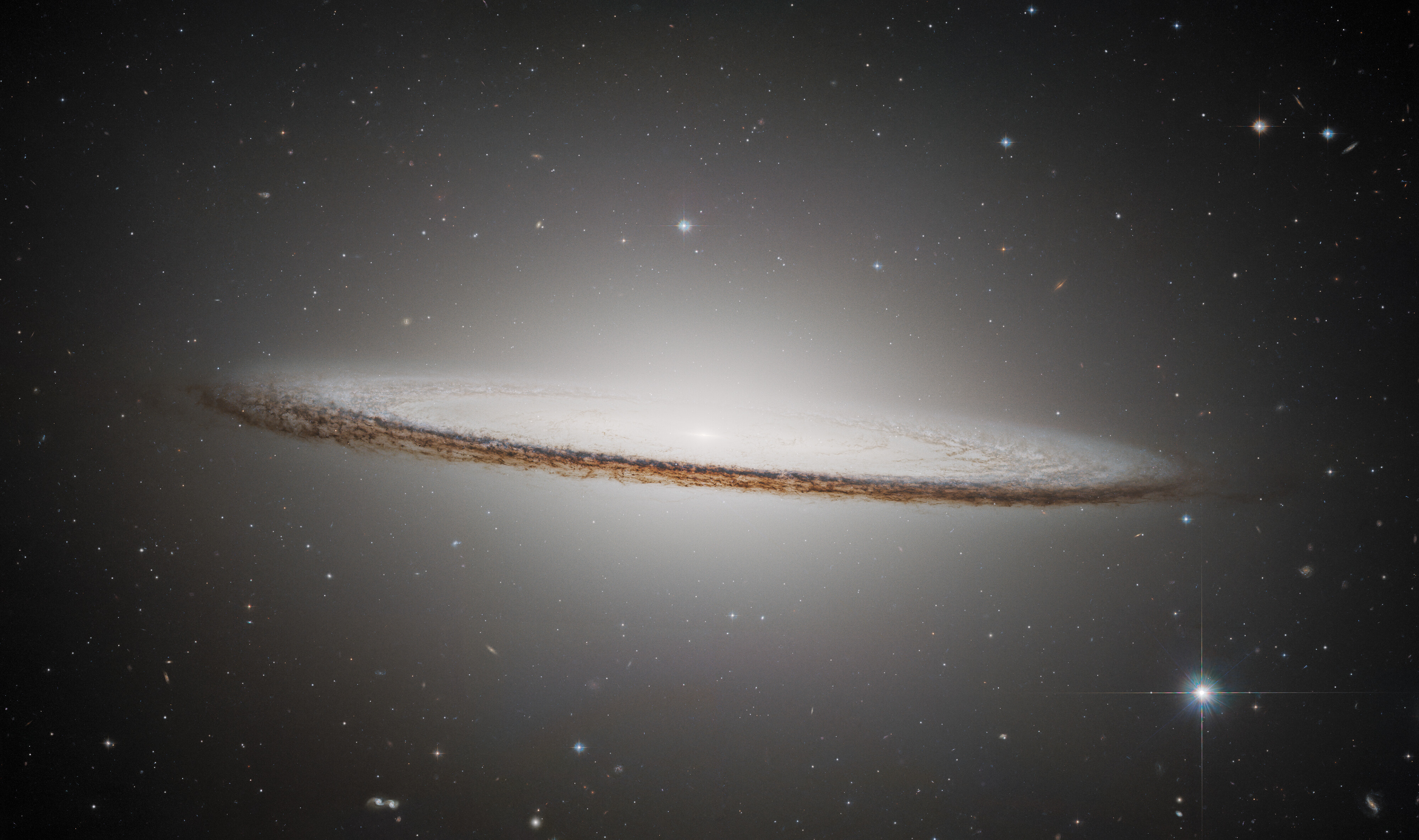
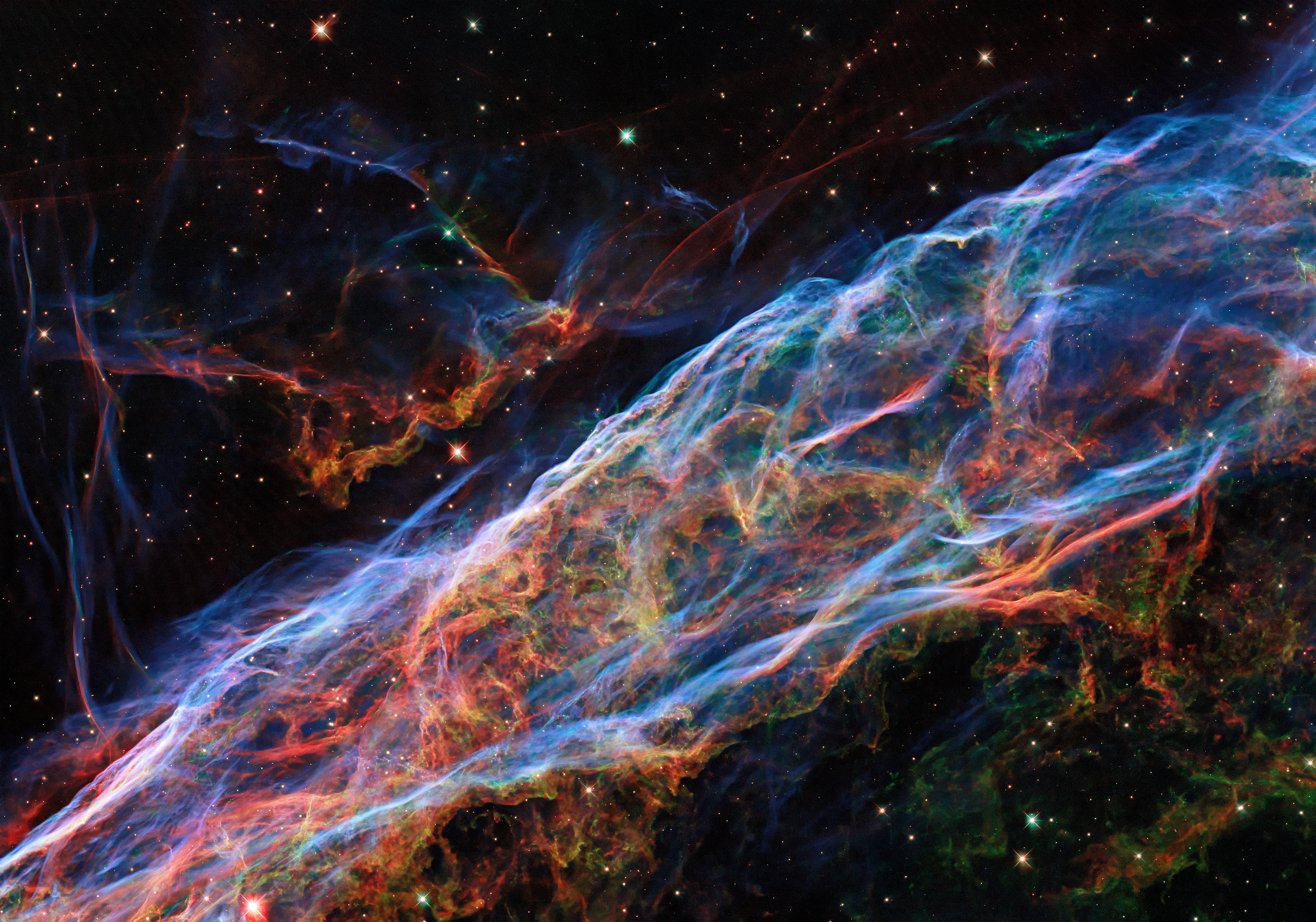
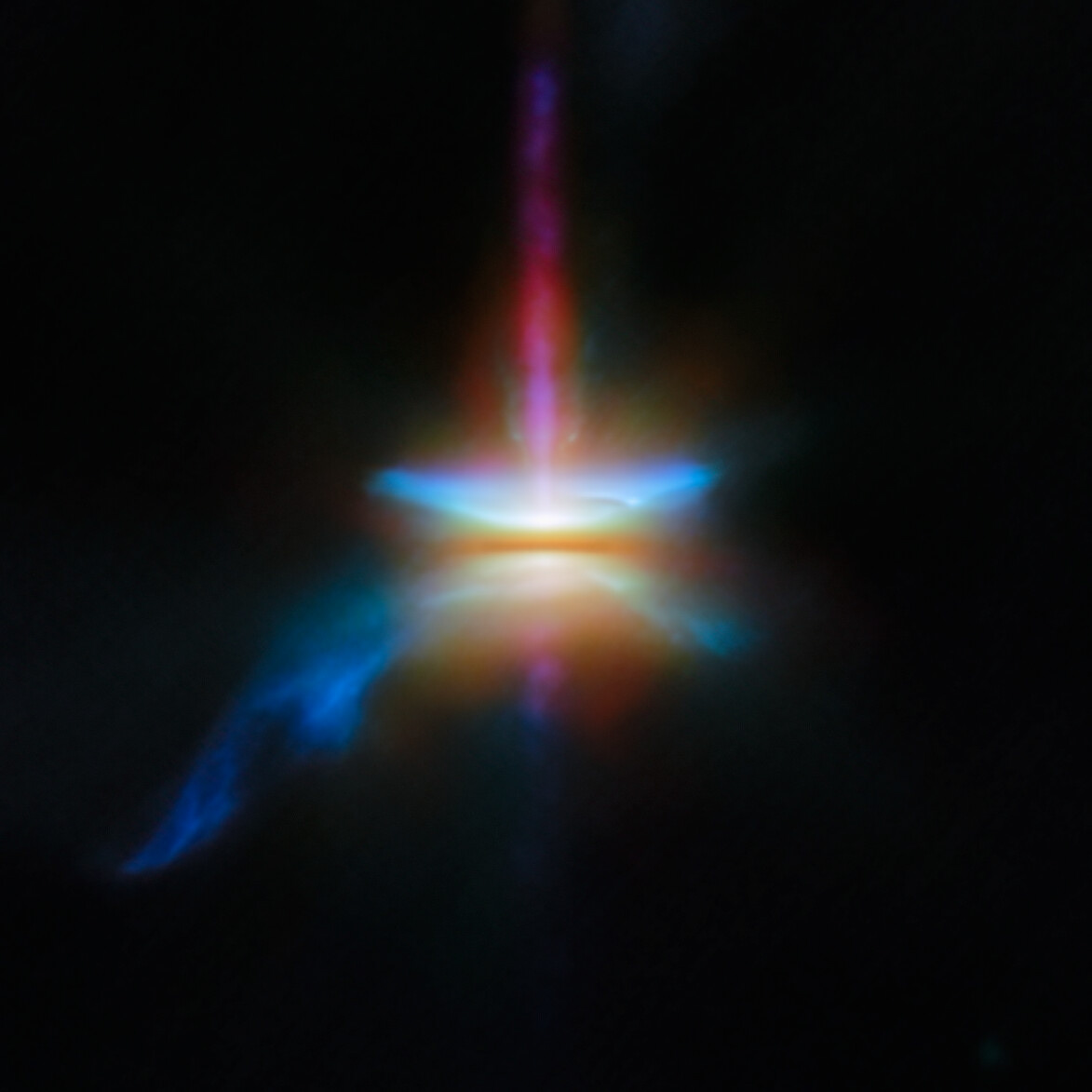
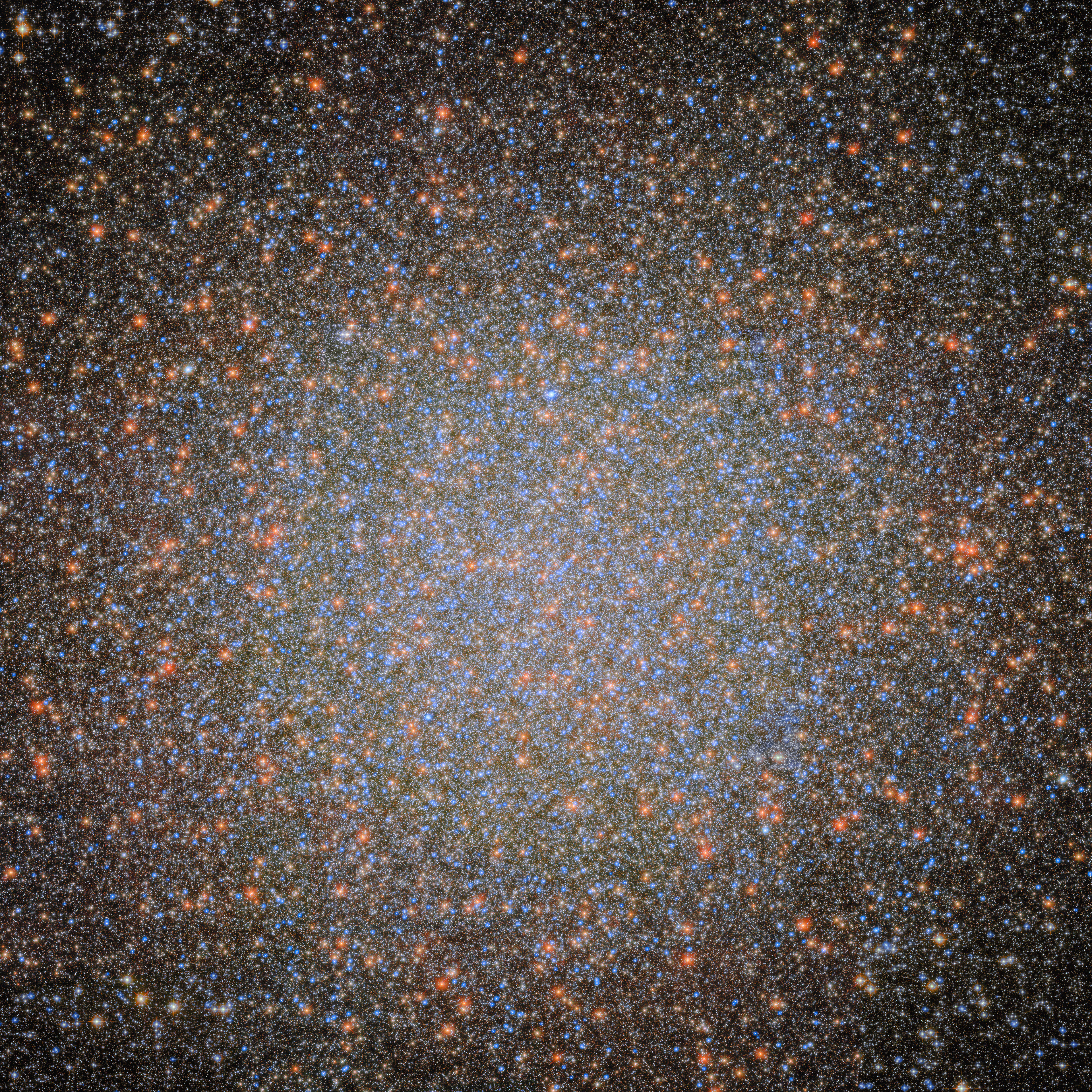
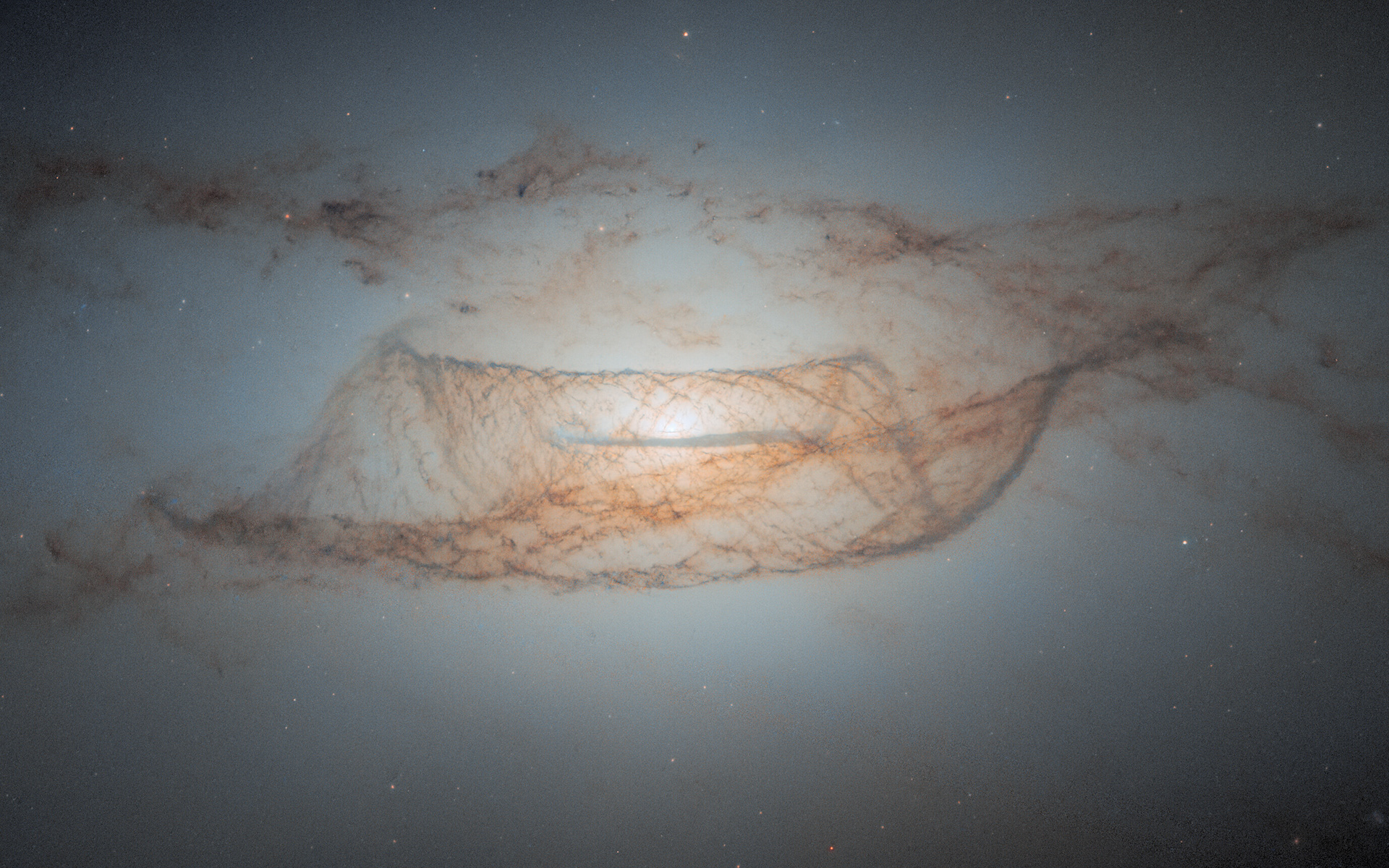

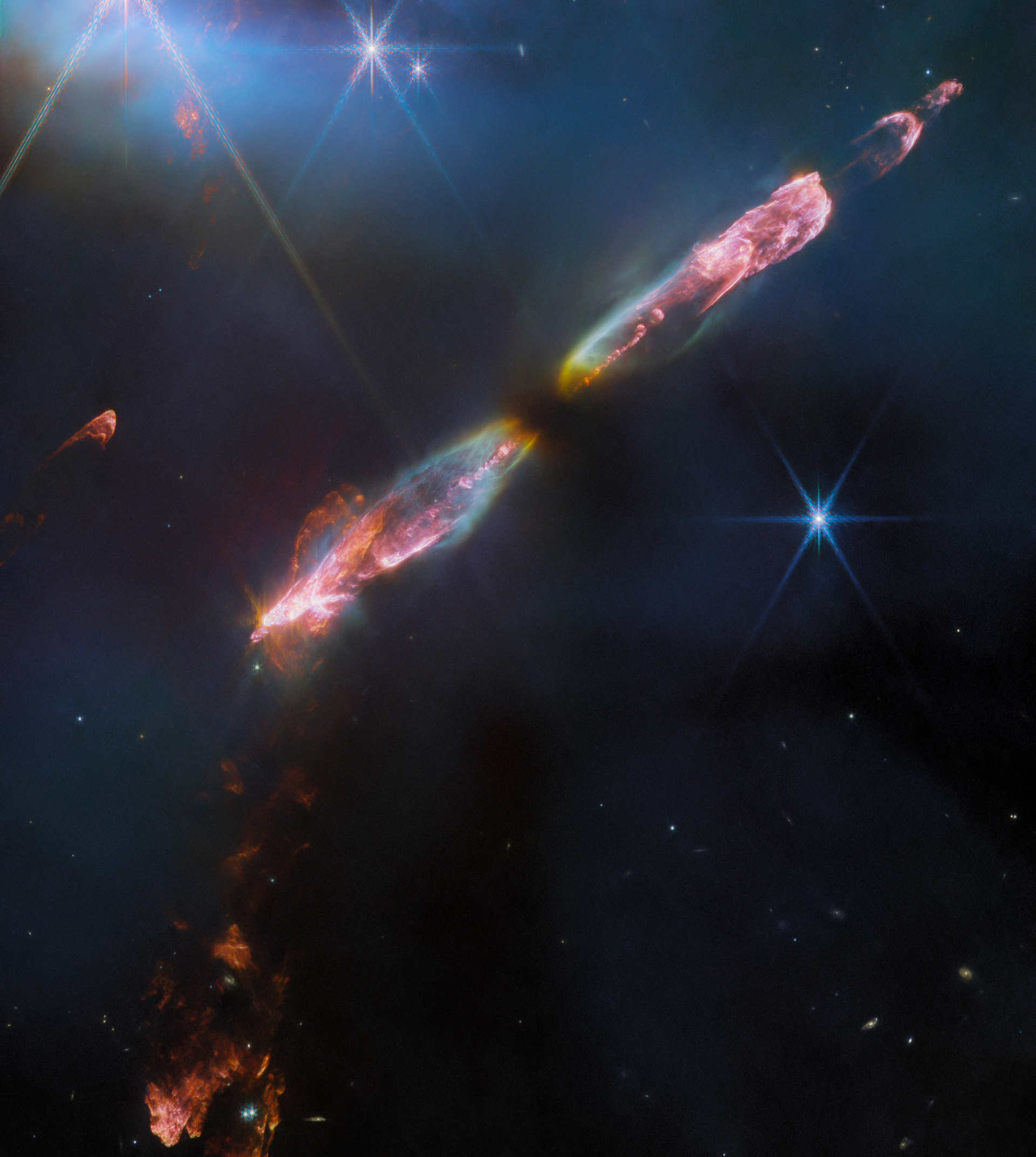
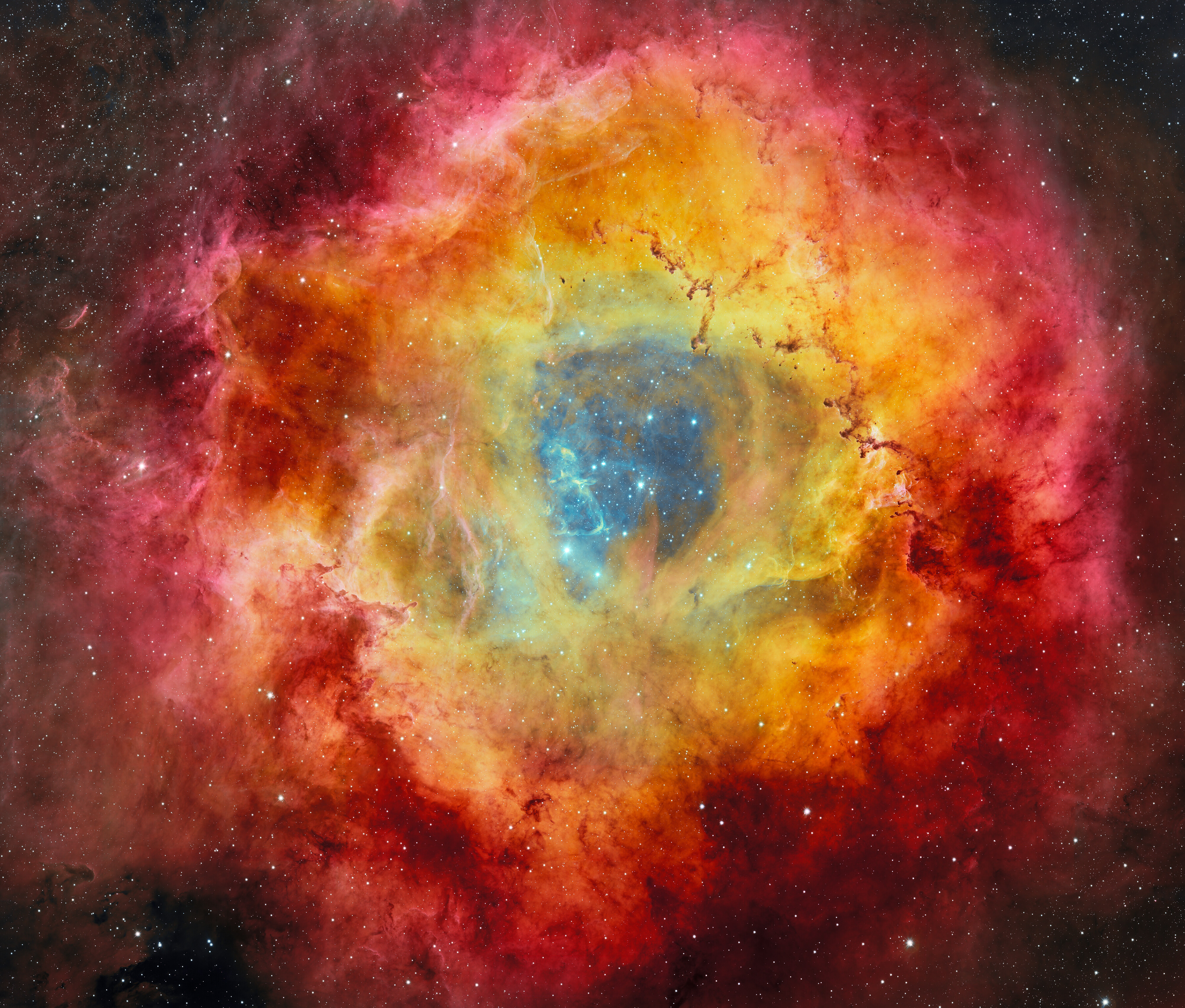
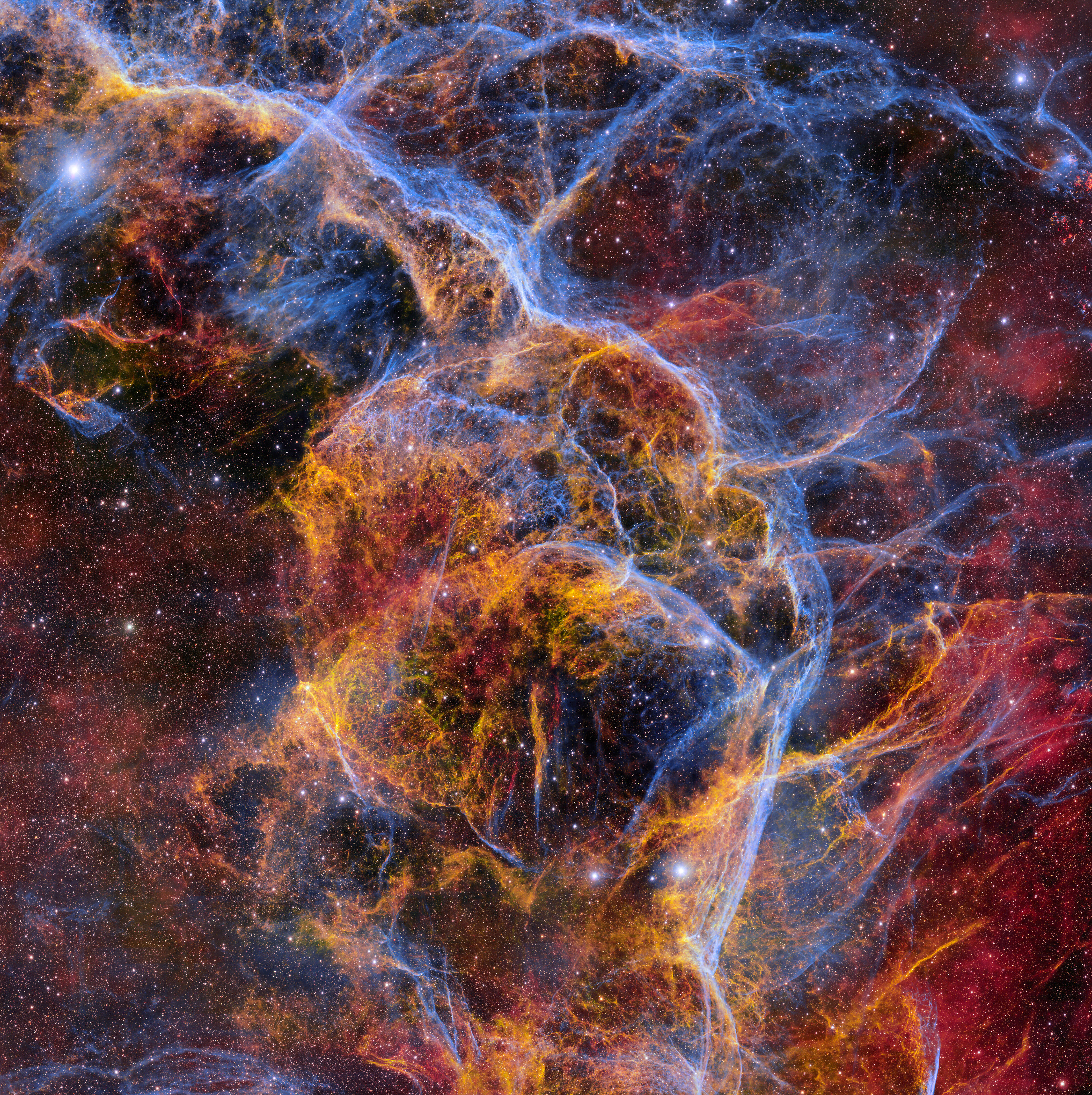
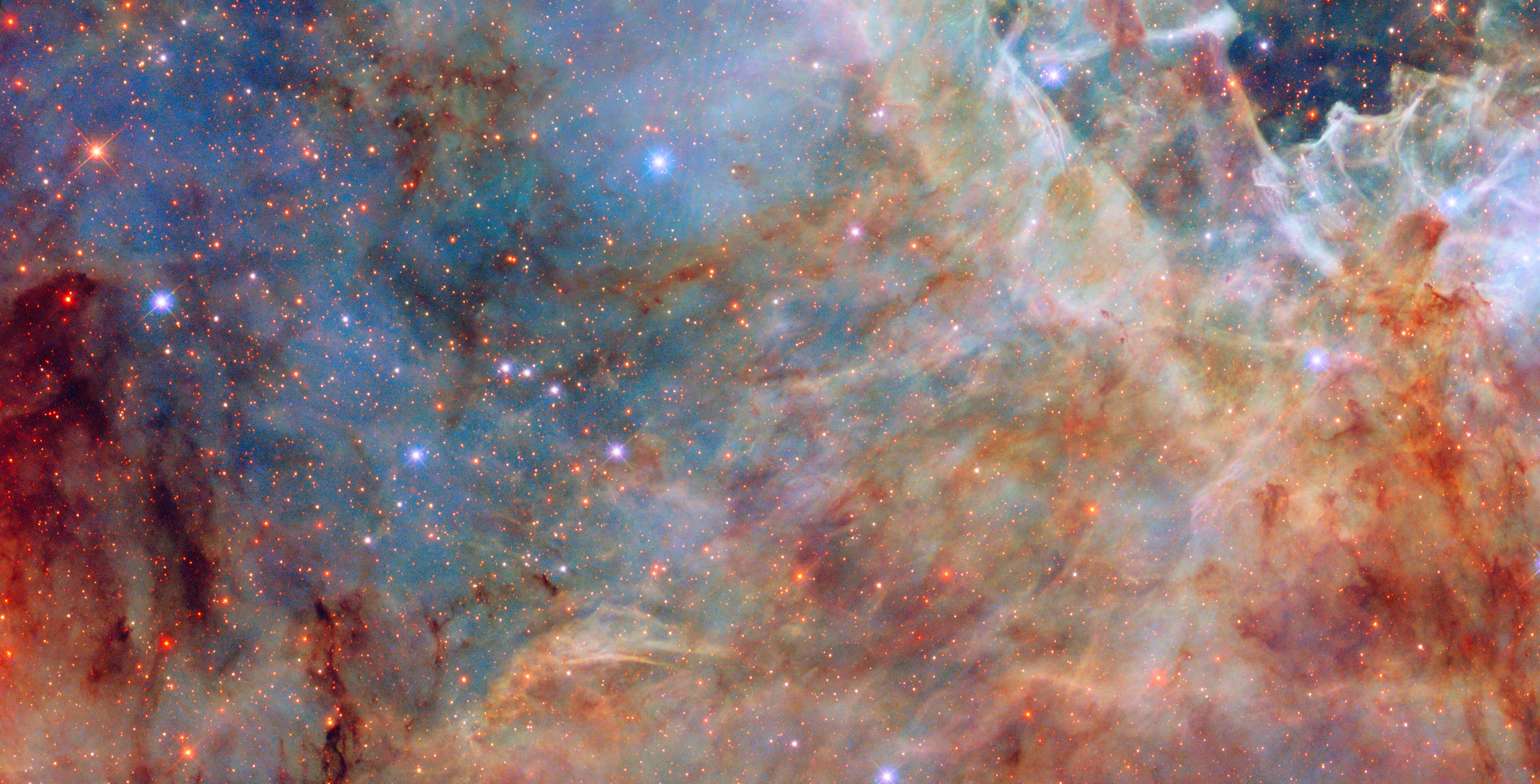

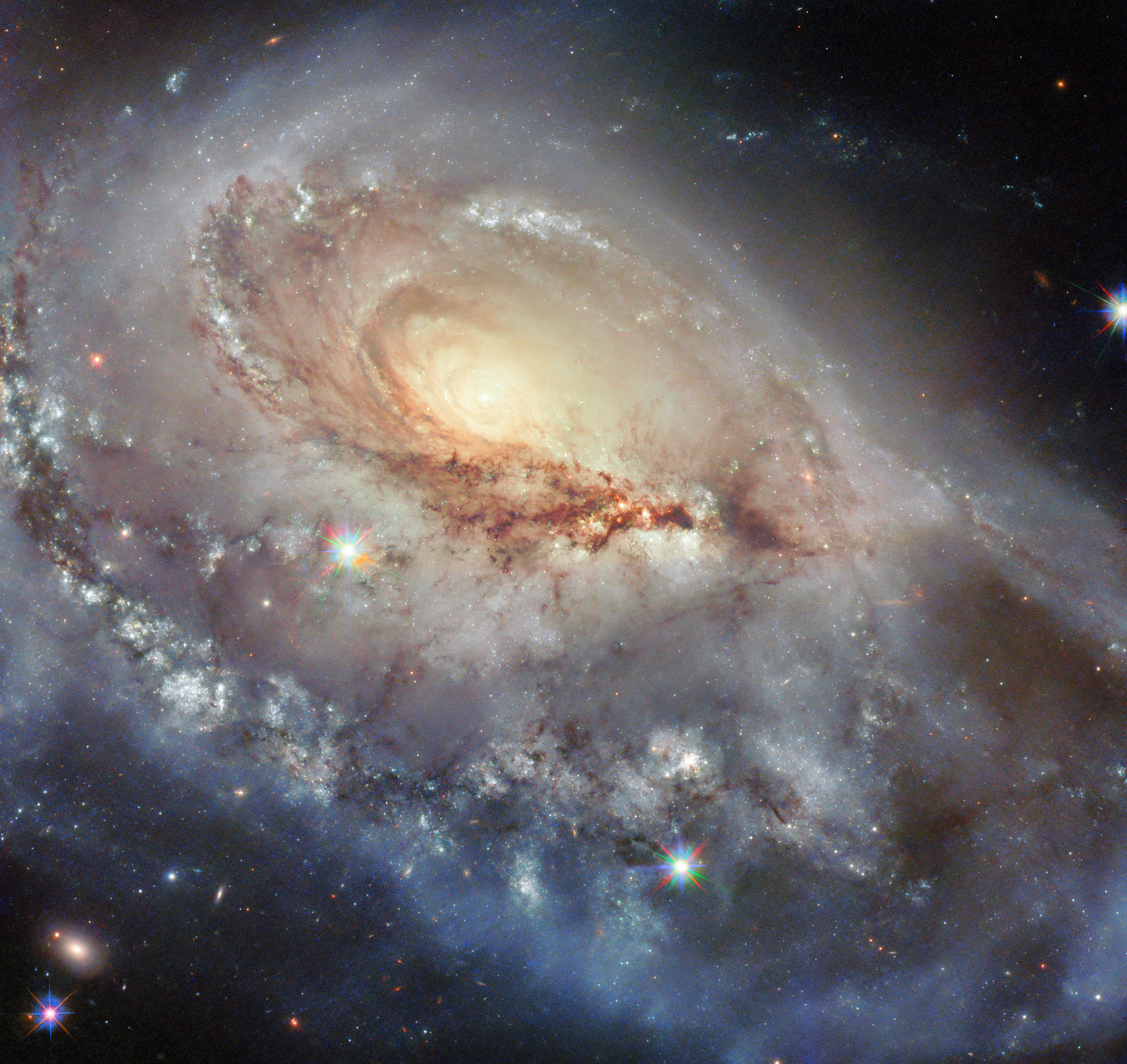
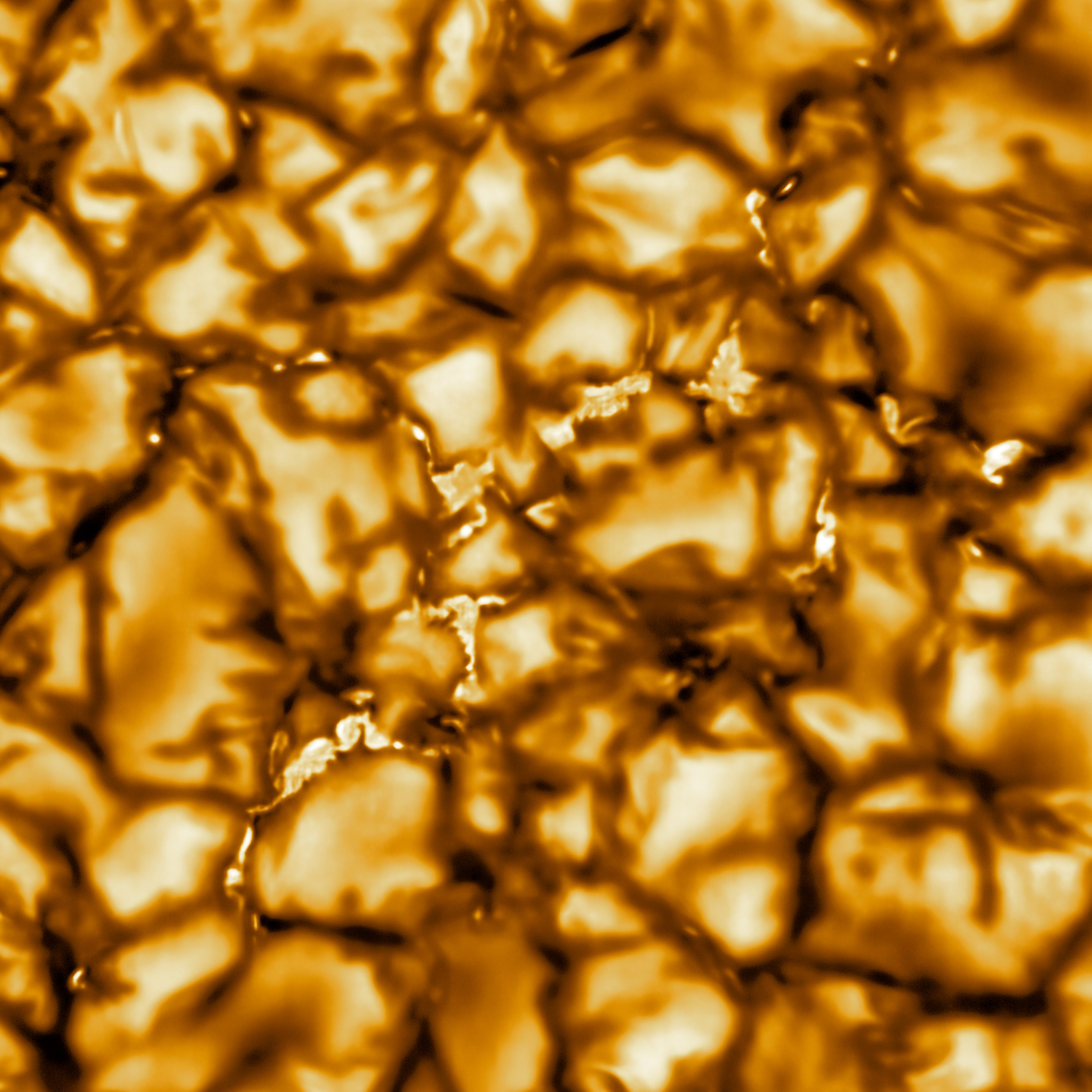

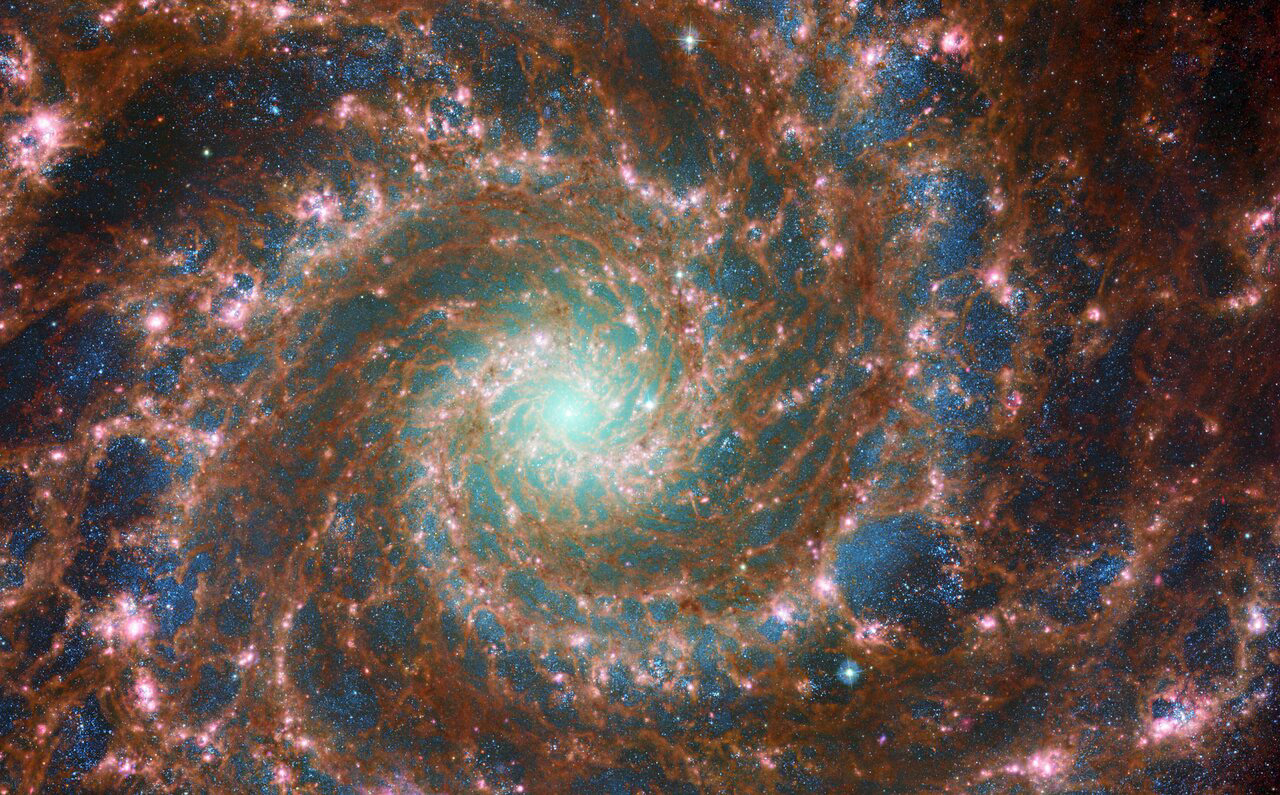
![This image by the NASA/ESA/CSA James Webb Space Telescope’s Near-InfraRed Camera (NIRCam) features the central region of the Chameleon I dark molecular cloud, which resides 630 light years away. The cold, wispy cloud material (blue, centre) is illuminated in the infrared by the glow of the young, outflowing protostar Ced 110 IRS 4 (orange, upper left). The light from numerous background stars, seen as orange dots behind the cloud, can be used to detect ices in the cloud, which absorb the starlight passing through them. An international team of astronomers has reported the discovery of diverse ices in the darkest, coldest regions of a molecular cloud measured to date by studying this region. This result allows astronomers to examine the simple icy molecules that will be incorporated into future exoplanets, while opening a new window on the origin of more complex molecules that are the first step in the creation of the building blocks of life. [Image Description: A large, dark cloud is contained within the frame. In its top half it is textured like smoke and has wispy gaps, while at the bottom and at the sides it fades gradually out of view. On the left are several orange stars: three each with six large spikes, and one behind the cloud which colours it pale blue and orange. Many tiny stars are visible, and the background is black.] Credit: NASA, ESA, CSA, and M. Zamani (ESA/Webb); Science: F. Sun (Steward Observatory), Z. Smith (Open University), and the Ice Age ERS Team.](https://cdn.myportfolio.com/e6b26236-639b-4064-900c-5a5469a04617/8f92f39e-21cd-4a1a-a1d8-311e0c617f55_rw_1920.jpg?h=001b1be5b4f04f89c55b630bf5a83dcb)
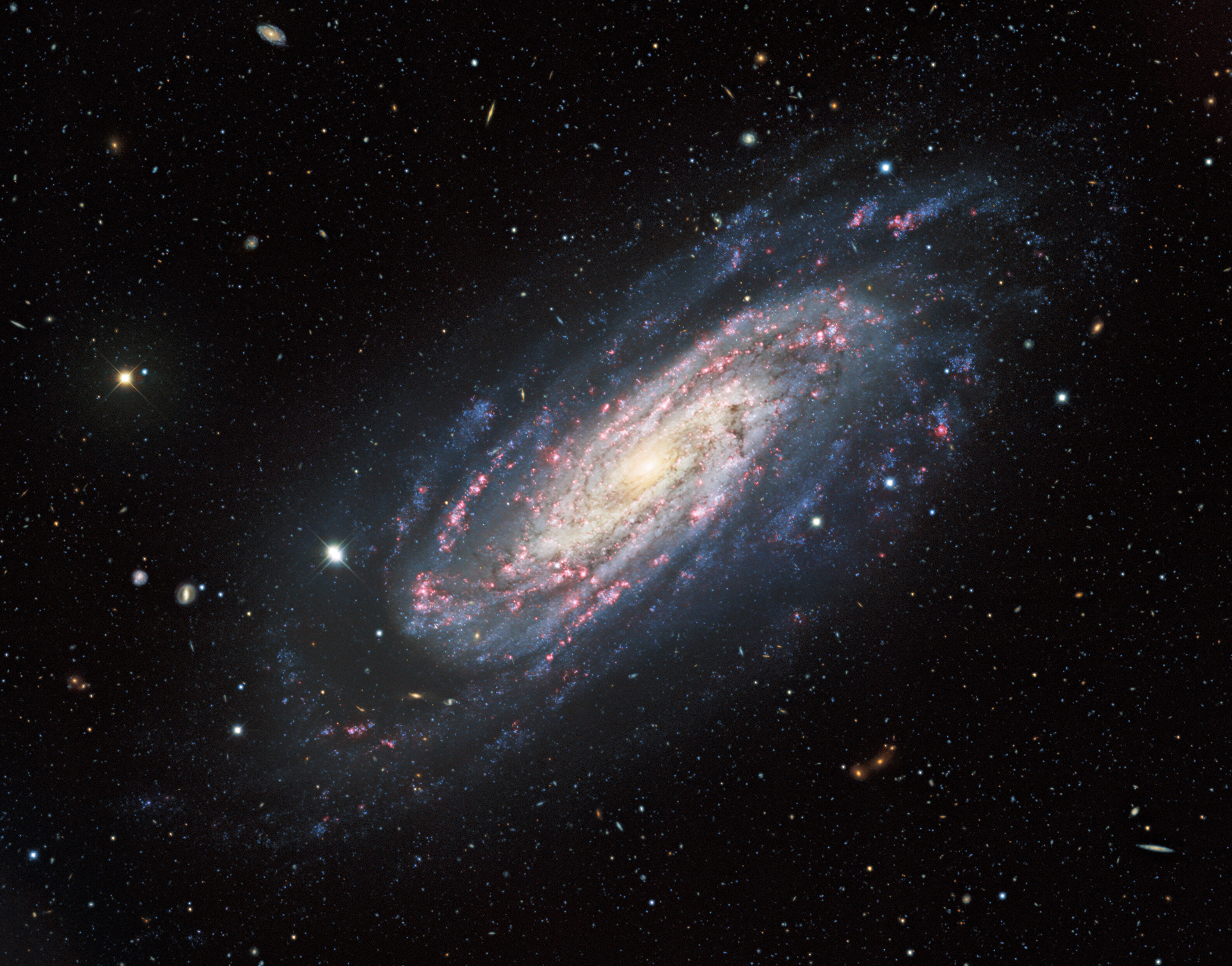
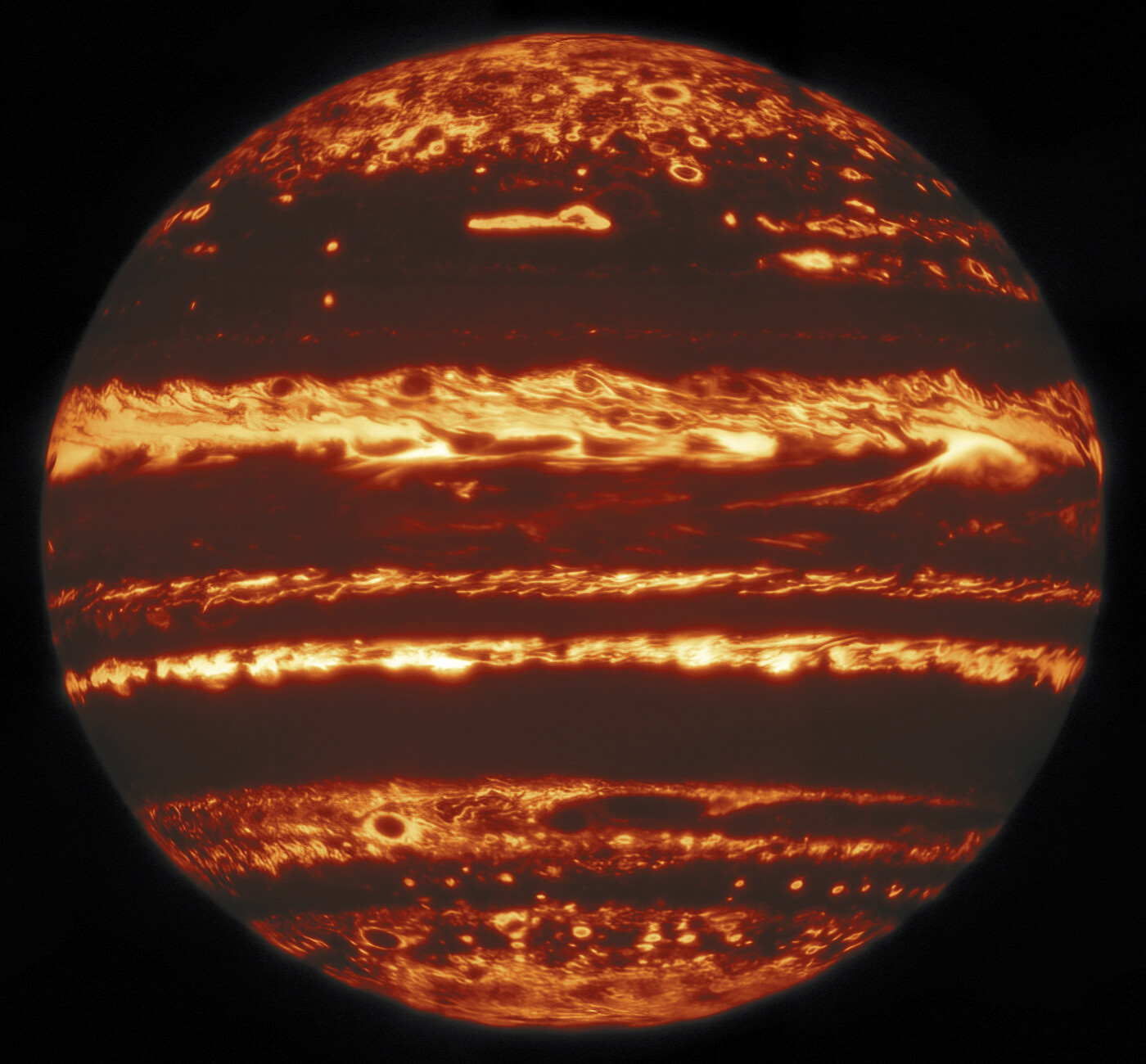
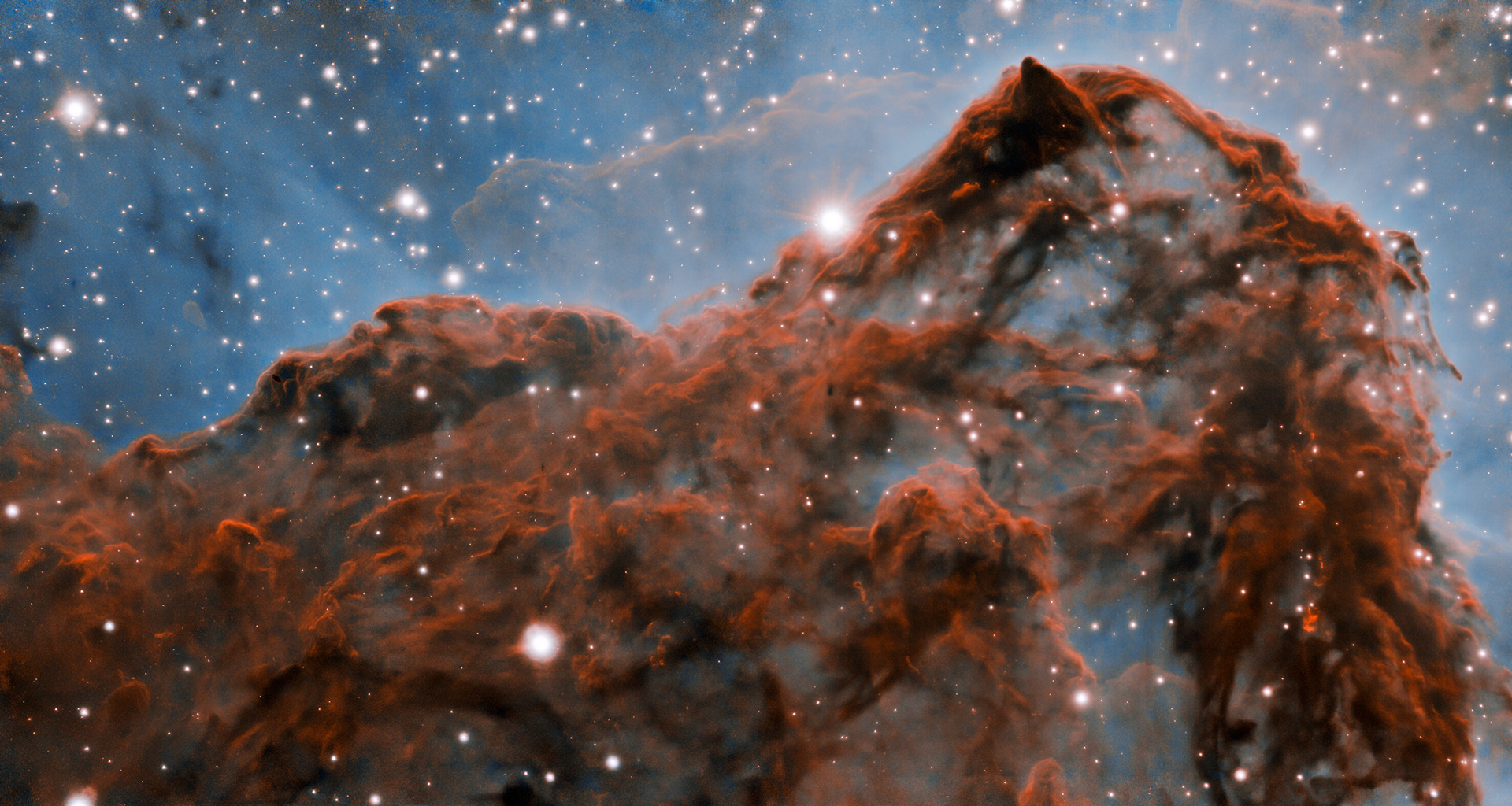

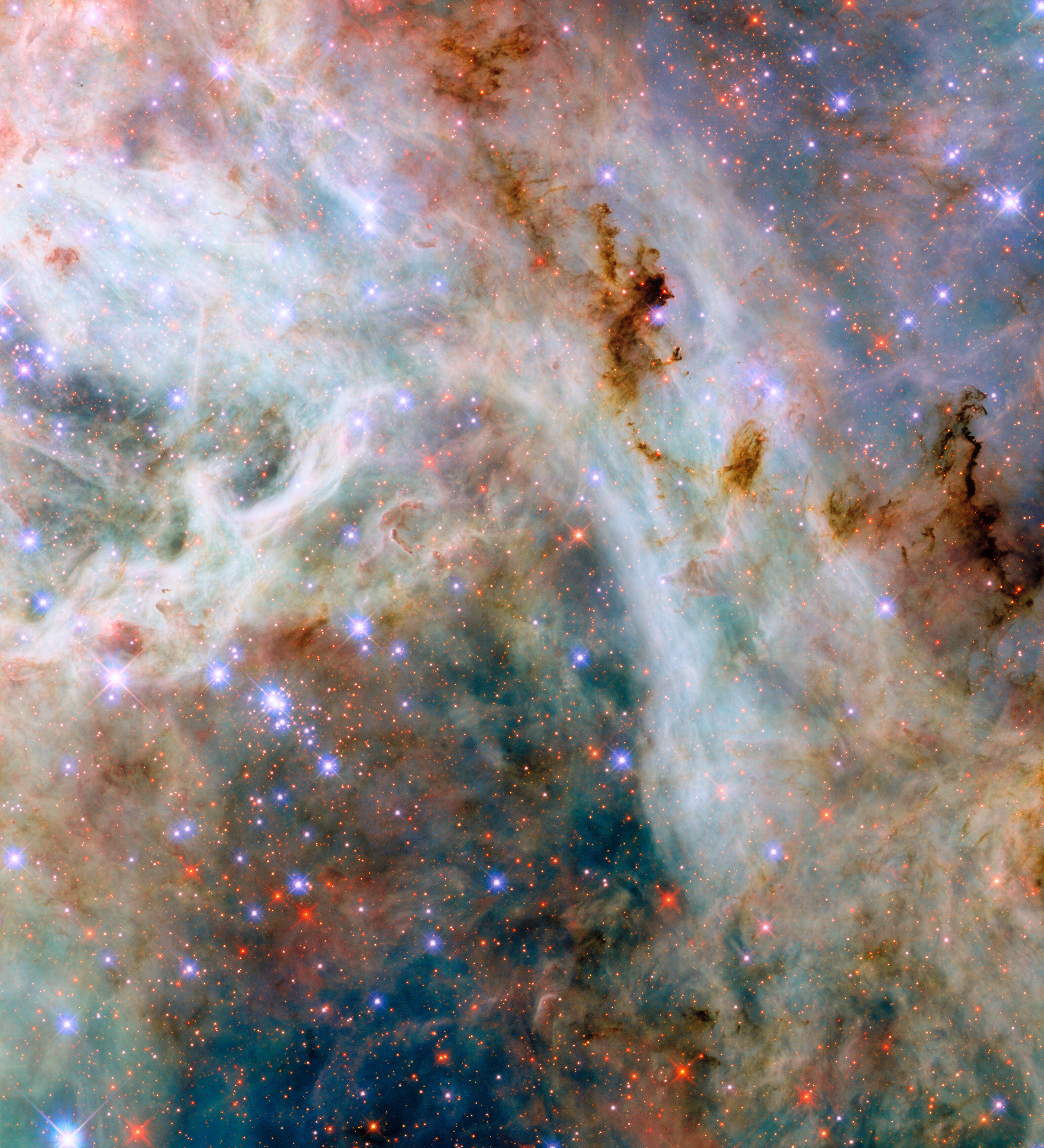
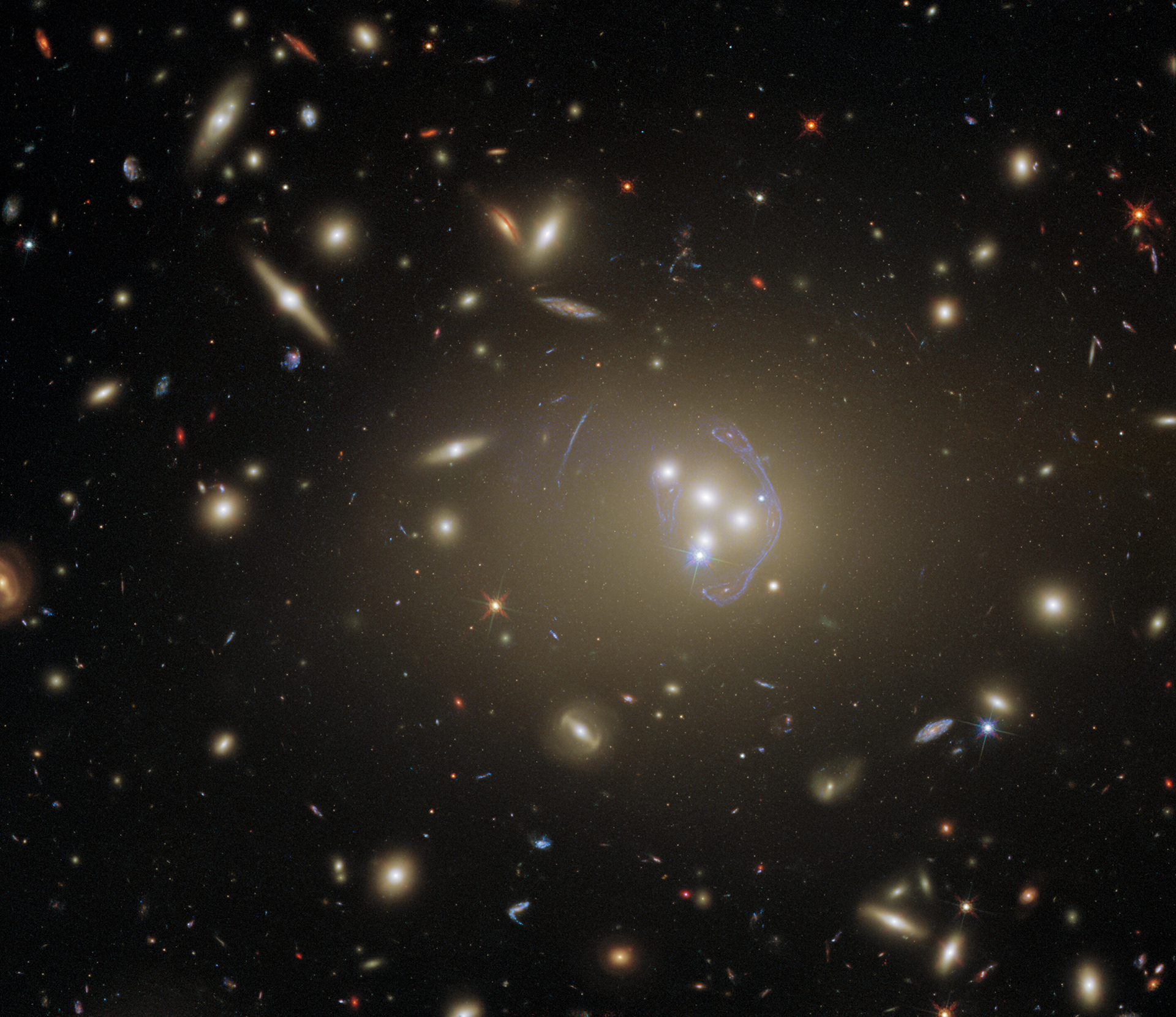
![The bright variable star V 372 Orionis takes centre stage in this image from the NASA/ESA Hubble Space Telescope, which has also captured a smaller companion star in the upper left of this image. Both stars lie in the Orion Nebula, a colossal region of star formation roughly 1450 light years from Earth. V 372 Orionis is a particular type of variable star known as an Orion Variable. These young stars experience some tempestuous moods and growing pains, which are visible to astronomers as irregular variations in luminosity. Orion Variables are often associated with diffuse nebulae, and V 372 Orionis is no exception; the patchy gas and dust of the Orion Nebula pervade this scene. This image overlays data from two of Hubble’s instruments. Data from the Advanced Camera for Surveys and Wide Field Camera 3 at infrared and visible wavelengths were layered to reveal rich details of this corner of the Orion Nebula. Hubble also left its own subtle signature on this astronomical portrait in the form of the diffraction spikes surrounding the bright stars. These prominent artefacts are created by starlight interacting with Hubble’s inner workings, and as a result they reveal hints of Hubble’s structure. The four spikes surrounding the stars in this image are created by four vanes inside Hubble supporting the telescope’s secondary mirror. The diffraction spikes of the NASA/ESA/CSA James Webb Space Telescope, on the other hand, are six-pointed as a result of Webb’s hexagonal mirror segments and 3-legged support structure for the secondary mirror. [Image description: Two very bright stars with cross-shaped diffraction spikes are prominent: the larger is slightly lower-right of centre, the smaller lies towards the upper-left corner. Small red stars with short diffraction spikes are scattered around them. The background is covered nearly completely by gas: smoky, bright blue gas around the larger star in the centre and lower-right, and wispier red gas elsewhere.] Credit: ESA/Hubble & NASA, J. Bally, M. Robberto](https://cdn.myportfolio.com/e6b26236-639b-4064-900c-5a5469a04617/20f82da0-dcb0-4d1c-90af-d5151c5d6491_rw_1920.jpg?h=58d1869a4a193e9c11844fce90657b63)
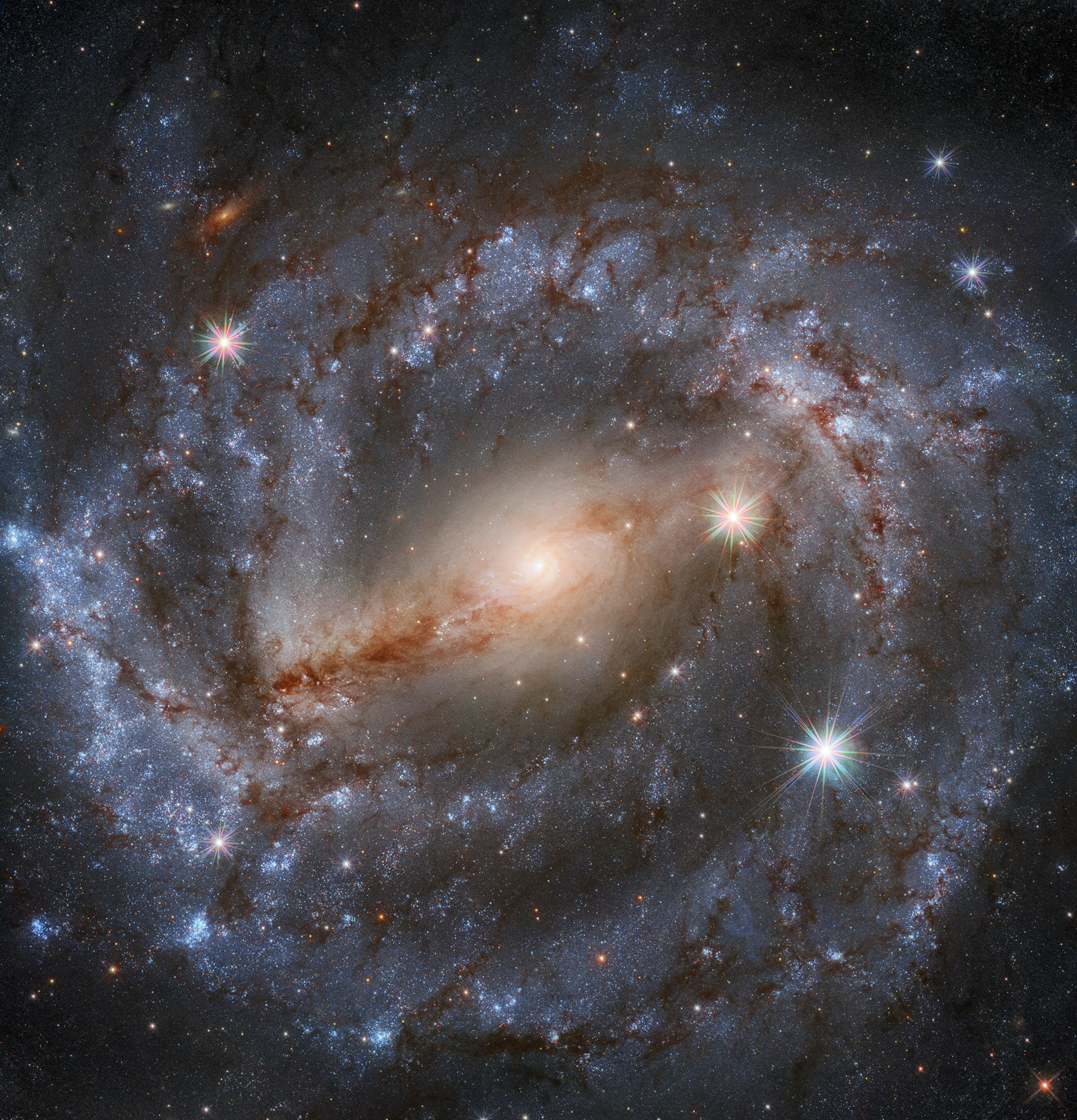
![A portion of the open cluster NGC 6530 appears as a roiling wall of smoke studded with stars in this image from the NASA/ESA Hubble Space Telescope. NGC 6530 is a collection of several thousand stars lying around 4350 light-years from Earth in the constellation Sagittarius. The cluster is set within the larger Lagoon Nebula, a gigantic interstellar cloud of gas and dust. It is the nebula that gives this image its distinctly smokey appearance; clouds of interstellar gas and dust stretch from one side of this image to the other. Astronomers investigated NGC 6530 using Hubble’s Advanced Camera for Surveys and Wide Field Planetary Camera 2. They scoured the region in the hope of finding new examples of proplyds, a particular class of illuminated protoplanetary discs surrounding newborn stars. The vast majority of proplyds have been found in only one region, the nearby Orion Nebula. This makes understanding their origin and lifetimes in other astronomical environments challenging. Hubble’s ability to observe at infrared wavelengths — particularly with Wide Field Camera 3— have made it an indispensable tool for understanding starbirth and the origin of exoplanetary systems. In particular, Hubble was crucial to investigations of the proplyds around newly born stars in the Orion Nebula. The new NASA/ESA/CSA James Webb Space Telescope’s unprecedented observational capabilities at infrared wavelengths will complement Hubble observations by allowing astronomers to peer through the dusty envelopes around newly born stars and investigate the faintest, earliest stages of starbirth. [Image description: Clouds of gas cover the entire view, in a variety of bold colours. In the centre the gas is brighter and very textured, resembling dense smoke. Around the edges it is more sparse and faint. Several small, bright blue stars are scattered over the nebula.] Links Video of A Cosmic Smokescreen Credit: ESA/Hubble & NASA, ESO, O. De Marco Acknowledgement: M. H. Özsaraç](https://cdn.myportfolio.com/e6b26236-639b-4064-900c-5a5469a04617/13c482a0-aa05-40fa-9e09-a77745e123c6_rw_1920.jpg?h=9642b86d896c9813e34ab8c2069aeba5)


![The scattered stars of the globular cluster NGC 6355 are strewn across this image from the NASA/ESA Hubble Space Telescope. This globular cluster lies less than 50,000 light-years from Earth in the Ophiuchus constellation. NGC 6355 is a galactic globular cluster that resides in our Milky Way galaxy's inner regions. Globular clusters are stable, tightly bound clusters of tens of thousands to millions of stars, and can be found in all types of galaxies. Their dense populations of stars and mutual gravitational attraction give these clusters a roughly spherical shape, with a bright concentration of stars surrounded by an increasingly sparse sprinkling of stars. The dense, bright core of NGC 6355 was picked out in crystal-clear detail by Hubble in this image, and is the crowded area of stars towards the centre of this image. With its vantage point above the distortions of the atmosphere, Hubble has revolutionised the study of globular clusters. It is almost impossible to distinguish the stars in globular clusters from one another with ground-based telescopes, but astronomers have been able to use Hubble to study the constituent stars of globular clusters in detail. This Hubble image of NGC 6355 contains data from both the Advanced Camera for Surveys and Wide Field Camera 3. [Image description: A dense collection of stars covers the view. Towards the centre the stars become even more dense in a circular region, and also more blue. Around the edges there are some redder foreground stars, and many small stars in the background.] Credit: ESA/Hubble & NASA, E. Noyola, R. Cohen](https://cdn.myportfolio.com/e6b26236-639b-4064-900c-5a5469a04617/1ffd8ae4-beb5-4fc1-9d78-eb56b0fe9789_rw_1920.jpg?h=1c8a9818f2106992fd80e6eb2f020f36)
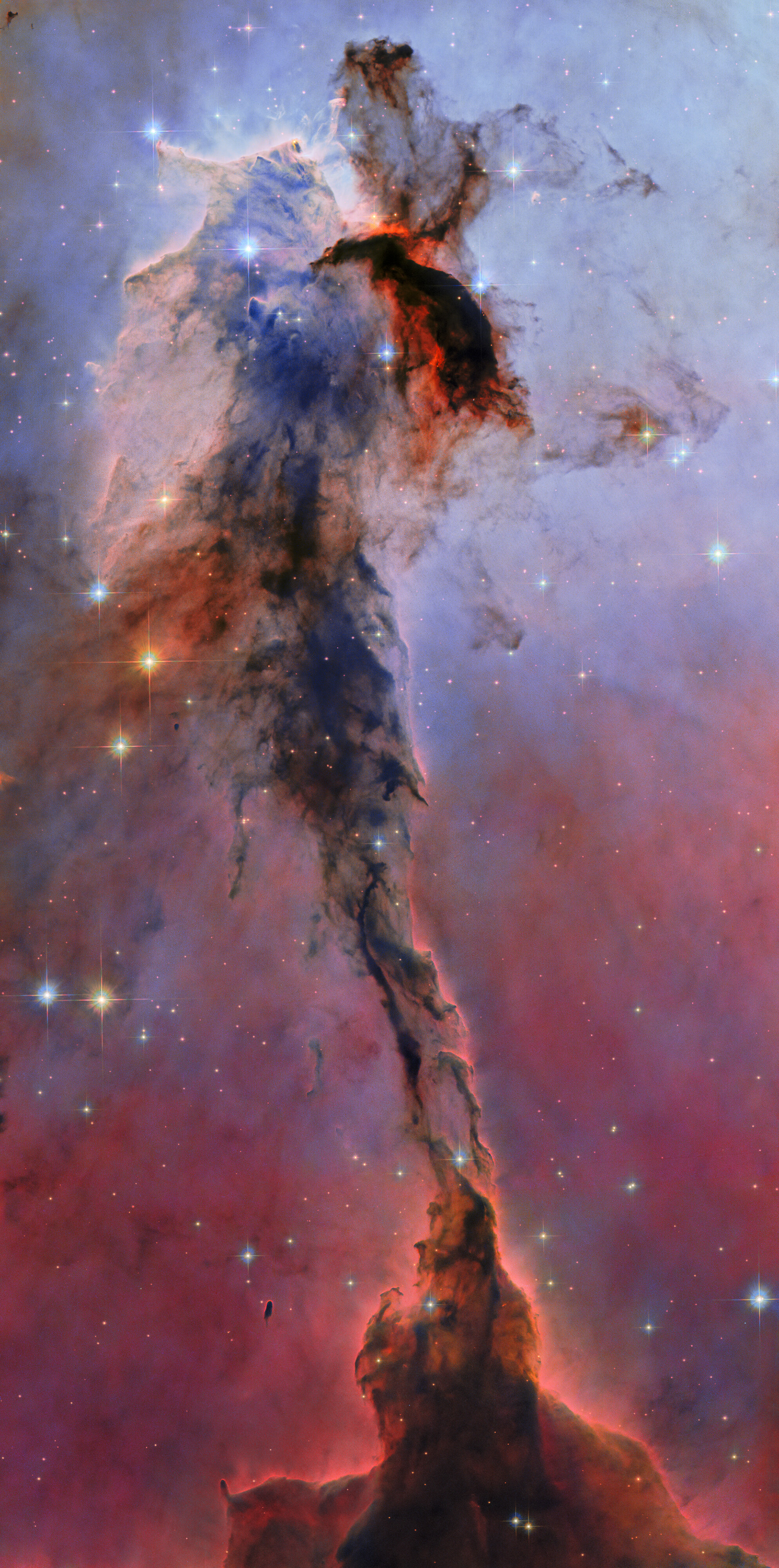
![This image from the NASA/ESA/CSA James Webb Space Telescope depicts IC 1623, an entwined pair of interacting galaxies which lies around 270 million light-years from Earth in the constellation Cetus. The two galaxies in IC 1623 are plunging headlong into one another in a process known as a galaxy merger. Their collision has ignited a frenzied spate of star formation known as a starburst, creating new stars at a rate more than twenty times that of the Milky Way galaxy. This interacting galaxy system is particularly bright at infrared wavelengths, making it a perfect proving ground for Webb’s ability to study luminous galaxies. A team of astronomers captured IC 1623 across the infrared portions of the electromagnetic spectrum using a trio of Webb’s cutting-edge scientific instruments: MIRI, NIRSpec, and NIRCam. In so doing, they provided an abundance of data that will allow the astronomical community at large to fully explore how Webb’s unprecedented capabilities will help to unravel the complex interactions in galactic ecosystems. These observations are also accompanied by data from other observatories, including the NASA/ESA Hubble Space Telescope, and will help set the stage for future observations of galactic systems with Webb. The merger of these two galaxies has long been of interest to astronomers, and has previously been imaged by Hubble and by other space telescopes. The ongoing, extreme starburst causes intense infrared emission, and the merging galaxies may well be in the process of forming a supermassive black hole. A thick band of dust has blocked these valuable insights from the view of telescopes like Hubble. However, Webb’s infrared sensitivity and its impressive resolution at those wavelengths allows it to see past the dust and has resulted in the spectacular image above, a combination of MIRI and NIRCam imagery. The luminous core of the galaxy merger turns out to be both very bright and highly compact, so much so that Webb’s diffraction spikes appear atop the galaxy in this image. The 8-pronged, snowflake-like diffraction spikes are created by the interaction of starlight with the physical structure of the telescope. The spiky quality of Webb’s observations is particularly noticeable in images containing bright stars, such as Webb’s first deep field image. MIRI was contributed by ESA and NASA, with the instrument designed and built by a consortium of nationally funded European Institutes (The MIRI European Consortium) in partnership with JPL and the University of Arizona. NIRSpec was built for the European Space Agency (ESA) by a consortium of European companies led by Airbus Defence and Space (ADS) with NASA’s Goddard Space Flight Center providing its detector and micro-shutter subsystems. Results based on this observation of IC 1623 have been published in the Astrophysical Journal. [Image description: The two galaxies swirl into a single chaotic object in the centre. Long, blue spiral arms stretch vertically, faint at the edges. Hot gas spreads horizontally over that, mainly bright red with many small gold spots of star formation. The core of the merging galaxies is very bright and radiates eight large, golden diffraction spikes. The background is black, with many tiny galaxies in orange and blue.] Credit: ESA/Webb, NASA & CSA, L. Armus & A. Evans Acknowledgement: R. Colombari](https://cdn.myportfolio.com/e6b26236-639b-4064-900c-5a5469a04617/4486e851-a49e-4f6c-83fd-d108cff1de29_rw_1920.jpg?h=8ca52ceb91b58fafeefed99b943650c2)

![This image is dominated by NGC 7469, a luminous, face-on spiral galaxy approximately 90 000 light-years in diameter that lies roughly 220 million light-years from Earth in the constellation Pegasus. Its companion galaxy IC 5283 is partly visible in the lower left portion of this image. This spiral galaxy has recently been studied as part of the Great Observatories All-sky LIRGs Survey (GOALS) Early Release Science program with the NASA/ESA/CSA James Webb Space Telescope, which aims to study the physics of star formation, black hole growth, and feedback in four nearby, merging luminous infrared galaxies. Other galaxies studied as part of the survey include previous ESA/Webb Pictures of the Month II ZW 096 and IC 1623. NGC 7469 is home to an active galactic nucleus (AGN), which is an extremely bright central region that is dominated by the light emitted by dust and gas as it falls into the galaxy’s central black hole. This galaxy provides astronomers with the unique opportunity to study the relationship between AGNs and starburst activity because this particular object hosts an AGN that is surrounded by a starburst ring at a distance of a mere 1500 light-years. While NGC 7469 is one of the best studied AGNs in the sky, the compact nature of this system and the presence of a great deal of dust have made it difficult for scientists to achieve both the resolution and sensitivity needed to study this relationship in the infrared. Now, with Webb, astronomers can explore the galaxy’s starburst ring, the central AGN, and the gas and dust in between. Using Webb’s MIRI, NIRCam and NIRspec instruments to obtain images and spectra of NGC 7469 in unprecedented detail, the GOALS team has uncovered a number of details about the object. This includes very young star-forming clusters never seen before, as well as pockets of very warm, turbulent molecular gas, and direct evidence for the destruction of small dust grains within a few hundred light-years of the nucleus — proving that the AGN is impacting the surrounding interstellar medium. Furthermore, highly ionised, diffuse atomic gas seems to be exiting the nucleus at roughly 6.4 million kilometres per hour — part of a galactic outflow that had previously been identified, but is now revealed in stunning detail with Webb. With analysis of the rich Webb datasets still underway, additional secrets of this local AGN and starburst laboratory are sure to be revealed. A prominent feature of this image is the striking six-pointed star that perfectly aligns with the heart of NGC 7469. Unlike the galaxy, this is not a real celestial object, but an imaging artifact known as a diffraction spike, caused by the bright, unresolved AGN. Diffraction spikes are patterns produced as light bends around the sharp edges of a telescope. Webb’s primary mirror is composed of hexagonal segments that each contain edges for light to diffract against, giving six bright spikes. There are also two shorter, fainter spikes, which are created by diffraction from the vertical strut that helps support Webb’s secondary mirror. [Image Description: This image shows a spiral galaxy that is dominated by a bright central region. The galaxy has blue-purple hues with orange-red regions filled with stars. Also visible is large diffraction spike, which appears as a star pattern over the central region of the galaxy. Lots of stars and galaxies fill the background scene.] Credit: ESA/Webb, NASA & CSA, L. Armus, A. S. Evans](https://cdn.myportfolio.com/e6b26236-639b-4064-900c-5a5469a04617/dd451194-e453-467f-9403-d78509e0f01b_rw_1920.jpg?h=5d3407ff37ebb80ef18d033a42e1f00e)
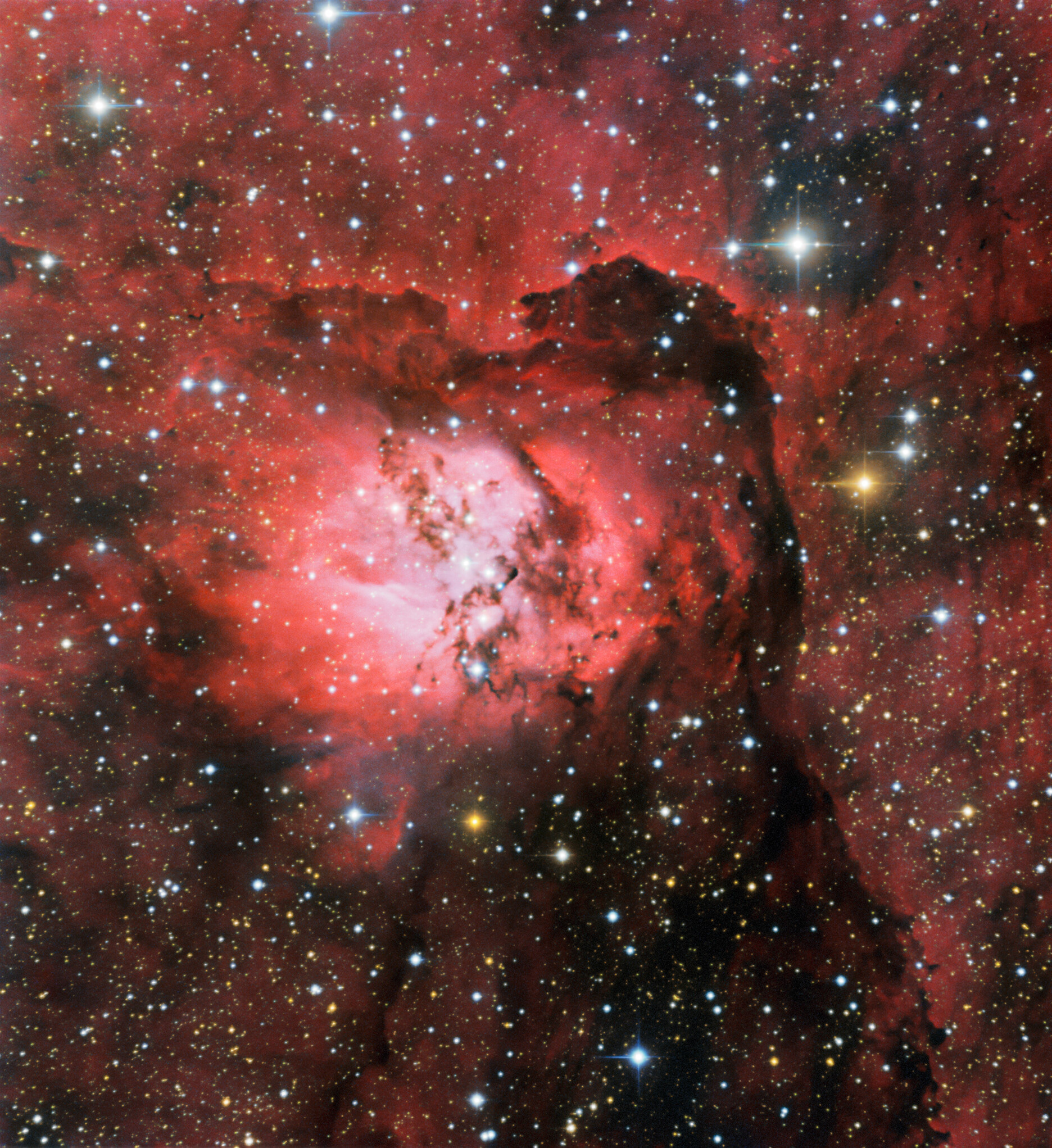
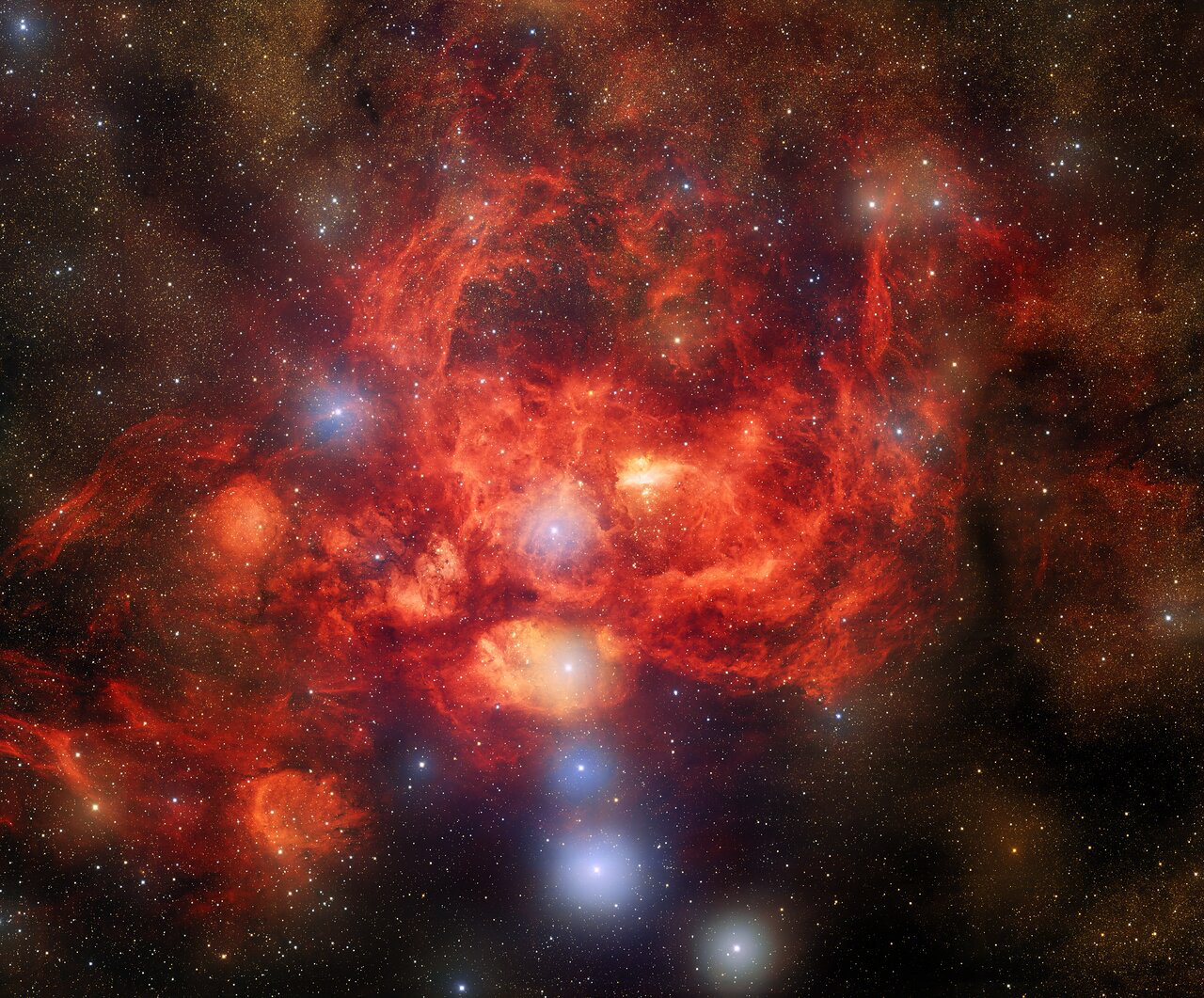
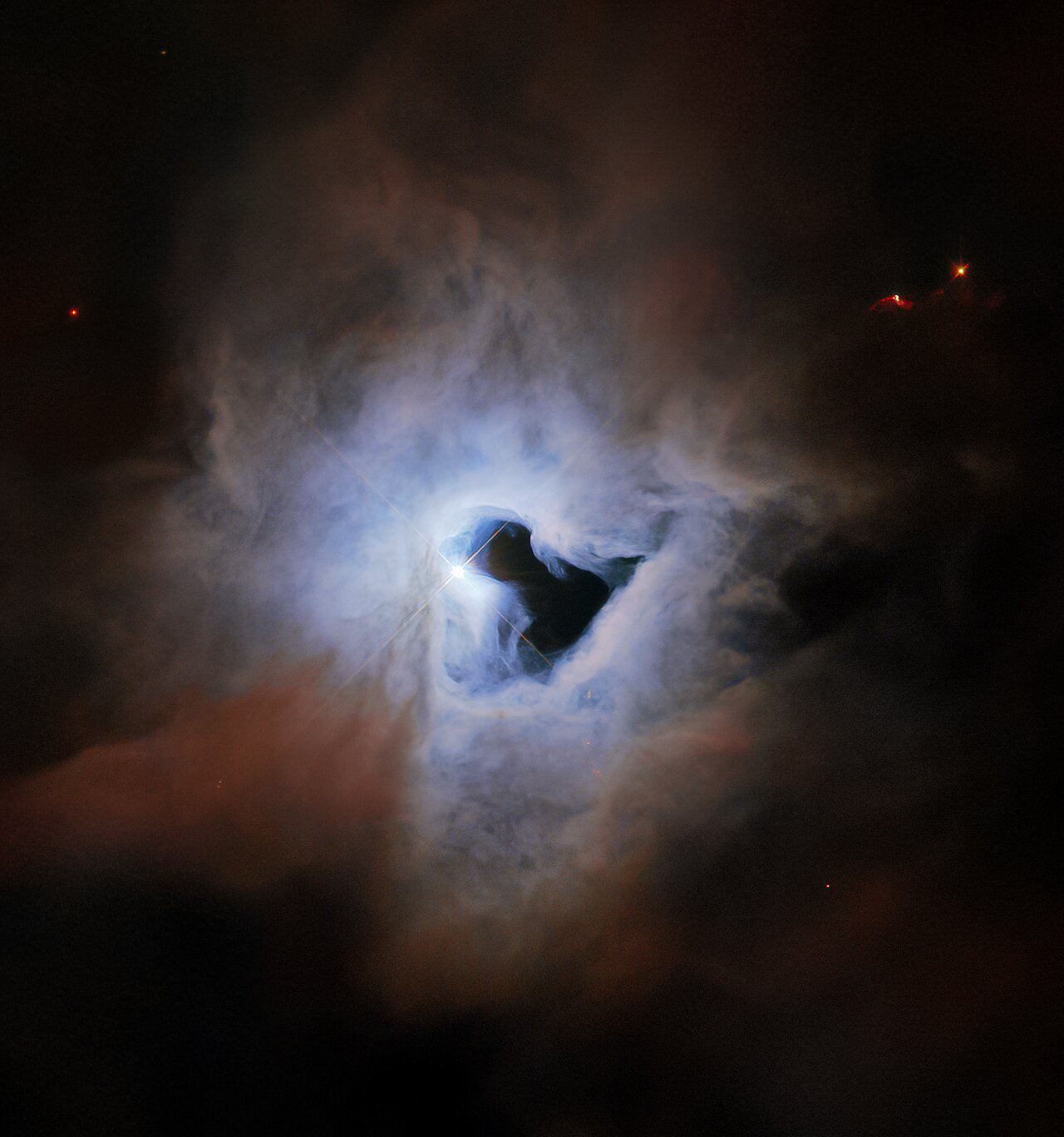
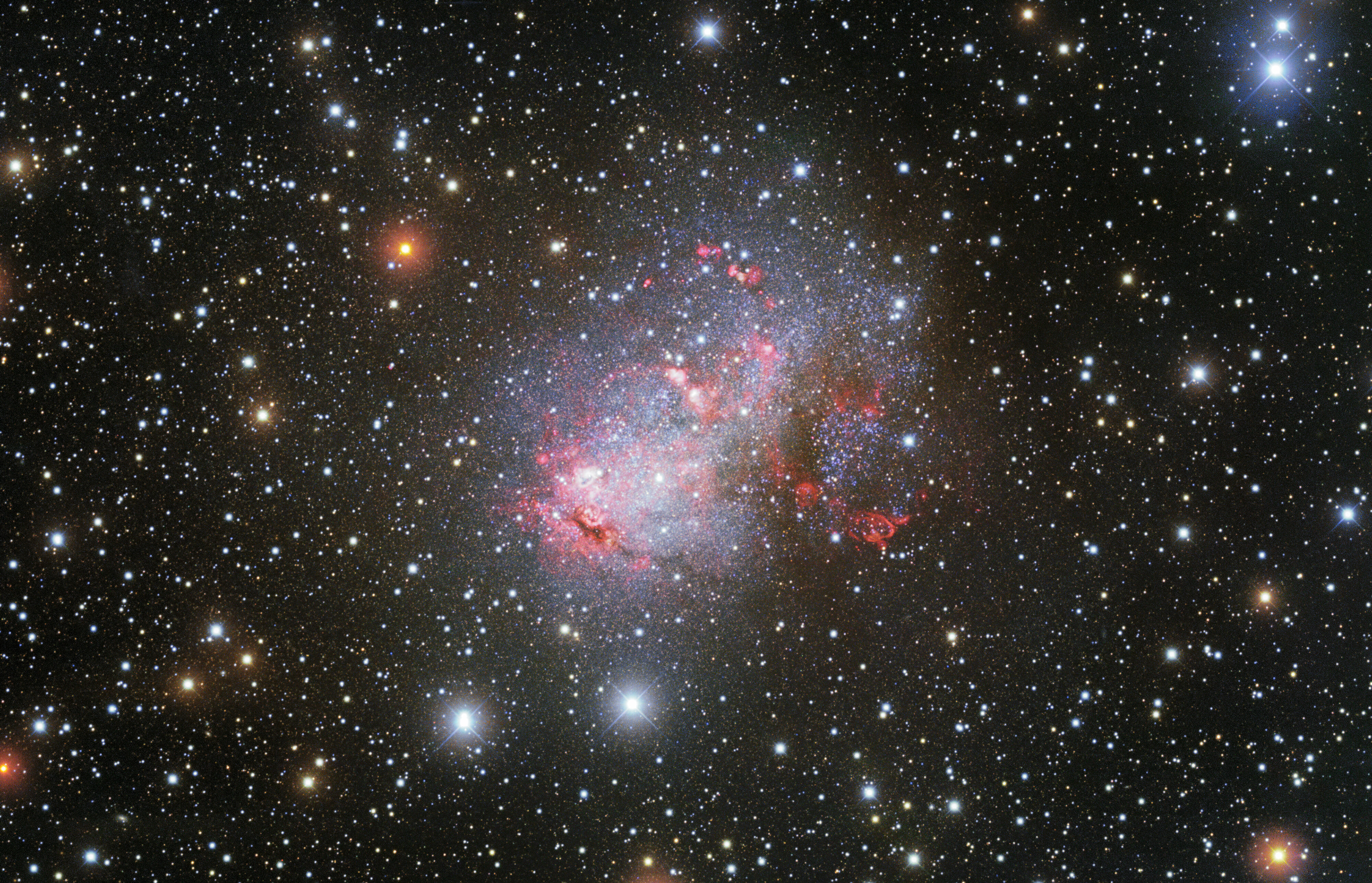
![Just in time for the festive season, this new Picture of the Week from the NASA/ESA Hubble Space Telescope features a glistening scene in holiday red. This image shows a small region of the well-known nebula Westerhout 5, which lies about 7000 light-years from Earth. Suffused with bright red light, this luminous image hosts a variety of interesting features, including a free-floating Evaporating Gaseous Globule (frEGG). The frEGG in this image is the small tadpole-shaped dark region in the upper centre-left. This buoyant-looking bubble is lumbered with two rather uninspiring names — [KAG2008] globule 13 and J025838.6+604259. FrEGGs are a particular class of Evaporating Gaseous Globules (EGGs). Both frEGGs and EGGs are regions of gas that are sufficiently dense that they photoevaporate less easily than the less compact gas surrounding them. Photoevaporation occurs when gas is ionised and dispersed away by an intense source of radiation — typically young, hot stars releasing vast amounts of ultraviolet light. EGGs were only identified fairly recently, most notably at the tips of the Pillars of Creation, which were captured by Hubble in iconic images released in 1995. FrEGGs were classified even more recently, and are distinguished from EGGs by being detached and having a distinct ‘head-tail’ shape. FrEGGs and EGGs are of particular interest because their density makes it more difficult for intense UV radiation, found in regions rich in young stars, to penetrate them. Their relative opacity means that the gas within them is protected from ionisation and photoevaporation. This is thought to be important for the formation of protostars, and it is predicted that many FrEGGs and EGGs will play host to the birth of new stars. The frEGG in this image is a dark spot in the sea of red light. The red colour is caused by a particular type of light emission known as H-alpha emission. This occurs when a very energetic electron within a hydrogen atom loses a set amount of its energy, causing the electron to become less energetic and this distinctive red light to be released. [Image description: The background is filled with bright orange-red clouds of varying density. Towards the top-left several large, pale blue stars with prominent cross-shaped spikes are scattered. A small, tadpole-shaped dark patch floats near one of these stars. More of the same dark, dense gas fills the lower-right, resembling black smoke. A bright yellow star and a smaller blue star shine in front of this.] Links Video of Festive and Free-Floating Credit: ESA/Hubble & NASA, R. Sahai](https://cdn.myportfolio.com/e6b26236-639b-4064-900c-5a5469a04617/1a2668a6-ef34-4a4c-80d7-63022d0ee88e_rw_1920.jpg?h=7e4d7d946308e8dca7b5bb1c9208e9dc)
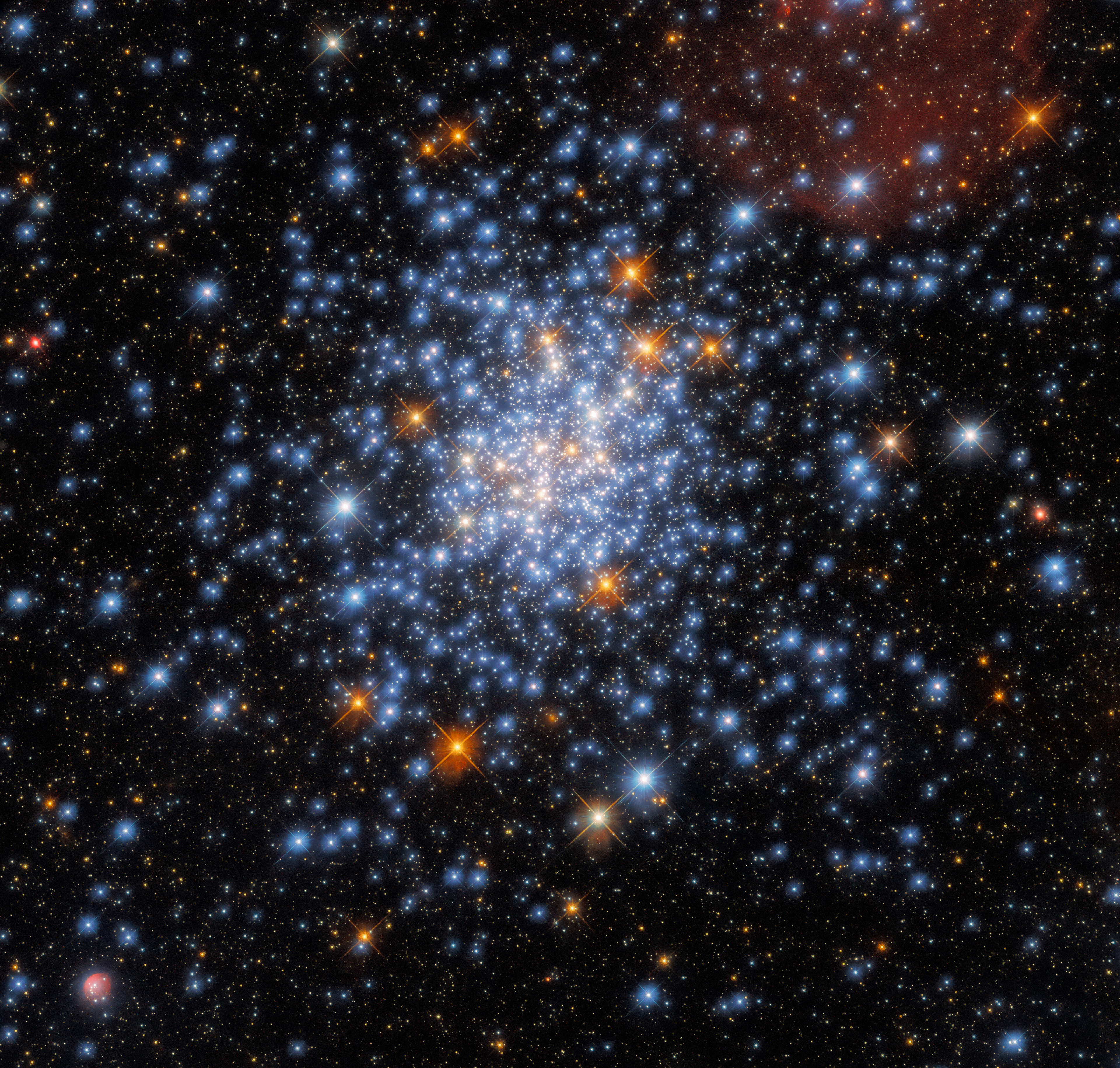
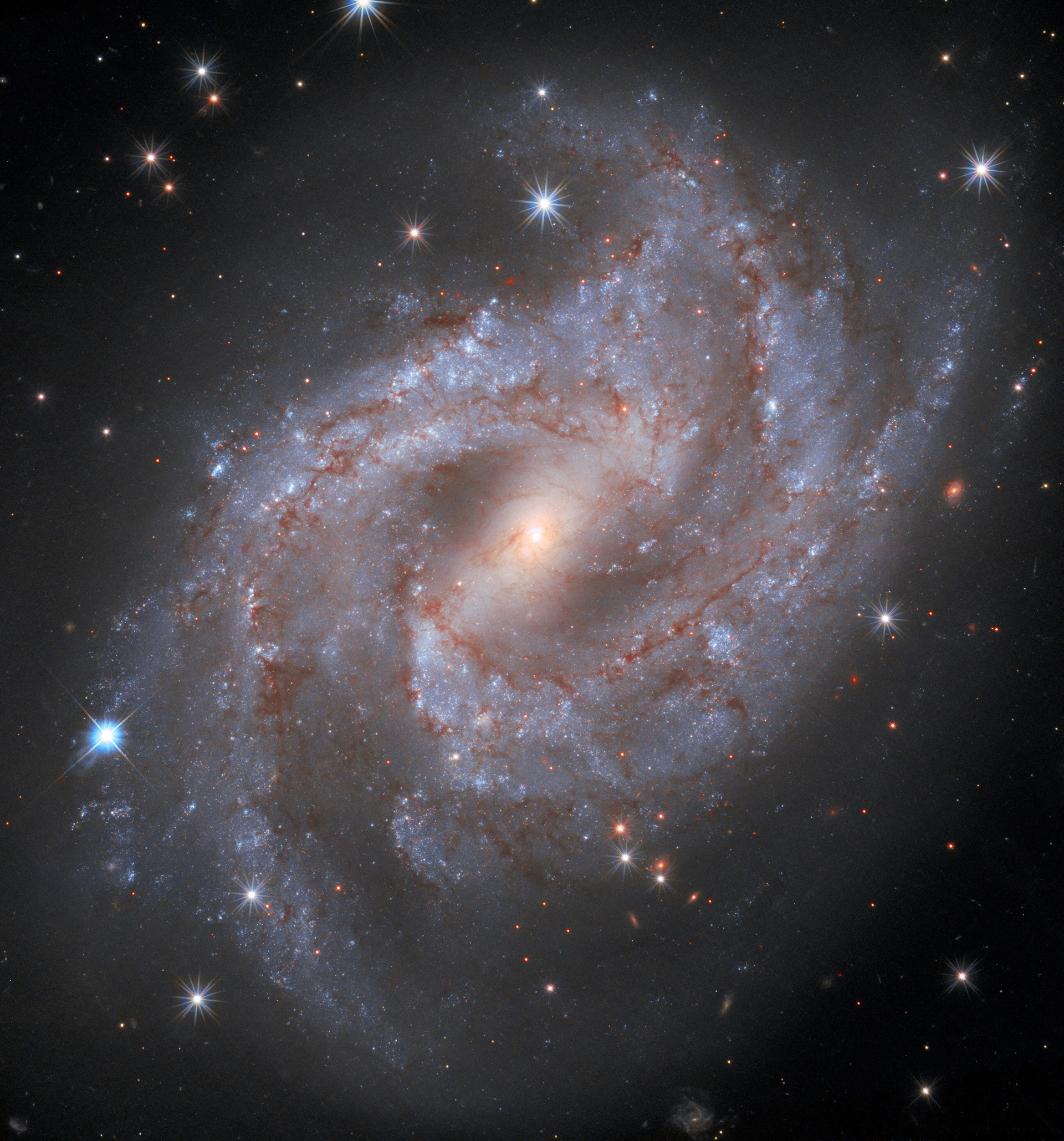
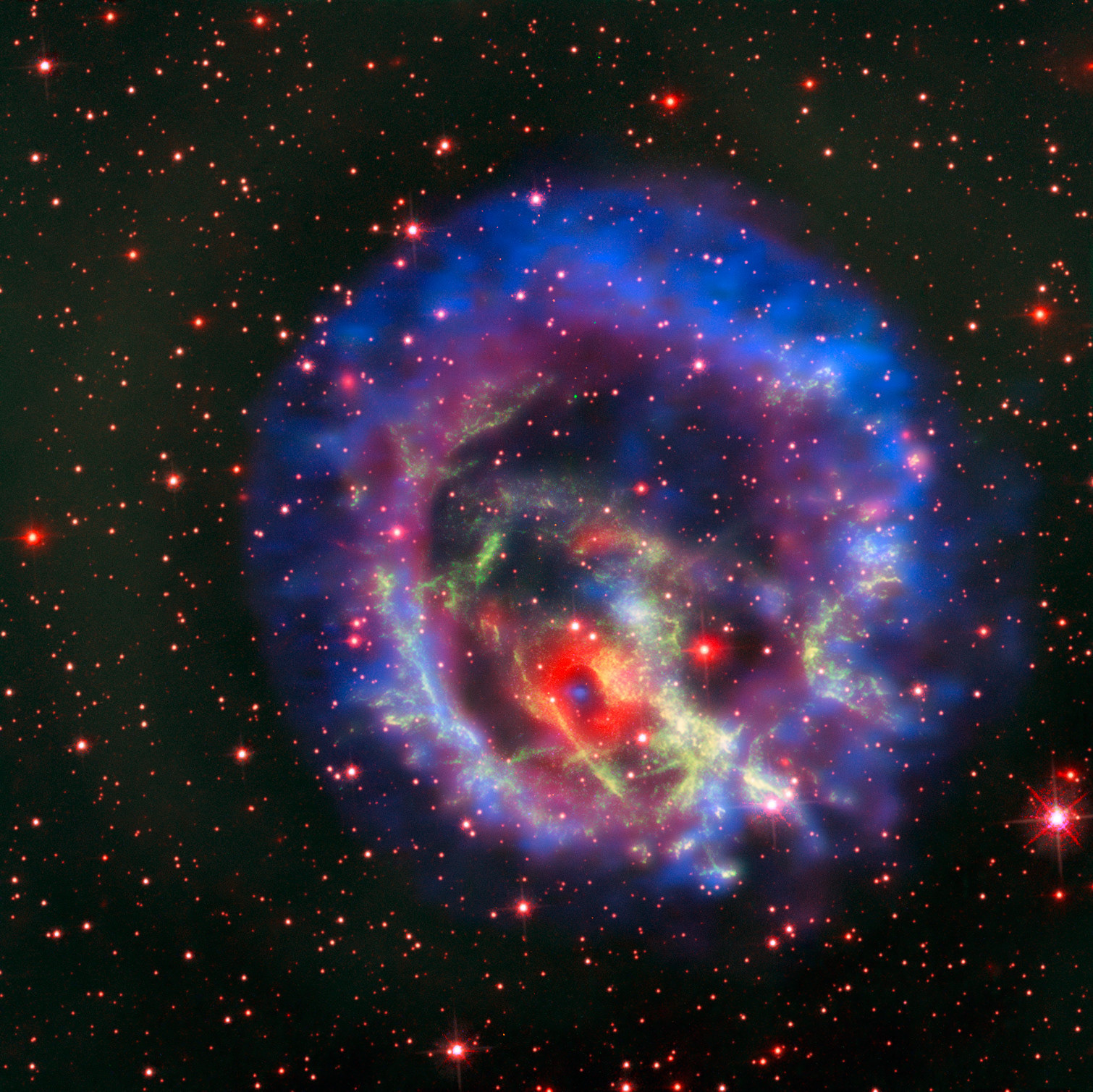
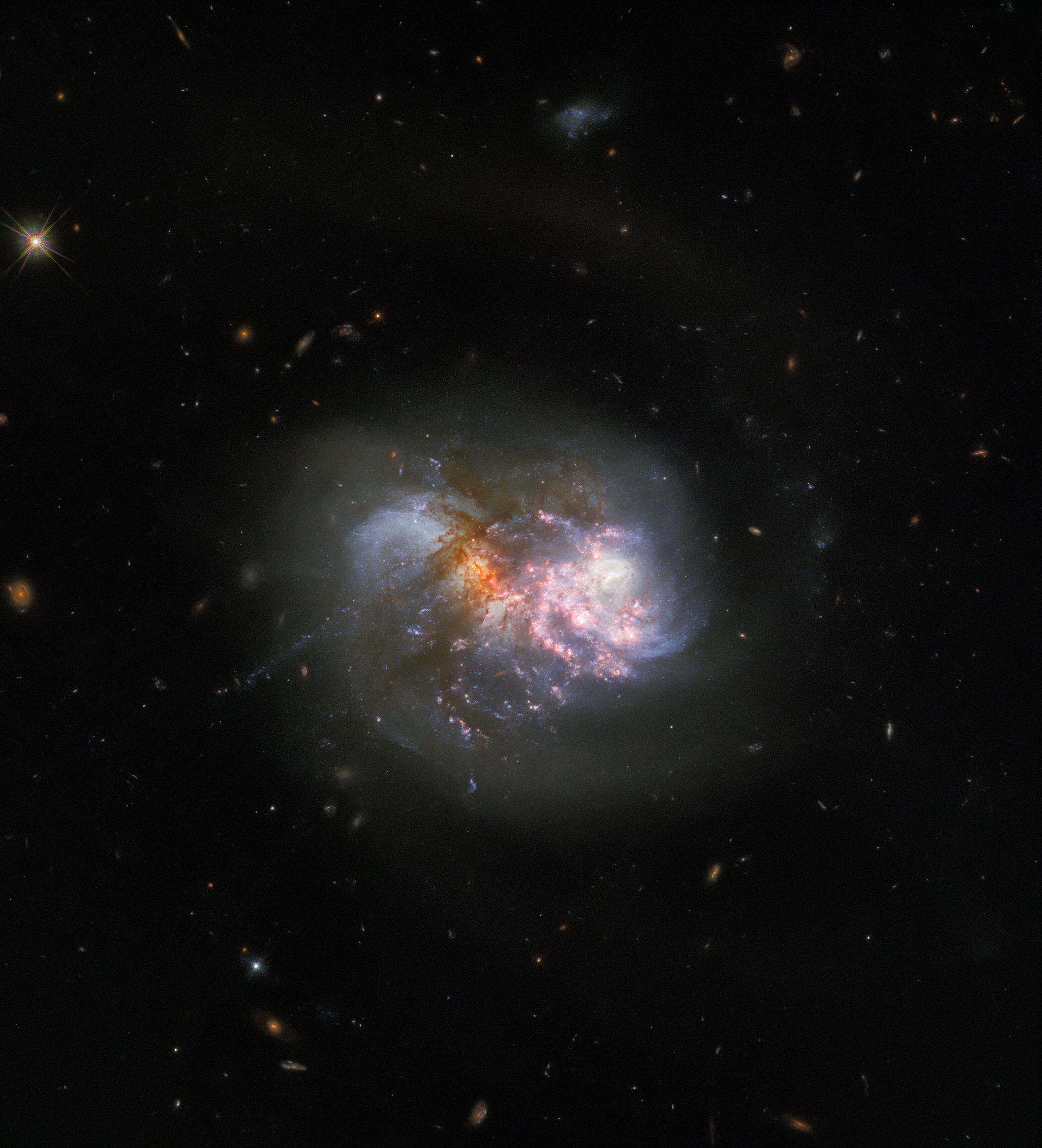
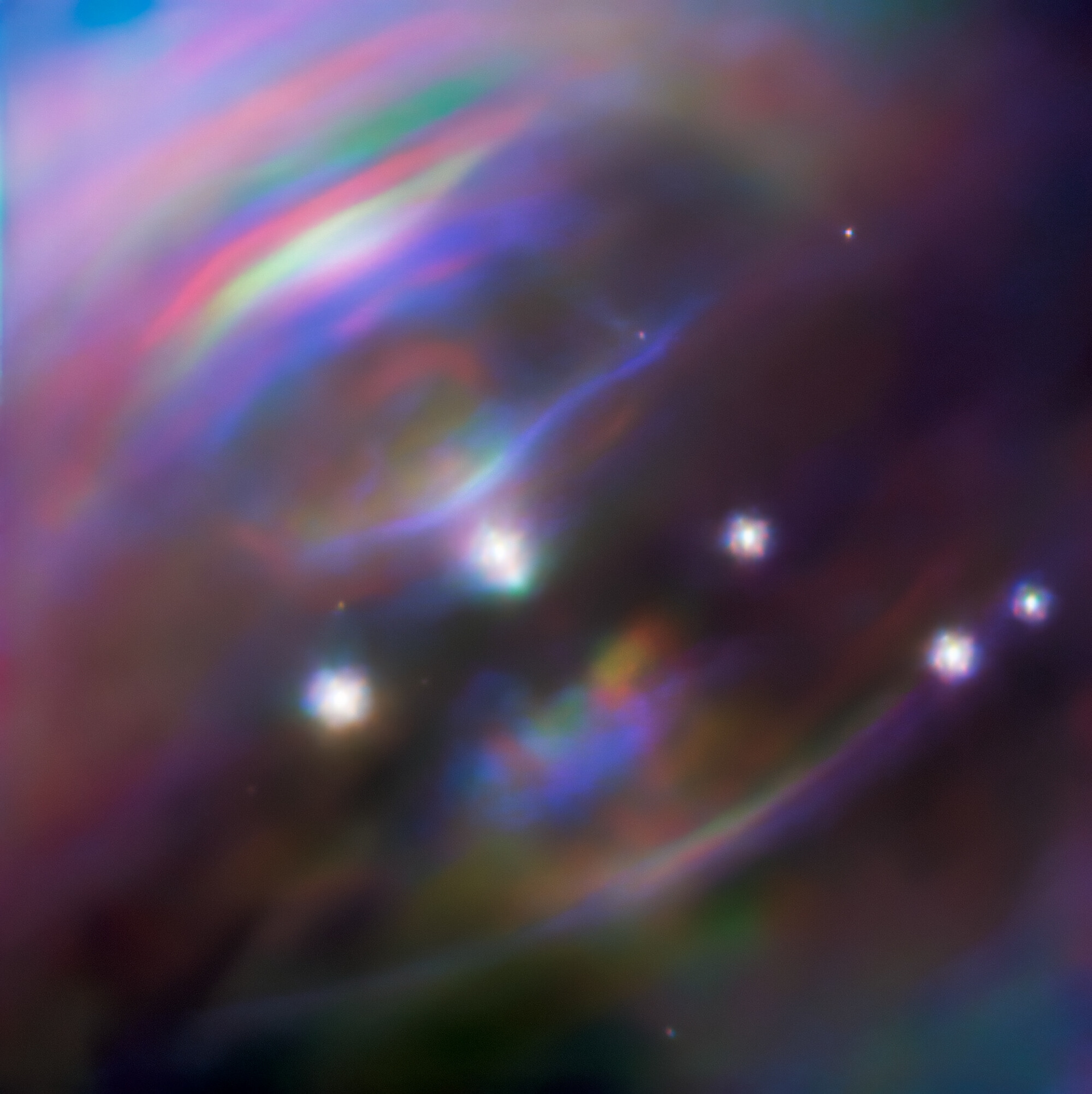
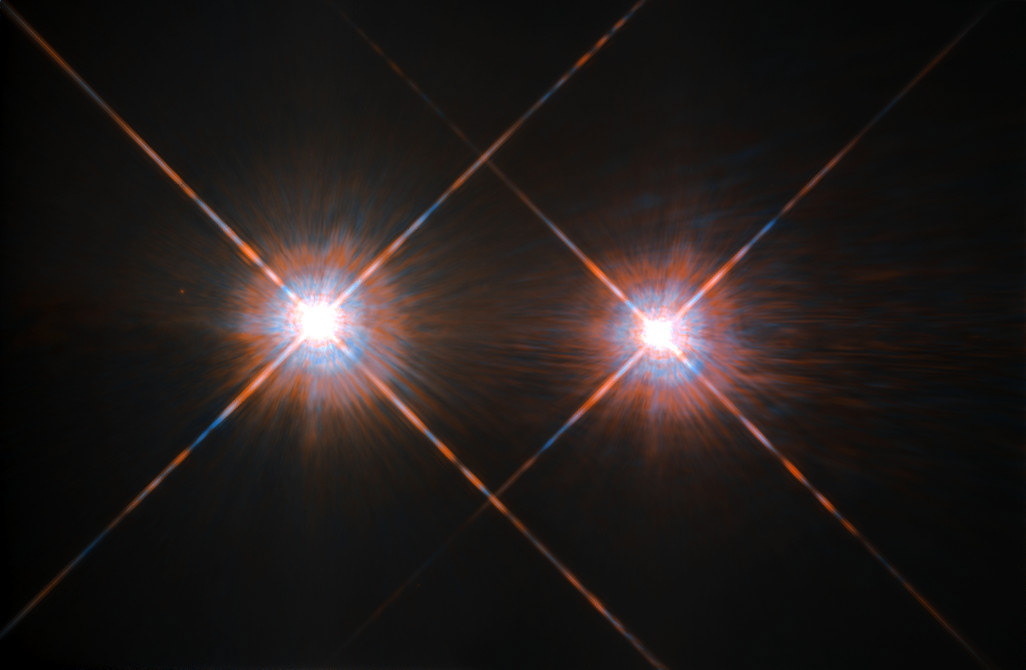
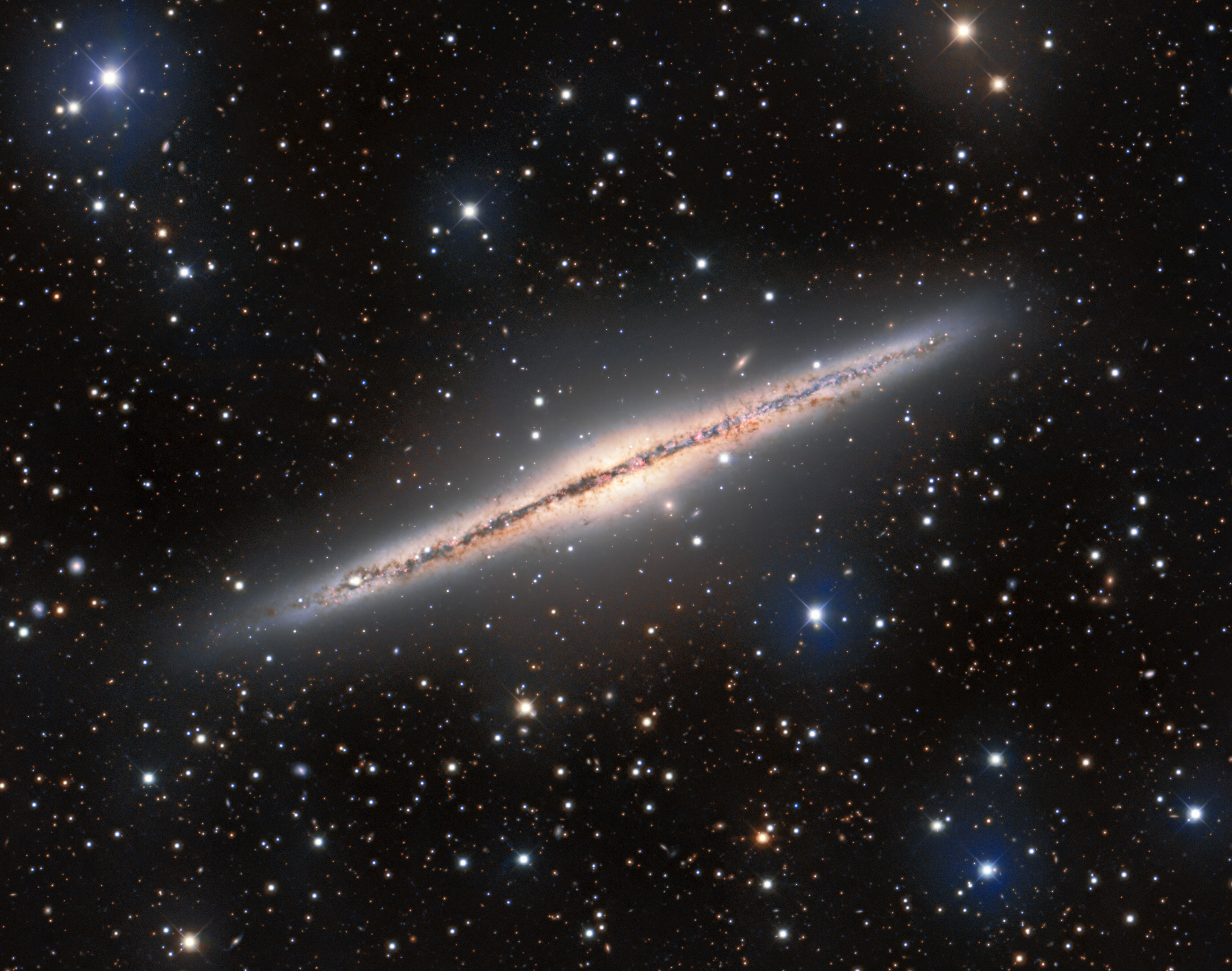

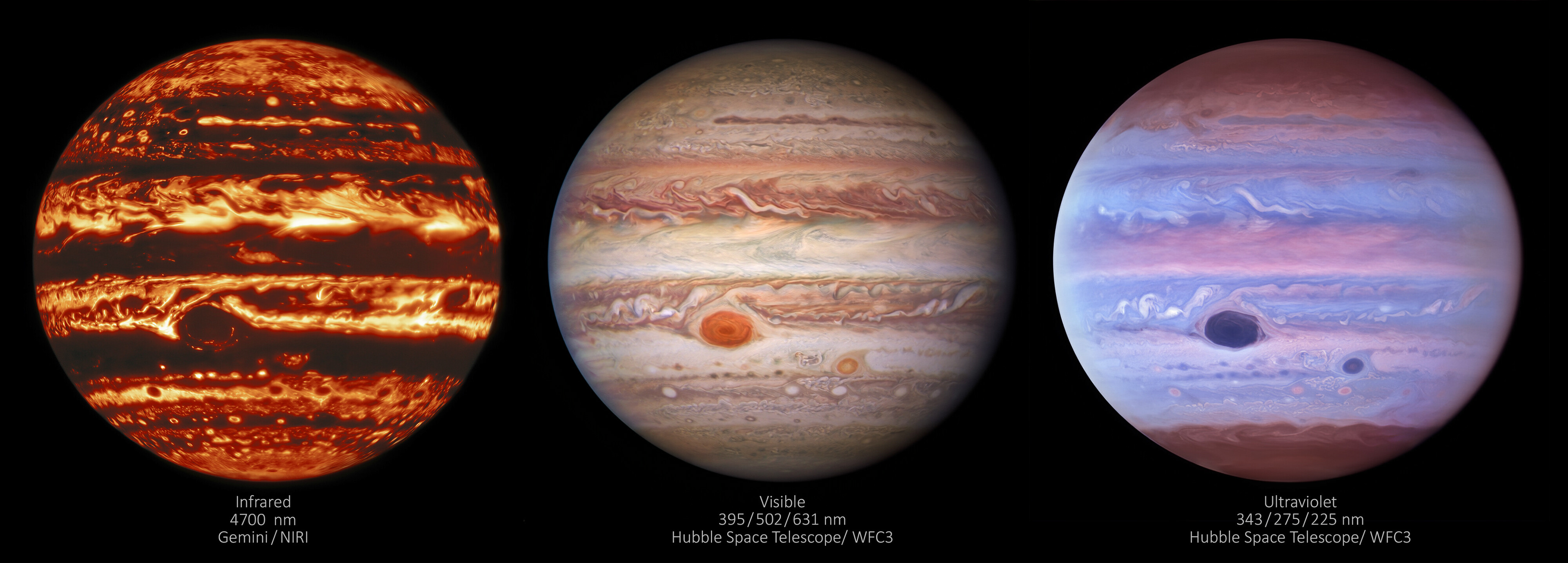
![The Dumbbell Nebula — also known as Messier 27 or NGC 6853 — is a typical planetary nebula and is located in the constellation Vulpecula (The Fox). The distance is rather uncertain, but is believed to be around 1,200 light-years. It was first described by the French astronomer and comet hunter Charles Messier who found it in 1764 and included it as no. 27 in his famous list of extended sky objects [2] .Despite its class, the Dumbbell Nebula has nothing to do with planets. It consists of very rarified gas that has been ejected from the hot central star (well visible on this photo), now in one of the last evolutionary stages. The gas atoms in the nebula are excited (heated) by the intense ultraviolet radiation from this star and emit strongly at specific wavelengths. This image is the beautiful by-product of a technical test of some FORS1 narrow-band optical interference filtres. They only allow light in a small wavelength range to pass and are used to isolate emissions from particular atoms and ions. In this three-colour composite, a short exposure was first made through a wide-band filtre registering blue light from the nebula. It was then combined with exposures through two interference filtres in the light of double-ionized oxygen atoms and atomic hydrogen. They were colour-coded as “blue”, “green” and “red”, respectively, and then combined to produce this picture that shows the structure of the nebula in “approximately true” colours. They are three-colour composite based on two interference ([OIII] at 501 nm and 6 nm FWHM — 5 min exposure time; H-alpha at 656 nm and 6 nm FWHM — 5 min) and one broadband (Bessell B at 429 nm and 88 nm FWHM; 30 sec) filtre images, obtained on September 28, 1998, during mediocre seeing conditions (0.8 arcsec). The CCD camera has 2048 x 2048 pixels, each covering 24 x 24 µm and the sky fields shown measure 6.8 x 6.8 arcminutes and 3.5 x 3.9 arcminutes, respectively. North is up; East is left. Credit: ESO/I. Appenzeller, W. Seifert, O. Stahl, M. Zamani](https://cdn.myportfolio.com/e6b26236-639b-4064-900c-5a5469a04617/09191cdf-8068-4cf9-a4a6-89abdb23aab3_rw_1920.jpg?h=65f9029aa776e0148c0799bf172c061b)


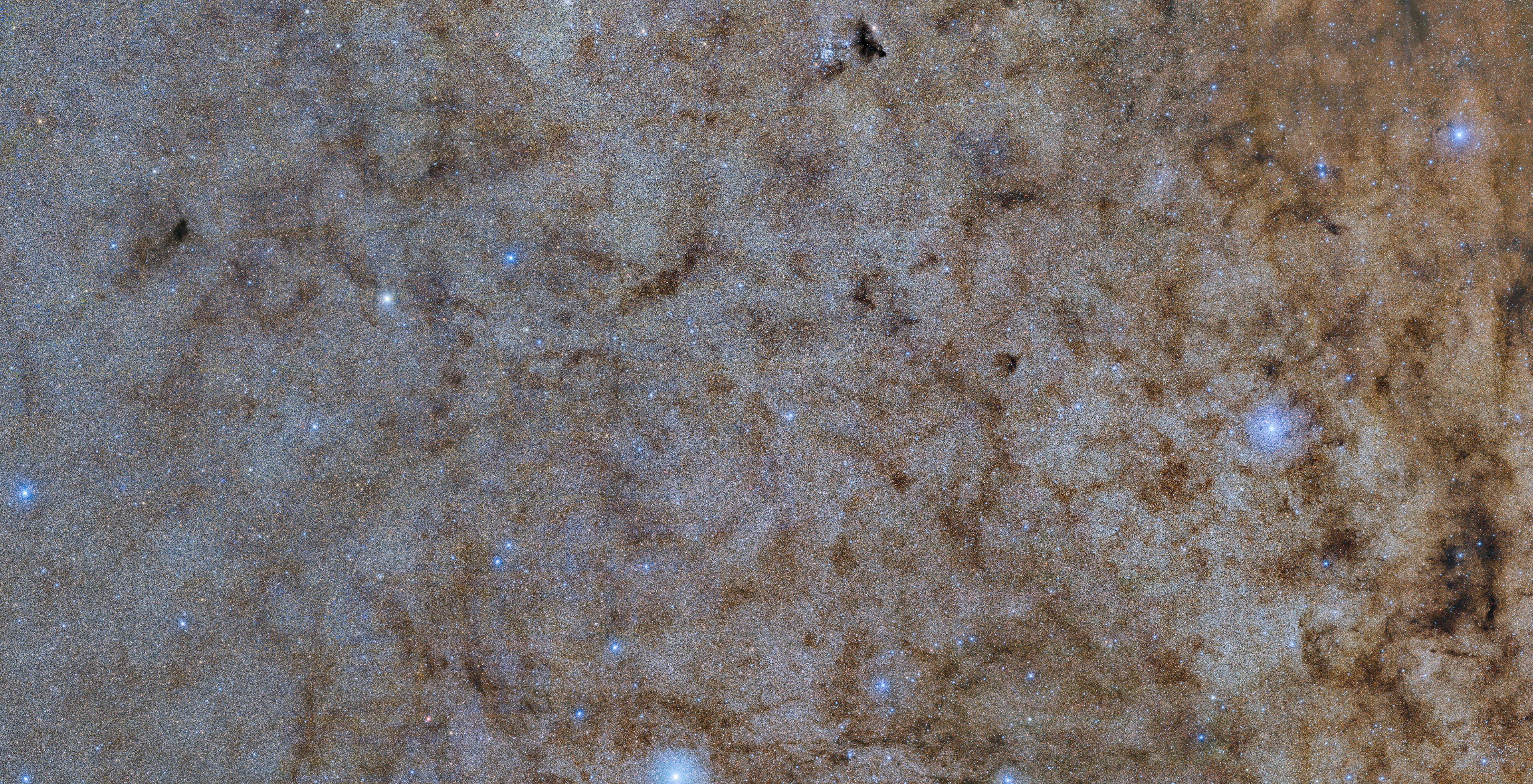
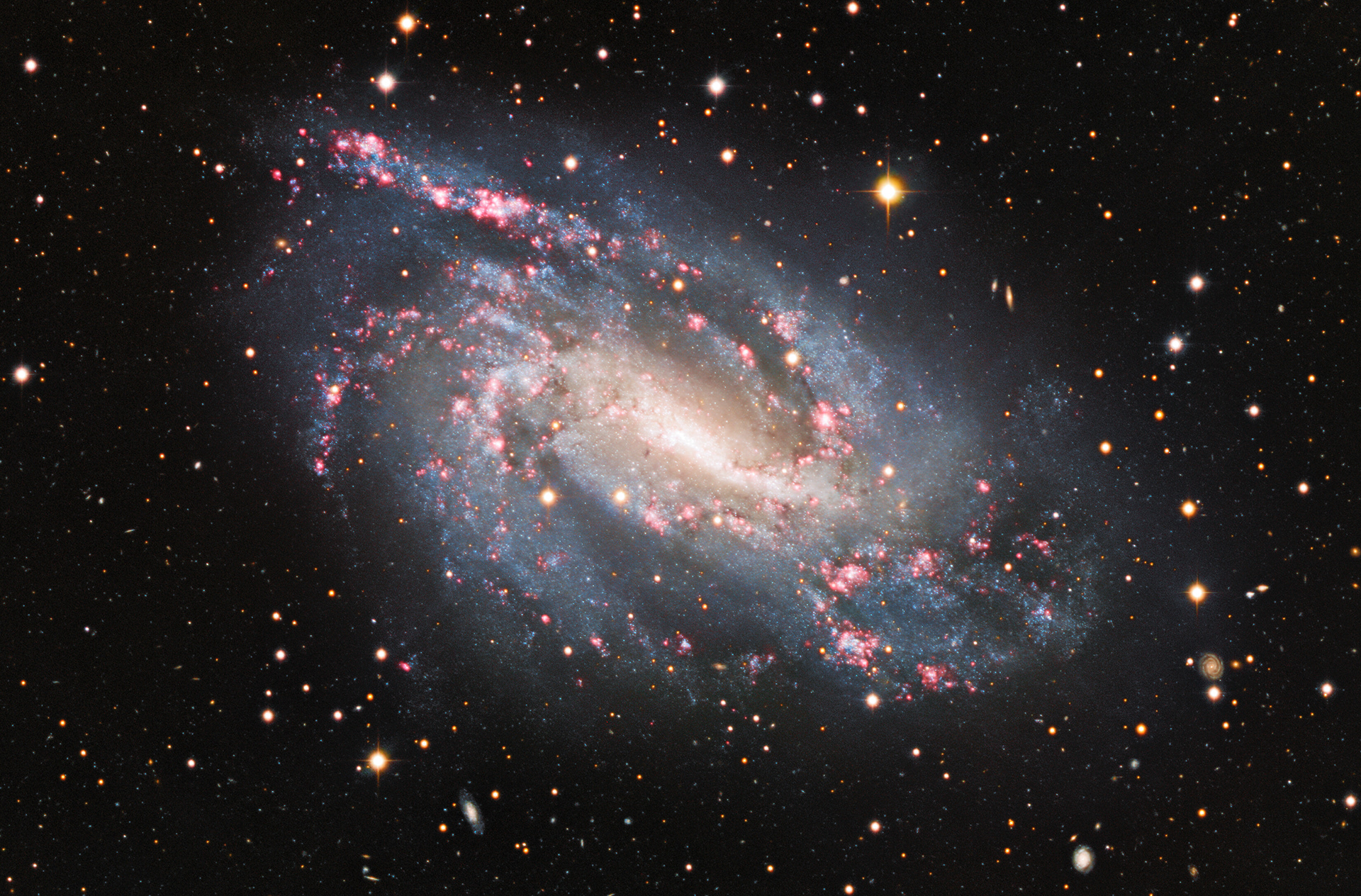

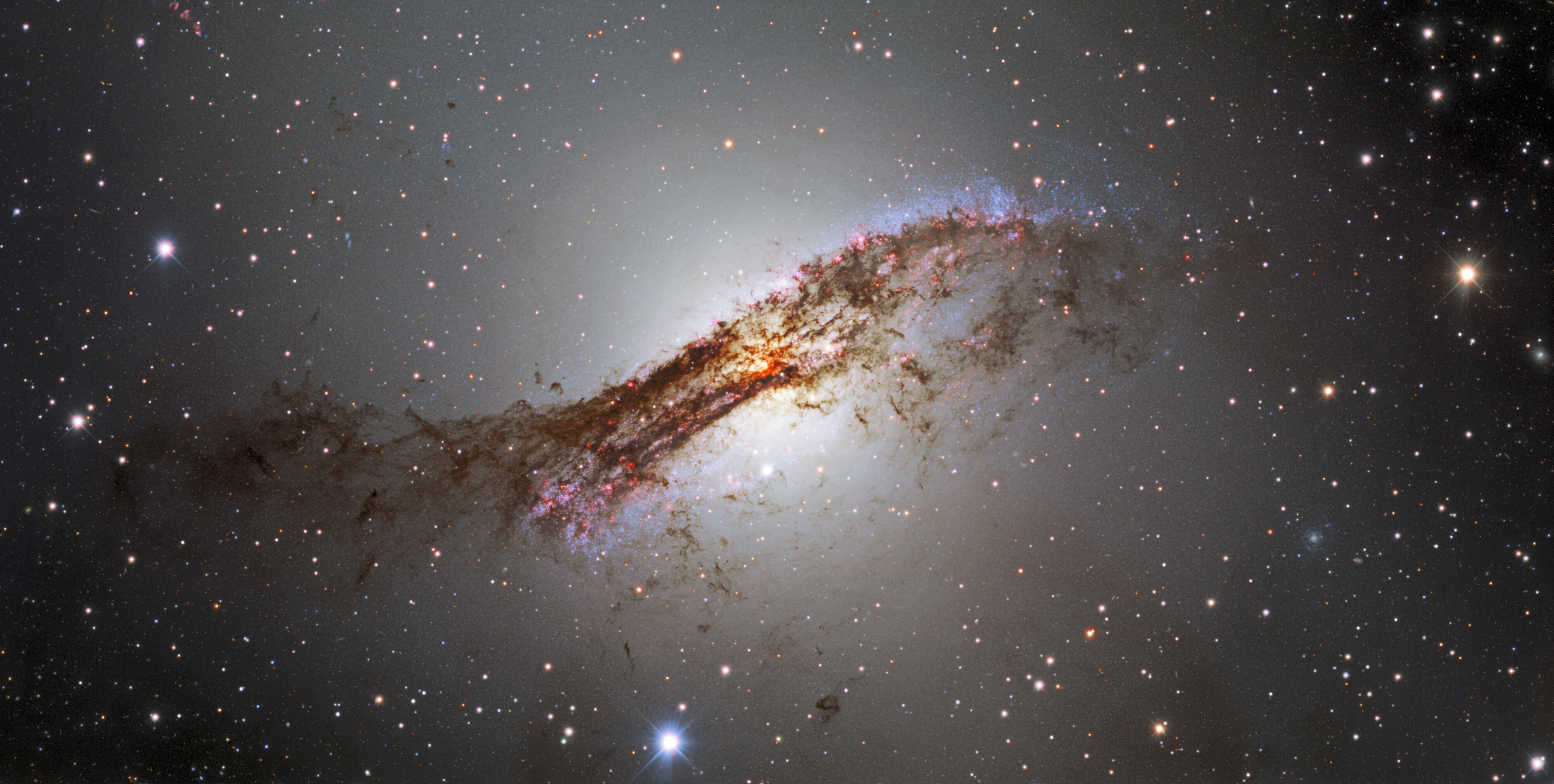

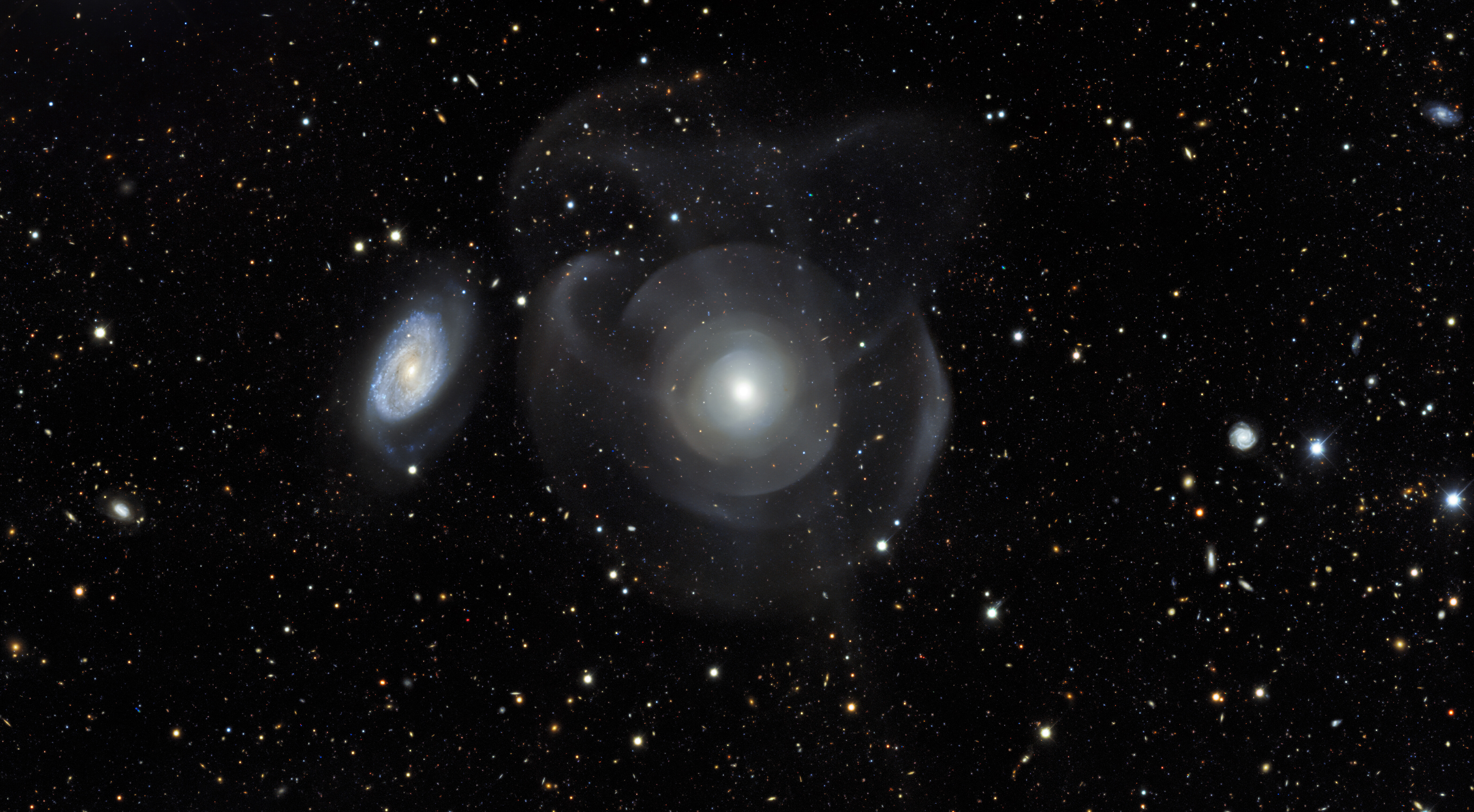
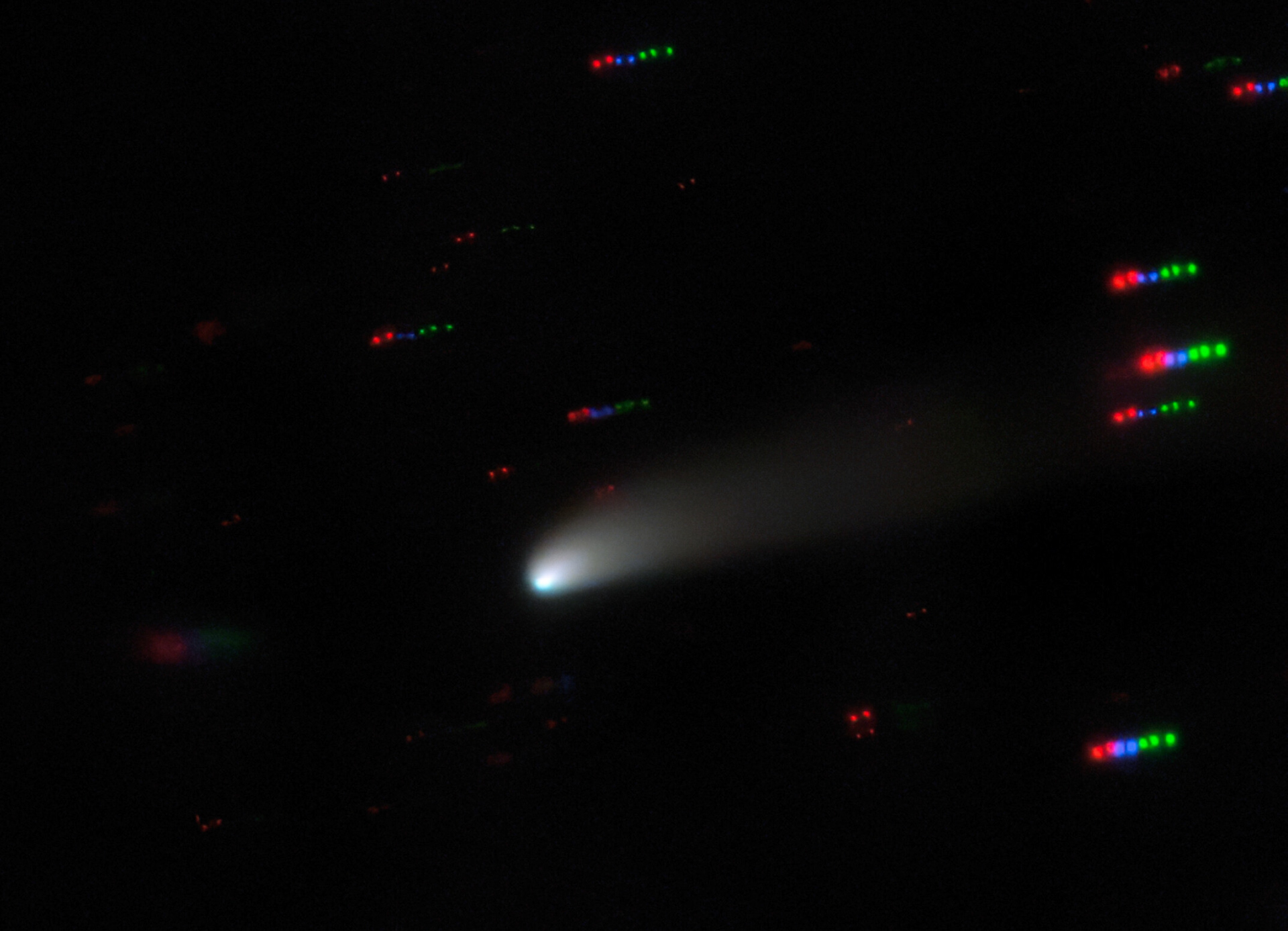
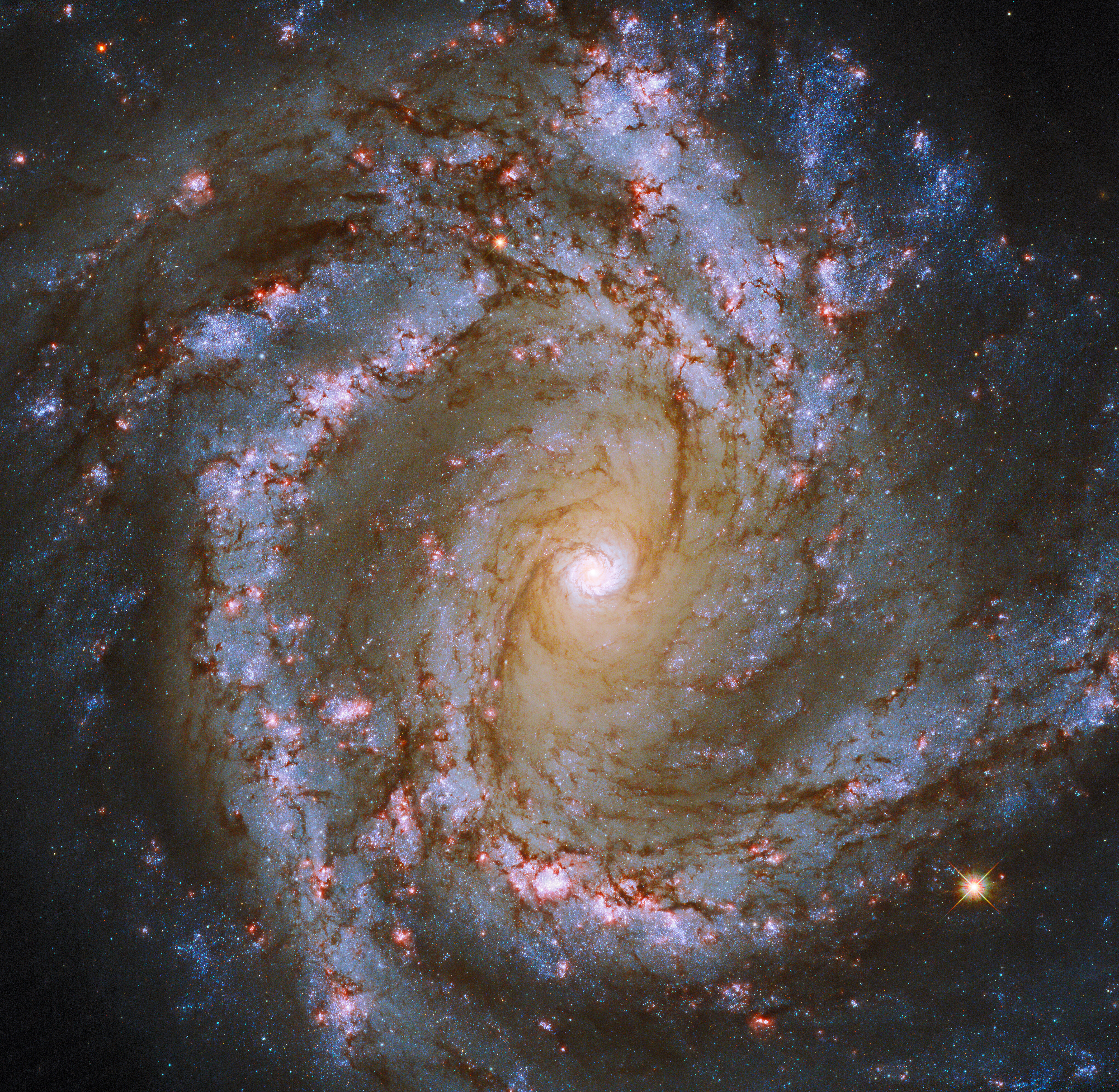
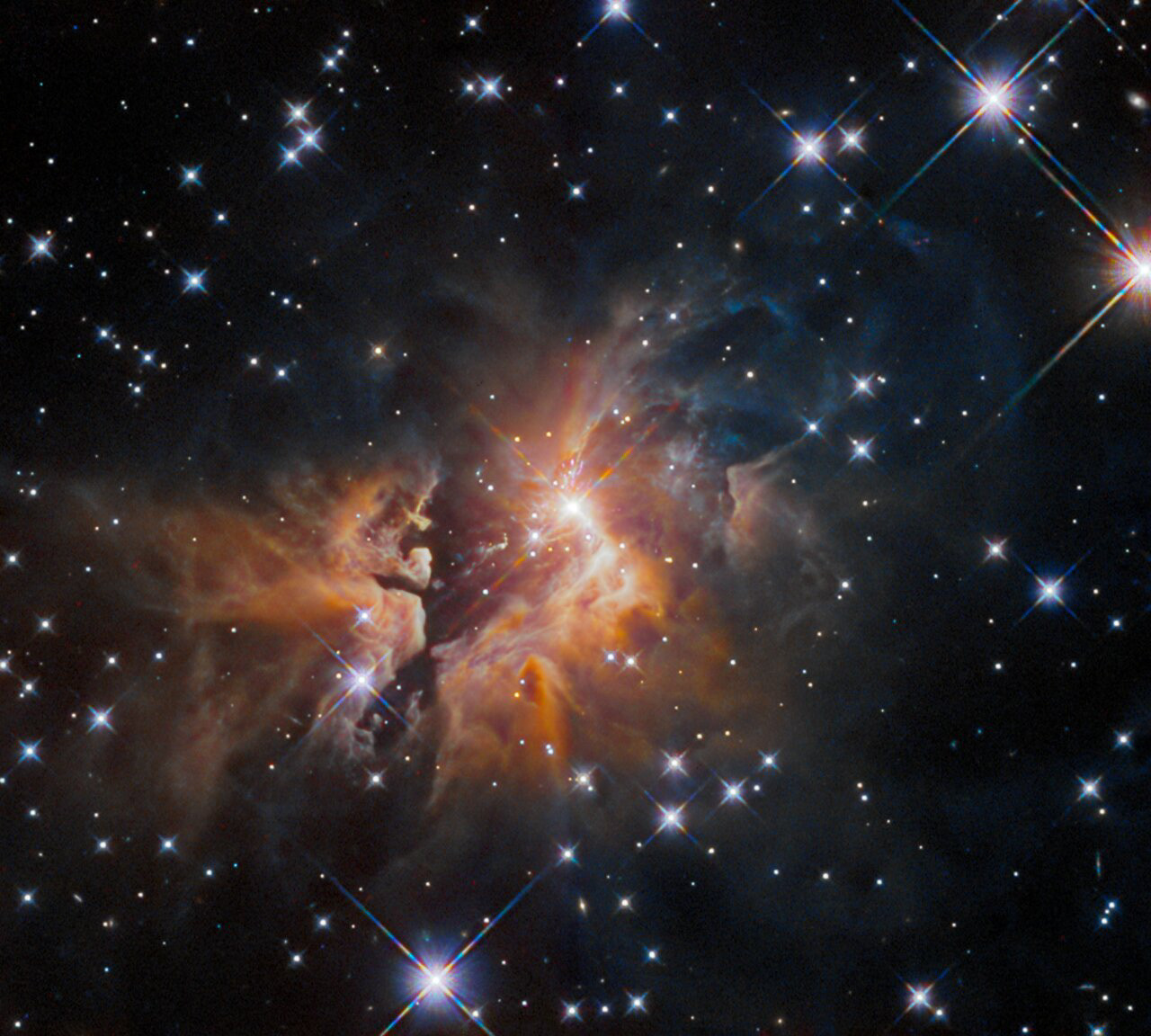
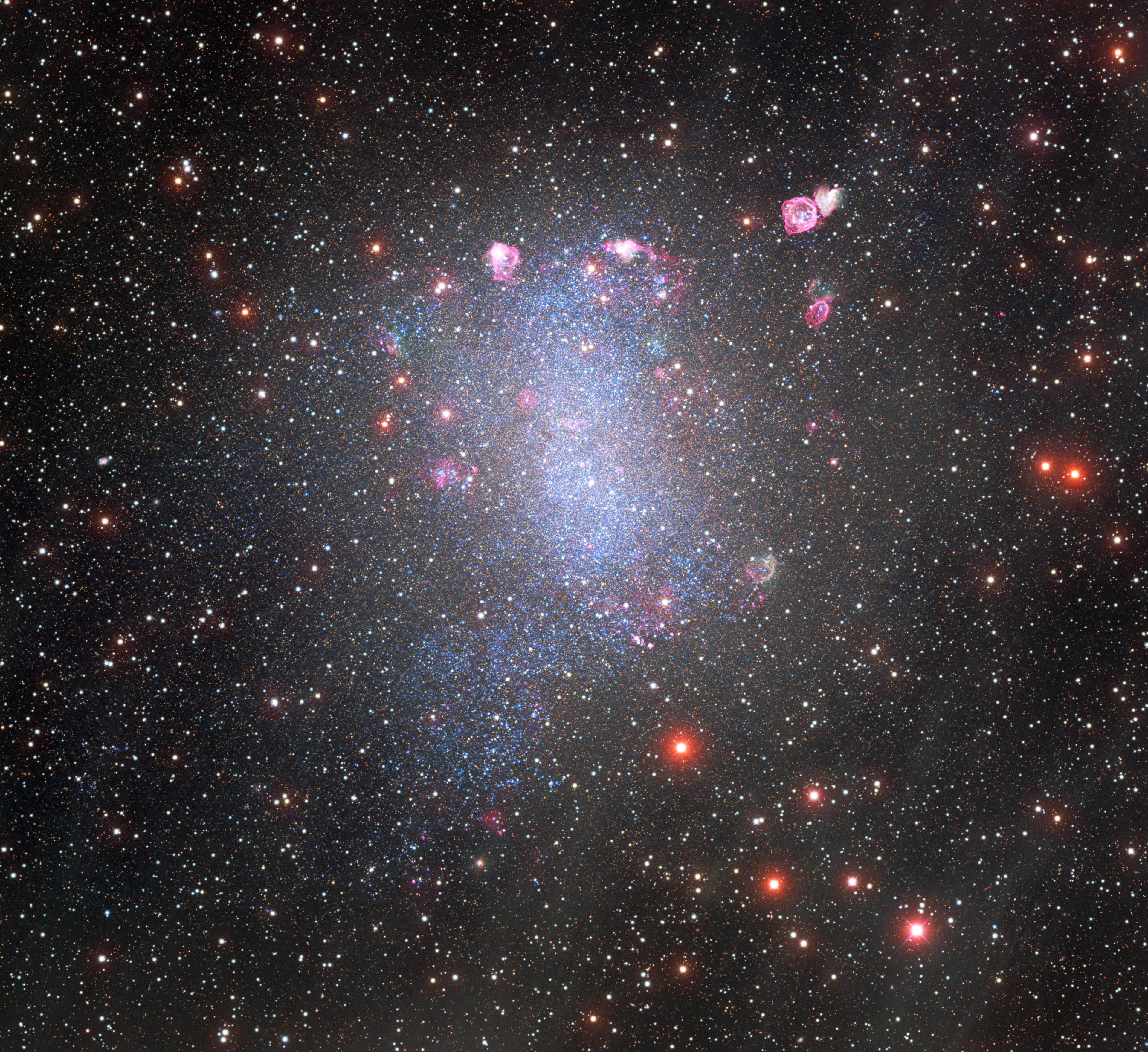
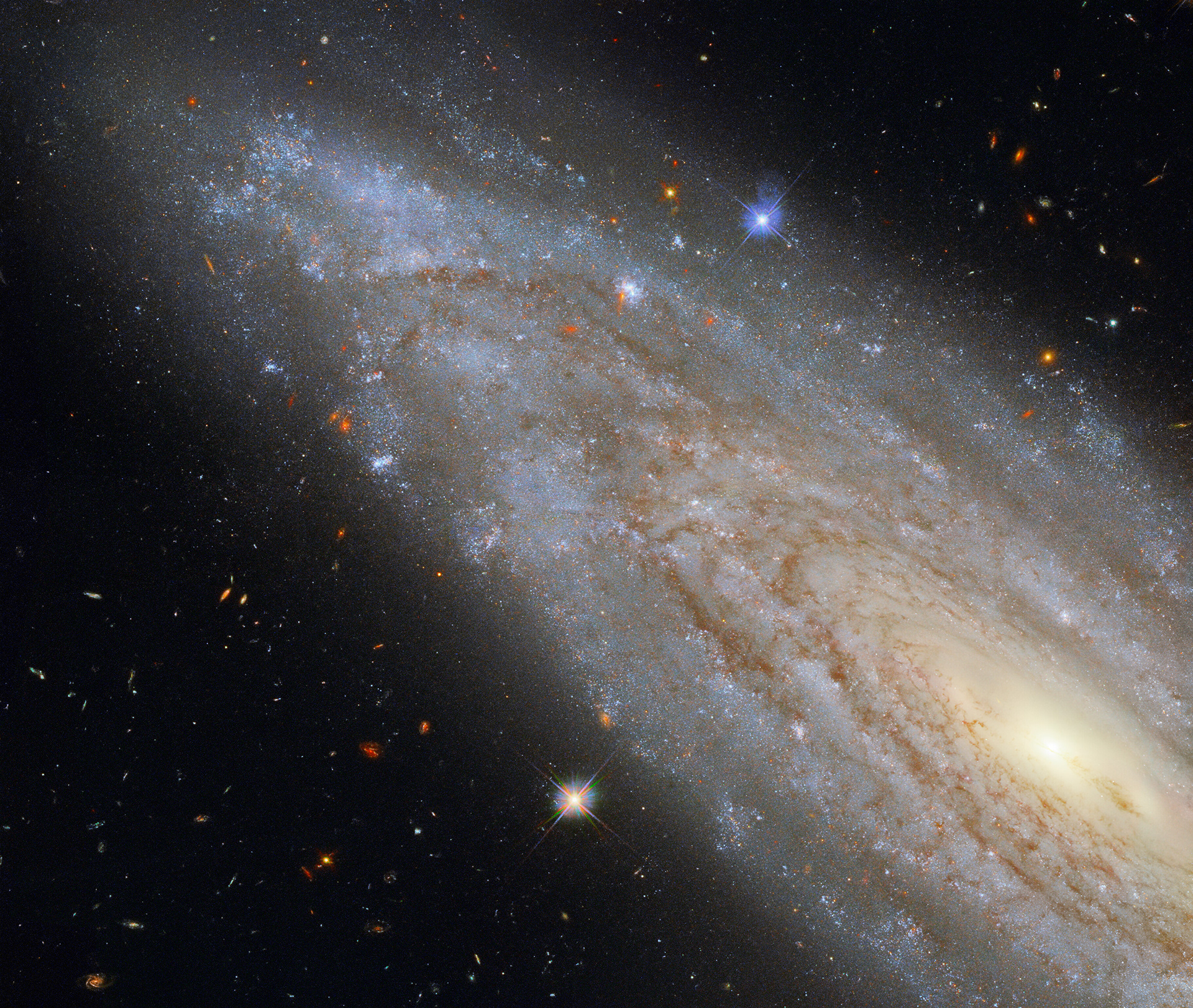
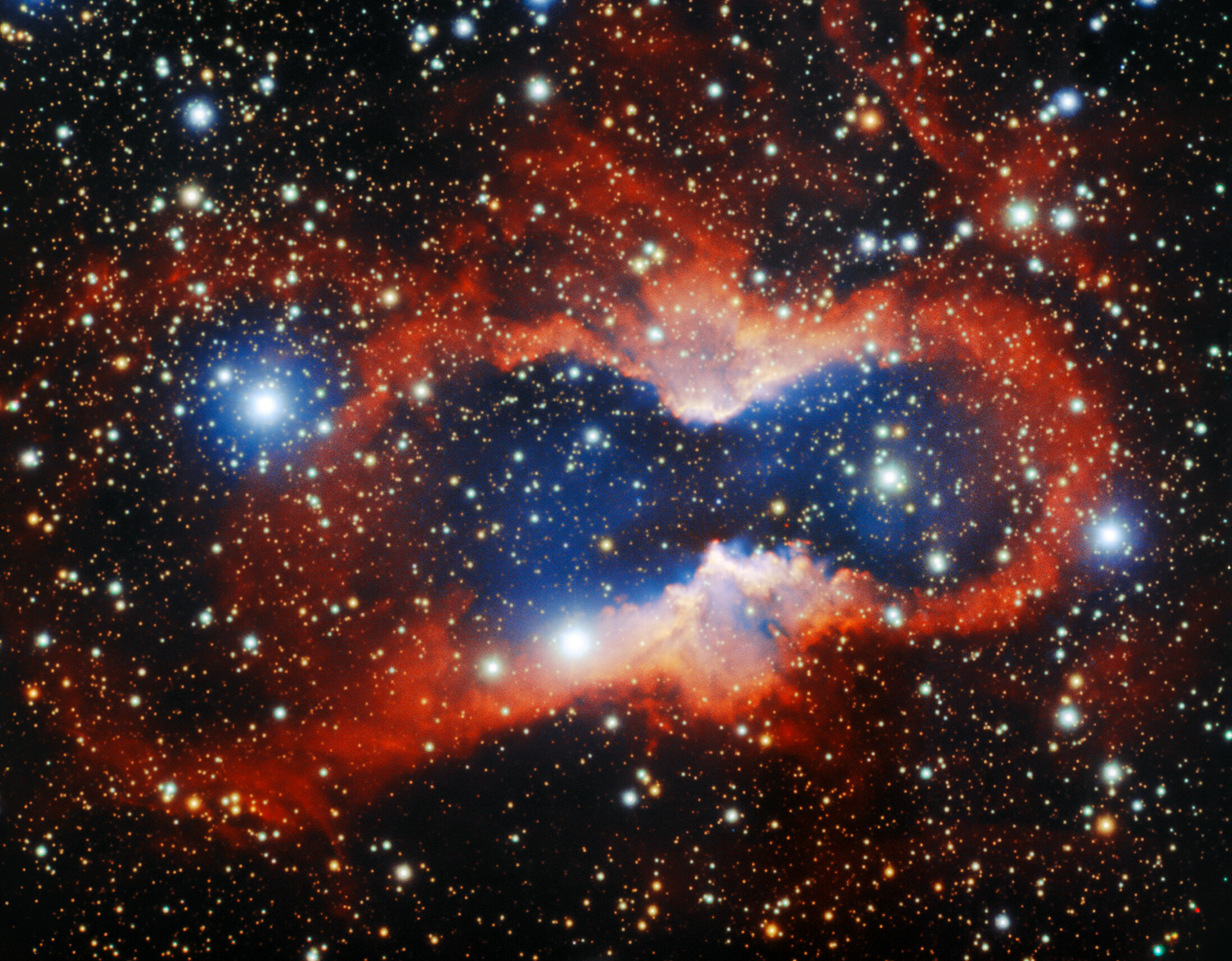
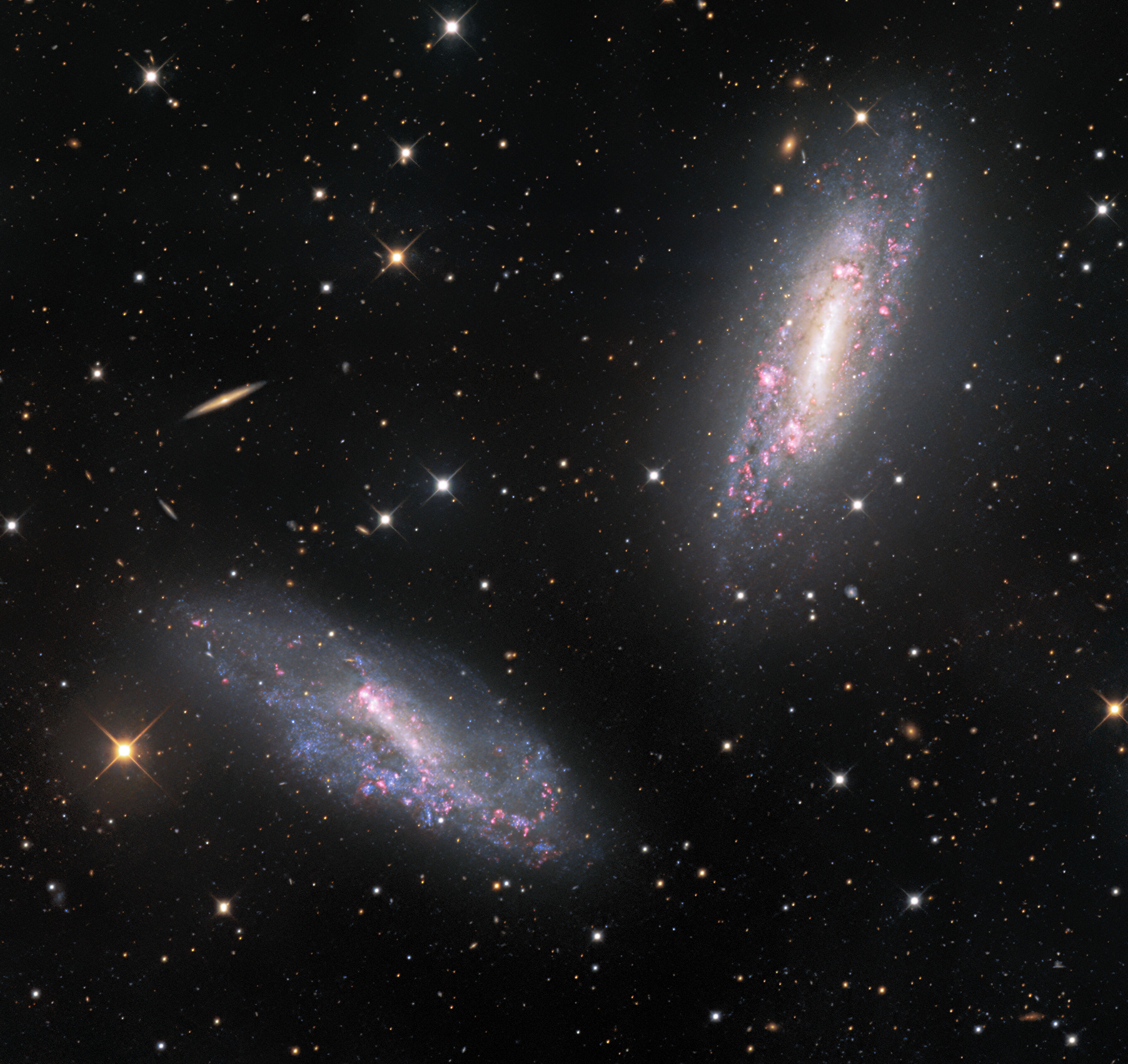

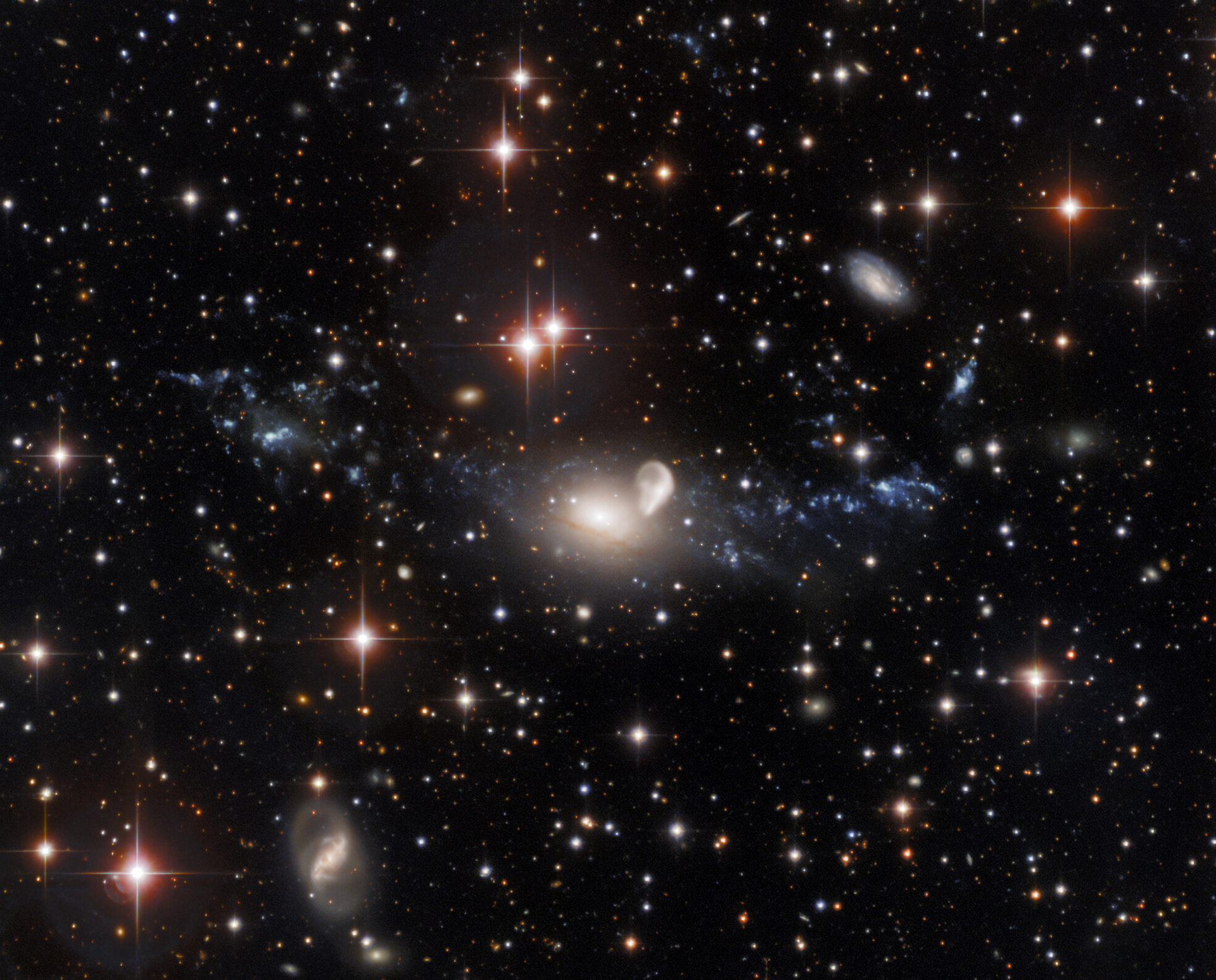
![In celebration of Halloween, Hubble brings you this inky image of the galaxy cluster Abell 611, located roughly 3.2 billion light years from Earth. This object is a popular target for investigating dark matter, in part because of the numerous examples of strong gravitational lensing visible amongst the cluster’s intricate web of galaxies. [Image Description: Hundreds of small galaxies appear across this view. Their colours vary. Some are shades of orange, while others are white. Most appear as fuzzy ovals, but a few have distinct spiral arms. There are also many thin, long, orange arcs that curve around the centre of the image, where there is a prominent orange glow.] Credit: ESA/Hubble, NASA, P. Kelly, M. Postman, J. Richard, S. Allen](https://cdn.myportfolio.com/e6b26236-639b-4064-900c-5a5469a04617/5ac96f5a-2dec-4789-a731-e9b74dabd4fd_rw_1920.jpg?h=44257082abc211f846ba6d17f7c67948)
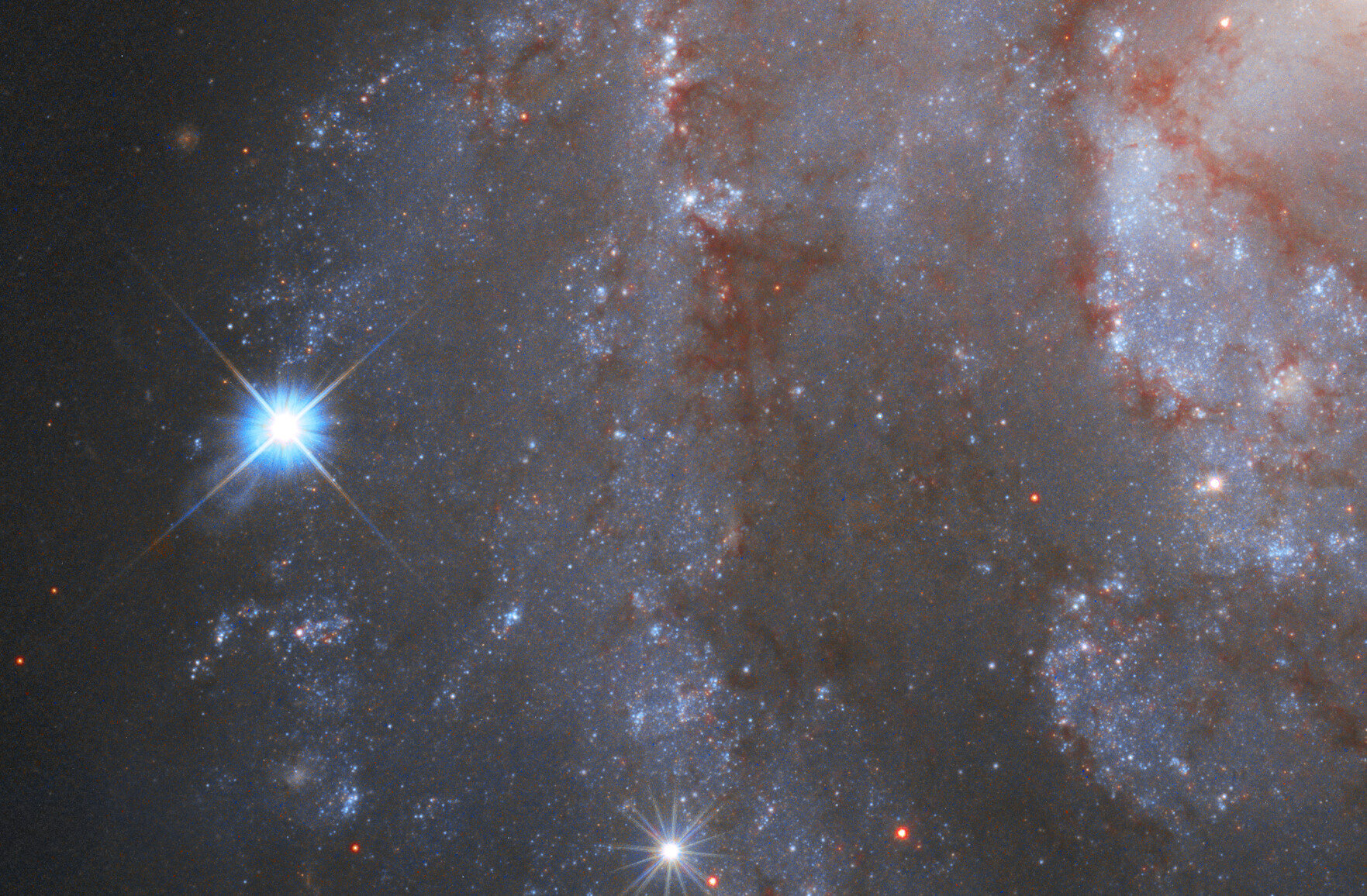
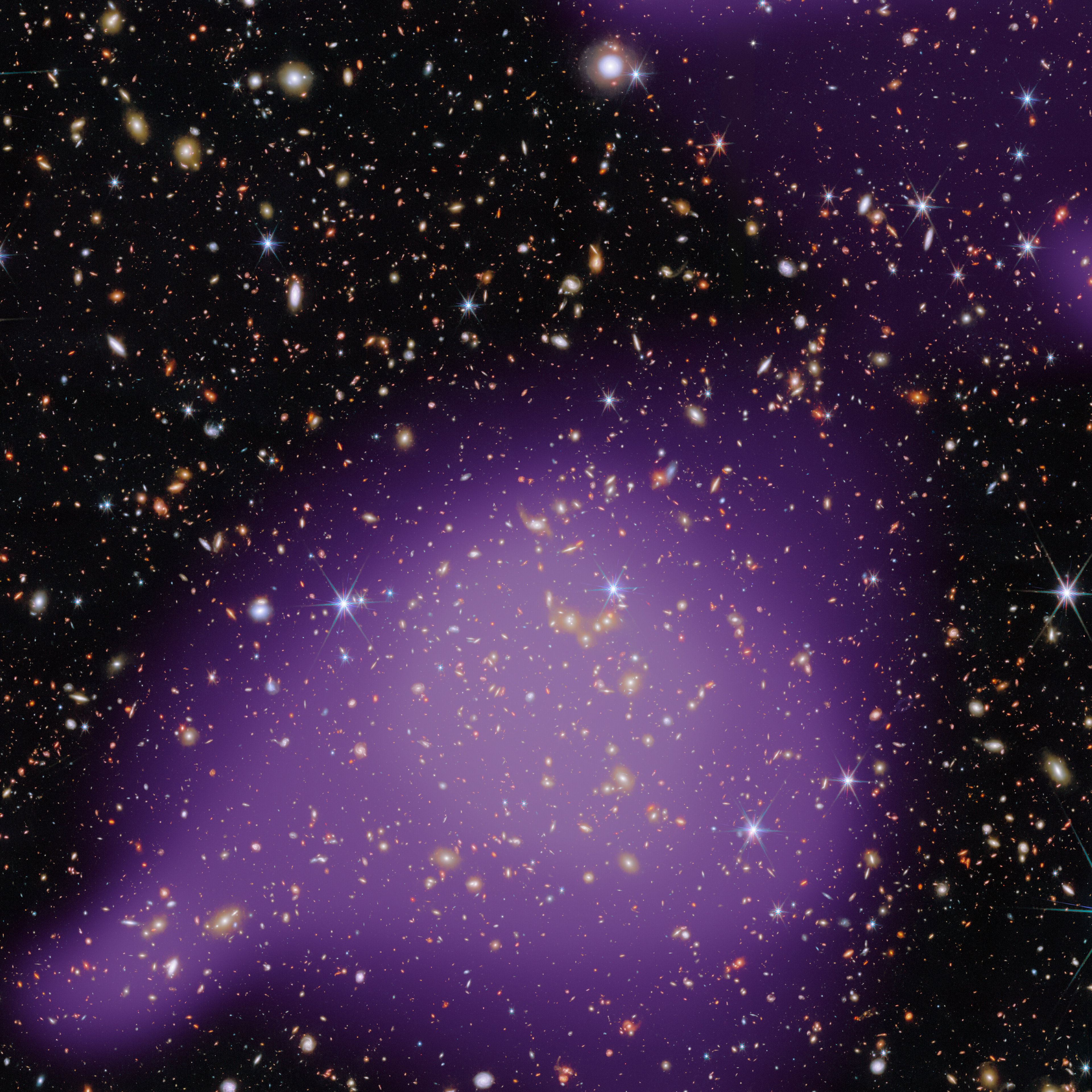

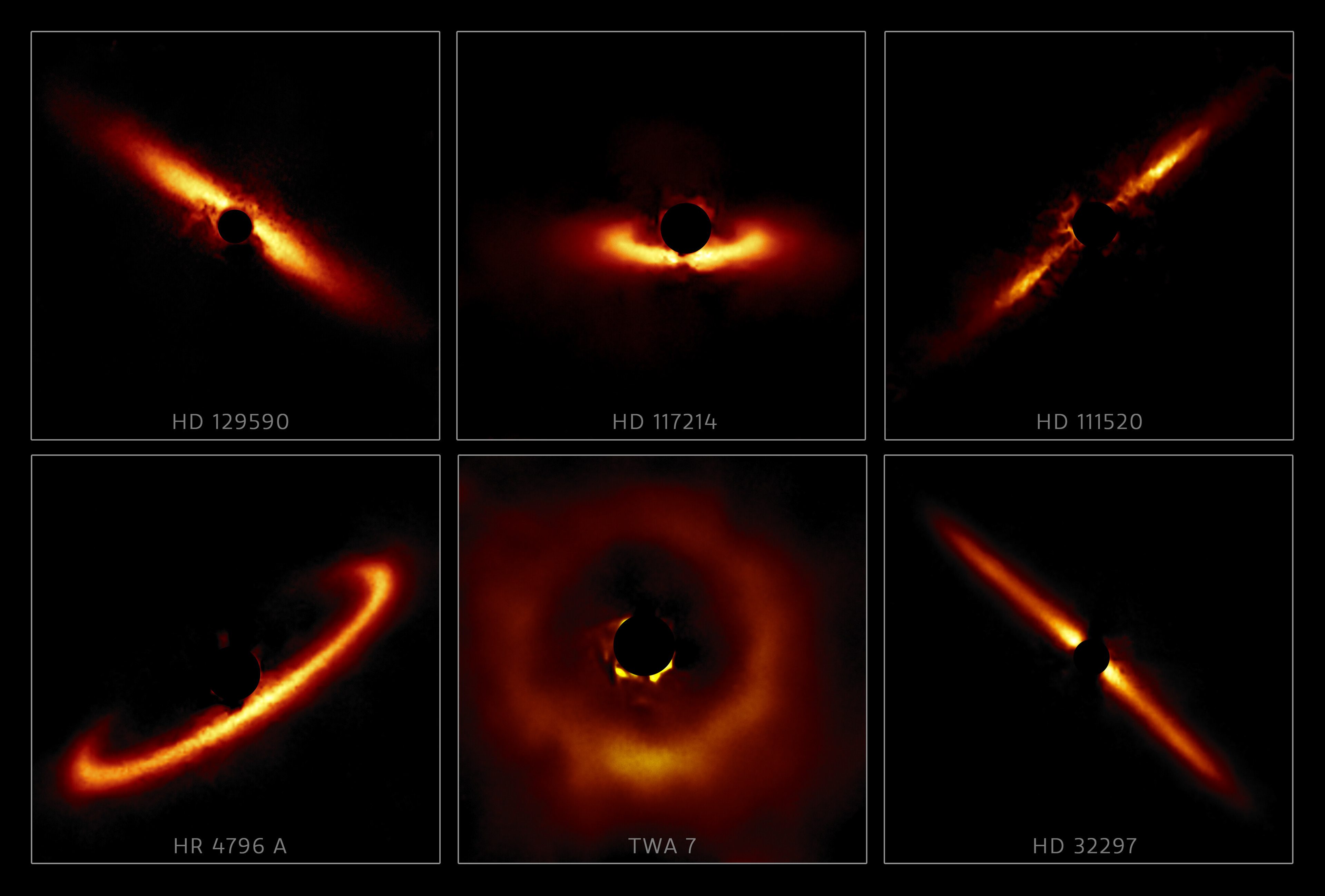

![The lives of newborn stars are tempestuous, as this image of the Herbig–Haro objects HH 1 and HH 2 from the NASA/ESA Hubble Space Telescope depicts. Both objects are in the constellation Orion and lie around 1250 light-years from Earth. HH 1 is the luminous cloud above the bright star in the upper right of this image, and HH 2 is the cloud in the bottom left. While both Herbig–Haro objects are visible, the young star system responsible for their creation is lurking out of sight, swaddled in the thick clouds of dust at the centre of this image. However, an outflow of gas from one of these stars can be seen streaming out from the central dark cloud as a bright jet. Meanwhile, the bright star between that jet and the HH 1 cloud was once thought to be the source of these jets, but it is now known to be an unrelated double star that formed nearby. Herbig–Haro objects are glowing clumps found around some newborn stars, and are created when jets of gas thrown outwards from these young stars collide with surrounding gas and dust at incredibly high speeds. In 2002 Hubble observations revealed that parts of HH 1 are moving at more than 400 kilometres per second! This scene from a turbulent stellar nursery was captured with Hubble’s Wide Field Camera 3 using 11 different filters at infrared, visible, and ultraviolet wavelengths. Each of these filters is sensitive to just a small slice of the electromagnetic spectrum, and they allow astronomers to pinpoint interesting processes that emit light at specific wavelengths. In the case of HH 1/2, two groups of astronomers requested Hubble observations for two different studies. The first delved into the structure and motion of the Herbig–Haro objects visible in this image, giving astronomers a better understanding of the physical processes occurring when outflows from young stars collide with surrounding gas and dust. The second study instead investigated the outflows themselves to lay the groundwork for future observations with the NASA/ESA/CSA James Webb Space Telescope. Webb, with its ability to peer past the clouds of dust enveloping young stars, will revolutionise the study of outflows from young stars. [Image description: Two wispy, gaseous clouds occupy the corners of this image, HH 1 in the upper right, and HH 2 in the lower left. Both are light blue and surrounded by dimmer multi-coloured clouds, while the background is dark black due to dense gas. A very bright orange star lies just to the lower left of HH 1, and beyond that star is a narrow jet, emerging from the dark centre of the field.] Links Video of Multiwavelength View of a Turbulent Stellar Nursery Credit: ESA/Hubble & NASA, B. Reipurth, B. Nisini](https://cdn.myportfolio.com/e6b26236-639b-4064-900c-5a5469a04617/2a8121f1-bb19-4ecb-93a4-6be465629d20_rw_1920.jpg?h=226f39bc6ea2fcc58a73d368bb3aeee3)
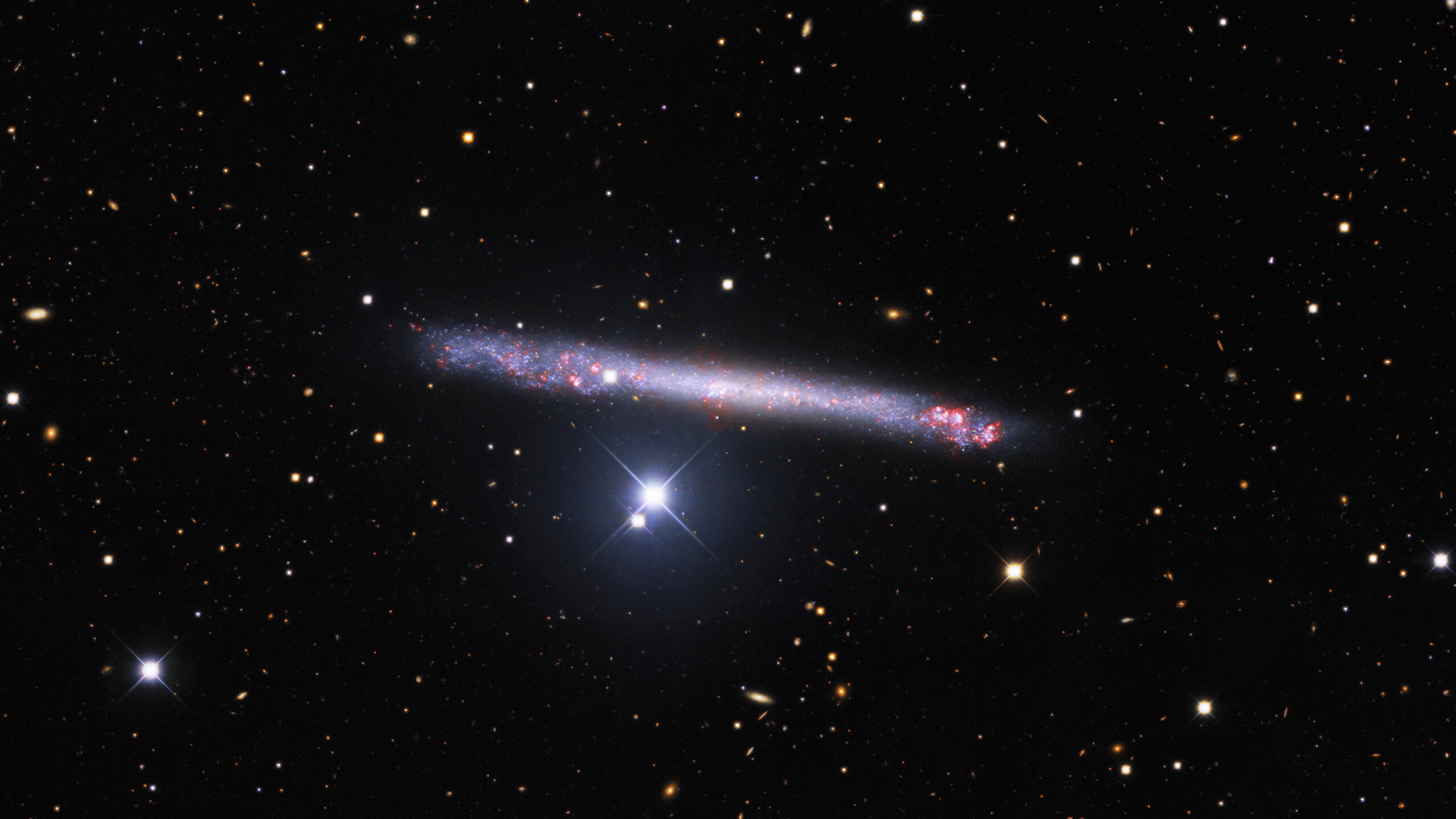

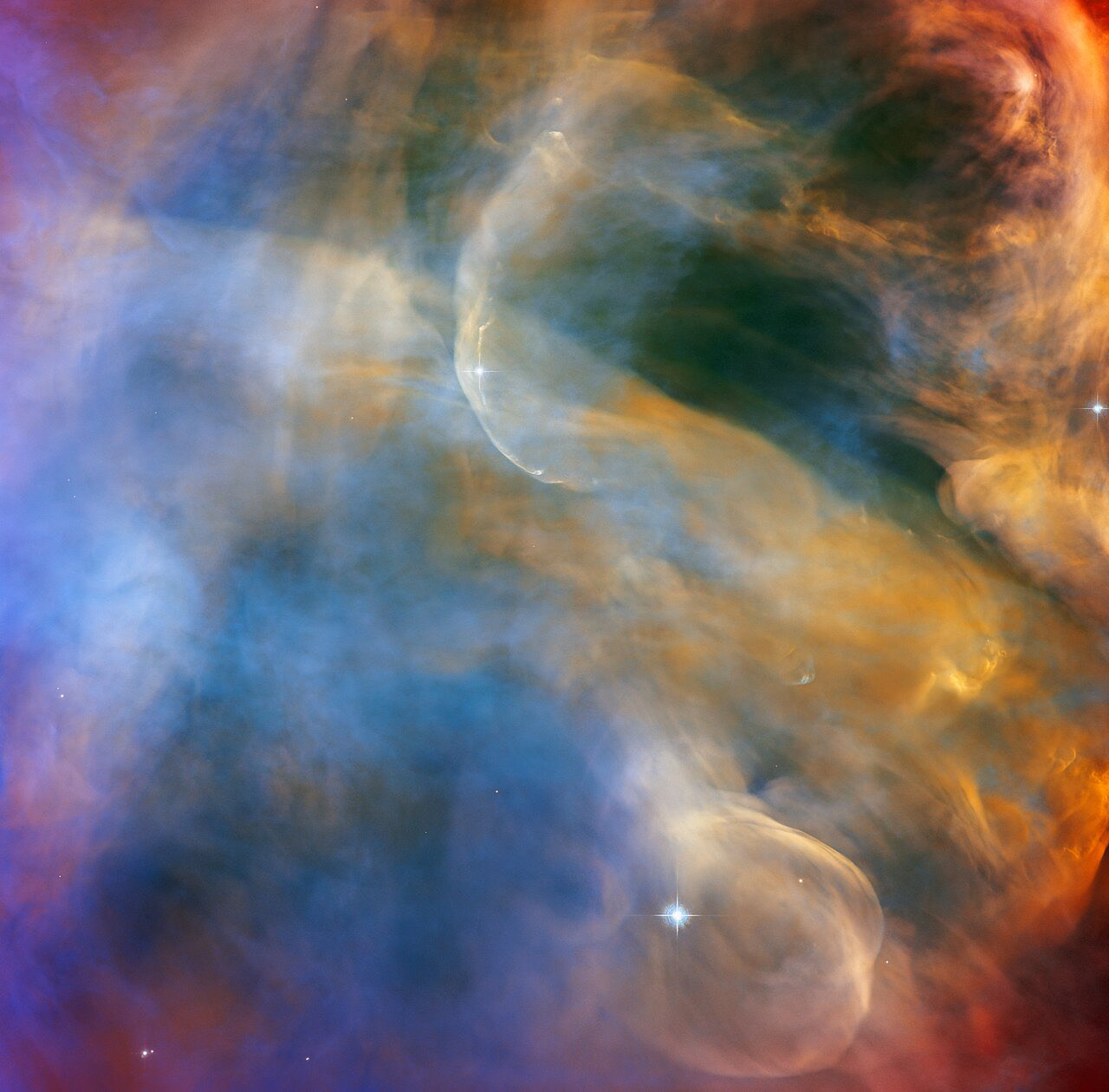

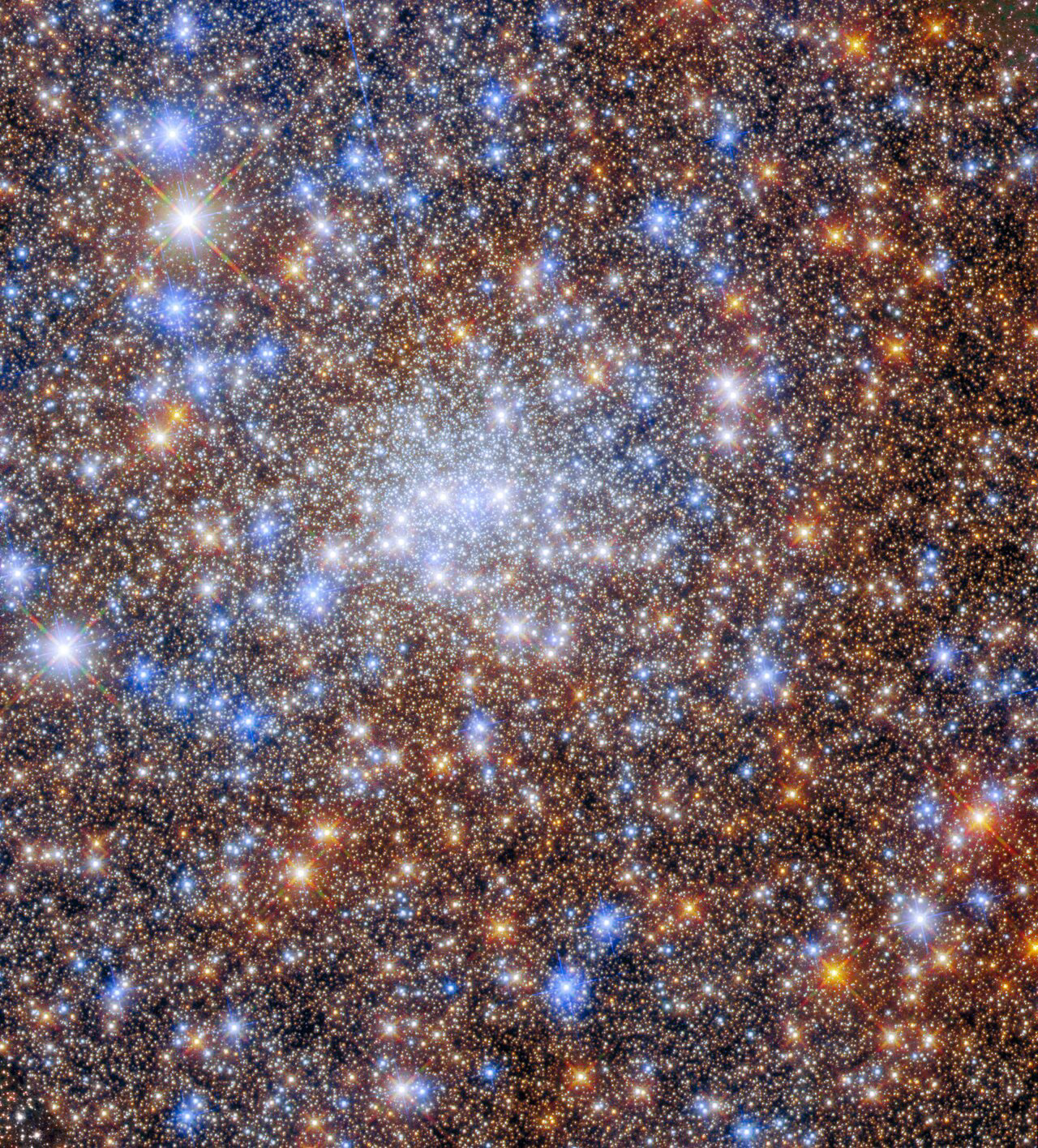

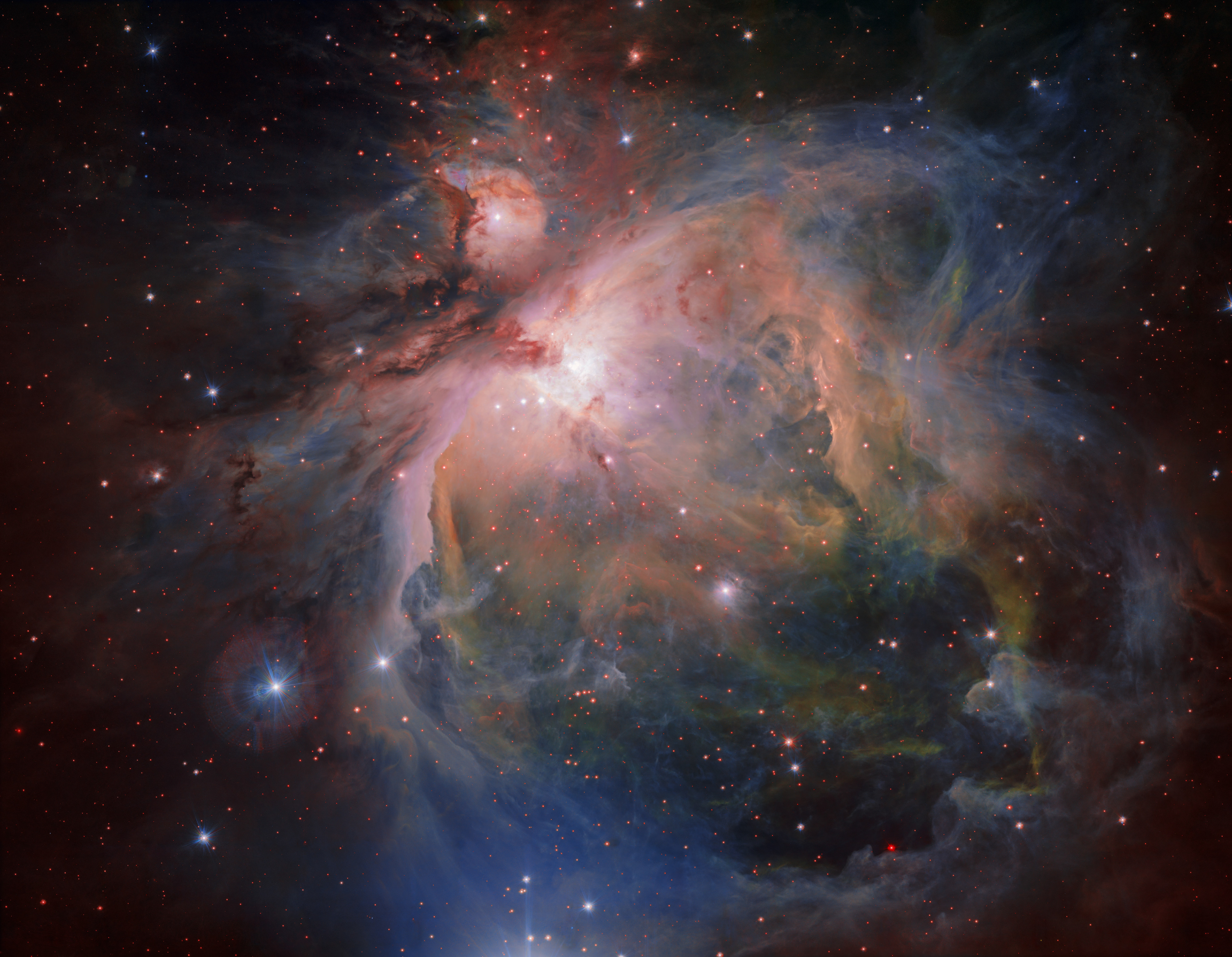

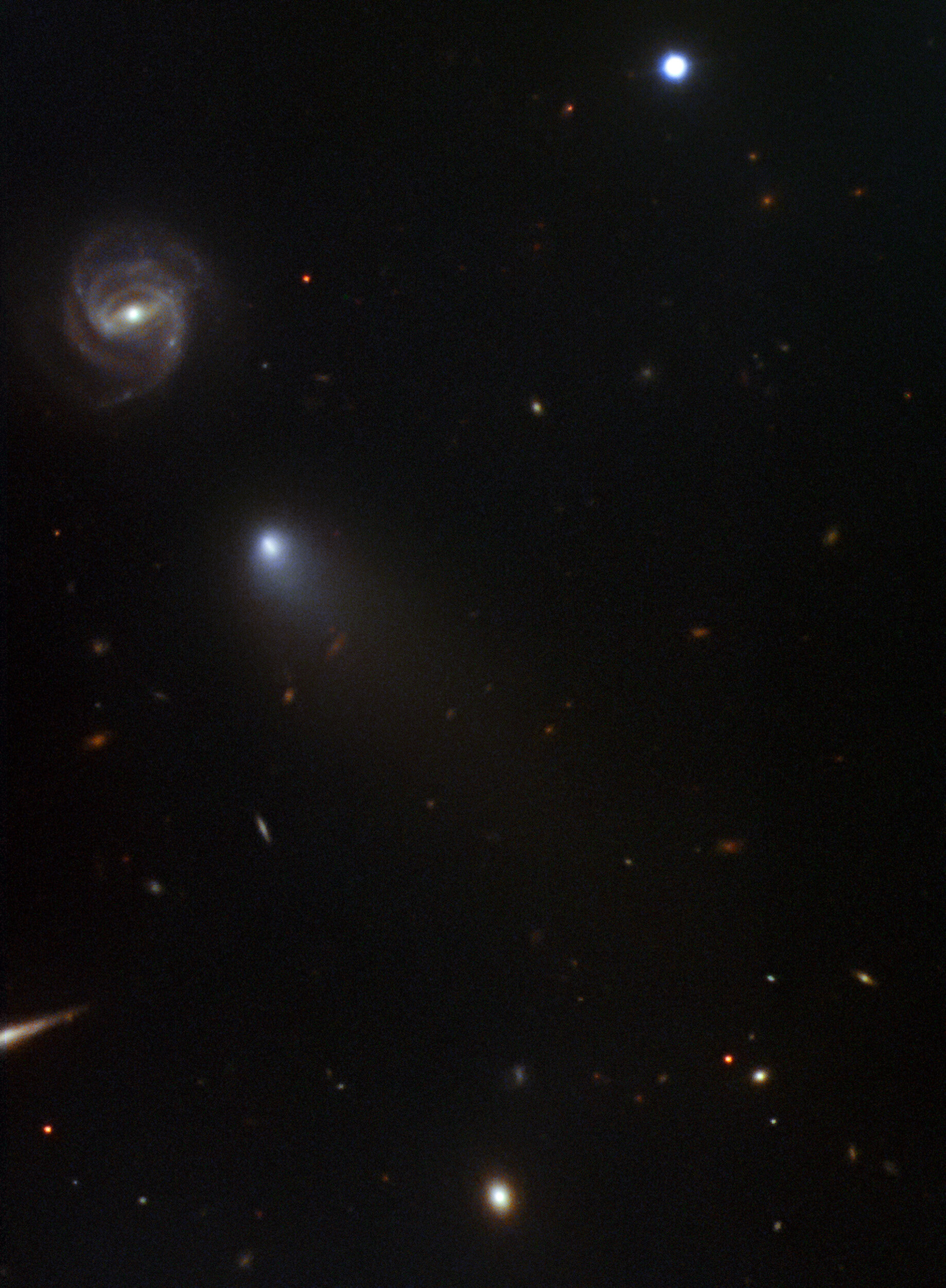

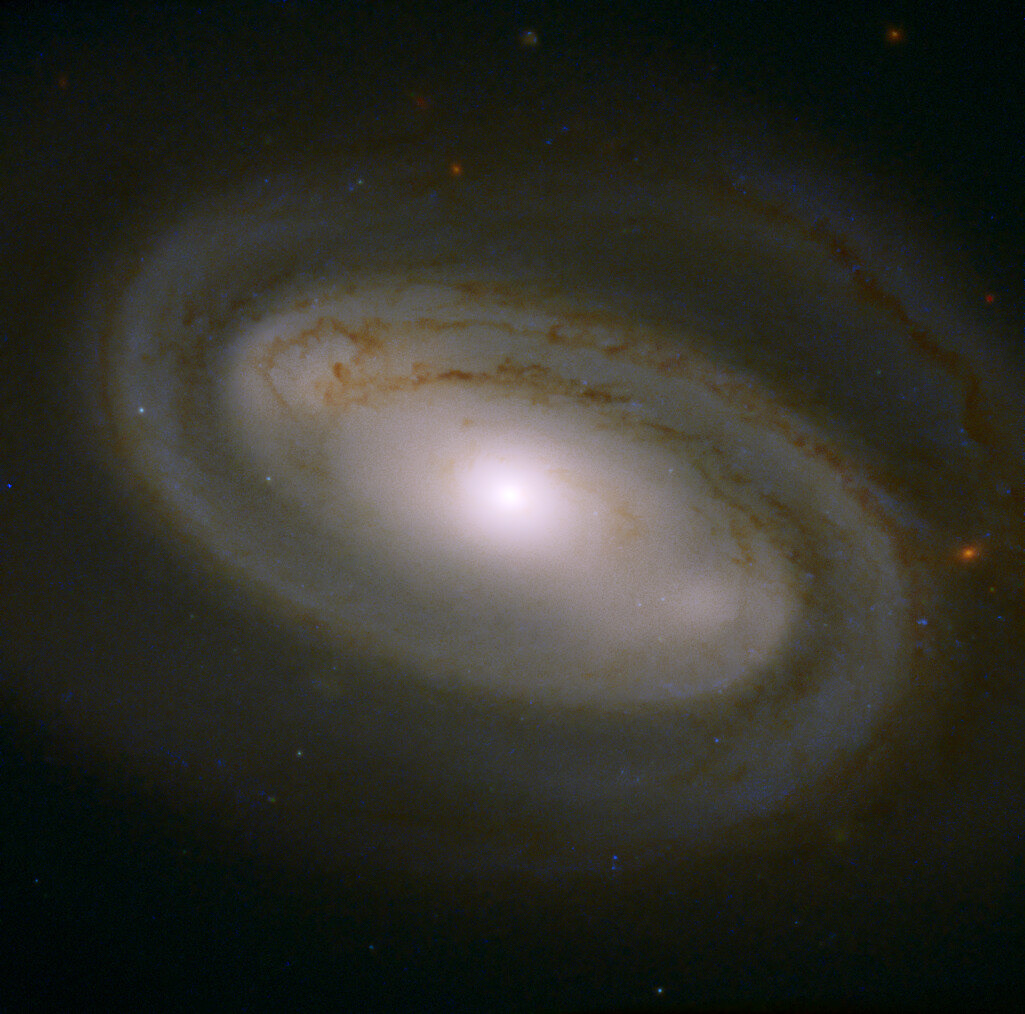
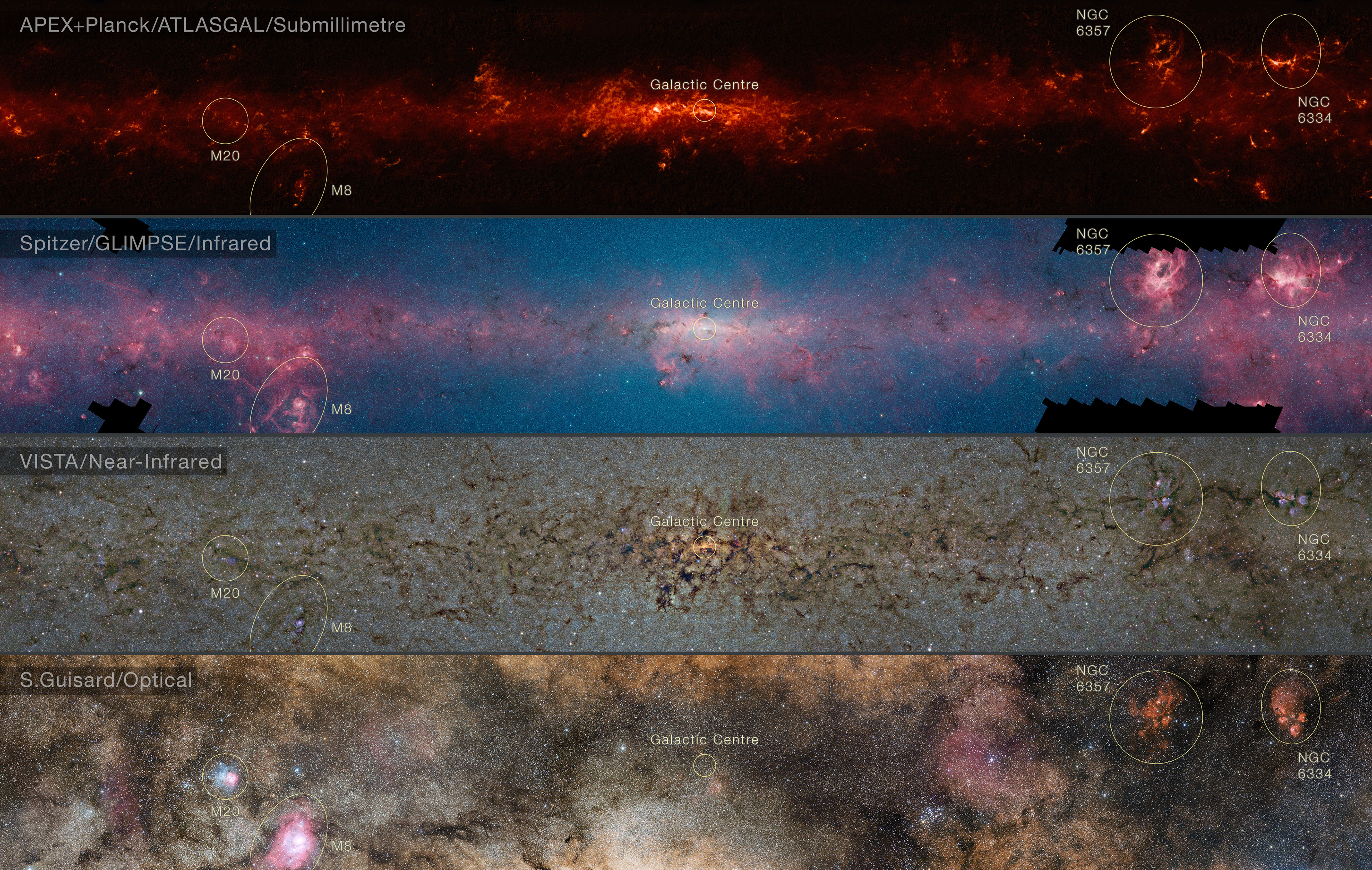
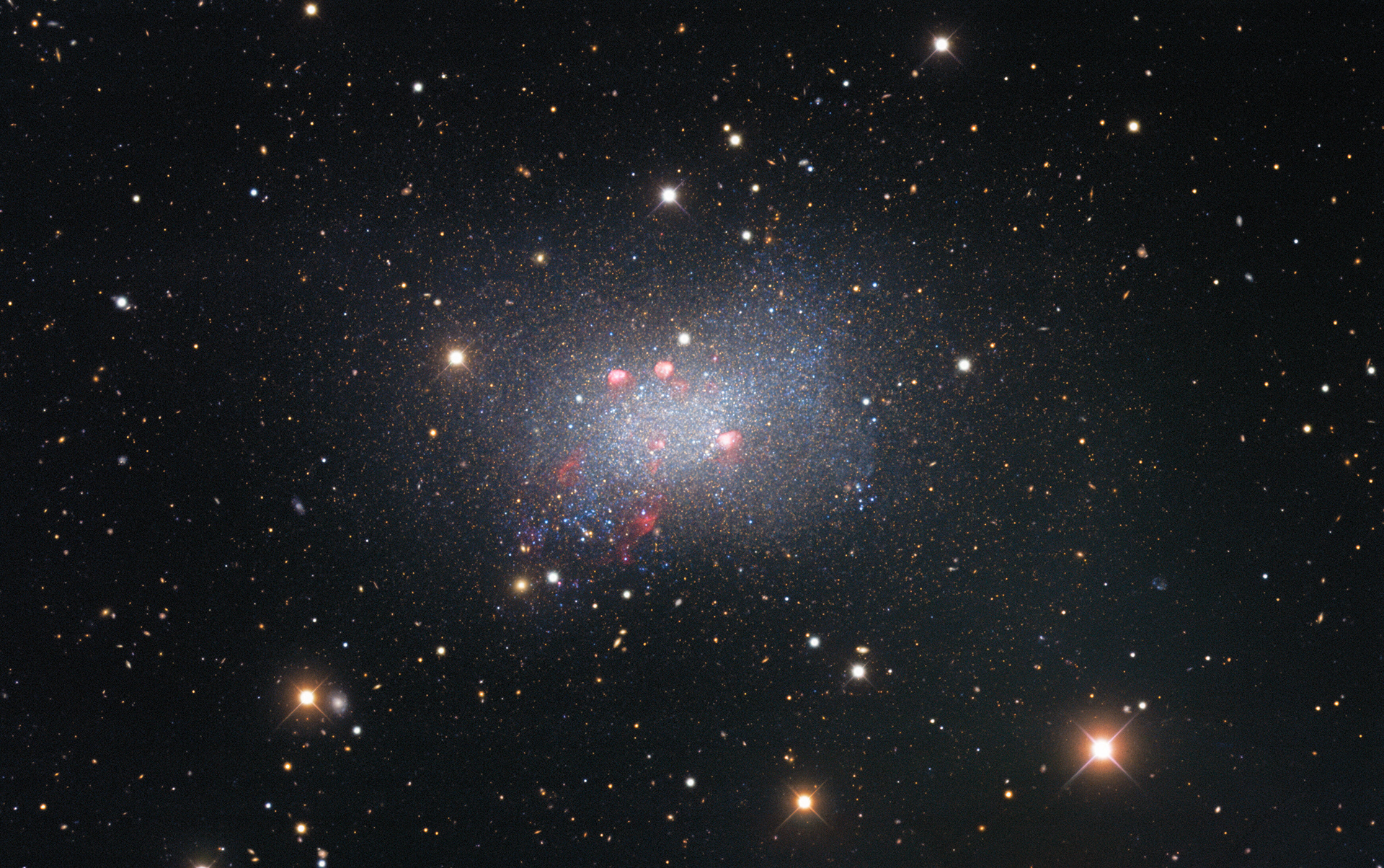
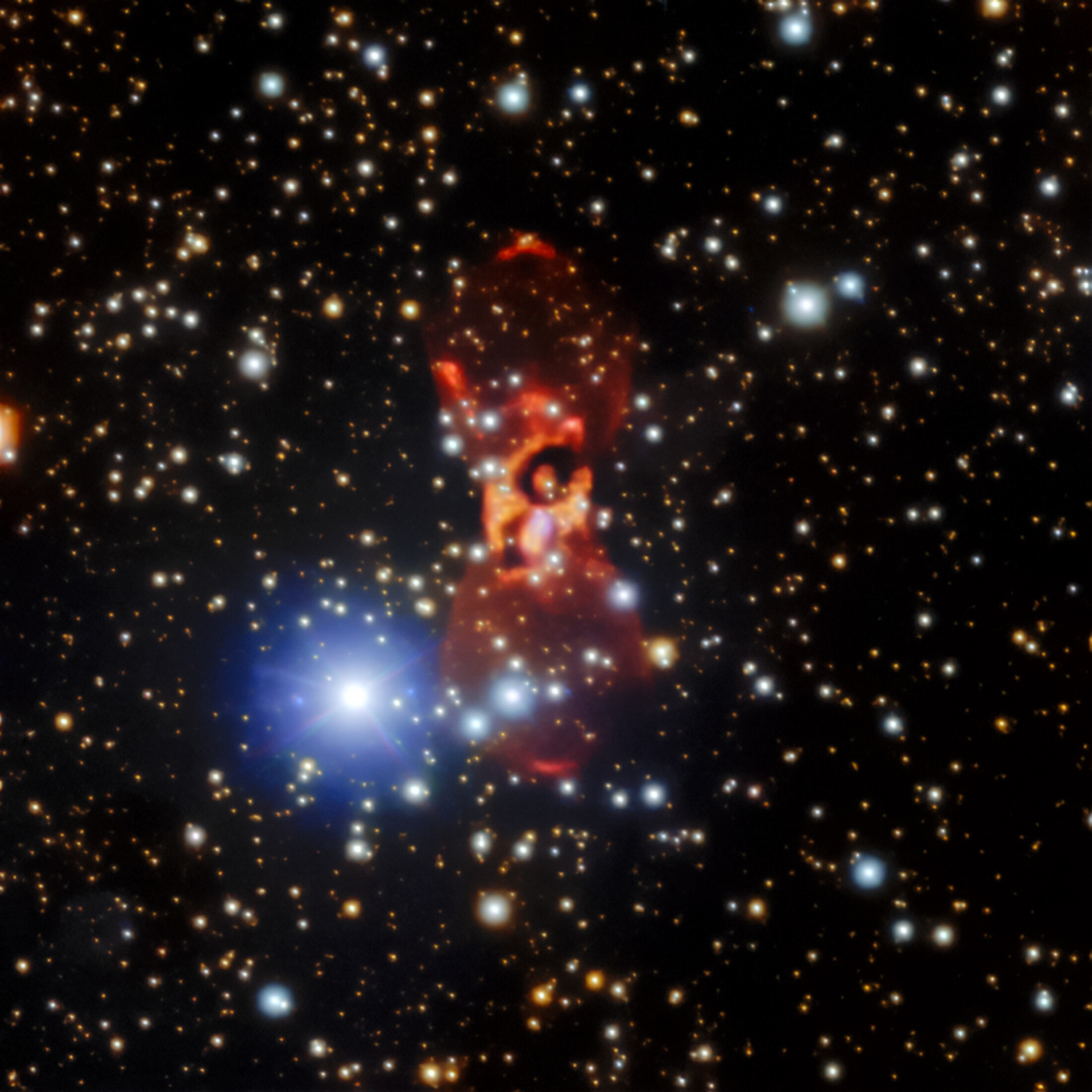
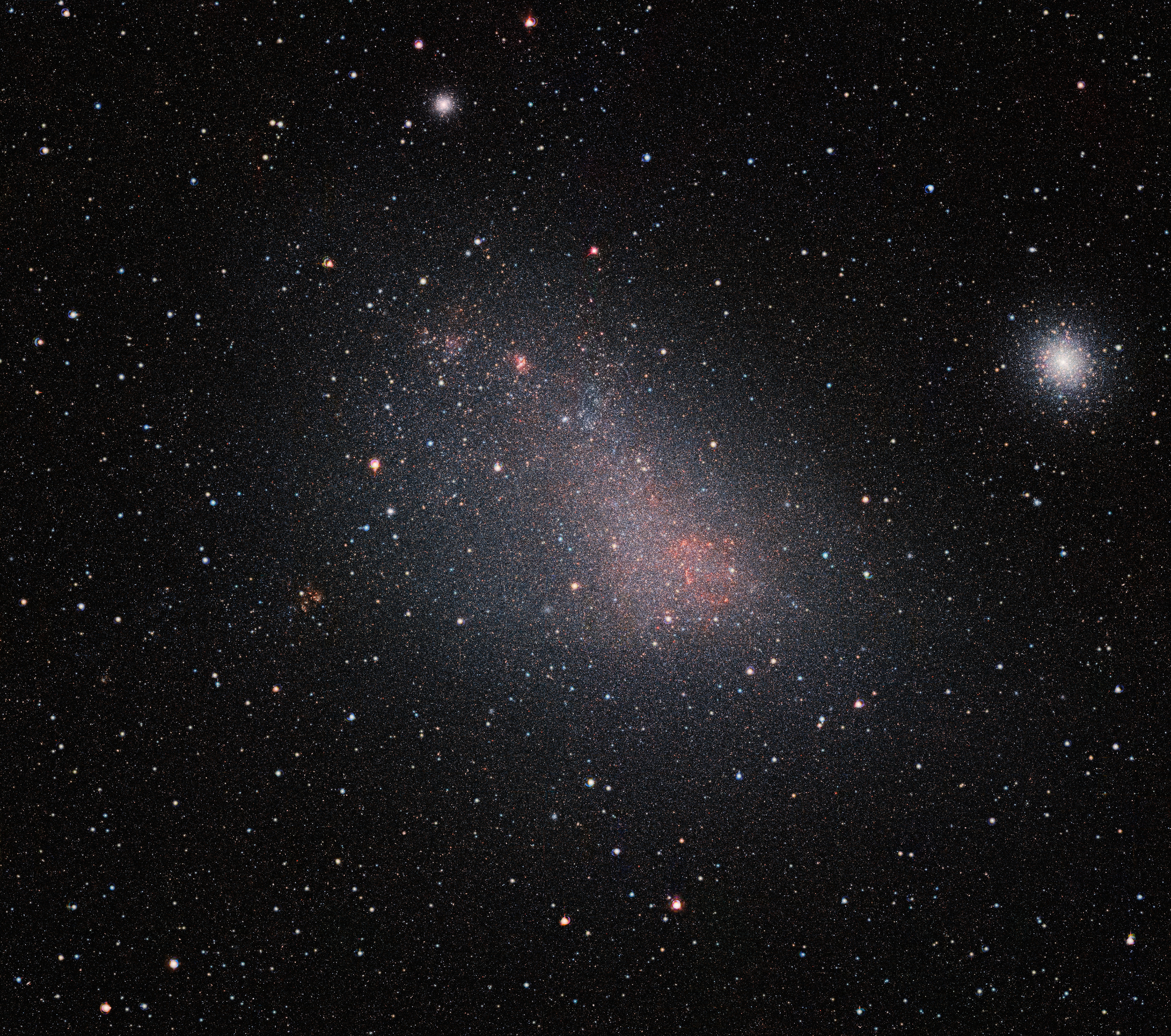
![Shreds of the luridly coloured supernova remnant DEM L 190 seem to billow across the screen in this image from the NASA/ESA Hubble Space Telescope. The delicate sheets and intricate filaments are debris from the cataclysmic death of a massive star that once lived in the Large Magellanic Cloud, a small satellite galaxy of the Milky Way. DEM L 190 — also known as LMC N49 — is the brightest supernova remnant in the Large Magellanic Cloud and lies approximately 160 000 light-years away from Earth in the constellation Dorado. This striking image was created with data from two different astronomical investigations, using one of Hubble’s retired instruments, the Wide Field Planetary Camera 2 (WFPC2). This instrument has since been replaced by the more powerful Wide Field Camera 3, but during its operational lifetime it contributed to cutting-edge science and produced a series of stunning public outreach images. The first of the two WFPC2 investigations used DEM L 190 as a natural laboratory in which to study the interaction of supernova remnants and the interstellar medium, the tenuous mixture of gas and dust that lies between stars. In the second project, astronomers turned to Hubble to pinpoint the origin of a Soft Gamma-ray Repeater, an enigmatic object lurking in DEM L 190 which repeatedly emits high-energy bursts of gamma rays. This is not the first image of DEM L 190 to be released to the public — a previous Hubble portrait of this supernova remnant was published in 2003. This new image incorporates additional data and improved image processing techniques, making this spectacular celestial fireworks display even more striking! [Image description: A supernova remnant, in the shape of a flame, occupies the centre and top. It is made of many long strands and thin layers of gas, that brightly glow orange and blue. Faint gas clouds outline its edges. It is surrounded by several scattered blue and red stars, and the background is black and filled with small red stars.] Links Video of Revisiting a Celestial Fireworks Display Credit: ESA/Hubble & NASA, S. Kulkarni, Y. Chu](https://cdn.myportfolio.com/e6b26236-639b-4064-900c-5a5469a04617/bbc19c87-f3c3-46ab-9e6f-48d2ac42ab81_rw_1920.jpg?h=5bd6a403f194f4af4915a6aa5a0e368f)
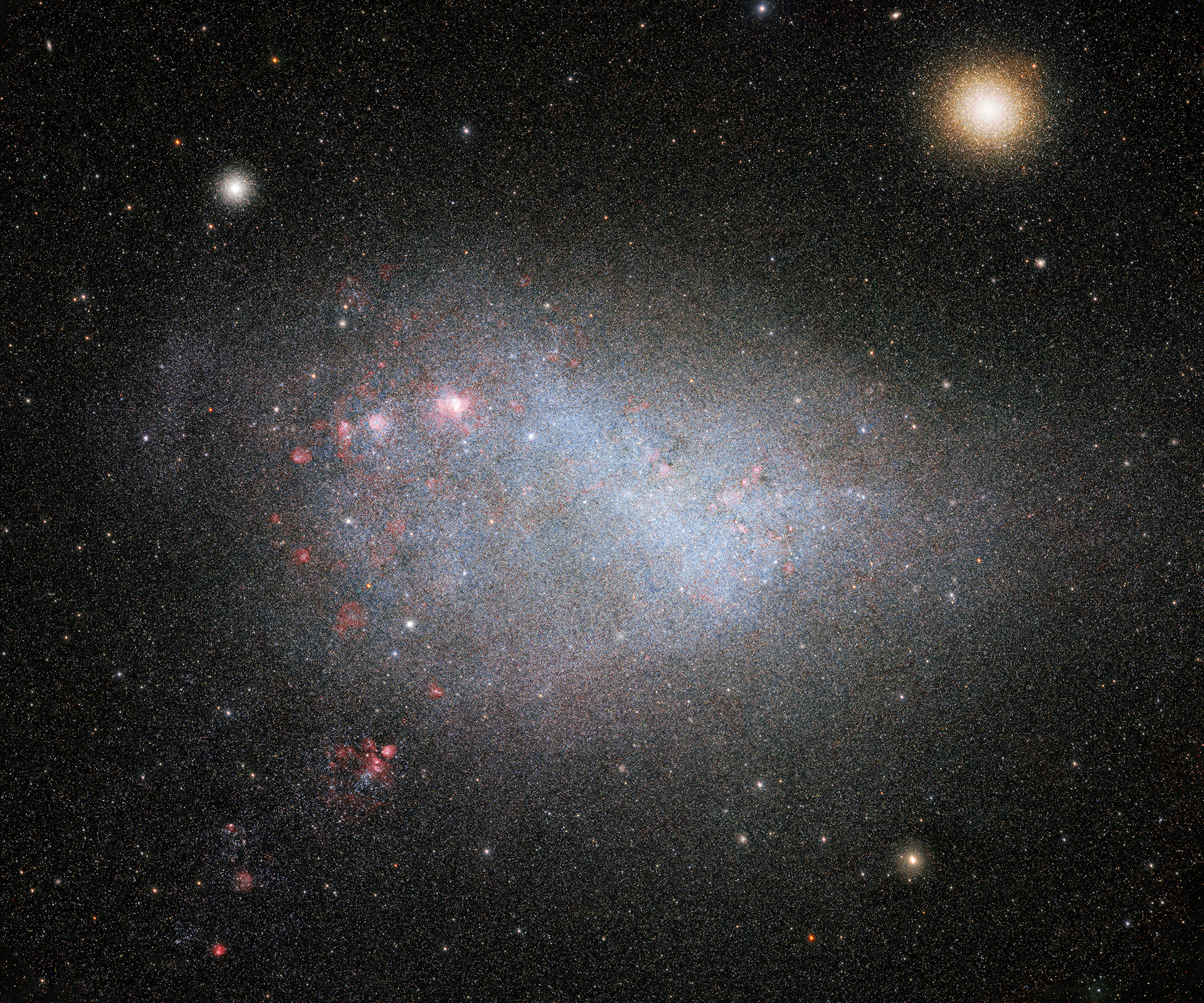
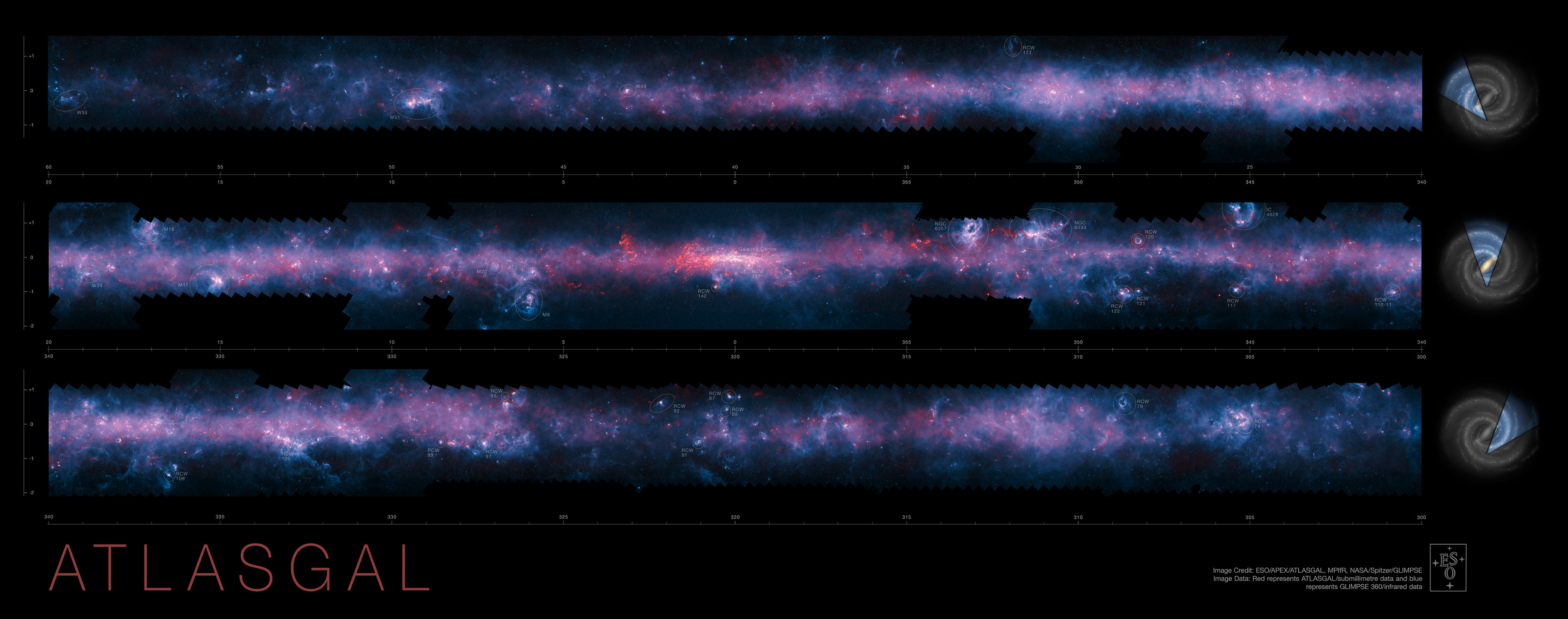


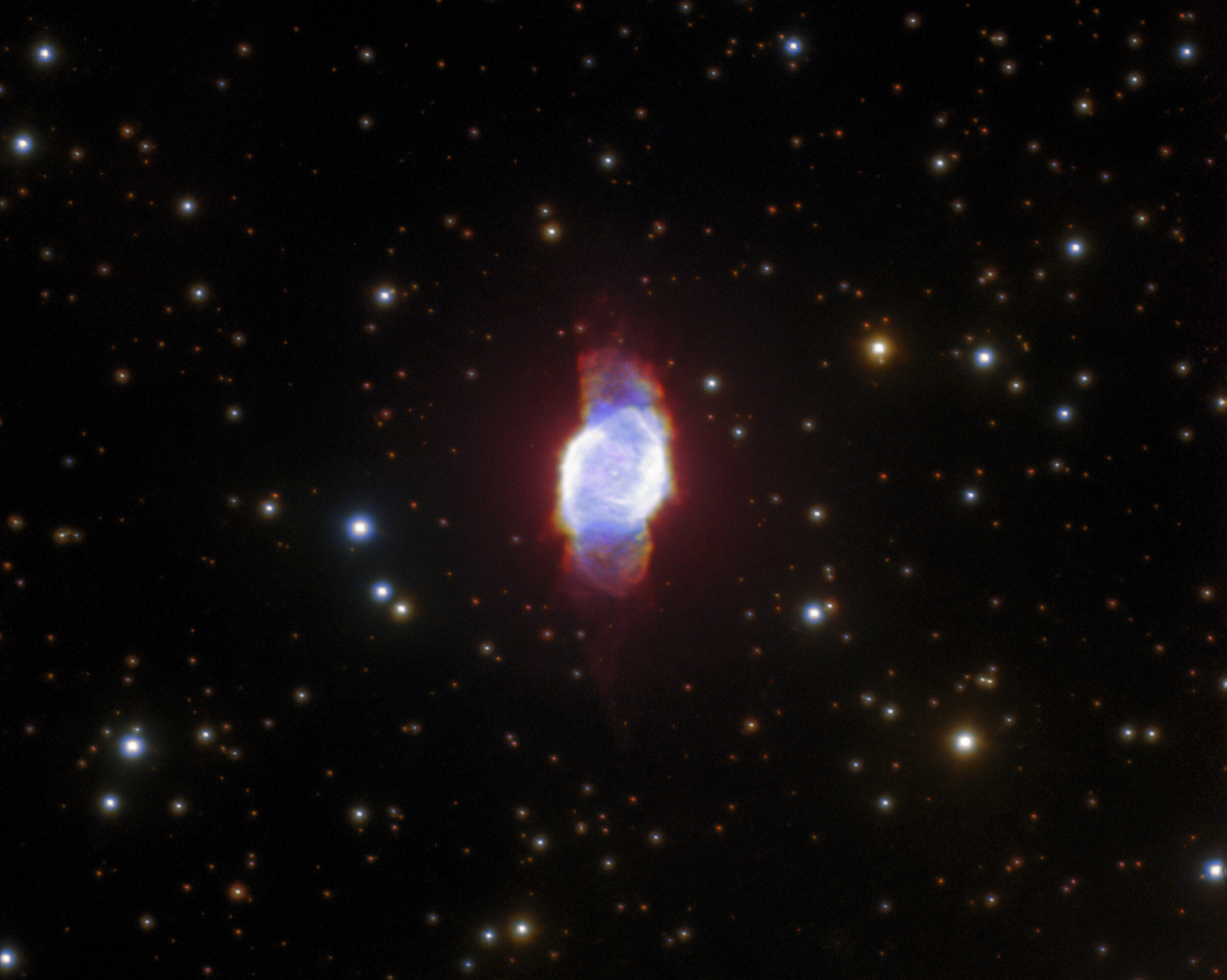
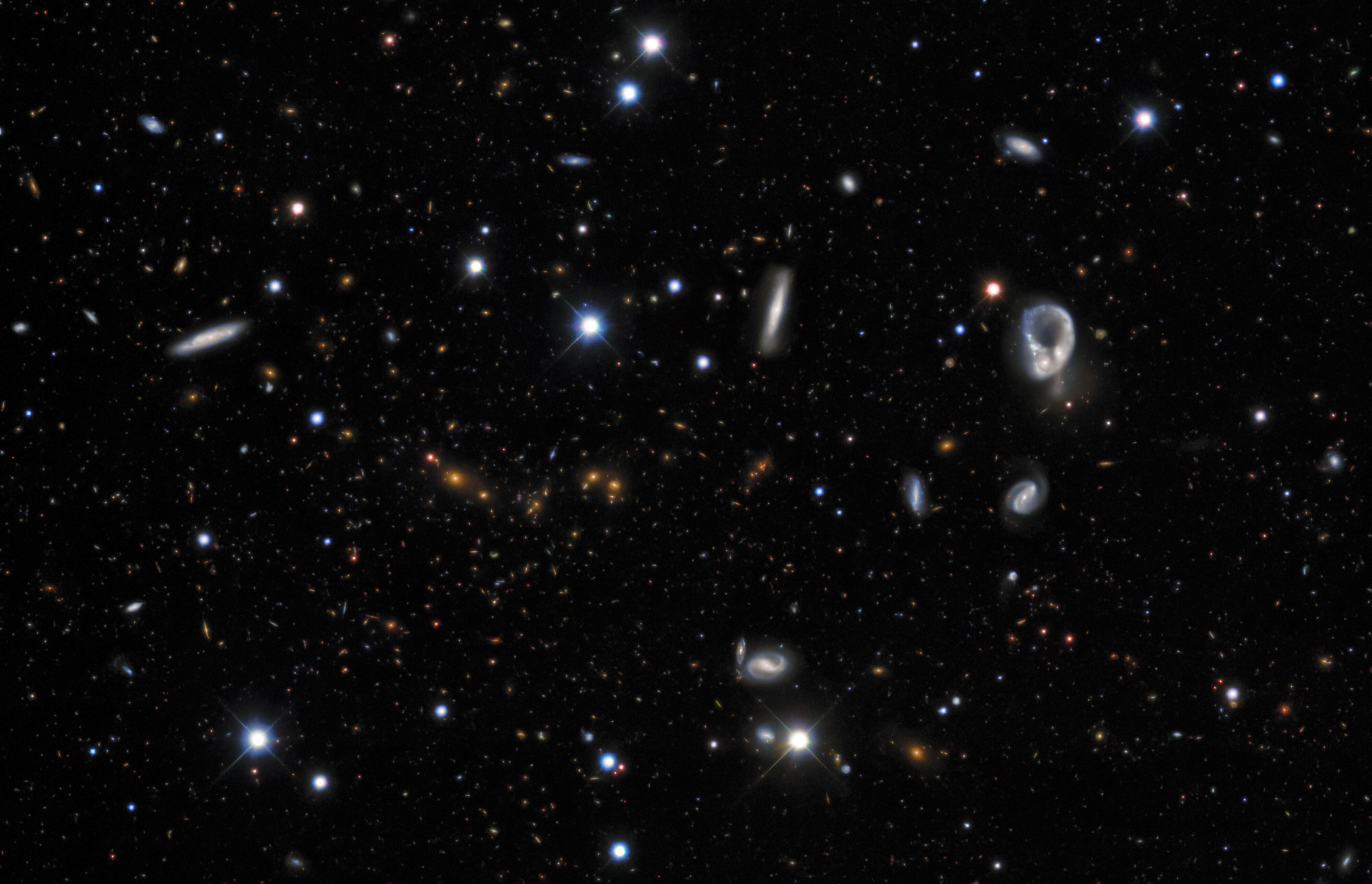
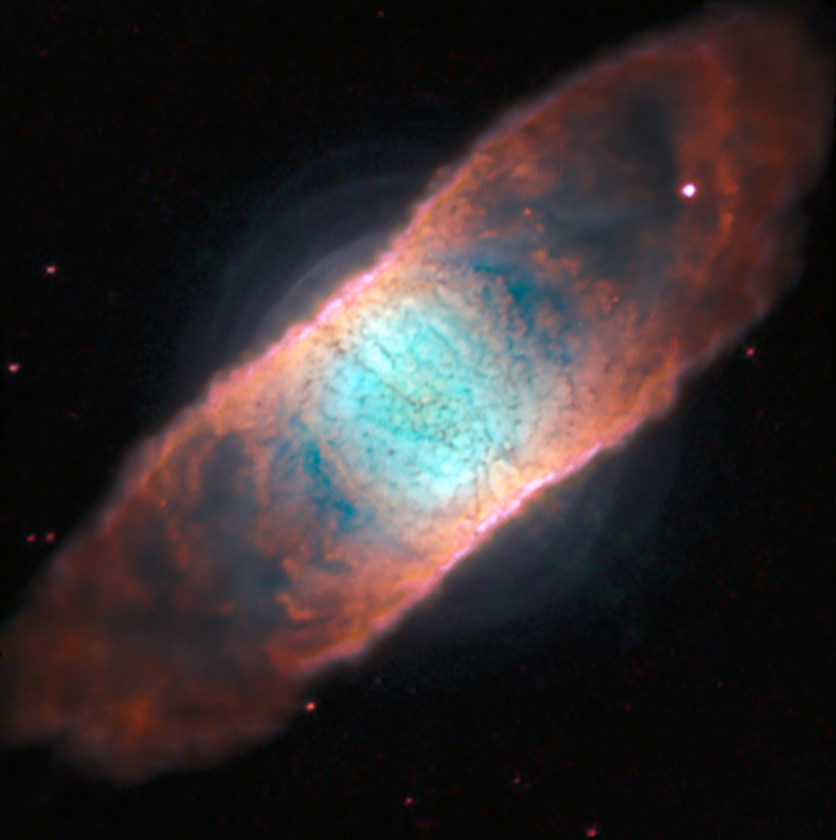


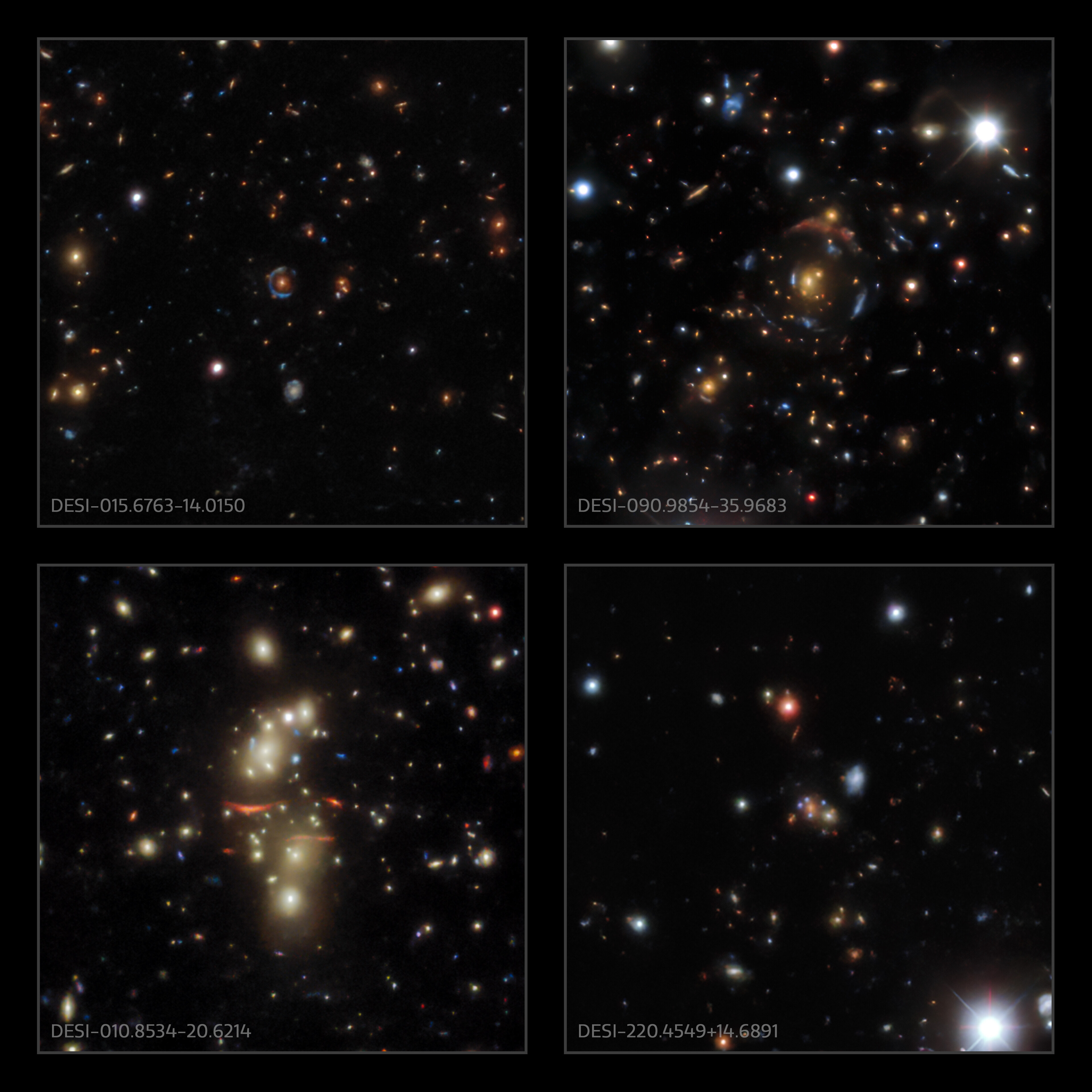
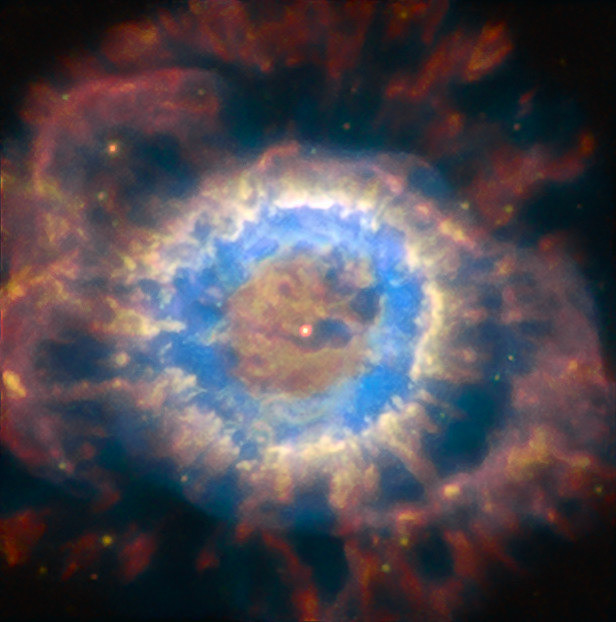
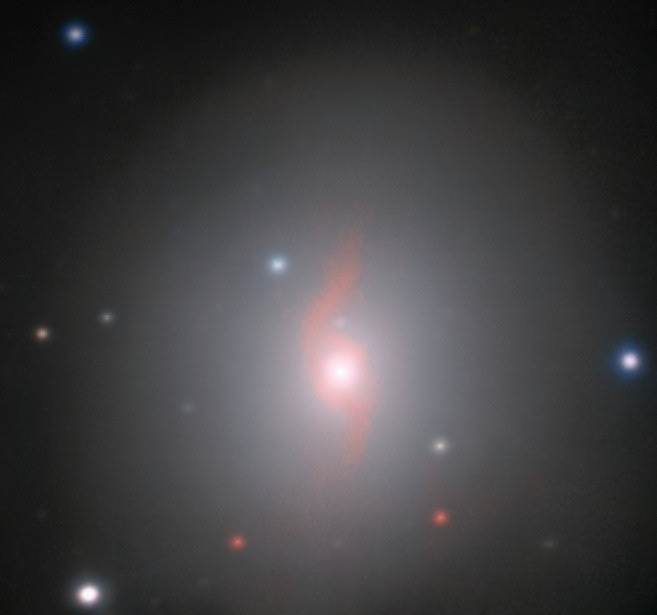

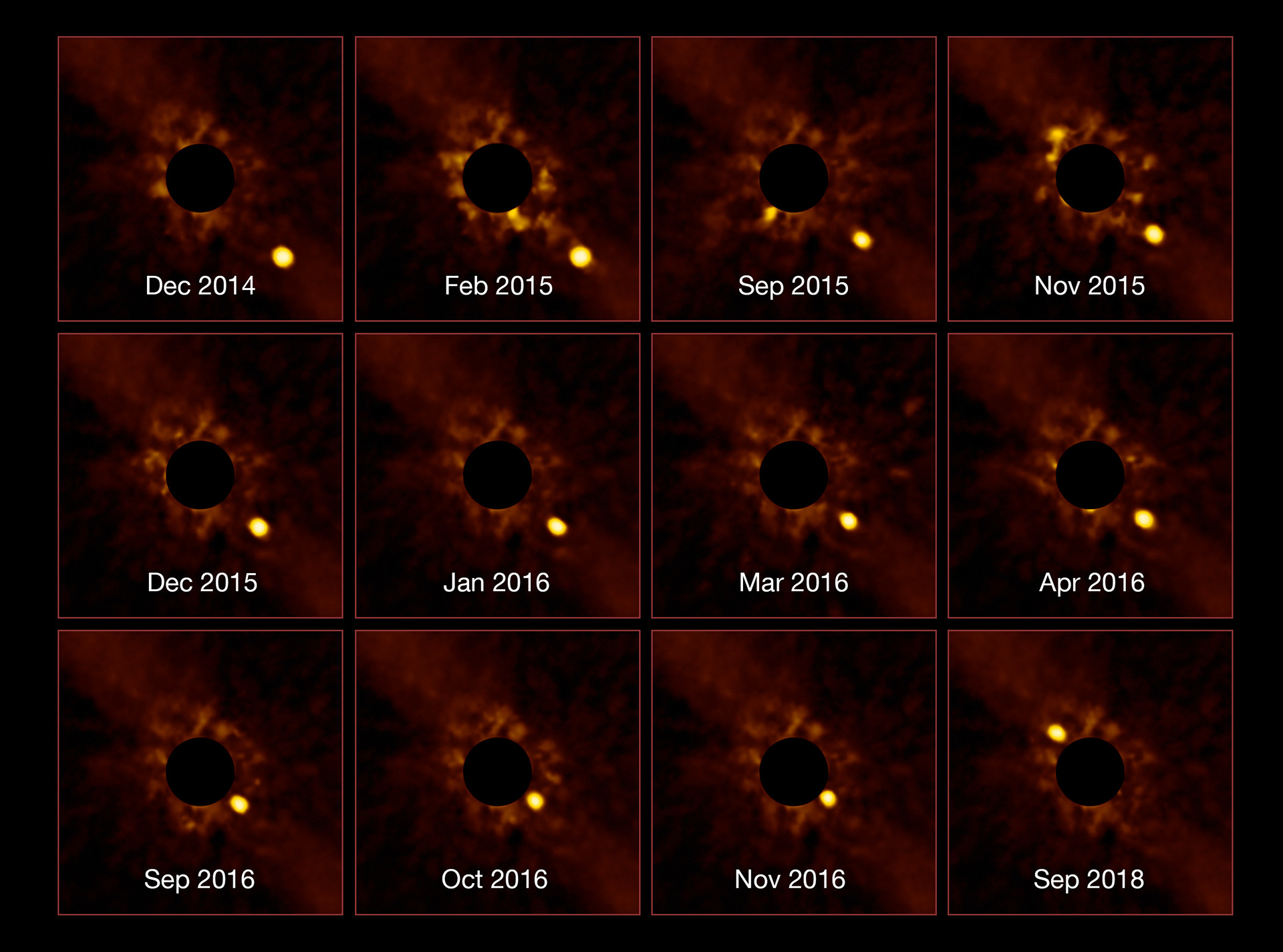

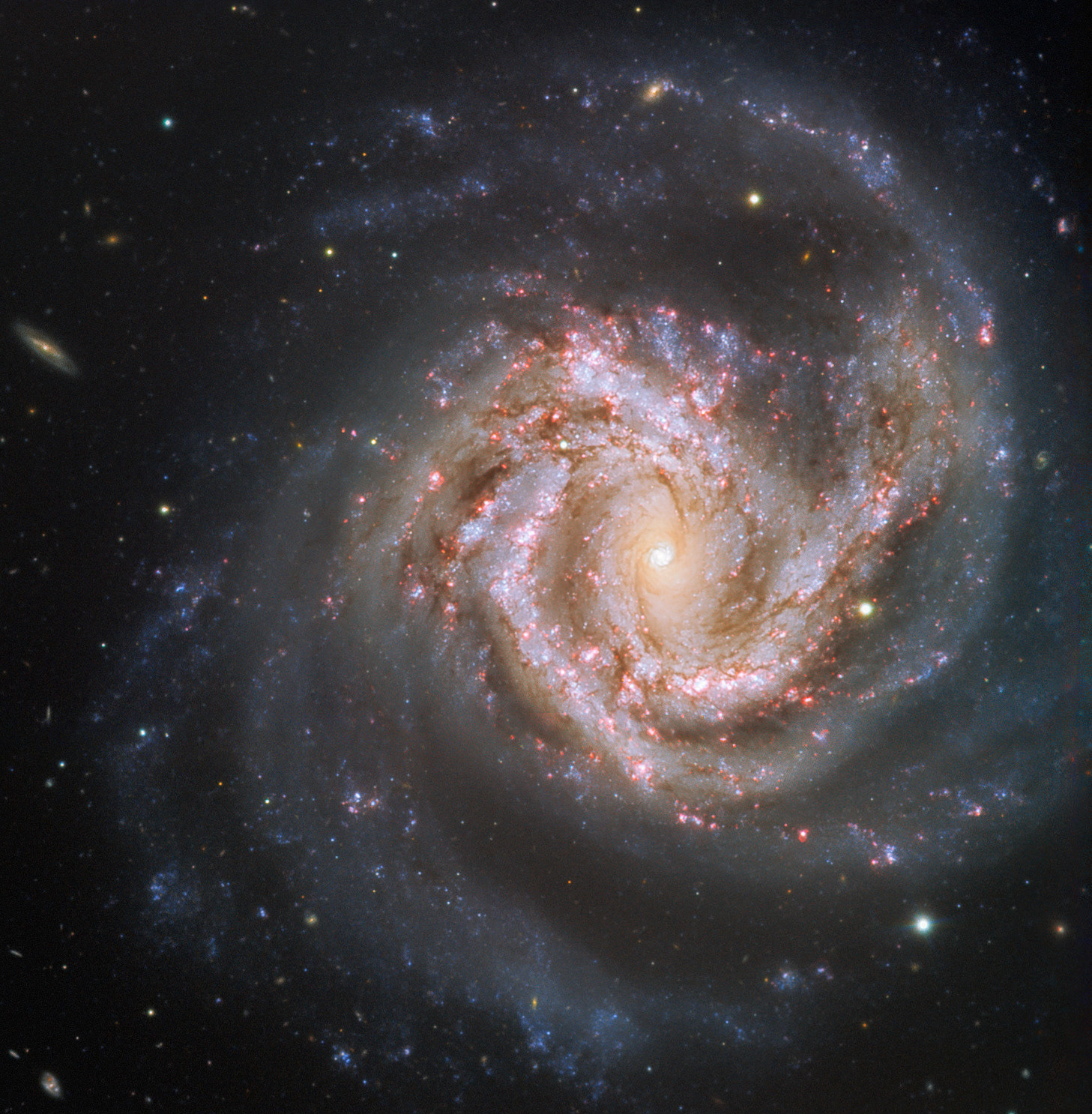



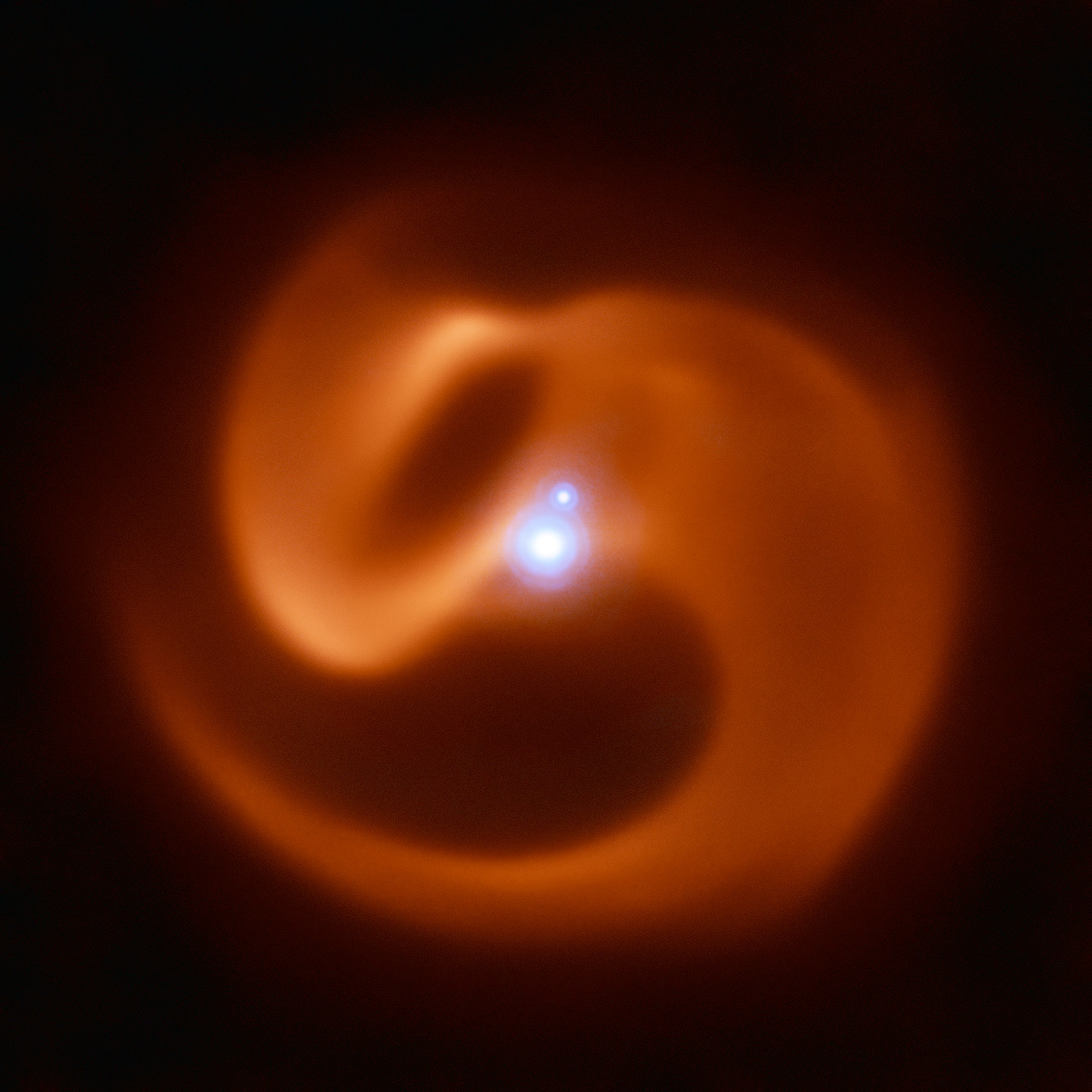

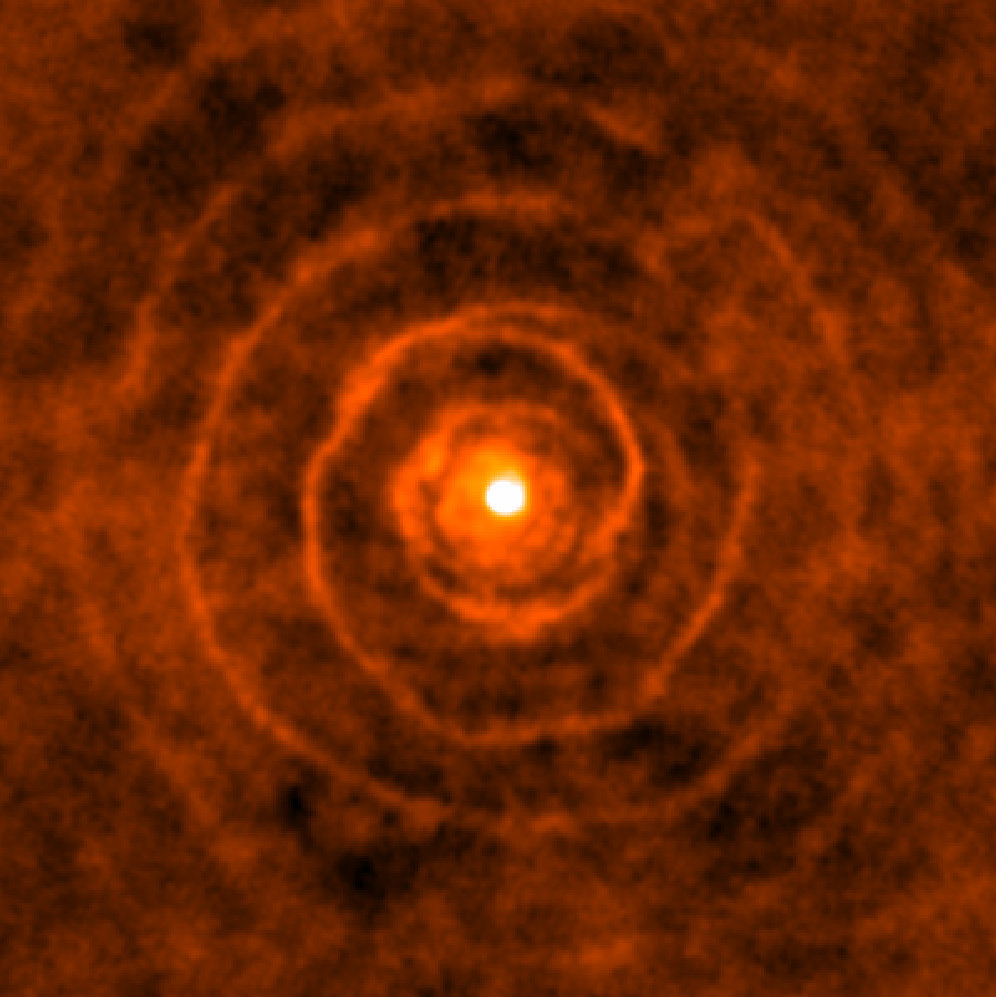
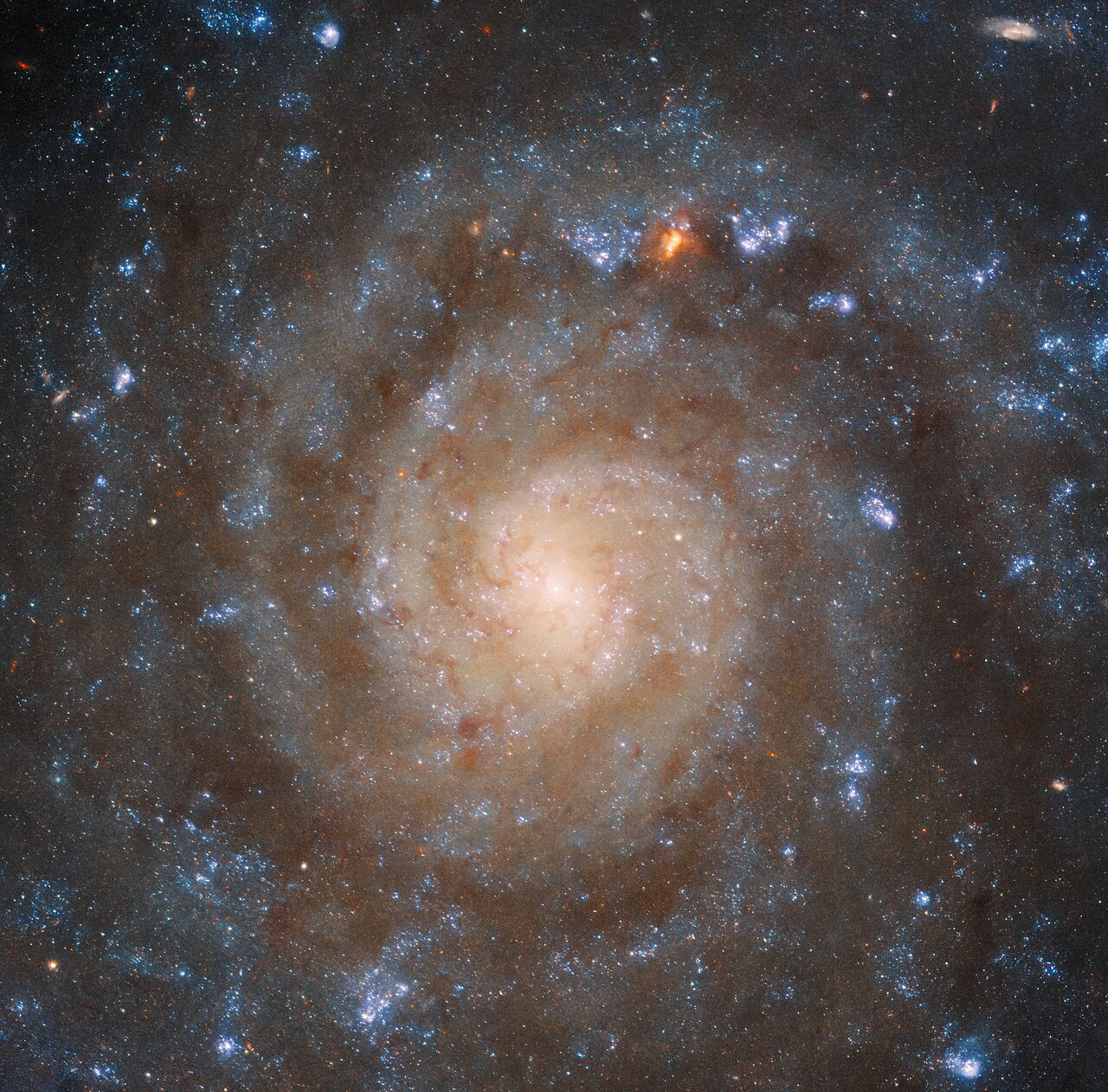

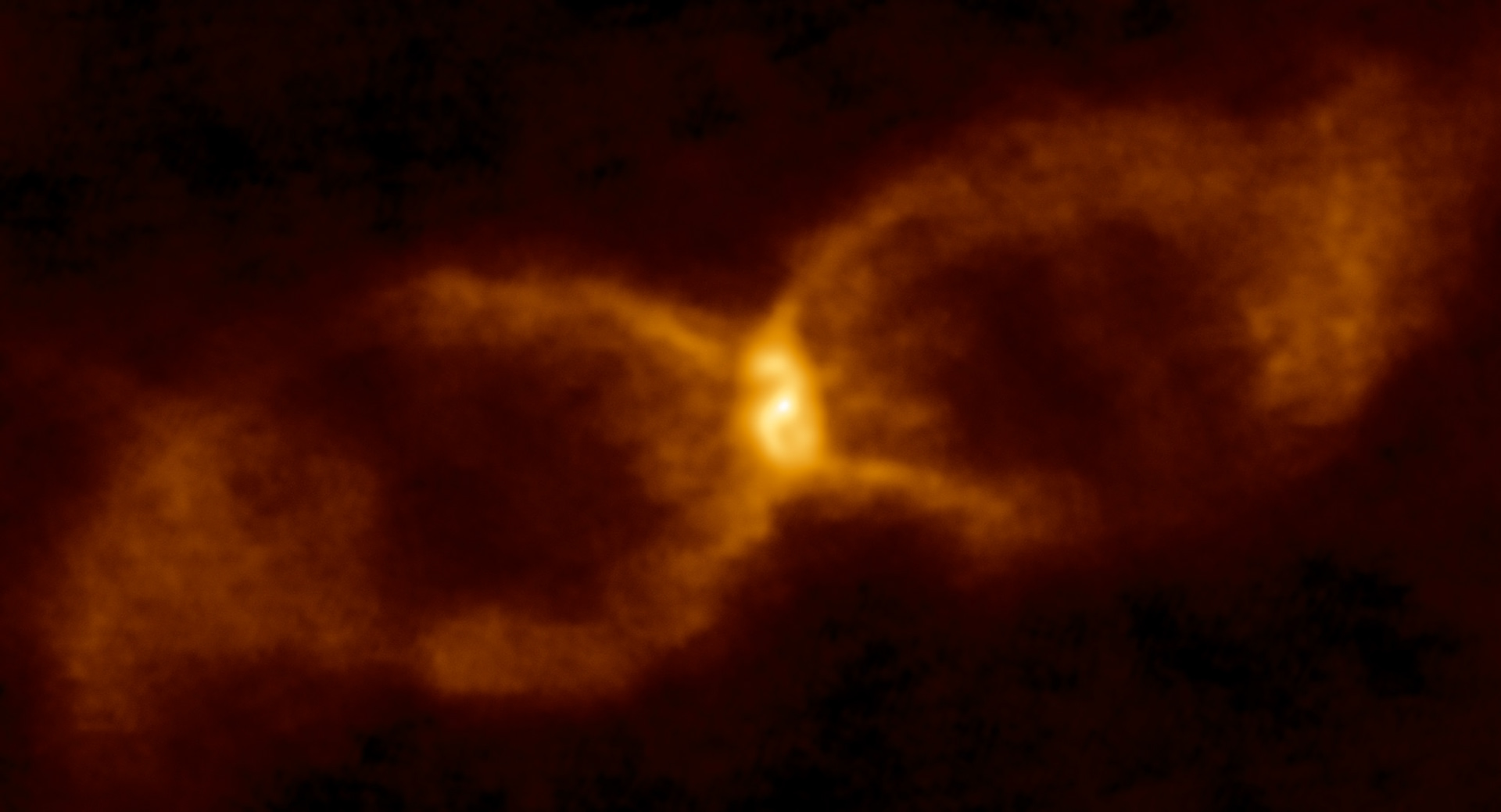
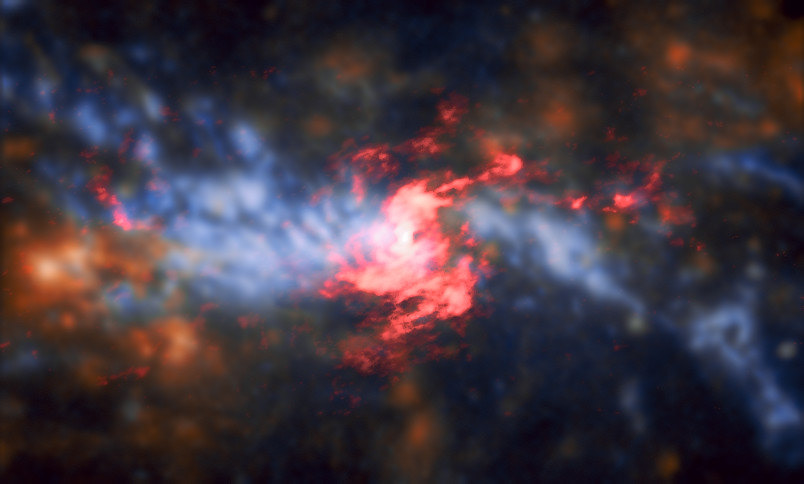
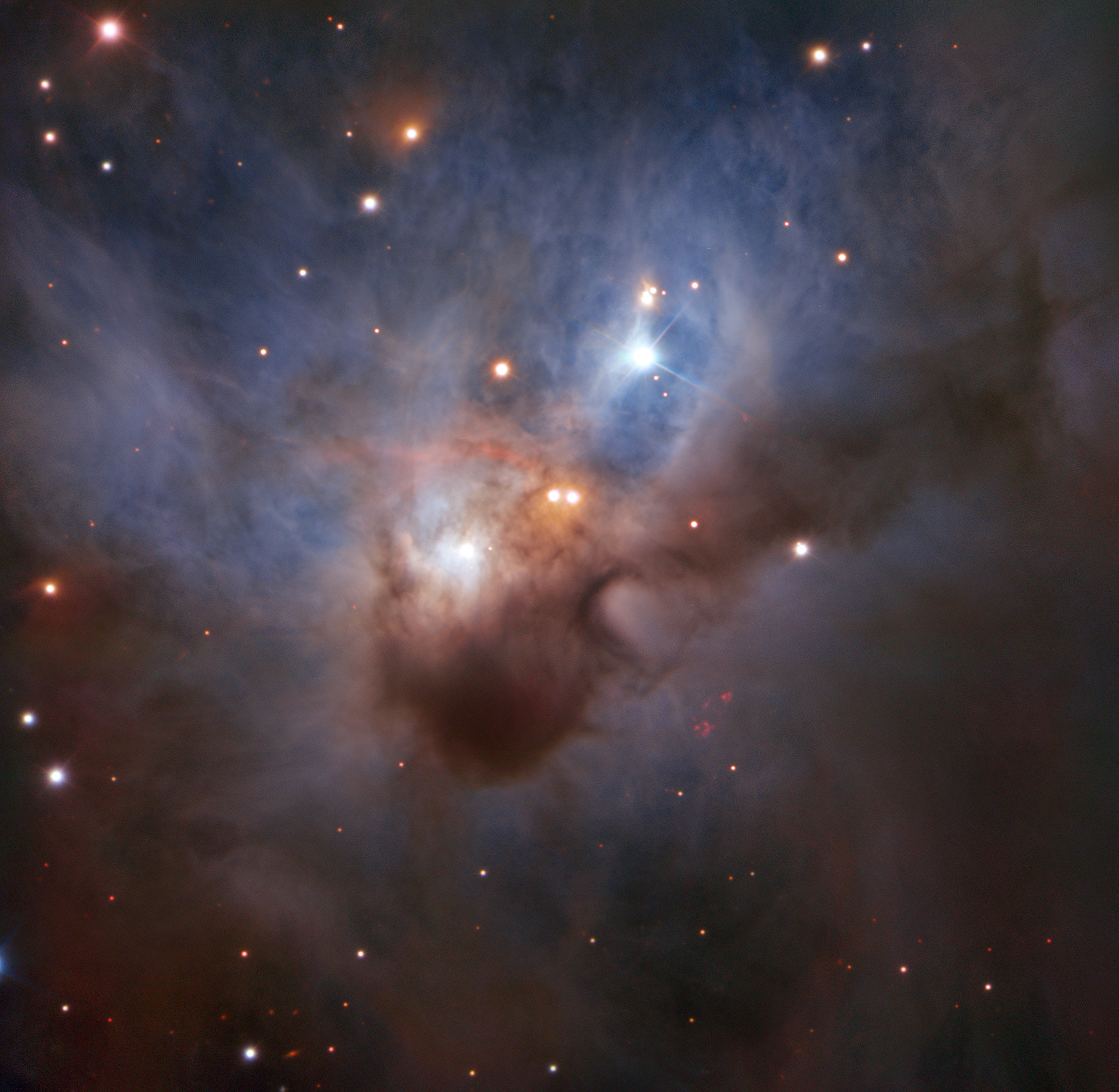
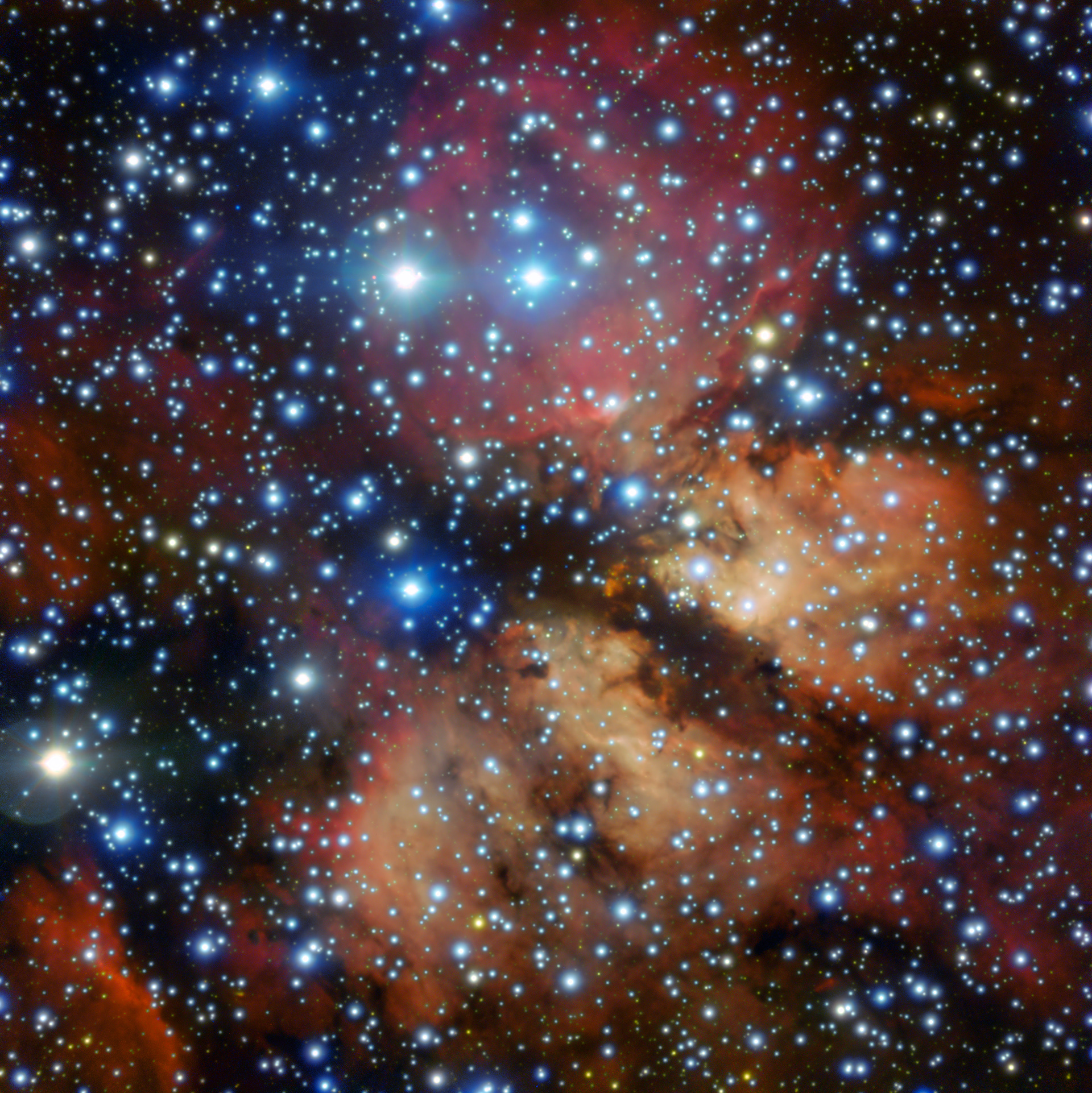
![Highest resolution image of the 1919 solar eclipse Almost exactly 100 years ago, a remarkable event occurred: a total solar eclipse. This eclipse was special in more ways than one. Firstly, at just under seven minutes in duration, it was the longest such eclipse in over 500 years. Secondly, it was used by astronomers to explore the then-new theory of general relativity — with successful and groundbreaking results. Einstein published his general theory of relativity in 1915. The total solar eclipse of 1919 offered the perfect opportunity to test it experimentally, by exploring whether — and how — the immense gravity of the Sun bends and distorts incoming light from more distant stars, as predicted by Einstein’s theory. For a brief moment during the eclipse, the Moon would block the Sun’s light in the sky and make visible some of the stars that lie close to the line of sight of the Sun, not normally visible during the daytime. By measuring the positions of these stars during the eclipse and comparing them to their positions at night, when the sun is not in the field of view, it would be possible to determine whether their light rays bends while passing close to the Sun. Three astronomers — Arthur Eddington, Frank Watson Dyson, and Andrew Crommelin — played key roles in this 1919 experiment. Eddington and Crommelin travelled to locations at which the eclipse would be total — Eddington to the West African island of Príncipe, Crommelin to the Brazilian town of Sobral — while Dyson coordinated the attempt from England. Eddington and Crommelin imaged the eclipse using the technology of the time: photographic plates made of glass. Sadly, the original plates from the 1919 expedition (one of which was reproduced in Dyson’s original paper) have been lost — but, luckily, copies of one of the plates were made and sent to observatories around the world to allow scientists everywhere to see the evidence in support of relativity with their own eyes. One copy of a plate from Sobral went to Landessternwarte Heidelberg-Königstuhl, who recently scanned theirs as part of the Heidelberg Digitized Astronomical Plates (HDAP) project [1]. The image shown here is arguably the highest resolution image of the 1919 eclipse, and is the result of applying modern image processing techniques — including image restoration, noise reduction, and removal of artifacts — to that plate copy (un-annotated version here). It unveils stunning details in the solar corona, a giant prominence emerging from the upper right part of the Sun, and stars in the constellation of Taurus (The Bull) that were used to confirm general relativity’s predictions [2]. Notes [1] HDAP receives funding under grant No. 00.071.2005 of the Klaus Tschira Foundation. The original high-resolution scan before the digital restoration is provided here for historical purposes. [2] Dyson’s original paper concludes with the paradigm-changing graph on p.332 plotting the displacements of the stars during the eclipse against their distance from the solar disc’s centre. This shows a clear relation (solid line) — the stars closer to the solar disc are deflected more than those further away, and by roughly the amount predicted by general relativity (twice that predicted by Newtonian theory, which is represented by the dotted line). Credit: ESO/Landessternwarte Heidelberg-Königstuhl/F. W. Dyson, A. S. Eddington, & C. Davidson](https://cdn.myportfolio.com/e6b26236-639b-4064-900c-5a5469a04617/e77d2735-d2df-40a0-9891-93056ad6f1d1_rw_3840.jpg?h=609c97b9a424a10471ed44aec2d847e9)



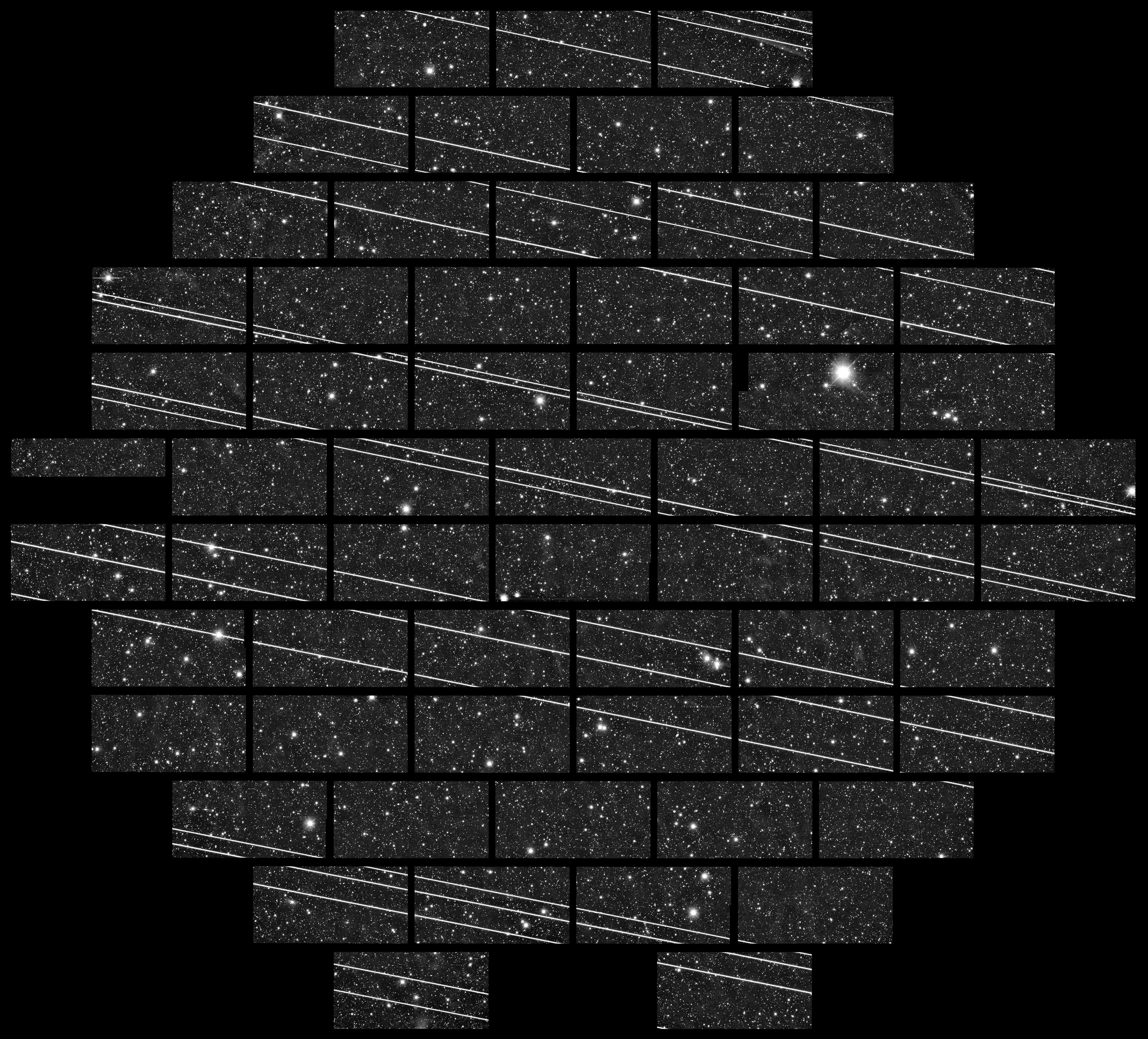
![The spiral arms of the galaxy NGC 7038 wind languidly across this image from the NASA/ESA Hubble Space Telescope. NGC 7038 lies around 220 million light-years from Earth in the southern constellation Indus. This image portrays an especially rich and detailed view of a spiral galaxy, and exposes a huge number of distant stars and galaxies around it. That’s because it’s made from a combined 15 hours worth of Hubble time focused on NGC 7038 and collecting light. So much data indicates that this is a valuable target, and indeed, NGC 7038 has been particularly helpful to astronomers measuring distances at vast cosmic scales. The distances to astronomical objects are determined using an interconnected chain of measurement techniques called the Cosmic Distance Ladder. Each rung in the ladder is calibrated by earlier steps, based on measurements of objects closer to us. This makes the accuracy of distances at the largest scales dependent on how accurately distances to nearby objects can be determined. Hubble inspected NGC 7038 with its Wide Field Camera 3 to calibrate two of the most common distance measurement techniques: type 1A supernovae and Cepheid variables. One of Hubble's original science goals was to accurately establish distances to night-sky objects, and over its three decades of operation Hubble’s increasingly precise distance measurements have contributed to one of the most intriguing unsolved problems in astronomy. Distance measurements are used to derive a quantity known as the Hubble constant, which captures how fast the Universe is expanding. As astronomer’s measurements of the Hubble constant have become more precise, their value has become increasingly inconsistent with the value of the Hubble Constant derived from observations of the Big Bang’s afterglow. Astronomers have been unable to explain the mismatch between the two values of the Hubble constant, which suggests that a new discovery in cosmology is waiting to be made. [Image description: An enormous spiral galaxy fills half of the frame, in the centre. It is oval-shaped, with four blue spiral arms winding around it. The galaxy’s centre shines brightly with pale yellow light. Thin strands of orange dust are spread around the centre, following the paths of the arms. Above and below the galaxy, very many small stars and galaxies are visible on the black background.] Links Video of Investigating A Made-to-Measure Galaxy Credit: ESA/Hubble & NASA, D. Jones Acknowledgement: G. Anand, L. Shatz](https://cdn.myportfolio.com/e6b26236-639b-4064-900c-5a5469a04617/8616b2bb-6562-451e-9222-c298c9c1061e_rw_1920.jpg?h=0a0f7af9abacec80c5e31d3d54548ba1)
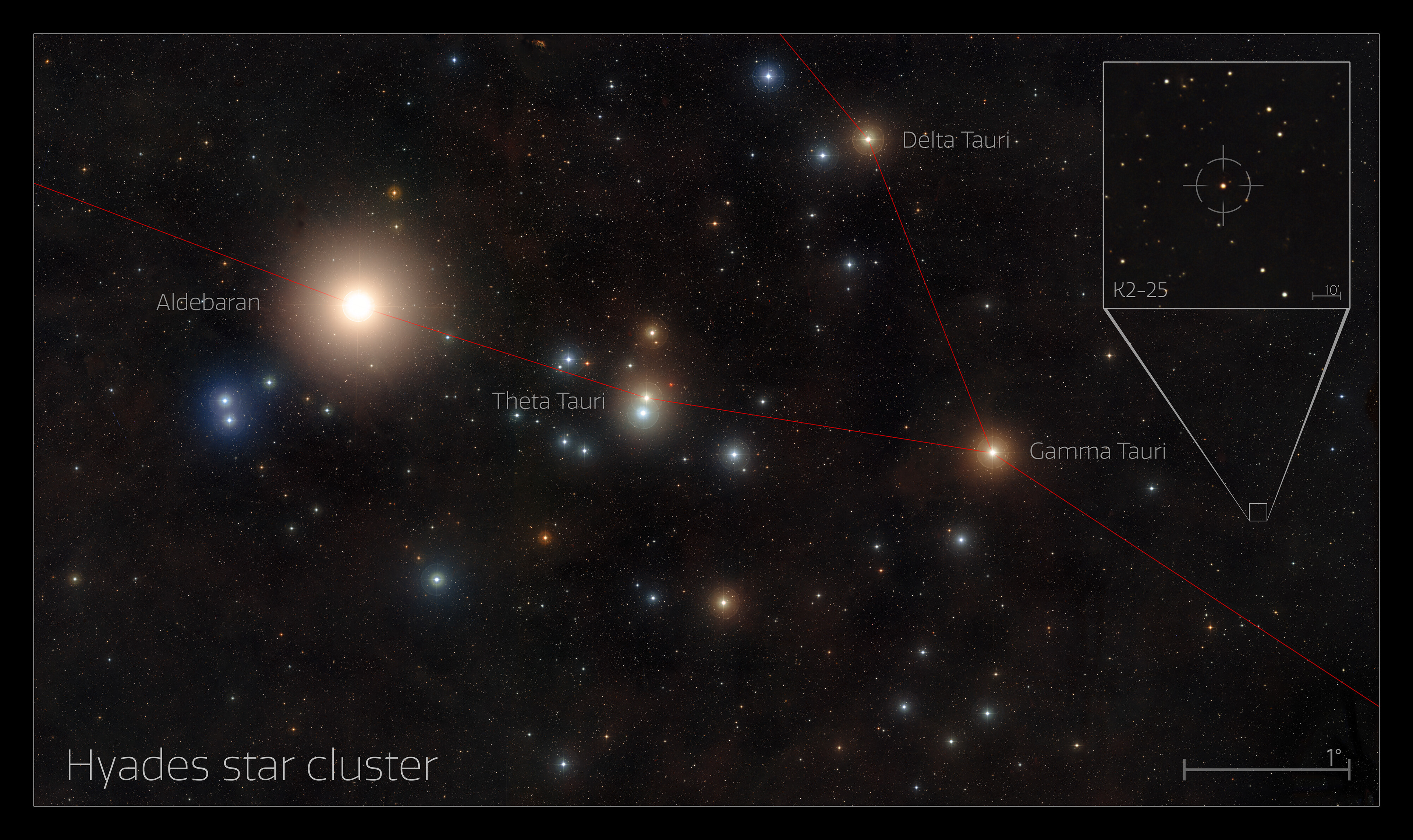
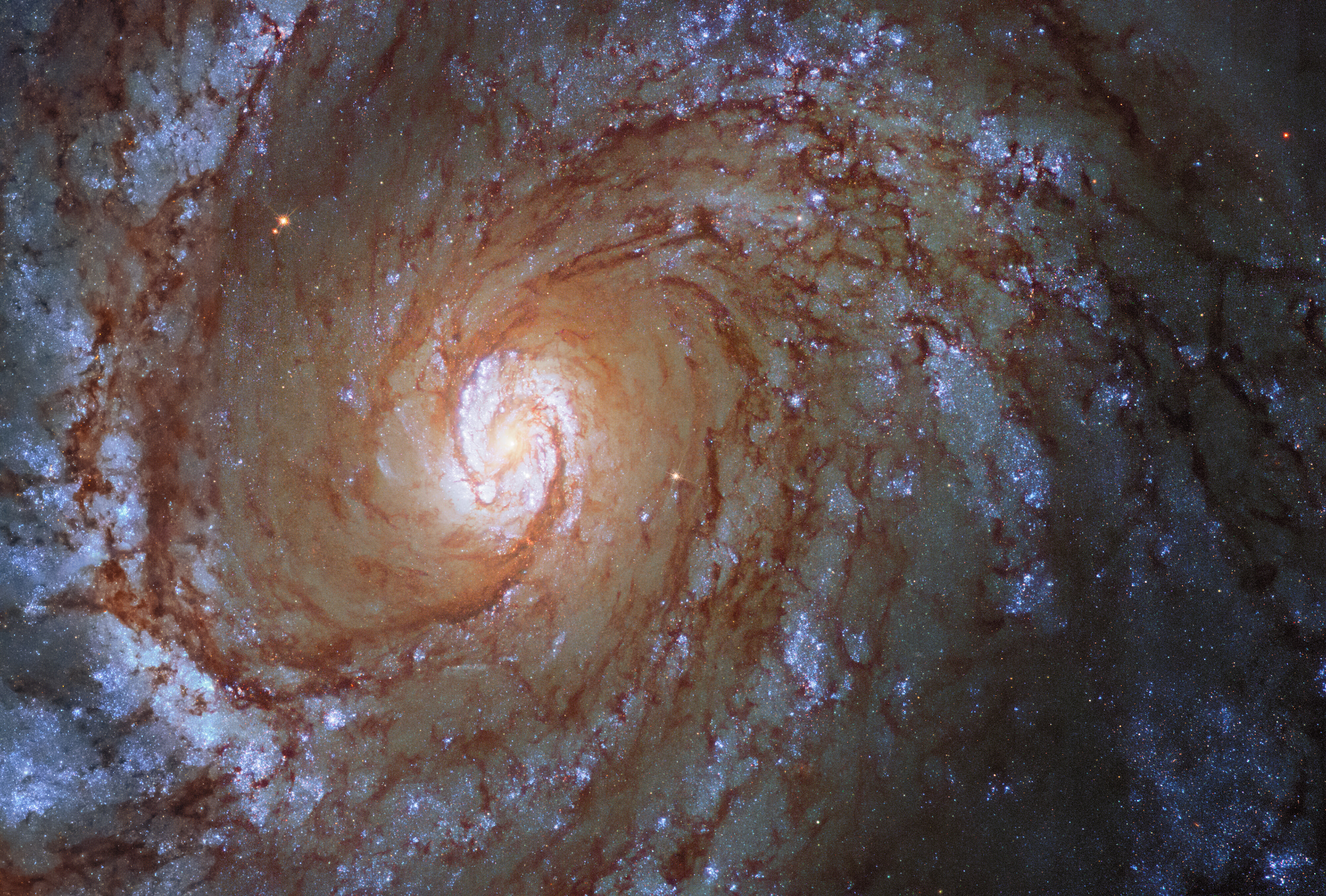
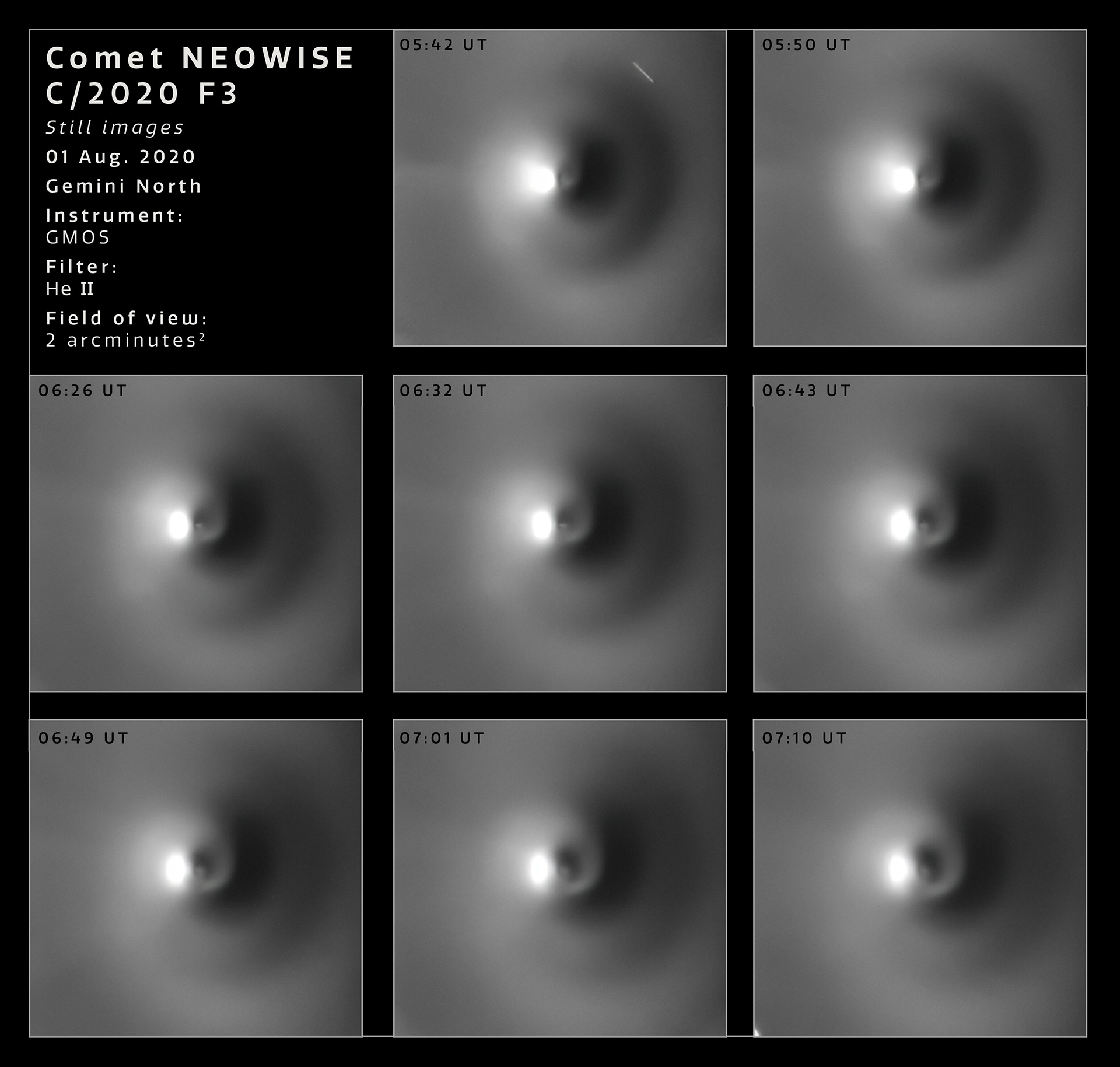
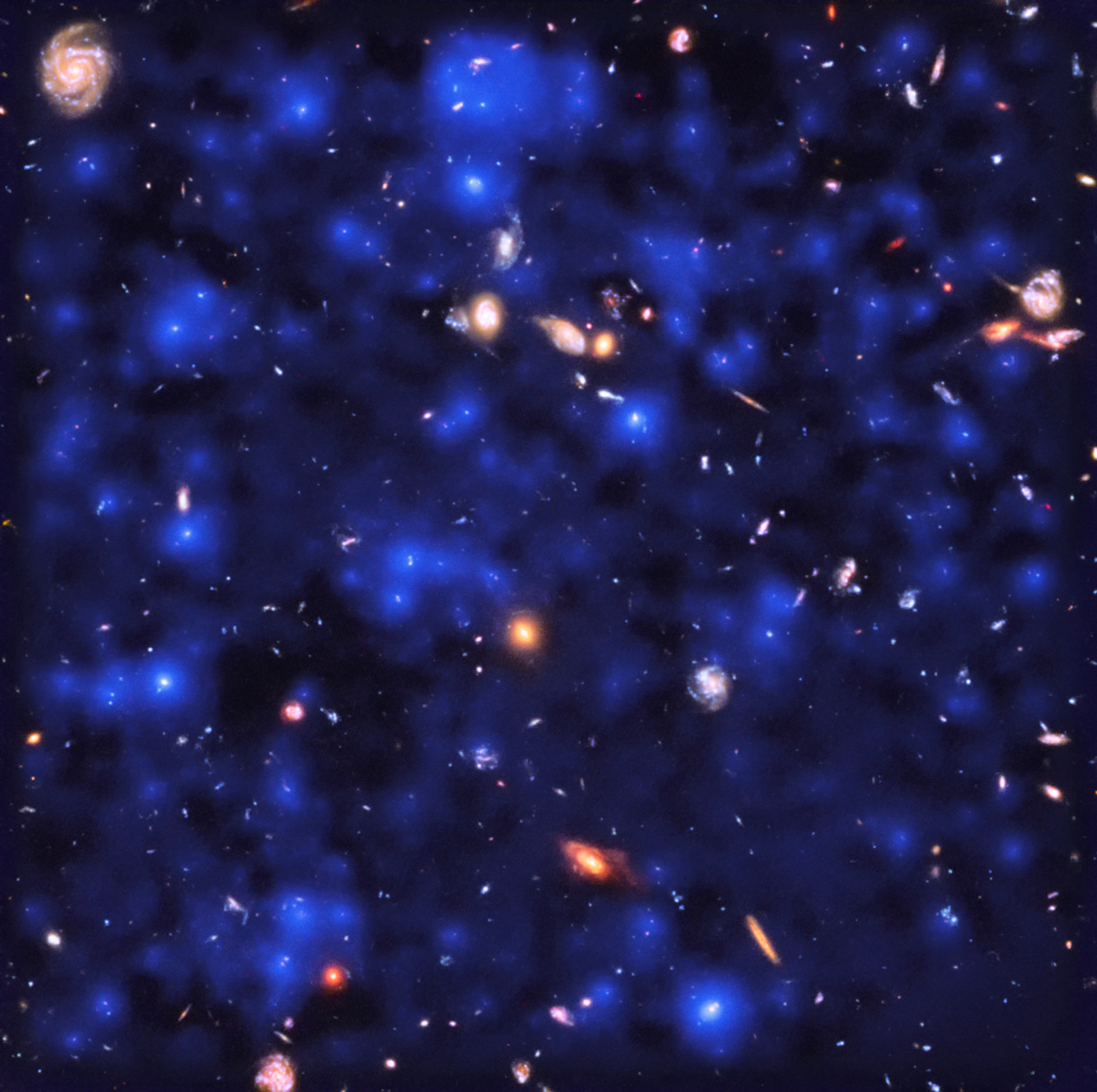
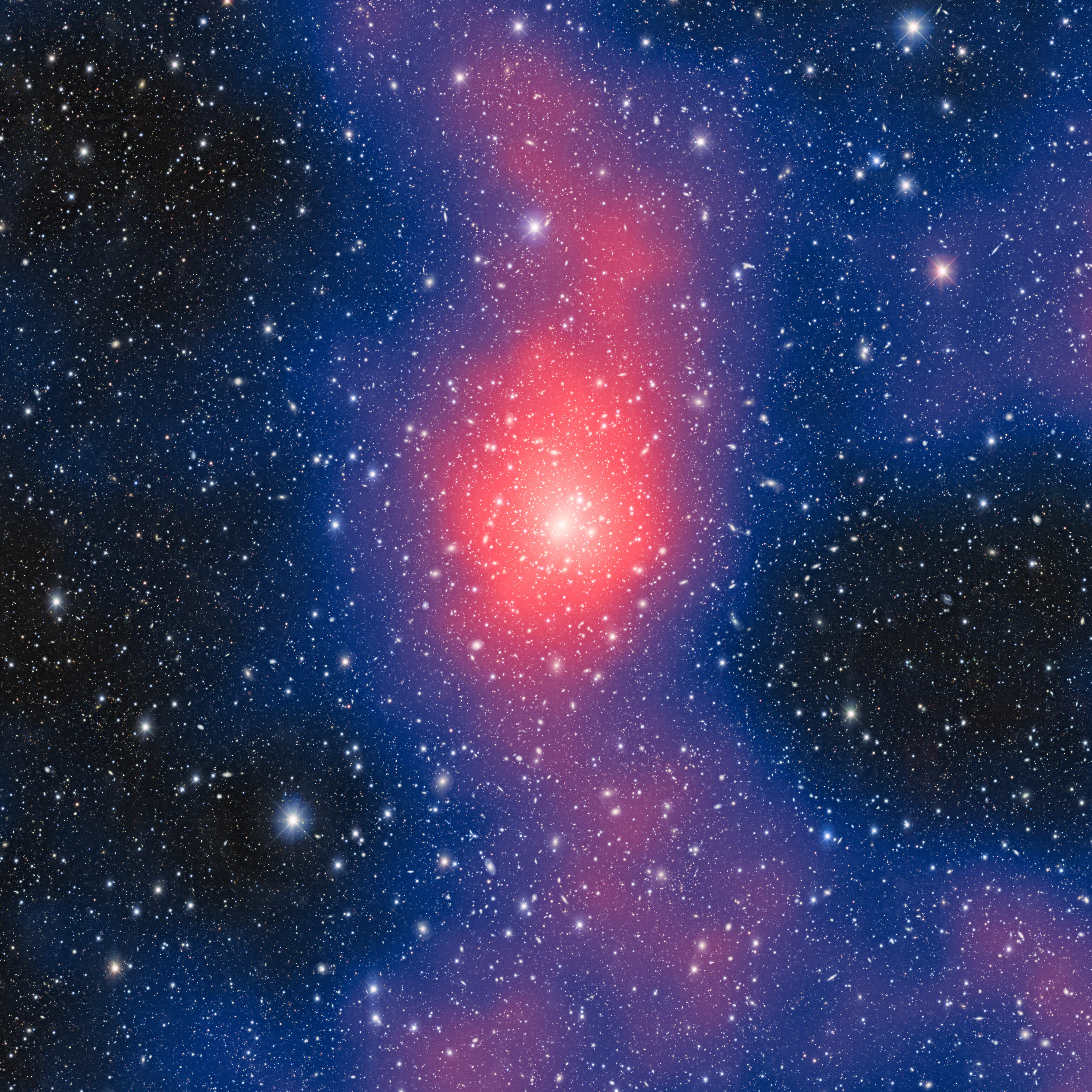
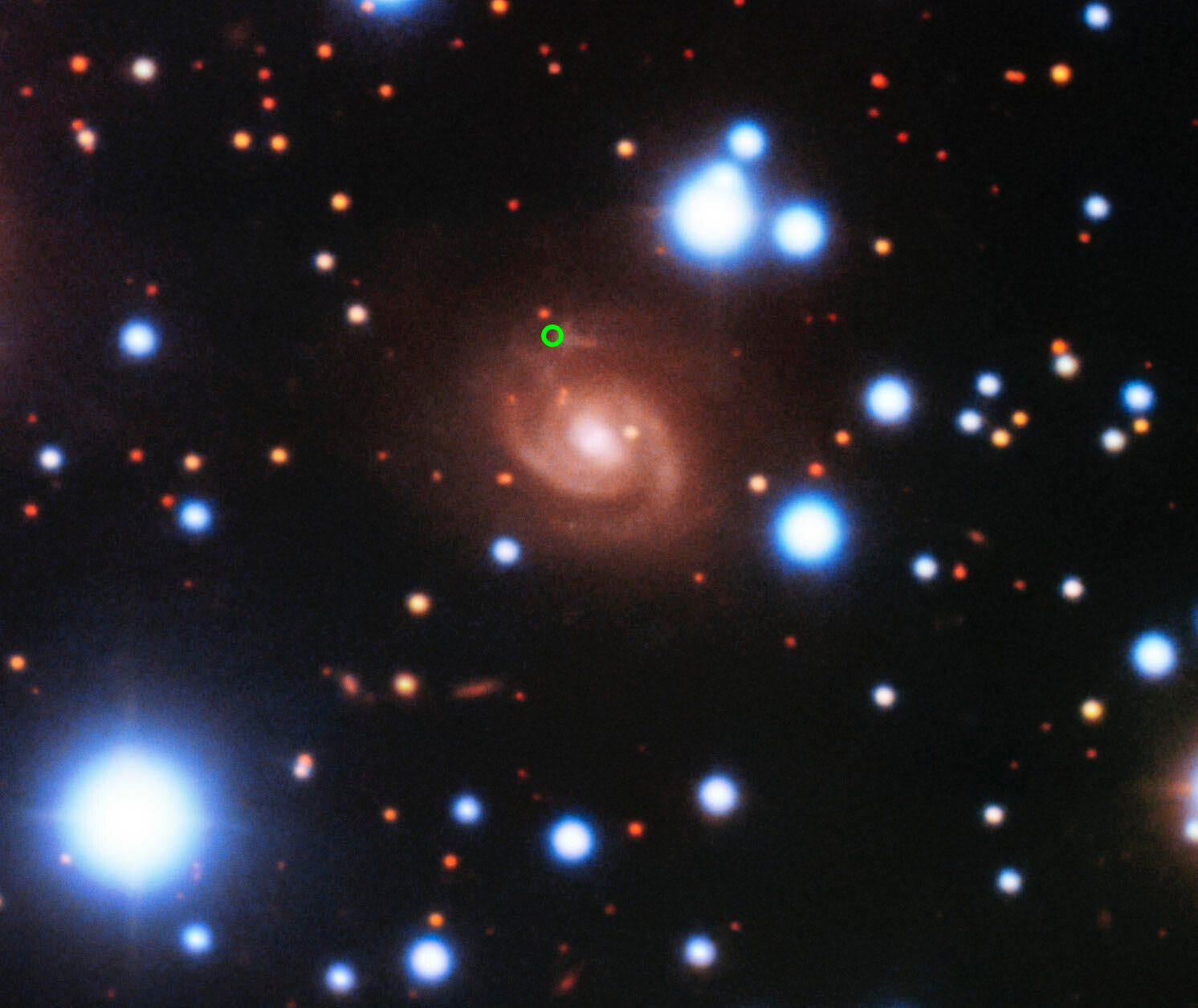
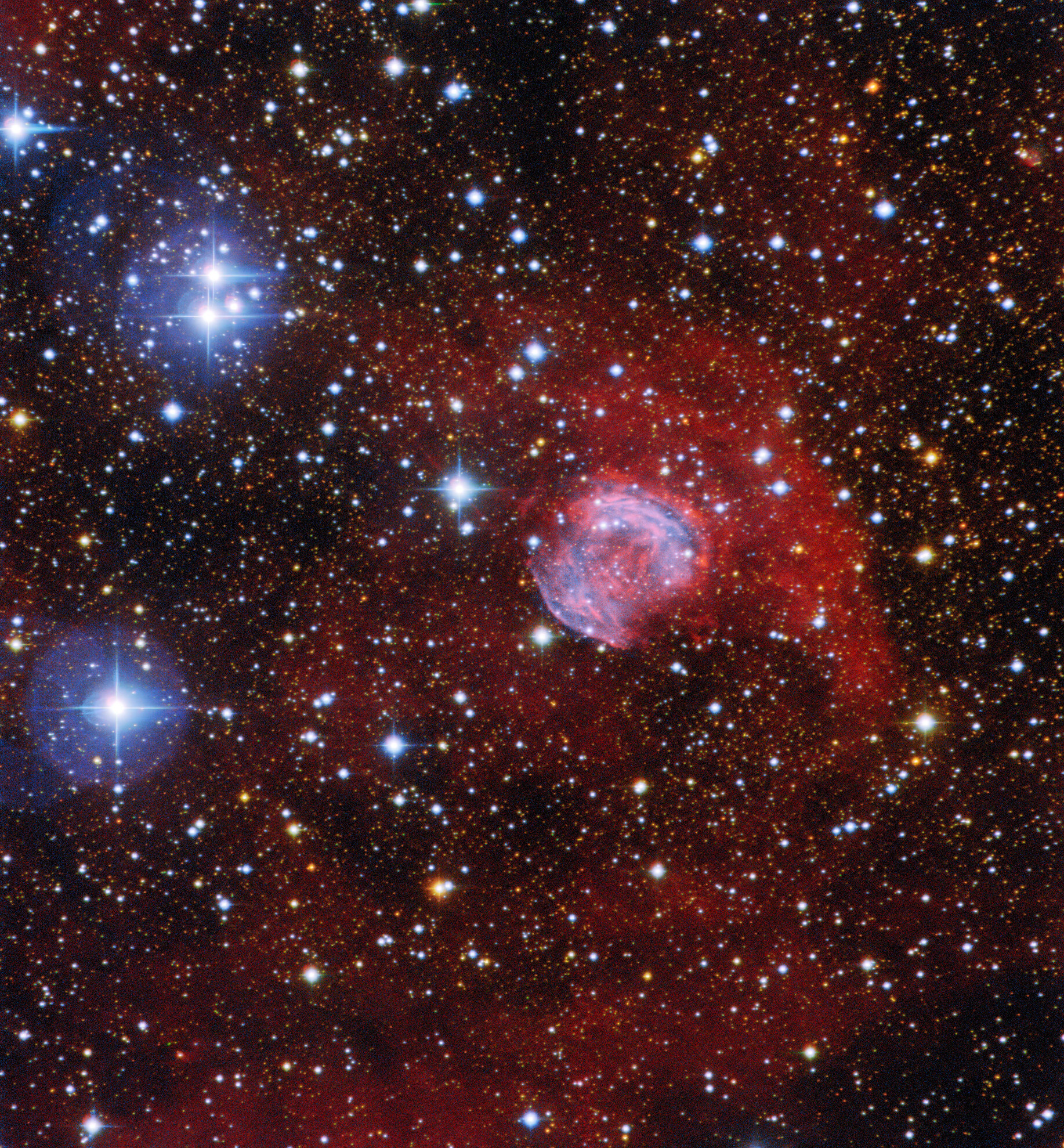
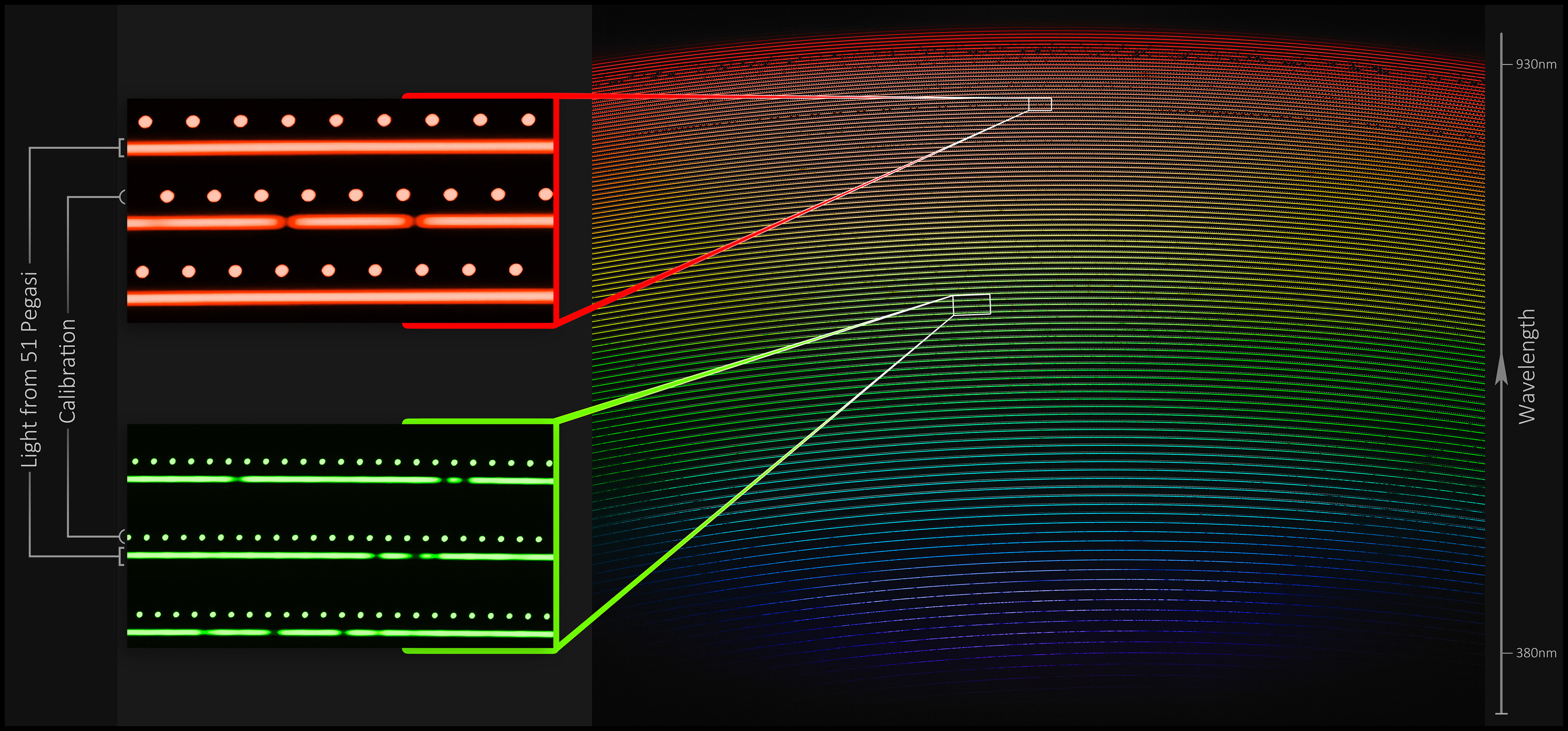

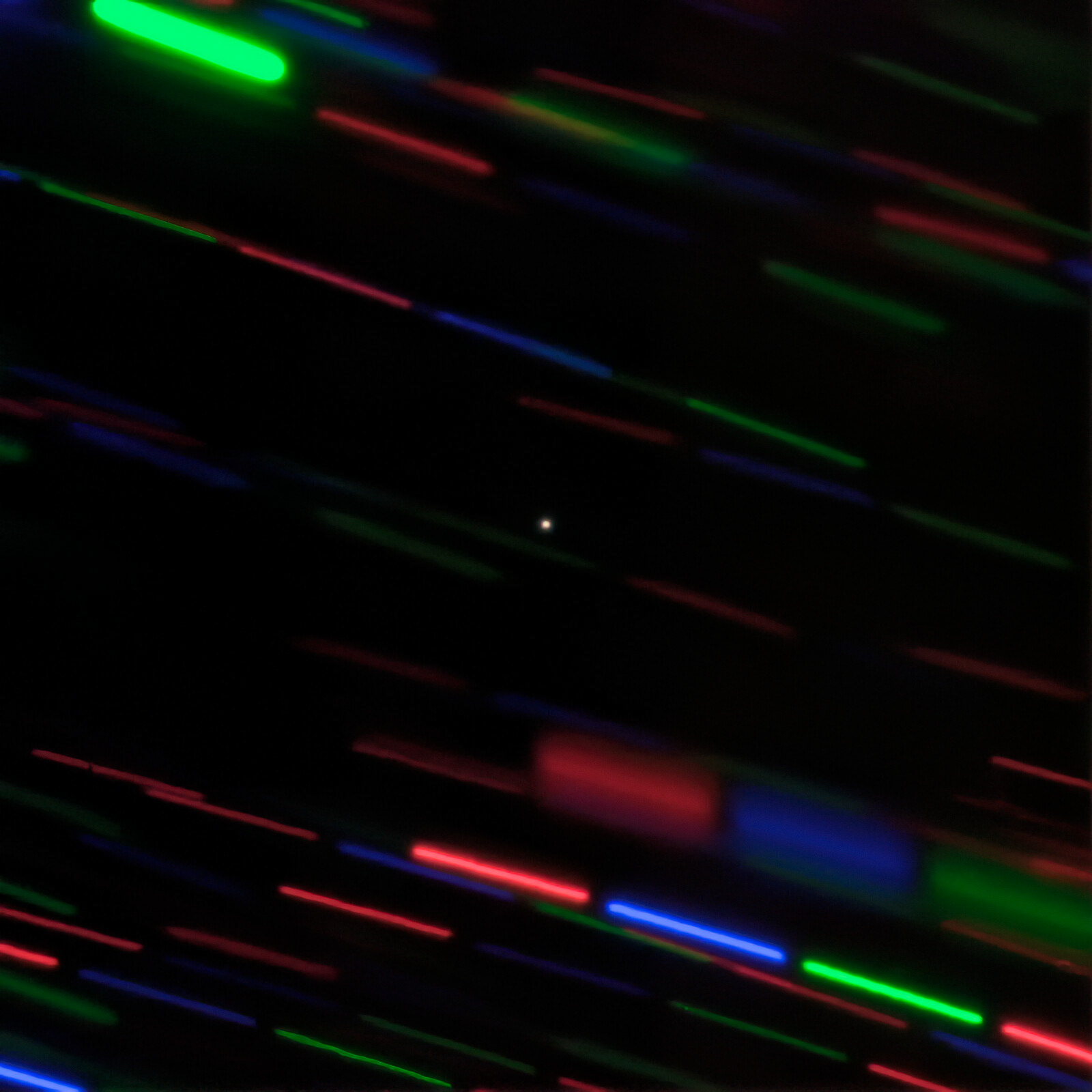

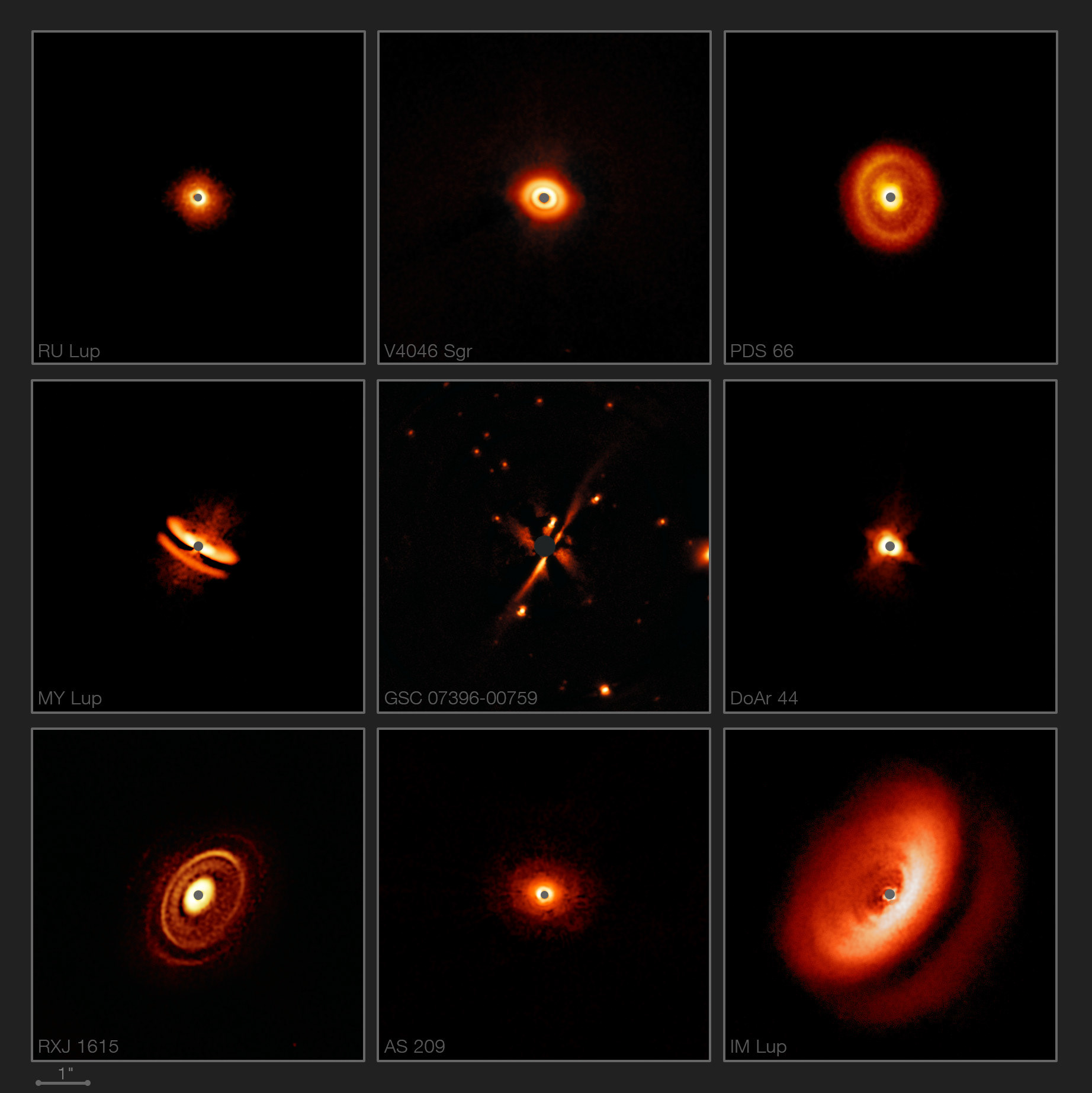
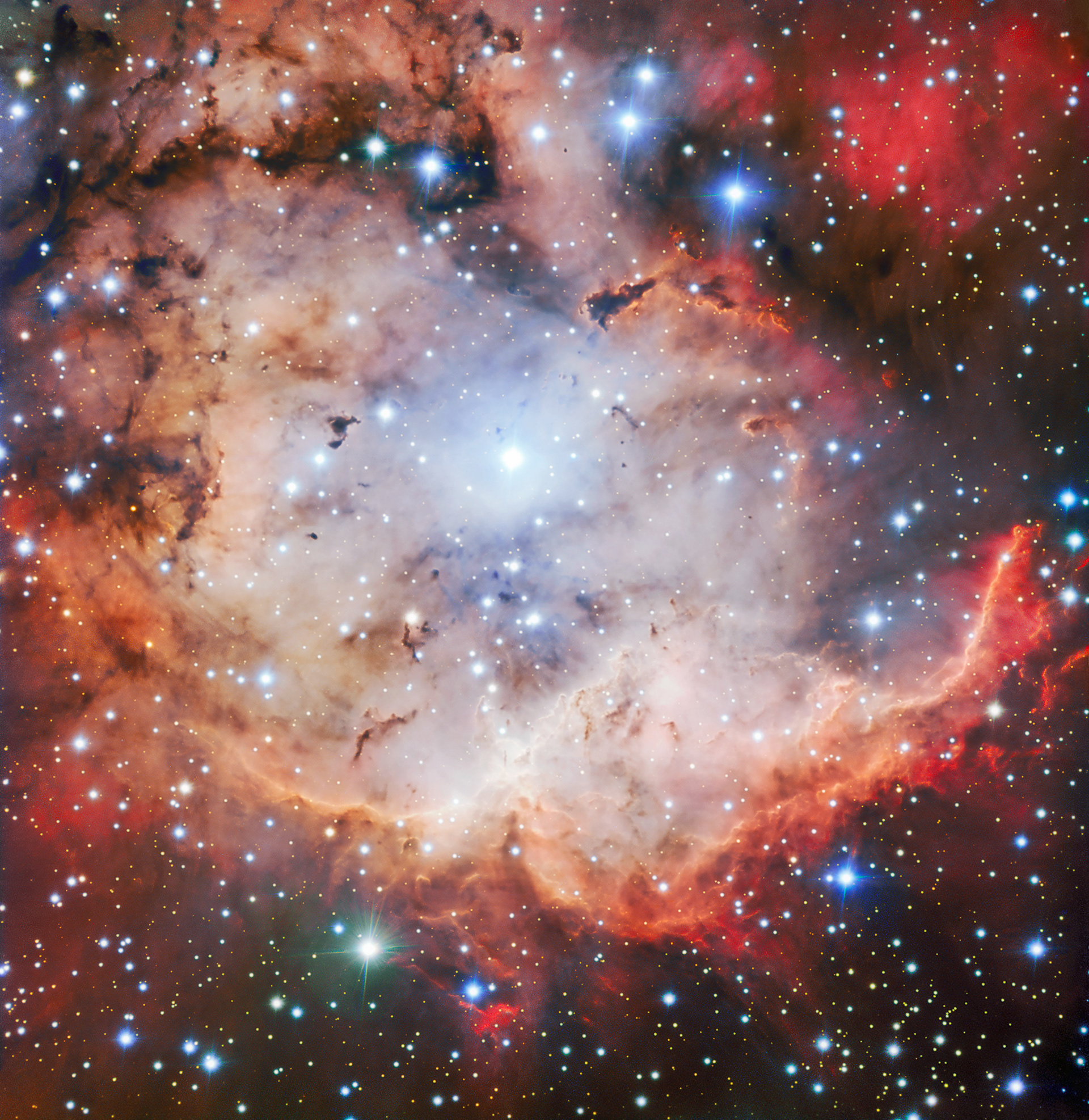

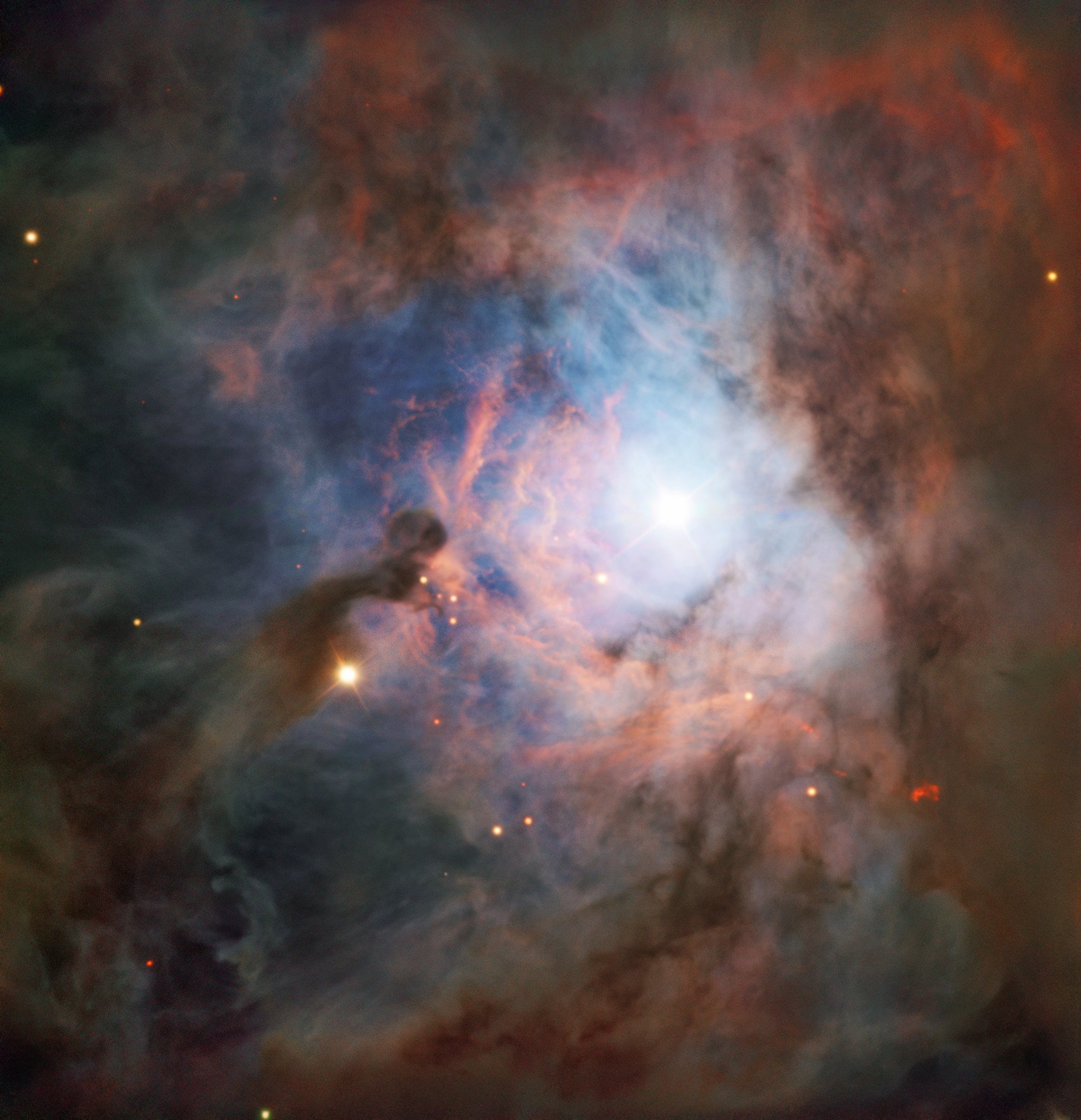
![A merging galaxy pair cavort in this image captured by the NASA/ESA/CSA James Webb Space Telescope. This pair of galaxies, known to astronomers as II ZW 96, is roughly 500 million light-years from Earth and lies in the constellation Delphinus, close to the celestial equator. As well as the wild swirl of the merging galaxies, a menagerie of background galaxies are dotted throughout the image. The two galaxies are in the process of merging and as a result have a chaotic, disturbed shape. The bright cores of the two galaxies are connected by bright tendrils of star-forming regions, and the spiral arms of the lower galaxy have been twisted out of shape by the gravitational perturbation of the galaxy merger. It is these star-forming regions that made II ZW 96 such a tempting target for Webb; the galaxy pair is particularly bright at infrared wavelengths thanks to the presence of the star formation. This observation is from a collection of Webb measurements delving into the details of galactic evolution, in particular in nearby Luminous Infrared Galaxies such as II ZW 96. These galaxies, as the name suggests, are particularly bright at infrared wavelengths, with luminosities more than 100 billion times that of the Sun. An international team of astronomers proposed a study of complex galactic ecosystems — including the merging galaxies in II ZW 96 — to put Webb through its paces soon after the telescope was commissioned. Their chosen targets have already been observed with ground-based telescopes and the NASA/ESA Hubble Space Telescope, which will provide astronomers with insights into Webb’s ability to unravel the details of complex galactic environments. Webb captured this merging galaxy pair with a pair of its cutting-edge instruments; NIRCam — the Near-InfraRed Camera — and MIRI, the Mid-InfraRed Instrument. If you are interested in exploring the differences between Hubble and Webb’s observations of II ZW 96, you can do so here. MIRI was contributed by ESA and NASA, with the instrument designed and built by a consortium of nationally funded European Institutes (The MIRI European Consortium) in partnership with JPL and the University of Arizona. The University of Arizona also provided the NIRCam instrument. [Image description: A galaxy merger lies in the centre of this image. The cores of the galaxies, coloured blue, are below-centre. They are surrounded by red star-forming regions which stretch up through and above the centre. Faint yellow diffraction spikes appear in the middle. The lower galaxy is a mostly regular spiral shape, while the upper galaxy has been distorted heavily. The background is black, and covered with many tiny galaxies throughout the scene.] Credit: ESA/Webb, NASA & CSA, L. Armus, A. Evans](https://cdn.myportfolio.com/e6b26236-639b-4064-900c-5a5469a04617/6708260f-cbbd-4a63-88ad-5cf3231f6db8_rw_1920.jpg?h=1e733edb98cbe7985108f033ac9a68f3)
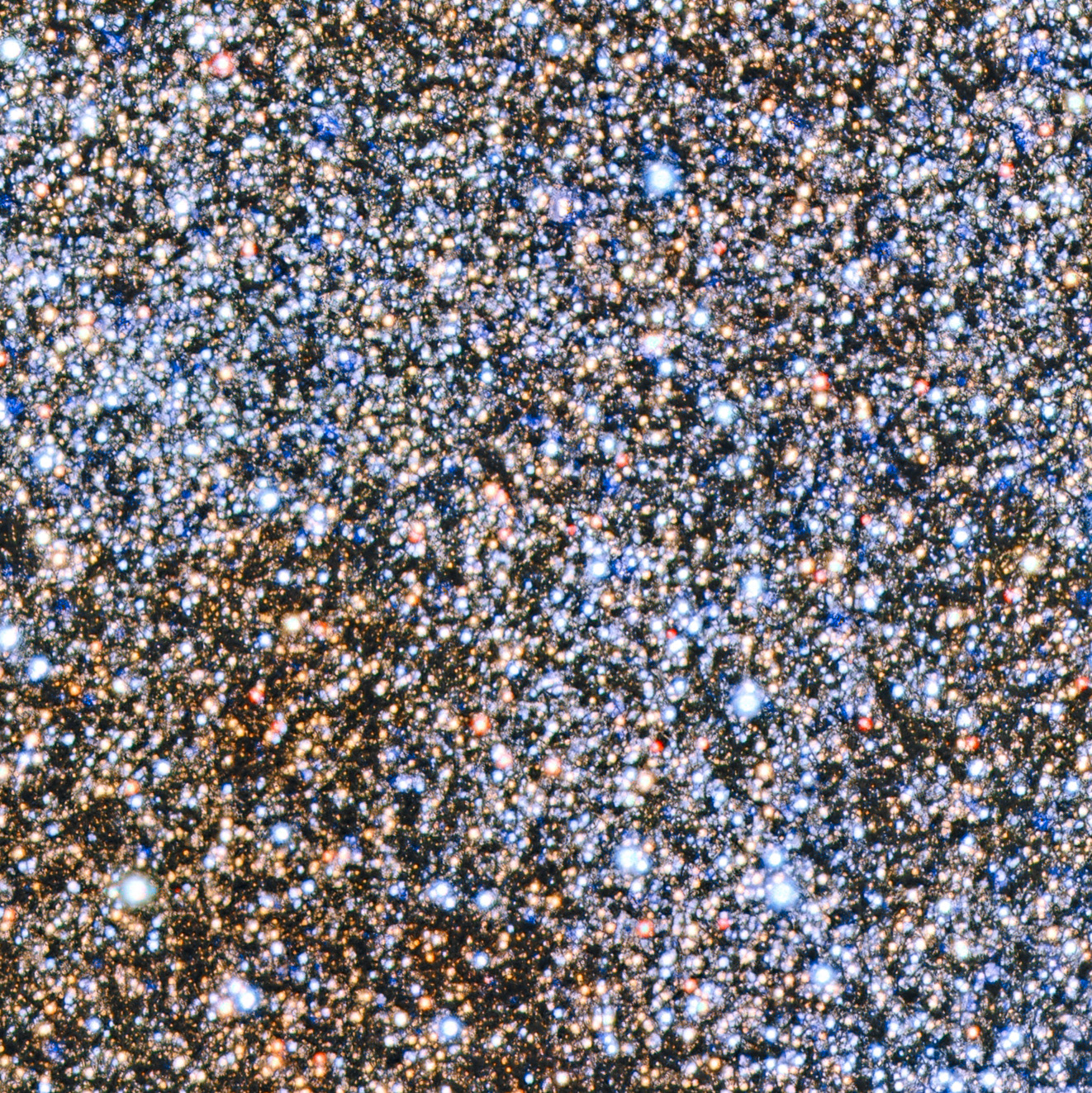
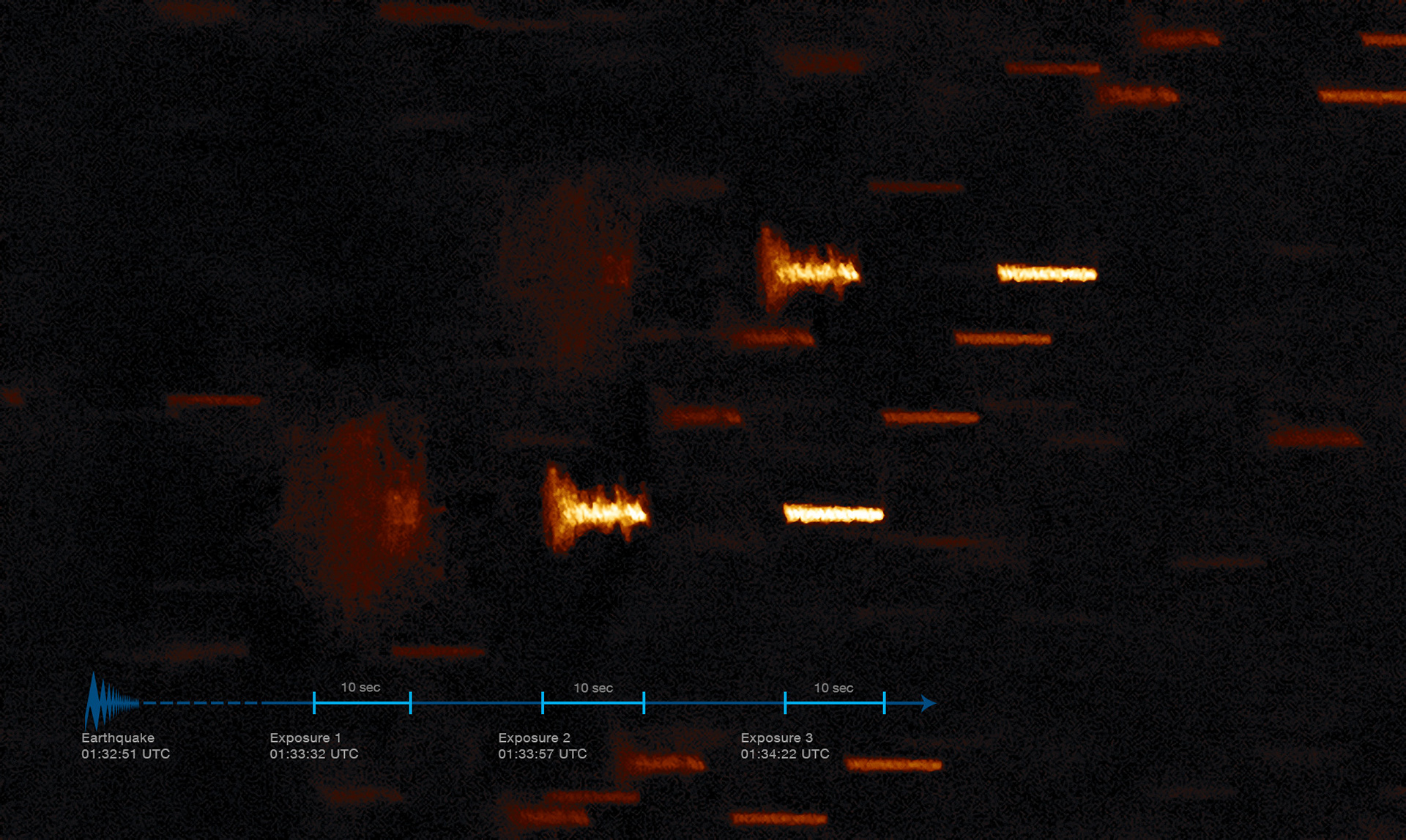
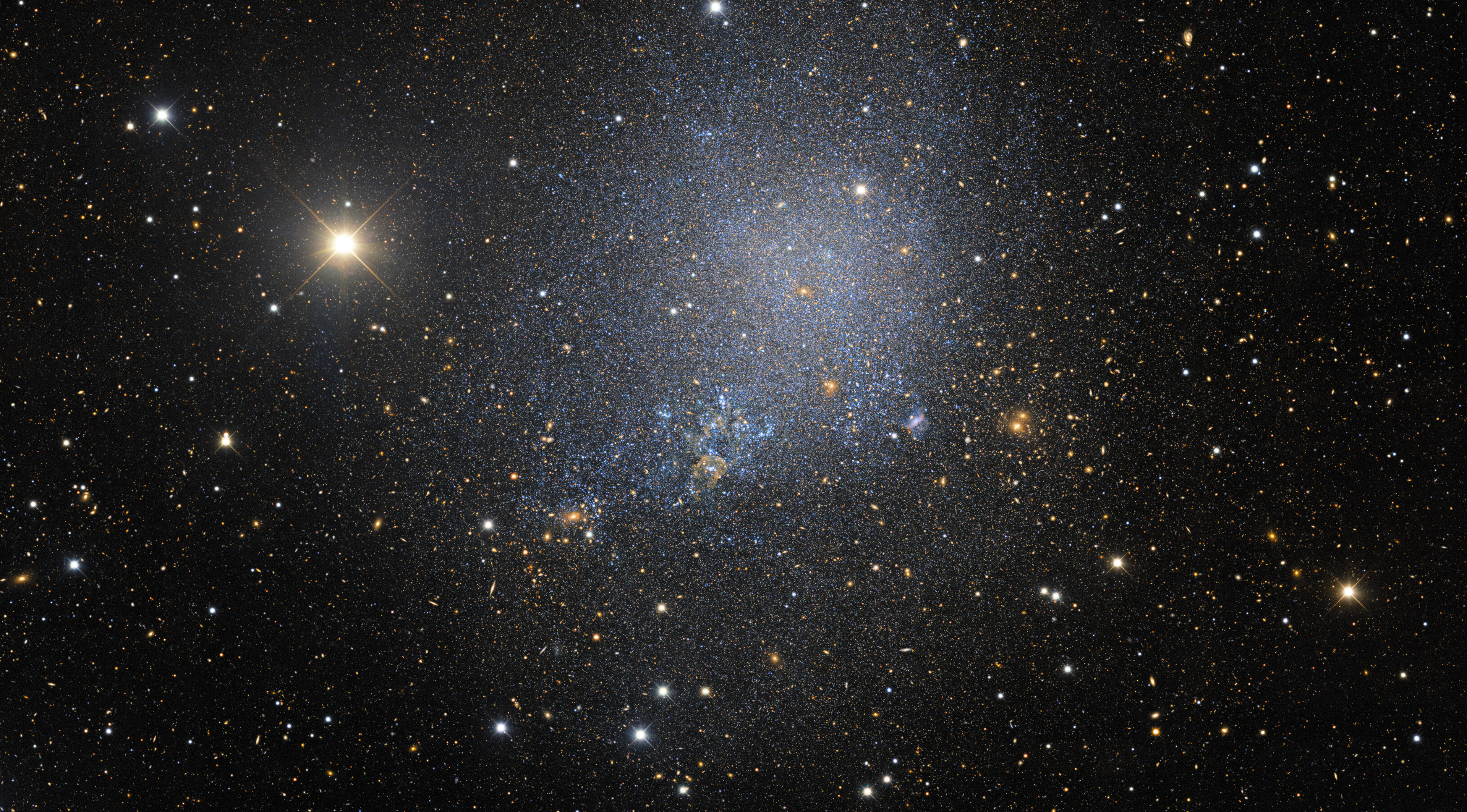
![This image, taken with the NASA/ESA Hubble Space Telescope, shows the supernova remnant SNR 0509-68.7, also known as N103B (top of the image). N103B was a Type Ia supernova, located in the Large Magellanic Cloud — a neighbouring galaxy of the Milky Way. Owing to its relative proximity to Earth, astronomers observe the remnant to search for a potential stellar survivor of the explosion. The orange-red filaments visible in the image show the shock fronts of the supernova explosion. These filaments allow astronomers to calculate the original centre of the explosion. The filaments also show that the explosion is no longer expanding as a sphere, but is elliptical in shape. Astronomers assume that part of material ejected by the explosion hit a denser cloud of interstellar material, which slowed its speed. The shell of expanding material being open to one side supports this idea. The gas in the lower half of the image and the dense concentration of stars in the lower left are the outskirts of the star cluster NGC 1850, which has been observed by Hubble in the past [heic0108]. Credit: ESA/Hubble, NASA](https://cdn.myportfolio.com/e6b26236-639b-4064-900c-5a5469a04617/d9838943-651d-490e-a4c4-21a532cf622c_rw_1920.jpg?h=41244b6b9bd247e27252e1076dd1007a)


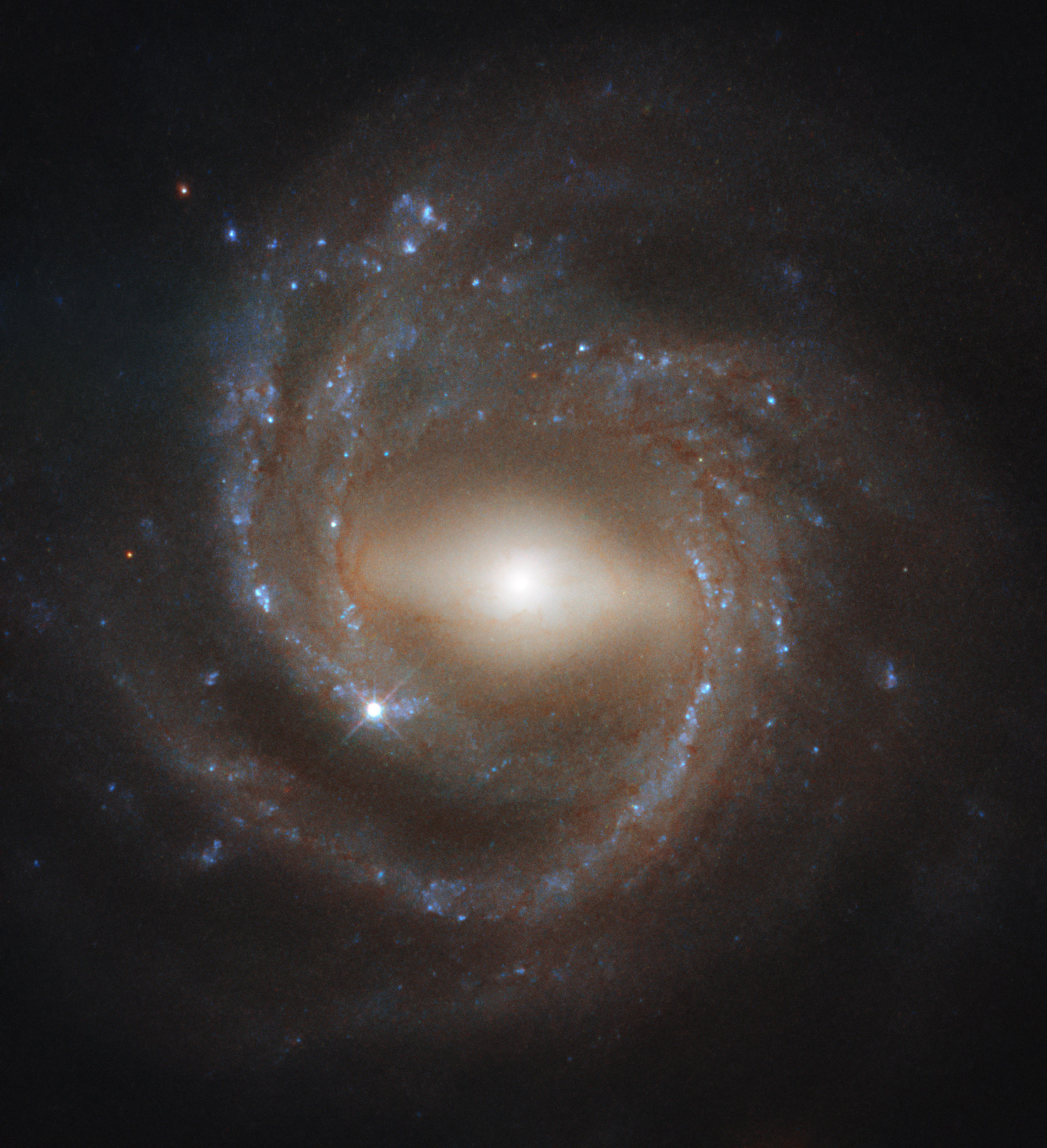

![The peculiar spiral galaxy ESO 415-19, which lies around 450 million light-years away, stretches lazily across this image from the NASA/ESA Hubble Space Telescope. While the centre of this object resembles a regular spiral galaxy, long streams of stars stretch out from the galactic core like bizarrely elongated spiral arms. These are tidal streams caused by some chance interaction in the galaxy’s past, and give ESO 415-19 a distinctly peculiar appearance. ESO 415-19’s peculiarity made it a great target for Hubble. This observation comes from an ongoing campaign to explore the Arp Atlas of Peculiar Galaxies, a menagerie of some of the weirdest and most wonderful galaxies that the Universe has to offer. These galaxies range from bizarre lonesome galaxies to spectacularly interacting galaxy pairs, triplets, and even quintets. These space oddities are spread throughout the night sky, which means that Hubble can spare a moment to observe them as it moves between other observational targets. This particular observation lies in a part of the night sky contained by the Fornax constellation. This constellation was also the site of a particularly important Hubble observation; the Hubble Ultra Deep Field. Creating the Ultra Deep Field required almost a million seconds of Hubble time, and captured nearly 10,000 galaxies of various ages, sizes, shapes, and colours. Just as climate scientists can recreate the planet’s atmospheric history from ice cores, astronomers can use deep field observations to explore slices of the Universe’s history from the present all the way to when the Universe was only 800 million years old! [Image description: A spiral galaxy. It has a bright core with patches of dark dust, and fuzzier, dimmer spiral arms in cooler colours, with spots of bright blue. Long, faint tidal streams stretch from the galaxy’s arms: one up to the top of the frame, one curving down to the bottom-left corner. In the top-right there is a smaller, orange elliptical galaxy. The background is studded with many tiny stars and galaxies.] Credit: ESA/Hubble & NASA, J. Dalcanton, Dark Energy Survey/DOE/FNAL/DECam/CTIO/NOIRLab/NSF/AURA](https://cdn.myportfolio.com/e6b26236-639b-4064-900c-5a5469a04617/7486045a-46c9-47f5-be6e-6b82a9157c0e_rw_1920.jpg?h=98279e9836a5a5ef9a71094aa11afe74)
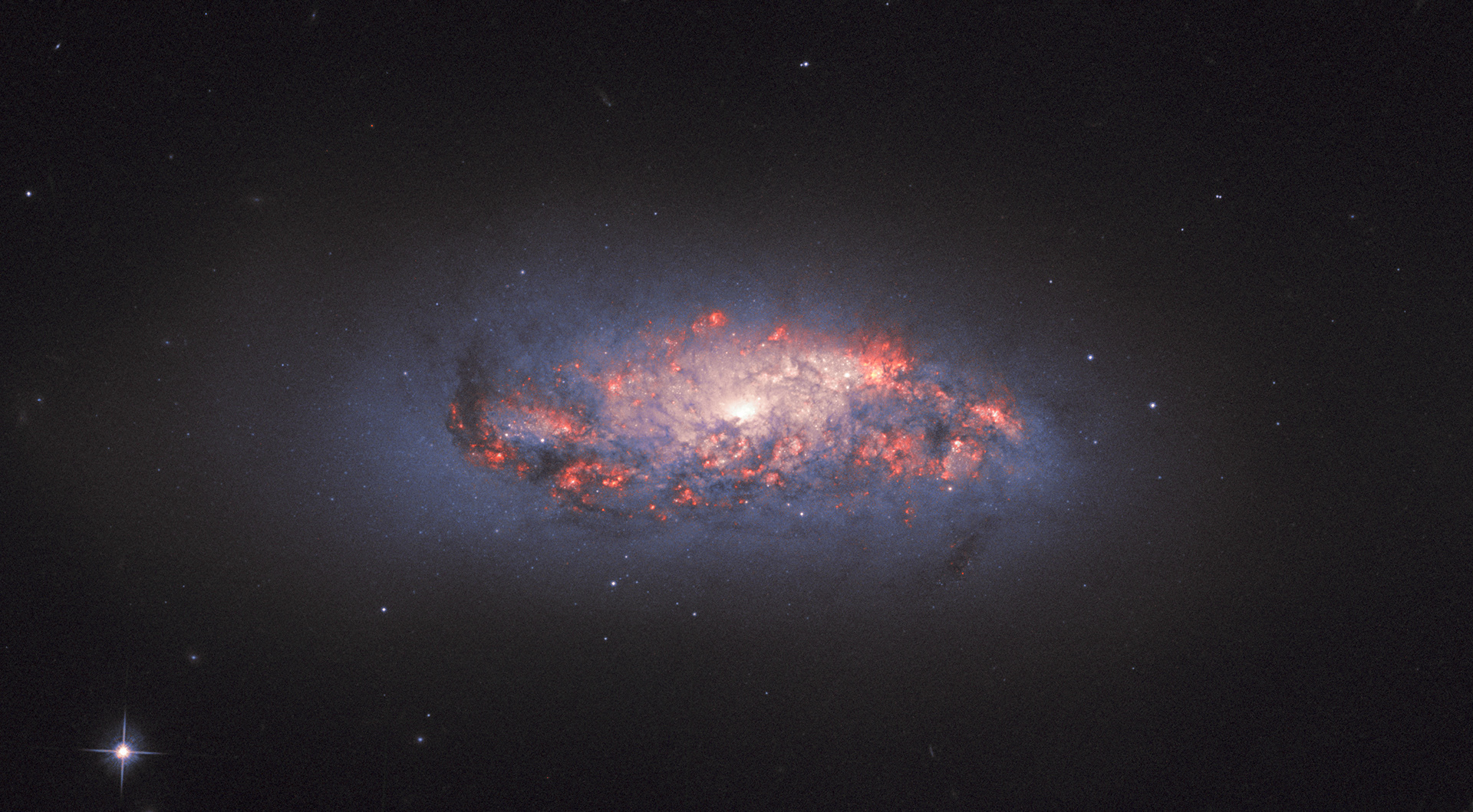

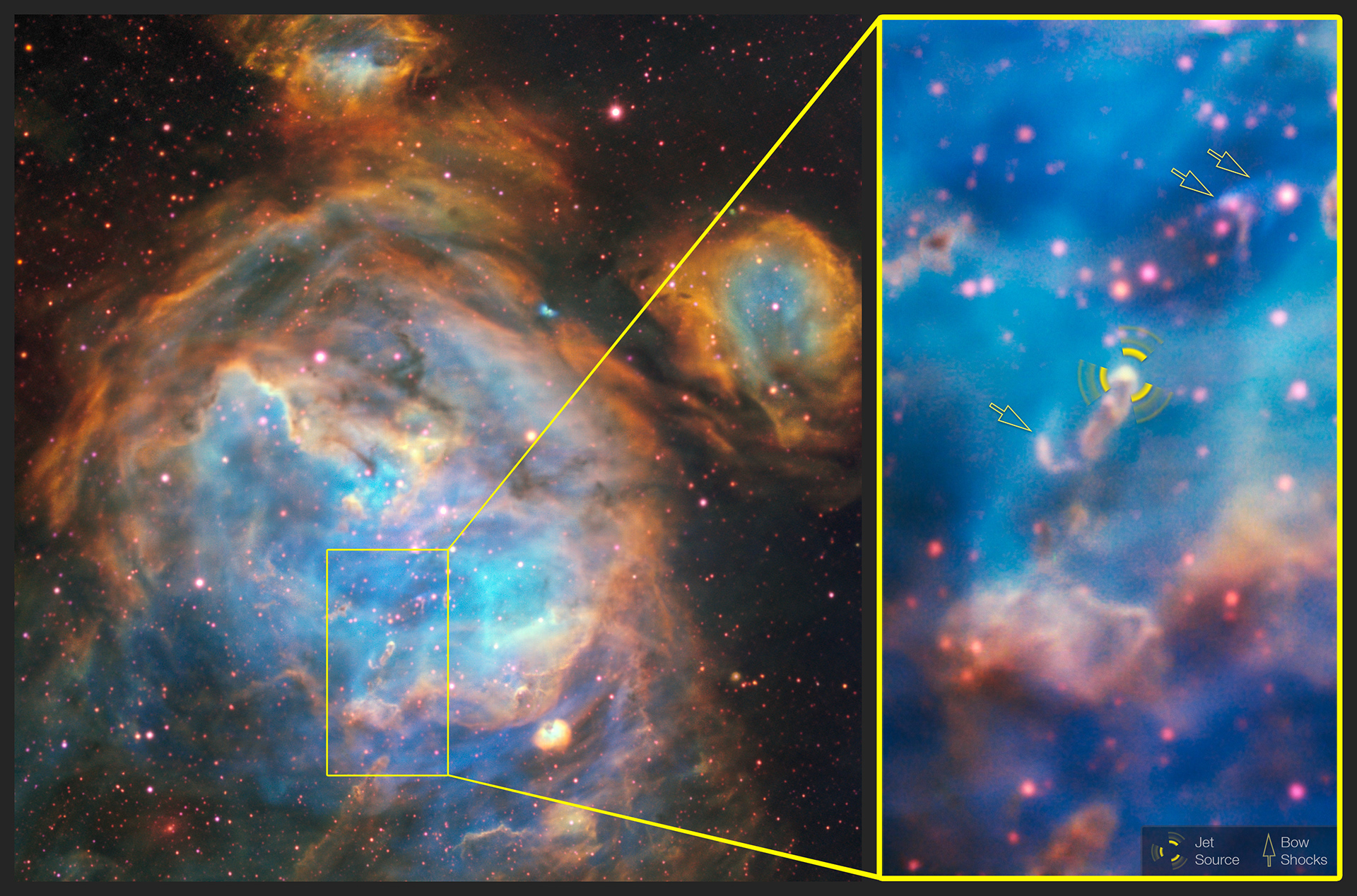
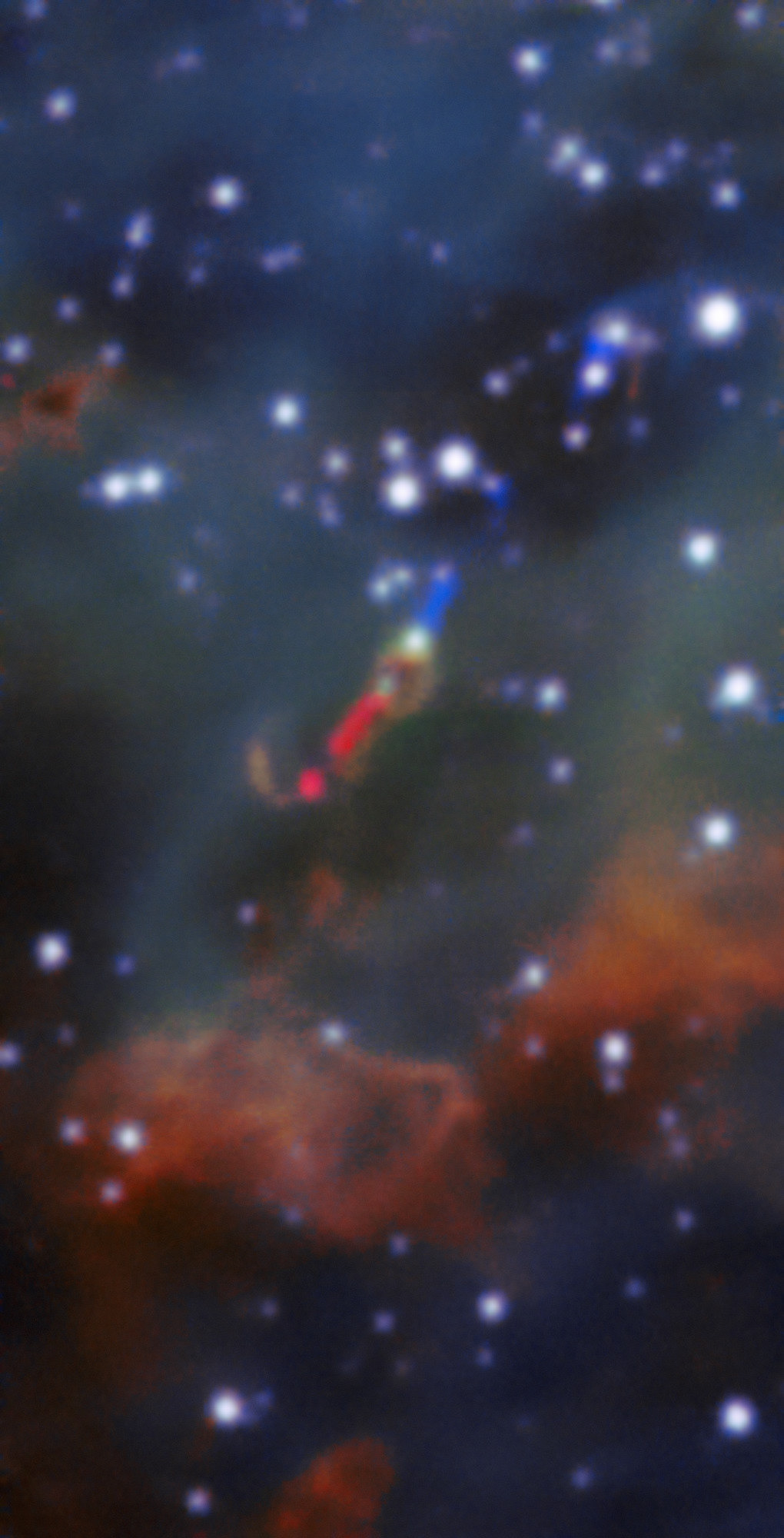
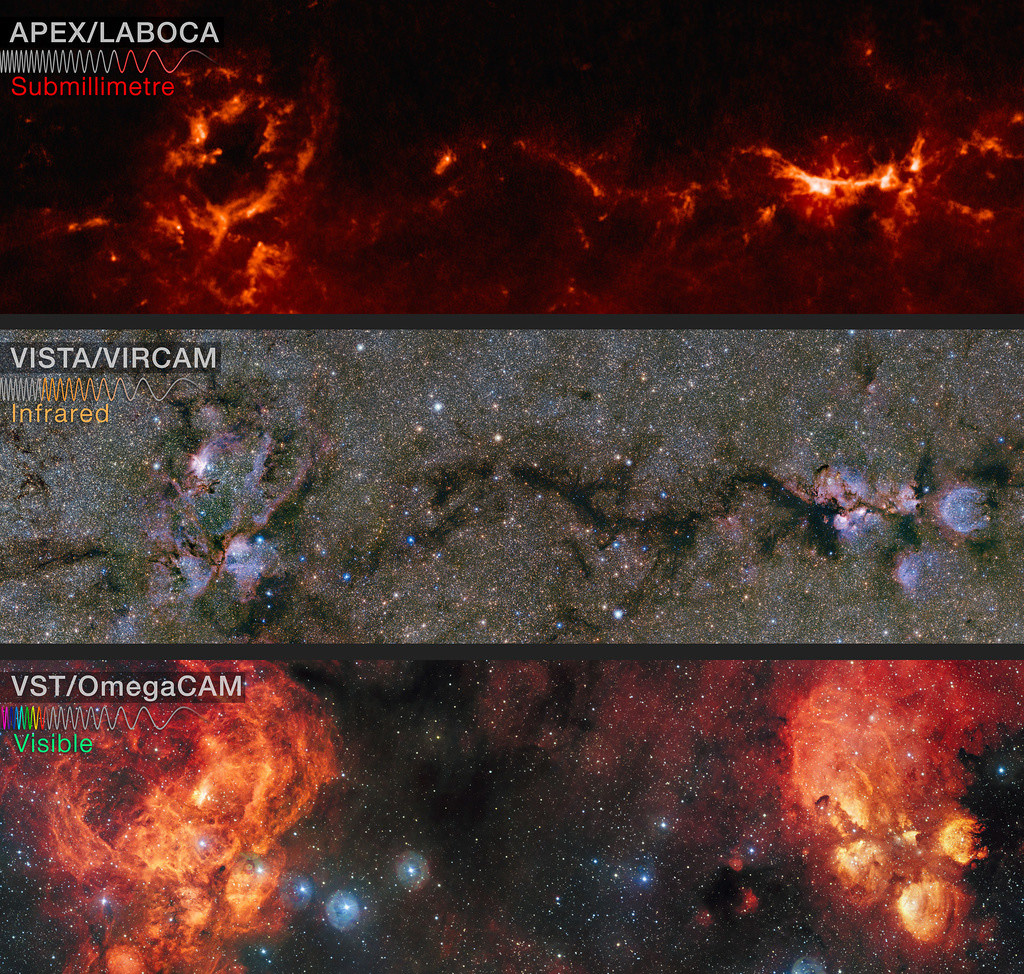
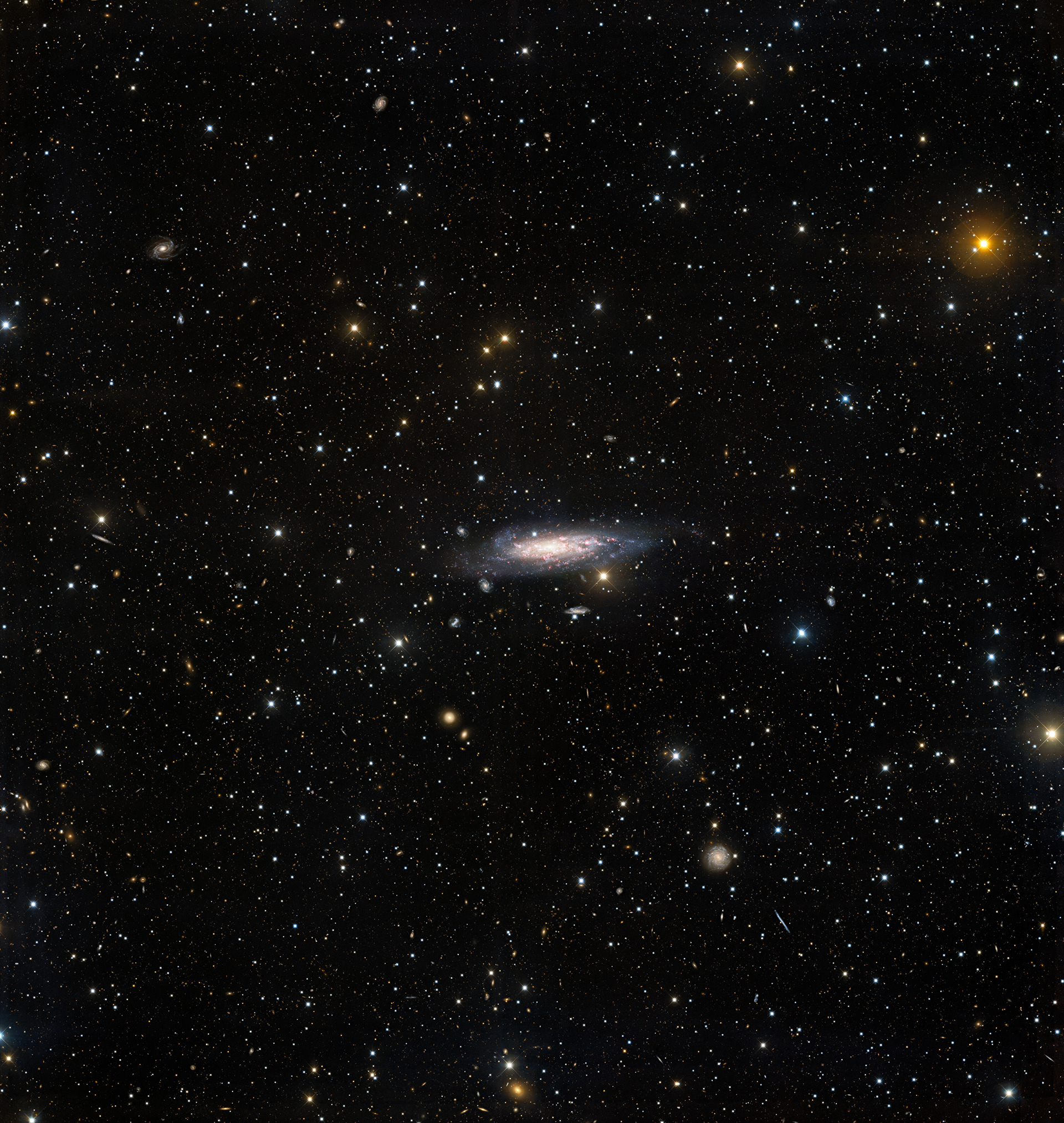
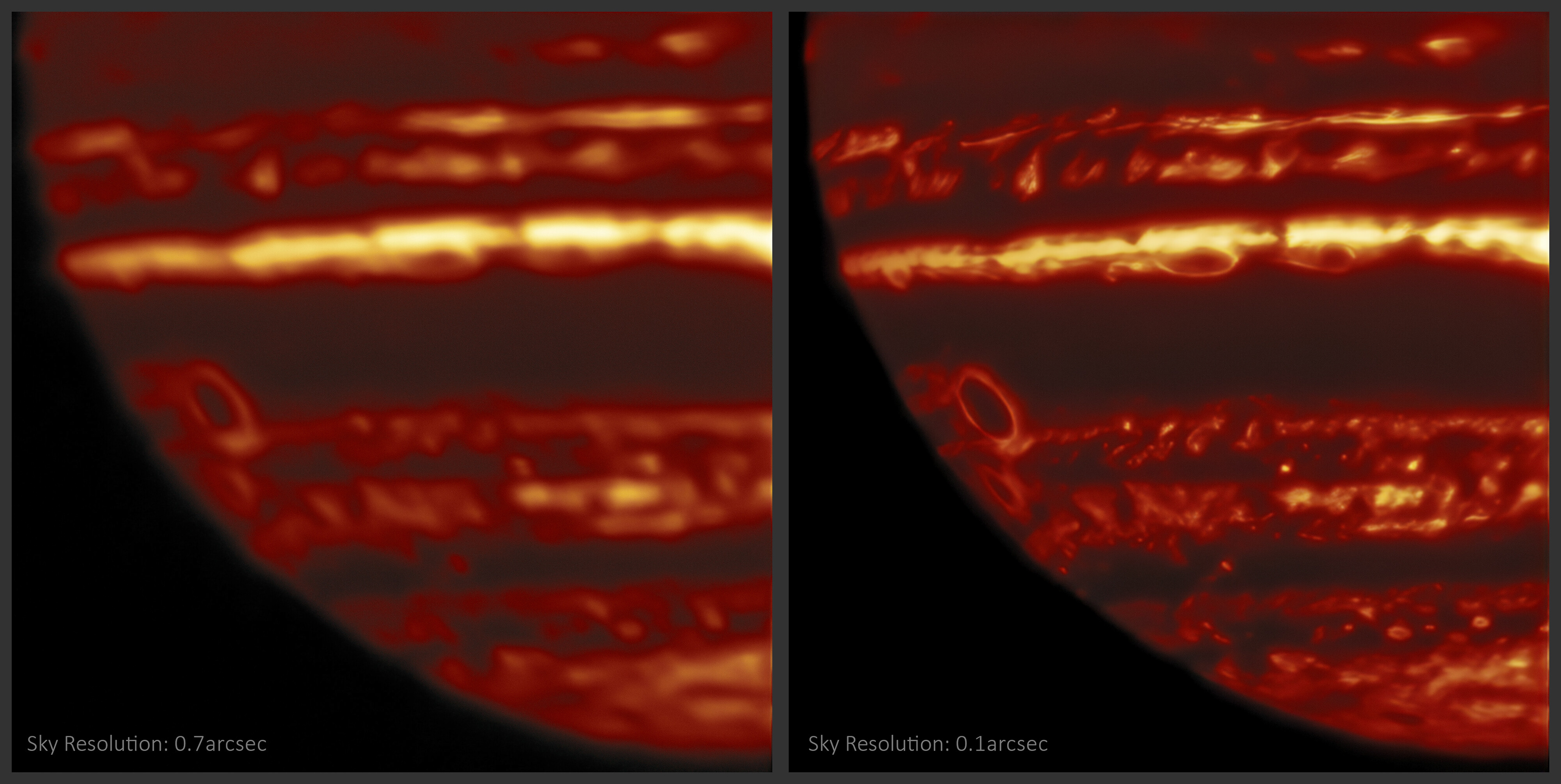
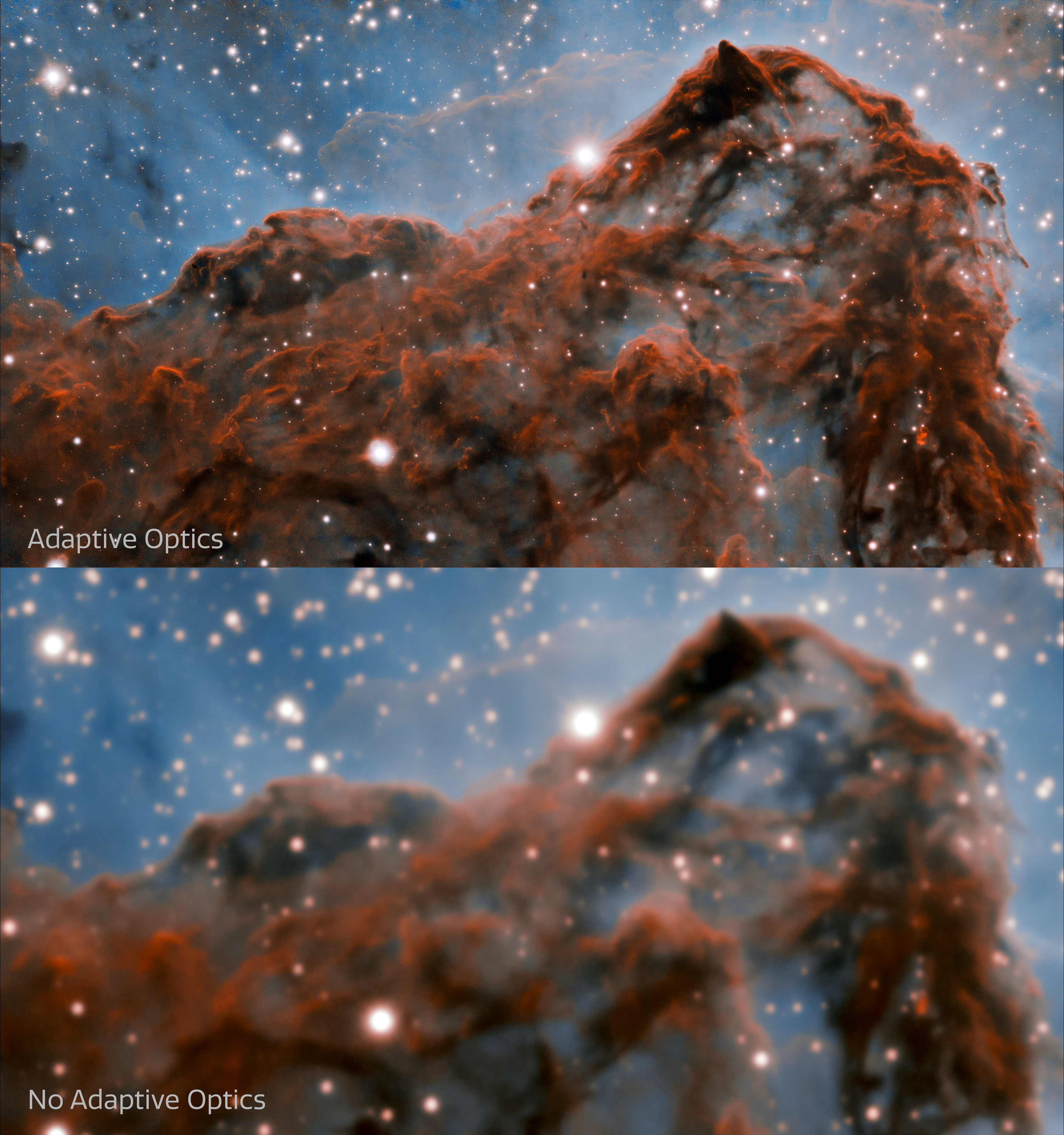

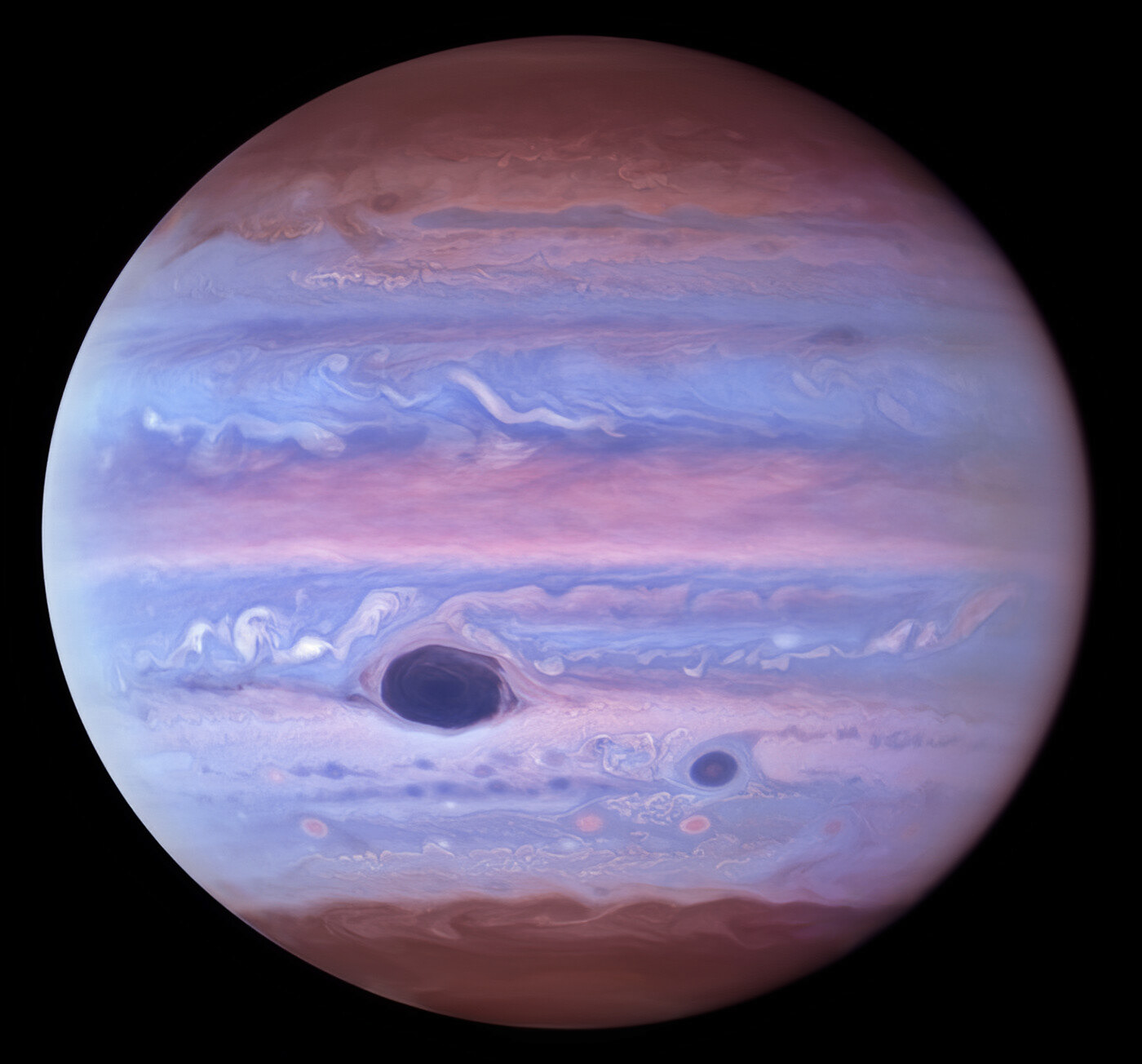

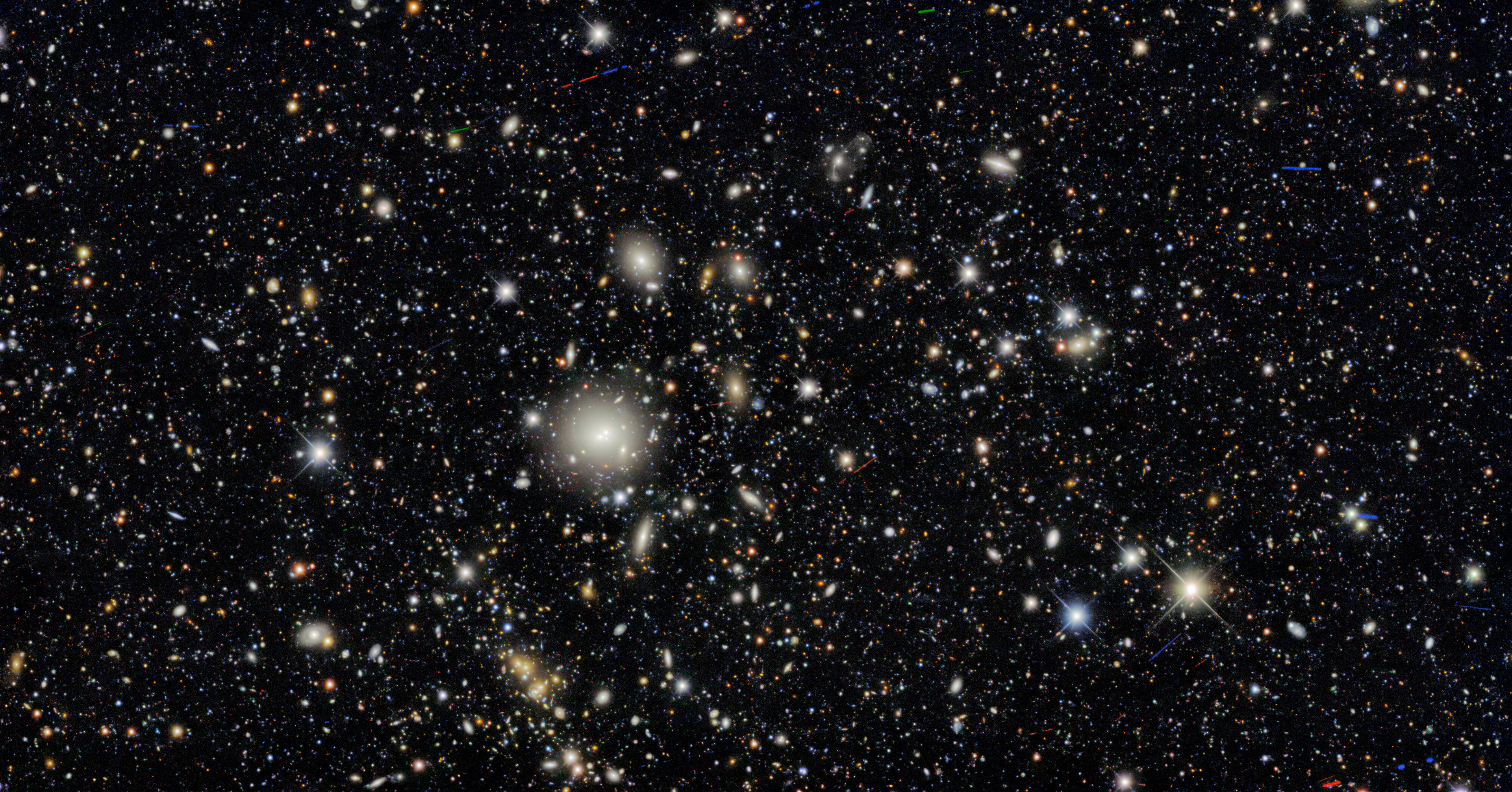





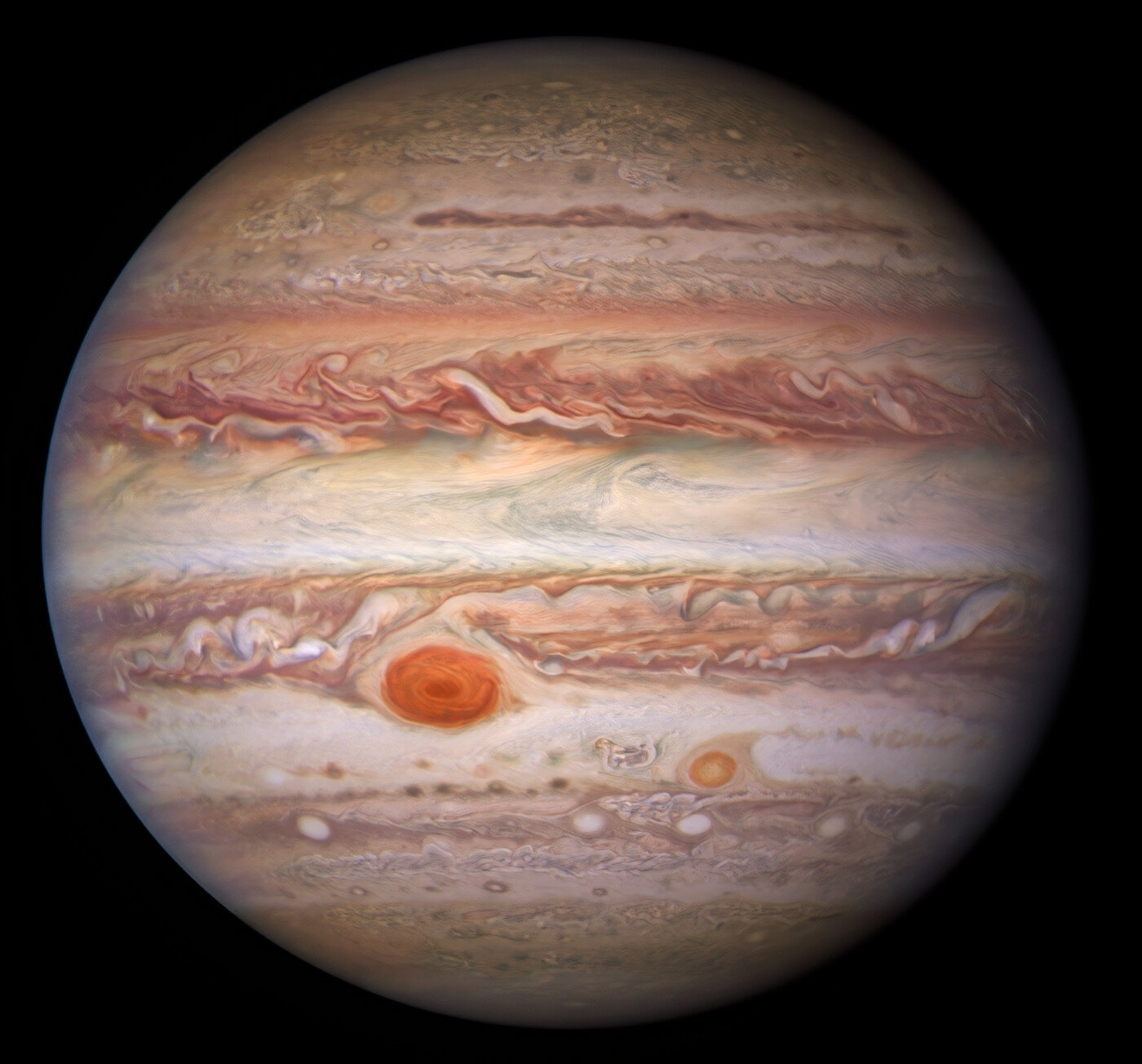
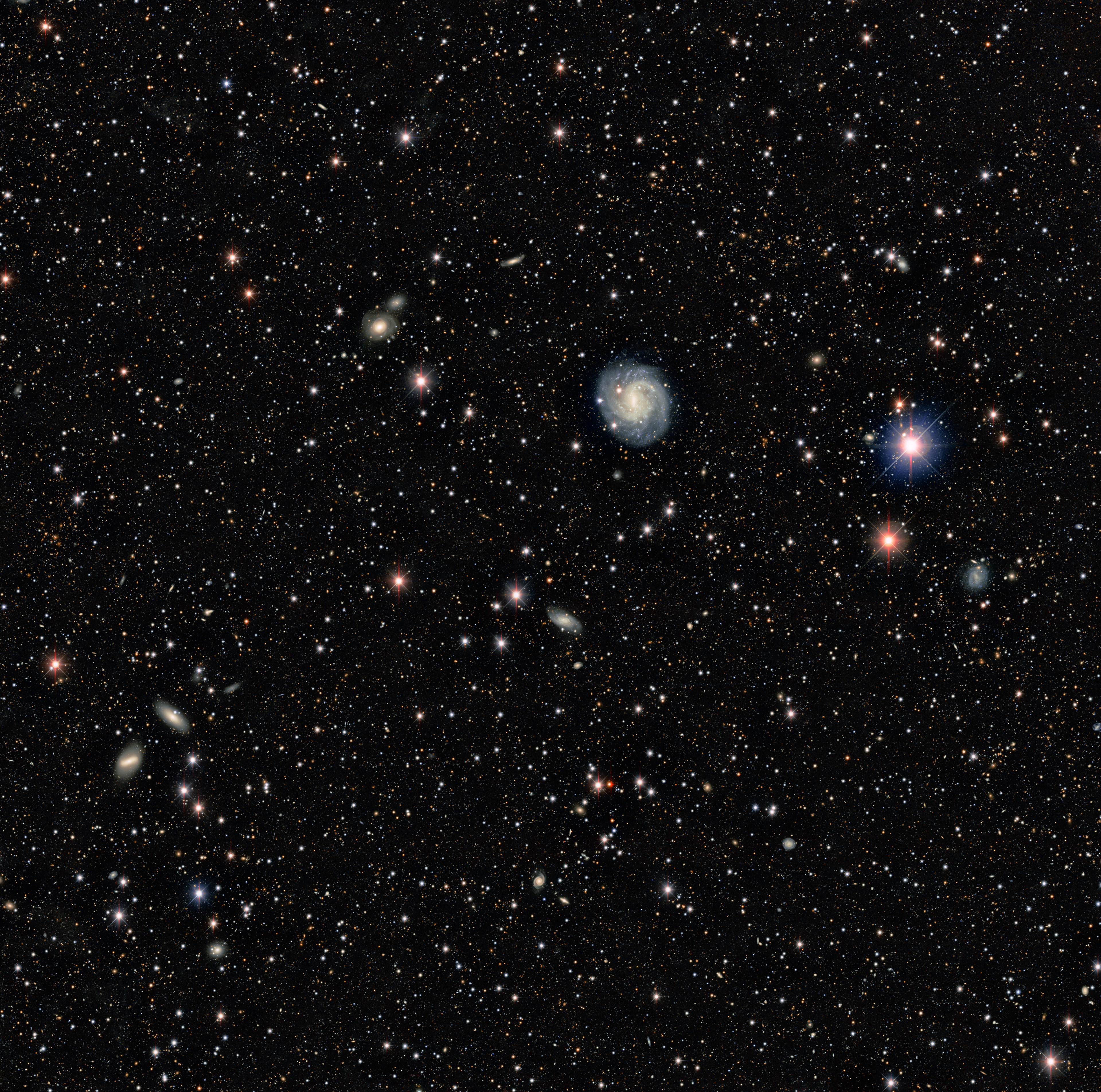
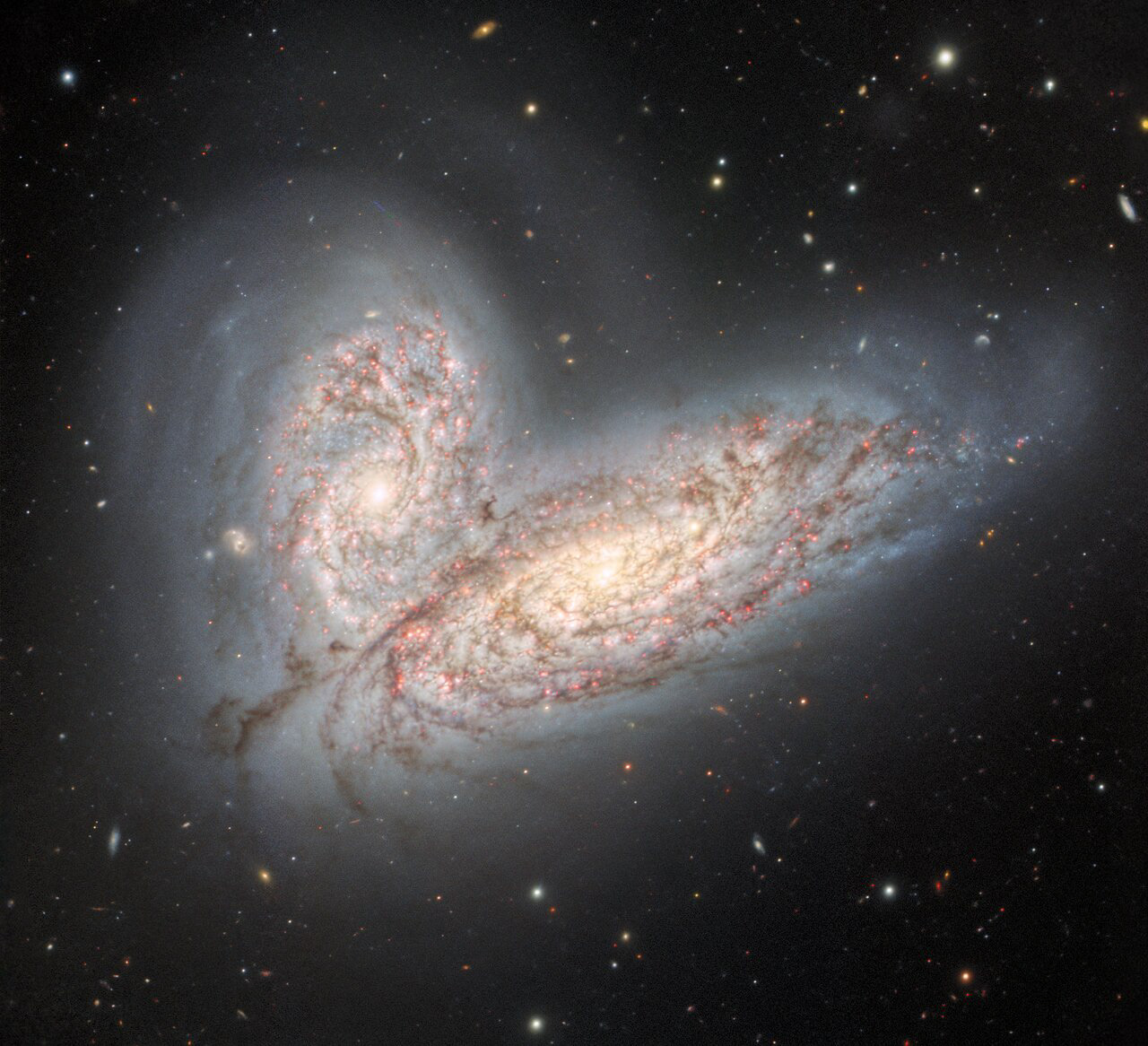
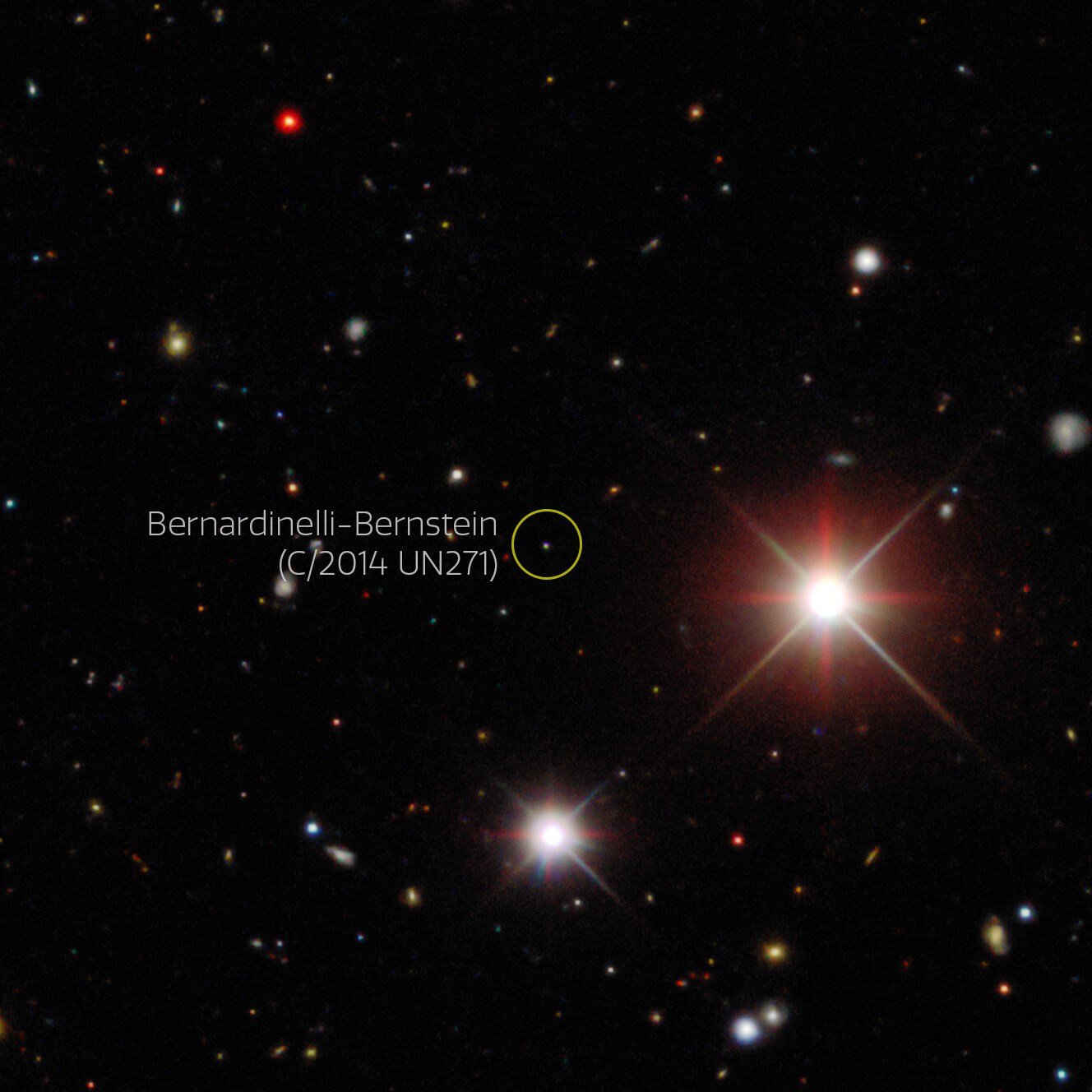
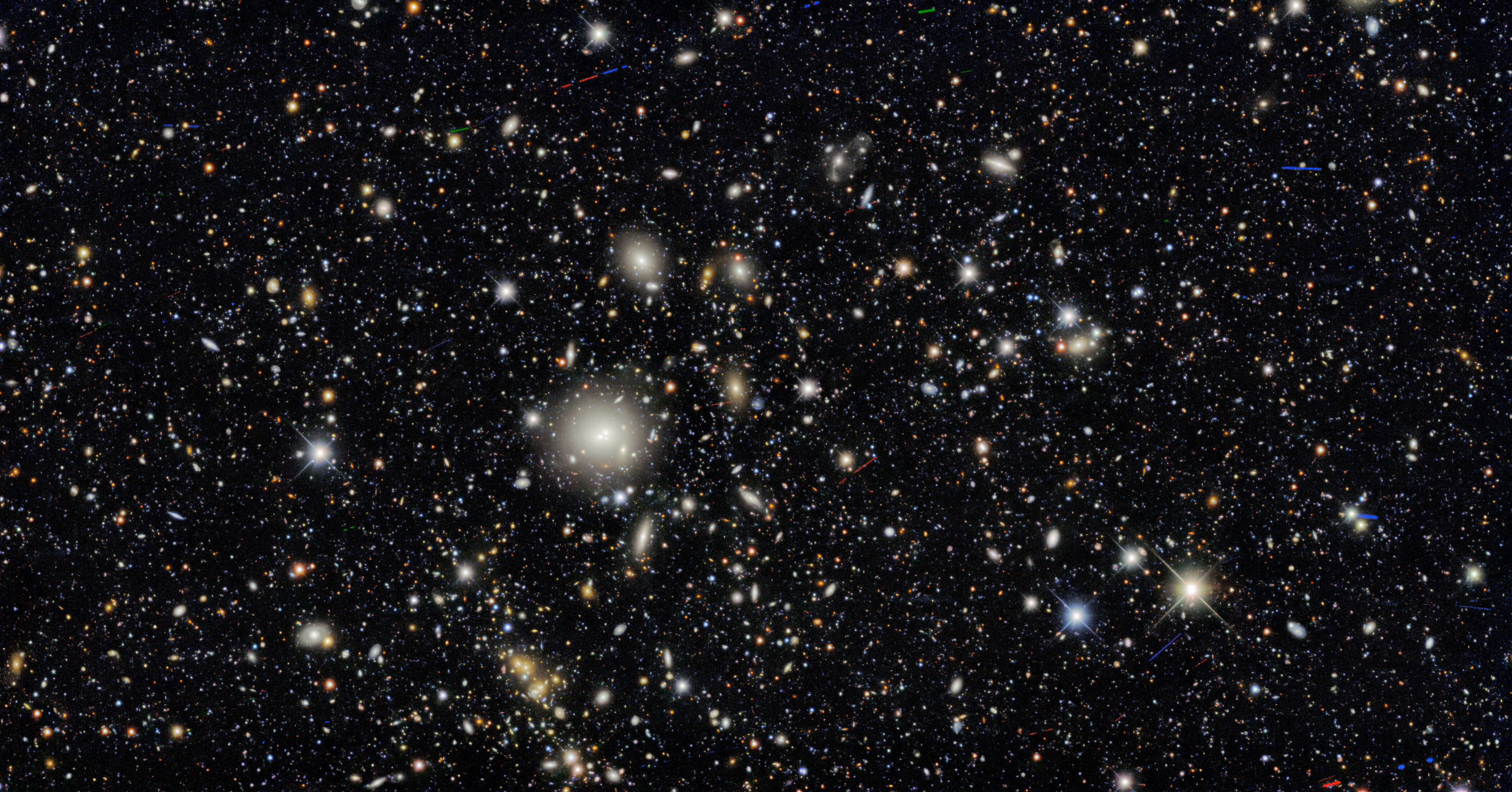
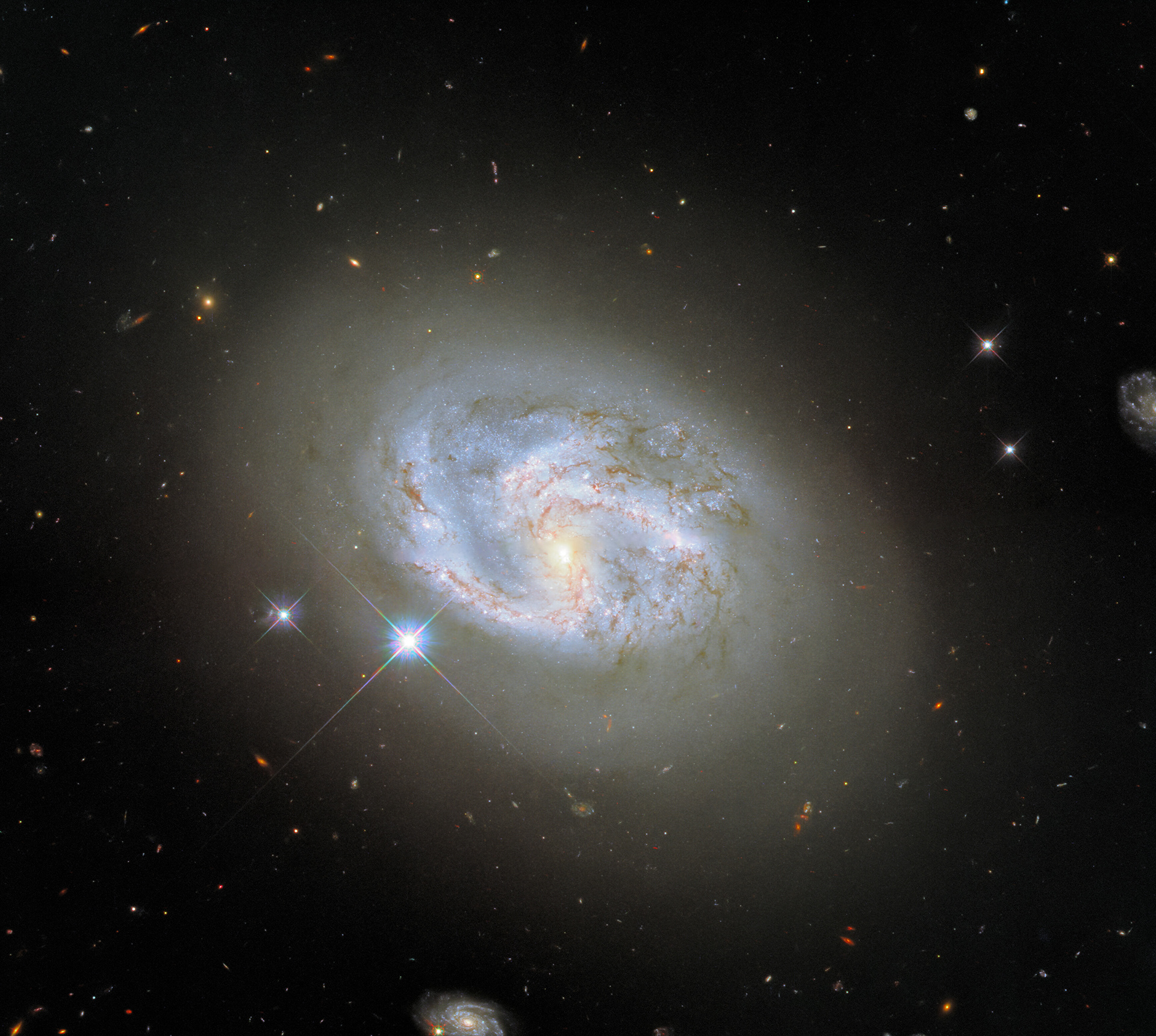
![This image from the NASA/ESA Hubble Space Telescope features the galaxy LEDA 48062 in the constellation Canes Venatici. LEDA 48062 is the faint, sparse, amorphous galaxy on the right side of this image, and it is accompanied by a more sharply defined neighbour on the left, the large, disc-like lenticular galaxy UGC 8603. A smattering of more distant galaxies also litter the background, and a handful of foreground stars are also visible throughout the image. Have you ever wondered why the stars in Hubble images are surrounded by four sharp points? These are called diffraction spikes, and are created when starlight diffracts — or spreads around — the support structures inside reflecting telescopes like Hubble. The four spikes are due to the four thin vanes supporting Hubble’s secondary mirror and are only noticeable for bright objects like stars where a lot of light is concentrated on one spot. Darker, more spread-out objects like the galaxies LEDA 48062 and UGC 8603 do not possess visible diffraction spikes. Hubble recently spent some time with our galactic neighbours. LEDA 48062 is only around 30 million light-years from the Milky Way, and was therefore included in the observing campaign Every Known Nearby Galaxy. The aim of this campaign was to observe precisely that: every known galaxy within 10 megaparsecs (around 33 million light-years) of the Milky Way. By getting to know our galactic neighbours, astronomers can determine what types of stars reside in various galaxies and also map out the local structure of the Universe. [Image description: A faint, scattered collection of cool stars in the form of an irregular galaxy lies right of centre. A disc-shaped galaxy viewed nearly edge-on lies to the left, surrounded by a wide glow. Several smaller galaxies in various orientations cluster around the two. The background is black and mostly empty.] Credit: ESA/Hubble & NASA, R. Tully](https://cdn.myportfolio.com/e6b26236-639b-4064-900c-5a5469a04617/bd9b4629-2838-45b9-8889-5d6bdac22bd2_rw_1920.jpg?h=7908d425f415a092206ce6884e1ca1e7)

![Here, the Webb Picture of the Month of merging galaxies IC 1623 A and B is juxtaposed with a new image from the NASA/ESA Hubble Space Telescope. In the Webb MIRI image, the bright core, heated gas and dust, and young star forming regions are all visible. The Hubble and Webb NIRCAM images show the galaxies distorted spiral arms, while MIRI reveals the faint ghostly glow of interstellar dust. [Image description: The image consists of three panels, each depicting the two merging galaxies on a dark background. The left panel is labelled “Optical Hubble/WFC3 & ACS”, the middle “Near-infrared Webb/NIRCam” and the right “Mid-infrared Webb/MIRI”. In the MIRI image, only the bright core, heated gas and bubbles of star formation are visible. The other two images also show the galaxies’ spiral arms.] Credit: ESA/Webb, NASA & CSA, L. Armus & A. Evans Acknowledgement: R. Colombari](https://cdn.myportfolio.com/e6b26236-639b-4064-900c-5a5469a04617/4e6f04dd-da8c-431e-b7ca-889b04e80c69_rw_1920.jpg?h=8b6a37e963e99b23645f3c8b36ba65fd)
![The quasar SDSS J165202.64+172852.3 is highlighted in an image from the NASA/ESA Hubble Space Telescope in visible and near-infrared on the left. The images in the centre and on the right present new observations from the NASA/ESA/CSA James Webb Space Telescope in multiple wavelengths to demonstrate the distribution of gas around the object. The quasar is an “extremely red” quasar that exists in the very early Universe, 11.5 billion years ago. The image in the centre is composed of four narrow-band images made from the Webb NIRSpec instrument’s integral-field spectroscopy mode. All the four narrow-band images show extremely red-shifted emissions from doubly ionised oxygen which has an emission line around 500nm in visible light; before it was shifted to infrared light. The panels on the right present the four narrow-band images separately. Each colour illustrates the relative speed of ionised oxygen gas across the cluster. The redder the colour the faster gas is moving away from our line of sight with the quasar, while the bluer the colour the faster it's moving away from the quasar toward us. The colour green indicates that the gas is steady in our line of sight in comparison to the quasar. The blue and yellow panels reveal the bi-conical outflow from the quasar, with the orange panel showing the gas moving faster from us, which is extended towards the lower right, as well as highlighting a companion galaxy on the upper left of the frame. [Image Description: This visual shows three images. On the left is a wide field view of multiple galaxies in the field. In the centre is an image that is composed of four narrow-band images together, which appears as a burred rainbow blotch of colours. On the right are the four individual narrow-band images of the quasar in red, orange, teal, and blue.] Credit: ESA/Webb, NASA & CSA, D. Wylezalek, A. Vayner & the Q3D Team, N. Zakamska](https://cdn.myportfolio.com/e6b26236-639b-4064-900c-5a5469a04617/4ed4c614-e40e-4890-863b-9d24e3445ecb_rw_1920.jpg?h=a7b47a338c92bc25964678509c7e182d)
![The quasar SDSS J165202.64+172852.3 is depicted here by the NASA/ESA/CSA James Webb Space Telescope to demonstrate the distribution of gas around the object. The quasar is an “extremely red” quasar that exists in the very early Universe, 11.5 billion years ago. This image is composed of four narrow-band images made from the Webb NIRSpec instrument’s integral-field spectroscopy mode. Each colour illustrates the relative speed of ionised oxygen gas across the cluster. The redder the colour the faster gas is moving away from our line of sight with the quasar, while the bluer the colour the faster it's moving away from the quasar toward us. The colour green indicates that the gas is steady in our line of light in comparison to the quasar. [Image Description: This visual shows a quasar composed of four narrow-band images together, which appears as a burred rainbow blotch of colours.] Credit: ESA/Webb, NASA & CSA, D. Wylezalek, A. Vayner & the Q3D Team](https://cdn.myportfolio.com/e6b26236-639b-4064-900c-5a5469a04617/282e2049-42e1-41ac-81e6-b2d9e28d9b73_rw_1920.jpg?h=0f19e45bab98566b845a4fae06ca7e8b)
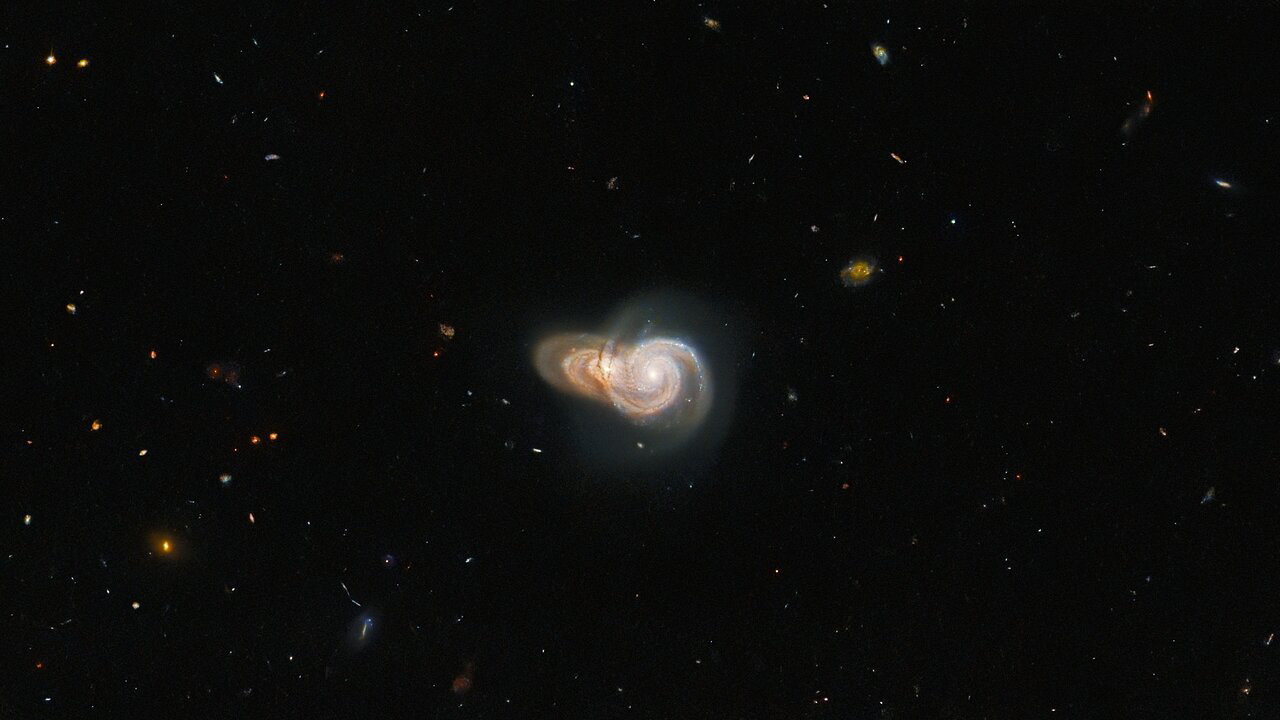
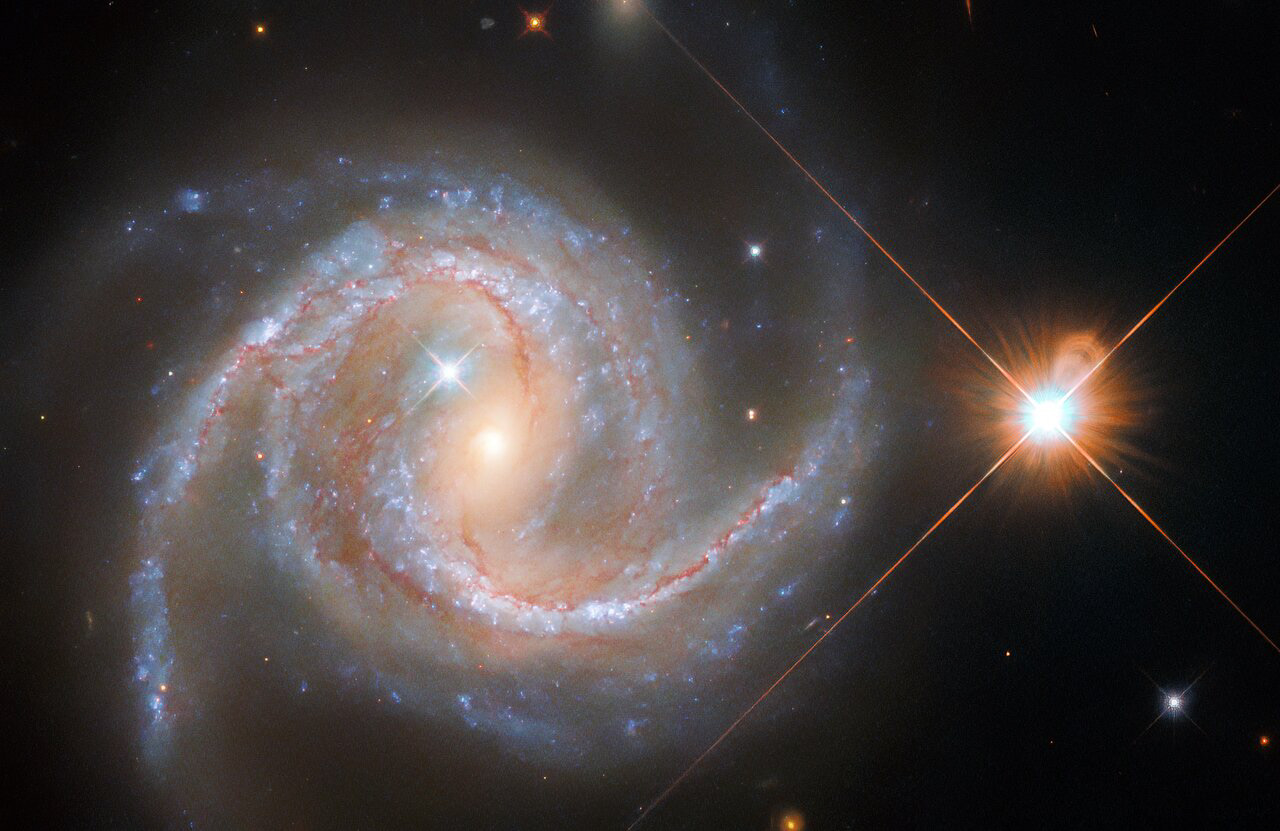
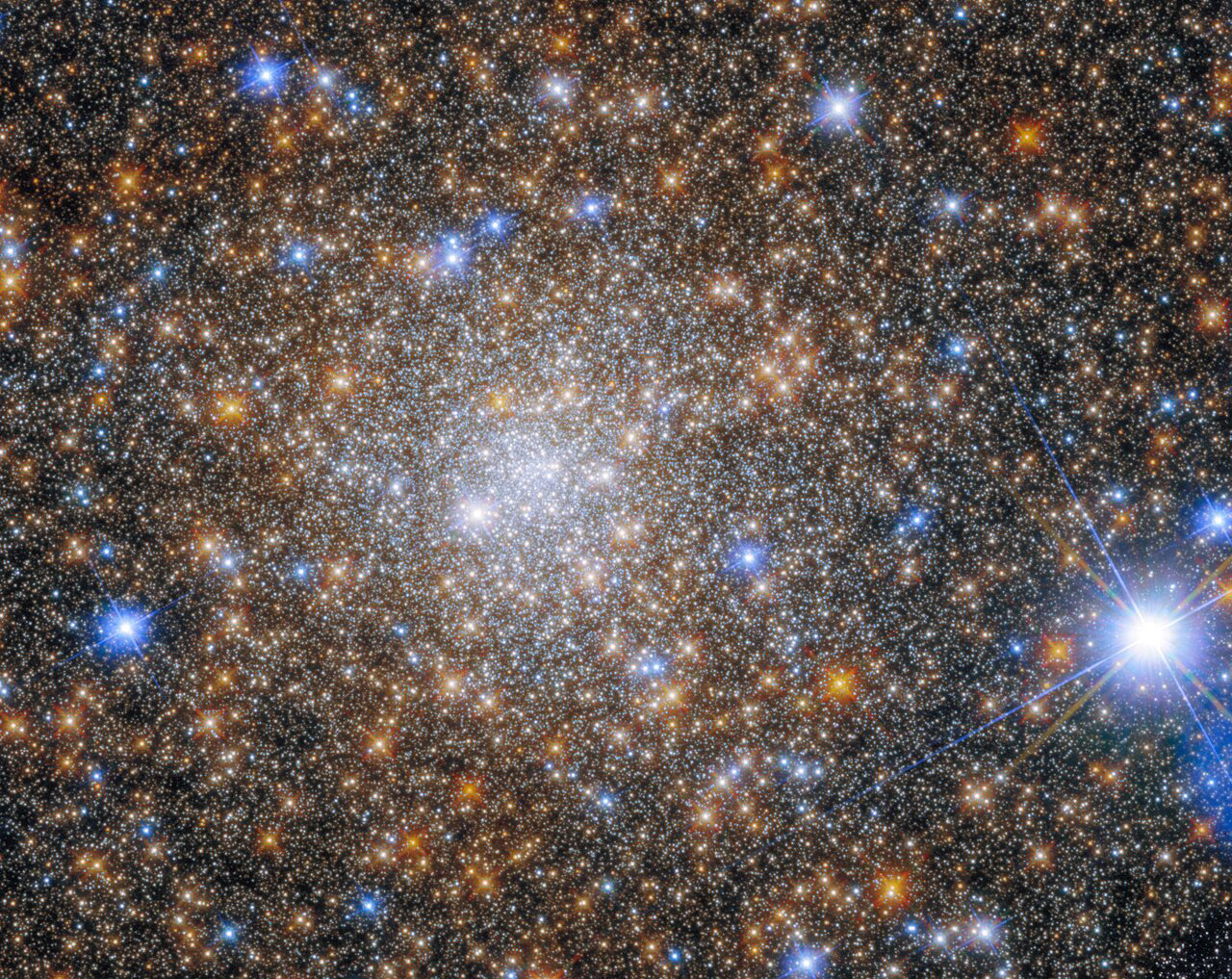
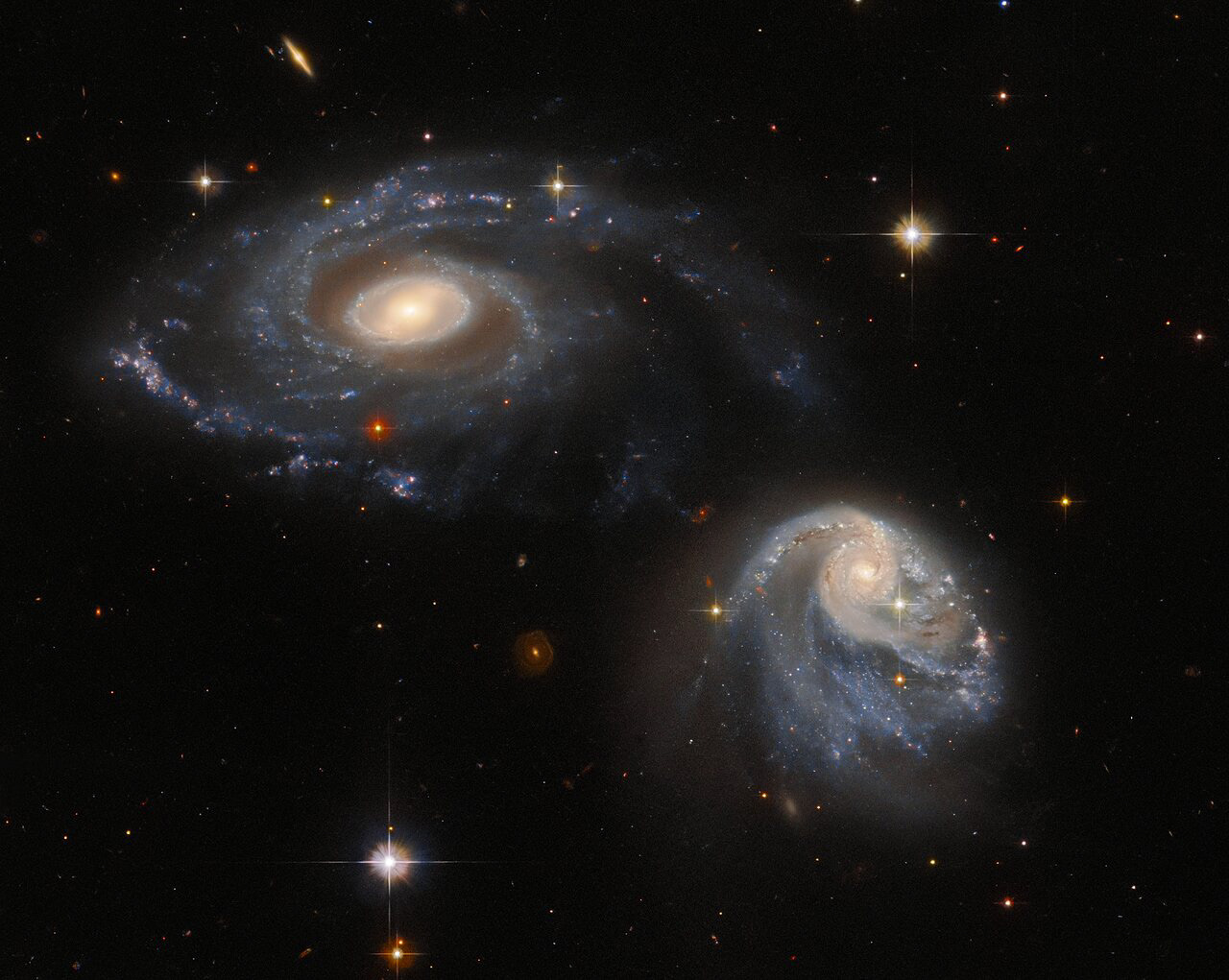
![This image from the NASA/ESA Hubble Space Telescope shows two of the galaxies in the galactic triplet Arp 248 — also known as Wild's Triplet — which lies around 200 million light-years from Earth in the constellation Virgo. The two large spiral galaxies visible in this image — which flank a smaller, unrelated background spiral galaxy — seem to be connected by a luminous bridge. This elongated stream of stars and interstellar dust is known as a tidal tail, and it was formed by the mutual gravitational attraction of the two foreground galaxies. This observation comes from a project which delves into two rogues’ galleries of weird and wonderful galaxies: A Catalogue Of Southern Peculiar Galaxies And Associations, compiled by astronomers Halton Arp and Barry Madore, and the Atlas of Peculiar Galaxies, compiled by Halton Arp. Each collection contains a menagerie of spectacularly peculiar galaxies, including interacting galaxies such as Arp 248, as well as one- or three-armed spiral galaxies, galaxies with shell-like structures, and a variety of other space oddities. Hubble used its Advanced Camera for Surveys to scour this menagerie of eccentric galaxies in search of promising candidates for future observations with the NASA/ESA/CSA James Webb Space Telescope, the Atacama Large Millimeter/submillimeter Array, and Hubble itself. With such a wealth of astronomical objects to study in the night sky, projects such as this, which guide future observations, are a valuable investment of observing time. As well as the scientific merits of observing these weird and wonderful galaxies, they were also — very unusually — selected as Hubble targets because of their visual appeal to the general public! [Image description: Two spiral galaxies are viewed almost face-on; they are a mix of pale blue and yellow in colour, crossed by strands of dark red dust. They lie in the upper-left and lower-right corners. A long, faint streak of pale blue joins them, extending from an arm of one galaxy and crossing the field diagonally. A small spiral galaxy, orange in colour, is visible edge-on, left of the lower galaxy.] Links Video of Hubble Inspects A Pair of Space Oddities Credit: ESA/Hubble & NASA, Dark Energy Survey/DOE/FNAL/DECam/CTIO/NOIRLab/NSF/AURA, J. Dalcanton](https://cdn.myportfolio.com/e6b26236-639b-4064-900c-5a5469a04617/746f77dc-d9b1-42a7-a612-5bf8d588ff5e_rw_1920.jpg?h=178f7fed81780eda7c9f235af1c77abb)
![The galaxy merger Arp-Madore 417-391 steals the spotlight in this image from the NASA/ESA Hubble Space Telescope. The Arp-Madore catalogue is a collection of particularly peculiar galaxies spread throughout the southern sky, and includes a collection of subtly interacting galaxies as well as more spectacular colliding galaxies. Arp-Madore 417-391, which lies around 670 million light-years away in the constellation Eridanus in the southern celestial hemisphere, is one such galactic collision. The two galaxies have been distorted by gravity and twisted into a colossal ring, leaving the cores of the two galaxies nestled side by side. Hubble used its Advanced Camera for Surveys (ACS) to capture this scene — the instrument is optimised to hunt for galaxies and galaxy clusters in the ancient Universe. Hubble’s ACS has been contributing to scientific discovery for 20 years, and throughout its lifetime it has been involved in everything from mapping the distribution of dark matter to studying the evolution of galaxy clusters. This image comes from a selection of Hubble observations designed to create a list of intriguing targets for follow-up observations with the NASA/ESA/CSA James Webb Space Telescope, as well as other ground-based telescopes. Astronomers chose a list of previously unobserved galaxies for Hubble to inspect between other scheduled observations. Over time, this lets astronomers build up a menagerie of interesting galaxies while using Hubble’s limited observing time as fully as possible. [Image description: Two galaxies right of centre form a ring shape. The ring is narrow and blue, and the cores of the two galaxies form a bulge on the ring’s side. A bright, orange star lies above the ring. Two smaller spiral galaxies appear left of centre, as well as a few stars. The background is black and speckled with very small stars and galaxies.] Links Video of Hubble Hunts an Unusual Galaxy Credit: ESA/Hubble & NASA, Dark Energy Survey/DOE/FNAL/DECam/CTIO/NOIRLab/NSF/AURA, J. Dalcanton](https://cdn.myportfolio.com/e6b26236-639b-4064-900c-5a5469a04617/a6246dc4-59bf-40e9-8895-6282ecc24f77_rw_1920.jpg?h=4e9158a3ff3ac3b06052f240d57755a6)
![A small portion of the Small Magellanic Cloud (SMC) is pictured in this image from the NASA/ESA Hubble Space Telescope. The SMC is a dwarf galaxy and one of the Milky Way’s nearest neighbours, lying only about 200 000 light-years from Earth. It makes a pair with the Large Magellanic Cloud, and both objects can be seen from the southern hemisphere, as well as from some northern latitudes. The Small Magellanic Cloud contains hundreds of millions of stars, but this image focuses on just a small fraction of them. These stars comprise the open cluster NGC 376, which has a total mass only about 3400 times that of the Sun. Open clusters, as the name suggests, are loosely bound and sparsely populated. This distinguishes open clusters from globular clusters, which are often so thronged with stars that they have a continuous blur of starlight at their centres. In the case of NGC 376, individual stars can be picked out clearly even in the most densely populated parts of this image. The data in this image come from two different astronomical investigations which relied on two of Hubble’s instruments: the Wide Field Camera 3 (WFC3) and the Advanced Camera for Surveys (ACS). The first investigation used the ACS to explore a handful of star clusters in the Small Magellanic Cloud and help astronomers explore topics including the abundance of low- and high-mass stars in different environments. The second investigation used both the WFC3 and ACS, and aimed to answer fundamental questions about the lives of stars and help astronomers understand precisely where, when, why and how stars form. [Image description: A large number of bright stars, each with a cross-shape extending from its centre. In the centre there is a dense collection of foreground stars. Five are orange and the rest are blue. The black background is filled with small stars — most of them, however, larger than a single point.] Links Video of Head in the Clouds Credit: ESA/Hubble & NASA, A. Nota, G. De Marchi](https://cdn.myportfolio.com/e6b26236-639b-4064-900c-5a5469a04617/2d46df12-13c8-4e99-87f5-58e8801eebe3_rw_1920.jpg?h=15fa2024576f78f9225a4ab10f1364ad)
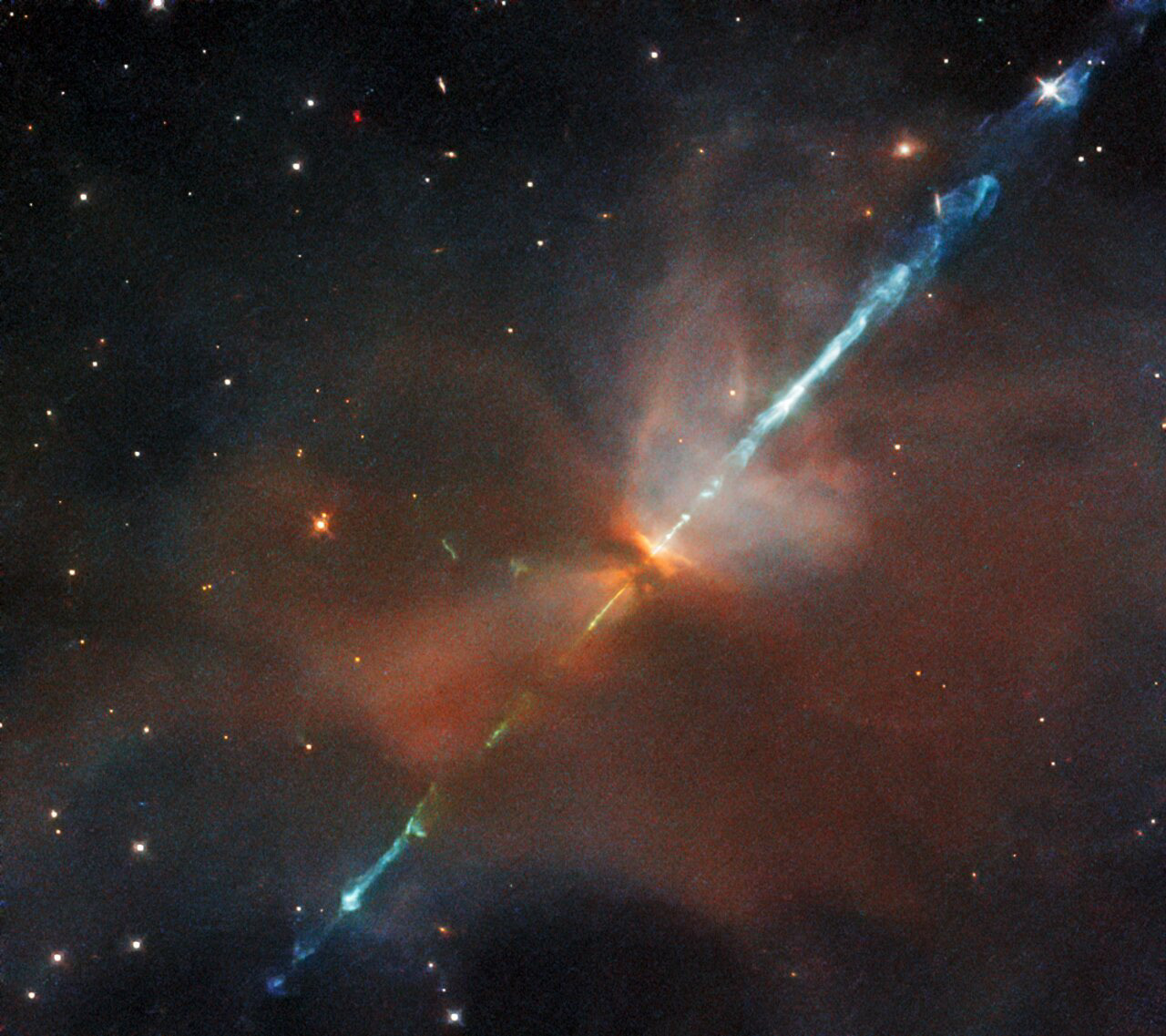



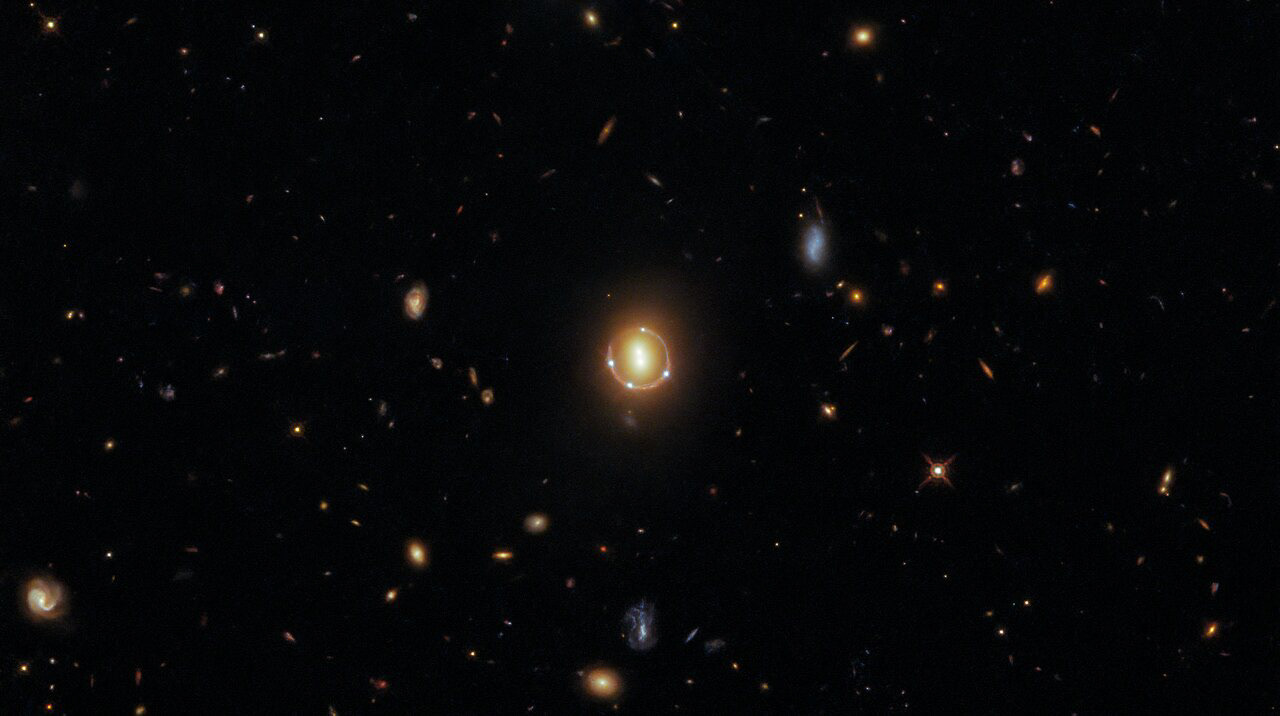
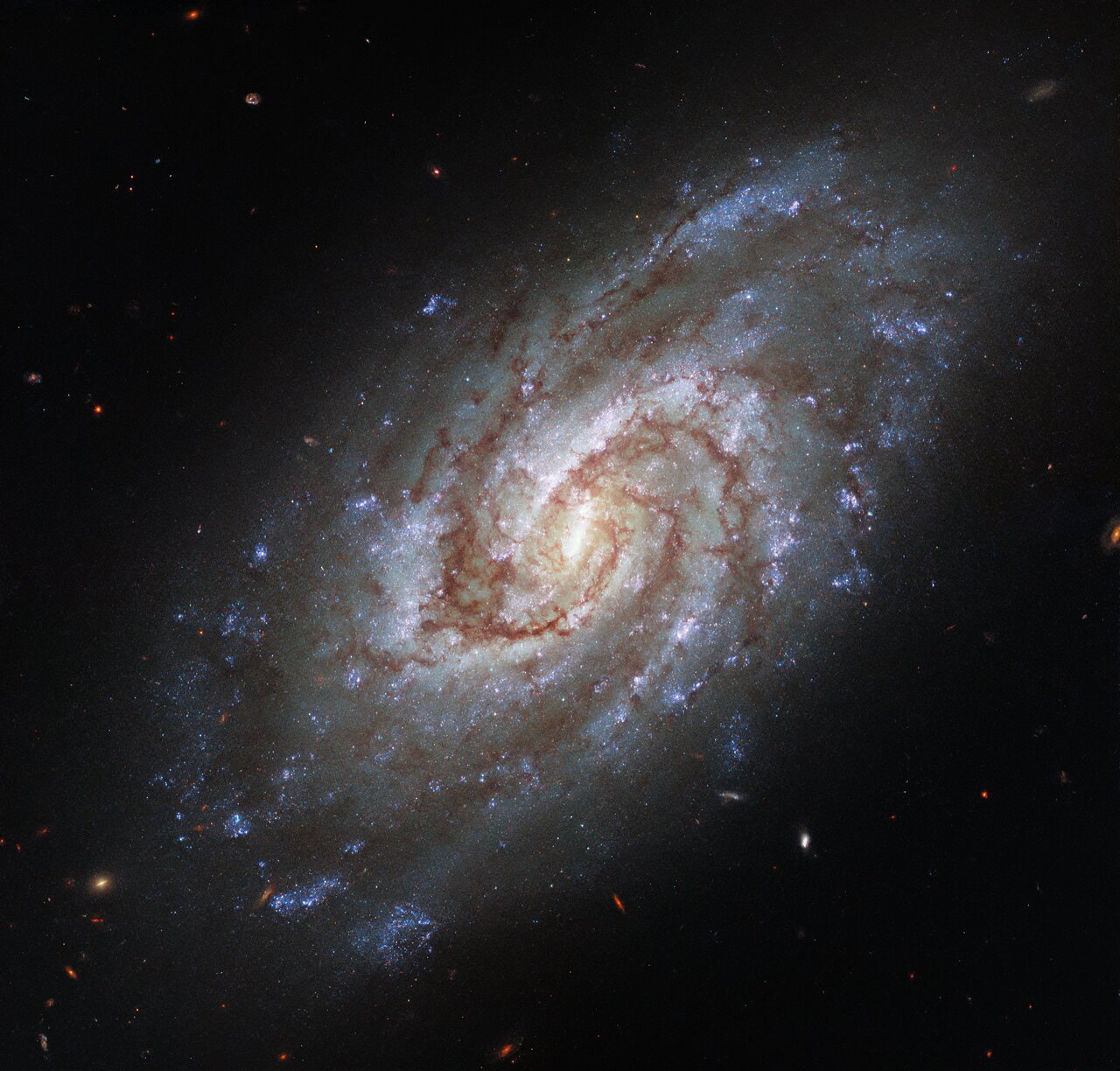
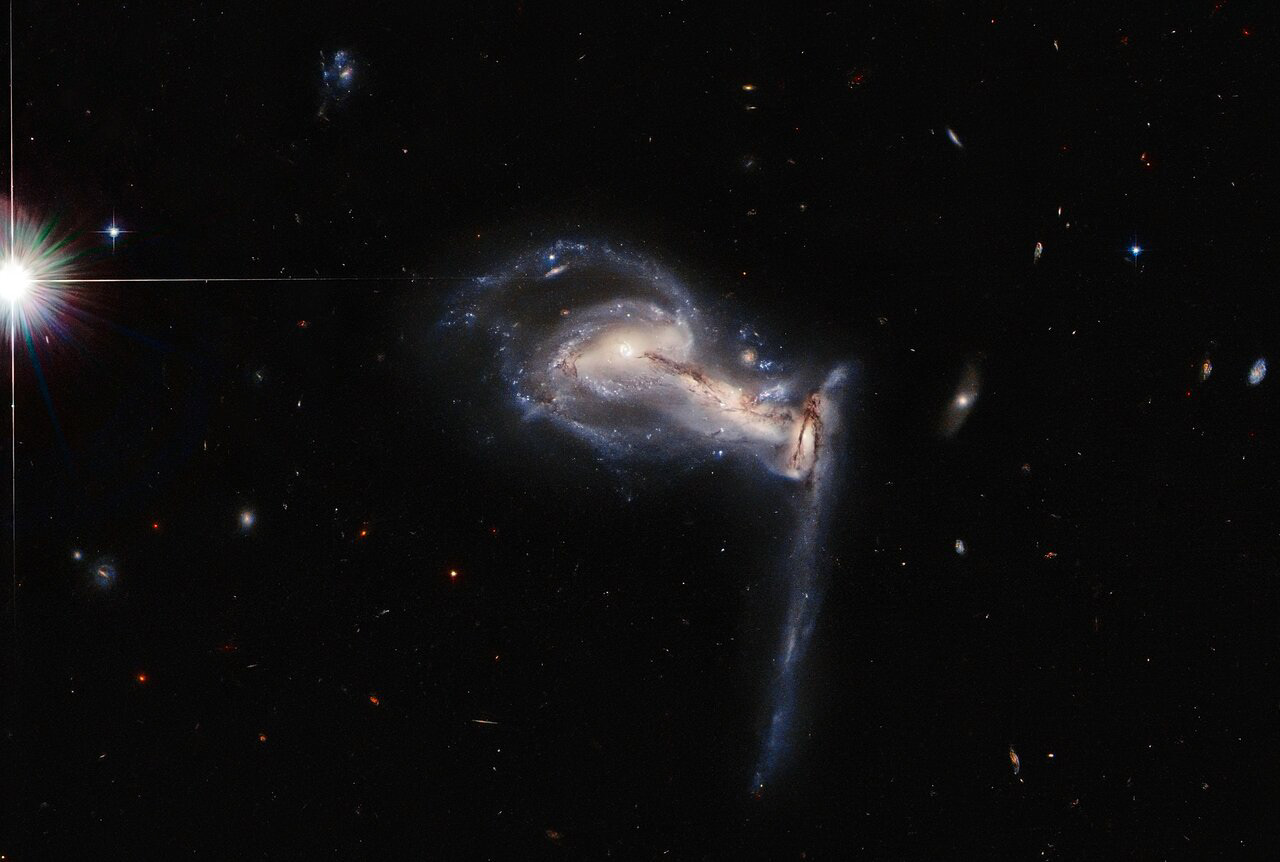
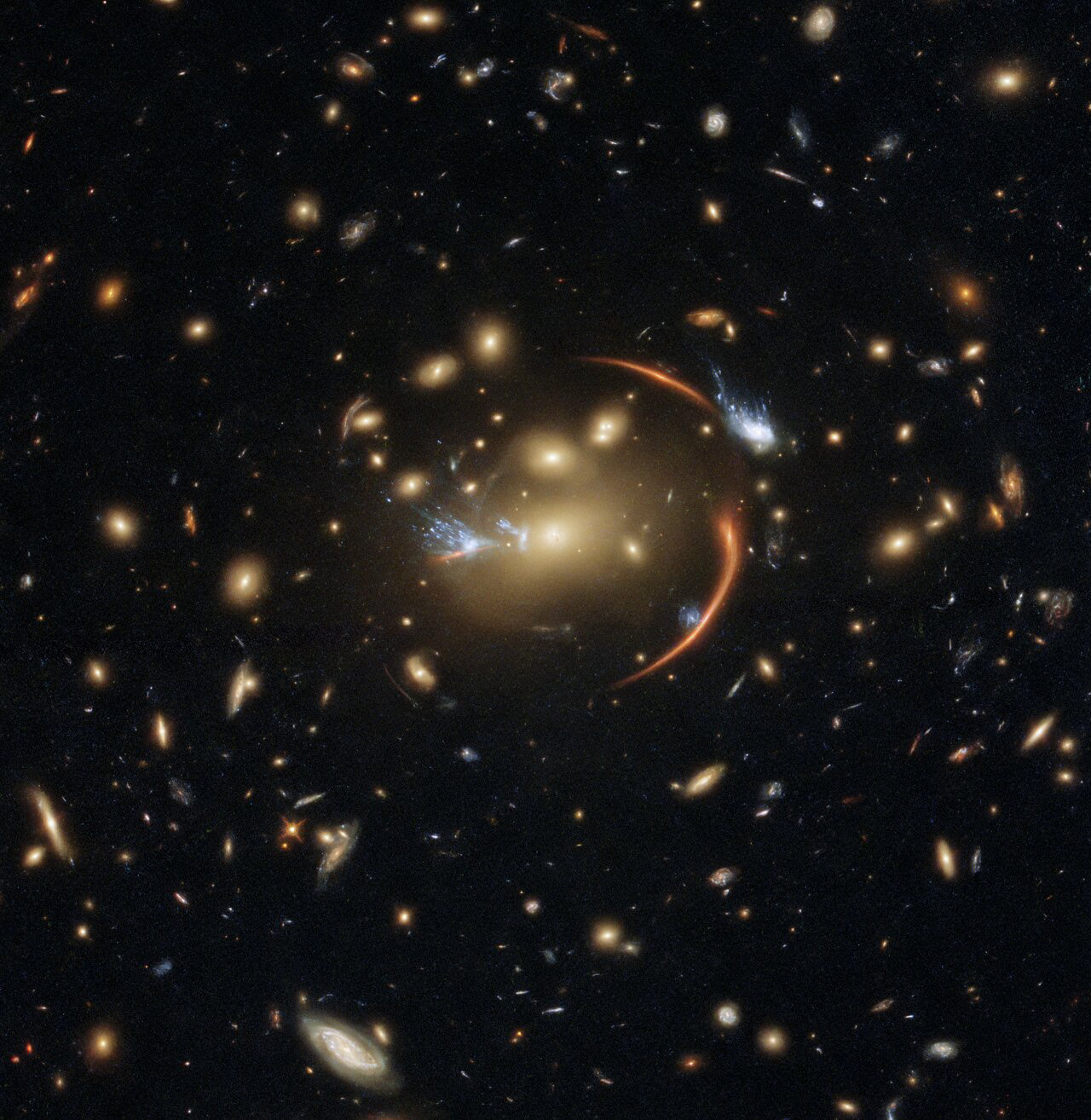
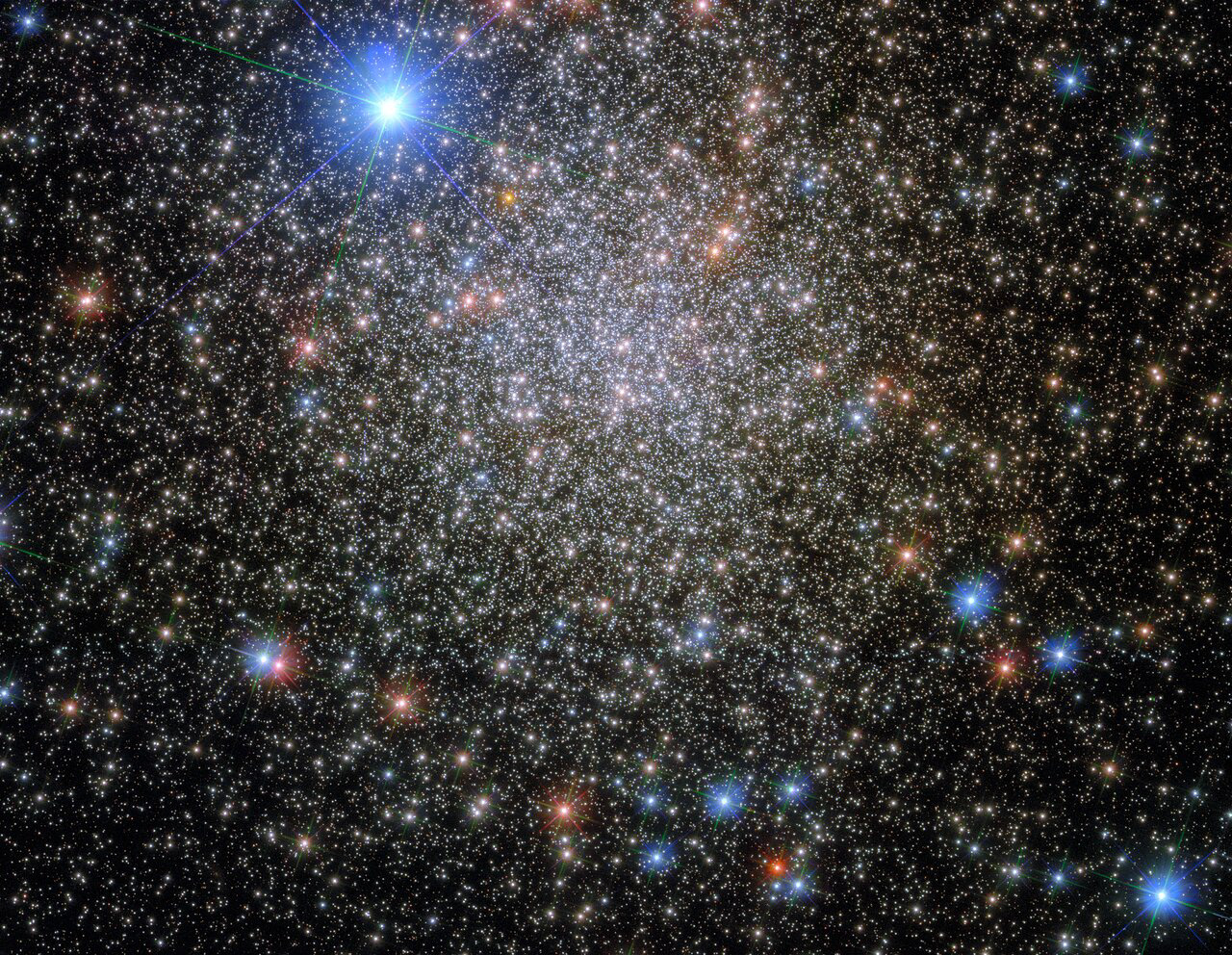
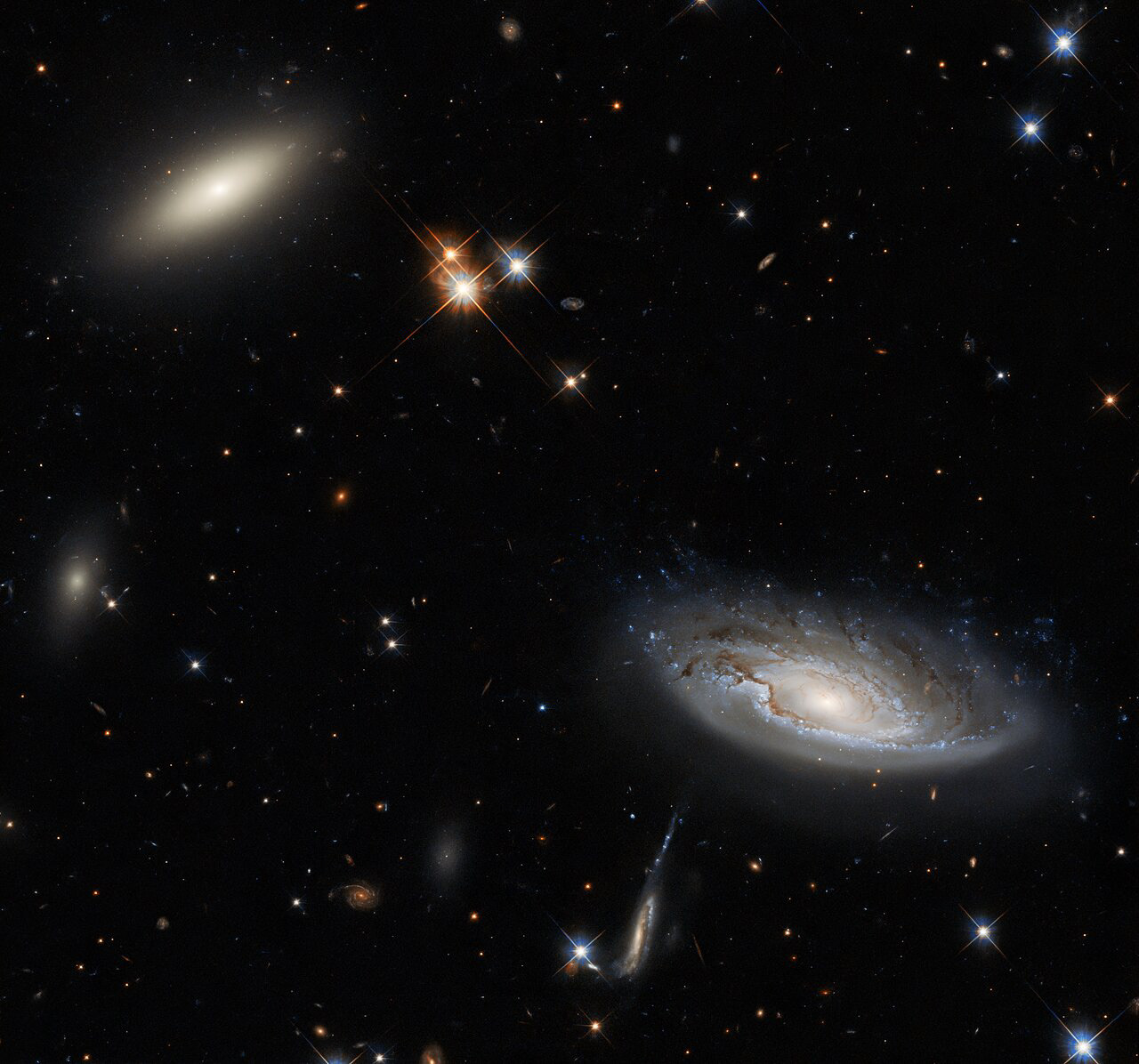
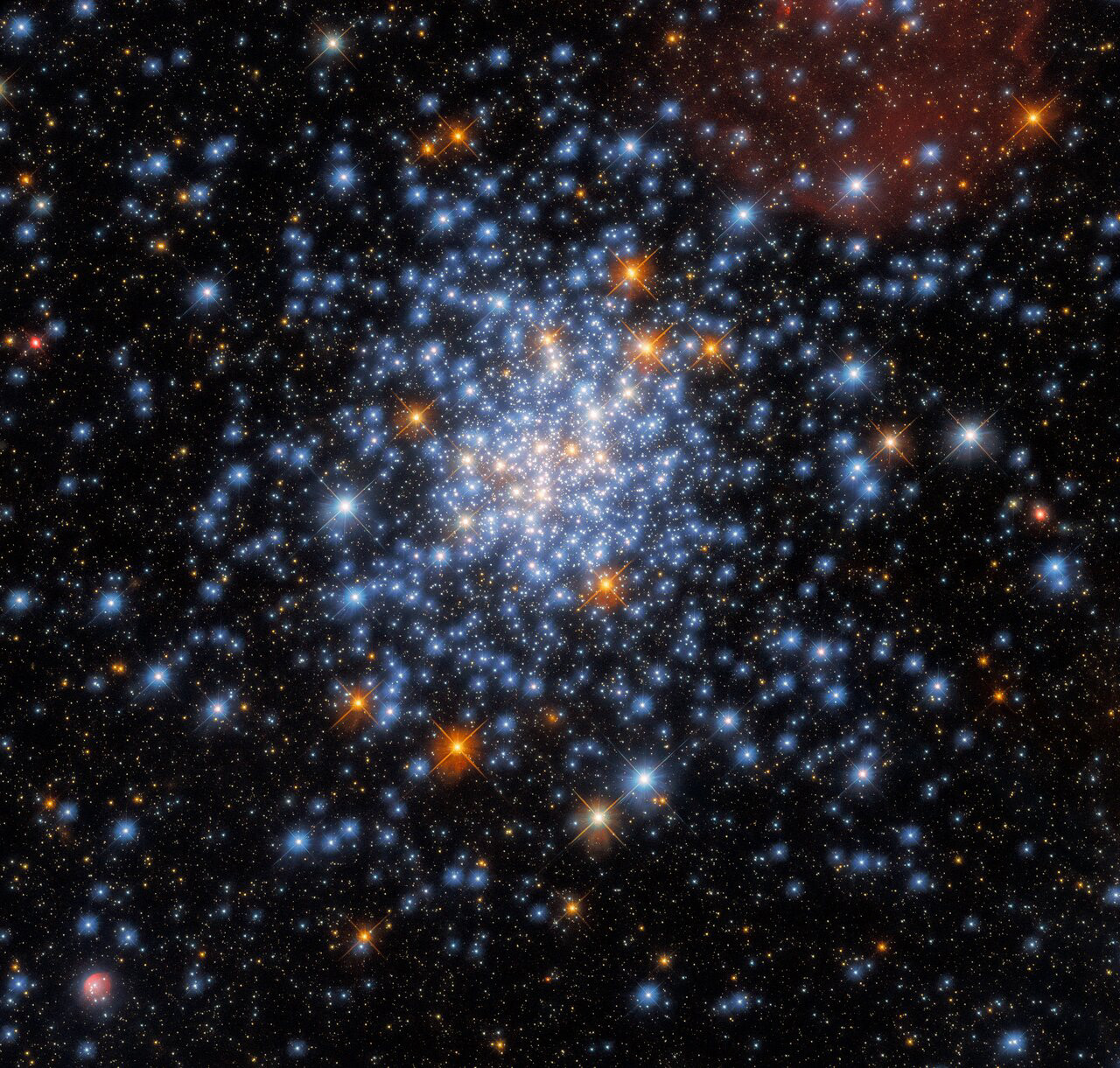
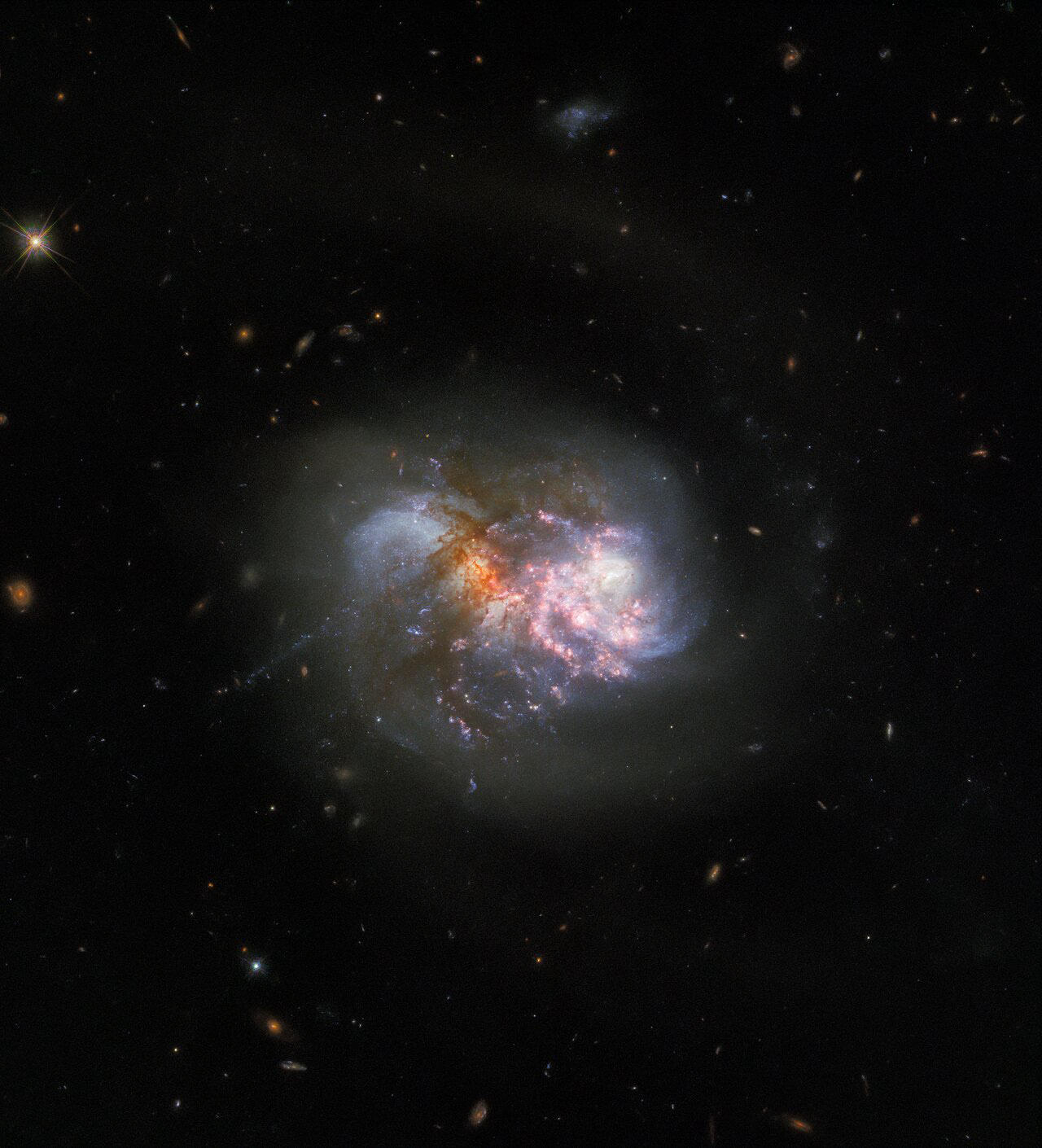
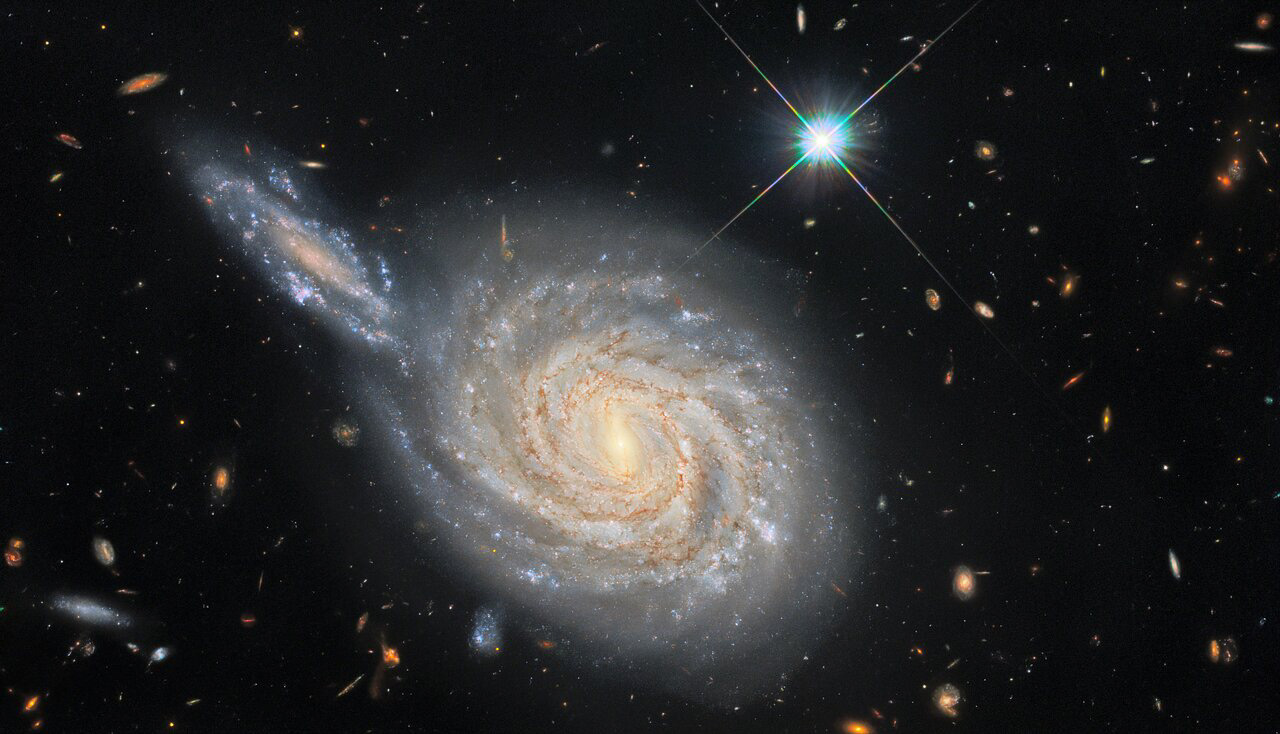
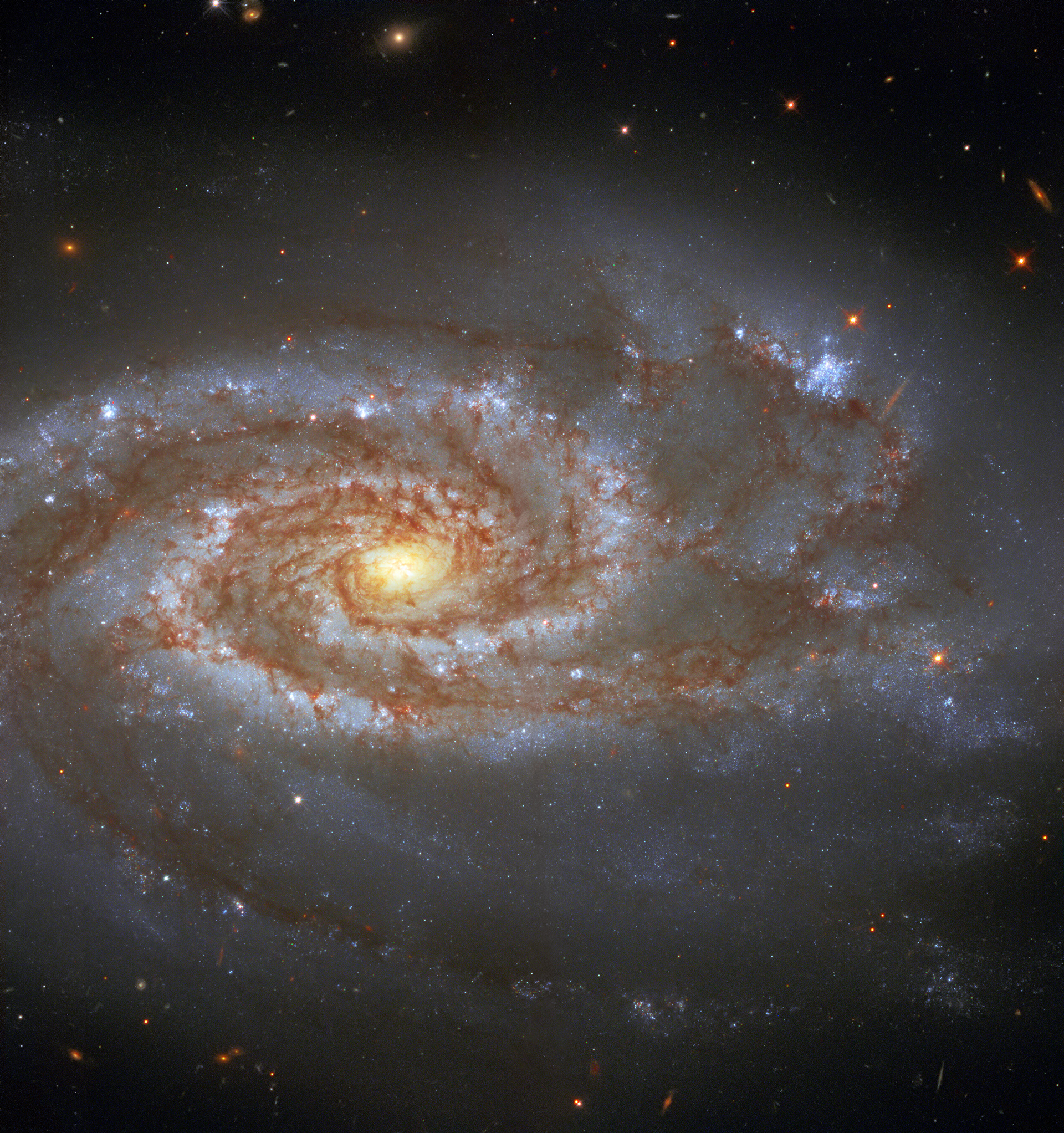



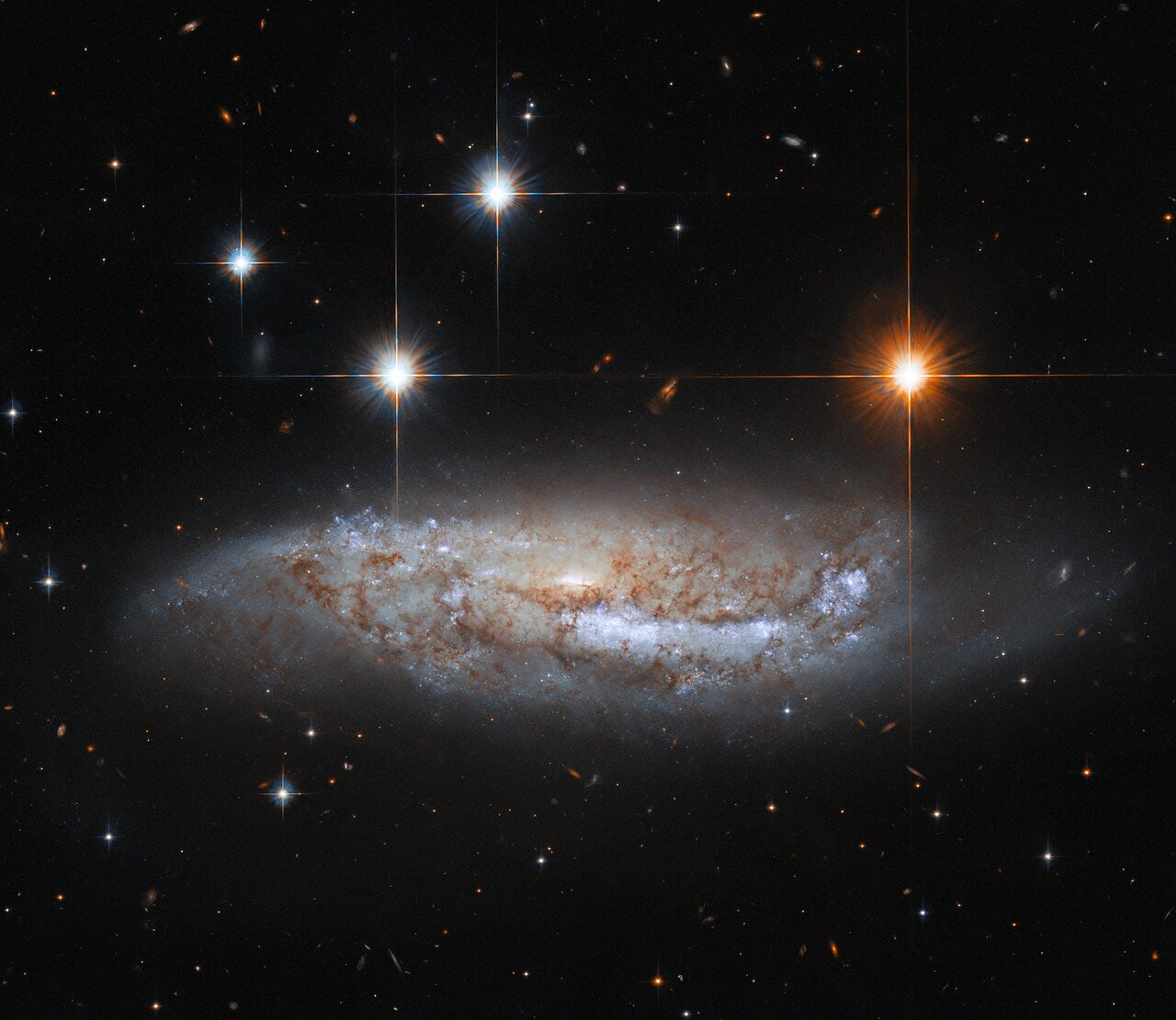
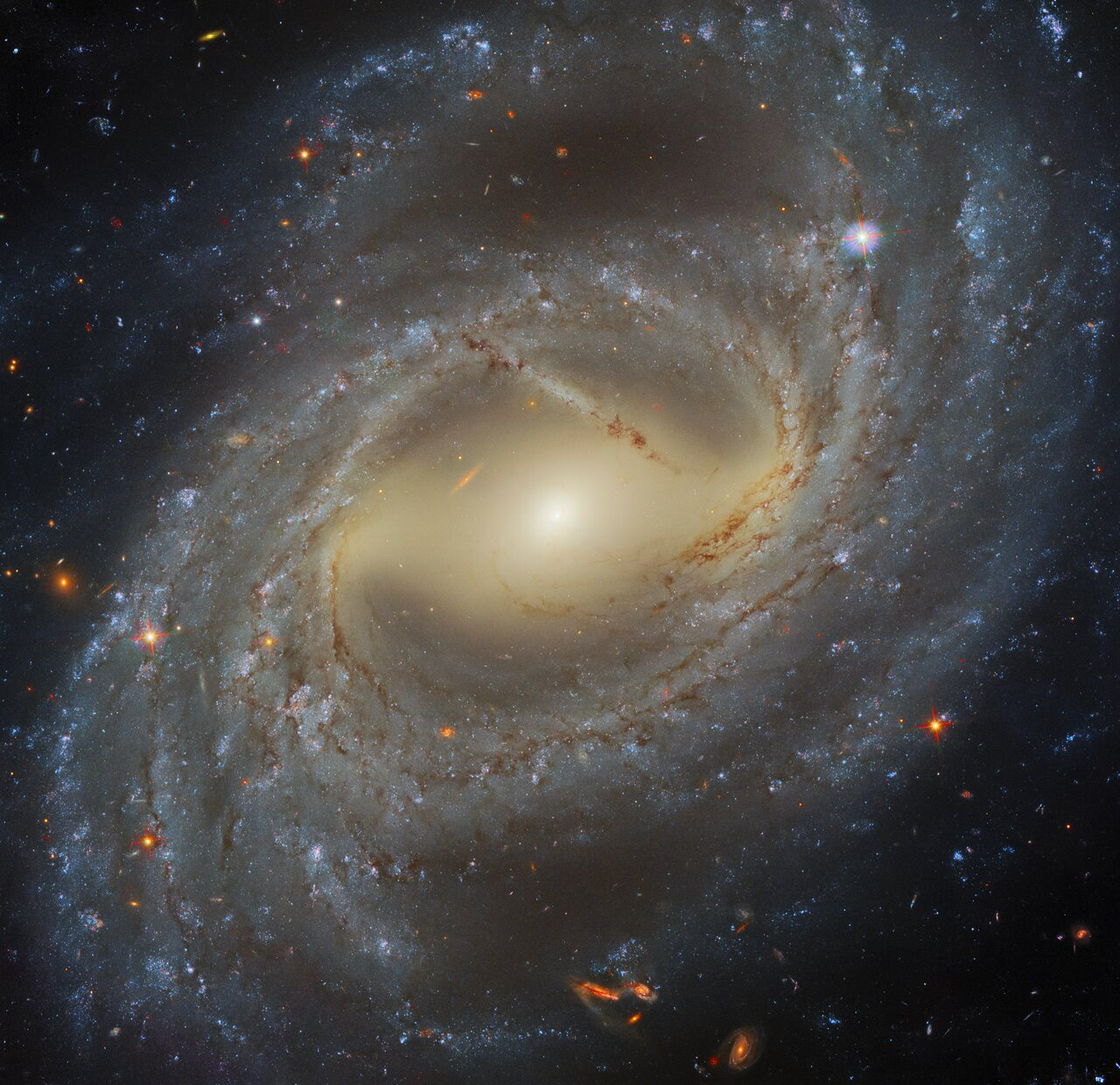

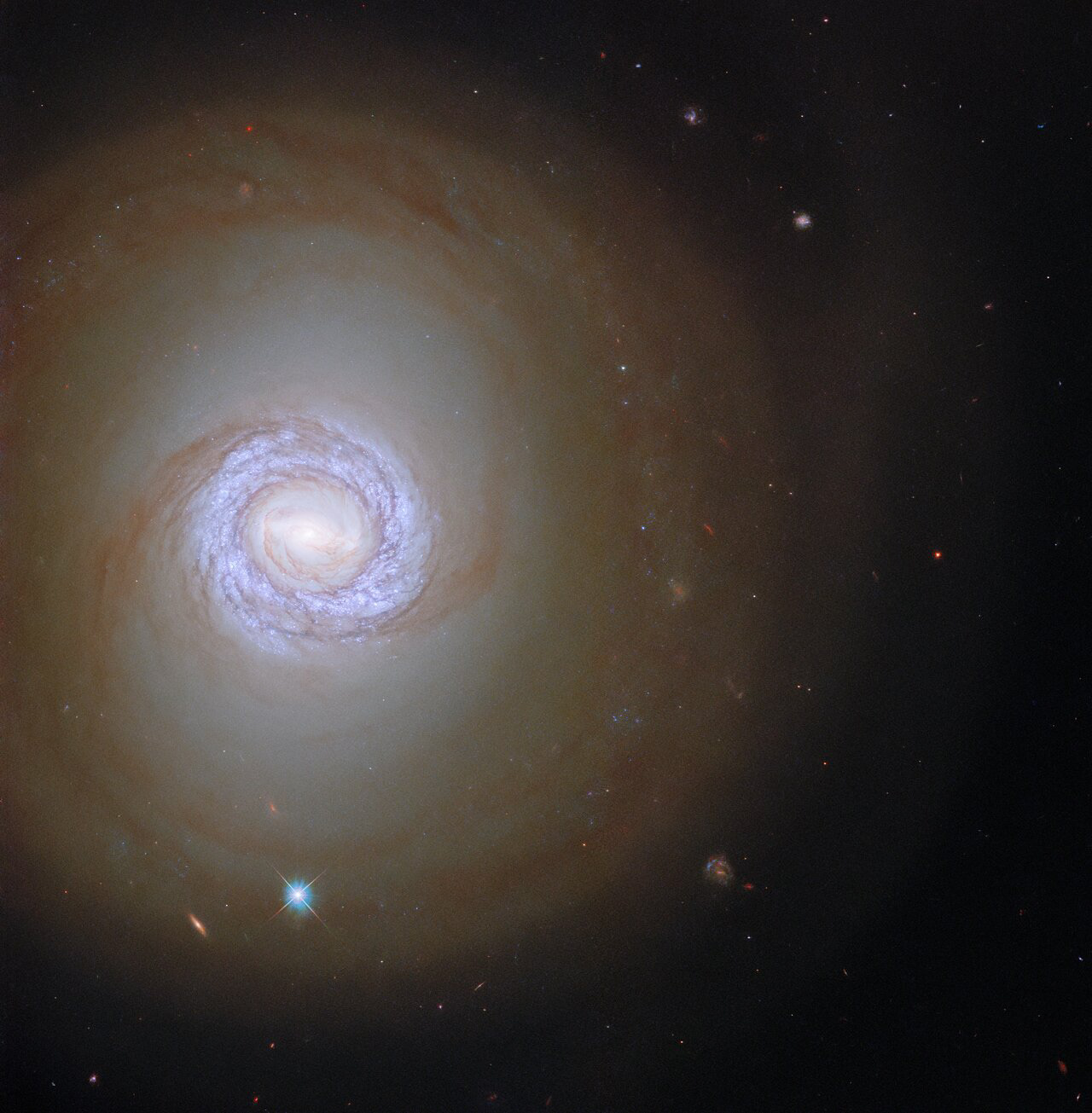

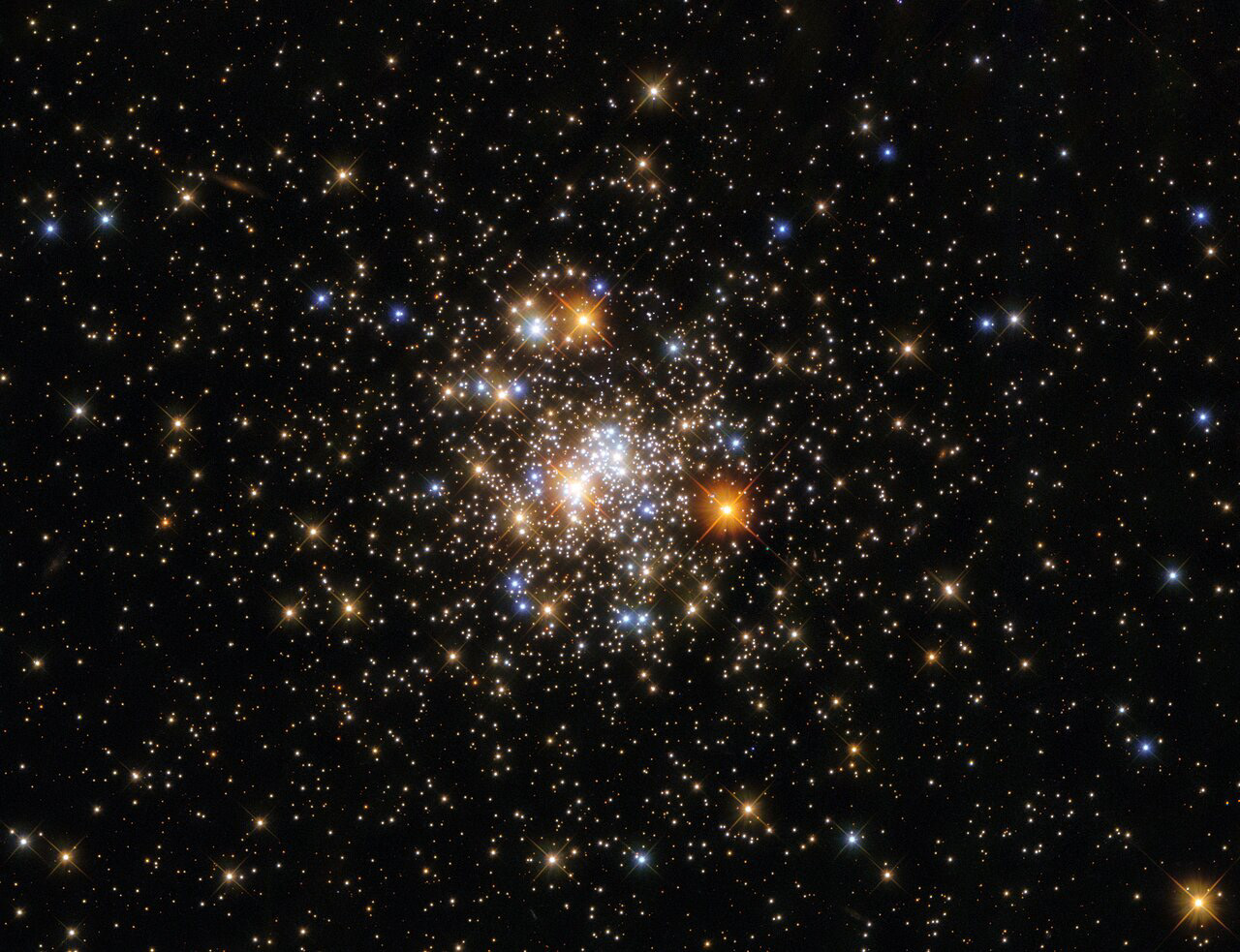
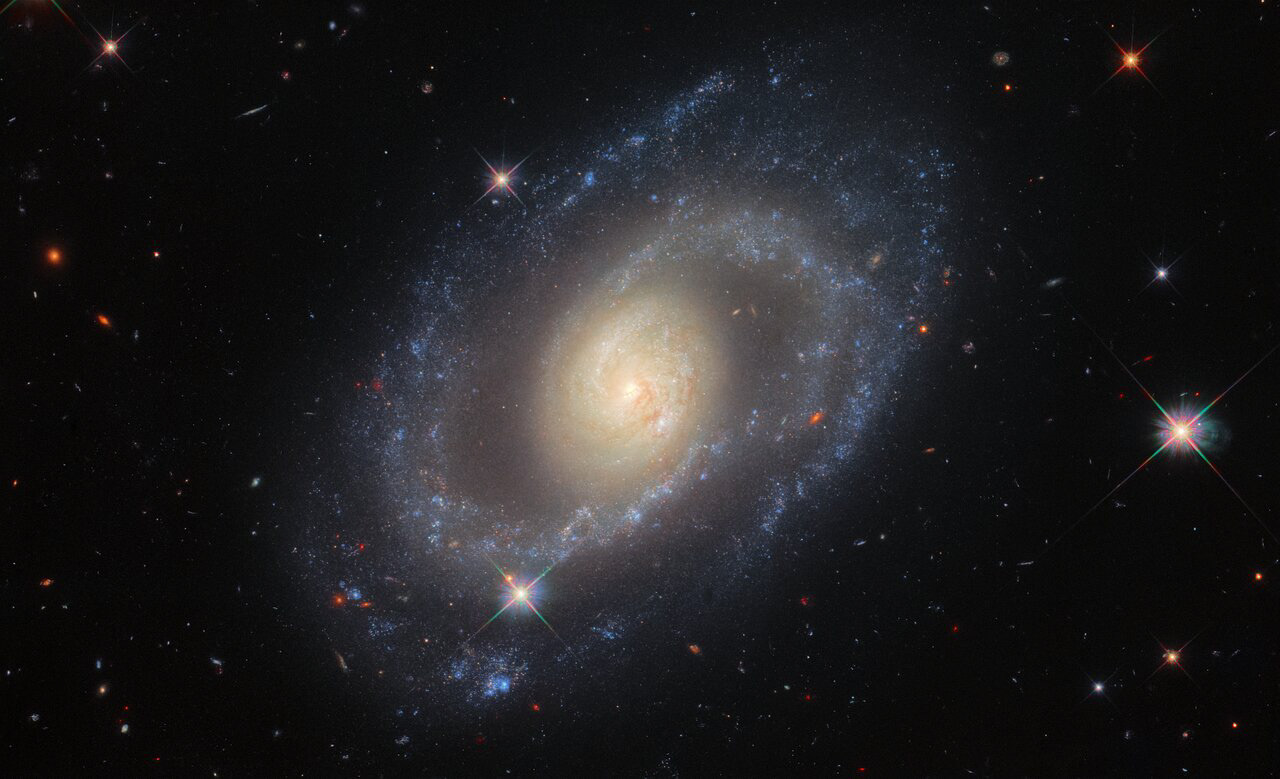

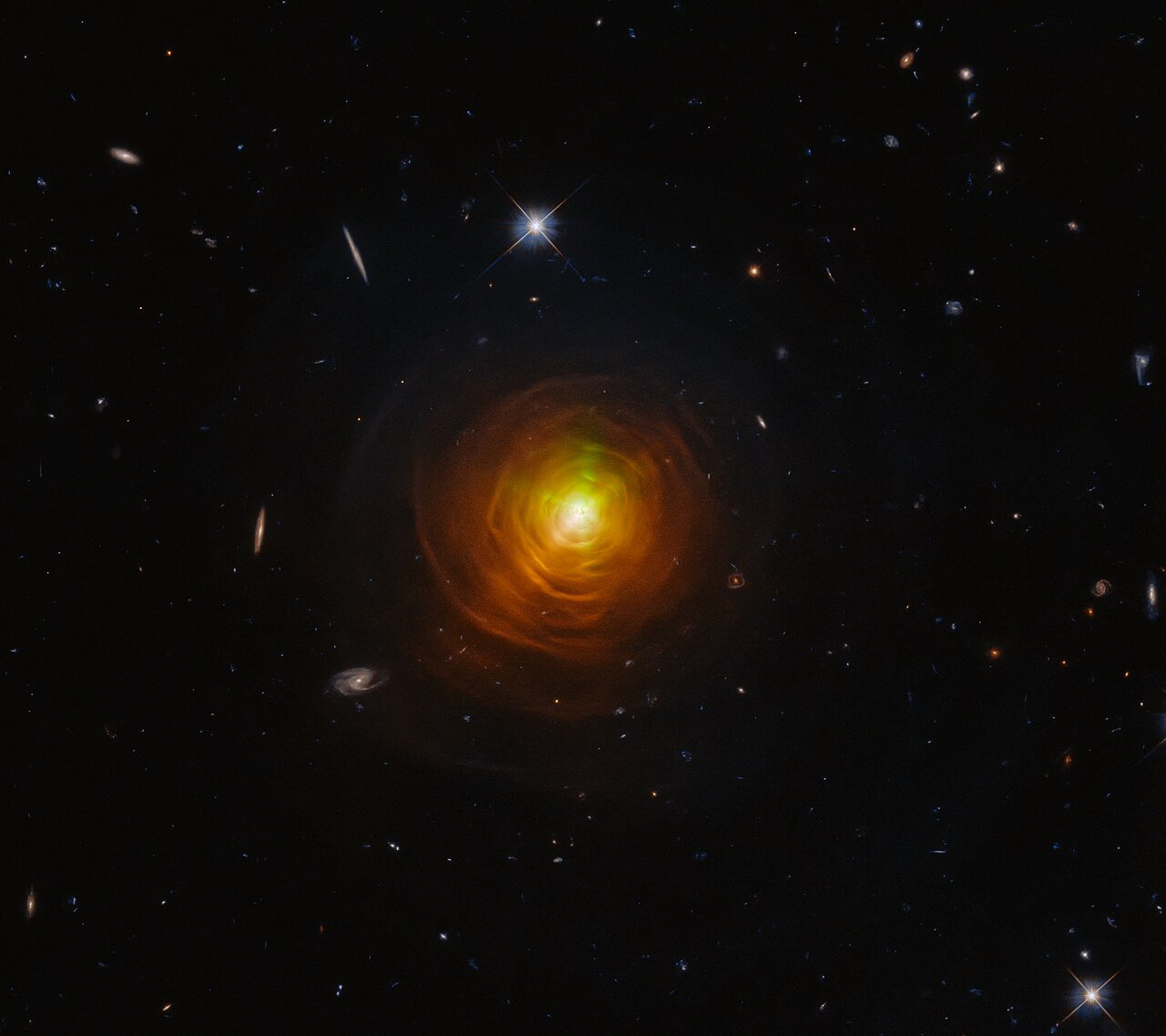

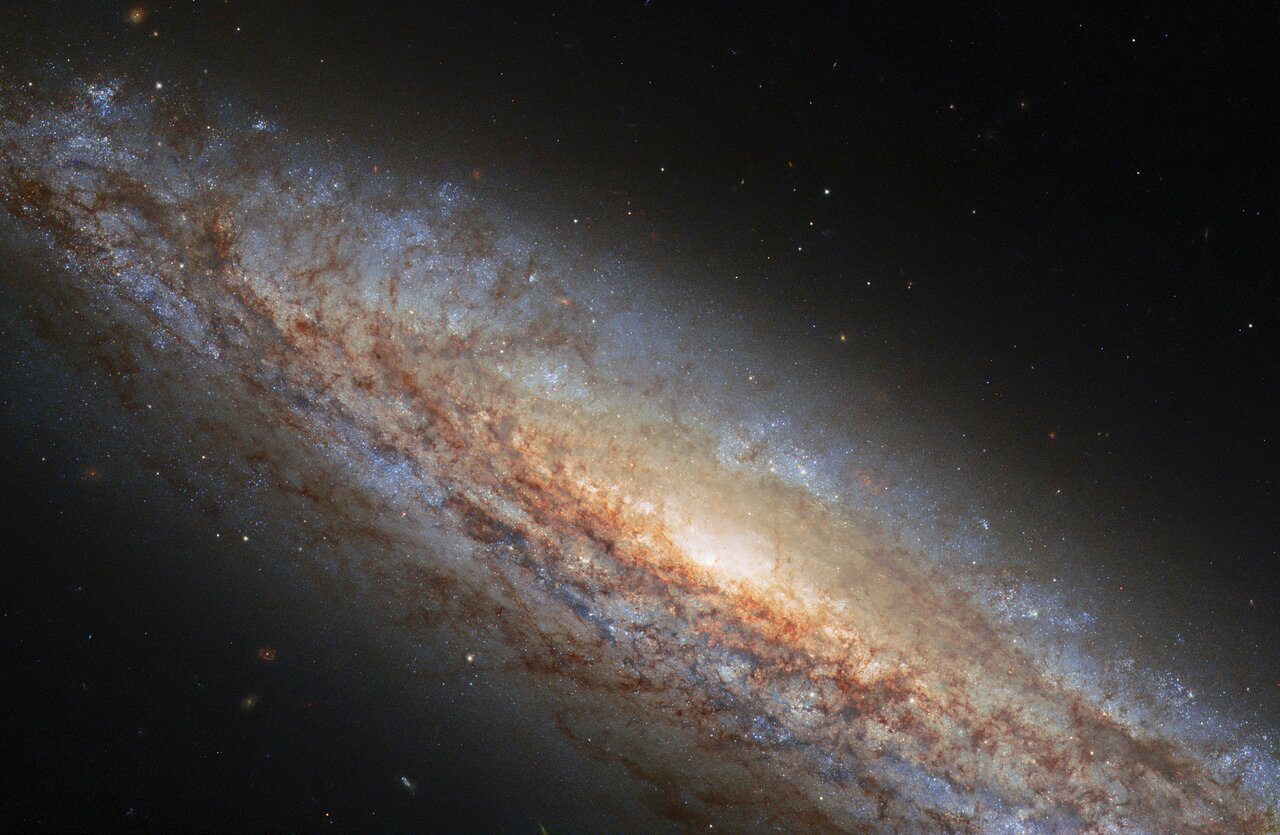
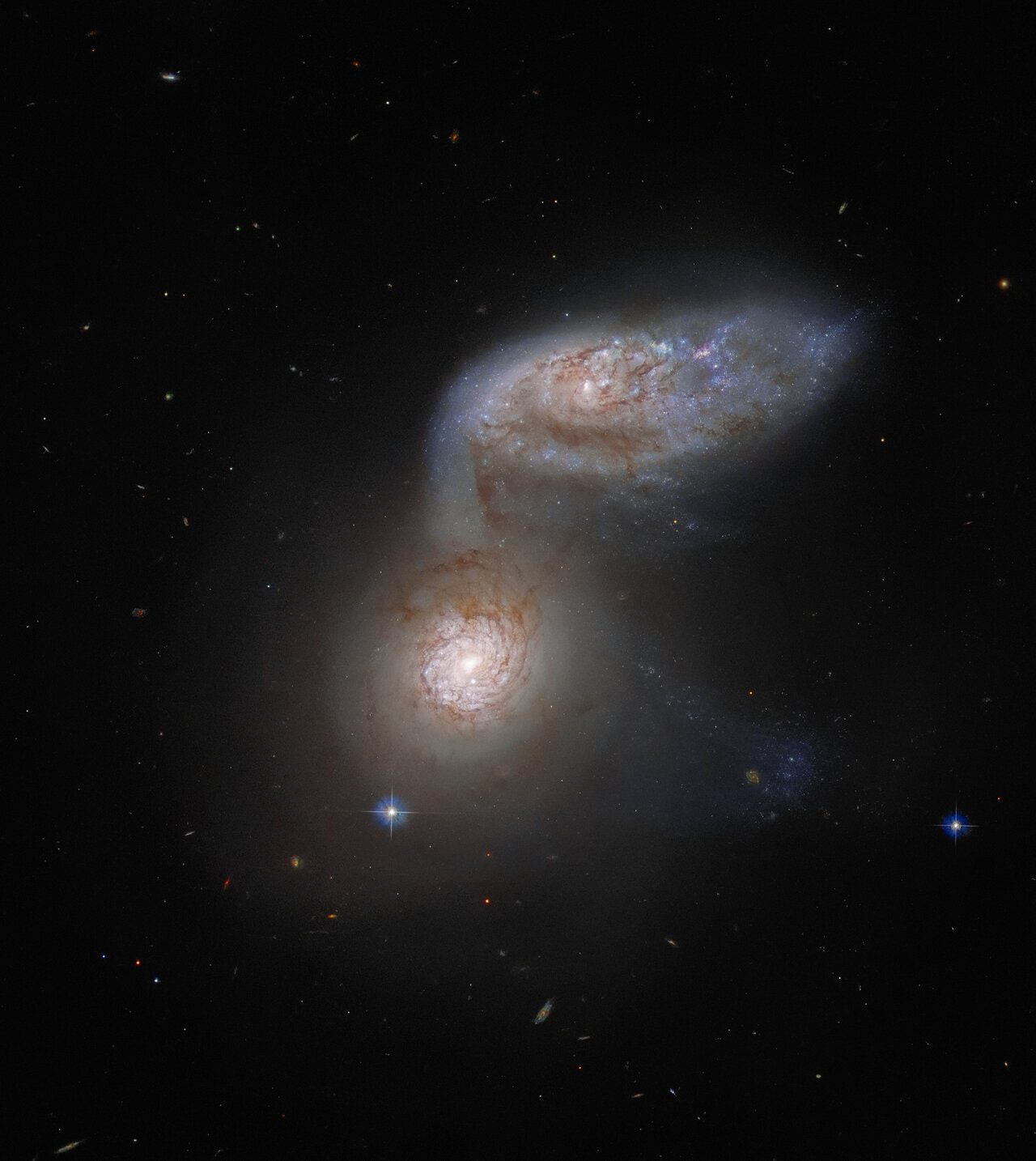
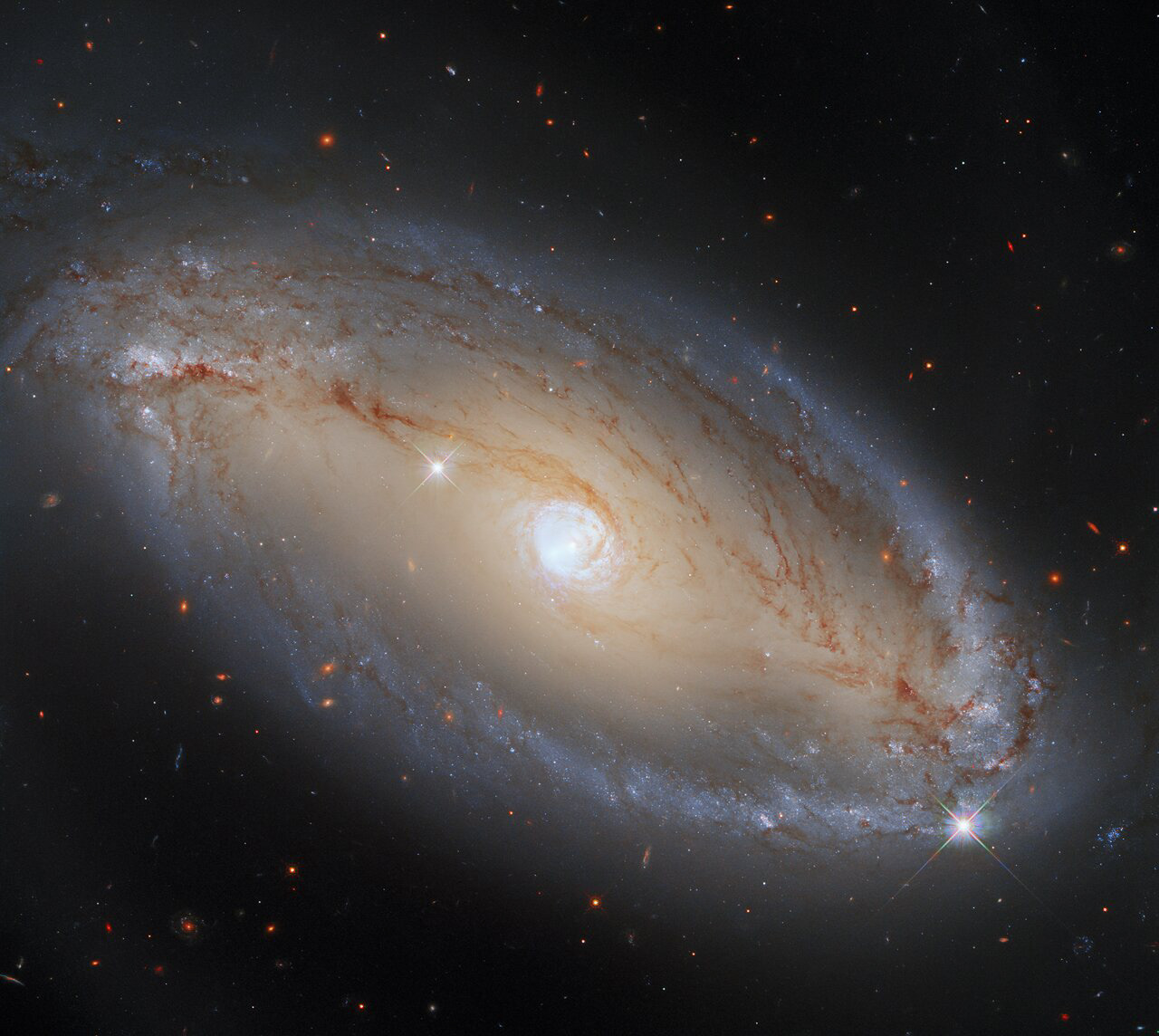
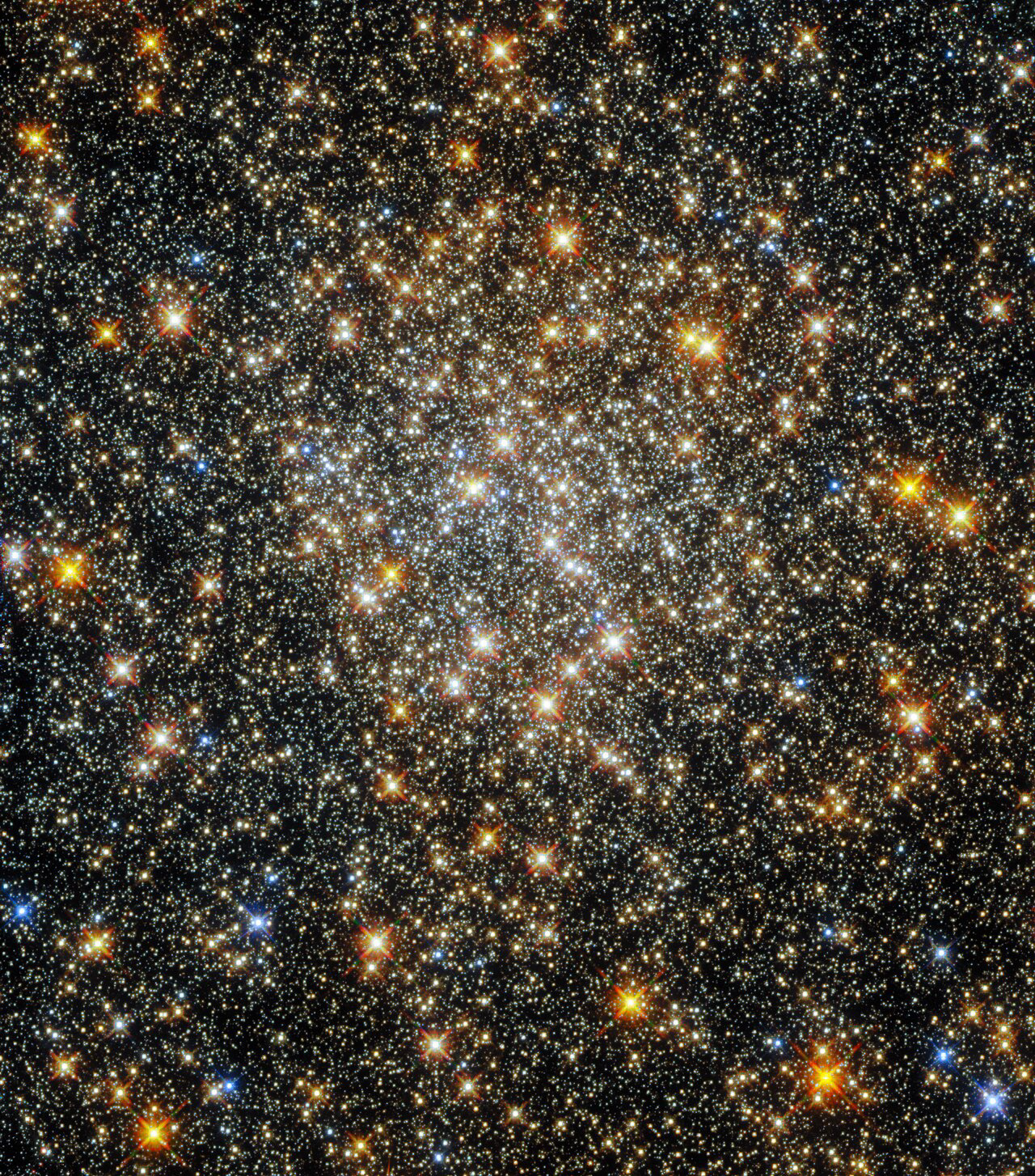

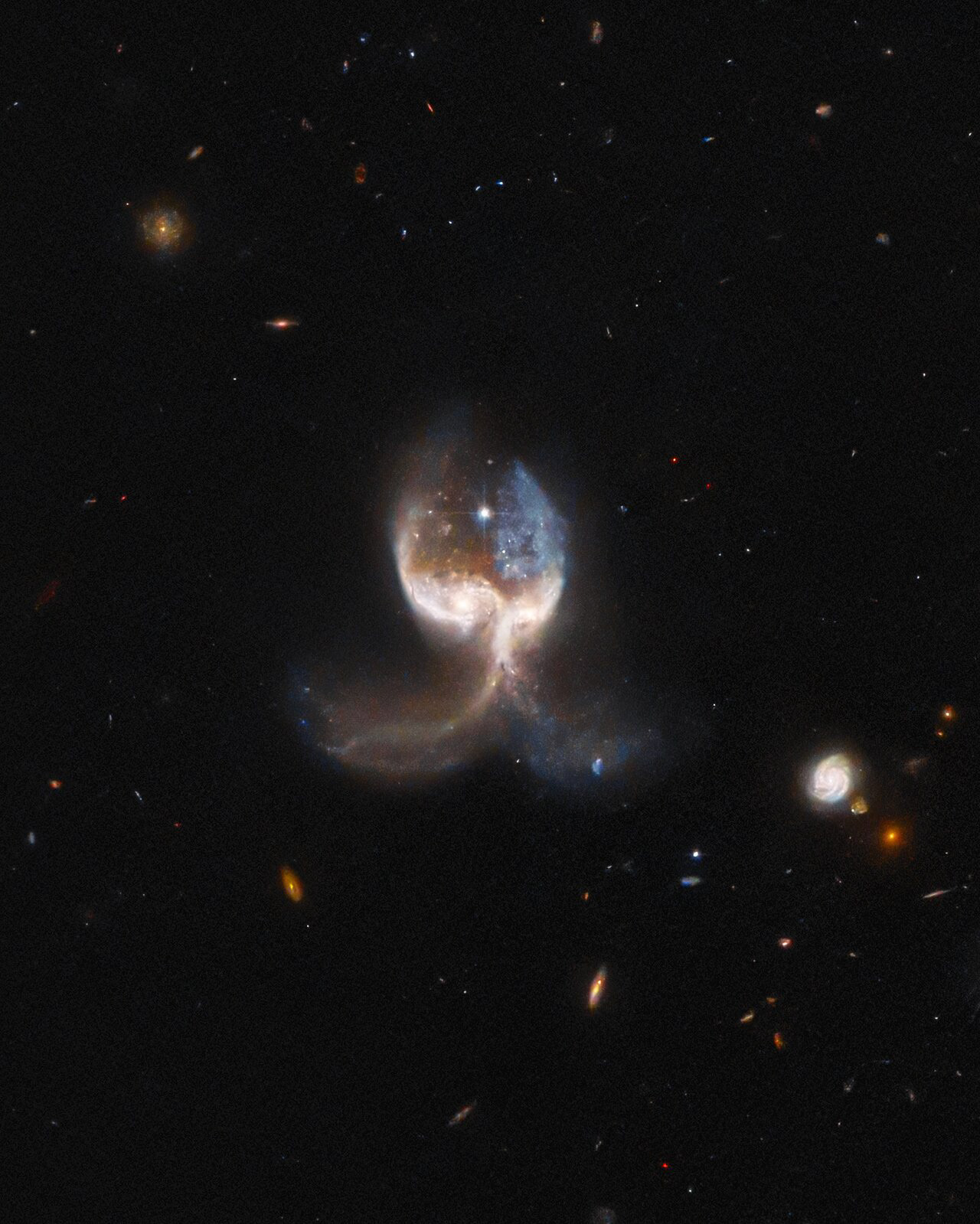
![An international team of astronomers using archival data from the NASA/ESA Hubble Space Telescope and other space- and ground-based observatories have discovered a unique object in the distant, early Universe that is a crucial link between young star-forming galaxies and the earliest supermassive black holes. This object is the first of its kind to be discovered so early in the Universe’s history, and had been lurking unnoticed in one of the best-studied areas of the night sky. The object, which is referred to as GNz7q, is shown here in the centre of the image of the Hubble GOODS-North field. Credit: NASA, ESA, G. Illingworth (University of California, Santa Cruz), P. Oesch (University of California, Santa Cruz; Yale University), R. Bouwens and I. Labbé (Leiden University), and the Science Team, S. Fujimoto et al. (Cosmic Dawn Center [DAWN] and University of Copenhagen)](https://cdn.myportfolio.com/e6b26236-639b-4064-900c-5a5469a04617/75d3849b-9c80-4fab-8dfa-9a6e68e4cd7d_rw_1920.jpg?h=1c377d168d5d04dc4bf0e945478a4d7e)
![An international team of astronomers using archival data from the NASA/ESA Hubble Space Telescope and other space- and ground-based observatories have discovered a unique object in the distant, early Universe that is a crucial link between young star-forming galaxies and the earliest supermassive black holes. This object is the first of its kind to be discovered so early in the Universe’s history, and had been lurking unnoticed in one of the best-studied areas of the night sky. The object, which is referred to as GNz7q, is shown here in the centre of the cutout from the Hubble GOODS-North field. Credit: NASA, ESA, G. Illingworth (University of California, Santa Cruz), P. Oesch (University of California, Santa Cruz; Yale University), R. Bouwens and I. Labbé (Leiden University), and the Science Team, S. Fujimoto et al. (Cosmic Dawn Center [DAWN] and University of Copenhagen)](https://cdn.myportfolio.com/e6b26236-639b-4064-900c-5a5469a04617/0a2bb616-66ce-443e-9d63-c35ffaf734de_rw_1920.jpg?h=483797ebc5590e13baa34af29a22f65b)
